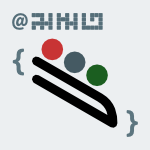2605 papers:
 CC-2020-BrauckmannGEC #graph #learning #modelling
CC-2020-BrauckmannGEC #graph #learning #modelling- Compiler-based graph representations for deep learning models of code (AB, AG, SE, JC), pp. 201–211.
 CC-2020-Castro-PerezY #compilation #first-order #parallel
CC-2020-Castro-PerezY #compilation #first-order #parallel- Compiling first-order functions to session-typed parallel code (DCP, NY), pp. 143–154.
 ASE-2019-Boronat #agile #modelling
ASE-2019-Boronat #agile #modelling- Code-First Model-Driven Engineering: On the Agile Adoption of MDE Tooling (AB), pp. 874–886.
 ASE-2019-BuiYJ #named #network
ASE-2019-BuiYJ #named #network- AutoFocus: Interpreting Attention-Based Neural Networks by Code Perturbation (NDQB, YY, LJ), pp. 38–41.
 ASE-2019-DuCWLSC #graph #named
ASE-2019-DuCWLSC #graph #named- CocoQa: Question Answering for Coding Conventions Over Knowledge Graphs (TD, JC, QW, WL, BS, YC), pp. 1086–1089.
 ASE-2019-Gu00 #api #approach #graph #kernel #named
ASE-2019-Gu00 #api #approach #graph #kernel #named- CodeKernel: A Graph Kernel Based Approach to the Selection of API Usage Examples (XG, HZ0, SK0), pp. 590–601.
 ASE-2019-Jiang #analysis #commit #generative #semantics
ASE-2019-Jiang #analysis #commit #generative #semantics- Boosting Neural Commit Message Generation with Code Semantic Analysis (SJ), pp. 1280–1282.
 ASE-2019-JiangRXZ #program transformation
ASE-2019-JiangRXZ #program transformation- Inferring Program Transformations From Singular Examples via Big Code (JJ, LR, YX, LZ), pp. 255–266.
 ASE-2019-KangB0
ASE-2019-KangB0- Assessing the Generalizability of Code2vec Token Embeddings (HJK, TFB, DL0), pp. 1–12.
 ASE-2019-LiuHGN #predict #source code
ASE-2019-LiuHGN #predict #source code- Predicting Licenses for Changed Source Code (XL, LH, JG, VN), pp. 686–697.
 ASE-2019-NafiKRRS #api #clone detection #detection #documentation #named #using
ASE-2019-NafiKRRS #api #clone detection #detection #documentation #named #using- CLCDSA: Cross Language Code Clone Detection using Syntactical Features and API Documentation (KWN, TSK, BR, CKR, KAS), pp. 1026–1037.
 ASE-2019-Nam #api #design
ASE-2019-Nam #api #design- API Design Implications of Boilerplate Client Code (DN), pp. 1253–1255.
 ASE-2019-NamHMMV #api #identification #mining #named #problem #usability
ASE-2019-NamHMMV #api #identification #mining #named #problem #usability- MARBLE: Mining for Boilerplate Code to Identify API Usability Problems (DN, AH, AM, BAM, BV), pp. 615–627.
 ASE-2019-NguyenNLW #program analysis #statistics
ASE-2019-NguyenNLW #program analysis #statistics- Combining Program Analysis and Statistical Language Model for Code Statement Completion (SVN, TNN, YL, SW0), pp. 710–721.
 ASE-2019-NguyenNTTN #configuration management
ASE-2019-NguyenNTTN #configuration management- Feature-Interaction Aware Configuration Prioritization for Configurable Code (SN, HN, NMT, HT, TNN), pp. 489–501.
 ASE-2019-PiskachevDJB #automation #detection #named
ASE-2019-PiskachevDJB #automation #detection #named- SWAN_ASSIST: Semi-Automated Detection of Code-Specific, Security-Relevant Methods (GP, LNQD, OJ, EB), pp. 1094–1097.
 ASE-2019-ReicheltKH #identification #named #performance
ASE-2019-ReicheltKH #identification #named #performance- PeASS: A Tool for Identifying Performance Changes at Code Level (DGR, SK, WH), pp. 1146–1149.
 ASE-2019-SaifullahAR #api #learning
ASE-2019-SaifullahAR #api #learning- Learning from Examples to Find Fully Qualified Names of API Elements in Code Snippets (CMKS, MA, CKR), pp. 243–254.
 ASE-2019-SondhiP #consistency #named #nondeterminism #semantics #specification #string
ASE-2019-SondhiP #consistency #named #nondeterminism #semantics #specification #string- SEGATE: Unveiling Semantic Inconsistencies between Code and Specification of String Inputs (DS, RP), pp. 200–212.
 ASE-2019-TokumotoT #development #metric #named #quality
ASE-2019-TokumotoT #development #metric #named #quality- PHANTA: Diversified Test Code Quality Measurement for Modern Software Development (ST, KT), pp. 1206–1207.
 ASE-2019-WangLZX #co-evolution #named
ASE-2019-WangLZX #co-evolution #named- CoRA: Decomposing and Describing Tangled Code Changes for Reviewer (MW, ZL, YZ, BX), pp. 1050–1061.
 ASE-2019-WanSSXZ0Y #learning #multi #network #retrieval #semantics #source code
ASE-2019-WanSSXZ0Y #learning #multi #network #retrieval #semantics #source code- Multi-modal Attention Network Learning for Semantic Source Code Retrieval (YW, JS, YS, GX, ZZ, JW0, PSY), pp. 13–25.
 ASE-2019-YangJ0WSLZX #automation #self #test coverage
ASE-2019-YangJ0WSLZX #automation #self #test coverage- Automatic Self-Validation for Code Coverage Profilers (YY, YJ0, ZZ0, YW, HS, HL, YZ, BX), pp. 79–90.
 ASE-2019-ZhouSZ #named #what
ASE-2019-ZhouSZ #named #what- Lancer: Your Code Tell Me What You Need (SZ, BS, HZ), pp. 1202–1205.
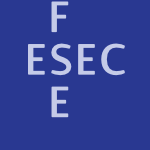 ESEC-FSE-2019-CambroneroLKS0 #code search #learning
ESEC-FSE-2019-CambroneroLKS0 #code search #learning- When deep learning met code search (JC, HL, SK, KS, SC0), pp. 964–974.
 ESEC-FSE-2019-He #comprehension #scalability #source code
ESEC-FSE-2019-He #comprehension #scalability #source code- Understanding source code comments at large-scale (HH), pp. 1217–1219.
 ESEC-FSE-2019-HiraoMIM #approach #code review #empirical #graph #overview
ESEC-FSE-2019-HiraoMIM #approach #code review #empirical #graph #overview- The review linkage graph for code review analytics: a recovery approach and empirical study (TH, SM, AI, KM), pp. 578–589.
 ESEC-FSE-2019-IvankovicPJF #test coverage
ESEC-FSE-2019-IvankovicPJF #test coverage- Code coverage at Google (MI, GP, RJ, GF), pp. 955–963.
 ESEC-FSE-2019-Khanve #empirical #game studies #smell #web
ESEC-FSE-2019-Khanve #empirical #game studies #smell #web- Are existing code smells relevant in web games? an empirical study (VK), pp. 1241–1243.
 ESEC-FSE-2019-MostaeenSRRS #machine learning #named #validation
ESEC-FSE-2019-MostaeenSRRS #machine learning #named #validation- CloneCognition: machine learning based code clone validation tool (GM, JS, BR, CKR, KAS), pp. 1105–1109.
 ESEC-FSE-2019-SafwanS #commit #developer #perspective
ESEC-FSE-2019-SafwanS #commit #developer #perspective- Decomposing the rationale of code commits: the software developer's perspective (KAS, FS), pp. 397–408.
 ESEC-FSE-2019-Sonnekalb #detection #source code
ESEC-FSE-2019-Sonnekalb #detection #source code- Machine-learning supported vulnerability detection in source code (TS), pp. 1180–1183.
 ESEC-FSE-2019-Wang0LXBXW #approach #automation #documentation #source code #taxonomy
ESEC-FSE-2019-Wang0LXBXW #approach #automation #documentation #source code #taxonomy- A learning-based approach for automatic construction of domain glossary from source code and documentation (CW, XP0, ML, ZX, XB, BX, TW), pp. 97–108.
 ESEC-FSE-2019-ZhouVK #case study #performance #social #what
ESEC-FSE-2019-ZhouVK #case study #performance #social #what- What the fork: a study of inefficient and efficient forking practices in social coding (SZ, BV, CK), pp. 350–361.
 GPCE-2019-Chiba #interface #migration
GPCE-2019-Chiba #interface #migration- Foreign language interfaces by code migration (SC), pp. 1–13.
 GPCE-2019-FeichtingerHLPG #analysis #constraints #dependence #evolution #feature model
GPCE-2019-FeichtingerHLPG #analysis #constraints #dependence #evolution #feature model- Supporting feature model evolution by suggesting constraints from code-level dependency analyses (KF, DH, LL, HP, PG), pp. 129–142.
 CC-2019-KimHLS0K #automation
CC-2019-KimHLS0K #automation- Spinal code: automatic code extraction for near-user computation in fogs (BK, SH, GL, SS, JK0, HK), pp. 87–98.
 CC-2019-LiuHWCL0X #compilation #concurrent #kernel #named #thread
CC-2019-LiuHWCL0X #compilation #concurrent #kernel #named #thread- PPOpenCL: a performance-portable OpenCL compiler with host and kernel thread code fusion (YL, LH, MW, HC, FL, XF0, JX), pp. 2–16.
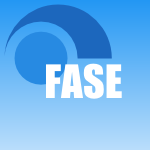 FASE-2019-ParkJR #automation #javascript #modelling #static analysis
FASE-2019-ParkJR #automation #javascript #modelling #static analysis- Automatic Modeling of Opaque Code for JavaScript Static Analysis (JP, AJ, SR), pp. 43–60.
 ECMFA-2018-Cuadrado #ocl #optimisation
ECMFA-2018-Cuadrado #ocl #optimisation- Optimising OCL Synthesized Code (JSC), pp. 28–45.
 MoDELS-2018-HenriquesLAG #developer #experience #modelling #process
MoDELS-2018-HenriquesLAG #developer #experience #modelling #process- Improving the Developer Experience with a Low-Code Process Modelling Language (HH, HL, VA, MG), pp. 200–210.
 ASE-2018-ChenSXHJ #approach #automation #execution #metric #test coverage
ASE-2018-ChenSXHJ #approach #automation #execution #metric #test coverage- An automated approach to estimating code coverage measures via execution logs (BC, JS, PX, XH, ZM(J), pp. 305–316.
 ASE-2018-ChenZ #framework #retrieval #source code #summary
ASE-2018-ChenZ #framework #retrieval #source code #summary- A neural framework for retrieval and summarization of source code (QC, MZ), pp. 826–831.
 ASE-2018-Cosmo #source code
ASE-2018-Cosmo #source code- Software heritage: collecting, preserving, and sharing all our source code (keynote) (RDC), pp. 1–2.
 ASE-2018-GafurovHM #automation #industrial #testing
ASE-2018-GafurovHM #automation #industrial #testing- Achieving test automation with testers without coding skills: an industrial report (DG, AEH, MM), pp. 749–756.
 ASE-2018-GharibiTL #automation #generative #graph #named #python #source code
ASE-2018-GharibiTL #automation #generative #graph #named #python #source code- Code2graph: automatic generation of static call graphs for Python source code (GG, RT, YL), pp. 880–883.
 ASE-2018-HaririS #c #mutation testing #named #representation #source code #testing #tool support
ASE-2018-HaririS #c #mutation testing #named #representation #source code #testing #tool support- SRCIROR: a toolset for mutation testing of C source code and LLVM intermediate representation (FH, AS), pp. 860–863.
 ASE-2018-HuangCPZWLZ #difference #generative #named
ASE-2018-HuangCPZWLZ #difference #generative #named- ClDiff: generating concise linked code differences (KH, BC0, XP0, DZ, YW, YL0, WZ), pp. 679–690.
 ASE-2018-JanesMR #developer #lens #named
ASE-2018-JanesMR #developer #lens #named- code_call_lens: raising the developer awareness of critical code (AJ, MM, BR), pp. 876–879.
 ASE-2018-LiuHZLLPZ #detection #named #similarity
ASE-2018-LiuHZLLPZ #detection #named #similarity- αDiff: cross-version binary code similarity detection with DNN (BL, WH, CZ0, WL, FL, AP, WZ), pp. 667–678.
 ASE-2018-OzdemirTEA #lightweight #monitoring #source code
ASE-2018-OzdemirTEA #lightweight #monitoring #source code- Lightweight source code monitoring with Triggr (AO, AT, HE, RA), pp. 864–867.
 ASE-2018-SharifAGZ #named
ASE-2018-SharifAGZ #named- TRIMMER: application specialization for code debloating (HS, MA, AG, FZ), pp. 329–339.
 ASE-2018-VassalloPBG #quality #question
ASE-2018-VassalloPBG #quality #question- Continuous code quality: are we (really) doing that? (CV, FP, AB, HCG), pp. 790–795.
 ASE-2018-WanZYXY0Y #automation #learning #source code #summary
ASE-2018-WanZYXY0Y #automation #learning #source code #summary- Improving automatic source code summarization via deep reinforcement learning (YW, ZZ, MY0, GX, HY, JW0, PSY), pp. 397–407.
 ESEC-FSE-2018-0002JCHZ #code review #developer #overview #perspective
ESEC-FSE-2018-0002JCHZ #code review #developer #overview #perspective- Salient-class location: help developers understand code change in code review (YH0, NJ, XC, KH, ZZ), pp. 770–774.
 ESEC-FSE-2018-BianLSH0 #debugging #detection #named
ESEC-FSE-2018-BianLSH0 #debugging #detection #named- NAR-miner: discovering negative association rules from code for bug detection (PB, BL0, WS, JH0, YC0), pp. 411–422.
 ESEC-FSE-2018-GlonduJS
ESEC-FSE-2018-GlonduJS- Ten years of hunting for similar code for fun and profit (keynote) (SG, LJ, ZS), p. 2.
 ESEC-FSE-2018-HashimotoMI #automation #debugging #semantics #source code
ESEC-FSE-2018-HashimotoMI #automation #debugging #semantics #source code- Automated patch extraction via syntax- and semantics-aware Delta debugging on source code changes (MH, AM, TI), pp. 598–609.
 ESEC-FSE-2018-HenkelLLR #comprehension #embedded #source code
ESEC-FSE-2018-HenkelLLR #comprehension #embedded #source code- Code vectors: understanding programs through embedded abstracted symbolic traces (JH, SKL, BL, TWR), pp. 163–174.
 ESEC-FSE-2018-Hosseini #android #natural language #policy #privacy #semantics
ESEC-FSE-2018-Hosseini #android #natural language #policy #privacy #semantics- Semantic inference from natural language privacy policies and Android code (MBH), pp. 940–943.
 ESEC-FSE-2018-Ketkar #migration #scalability
ESEC-FSE-2018-Ketkar #migration #scalability- Type migration in large-scale code bases (AK), pp. 965–967.
 ESEC-FSE-2018-McNamaraSM #development #question
ESEC-FSE-2018-McNamaraSM #development #question- Does ACM's code of ethics change ethical decision making in software development? (AM, JS0, ERMH), pp. 729–733.
 ESEC-FSE-2018-RamSCB #empirical #overview #what
ESEC-FSE-2018-RamSCB #empirical #overview #what- What makes a code change easier to review: an empirical investigation on code change reviewability (AR, AAS, MC, AB), pp. 201–212.
 ESEC-FSE-2018-RenYHFK #development #towards
ESEC-FSE-2018-RenYHFK #development #towards- Towards quantifying the development value of code contributions (JR, HY, QH, AF, WK), pp. 775–779.
 ESEC-FSE-2018-ZhaoH #functional #learning #named #similarity
ESEC-FSE-2018-ZhaoH #functional #learning #named #similarity- DeepSim: deep learning code functional similarity (GZ, JH0), pp. 141–151.
 CC-2018-ErtelGAC #compilation #performance
CC-2018-ErtelGAC #compilation #performance- Compiling for concise code and efficient I/O (SE, AG, JA, JC), pp. 104–115.
 CAV-2018-CookKKTTT #model checking
CAV-2018-CookKKTTT #model checking- Model Checking Boot Code from AWS Data Centers (BC, KK, DK, ST, MT, MRT), pp. 467–486.
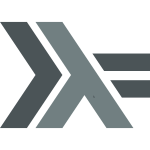 Haskell-2017-Remy #automation #named #parametricity #reuse
Haskell-2017-Remy #automation #named #parametricity #reuse- Ornaments: exploiting parametricity for safer, more automated code refactorization and code reuse (invited talk) (DR), p. 1.
 ECMFA-2017-KlugeSGSM #c #embedded #generative #modelling #named #network
ECMFA-2017-KlugeSGSM #c #embedded #generative #modelling #named #network- cMoflon: Model-Driven Generation of Embedded C Code for Wireless Sensor Networks (RK, MS, DG, AS, MM), pp. 109–125.
 MoDELS-2017-EgeaD #automation #code generation #named #ocl #sql
MoDELS-2017-EgeaD #automation #code generation #named #ocl #sql- SQL-PL4OCL: An Automatic Code Generator from OCL to SQL Procedural Language (ME, CD), p. 54.
 MoDELS-2017-KlareBKLSR #java #metamodelling #named #tool support
MoDELS-2017-KlareBKLSR #java #metamodelling #named #tool support- Ecoreification: Making Arbitrary Java Code Accessible to Metamodel-Based Tools (HK, EB, MEK, ML, TS, RHR), pp. 221–228.
 ASE-2017-AhmedBIR #analysis #code review #interactive #named #overview #sentiment
ASE-2017-AhmedBIR #analysis #code review #interactive #named #overview #sentiment- SentiCR: a customized sentiment analysis tool for code review interactions (TA, AB, AI, SR), pp. 106–111.
 ASE-2017-Holzmann #interactive
ASE-2017-Holzmann #interactive- Cobra - an interactive static code analyzer (GJH), p. 1.
 ASE-2017-KargenS #robust #towards
ASE-2017-KargenS #robust #towards- Towards robust instruction-level trace alignment of binary code (UK, NS), pp. 342–352.
 ASE-2017-LessenichAKSS #performance #precise
ASE-2017-LessenichAKSS #performance #precise- Renaming and shifted code in structured merging: looking ahead for precision and performance (OL, SA, CK, GS, JS), pp. 543–553.
 ASE-2017-LinMXXSPLZD #design #mining #reuse
ASE-2017-LinMXXSPLZD #design #mining #reuse- Mining implicit design templates for actionable code reuse (YL0, GM, YX, ZX, JS0, XP0, YL0, WZ, JSD), pp. 394–404.
 ASE-2017-LinZZX #concept #retrieval #source code #using
ASE-2017-LinZZX #concept #retrieval #source code #using- Improving software text retrieval using conceptual knowledge in source code (ZL, YZ, JZ, BX), pp. 123–134.
 ASE-2017-MenariniYG #case study #code review #overview #performance #semantics #user study
ASE-2017-MenariniYG #case study #code review #overview #performance #semantics #user study- Semantics-assisted code review: an efficient toolchain and a user study (MM, YY, WGG), pp. 554–565.
 ASE-2017-RahmanR #concept #documentation #query #using
ASE-2017-RahmanR #concept #documentation #query #using- Improved query reformulation for concept location using CodeRank and document structures (MMR, CKR), pp. 428–439.
 ASE-2017-ScalabrinoBVVPO #automation #how #question
ASE-2017-ScalabrinoBVVPO #automation #how #question- Automatically assessing code understandability: how far are we? (SS, GB, CV, MLV, DP, RO), pp. 417–427.
 ASE-2017-Sultana #metric #predict #towards #using
ASE-2017-Sultana #metric #predict #towards #using- Towards a software vulnerability prediction model using traceable code patterns and software metrics (KZS), pp. 1022–1025.
 ASE-2017-WangW #analysis #fuzzing #in memory #similarity
ASE-2017-WangW #analysis #fuzzing #in memory #similarity- In-memory fuzzing for binary code similarity analysis (SW0, DW), pp. 319–330.
 ASE-2017-XinR #automation #program repair
ASE-2017-XinR #automation #program repair- Leveraging syntax-related code for automated program repair (QX, SPR), pp. 660–670.
 ASE-2017-YangJ0SGL
ASE-2017-YangJ0SGL- A language model for statements of software code (YY, YJ0, MG0, JS, JG, HL), pp. 682–687.
 ASE-2017-ZhongW
ASE-2017-ZhongW- Boosting complete-code tool for partial program (HZ, XW), pp. 671–681.
 ESEC-FSE-2017-BunyakiatiP #commit #multi
ESEC-FSE-2017-BunyakiatiP #commit #multi- Cherry-picking of code commits in long-running, multi-release software (PB, CP), pp. 994–998.
 ESEC-FSE-2017-GlanzAERHLM #named #obfuscation
ESEC-FSE-2017-GlanzAERHLM #named #obfuscation- CodeMatch: obfuscation won't conceal your repackaged app (LG, SA, ME, MR, BH, JL, MM), pp. 638–648.
 ESEC-FSE-2017-GopsteinIYDZYC #comprehension #source code
ESEC-FSE-2017-GopsteinIYDZYC #comprehension #source code- Understanding misunderstandings in source code (DG, JI, YY, LD, YZ, MKCY, JC), pp. 129–139.
 ESEC-FSE-2017-GuoWW #execution #logic #programmable #symbolic computation
ESEC-FSE-2017-GuoWW #execution #logic #programmable #symbolic computation- Symbolic execution of programmable logic controller code (SG, MW, CW0), pp. 326–336.
 ESEC-FSE-2017-HellendoornD #modelling #network #question #source code
ESEC-FSE-2017-HellendoornD #modelling #network #question #source code- Are deep neural networks the best choice for modeling source code? (VJH, PTD), pp. 763–773.
 ESEC-FSE-2017-Jaffe #approach
ESEC-FSE-2017-Jaffe #approach- Suggesting meaningful variable names for decompiled code: a machine translation approach (AJ), pp. 1050–1052.
 ESEC-FSE-2017-LongAR #automation #generative
ESEC-FSE-2017-LongAR #automation #generative- Automatic inference of code transforms for patch generation (FL, PA, MR), pp. 727–739.
 ESEC-FSE-2017-MartieHK #code search #comprehension
ESEC-FSE-2017-MartieHK #code search #comprehension- Understanding the impact of support for iteration on code search (LM, AvdH, TK), pp. 774–785.
 ESEC-FSE-2017-NunezMR #comprehension #named
ESEC-FSE-2017-NunezMR #comprehension #named- ARCC: assistant for repetitive code comprehension (WZN, VJM, CRR), pp. 999–1003.
 ESEC-FSE-2017-Sidiroglou-Douskos
ESEC-FSE-2017-Sidiroglou-Douskos- CodeCarbonCopy (SSD, EL, AE, FL, MR), pp. 95–105.
 GPCE-2017-Courtes #staging
GPCE-2017-Courtes #staging- Code staging in GNU Guix (LC), pp. 41–48.
 SLE-2017-LuhunuS #code generation #comparison #performance #tool support
SLE-2017-LuhunuS #code generation #comparison #performance #tool support- Comparison of the expressiveness and performance of template-based code generation tools (LL, ES), pp. 206–216.
 CC-2017-WimmerJEW #compilation
CC-2017-WimmerJEW #compilation- One compiler: deoptimization to optimized code (CW, VJ, EE, TW), pp. 55–64.
 MoDELS-2016-Blache #bound #c #development #embedded #modelling #safety #using
MoDELS-2016-Blache #bound #c #development #embedded #modelling #safety #using- Handling index-out-of-bounds in safety-critical embedded C code using model-based development (GB), pp. 143–149.
 MoDELS-2016-DasGJBHD #animation #code generation #development #embedded #modelling #monitoring #realtime #runtime
MoDELS-2016-DasGJBHD #animation #code generation #development #embedded #modelling #monitoring #realtime #runtime- Supporting the model-driven development of real-time embedded systems with run-time monitoring and animation via highly customizable code generation (ND, SG, LJ, MB, NH, JD), pp. 36–43.
 MoDELS-2016-HarrandFMH #code generation #framework #named
MoDELS-2016-HarrandFMH #code generation #framework #named- ThingML: a language and code generation framework for heterogeneous targets (NH, FF, BM, KEH), pp. 125–135.
 ASE-2016-DotzlerP #difference #source code
ASE-2016-DotzlerP #difference #source code- Move-optimized source code tree differencing (GD, MP), pp. 660–671.
 ASE-2016-HannebauerPSG #automation #code review #comparison #empirical #recommendation
ASE-2016-HannebauerPSG #automation #code review #comparison #empirical #recommendation- Automatically recommending code reviewers based on their expertise: an empirical comparison (CH, MP, SS, VG), pp. 99–110.
 ASE-2016-ProkschANM #recommendation
ASE-2016-ProkschANM #recommendation- Evaluating the evaluations of code recommender systems: a reality check (SP, SA, SN, MM), pp. 111–121.
 ASE-2016-RahmanRRC #code review #git #named #recommendation
ASE-2016-RahmanRRC #code review #git #named #recommendation- CORRECT: code reviewer recommendation at GitHub for Vendasta technologies (MMR, CKR, JR, JAC), pp. 792–797.
 ASE-2016-Rodriguez-Cancio #automation #benchmark #constant #generative
ASE-2016-Rodriguez-Cancio #automation #benchmark #constant #generative- Automatic microbenchmark generation to prevent dead code elimination and constant folding (MRC, BC, BB), pp. 132–143.
 ASE-2016-WhiteTVP #clone detection #detection #learning
ASE-2016-WhiteTVP #clone detection #detection #learning- Deep learning code fragments for code clone detection (MW, MT, CV, DP), pp. 87–98.
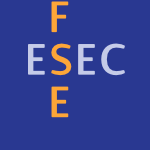 FSE-2016-Alexandru #network #synthesis #using
FSE-2016-Alexandru #network #synthesis #using- Guided code synthesis using deep neural networks (CVA), pp. 1068–1070.
 FSE-2016-BaumLNS #code review #industrial #overview #process
FSE-2016-BaumLNS #code review #industrial #overview #process- Factors influencing code review processes in industry (TB, OL, KN, KS), pp. 85–96.
 FSE-2016-HasabnisS #code generation #execution #semantics #symbolic computation
FSE-2016-HasabnisS #code generation #execution #semantics #symbolic computation- Extracting instruction semantics via symbolic execution of code generators (NH, RS), pp. 301–313.
 FSE-2016-LiWWYXM #code search #framework #javascript
FSE-2016-LiWWYXM #code search #framework #javascript- Relationship-aware code search for JavaScript frameworks (XL, ZW, QW, SY, TX0, HM), pp. 690–701.
 FSE-2016-Meng #fine-grained #identification
FSE-2016-Meng #fine-grained #identification- Fine-grained binary code authorship identification (XM), pp. 1097–1099.
 FSE-2016-NguyenHCNMRND #api #fine-grained #learning #recommendation #statistics #using
FSE-2016-NguyenHCNMRND #api #fine-grained #learning #recommendation #statistics #using- API code recommendation using statistical learning from fine-grained changes (ATN0, MH, MC, HAN, LM, ER, TNN, DD), pp. 511–522.
 FSE-2016-NguyenRNKN #api #named #statistics
FSE-2016-NguyenRNKN #api #named #statistics- T2API: synthesizing API code usage templates from English texts with statistical translation (TVN, PCR, ATN0, MK, TNN), pp. 1013–1017.
 FSE-2016-OosterwaalDCSB #code review #overview #perspective #visualisation
FSE-2016-OosterwaalDCSB #code review #overview #perspective #visualisation- Visualizing code and coverage changes for code review (SO, AvD, RC, AAS, AB), pp. 1038–1041.
 FSE-2016-Rolim #automation #using
FSE-2016-Rolim #automation #using- Automating repetitive code changes using examples (RR), pp. 1063–1065.
 FSE-2016-SuBHSKJ #detection
FSE-2016-SuBHSKJ #detection- Code relatives: detecting similarly behaving software (FHS, JB0, KH, SS, GEK, TJ), pp. 702–714.
 FSE-2016-WangFMKDR #java #named #reuse
FSE-2016-WangFMKDR #java #named #reuse- Hunter: next-generation code reuse for Java (YW, YF, RM, AK, ID, SPR), pp. 1028–1032.
 FSE-2016-ZhangJKKGH #developer #recommendation
FSE-2016-ZhangJKKGH #developer #recommendation- Bing developer assistant: improving developer productivity by recommending sample code (HZ0, AJ, GK, CK, SG, WH), pp. 956–961.
 FSE-2016-ZhouW #analysis #api #detection #web
FSE-2016-ZhouW #analysis #api #detection #web- API deprecation: a retrospective analysis and detection method for code examples on the web (JZ, RJW), pp. 266–277.
 FSE-2016-ZhuZM #effectiveness #tool support
FSE-2016-ZhuZM #effectiveness #tool support- Effectiveness of code contribution: from patch-based to pull-request-based tools (JZ, MZ, AM), pp. 871–882.
 GPCE-2016-AdamKS #automation #case study #code generation #embedded #experience
GPCE-2016-AdamKS #automation #case study #code generation #embedded #experience- Automatic code generation in practice: experiences with embedded robot controllers (SA, MK, UPS), pp. 104–108.
 GPCE-2016-BoussaaBBS #automation #code generation #non-functional #product line #testing
GPCE-2016-BoussaaBBS #automation #code generation #non-functional #product line #testing- Automatic non-functional testing of code generators families (MB, OB, BB, GS), pp. 202–212.
 SLE-2016-AmorimEWV #code completion #using
SLE-2016-AmorimEWV #code completion #using- Principled syntactic code completion using placeholders (LEdSA, SE, GW, EV), pp. 163–175.
 SLE-2016-GoncharenkoZ #design #implementation
SLE-2016-GoncharenkoZ #design #implementation- Language design and implementation for the domain of coding conventions (BG, VZ), pp. 90–104.
 SLE-2016-ParrV #machine learning #towards
SLE-2016-ParrV #machine learning #towards- Towards a universal code formatter through machine learning (TP, JJV), pp. 137–151.
 CBSE-2015-KramerLMSB #architecture #component #consistency #contract #modelling
CBSE-2015-KramerLMSB #architecture #component #consistency #contract #modelling- Change-Driven Consistency for Component Code, Architectural Models, and Contracts (MEK, ML, DM, SS, EB), pp. 21–26.
 CSEET-2015-SripadaRS #bibliography #code review #re-engineering
CSEET-2015-SripadaRS #bibliography #code review #re-engineering- In Support of Peer Code Review and Inspection in an Undergraduate Software Engineering Course (SS, YRR, AS), pp. 3–6.
 ITiCSE-2015-BergesH #evaluation #source code
ITiCSE-2015-BergesH #evaluation #source code- Evaluation of Source Code with Item Response Theory (MB, PH), pp. 51–56.
 ITiCSE-2015-InsaS #assessment #automation #domain-specific language #java #library
ITiCSE-2015-InsaS #assessment #automation #domain-specific language #java #library- Semi-Automatic Assessment of Unrestrained Java Code: A Library, a DSL, and a Workbench to Assess Exams and Exercises (DI, JS), pp. 39–44.
 ITiCSE-2015-Kumar #problem #semantics
ITiCSE-2015-Kumar #problem #semantics- Solving Code-tracing Problems and its Effect on Code-writing Skills Pertaining to Program Semantics (ANK), pp. 314–319.
 ITiCSE-2015-Pritchard #named #online
ITiCSE-2015-Pritchard #named #online- Websheets: A Templated Online Coding Exercise System (DAGP), p. 335.
 ITiCSE-2015-ScottG #assessment #code review #education #quality #reliability
ITiCSE-2015-ScottG #assessment #code review #education #quality #reliability- Reliability in the Assessment of Program Quality by Teaching Assistants During Code Reviews (MJS, GG), p. 346.
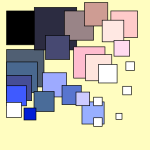 SCAM-J-2013-CeruloPBCC15 #detection #markov #named
SCAM-J-2013-CeruloPBCC15 #detection #markov #named- Irish: A Hidden Markov Model to detect coded information islands in free text (LC, MDP, AB, MC, GC), pp. 26–43.
 SCAM-J-2013-MarcozziVH15 #database #execution #relational #source code #sql #symbolic computation #testing
SCAM-J-2013-MarcozziVH15 #database #execution #relational #source code #sql #symbolic computation #testing- Relational symbolic execution of SQL code for unit testing of database programs (MM, WV, JLH), pp. 44–72.
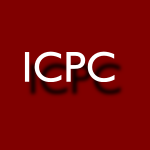 ICPC-2015-BusjahnBBCPSST #eye tracking #linear #order
ICPC-2015-BusjahnBBCPSST #eye tracking #linear #order- Eye movements in code reading: relaxing the linear order (TB, RB, AB, MEC, JHP, CS, BS, ST), pp. 255–265.
 ICPC-2015-JbaraF #empirical #eye tracking #how #using
ICPC-2015-JbaraF #empirical #eye tracking #how #using- How programmers read regular code: a controlled experiment using eye tracking (AJ, DGF), pp. 244–254.
 ICPC-2015-JordanRHBB #feature model #industrial #source code
ICPC-2015-JordanRHBB #feature model #industrial #source code- Manually locating features in industrial source code: the search actions of software nomads (HRJ, JR, SH, GB, JB), pp. 174–177.
 ICPC-2015-MacLeodSB #developer #documentation #how #using
ICPC-2015-MacLeodSB #developer #documentation #how #using- Code, camera, action: how software developers document and share program knowledge using YouTube (LM, MAS, AB), pp. 104–114.
 ICPC-2015-SabiMHK #code search #keyword #order
ICPC-2015-SabiMHK #code search #keyword #order- Reordering results of keyword-based code search for supporting simultaneous code changes (YS, HM, YH, SK), pp. 289–290.
 ICPC-2015-SaeidiHKJ #analysis #interactive #modelling #named #source code #topic
ICPC-2015-SaeidiHKJ #analysis #interactive #modelling #named #source code #topic- ITMViz: interactive topic modeling for source code analysis (AS, JH, RK, SJ), pp. 295–298.
 ICPC-2015-SaiedABS #api #library #question #source code #using
ICPC-2015-SaiedABS #api #library #question #source code #using- Could we infer unordered API usage patterns only using the library source code? (MAS, HA, OB, HAS), pp. 71–81.
 ICSME-2015-Balachandran #query #repository #scalability
ICSME-2015-Balachandran #query #repository #scalability- Query by example in large-scale code repositories (VB), pp. 467–476.
 ICSME-2015-BavotaR #code review #quality
ICSME-2015-BavotaR #code review #quality- Four eyes are better than two: On the impact of code reviews on software quality (GB, BR), pp. 81–90.
 ICSME-2015-Fenske #configuration management #smell
ICSME-2015-Fenske #configuration management #smell- Code smells in highly configurable software (WF), pp. 602–605.
 ICSME-2015-JansenH #dataset #industrial #smell #spreadsheet
ICSME-2015-JansenH #dataset #industrial #smell #spreadsheet- Code smells in spreadsheet formulas revisited on an industrial dataset (BJ, FH), pp. 372–380.
 ICSME-2015-KononenkoBGCG #bibliography #code review #matter #people #quality #question
ICSME-2015-KononenkoBGCG #bibliography #code review #matter #people #quality #question- Investigating code review quality: Do people and participation matter? (OK, OB, LG, YC, MWG), pp. 111–120.
 ICSME-2015-MondalRS #case study #comparative
ICSME-2015-MondalRS #case study #comparative- A comparative study on the bug-proneness of different types of code clones (MM, CKR, KAS), pp. 91–100.
 ICSME-2015-PawelkaJ #case study #identifier #natural language
ICSME-2015-PawelkaJ #case study #identifier #natural language- Is this code written in English? A study of the natural language of comments and identifiers in practice (TP, EJ), pp. 401–410.
 ICSME-2015-SantosAEDV #program transformation #source code
ICSME-2015-SantosAEDV #program transformation #source code- System specific, source code transformations (GS, NA, AE, SD, MTV), pp. 221–230.
 ICSME-2015-VahabzadehF0 #debugging #empirical
ICSME-2015-VahabzadehF0 #debugging #empirical- An empirical study of bugs in test code (AV, AMF, AM), pp. 101–110.
 ICSME-2015-WangPV #corpus #mining #scalability
ICSME-2015-WangPV #corpus #mining #scalability- Developing a model of loop actions by mining loop characteristics from a large code corpus (XW, LLP, KVS), pp. 51–60.
 MSR-2015-BirdCG #code review #framework #lessons learnt #overview #platform
MSR-2015-BirdCG #code review #framework #lessons learnt #overview #platform- Lessons Learned from Building and Deploying a Code Review Analytics Platform (CB, TC, MG), pp. 191–201.
 MSR-2015-BosuGB #code review #empirical
MSR-2015-BosuGB #code review #empirical- Characteristics of Useful Code Reviews: An Empirical Study at Microsoft (AB, MG, CB), pp. 146–156.
 MSR-2015-CoelhoAGD #android #debugging #exception #git
MSR-2015-CoelhoAGD #android #debugging #exception #git- Unveiling Exception Handling Bug Hazards in Android Based on GitHub and Google Code Issues (RC, LA, GG, AvD), pp. 134–145.
 MSR-2015-DiamantopoulosS #source code #stack overflow
MSR-2015-DiamantopoulosS #source code #stack overflow- Employing Source Code Information to Improve Question-Answering in Stack Overflow (TGD, ALS), pp. 454–457.
 MSR-2015-DuijnKB #quality #stack overflow
MSR-2015-DuijnKB #quality #stack overflow- Quality Questions Need Quality Code: Classifying Code Fragments on Stack Overflow (MD, AK, AB), pp. 410–413.
 MSR-2015-ErcanSB #automation #predict #stack overflow
MSR-2015-ErcanSB #automation #predict #stack overflow- Automatic Assessments of Code Explanations: Predicting Answering Times on Stack Overflow (SE, QS, AB), pp. 442–445.
 MSR-2015-GreilerHC #quality #replication
MSR-2015-GreilerHC #quality #replication- Code Ownership and Software Quality: A Replication Study (MG, KH, JC), pp. 2–12.
 MSR-2015-HellendoornDB #modelling
MSR-2015-HellendoornDB #modelling- Will They Like This? Evaluating Code Contributions with Language Models (VH, PTD, AB), pp. 157–167.
 MSR-2015-HigoOHHK #reuse #towards
MSR-2015-HigoOHHK #reuse #towards- Toward Reusing Code Changes (YH, AO, SH, HH, SK), pp. 372–376.
 MSR-2015-JiangA #co-evolution #empirical #framework #source code
MSR-2015-JiangA #co-evolution #empirical #framework #source code- Co-evolution of Infrastructure and Source Code — An Empirical Study (YJ, BA), pp. 45–55.
 MSR-2015-LinW #fine-grained #why
MSR-2015-LinW #fine-grained #why- Why Power Laws? An Explanation from Fine-Grained Code Changes (ZL, JW), pp. 68–75.
 MSR-2015-MartieH #code search #empirical #named
MSR-2015-MartieH #code search #empirical #named- Sameness: An Experiment in Code Search (LM, AvdH), pp. 76–87.
 MSR-2015-PalombaNTBOPL #dataset #evaluation #named #open data #smell
MSR-2015-PalombaNTBOPL #dataset #evaluation #named #open data #smell- Landfill: An Open Dataset of Code Smells with Public Evaluation (FP, DDN, MT, GB, RO, DP, ADL), pp. 482–485.
 MSR-2015-SinhaSDPM #detection #repository #source code
MSR-2015-SinhaSDPM #detection #repository #source code- Detecting and Mitigating Secret-Key Leaks in Source Code Repositories (VSS, DS, PD, RP, SM), pp. 396–400.
 MSR-2015-TaoK #clustering #code review #overview #perspective
MSR-2015-TaoK #clustering #code review #overview #perspective- Partitioning Composite Code Changes to Facilitate Code Review (YT, SK), pp. 180–190.
 MSR-2015-ThongtanunamMHI #code review #empirical #overview
MSR-2015-ThongtanunamMHI #code review #empirical #overview- Investigating Code Review Practices in Defective Files: An Empirical Study of the Qt System (PT, SM, AEH, HI), pp. 168–179.
 MSR-2015-Zacchiroli #dataset #metadata #source code
MSR-2015-Zacchiroli #dataset #metadata #source code- The Debsources Dataset: Two Decades of Debian Source Code Metadata (SZ), pp. 466–469.
 SANER-2015-DamevskiSP #code search #developer #evaluation #metric #scalability #tool support
SANER-2015-DamevskiSP #code search #developer #evaluation #metric #scalability #tool support- Scaling up evaluation of code search tools through developer usage metrics (KD, DCS, LLP), pp. 181–190.
 SANER-2015-DiasBGCD #fine-grained
SANER-2015-DiasBGCD #fine-grained- Untangling fine-grained code changes (MD, AB, GG, DC, SD), pp. 341–350.
 SANER-2015-HashimotoMI #fine-grained #scalability #source code
SANER-2015-HashimotoMI #fine-grained #scalability #source code- A comprehensive and scalable method for analyzing fine-grained source code change patterns (MH, AM, TI), pp. 351–360.
 SANER-2015-JiangPWXZ
SANER-2015-JiangPWXZ- Summarizing Evolutionary Trajectory by Grouping and Aggregating relevant code changes (QJ, XP, HW, ZX, WZ), pp. 361–370.
 SANER-2015-Keivanloo0Z #clone detection #detection #java #repository #scalability
SANER-2015-Keivanloo0Z #clone detection #detection #java #repository #scalability- Threshold-free code clone detection for a large-scale heterogeneous Java repository (IK, FZ, YZ), pp. 201–210.
 SANER-2015-KochharTL #debugging #effectiveness #empirical #scalability #test coverage #testing
SANER-2015-KochharTL #debugging #effectiveness #empirical #scalability #test coverage #testing- Code coverage and test suite effectiveness: Empirical study with real bugs in large systems (PSK, FT, DL), pp. 560–564.
 SANER-2015-LuSWLD #code search #effectiveness #query
SANER-2015-LuSWLD #code search #effectiveness #query- Query expansion via WordNet for effective code search (ML, XS, SW, DL, YD), pp. 545–549.
 SANER-2015-MondalRS #mining #named #refactoring
SANER-2015-MondalRS #mining #named #refactoring- SPCP-Miner: A tool for mining code clones that are important for refactoring or tracking (MM, CKR, KAS), pp. 484–488.
 SANER-2015-MoralesMK #case study #code review #design #overview #quality
SANER-2015-MoralesMK #case study #code review #design #overview #quality- Do code review practices impact design quality? A case study of the Qt, VTK, and ITK projects (RM, SM, FK), pp. 171–180.
 SANER-2015-NairJNH #analysis
SANER-2015-NairJNH #analysis- A static code analysis tool for control system software (SN, RJ, ARN, SHS), pp. 459–463.
 SANER-2015-PanichellaAPA #code review #developer #question #static analysis #tool support
SANER-2015-PanichellaAPA #code review #developer #question #static analysis #tool support- Would static analysis tools help developers with code reviews? (SP, VA, MDP, GA), pp. 161–170.
 SANER-2015-QiuSM #graph #identification #library #morphism #using
SANER-2015-QiuSM #graph #identification #library #morphism #using- Library functions identification in binary code by using graph isomorphism testings (JQ, XS, PM), pp. 261–270.
 SANER-2015-ThongtanunamTKY #approach #code review #overview #perspective #recommendation
SANER-2015-ThongtanunamTKY #approach #code review #overview #perspective #recommendation- Who should review my code? A file location-based code-reviewer recommendation approach for Modern Code Review (PT, CT, RGK, NY, HI, KiM), pp. 141–150.
 SANER-2015-TymchukML #code review #overview
SANER-2015-TymchukML #code review #overview- Code review: Veni, ViDI, vici (YT, AM, ML), pp. 151–160.
 SANER-2015-WongLT #automation #generative #mining #named #source code
SANER-2015-WongLT #automation #generative #mining #named #source code- CloCom: Mining existing source code for automatic comment generation (EW, TL, LT), pp. 380–389.
 SCAM-2015-BaloghSB #eclipse #named #source code
SCAM-2015-BaloghSB #eclipse #named #source code- CodeMetropolis: Eclipse over the city of source code (GB, AS, ÁB), pp. 271–276.
 SCAM-2015-BrandtnerLG #dependence #integration #source code #testing
SCAM-2015-BrandtnerLG #dependence #integration #source code #testing- Intent, tests, and release dependencies: Pragmatic recipes for source code integration (MB, PL, HCG), pp. 11–20.
 SCAM-2015-FaragoHF #cumulative #maintenance
SCAM-2015-FaragoHF #cumulative #maintenance- Cumulative code churn: Impact on maintainability (CF, PH, RF), pp. 141–150.
 SCAM-2015-FenskeSMS #detection #smell #variability
SCAM-2015-FenskeSMS #detection #smell #variability- When code smells twice as much: Metric-based detection of variability-aware code smells (WF, SS, DM, GS), pp. 171–180.
 SCAM-2015-HuckBU #c++
SCAM-2015-HuckBU #c++- Checking C++ codes for compatibility with operator overloading (AH, CB, JU), pp. 91–100.
 SCAM-2015-LawrieB #navigation #source code #word
SCAM-2015-LawrieB #navigation #source code #word- Navigating source code with words (DL, DB), pp. 71–80.
 SCAM-2015-LemosPSL #code search #query #question #scalability
SCAM-2015-LemosPSL #code search #query #question #scalability- Can the use of types and query expansion help improve large-scale code search? (OALL, ACdP, HS, CVL), pp. 41–50.
 SCAM-2015-RahmanRK #crowdsourcing #recommendation #source code #using
SCAM-2015-RahmanRK #crowdsourcing #recommendation #source code #using- Recommending insightful comments for source code using crowdsourced knowledge (MMR, CKR, IK), pp. 81–90.
 SCAM-2015-SantosEADV #game studies #program transformation #source code
SCAM-2015-SantosEADV #game studies #program transformation #source code- Recording and replaying system specific, source code transformations (GS, AE, NA, SD, MTV), pp. 221–230.
 SCAM-2015-SzokeNFFG #automation #named #refactoring #smell #tool support
SCAM-2015-SzokeNFFG #automation #named #refactoring #smell #tool support- FaultBuster: An automatic code smell refactoring toolset (GS, CN, LJF, RF, TG), pp. 253–258.
 SCAM-2015-UddinGGR #comprehension #eye tracking #on the #using #visualisation
SCAM-2015-UddinGGR #comprehension #eye tracking #on the #using #visualisation- On the comprehension of code clone visualizations: A controlled study using eye tracking (MSU, VG, CG, CKR), pp. 161–170.
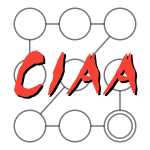 CIAA-2015-Ade-IbijolaES #programming
CIAA-2015-Ade-IbijolaES #programming- Introducing Code Adviser: A DFA-driven Electronic Programming Tutor (AAI, SE, IDS), pp. 307–312.
 DLT-2015-HanKS #fault
DLT-2015-HanKS #fault- Generalizations of Code Languages with Marginal Errors (YSH, SKK, KS), pp. 264–275.
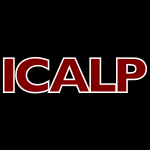 ICALP-v1-2015-HemenwayW #linear
ICALP-v1-2015-HemenwayW #linear- Linear-Time List Recovery of High-Rate Expander Codes (BH, MW), pp. 701–712.
 ICALP-v1-2015-MolinaroWY #complexity
ICALP-v1-2015-MolinaroWY #complexity- Amplification of One-Way Information Complexity via Codes and Noise Sensitivity (MM, DPW, GY), pp. 960–972.
 LATA-2015-AnselmoGM #2d #decidability
LATA-2015-AnselmoGM #2d #decidability- Structure and Measure of a Decidable Class of Two-dimensional Codes (MA, DG, MM), pp. 315–327.
 LATA-2015-LopezN
LATA-2015-LopezN- Coding Non-orientable Laminations (LML, PN), pp. 340–352.
 FM-2015-FernandezAKK #automation #verification
FM-2015-FernandezAKK #automation #verification- Automated Verification of RPC Stub Code (MF, JA, GK, IK), pp. 273–290.
 SEFM-2015-RockaiSB #c #c++ #model checking
SEFM-2015-RockaiSB #c #c++ #model checking- Techniques for Memory-Efficient Model Checking of C and C++ Code (PR, VS, JB), pp. 268–282.
 Haskell-2015-McDonellCGN #code generation #runtime #type safety
Haskell-2015-McDonellCGN #code generation #runtime #type safety- Type-safe runtime code generation: accelerate to LLVM (TLM, MMTC, VG, RRN), pp. 201–212.
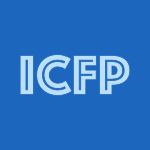 ICFP-2015-RompfA #c #compilation #functional #sql
ICFP-2015-RompfA #c #compilation #functional #sql- Functional pearl: a SQL to C compiler in 500 lines of code (TR, NA), pp. 2–9.
 ICFP-2015-SteuwerFLD #functional #generative #performance #using
ICFP-2015-SteuwerFLD #functional #generative #performance #using- Generating performance portable code using rewrite rules: from high-level functional expressions to high-performance OpenCL code (MS, CF, SL, CD), pp. 205–217.
 CHI-2015-BakerML #named
CHI-2015-BakerML #named- StructJumper: A Tool to Help Blind Programmers Navigate and Understand the Structure of Code (CMB, LRM, REL), pp. 3043–3052.
 CHI-2015-LaseckiGLLBD #behaviour #crowdsourcing #privacy #trade-off #video
CHI-2015-LaseckiGLLBD #behaviour #crowdsourcing #privacy #trade-off #video- Exploring Privacy and Accuracy Trade-Offs in Crowdsourced Behavioral Video Coding (WSL, MG, WL, EL, JPB, SPD), pp. 1945–1954.
 DUXU-UI-2015-HeidtKBR #difference #gender #human-computer
DUXU-UI-2015-HeidtKBR #difference #gender #human-computer- Incommensurable Writings — Examining the Status of Gender Difference Within HCI Coding Practices (MH, KK, AB, PR), pp. 196–205.
 HIMI-IKC-2015-WatanabeTA #abstraction #development #learning #source code
HIMI-IKC-2015-WatanabeTA #abstraction #development #learning #source code- Development of a Learning Support System for Reading Source Code by Stepwise Abstraction (KW, TT, TA), pp. 387–394.
 LCT-2015-Chu #editing
LCT-2015-Chu #editing- Dual-Coding Strategy for the Chinese Characters Learners: Chinese PCS Editor (CNC), pp. 43–49.
 ICEIS-v3-2015-SantosTF #process
ICEIS-v3-2015-SantosTF #process- Investigating Completeness of Coding in Business Process Model and Notation (CHdS, LHT, MF), pp. 328–333.
 ICML-2015-AllamanisTGW #modelling #natural language #source code
ICML-2015-AllamanisTGW #modelling #natural language #source code- Bimodal Modelling of Source Code and Natural Language (MA, DT, ADG, YW), pp. 2123–2132.
 ICML-2015-PiechHNPSG #feedback #learning #student
ICML-2015-PiechHNPSG #feedback #learning #student- Learning Program Embeddings to Propagate Feedback on Student Code (CP, JH, AN, MP, MS, LJG), pp. 1093–1102.
 ICML-2015-UbaruMS #approximate #fault #matrix #rank #using
ICML-2015-UbaruMS #approximate #fault #matrix #rank #using- Low Rank Approximation using Error Correcting Coding Matrices (SU, AM, YS), pp. 702–710.
 ICML-2015-YogatamaFDS #learning #word
ICML-2015-YogatamaFDS #learning #word- Learning Word Representations with Hierarchical Sparse Coding (DY, MF, CD, NAS), pp. 87–96.
 KDD-2015-SomanchiALEG #predict #using
KDD-2015-SomanchiALEG #predict #using- Early Prediction of Cardiac Arrest (Code Blue) using Electronic Medical Records (SS, SA, AL, EE, RG), pp. 2119–2126.
 SEKE-2015-HesseKPRB #implementation
SEKE-2015-HesseKPRB #implementation- Documenting Implementation Decisions with Code Annotations (TMH, AK, BP, TR, BB), pp. 152–157.
 SEKE-2015-SchreiberMRM #comprehension #named #object-oriented #source code
SEKE-2015-SchreiberMRM #comprehension #named #object-oriented #source code- TAGGINGSENSE: Method Based On Sensemaking For Object-Oriented Source Code Comprehension (DS, ALAM, SSR, AM), pp. 278–283.
 SEKE-2015-XuLZ #overview #visualisation
SEKE-2015-XuLZ #overview #visualisation- To Enlighten Hidden Facts in The Code: A Review of Software Visualization Metaphors (YX, YL, JZ), pp. 294–297.
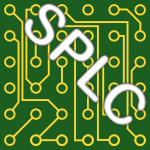 SPLC-2015-FilhoABAB #empirical #java #product line #source code
SPLC-2015-FilhoABAB #empirical #java #product line #source code- Assessing product line derivation operators applied to Java source code: an empirical study (JBFF, SA, OB, MA, BB), pp. 36–45.
 OOPSLA-2015-FuBS #analysis #automation #fault
OOPSLA-2015-FuBS #analysis #automation #fault- Automated backward error analysis for numerical code (ZF, ZB, ZS), pp. 639–654.
 OOPSLA-2015-SrinivasanR #partial evaluation
OOPSLA-2015-SrinivasanR #partial evaluation- Partial evaluation of machine code (VS, TWR), pp. 860–879.
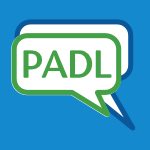 PADL-2015-DymchenkoM #problem
PADL-2015-DymchenkoM #problem- Declaratively Solving Google Code Jam Problems with Picat (SD, MM), pp. 50–57.
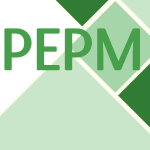 PEPM-2015-VinayakaraoPN #source code
PEPM-2015-VinayakaraoPN #source code- Structurally Heterogeneous Source Code Examples from Unstructured Knowledge Sources (VV, RP, AVN), pp. 21–26.
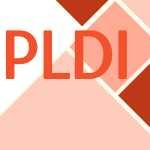 PLDI-2015-MendisBWKRPZA #domain-specific language #kernel #named
PLDI-2015-MendisBWKRPZA #domain-specific language #kernel #named- Helium: lifting high-performance stencil kernels from stripped x86 binaries to halide DSL code (CM, JB, KW, SK, JRK, SP, QZ, SPA), pp. 391–402.
 PLDI-2015-Sidiroglou-Douskos #automation #fault #multi
PLDI-2015-Sidiroglou-Douskos #automation #fault #multi- Automatic error elimination by horizontal code transfer across multiple applications (SSD, EL, FL, MR), pp. 43–54.
 PLDI-2015-SrinivasanR #semantics #synthesis
PLDI-2015-SrinivasanR #semantics #synthesis- Synthesis of machine code from semantics (VS, TWR), pp. 596–607.
 PLDI-2015-VenkatHS #data transformation #matrix
PLDI-2015-VenkatHS #data transformation #matrix- Loop and data transformations for sparse matrix code (AV, MWH, MS), pp. 521–532.
 POPL-2015-Agten0P #c #composition #verification
POPL-2015-Agten0P #c #composition #verification- Sound Modular Verification of C Code Executing in an Unverified Context (PA, BJ, FP), pp. 581–594.
 POPL-2015-Lee
POPL-2015-Lee- Coding by Everyone, Every Day (PL), p. 485.
 POPL-2015-RaychevVK #predict
POPL-2015-RaychevVK #predict- Predicting Program Properties from “Big Code” (VR, MTV, AK), pp. 111–124.
 ASE-2015-FudabaOANHSTN #automation #named #pseudo #source code
ASE-2015-FudabaOANHSTN #automation #named #pseudo #source code- Pseudogen: A Tool to Automatically Generate Pseudo-Code from Source Code (HF, YO, KA, GN, HH, SS, TT, SN), pp. 824–829.
 ASE-2015-GroceAJM #how #verification
ASE-2015-GroceAJM #how #verification- How Verified is My Code? Falsification-Driven Verification (T) (AG, IA, CJ, PEM), pp. 737–748.
 ASE-2015-KeSGB #code search #semantics #source code
ASE-2015-KeSGB #code search #semantics #source code- Repairing Programs with Semantic Code Search (T) (YK, KTS, CLG, YB), pp. 295–306.
 ASE-2015-LvZLWZZ #api #code search #comprehension #effectiveness #named
ASE-2015-LvZLWZZ #api #code search #comprehension #effectiveness #named- CodeHow: Effective Code Search Based on API Understanding and Extended Boolean Model (E) (FL, HZ, JGL, SW, DZ, JZ), pp. 260–270.
 ASE-2015-MartieLH #named #query
ASE-2015-MartieLH #named #query- CodeExchange: Supporting Reformulation of Internet-Scale Code Queries in Context (T) (LM, TDL, AvdH), pp. 24–35.
 ASE-2015-NguyenNN #approach #divide and conquer #migration #multi #source code #statistics
ASE-2015-NguyenNN #approach #divide and conquer #migration #multi #source code #statistics- Divide-and-Conquer Approach for Multi-phase Statistical Migration for Source Code (T) (ATN, TTN, TNN), pp. 585–596.
 ASE-2015-OdaFNHSTN #learning #pseudo #source code #statistics #using
ASE-2015-OdaFNHSTN #learning #pseudo #source code #statistics #using- Learning to Generate Pseudo-Code from Source Code Using Statistical Machine Translation (T) (YO, HF, GN, HH, SS, TT, SN), pp. 574–584.
 ASE-2015-VasquezLVP #database #developer #documentation #how #source code
ASE-2015-VasquezLVP #database #developer #documentation #how #source code- How do Developers Document Database Usages in Source Code? (N) (MLV, BL, CV, DP), pp. 36–41.
 ESEC-FSE-2015-FuLB #analysis #automation #memory dump #memory management #pointer
ESEC-FSE-2015-FuLB #analysis #automation #memory dump #memory management #pointer- Automatically deriving pointer reference expressions from binary code for memory dump analysis (YF, ZL, DB), pp. 614–624.
 ESEC-FSE-2015-GongPS #javascript #named
ESEC-FSE-2015-GongPS #javascript #named- JITProf: pinpointing JIT-unfriendly JavaScript code (LG, MP, KS), pp. 357–368.
 ESEC-FSE-2015-HeuleSC #modelling #named
ESEC-FSE-2015-HeuleSC #modelling #named- Mimic: computing models for opaque code (SH, MS, SC), pp. 710–720.
 ESEC-FSE-2015-Janjua
ESEC-FSE-2015-Janjua- OnSpot system: test impact visibility during code edits in real software (MUJ), pp. 994–997.
 ESEC-FSE-2015-KargenS #slicing #source code #using
ESEC-FSE-2015-KargenS #slicing #source code #using- Turning programs against each other: high coverage fuzz-testing using binary-code mutation and dynamic slicing (UK, NS), pp. 782–792.
 ESEC-FSE-2015-Konopka #dependence #eye tracking #identification #navigation
ESEC-FSE-2015-Konopka #dependence #eye tracking #identification #navigation- Combining eye tracking with navigation paths for identification of cross-language code dependencies (MK), pp. 1057–1059.
 ESEC-FSE-2015-LinPXZZ #interactive #recommendation
ESEC-FSE-2015-LinPXZZ #interactive #recommendation- Clone-based and interactive recommendation for modifying pasted code (YL, XP, ZX, DZ, WZ), pp. 520–531.
 ESEC-FSE-2015-NagappanRKTMMH #c #empirical #git #goto #repository
ESEC-FSE-2015-NagappanRKTMMH #c #empirical #git #goto #repository- An empirical study of goto in C code from GitHub repositories (MN, RR, YK, ÉT, SM, AM, AEH), pp. 404–414.
 ESEC-FSE-2015-PhamSS #automation #developer #recommendation
ESEC-FSE-2015-PhamSS #automation #developer #recommendation- Automatically recommending test code examples to inexperienced developers (RP, YS, KS), pp. 890–893.
 ESEC-FSE-2015-PrauseJ #gamification
ESEC-FSE-2015-PrauseJ #gamification- Gamification for enforcing coding conventions (CRP, MJ), pp. 649–660.
 ESEC-FSE-2015-SadowskiSE #case study #developer #how
ESEC-FSE-2015-SadowskiSE #case study #developer #how- How developers search for code: a case study (CS, KTS, SGE), pp. 191–201.
 ESEC-FSE-2015-Vinayakarao #comprehension
ESEC-FSE-2015-Vinayakarao #comprehension- Spotting familiar code snippet structures for program comprehension (VV), pp. 1054–1056.
 ICSE-v1-2015-BarnettBBL #automation #code review #composition #developer #overview
ICSE-v1-2015-BarnettBBL #automation #code review #composition #developer #overview- Helping Developers Help Themselves: Automatic Decomposition of Code Review Changesets (MB, CB, JB, SKL), pp. 134–144.
 ICSE-v1-2015-LavalleeR #case study #developer #quality #why
ICSE-v1-2015-LavalleeR #case study #developer #quality #why- Why Good Developers Write Bad Code: An Observational Case Study of the Impacts of Organizational Factors on Software Quality (ML, PNR), pp. 677–687.
 ICSE-v1-2015-NanzF #case study #comparative #programming language
ICSE-v1-2015-NanzF #case study #comparative #programming language- A Comparative Study of Programming Languages in Rosetta Code (SN, CAF), pp. 778–788.
 ICSE-v1-2015-NguyenN #graph #statistics
ICSE-v1-2015-NguyenN #graph #statistics- Graph-Based Statistical Language Model for Code (ATN, TNN), pp. 858–868.
 ICSE-v1-2015-TufanoPBOPLP #smell #why
ICSE-v1-2015-TufanoPBOPLP #smell #why- When and Why Your Code Starts to Smell Bad (MT, FP, GB, RO, MDP, ADL, DP), pp. 403–414.
 ICSE-v1-2015-YoonM #editing #undo
ICSE-v1-2015-YoonM #editing #undo- Supporting Selective Undo in a Code Editor (YY, BAM), pp. 223–233.
 ICSE-v1-2015-ZhangSPK #code review #interactive #overview
ICSE-v1-2015-ZhangSPK #code review #interactive #overview- Interactive Code Review for Systematic Changes (TZ, MS, JP, MK), pp. 111–122.
 ICSE-v2-2015-AbreuEP #fine-grained #monitoring #named
ICSE-v2-2015-AbreuEP #fine-grained #monitoring #named- CodeAware: Sensor-Based Fine-Grained Monitoring and Management of Software Artifacts (RA, HE, AP), pp. 551–554.
 ICSE-v2-2015-AlexandruG #agile #analysis #multi
ICSE-v2-2015-AlexandruG #agile #analysis #multi- Rapid Multi-Purpose, Multi-Commit Code Analysis (CVA, HCG), pp. 635–638.
 ICSE-v2-2015-BishopHXTH #contest #experience #scalability
ICSE-v2-2015-BishopHXTH #contest #experience #scalability- Code Hunt: Experience with Coding Contests at Scale (JB, RNH, TX, NT, JdH), pp. 398–407.
 ICSE-v2-2015-CzerwonkaGT #code review #debugging #how #overview
ICSE-v2-2015-CzerwonkaGT #code review #debugging #how #overview- Code Reviews Do Not Find Bugs. How the Current Code Review Best Practice Slows Us Down (JC, MG, JT), pp. 27–28.
 ICSE-v2-2015-FranksTDH #modelling #named
ICSE-v2-2015-FranksTDH #modelling #named- CACHECA: A Cache Language Model Based Code Suggestion Tool (CF, ZT, PTD, VH), pp. 705–708.
 ICSE-v2-2015-MaleticC #analysis #semiparsing #source code #using
ICSE-v2-2015-MaleticC #analysis #semiparsing #source code #using- Exploration, Analysis, and Manipulation of Source Code Using srcML (JIM, MLC), pp. 951–952.
 ICSE-v2-2015-McBurney #automation #documentation #generative #source code #summary
ICSE-v2-2015-McBurney #automation #documentation #generative #source code #summary- Automatic Documentation Generation via Source Code Summarization (PWM), pp. 903–906.
 ICSE-v2-2015-McCarthyRS #comprehension #consistency #named
ICSE-v2-2015-McCarthyRS #comprehension #consistency #named- Bixie: Finding and Understanding Inconsistent Code (TM, PR, MS), pp. 645–648.
 ICSE-v2-2015-NguyenKN #embedded #ide #named #php #web
ICSE-v2-2015-NguyenKN #embedded #ide #named #php #web- Varis: IDE Support for Embedded Client Code in PHP Web Applications (HVN, CK, TNN), pp. 693–696.
 ICSE-v2-2015-Palomba #analysis #detection #smell
ICSE-v2-2015-Palomba #analysis #detection #smell- Textual Analysis for Code Smell Detection (FP), pp. 769–771.
 ICSE-v2-2015-Roos #code completion #performance #precise #statistics
ICSE-v2-2015-Roos #code completion #performance #precise #statistics- Fast and Precise Statistical Code Completion (PR), pp. 757–759.
 ICSE-v2-2015-SanchezW #source code #stack overflow
ICSE-v2-2015-SanchezW #source code #stack overflow- Source Code Curation on StackOverflow: The Vesperin System (HS, JW), pp. 661–664.
 ICSE-v2-2015-Sant #assessment
ICSE-v2-2015-Sant #assessment- Code Repurposing as an Assessment Tool (JS), pp. 295–298.
 ICSE-v2-2015-Szabo #comprehension #maintenance
ICSE-v2-2015-Szabo #comprehension #maintenance- Novice Code Understanding Strategies during a Software Maintenance Assignment (CS), pp. 276–284.
 SAC-2015-DAvanzoFGS #estimation #functional #metric #mobile
SAC-2015-DAvanzoFGS #estimation #functional #metric #mobile- COSMIC functional measurement of mobile applications and code size estimation (LD, FF, CG, PS), pp. 1631–1636.
 SAC-2015-DieumegardGKTT #compilation #contract
SAC-2015-DieumegardGKTT #compilation #contract- Compilation of synchronous observers as code contracts (AD, PLG, TK, AT, XT), pp. 1933–1939.
 SAC-2015-DymchenkoM #eclipse #problem #prolog
SAC-2015-DymchenkoM #eclipse #problem #prolog- Declaratively solving tricky google code jam problems with prolog-based ECLiPSe CLP system (SD, MM), pp. 2122–2124.
 SAC-2015-HozanoFSFC #detection #developer #feedback #smell #using
SAC-2015-HozanoFSFC #detection #developer #feedback #smell #using- Using developers’ feedback to improve code smell detection (MH, HF, ICLS, BF, EC), pp. 1661–1663.
 SAC-2015-JeremicPM #array #performance #random
SAC-2015-JeremicPM #array #performance #random- Improving random write performance in heterogeneous erasure-coded drive arrays by offloading code block requests (NJ, HP, GM), pp. 2007–2014.
 SAC-2015-KrutzMS #analysis #detection #effectiveness #using
SAC-2015-KrutzMS #analysis #detection #effectiveness #using- Examining the effectiveness of using concolic analysis to detect code clones (DEK, SAM, ES), pp. 1610–1615.
 SAC-2015-LopezR #analysis #metaprogramming
SAC-2015-LopezR #analysis #metaprogramming- Meta-programming with well-typed code analysis (ML, GDR), pp. 2119–2121.
 SAC-2015-PalviainenKKLMN #collaboration #design #developer #experience #framework
SAC-2015-PalviainenKKLMN #collaboration #design #developer #experience #framework- Design framework enhancing developer experience in collaborative coding environment (JP, TK, JK, JL, TM, AN), pp. 149–156.
 SAC-2015-RodriguesAFSB #approach #ontology #simulation
SAC-2015-RodriguesAFSB #approach #ontology #simulation- An ontological approach for simulating legal action in the Brazilian penal code (CMdOR, RRdA, FLGdF, EPdS, PVdSB), pp. 376–381.
 GPCE-2015-ByalikCT #automation #named #programming #synthesis
GPCE-2015-ByalikCT #automation #named #programming #synthesis- Native-2-native: automated cross-platform code synthesis from web-based programming resources (AB, SC, ET), pp. 99–108.
 GPCE-2015-MakarovH #compilation #multi #named
GPCE-2015-MakarovH #compilation #multi #named- CLOP: a multi-stage compiler to seamlessly embed heterogeneous code (DM, MH), pp. 109–112.
 GPCE-2015-RingertRW #behaviour #code generation
GPCE-2015-RingertRW #behaviour #code generation- Composing code generators for C&C ADLs with Application-specific behavior languages (JOR, BR, AW), pp. 113–116.
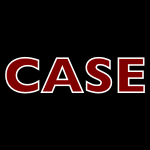 CASE-2015-GleesonBBCL #automation #code generation #optimisation
CASE-2015-GleesonBBCL #automation #code generation #optimisation- Optimizing robot trajectories for automatic robot code generation (DG, SB, RB, JSC, BL), pp. 495–500.
 CASE-2015-RacchettiTF #automation #documentation #generative #lifecycle #usability
CASE-2015-RacchettiTF #automation #documentation #generative #lifecycle #usability- Generating automatically the documentation from PLC code by D4T3 to improve the usability and life cycle management of software in automation (LR, LT, CF), pp. 168–173.
 CASE-2015-ZhuCS #energy #linear #process #recognition #using
CASE-2015-ZhuCS #energy #linear #process #recognition #using- Using unlabeled acoustic data with locality-constrained linear coding for energy-related activity recognition in buildings (QZ, ZC, YCS), pp. 174–179.
 CC-2015-AllenSK #analysis #points-to #scalability #staged
CC-2015-AllenSK #analysis #points-to #scalability #staged- Staged Points-to Analysis for Large Code Bases (NA, BS, PK), pp. 131–150.
 CC-2015-BourkeCPPP #code generation #hybrid
CC-2015-BourkeCPPP #code generation #hybrid- A Synchronous-Based Code Generator for Explicit Hybrid Systems Languages (TB, JLC, BP, CP, MP), pp. 69–88.
 CC-2015-NgCY #code generation #protocol
CC-2015-NgCY #code generation #protocol- Protocols by Default — Safe MPI Code Generation Based on Session Types (NN, JGdFC, NY), pp. 212–232.
 CGO-2015-HasabnisQS #architecture #code generation #correctness #specification
CGO-2015-HasabnisQS #architecture #code generation #correctness #specification- Checking correctness of code generator architecture specifications (NH, RQ, RS), pp. 167–178.
 CGO-2015-HawkinsDBZ #optimisation
CGO-2015-HawkinsDBZ #optimisation- Optimizing binary translation of dynamically generated code (BH, BD, DB, QZ), pp. 68–78.
 DATE-2015-DamschenRVP
DATE-2015-DamschenRVP- Transparent offloading of computational hotspots from binary code to Xeon Phi (MD, HR, GV, CP), pp. 1078–1083.
 DATE-2015-DinizSDBH #architecture #hardware #performance #standard #video
DATE-2015-DinizSDBH #architecture #hardware #performance #standard #video- A deblocking filter hardware architecture for the high efficiency video coding standard (CMD, MS, FVD, SB, JH), pp. 1509–1514.
 DATE-2015-FuWH #code generation
DATE-2015-FuWH #code generation- Improving SIMD code generation in QEMU (SYF, JJW, WCH), pp. 1233–1236.
 DATE-2015-KainthKNVT #obfuscation
DATE-2015-KainthKNVT #obfuscation- Hardware-assisted code obfuscation for FPGA soft microprocessors (MK, LK, CN, SGV, RT), pp. 127–132.
 DATE-2015-ZhongLLZLZS #mobile #named
DATE-2015-ZhongLLZLZS #mobile #named- nCode: limiting harmful writes to emerging mobile NVRAM through code swapping (KZ, DL, LL, XZ, WL, QZ, EHMS), pp. 1305–1310.
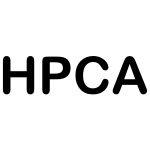 HPCA-2015-KimSE #flexibility #memory management #reliability
HPCA-2015-KimSE #flexibility #memory management #reliability- Bamboo ECC: Strong, safe, and flexible codes for reliable computer memory (JK, MS, ME), pp. 101–112.
 PDP-2015-EvrardL #automation #code generation #concurrent #distributed #formal method #modelling #process
PDP-2015-EvrardL #automation #code generation #concurrent #distributed #formal method #modelling #process- Automatic Distributed Code Generation from Formal Models of Asynchronous Concurrent Processes (HE, FL), pp. 459–466.
 PPoPP-2015-RavishankarDEPRRS #code generation #distributed #memory management
PPoPP-2015-RavishankarDEPRRS #code generation #distributed #memory management- Distributed memory code generation for mixed Irregular/Regular computations (MR, RD, VE, LNP, JR, AR, PS), pp. 65–75.
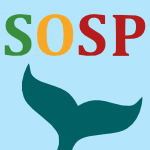 SOSP-2015-CurtsingerB #named #profiling
SOSP-2015-CurtsingerB #named #profiling- Coz: finding code that counts with causal profiling (CC, EDB), pp. 184–197.
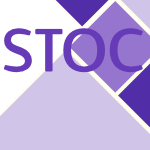 STOC-2015-AbbeSW #fault #random
STOC-2015-AbbeSW #fault #random- Reed-Muller Codes for Random Erasures and Errors (EA, AS, AW), pp. 297–306.
 STOC-2015-BaconFHS #quantum
STOC-2015-BaconFHS #quantum- Sparse Quantum Codes from Quantum Circuits (DB, STF, AWH, JS), pp. 327–334.
 STOC-2015-BhowmickL
STOC-2015-BhowmickL- The List Decoding Radius of Reed-Muller Codes over Small Fields (AB, SL), pp. 277–285.
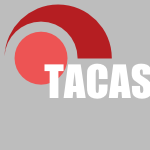 TACAS-2015-DjoudiB #analysis #low level #named
TACAS-2015-DjoudiB #analysis #low level #named- BINSEC: Binary Code Analysis with Low-Level Regions (AD, SB), pp. 212–217.
 ICST-2015-MondalHD #multi #test coverage #testing
ICST-2015-MondalHD #multi #test coverage #testing- Exploring Test Suite Diversification and Code Coverage in Multi-Objective Test Case Selection (DM, HH, SD), pp. 1–10.
 ICST-2015-Oriol #embedded #legacy #re-engineering #testing
ICST-2015-Oriol #embedded #legacy #re-engineering #testing- Testing Legacy Embedded Code: Landing on a Software Engineering Desert Island (MO), pp. 1–2.
 ICST-2015-PankumhangR #test coverage
ICST-2015-PankumhangR #test coverage- Iterative Instrumentation for Code Coverage in Time-Sensitive Systems (TP, MR), pp. 1–10.
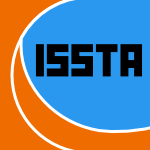 ISSTA-2015-GongPSS #javascript #named
ISSTA-2015-GongPSS #javascript #named- DLint: dynamically checking bad coding practices in JavaScript (LG, MP, MS, KS), pp. 94–105.
 TAP-2015-MoreiraHDMNM #case study #code generation #testing #tool support #using #verification
TAP-2015-MoreiraHDMNM #case study #code generation #testing #tool support #using #verification- Verifying Code Generation Tools for the B-Method Using Tests: A Case Study (AMM, CH, DD, ECBdM, JBSN, VdMJ), pp. 76–91.
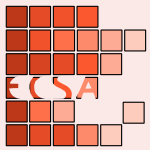 ECSA-2014-CavalcanteOB #architecture #code generation #implementation
ECSA-2014-CavalcanteOB #architecture #code generation #implementation- Architecture-Based Code Generation: From π-ADL Architecture Descriptions to Implementations in the Go Language (EC, FO, TVB), pp. 130–145.
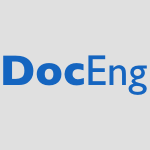 DocEng-2014-UlichneyGS
DocEng-2014-UlichneyGS- Circular coding with interleaving phase (RU, MG, SJS), pp. 21–24.
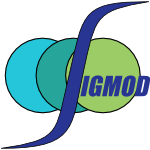 SIGMOD-2014-TranNST #approach #clustering #named
SIGMOD-2014-TranNST #approach #clustering #named- JECB: a join-extension, code-based approach to OLTP data partitioning (KQT, JFN, BS, DT), pp. 39–50.
 VLDB-2014-NagelBV #code generation #performance #query
VLDB-2014-NagelBV #code generation #performance #query- Code Generation for Efficient Query Processing in Managed Runtimes (FN, GMB, SDV), pp. 1095–1106.
 ITiCSE-2014-HakulinenM #assessment #automation #programming
ITiCSE-2014-HakulinenM #assessment #automation #programming- QR code programming tasks with automated assessment (LH, LM), pp. 177–182.
 ITiCSE-2014-LakanenIL #comprehension #difference #student
ITiCSE-2014-LakanenIL #comprehension #difference #student- Understanding differences among coding club students (AJL, VI, VL), pp. 159–164.
 ITiCSE-2014-SimonCSCJ #student
ITiCSE-2014-SimonCSCJ #student- Student perceptions of the acceptability of various code-writing practices (S, BC, JS, AC, CJ), pp. 105–110.
 ITiCSE-2014-StrieweG14a #runtime #using
ITiCSE-2014-StrieweG14a #runtime #using- Code reading exercises using run time traces (MS, MG), p. 346.
 ITiCSE-2014-WhalleyK
ITiCSE-2014-WhalleyK- A qualitative think-aloud study of novice programmers’ code writing strategies (JLW, NK), pp. 279–284.
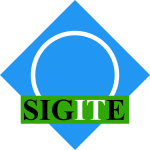 SIGITE-2014-VihavainenLI #analysis #source code
SIGITE-2014-VihavainenLI #analysis #source code- Analysis of source code snapshot granularity levels (AV, ML, PI), pp. 21–26.
 CSMR-WCRE-2014-AntinyanSMOWWHH #agile #case study #development #experience #identification #industrial #risk management
CSMR-WCRE-2014-AntinyanSMOWWHH #agile #case study #development #experience #identification #industrial #risk management- Identifying risky areas of software code in Agile/Lean software development: An industrial experience report (VA, MS, WM, PÖ, EW, JW, AH, JH), pp. 154–163.
 CSMR-WCRE-2014-DamevskiSP #case study #code search
CSMR-WCRE-2014-DamevskiSP #case study #code search- A case study of paired interleaving for evaluating code search techniques (KD, DCS, LLP), pp. 54–63.
 CSMR-WCRE-2014-DingZT #branch #detection
CSMR-WCRE-2014-DingZT #branch #detection- Detecting infeasible branches based on code patterns (SD, HZ, HBKT), pp. 74–83.
 CSMR-WCRE-2014-EspinhaZG #api #developer #web
CSMR-WCRE-2014-EspinhaZG #api #developer #web- Web API growing pains: Stories from client developers and their code (TE, AZ, HGG), pp. 84–93.
 CSMR-WCRE-2014-GoeminneDM #co-evolution #data-driven
CSMR-WCRE-2014-GoeminneDM #co-evolution #data-driven- Co-evolving code-related and database-related changes in a data-intensive software system (MG, AD, TM), pp. 353–357.
 CSMR-WCRE-2014-HillRFM #case study #code search #query #refinement #user study
CSMR-WCRE-2014-HillRFM #case study #code search #query #refinement #user study- NL-based query refinement and contextualized code search results: A user study (EH, MRV, JAF, GM), pp. 34–43.
 CSMR-WCRE-2014-OliveiraVL #metric #source code
CSMR-WCRE-2014-OliveiraVL #metric #source code- Extracting relative thresholds for source code metrics (PO, MTV, FPL), pp. 254–263.
 CSMR-WCRE-2014-OsmanLN #debugging #mining
CSMR-WCRE-2014-OsmanLN #debugging #mining- Mining frequent bug-fix code changes (HO, ML, ON), pp. 343–347.
 CSMR-WCRE-2014-QuanteTS #c #case study #towards
CSMR-WCRE-2014-QuanteTS #c #case study #towards- Towards recovering and exploiting domain knowledge from C code: A case study on automotive software (JQ, MT, JS), pp. 383–386.
 ICPC-2014-BinkleyHLO #analysis #comprehension #source code
ICPC-2014-BinkleyHLO #analysis #comprehension #source code- Understanding LDA in source code analysis (DB, DH, DJL, JO), pp. 26–36.
 ICPC-2014-GhafariGMT #mining #recommendation #testing
ICPC-2014-GhafariGMT #mining #recommendation #testing- Mining unit tests for code recommendation (MG, CG, AM, GT), pp. 142–145.
 ICPC-2014-GuptaSVU #assessment #industrial #named #quality #scalability
ICPC-2014-GuptaSVU #assessment #industrial #named #quality #scalability- SCQAM: a scalable structured code quality assessment method for industrial software (SG, HKS, RDV, UU), pp. 244–252.
 ICPC-2014-HossenKP #maintenance #source code
ICPC-2014-HossenKP #maintenance #source code- Amalgamating source code authors, maintainers, and change proneness to triage change requests (KH, HHK, DP), pp. 130–141.
 ICPC-2014-JbaraF #comprehension #on the
ICPC-2014-JbaraF #comprehension #on the- On the effect of code regularity on comprehension (AJ, DGF), pp. 189–200.
 ICPC-2014-JbaraF14a #comprehension #named #visual notation
ICPC-2014-JbaraF14a #comprehension #named #visual notation- JCSD: visual support for understanding code control structure (AJ, DGF), pp. 300–303.
 ICPC-2014-KulkarniM #framework #obfuscation #using
ICPC-2014-KulkarniM #framework #obfuscation #using- A code obfuscation framework using code clones (AK, RM), pp. 295–299.
 ICPC-2014-McBurneyLMW #source code #summary #topic
ICPC-2014-McBurneyLMW #source code #summary #topic- Improving topic model source code summarization (PWM, CL, CM, TW), pp. 291–294.
 ICPC-2014-McBurneyM #automation #documentation #generative #source code #summary
ICPC-2014-McBurneyM #automation #documentation #generative #source code #summary- Automatic documentation generation via source code summarization of method context (PWM, CM), pp. 279–290.
 ICPC-2014-PanichellaCPO #empirical #evolution #how
ICPC-2014-PanichellaCPO #empirical #evolution #how- How the evolution of emerging collaborations relates to code changes: an empirical study (SP, GC, MDP, RO), pp. 177–188.
 ICPC-2014-VassalloPPC #developer #mining #named #source code
ICPC-2014-VassalloPPC #developer #mining #named #source code- CODES: mining source code descriptions from developers discussions (CV, SP, MDP, GC), pp. 106–109.
 ICPC-2014-ZapalowskiNN #architecture #source code
ICPC-2014-ZapalowskiNN #architecture #source code- Revealing the relationship between architectural elements and source code characteristics (VZ, IN, DJN), pp. 14–25.
 ICSME-2014-AsaduzzamanRSH #code completion #named #performance
ICSME-2014-AsaduzzamanRSH #code completion #named #performance- CSCC: Simple, Efficient, Context Sensitive Code Completion (MA, CKR, KAS, DH), pp. 71–80.
 ICSME-2014-AsaduzzamanRSH14a #api #code completion #usability
ICSME-2014-AsaduzzamanRSH14a #api #code completion #usability- Context-Sensitive Code Completion Tool for Better API Usability (MA, CKR, KAS, DH), pp. 621–624.
 ICSME-2014-ChaparroBMP #metric #on the #quality #refactoring
ICSME-2014-ChaparroBMP #metric #on the #quality #refactoring- On the Impact of Refactoring Operations on Code Quality Metrics (OC, GB, AM, MDP), pp. 456–460.
 ICSME-2014-EddyK #code search #query #source code #using
ICSME-2014-EddyK #code search #query #source code #using- Using Structured Queries for Source Code Search (BPE, NAK), pp. 431–435.
 ICSME-2014-Ghafari #testing
ICSME-2014-Ghafari #testing- Extracting Code Examples from Unit Test Cases (MG), p. 667.
 ICSME-2014-GuanaGS #named #towards
ICSME-2014-GuanaGS #named #towards- ChainTracker: Towards a Comprehensive Tool for Building Code-Generation Environments (VG, KG, ES), pp. 613–616.
 ICSME-2014-HabringerMP #case study #experience #legacy #reverse engineering #sql
ICSME-2014-HabringerMP #case study #experience #legacy #reverse engineering #sql- Reverse Engineering PL/SQL Legacy Code: An Experience Report (MH, MM, JP), pp. 553–556.
 ICSME-2014-HallKWM #automation #source code #tool support
ICSME-2014-HallKWM #automation #source code #tool support- Establishing the Source Code Disruption Caused by Automated Remodularisation Tools (MH, MAK, NW, PM), pp. 466–470.
 ICSME-2014-LinsbauerAGLPLE #variability
ICSME-2014-LinsbauerAGLPLE #variability- Recovering Feature-to-Code Mappings in Mixed-Variability Software Systems (LL, FA, PG, DL, HP, RELH, AE), pp. 426–430.
 ICSME-2014-LinXPL0ZD #maintenance #named
ICSME-2014-LinXPL0ZD #maintenance #named- Clonepedia: Summarizing Code Clones by Common Syntactic Context for Software Maintenance (YL, ZX, XP, YL, JS, WZ, JSD), pp. 341–350.
 ICSME-2014-MondalRS #analysis #fine-grained
ICSME-2014-MondalRS #analysis #fine-grained- A Fine-Grained Analysis on the Evolutionary Coupling of Cloned Code (MM, CKR, KAS), pp. 51–60.
 ICSME-2014-Muske #analysis #clustering #overview
ICSME-2014-Muske #analysis #clustering #overview- Improving Review of Clustered-Code Analysis Warnings (TM), pp. 569–572.
 ICSME-2014-OliveiraLVS #metric #named #source code
ICSME-2014-OliveiraLVS #metric #named #source code- RTTool: A Tool for Extracting Relative Thresholds for Source Code Metrics (PO, FPL, MTV, AS), pp. 629–632.
 ICSME-2014-PalombaBPOL #case study #developer #smell
ICSME-2014-PalombaBPOL #case study #developer #smell- Do They Really Smell Bad? A Study on Developers’ Perception of Bad Code Smells (FP, GB, MDP, RO, ADL), pp. 101–110.
 ICSME-2014-PanichellaBPCA #developer #how
ICSME-2014-PanichellaBPCA #developer #how- How Developers’ Collaborations Identified from Different Sources Tell Us about Code Changes (SP, GB, MDP, GC, GA), pp. 251–260.
 ICSME-2014-Reiss #code search #testing #towards #using
ICSME-2014-Reiss #code search #testing #towards #using- Towards Creating Test Cases Using Code Search (SPR), pp. 436–440.
 ICSME-2014-SahinTMPC #energy #how #obfuscation #question
ICSME-2014-SahinTMPC #energy #how #obfuscation #question- How Does Code Obfuscation Impact Energy Usage? (CS, PT, RM, ZP, JC), pp. 131–140.
 ICSME-2014-SvajlenkoIKRM #benchmark #big data #metric #towards
ICSME-2014-SvajlenkoIKRM #benchmark #big data #metric #towards- Towards a Big Data Curated Benchmark of Inter-project Code Clones (JS, JFI, IK, CKR, MMM), pp. 476–480.
 ICSME-2014-ThongtanunamYYKCFI #code review #dataset #named #overview #visualisation
ICSME-2014-ThongtanunamYYKCFI #code review #dataset #named #overview #visualisation- ReDA: A Web-Based Visualization Tool for Analyzing Modern Code Review Dataset (PT, XY, NY, RGK, AECC, KF, HI), pp. 605–608.
 ICSME-2014-VasilescuSWSB #empirical #git #integration
ICSME-2014-VasilescuSWSB #empirical #git #integration- Continuous Integration in a Social-Coding World: Empirical Evidence from GitHub (BV, SvS, JW, AS, MvdB), pp. 401–405.
 ICSME-2014-ZhuZXJL0 #api #mining
ICSME-2014-ZhuZXJL0 #api #mining- Mining API Usage Examples from Test Code (ZZ, YZ, BX, YJ, ZL, LZ), pp. 301–310.
 MSR-2014-BellerBZJ #code review #open source #problem #question
MSR-2014-BellerBZJ #code review #open source #problem #question- Modern code reviews in open-source projects: which problems do they fix? (MB, AB, AZ, EJ), pp. 202–211.
 MSR-2014-GuoLM #exclamation #question
MSR-2014-GuoLM #exclamation #question- Oops! where did that code snippet come from? (LG, JLL, GM), pp. 52–61.
 MSR-2014-KevicF #source code #taxonomy
MSR-2014-KevicF #source code #taxonomy- A dictionary to translate change tasks to source code (KK, TF), pp. 320–323.
 MSR-2014-KrutzL #clone detection
MSR-2014-KrutzL #clone detection- A code clone oracle (DEK, WL), pp. 388–391.
 MSR-2014-LemosPZL #automation #code search #interface #query
MSR-2014-LemosPZL #automation #code search #interface #query- Thesaurus-based automatic query expansion for interface-driven code search (OALL, ACdP, FCZ, CVL), pp. 212–221.
 MSR-2014-McIntoshKAH #case study #code review #overview #quality
MSR-2014-McIntoshKAH #case study #code review #overview #quality- The impact of code review coverage and code review participation on software quality: a case study of the qt, VTK, and ITK projects (SM, YK, BA, AEH), pp. 192–201.
 MSR-2014-SteidlHJ #analysis #incremental #source code
MSR-2014-SteidlHJ #analysis #incremental #source code- Incremental origin analysis of source code files (DS, BH, EJ), pp. 42–51.
 MSR-2014-VasquezHBP #android #library #obfuscation #reuse
MSR-2014-VasquezHBP #android #library #obfuscation #reuse- Revisiting Android reuse studies in the context of code obfuscation and library usages (MLV, AH, CBC, DP), pp. 242–251.
 MSR-2014-ZanjaniSK #commit #impact analysis #interactive #source code
MSR-2014-ZanjaniSK #commit #impact analysis #interactive #source code- Impact analysis of change requests on source code based on interaction and commit histories (MBZ, GS, HHK), pp. 162–171.
 SCAM-2014-Abi-AntounCVG #abstract interpretation #graph #question #using
SCAM-2014-Abi-AntounCVG #abstract interpretation #graph #question #using- Are Object Graphs Extracted Using Abstract Interpretation Significantly Different from the Code? (MAA, SC, RV, AG), pp. 245–254.
 SCAM-2014-Cortes-CoyVAP #automation #commit #generative #on the #source code #summary
SCAM-2014-Cortes-CoyVAP #automation #commit #generative #on the #source code #summary- On Automatically Generating Commit Messages via Summarization of Source Code Changes (LFCC, MLV, JA, DP), pp. 275–284.
 SCAM-2014-KallenHH #object-oriented #refactoring #using
SCAM-2014-KallenHH #object-oriented #refactoring #using- Impact of Code Refactoring Using Object-Oriented Methodology on a Scientific Computing Application (MK, SH, EÞH), pp. 125–134.
 SCAM-2014-KawamitsuIKKRI #identification #repository #reuse #similarity #source code #using
SCAM-2014-KawamitsuIKKRI #identification #repository #reuse #similarity #source code #using- Identifying Source Code Reuse across Repositories Using LCS-Based Source Code Similarity (NK, TI, TK, RGK, CDR, KI), pp. 305–314.
 SCAM-2014-MarsavinaRZ #co-evolution #fine-grained
SCAM-2014-MarsavinaRZ #co-evolution #fine-grained- Studying Fine-Grained Co-evolution Patterns of Production and Test Code (CM, DR, AZ), pp. 195–204.
 SCAM-2014-RahmanR #empirical
SCAM-2014-RahmanR #empirical- A Change-Type Based Empirical Study on the Stability of Cloned Code (MSR, CKR), pp. 31–40.
 SCAM-2014-RahmanR14a #exception #on the #recommendation #using
SCAM-2014-RahmanR14a #exception #on the #recommendation #using- On the Use of Context in Recommending Exception Handling Code Examples (MMR, CKR), pp. 285–294.
 SCAM-2014-SajnaniSL #case study #comparative #debugging #java
SCAM-2014-SajnaniSL #case study #comparative #debugging #java- A Comparative Study of Bug Patterns in Java Cloned and Non-cloned Code (HS, VS, CVL), pp. 21–30.
 SCAM-2014-SzokeANFG #quality #question #refactoring
SCAM-2014-SzokeANFG #quality #question #refactoring- Bulk Fixing Coding Issues and Its Effects on Software Quality: Is It Worth Refactoring? (GS, GA, CN, RF, TG), pp. 95–104.
 SCAM-2014-TengeriBHG #analysis #repository #test coverage #testing #tool support
SCAM-2014-TengeriBHG #analysis #repository #test coverage #testing #tool support- Toolset and Program Repository for Code Coverage-Based Test Suite Analysis and Manipulation (DT, ÁB, DH, TG), pp. 47–52.
 DLT-J-2013-AnselmoGM14 #2d #decidability
DLT-J-2013-AnselmoGM14 #2d #decidability- Prefix Picture codes: a Decidable class of Two-Dimensional codes (MA, DG, MM), pp. 1017–1032.
 LATA-2014-AnselmoGM #finite
LATA-2014-AnselmoGM #finite- Picture Codes with Finite Deciphering Delay (MA, DG, MM), pp. 88–100.
 IFM-2014-FurstHBDSM #code generation
IFM-2014-FurstHBDSM #code generation- Code Generation for Event-B (AF, TSH, DAB, KD, NS, KM), pp. 323–338.
 SEFM-2014-Leroy #code generation #proving #tool support #verification
SEFM-2014-Leroy #code generation #proving #tool support #verification- Formal Proofs of Code Generation and Verification Tools (XL), pp. 1–4.
 Haskell-2014-Chakravarty
Haskell-2014-Chakravarty- Foreign inline code: systems demonstration (MMTC), pp. 119–120.
 ILC-2014-Nunes-Harwitt14a #approach #code generation #evaluation #semantics
ILC-2014-Nunes-Harwitt14a #approach #code generation #evaluation #semantics- Eager Evaluation Isn’t Eager Enough A Transformation Based Approach to Semantics-Directed Code Generation (ANH), p. 79.
 CHI-2014-DunwellFPHALS #approach #game studies #learning #safety
CHI-2014-DunwellFPHALS #approach #game studies #learning #safety- A game-based learning approach to road safety: the code of everand (ID, SdF, PP, MH, SA, PL, CDS), pp. 3389–3398.
 CHI-2014-HenleyF #editing #navigation #performance #towards
CHI-2014-HenleyF #editing #navigation #performance #towards- The patchworks code editor: toward faster navigation with less code arranging and fewer navigation mistakes (AZH, SDF), pp. 2511–2520.
 CHI-2014-LieberBM #concept #programming #visualisation
CHI-2014-LieberBM #concept #programming #visualisation- Addressing misconceptions about code with always-on programming visualizations (TL, JRB, RCM), pp. 2481–2490.
 CHI-2014-SwiftSMG
CHI-2014-SwiftSMG- Coding livecoding (BS, AS, MAM, HJG), pp. 1021–1024.
 CSCW-2014-MatthiesenBP #development #how #quote
CSCW-2014-MatthiesenBP #development #how #quote- “Figure out how to code with the hands of others”: recognizing cultural blind spots in global software development (SM, PB, LMP), pp. 1107–1119.
 DUXU-TMT-2014-ZellerGD #design
DUXU-TMT-2014-ZellerGD #design- basil.js — Bridging Mouse and Code Based Design Strategies (LZ, BG, TD), pp. 686–696.
 HCI-AIMT-2014-KashimaMY #programming
HCI-AIMT-2014-KashimaMY #programming- Proposal of a Method to Measure Difficulty Level of Programming Code with Eye-Tracking (TK, SM, SY), pp. 264–272.
 HIMI-AS-2014-AraiKTKA #comprehension #development #learning #source code
HIMI-AS-2014-AraiKTKA #comprehension #development #learning #source code- Development of a Learning Support System for Source Code Reading Comprehension (TA, HK, TT, YK, TA), pp. 12–19.
 HIMI-DE-2014-WinterhollerBCM #adaptation
HIMI-DE-2014-WinterhollerBCM #adaptation- Information Coding by Means of Adaptive Controlling Torques (JW, JB, KC, TM), pp. 271–280.
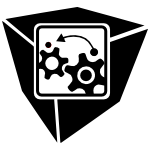 VISSOFT-2014-HomerN
VISSOFT-2014-HomerN- Combining Tiled and Textual Views of Code (MH, JN), pp. 1–10.
 VISSOFT-2014-TartariTHKRFMBLB #visualisation
VISSOFT-2014-TartariTHKRFMBLB #visualisation- Mr. Clean: A Tool for Tracking and Comparing the Lineage of Scientific Visualization Code (GT, LT, EH, KK, IAR, BF, NM, JMB, EL, LAB), pp. 75–78.
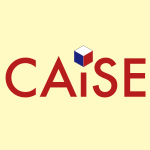 CAiSE-2014-PadilhaPFAGS #detection #effectiveness #empirical #metric #on the #smell
CAiSE-2014-PadilhaPFAGS #detection #effectiveness #empirical #metric #on the #smell- On the Effectiveness of Concern Metrics to Detect Code Smells: An Empirical Study (JP, JAP, EF, JMA, AG, CS), pp. 656–671.
 ICEIS-v2-2014-BelgamoHZRF #abstraction #case study #visualisation
ICEIS-v2-2014-BelgamoHZRF #abstraction #case study #visualisation- Code Inspection Supported by Stepwise Abstraction and Visualization — An Experimental Study (AB, EMH, AZ, RSR, SF), pp. 39–48.
 ICML-c2-2014-0001MS #random
ICML-c2-2014-0001MS #random- Coding for Random Projections (PL, MM, AS), pp. 676–684.
 ICML-c2-2014-Cherian #nearest neighbour #using
ICML-c2-2014-Cherian #nearest neighbour #using- Nearest Neighbors Using Compact Sparse Codes (AC), pp. 1053–1061.
 ICML-c2-2014-MaddisonT #generative #modelling #source code
ICML-c2-2014-MaddisonT #generative #modelling #source code- Structured Generative Models of Natural Source Code (CJM, DT), pp. 649–657.
 ICPR-2014-ChoiCKD #distance #towards
ICPR-2014-ChoiCKD #distance #towards- Toward Sparse Coding on Cosine Distance (JC, HC, JK, LSD), pp. 4423–4428.
 ICPR-2014-DuZCW #flexibility #learning #linear #random
ICPR-2014-DuZCW #flexibility #learning #linear #random- Learning Flexible Binary Code for Linear Projection Based Hashing with Random Forest (SD, WZ, SC, YW), pp. 2685–2690.
 ICPR-2014-FuKGYZ #ranking
ICPR-2014-FuKGYZ #ranking- Binary Code Reranking Method Based on Bit Importance (HF, XK, YG, XY, LZ), pp. 2679–2684.
 ICPR-2014-HouHW #modelling #synthesis #video
ICPR-2014-HouHW #modelling #synthesis #video- Cloud Model-Based Dynamic Texture Synthesis for Video Coding (ZH, RH, ZW), pp. 838–842.
 ICPR-2014-KhanWBF #recognition
ICPR-2014-KhanWBF #recognition- Scale Coding Bag-of-Words for Action Recognition (FSK, JvdW, ADB, MF), pp. 1514–1519.
 ICPR-2014-KimP #recognition
ICPR-2014-KimP #recognition- Ancient Coin Recognition Based on Spatial Coding (JK, VP), pp. 321–326.
 ICPR-2014-KusumotoHC #hybrid #recognition
ICPR-2014-KusumotoHC #hybrid #recognition- Hybrid Aggregation of Sparse Coded Descriptors for Food Recognition (RK, XHH, YWC), pp. 1490–1495.
 ICPR-2014-LiWQ #visual notation
ICPR-2014-LiWQ #visual notation- Visual Tracking via Saliency Weighted Sparse Coding Appearance Model (WL, PW, HQ), pp. 4092–4097.
 ICPR-2014-LuoJ #encoding #image #learning #retrieval #semantics
ICPR-2014-LuoJ #encoding #image #learning #retrieval #semantics- Learning Semantic Binary Codes by Encoding Attributes for Image Retrieval (JL, ZJ), pp. 279–284.
 ICPR-2014-LuoYQY
ICPR-2014-LuoYQY- Nuclear Norm Regularized Sparse Coding (LL, JY, JQ, JY), pp. 1834–1839.
 ICPR-2014-MarroccoT #fault
ICPR-2014-MarroccoT #fault- Bit Error Recovery in ECOC Systems through LDPC Codes (CM, FT), pp. 1454–1459.
 ICPR-2014-RahmaniMHM #classification #linear
ICPR-2014-RahmaniMHM #classification #linear- Action Classification with Locality-Constrained Linear Coding (HR, AM, DQH, ASM), pp. 3511–3516.
 ICPR-2014-Shirakawa #multi #performance #similarity #using
ICPR-2014-Shirakawa #multi #performance #similarity #using- Fast Similarity Search Using Multiple Binary Codes (SS), pp. 3714–3719.
 ICPR-2014-WalhaDLGA #approach #image #learning #taxonomy
ICPR-2014-WalhaDLGA #approach #image #learning #taxonomy- Sparse Coding with a Coupled Dictionary Learning Approach for Textual Image Super-resolution (RW, FD, FL, CG, AMA), pp. 4459–4464.
 ICPR-2014-WangJ
ICPR-2014-WangJ- Attribute Augmentation with Sparse Coding (XW, QJ), pp. 4352–4357.
 ICPR-2014-WangWCY #geometry
ICPR-2014-WangWCY #geometry- Fingerprint Geometric Hashing Based on Binary Minutiae Cylinder Codes (YW, LW, YmC, PCY), pp. 690–695.
 ICPR-2014-Xiang0L #classification #hybrid #image
ICPR-2014-Xiang0L #classification #hybrid #image- Local Hybrid Coding for Image Classification (WX, JW, ML), pp. 3744–3749.
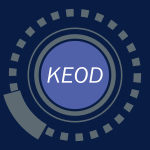 KEOD-2014-TakahashiTTL #automation #industrial #standard #web
KEOD-2014-TakahashiTTL #automation #industrial #standard #web- An Automatic Coding System with a Three-Grade Confidence Level Corresponding to the National/International Occupation and Industry Standard — Open to the Public on the Web (KT, HT, ST, WL), pp. 369–375.
 MLDM-2014-KhasnabishSDS #detection #learning #programming language #source code #using
MLDM-2014-KhasnabishSDS #detection #learning #programming language #source code #using- Detecting Programming Language from Source Code Using Bayesian Learning Techniques (JNK, MS, JD, GS), pp. 513–522.
 SEKE-2014-Al-MsiedeenSHUV #implementation #object-oriented #source code
SEKE-2014-Al-MsiedeenSHUV #implementation #object-oriented #source code- Documenting the Mined Feature Implementations from the Object-oriented Source Code of a Collection of Software Product Variants (RAM, AS, MH, CU, SV), pp. 138–143.
 SEKE-2014-ParkHL #power management #refactoring
SEKE-2014-ParkHL #power management #refactoring- Investigation for Software Power Consumption of Code Refactoring Techniques (JJP, JEH, SHL), pp. 717–722.
 SEKE-2014-SantosBSC #game studies #learning #programming #semantics #source code
SEKE-2014-SantosBSC #game studies #learning #programming #semantics #source code- A Semantic Analyzer for Simple Games Source Codes to Programming Learning (ECOdS, GBB, VHVdS, EC), pp. 522–527.
 SEKE-2014-ZhuangZL #fine-grained #framework #layout #reuse #runtime
SEKE-2014-ZhuangZL #fine-grained #framework #layout #reuse #runtime- Runtime Code Reuse Attacks: A Dynamic Framework Bypassing Fine-Grained Address Space Layout Randomization (YZ, TZ, ZL), pp. 609–614.
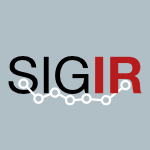 SIGIR-2014-LengCL #image #learning #random #retrieval #scalability
SIGIR-2014-LengCL #image #learning #random #retrieval #scalability- Random subspace for binary codes learning in large scale image retrieval (CL, JC, HL), pp. 1031–1034.
 SKY-2014-OsetinskyY #abstraction #case study #effectiveness #legacy #using
SKY-2014-OsetinskyY #abstraction #case study #effectiveness #legacy #using- Working More Effectively with Legacy Code Using Domain Knowledge and Abstractions: A Case Study (IO, RY), pp. 63–70.
 AMT-2014-ZhangBBEHKW #code generation #concurrent #java #state machine #towards
AMT-2014-ZhangBBEHKW #code generation #concurrent #java #state machine #towards- Towards Verified Java Code Generation from Concurrent State Machines (DZ, DB, MvdB, LE, CH, RK, AW), pp. 64–69.
 ICMT-2014-GuanaS #analysis
ICMT-2014-GuanaS #analysis- ChainTracker, a Model-Transformation Trace Analysis Tool for Code-Generation Environments (VG, ES), pp. 146–153.
 SPLC-2014-AngererPLGG #dependence #graph #identification #product line
SPLC-2014-AngererPLGG #dependence #graph #identification #product line- Identifying inactive code in product lines with configuration-aware system dependence graphs (FA, HP, DL, AG, PG), pp. 52–61.
 SPLC-2014-HellebrandS0ZSS #case study #industrial #modelling #variability
SPLC-2014-HellebrandS0ZSS #case study #industrial #modelling #variability- Coevolution of variability models and code: an industrial case study (RH, AS, MB, BZ, KS, JS), pp. 274–283.
 ECOOP-2014-NittaKT #framework #identification
ECOOP-2014-NittaKT #framework #identification- Identifying Mandatory Code for Framework Use via a Single Application Trace (NN, IK, YT), pp. 593–617.
 ECOOP-2014-OkurED #abstraction #low level #parallel
ECOOP-2014-OkurED #abstraction #low level #parallel- Converting Parallel Code from Low-Level Abstractions to Higher-Level Abstractions (SO, CE, DD), pp. 515–540.
 OOPSLA-2014-RadoiFRS #imperative #pipes and filters
OOPSLA-2014-RadoiFRS #imperative #pipes and filters- Translating imperative code to MapReduce (CR, SJF, RMR, MS), pp. 909–927.
 PLATEAU-2014-DornerFM #named
PLATEAU-2014-DornerFM #named- EUKLAS: Supporting Copy-and-Paste Strategies for Integrating Example Code (CD, AF, BAM), pp. 13–20.
 PPDP-J-2012-Emden14 #matrix
PPDP-J-2012-Emden14 #matrix- Matrix Code (MHvE), pp. 3–21.
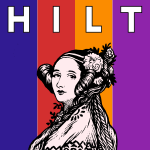 HILT-2014-HuguesG #ada #modelling
HILT-2014-HuguesG #ada #modelling- Leveraging Ada 2012 and SPARK 2014 for assessing generated code from AADL models (JH, CG), pp. 39–46.
 PADL-2014-Clifton-EverestMCK
PADL-2014-Clifton-EverestMCK- Embedding Foreign Code (RCE, TLM, MMTC, GK), pp. 136–151.
 PEPM-2014-KameyamaKS #code generation #combinator
PEPM-2014-KameyamaKS #code generation #combinator- Combinators for impure yet hygienic code generation (YK, OK, CcS), pp. 3–14.
 PLDI-2014-DavidY #bytecode #code search
PLDI-2014-DavidY #bytecode #code search- Tracelet-based code search in executables (YD, EY), p. 37.
 PLDI-2014-GreenawayLAK #c #verification
PLDI-2014-GreenawayLAK #c #verification- Don’t sweat the small stuff: formal verification of C code without the pain (DG, JL, JA, GK), p. 45.
 PLDI-2014-RaychevVY #code completion #modelling #statistics
PLDI-2014-RaychevVY #code completion #modelling #statistics- Code completion with statistical language models (VR, MTV, EY), p. 44.
 ASE-2014-BajajPM #code completion #javascript #named
ASE-2014-BajajPM #code completion #javascript #named- Dompletion: DOM-aware JavaScript code completion (KB, KP, AM), pp. 43–54.
 ASE-2014-FalleriMBMM #difference #fine-grained #source code
ASE-2014-FalleriMBMM #difference #fine-grained #source code- Fine-grained and accurate source code differencing (JRF, FM, XB, MM, MM), pp. 313–324.
 ASE-2014-HigoK #consistency #named #nondeterminism #source code
ASE-2014-HigoK #consistency #named #nondeterminism #source code- MPAnalyzer: a tool for finding unintended inconsistencies in program source code (YH, SK), pp. 843–846.
 ASE-2014-NguyenNNN #api #approach #learning #migration #mining #statistics
ASE-2014-NguyenNNN #api #approach #learning #migration #mining #statistics- Statistical learning approach for mining API usage mappings for code migration (ATN, HAN, TTN, TNN), pp. 457–468.
 ASE-2014-PadhyeMS #modelling #named
ASE-2014-PadhyeMS #modelling #named- NeedFeed: taming change notifications by modeling code relevance (RP, SM, VSS), pp. 665–676.
 ASE-2014-RamaK #dynamic analysis #refactoring
ASE-2014-RamaK #dynamic analysis #refactoring- A dynamic analysis to support object-sharing code refactorings (GMR, RK), pp. 713–724.
 ASE-2014-TillmannHX #automation #generative #testing
ASE-2014-TillmannHX #automation #generative #testing- Transferring an automated test generation tool to practice: from pex to fakes and code digger (NT, JdH, TX), pp. 385–396.
 ASE-2014-WangLJ #code search #feedback
ASE-2014-WangLJ #code search #feedback- Active code search: incorporating user feedback to improve code search relevance (SW, DL, LJ), pp. 677–682.
 FSE-2014-AllamanisBBS #learning
FSE-2014-AllamanisBBS #learning- Learning natural coding conventions (MA, ETB, CB, CAS), pp. 281–293.
 FSE-2014-AllamanisS #mining #source code
FSE-2014-AllamanisS #mining #source code- Mining idioms from source code (MA, CAS), pp. 472–483.
 FSE-2014-AlvesSK #code review #named #overview #refactoring
FSE-2014-AlvesSK #code review #named #overview #refactoring- RefDistiller: a refactoring aware code review tool for inspecting manual refactoring edits (ELGA, MS, MK), pp. 751–754.
 FSE-2014-BaltesSD #diagrams #sketching #source code
FSE-2014-BaltesSD #diagrams #sketching #source code- Linking sketches and diagrams to source code artifacts (SB, PS, SD), pp. 743–746.
 FSE-2014-BosuCHHJ #empirical #identification
FSE-2014-BosuCHHJ #empirical #identification- Identifying the characteristics of vulnerable code changes: an empirical study (AB, JCC, MH, PH, DJ), pp. 257–268.
 FSE-2014-FritzSKSB #developer #modelling
FSE-2014-FritzSKSB #developer #modelling- Developers’ code context models for change tasks (TF, DCS, KK, WS, CB), pp. 7–18.
 FSE-2014-HigoK #case study #functional #how #java #source code
FSE-2014-HigoK #case study #functional #how #java #source code- How should we measure functional sameness from program source code? an exploratory study on Java methods (YH, SK), pp. 294–305.
 FSE-2014-LuoMW0Z #comparison #detection #obfuscation #semantics #similarity
FSE-2014-LuoMW0Z #comparison #detection #obfuscation #semantics #similarity- Semantics-based obfuscation-resilient binary code similarity comparison with applications to software plagiarism detection (LL, JM, DW, PL, SZ), pp. 389–400.
 FSE-2014-MirakhorliFGWC #architecture #detection #monitoring #named
FSE-2014-MirakhorliFGWC #architecture #detection #monitoring #named- Archie: a tool for detecting, monitoring, and preserving architecturally significant code (MM, AF, AG, MW, JCH), pp. 739–742.
 FSE-2014-Nguyen0NR #api #corpus #mining #scalability
FSE-2014-Nguyen0NR #api #corpus #mining #scalability- Mining preconditions of APIs in large-scale code corpus (HAN, RD, TNN, HR), pp. 166–177.
 FSE-2014-NguyenKN #embedded #graph #web
FSE-2014-NguyenKN #embedded #graph #web- Building call graphs for embedded client-side code in dynamic web applications (HVN, CK, TNN), pp. 518–529.
 FSE-2014-RayPFD #case study #git #programming language #quality #scalability
FSE-2014-RayPFD #case study #git #programming language #quality #scalability- A large scale study of programming languages and code quality in github (BR, DP, VF, PTD), pp. 155–165.
 FSE-2014-YingR #summary
FSE-2014-YingR #summary- Selection and presentation practices for code example summarization (ATTY, MPR), pp. 460–471.
 FSE-2014-ZhangSK #code review #interactive #named #overview
FSE-2014-ZhangSK #code review #interactive #named #overview- Critics: an interactive code review tool for searching and inspecting systematic changes (TZ, MS, MK), pp. 755–758.
 ICSE-2014-GalensonRBHS #interactive #named #synthesis
ICSE-2014-GalensonRBHS #interactive #named #synthesis- CodeHint: dynamic and interactive synthesis of code snippets (JG, PR, RB, BH, KS), pp. 653–663.
 ICSE-2014-GopinathJG #developer #evaluation #test coverage
ICSE-2014-GopinathJG #developer #evaluation #test coverage- Code coverage for suite evaluation by developers (RG, CJ, AG), pp. 72–82.
 ICSE-2014-KeivanlooRZ
ICSE-2014-KeivanlooRZ- Spotting working code examples (IK, JR, YZ), pp. 664–675.
 ICSE-2014-LinXXLPSZ #detection #difference #multi
ICSE-2014-LinXXLPSZ #detection #difference #multi- Detecting differences across multiple instances of code clones (YL, ZX, YX, YL, XP, JS, WZ), pp. 164–174.
 ICSE-2014-NegaraCDJ #detection #fine-grained #mining
ICSE-2014-NegaraCDJ #detection #fine-grained #mining- Mining fine-grained code changes to detect unknown change patterns (SN, MC, DD, REJ), pp. 803–813.
 ICSE-2014-RodegheroMMBD #automation #source code #summary
ICSE-2014-RodegheroMMBD #automation #source code #summary- Improving automated source code summarization via an eye-tracking study of programmers (PR, CM, PWM, NB, SKD), pp. 390–401.
 ICSE-2014-SiegmundKAPBLSB #comprehension #functional #source code
ICSE-2014-SiegmundKAPBLSB #comprehension #functional #source code- Understanding understanding source code with functional magnetic resonance imaging (JS, CK, SA, CP, AB, TL, GS, AB), pp. 378–389.
 SAC-2014-Al-RefaiCF #modelling #runtime #using
SAC-2014-Al-RefaiCF #modelling #runtime #using- Using models to dynamically refactor runtime code (MAR, WC, RBF), pp. 1108–1113.
 SAC-2014-CaniGSST #automation #code generation #integration #towards
SAC-2014-CaniGSST #automation #code generation #integration #towards- Towards automated malware creation: code generation and code integration (AC, MG, ES, GS, APT), pp. 157–160.
 SAC-2014-CostaKAC #case study #commit #developer
SAC-2014-CostaKAC #case study #commit #developer- Unveiling developers contributions behind code commits: an exploratory study (DAdC, UK, EA, RC), pp. 1152–1157.
 SAC-2014-FerreiraBBAG #architecture #case study #detection #effectiveness
SAC-2014-FerreiraBBAG #architecture #case study #detection #effectiveness- Detecting architecturally-relevant code anomalies: a case study of effectiveness and effort (MF, EAB, IMB, RA, AG), pp. 1158–1163.
 SAC-2014-HusemannR #multi #predict #scalability #video
SAC-2014-HusemannR #multi #predict #scalability #video- Introduction of a multi-layer predictive search strategy for scalable video coding (RH, VR), pp. 985–986.
 SAC-2014-KangI #dynamic analysis
SAC-2014-KangI #dynamic analysis- Analysis of binary code topology for dynamic analysis (BK, EGI), pp. 1731–1732.
 SAC-2014-ParkPJ #artificial reality #education #online
SAC-2014-ParkPJ #artificial reality #education #online- QR-code based online robot augmented reality system for education (JPP, MWP, SKJ), pp. 180–185.
 SAC-2014-PotocnikCS #debugging #named #problem #scala
SAC-2014-PotocnikCS #debugging #named #problem #scala- Linter: a tool for finding bugs and potential problems in scala code (MP, UC, BS), pp. 1615–1616.
 SAC-2014-ShahriarH #assessment #fuzzy #injection #risk management #using
SAC-2014-ShahriarH #assessment #fuzzy #injection #risk management #using- Risk assessment of code injection vulnerabilities using fuzzy logic-based system (HS, HH), pp. 1164–1170.
 SAC-2014-WijenayakeP #estimation #using #visual notation
SAC-2014-WijenayakeP #estimation #using #visual notation- Respiratory motion estimation using visual coded markers for radiotherapy (UW, SYP), pp. 1751–1752.
 GPCE-2014-SteindorferV #memory management #performance
GPCE-2014-SteindorferV #memory management #performance- Code specialization for memory efficient hash tries (MJS, JJV), pp. 11–14.
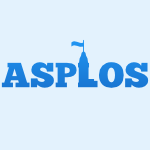 ASPLOS-2014-RuanVLS #case study #experience #legacy #transaction #using
ASPLOS-2014-RuanVLS #case study #experience #legacy #transaction #using- Transactionalizing legacy code: an experience report using GCC and Memcached (WR, TV, YL, MFS), pp. 399–412.
 CC-2014-CharlesCLEG #code generation
CC-2014-CharlesCLEG #code generation- deGoal a Tool to Embed Dynamic Code Generators into Applications (HPC, DC, VL, FAE, RG), pp. 107–112.
 CC-2014-Dinechin #code generation #using
CC-2014-Dinechin #code generation #using- Using the SSA-Form in a Code Generator (BDdD), pp. 1–17.
 CC-2014-SrinivasanR #composition
CC-2014-SrinivasanR #composition- Recovery of Class Hierarchies and Composition Relationships from Machine Code (VS, TWR), pp. 61–84.
 CC-2014-WangPFO #legacy #parallel
CC-2014-WangPFO #legacy #parallel- Exploitation of GPUs for the Parallelisation of Probably Parallel Legacy Code (ZW, DCP, BF, MFPO), pp. 154–173.
 CGO-2014-JimboreanKSBK #approach #compilation #hardware #scalability
CGO-2014-JimboreanKSBK #approach #compilation #hardware #scalability- Fix the code. Don’t tweak the hardware: A new compiler approach to Voltage-Frequency scaling (AJ, KK, VS, DBS, SK), p. 262.
 CGO-2014-JuegaGTC #adaptation #automation #code generation #parametricity
CGO-2014-JuegaGTC #adaptation #automation #code generation #parametricity- Adaptive Mapping and Parameter Selection Scheme to Improve Automatic Code Generation for GPUs (JCJ, JIG, CT, FC), p. 251.
 CGO-2014-VenkatSHS #code generation
CGO-2014-VenkatSHS #code generation- Non-affine Extensions to Polyhedral Code Generation (AV, MS, MWH, MMS), p. 185.
 DAC-2014-AthavaleMHV #analysis #source code #test coverage #using
DAC-2014-AthavaleMHV #analysis #source code #test coverage #using- Code Coverage of Assertions Using RTL Source Code Analysis (VA, SM, SH, SV), p. 6.
 DAC-2014-EldibWTS #named #source code
DAC-2014-EldibWTS #named #source code- QMS: Evaluating the Side-Channel Resistance of Masked Software from Source Code (HE, CW, MMIT, PS), p. 6.
 DAC-2014-RaoEST #multi #using
DAC-2014-RaoEST #multi #using- Protecting SRAM-based FPGAs Against Multiple Bit Upsets Using Erasure Codes (PMBR, ME, RS, MBT), p. 6.
 DAC-2014-RehmanKSSH #adaptation #code generation #dependence #named #process #reliability
DAC-2014-RehmanKSSH #adaptation #code generation #dependence #named #process #reliability- dTune: Leveraging Reliable Code Generation for Adaptive Dependability Tuning under Process Variation and Aging-Induced Effects (SR, FK, DS, MS, JH), p. 6.
 DATE-2014-BraojosDBAA #approach #hardware #manycore #power management
DATE-2014-BraojosDBAA #approach #hardware #manycore #power management- Hardware/software approach for code synchronization in low-power multi-core sensor nodes (RB, AYD, IB, GA, DA), pp. 1–6.
 DATE-2014-GuoWWH #automation #effectiveness #named #test coverage
DATE-2014-GuoWWH #automation #effectiveness #named #test coverage- EATBit: Effective automated test for binary translation with high code coverage (HG, ZW, CW, RH), pp. 1–6.
 DATE-2014-HillerS #performance
DATE-2014-HillerS #performance- Increasing the efficiency of syndrome coding for PUFs with helper data compression (MH, GS), pp. 1–6.
 DATE-2014-KhanSH #architecture #manycore #performance #power management #video
DATE-2014-KhanSH #architecture #manycore #performance #power management #video- Software architecture of High Efficiency Video Coding for many-core systems with power-efficient workload balancing (MUKK, MS, JH), pp. 1–6.
 DATE-2014-LiM #memory management
DATE-2014-LiM #memory management- Write-once-memory-code phase change memory (JL, KM), pp. 1–6.
 DATE-2014-LiuSXL #injection #programmable #thread
DATE-2014-LiuSXL #injection #programmable #thread- Programmable decoder and shadow threads: Tolerate remote code injection exploits with diversified redundancy (ZL, WS, SX, ZL), pp. 1–6.
 DATE-2014-MaurichG #configuration management #encryption #lightweight
DATE-2014-MaurichG #configuration management #encryption #lightweight- Lightweight code-based cryptography: QC-MDPC McEliece encryption on reconfigurable devices (IvM, TG), pp. 1–6.
 DATE-2014-MembarthRHT #android #architecture #code generation #embedded
DATE-2014-MembarthRHT #android #architecture #code generation #embedded- Code generation for embedded heterogeneous architectures on android (RM, OR, FH, JT), pp. 1–6.
 DATE-2014-PalominoSASH #named #performance #video
DATE-2014-PalominoSASH #named #performance #video- hevcDTM: Application-driven Dynamic Thermal Management for High Efficiency Video Coding (DP, MS, HA, AAS, JH), pp. 1–4.
 DATE-2014-SampaioSZBH #architecture #distributed #energy #memory management #named #performance #video
DATE-2014-SampaioSZBH #architecture #distributed #energy #memory management #named #performance #video- dSVM: Energy-efficient distributed Scratchpad Video Memory Architecture for the next-generation High Efficiency Video Coding (FS, MS, BZ, SB, JH), pp. 1–6.
 HPDC-2014-MuCWZ #network #replication #state machine
HPDC-2014-MuCWZ #network #replication #state machine- When paxos meets erasure code: reduce network and storage cost in state machine replication (SM, KC, YW, WZ), pp. 61–72.
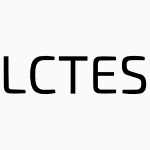 LCTES-2014-KochFBD #reduction #similarity
LCTES-2014-KochFBD #reduction #similarity- Exploiting function similarity for code size reduction (TJKEvK, BF, PB, AD), pp. 85–94.
 LCTES-2014-LozanoCBS #combinator #optimisation
LCTES-2014-LozanoCBS #combinator #optimisation- Combinatorial spill code optimization and ultimate coalescing (RCL, MC, GHB, CS), pp. 23–32.
 LCTES-2014-SpinkWFT #code generation #performance
LCTES-2014-SpinkWFT #code generation #performance- Efficient code generation in a region-based dynamic binary translator (TS, HW, BF, NPT), pp. 3–12.
 OSDI-2014-KuznetsovSPCSS
OSDI-2014-KuznetsovSPCSS- Code-Pointer Integrity (VK, LS, MP, GC, RS, DS), pp. 147–163.
 PDP-2014-DAmbrosioSPRFSIM #modelling #parallel
PDP-2014-DAmbrosioSPRFSIM #modelling #parallel- Lava Flow Modeling by the Sciara-Fv3 Parallel Numerical Code (DD, WS, RP, RR, GF, DS, GI, DM), pp. 330–338.
 PDP-2014-ShalabyRGFK #communication #network
PDP-2014-ShalabyRGFK #communication #network- Hierarchical Network Coding for Collective Communication on HPC Interconnects (AS, MESR, VG, IF, MK), pp. 98–102.
 PPoPP-2014-AgustonBH #parallel
PPoPP-2014-AgustonBH #parallel- Parallelization hints via code skeletonization (CA, YBA, GH), pp. 373–374.
 STOC-2014-AggarwalDL #combinator
STOC-2014-AggarwalDL #combinator- Non-malleable codes from additive combinatorics (DA, YD, SL), pp. 774–783.
 STOC-2014-BravyiH
STOC-2014-BravyiH- Homological product codes (SB, MBH), pp. 273–282.
 STOC-2014-BunUV #approximate #difference #privacy
STOC-2014-BunUV #approximate #difference #privacy- Fingerprinting codes and the price of approximate differential privacy (MB, JU, SPV), pp. 1–10.
 STOC-2014-GhaffariHS #adaptation #fault #interactive
STOC-2014-GhaffariHS #adaptation #fault #interactive- Optimal error rates for interactive coding I: adaptivity and other settings (MG, BH, MS), pp. 794–803.
 STOC-2014-GuruswamiHHSV
STOC-2014-GuruswamiHHSV- Super-polylogarithmic hypergraph coloring hardness via low-degree long codes (VG, PH, JH, SS, GV), pp. 614–623.
 STOC-2014-RudraW
STOC-2014-RudraW- Every list-decodable code for high noise has abundant near-optimal rate puncturings (AR, MW), pp. 764–773.
 CAV-2014-FilliatreGP
CAV-2014-FilliatreGP- The Spirit of Ghost Code (JCF, LG, AP), pp. 1–16.
 ICST-2014-MiicBT #analysis #automation #multi #platform #test coverage #testing
ICST-2014-MiicBT #analysis #automation #multi #platform #test coverage #testing- Automated Multi-platform Testing and Code Coverage Analysis of the CP2K Application (MM, IB, MT), pp. 95–98.
 ICST-2014-PotetMPD #approach #control flow #evaluation #injection #named #robust
ICST-2014-PotetMPD #approach #control flow #evaluation #injection #named #robust- Lazart: A Symbolic Approach for Evaluation the Robustness of Secured Codes against Control Flow Injections (MLP, LM, MP, LD), pp. 213–222.
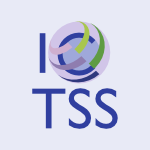 ICTSS-2014-El-FakihSY #assessment #automaton #on the #test coverage #testing
ICTSS-2014-El-FakihSY #assessment #automaton #on the #test coverage #testing- On Code Coverage of Extended FSM Based Test Suites: An Initial Assessment (KEF, TS, NY), pp. 198–204.
 ISSTA-2014-BaudryAM #program transformation #source code
ISSTA-2014-BaudryAM #program transformation #source code- Tailored source code transformations to synthesize computationally diverse program variants (BB, SA, MM), pp. 149–159.
 ISSTA-2014-MarinescuHC #analysis #evolution #framework #named
ISSTA-2014-MarinescuHC #analysis #evolution #framework #named- Covrig: a framework for the analysis of code, test, and coverage evolution in real software (PDM, PH, CC), pp. 93–104.
 ISSTA-2014-TillmannHXB
ISSTA-2014-TillmannHXB- Constructing coding duels in Pex4Fun and code hunt (NT, JdH, TX, JB), pp. 445–448.
 ISSTA-2014-TrippFP #analysis #hybrid #javascript #partial evaluation #security #web
ISSTA-2014-TrippFP #analysis #hybrid #javascript #partial evaluation #security #web- Hybrid security analysis of web JavaScript code via dynamic partial evaluation (OT, PF, MP), pp. 49–59.
 VMCAI-2014-Romano #float #integer #testing
VMCAI-2014-Romano #float #integer #testing- Practical Floating-Point Tests with Integer Code (AR), pp. 337–356.
 CBSE-2013-GortonLLED #case study #component #experience #platform #using
CBSE-2013-GortonLLED #case study #component #experience #platform #using- Build less code deliver more science: an experience report on composing scientific environments using component-based and commodity software platforms (IG, YL, CL, TE, KKvD), pp. 159–168.
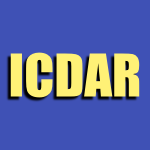 ICDAR-2013-KumarBTMNJ #documentation #image
ICDAR-2013-KumarBTMNJ #documentation #image- Sparse Document Image Coding for Restoration (VK, AB, GHT, AM, AMN, CVJ), pp. 713–717.
 ICDAR-2013-ShekharJ #documentation #retrieval #word
ICDAR-2013-ShekharJ #documentation #retrieval #word- Document Specific Sparse Coding for Word Retrieval (RS, CVJ), pp. 643–647.
 ICDAR-2013-WalhaDLGA #clustering #image #multi
ICDAR-2013-WalhaDLGA #clustering #image #multi- Multiple Learned Dictionaries Based Clustered Sparse Coding for the Super-Resolution of Single Text Image (RW, FD, FL, CG, AMA), pp. 484–488.
 VLDB-2013-SathiamoorthyAPDVCB #big data #novel
VLDB-2013-SathiamoorthyAPDVCB #big data #novel- XORing Elephants: Novel Erasure Codes for Big Data (MS, MA, DSP, AGD, RV, SC, DB), pp. 325–336.
 CSEET-2013-FritzBD
CSEET-2013-FritzBD- Explorable Code Slides (MF, BB, SD), pp. 199–208.
 ITiCSE-2013-EsperFG #named #programming
ITiCSE-2013-EsperFG #named #programming- CodeSpells: embodying the metaphor of wizardry for programming (SE, SRF, WGG), pp. 249–254.
 ITiCSE-2013-Kumar #case study #problem
ITiCSE-2013-Kumar #case study #problem- A study of the influence of code-tracing problems on code-writing skills (ANK), pp. 183–188.
 ITiCSE-2013-Law #interactive #using
ITiCSE-2013-Law #interactive #using- Interactive lectures using quick response codes (RL), p. 317.
 ITiCSE-2013-ScottG #learning #programming #question
ITiCSE-2013-ScottG #learning #programming #question- Implicit theories of programming aptitude as a barrier to learning to code: are they distinct from intelligence? (MJS, GG), p. 347.
 ITiCSE-2013-VihavainenVLP #learning #student #using
ITiCSE-2013-VihavainenVLP #learning #student #using- Scaffolding students’ learning using test my code (AV, TV, ML, MP), pp. 117–122.
 SIGITE-2013-HeinonenHLV #agile #learning #re-engineering #using
SIGITE-2013-HeinonenHLV #agile #learning #re-engineering #using- Learning agile software engineering practices using coding dojo (KH, KH, ML, AV), pp. 97–102.
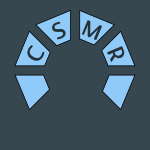 CSMR-2013-AnicheOG #case study #industrial #open source #quality #testing #what
CSMR-2013-AnicheOG #case study #industrial #open source #quality #testing #what- What Do the Asserts in a Unit Test Tell Us about Code Quality? A Study on Open Source and Industrial Projects (MFA, GAO, MAG), pp. 111–120.
 CSMR-2013-AsgharMSS #metric #requirements #traceability #using
CSMR-2013-AsgharMSS #metric #requirements #traceability #using- Maintainability-Based Requirements Prioritization by Using Artifacts Traceability and Code Metrics (MWA, AM, AS, GS), pp. 417–420.
 CSMR-2013-BertranGCS #architecture #detection
CSMR-2013-BertranGCS #architecture #detection- Enhancing the Detection of Code Anomalies with Architecture-Sensitive Strategies (IMB, AG, CC, AvS), pp. 177–186.
 CSMR-2013-KazatoHKOOMHS #feature model #identification #incremental #source code
CSMR-2013-KazatoHKOOMHS #feature model #identification #incremental #source code- Incremental Feature Location and Identification in Source Code (HK, SH, TK, TO, SO, SM, TH, MS), pp. 371–374.
 CSMR-2013-MazzeoTBS #source code
CSMR-2013-MazzeoTBS #source code- Linking E-Mails and Source Code with LASCO (LM, AT, RB, GS), pp. 421–424.
 CSMR-2013-Molitorisz #process #refactoring #source code
CSMR-2013-Molitorisz #process #refactoring #source code- Pattern-Based Refactoring Process of Sequential Source Code (KM), pp. 357–360.
 CSMR-2013-OuniKS #refactoring #search-based #using
CSMR-2013-OuniKS #refactoring #search-based #using- Search-Based Refactoring Using Recorded Code Changes (AO, MK, HAS), pp. 221–230.
 CSMR-2013-Pichler #documentation #experience #fortran #industrial #source code
CSMR-2013-Pichler #documentation #experience #fortran #industrial #source code- Extraction of Documentation from Fortran 90 Source Code: An Industrial Experience (JP), pp. 399–402.
 CSMR-2013-ScannielloGT #comprehension #diagrams #sequence chart #source code
CSMR-2013-ScannielloGT #comprehension #diagrams #sequence chart #source code- An Early Investigation on the Contribution of Class and Sequence Diagrams in Source Code Comprehension (GS, CG, GT), pp. 367–370.
 CSMR-2013-ThungBLJ #git #network #social
CSMR-2013-ThungBLJ #git #network #social- Network Structure of Social Coding in GitHub (FT, TFB, DL, LJ), pp. 323–326.
 CSMR-2013-TothNFS #source code #using #version control
CSMR-2013-TothNFS #source code #using #version control- Using Version Control History to Follow the Changes of Source Code Elements (ZT, GN, RF, IS), pp. 319–322.
 ICPC-2013-BeckMDR #comprehension #performance #visual notation
ICPC-2013-BeckMDR #comprehension #performance #visual notation- In situ understanding of performance bottlenecks through visually augmented code (FB, OM, SD, GDR), pp. 63–72.
 ICPC-2013-BernhartG #code review #comprehension #on the #source code
ICPC-2013-BernhartG #code review #comprehension #on the #source code- On the understanding of programs with continuous code reviews (MB, TG), pp. 192–198.
 ICPC-2013-DiazBMOTL #traceability #using
ICPC-2013-DiazBMOTL #traceability #using- Using code ownership to improve IR-based Traceability Link Recovery (DD, GB, AM, RO, ST, ADL), pp. 123–132.
 ICPC-2013-EddyRKC #replication #source code #summary
ICPC-2013-EddyRKC #replication #source code #summary- Evaluating source code summarization techniques: Replication and expansion (BPE, JAR, NAK, JCC), pp. 13–22.
 ICPC-2013-MurakamiHHIK #analysis #clone detection #detection #lightweight #source code
ICPC-2013-MurakamiHHIK #analysis #clone detection #detection #lightweight #source code- Gapped code clone detection with lightweight source code analysis (HM, KH, YH, HI, SK), pp. 93–102.
 ICPC-2013-SteidlHJ #analysis #quality #source code
ICPC-2013-SteidlHJ #analysis #quality #source code- Quality analysis of source code comments (DS, BH, EJ), pp. 83–92.
 ICSM-2013-AlhindawiDCM #feature model #source code
ICSM-2013-AlhindawiDCM #feature model #source code- Improving Feature Location by Enhancing Source Code with Stereotypes (NA, ND, MLC, JIM), pp. 300–309.
 ICSM-2013-AsaduzzamanRSP #approach #hybrid #independence #named #source code
ICSM-2013-AsaduzzamanRSP #approach #hybrid #independence #named #source code- LHDiff: A Language-Independent Hybrid Approach for Tracking Source Code Lines (MA, CKR, KAS, MDP), pp. 230–239.
 ICSM-2013-AsaduzzamanRSP13a #maintenance #named #process #source code
ICSM-2013-AsaduzzamanRSP13a #maintenance #named #process #source code- LHDiff: Tracking Source Code Lines to Support Software Maintenance Activities (MA, CKR, KAS, MDP), pp. 484–487.
 ICSM-2013-Beck #analysis #multi
ICSM-2013-Beck #analysis #multi- Analysis of Multi-dimensional Code Couplings (FB), pp. 560–565.
 ICSM-2013-CollardDM #analysis #framework #named #semiparsing #source code #tool support
ICSM-2013-CollardDM #analysis #framework #named #semiparsing #source code #tool support- srcML: An Infrastructure for the Exploration, Analysis, and Manipulation of Source Code: A Tool Demonstration (MLC, MJD, JIM), pp. 516–519.
 ICSM-2013-FontanaFMWM #empirical #quality #smell
ICSM-2013-FontanaFMWM #empirical #quality #smell- Investigating the Impact of Code Smells on System’s Quality: An Empirical Study on Systems of Different Application Domains (FAF, VF, AM, BW, PM), pp. 260–269.
 ICSM-2013-FontanaZMM #approach #detection #machine learning #smell #towards
ICSM-2013-FontanaZMM #approach #detection #machine learning #smell #towards- Code Smell Detection: Towards a Machine Learning-Based Approach (FAF, MZ, AM, MM), pp. 396–399.
 ICSM-2013-Harder #developer #evolution #how #multi
ICSM-2013-Harder #developer #evolution #how #multi- How Multiple Developers Affect the Evolution of Code Clones (JH), pp. 30–39.
 ICSM-2013-Hegedus #maintenance
ICSM-2013-Hegedus #maintenance- Revealing the Effect of Coding Practices on Software Maintainability (PH), pp. 578–581.
 ICSM-2013-LiguCCY #identification #smell
ICSM-2013-LiguCCY #identification #smell- Identification of Refused Bequest Code Smells (EL, AC, TC, NY), pp. 392–395.
 ICSM-2013-MartinezDM #abstract syntax tree #analysis #automation
ICSM-2013-MartinezDM #abstract syntax tree #analysis #automation- Automatically Extracting Instances of Code Change Patterns with AST Analysis (MM, LD, MM), pp. 388–391.
 ICSM-2013-MorenoBHM #debugging #on the #source code
ICSM-2013-MorenoBHM #debugging #on the #source code- On the Relationship between the Vocabulary of Bug Reports and Source Code (LM, WB, SH, AM), pp. 452–455.
 ICSM-2013-Roldan-VegaMHF #code search #named #query #refinement
ICSM-2013-Roldan-VegaMHF #code search #named #query #refinement- CONQUER: A Tool for NL-Based Query Refinement and Contextualizing Code Search Results (MRV, GM, EH, JAF), pp. 512–515.
 ICSM-2013-ScannielloR #fault #identifier #source code
ICSM-2013-ScannielloR #fault #identifier #source code- Dealing with Faults in Source Code: Abbreviated vs. Full-Word Identifier Names (GS, MR), pp. 190–199.
 ICSM-2013-VenkataramaniABM #analysis #repository #scalability #semantics
ICSM-2013-VenkataramaniABM #analysis #repository #scalability #semantics- Latent Co-development Analysis Based Semantic Search for Large Code Repositories (RV, AMA, VDB, BM), pp. 372–375.
 ICSM-2013-Yamashita #case study #comparative #how #maintenance #smell
ICSM-2013-Yamashita #case study #comparative #how #maintenance #smell- How Good Are Code Smells for Evaluating Software Maintainability? Results from a Comparative Case Study (AY), pp. 566–571.
 ICSM-2013-YukselS #analysis #automation #case study #classification
ICSM-2013-YukselS #analysis #automation #case study #classification- Automated Classification of Static Code Analysis Alerts: A Case Study (UY, HS), pp. 532–535.
 MSR-2013-AllamanisS #stack overflow #topic #what #why
MSR-2013-AllamanisS #stack overflow #topic #what #why- Why, when, and what: analyzing stack overflow questions by topic, type, and code (MA, CAS), pp. 53–56.
 MSR-2013-AllamanisS13a #mining #modelling #repository #source code #using
MSR-2013-AllamanisS13a #mining #modelling #repository #source code #using- Mining source code repositories at massive scale using language modeling (MA, CAS), pp. 207–216.
 MSR-2013-HamasakiKYCFI #code review #dataset #overview #repository #what
MSR-2013-HamasakiKYCFI #code review #dataset #overview #repository #what- Who does what during a code review? datasets of OSS peer review repositories (KH, RGK, NY, AECC, KF, HI), pp. 49–52.
 MSR-2013-HerzigZ #co-evolution
MSR-2013-HerzigZ #co-evolution- The impact of tangled code changes (KH, AZ), pp. 121–130.
 MSR-2013-HowardGPV #automation #mining #semantics #word
MSR-2013-HowardGPV #automation #mining #semantics #word- Automatically mining software-based, semantically-similar words from comment-code mappings (MJH, SG, LLP, KVS), pp. 377–386.
 MSR-2013-JanjicHSA #dataset #research #reuse #source code
MSR-2013-JanjicHSA #dataset #research #reuse #source code- An unabridged source code dataset for research in software reuse (WJ, OH, MS, CA), pp. 339–342.
 MSR-2013-KhooMA #named
MSR-2013-KhooMA #named- Rendezvous: a search engine for binary code (WMK, AM, RJA), pp. 329–338.
 MSR-2013-MukadamBR #android #code review #overview
MSR-2013-MukadamBR #android #code review #overview- Gerrit software code review data from Android (MM, CB, PCR), pp. 45–48.
 MSR-2013-SismanK #automation #code search #debugging #locality #query
MSR-2013-SismanK #automation #code search #debugging #locality #query- Assisting code search with automatic query reformulation for bug localization (BS, ACK), pp. 309–318.
 MSR-2013-SubramanianH #online
MSR-2013-SubramanianH #online- Making sense of online code snippets (SS, RH), pp. 85–88.
 MSR-2013-WangDZCXZ #api #mining #source code
MSR-2013-WangDZCXZ #api #mining #source code- Mining succinct and high-coverage API usage patterns from source code (JW, YD, HZ, KC, TX, DZ), pp. 319–328.
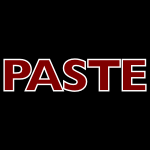 PASTE-2013-YasugiMU #evaluation #performance
PASTE-2013-YasugiMU #evaluation #performance- A proper performance evaluation system that summarizes code placement effects (MY, YM, TU), pp. 41–48.
 SCAM-2013-AnnervazKMSTM #clustering
SCAM-2013-AnnervazKMSTM #clustering- Code clustering workbench (KMA, VSK, JM, SS, GT, AM), pp. 31–36.
 SCAM-2013-Balachandran #component #named #overview
SCAM-2013-Balachandran #component #named #overview- Fix-it: An extensible code auto-fix component in Review Bot (VB), pp. 167–172.
 SCAM-2013-BaloghB #named #visualisation
SCAM-2013-BaloghB #named #visualisation- CodeMetropolis — code visualisation in MineCraft (GB, ÁB), pp. 136–141.
 SCAM-2013-CeruloCPC #detection #markov
SCAM-2013-CeruloCPC #detection #markov- A Hidden Markov Model to detect coded information islands in free text (LC, MC, MDP, GC), pp. 157–166.
 SCAM-2013-FabryRJ #analysis #source code
SCAM-2013-FabryRJ #analysis #source code- Aspectual source code analysis with GASR (JF, CDR, VJ), pp. 53–62.
 SCAM-2013-FardM #detection #javascript #named #smell
SCAM-2013-FardM #detection #javascript #named #smell- JSNOSE: Detecting JavaScript Code Smells (AMF, AM), pp. 116–125.
 WCRE-2013-BandiWA #empirical
WCRE-2013-BandiWA #empirical- Empirical evidence of code decay: A systematic mapping study (AB, BJW, EBA), pp. 341–350.
 WCRE-2013-BaysalKHG #code review #overview #perspective
WCRE-2013-BaysalKHG #code review #overview #perspective- The influence of non-technical factors on code review (OB, OK, RH, MWG), pp. 122–131.
 WCRE-2013-ChatterjiCKH #case study #developer #maintenance
WCRE-2013-ChatterjiCKH #case study #developer #maintenance- Effects of cloned code on software maintainability: A replicated developer study (DC, JCC, NAK, JH), pp. 112–121.
 WCRE-2013-IshiharaHHK #reuse
WCRE-2013-IshiharaHHK #reuse- Reusing reused code (TI, KH, YH, SK), pp. 457–461.
 WCRE-2013-JiangZL #comprehension #social
WCRE-2013-JiangZL #comprehension #social- Understanding project dissemination on a social coding site (JJ, LZ, LL), pp. 132–141.
 WCRE-2013-KomondoorBDK #domain model #modelling #using
WCRE-2013-KomondoorBDK #domain model #modelling #using- Using relationships for matching textual domain models with existing code (RK, IB, DD, SK), pp. 371–380.
 WCRE-2013-KrutzS #clone detection #detection #named
WCRE-2013-KrutzS #clone detection #detection #named- CCCD: Concolic code clone detection (DEK, ES), pp. 489–490.
 WCRE-2013-YamashitaM #developer #overview #smell
WCRE-2013-YamashitaM #developer #overview #smell- Do developers care about code smells? An exploratory survey (AFY, LM), pp. 242–251.
 DLT-J-2012-GeffertP13
DLT-J-2012-GeffertP13- Unary Coded NP-Complete Languages in Aspace(log log n) (VG, DP), p. 1167–?.
 CIAA-2013-Jurgensen #automaton
CIAA-2013-Jurgensen #automaton- Automata for Codes (HJ), pp. 2–15.
 DLT-2013-AnselmoGM #2d
DLT-2013-AnselmoGM #2d- Two Dimensional Prefix Codes of Pictures (MA, DG, MM), pp. 46–57.
 ICALP-v1-2013-HemenwayOW
ICALP-v1-2013-HemenwayOW- Local Correctability of Expander Codes (BH, RO, MW), pp. 540–551.
 SEFM-2013-SalehKBW #detection #fault #implementation #specification #static analysis #using
SEFM-2013-SalehKBW #detection #fault #implementation #specification #static analysis #using- Static Detection of Implementation Errors Using Formal Code Specification (IS, GK, MBB, YW), pp. 197–211.
 IFL-2013-GrelckW #adaptation #array #functional #generative #performance
IFL-2013-GrelckW #adaptation #array #functional #generative #performance- Next Generation Asynchronous Adaptive Specialization for Data-Parallel Functional Array Processing in SAC: Accelerating the Availability of Specialized High Performance Code (CG, HW), p. 117.
 CHI-2013-KatoSI #named #representation #source code
CHI-2013-KatoSI #named #representation #source code- Picode: inline photos representing posture data in source code (JK, DS, TI), pp. 3097–3100.
 CHI-2013-MeeseATBQMKPB #design #interactive
CHI-2013-MeeseATBQMKPB #design #interactive- From codes to patterns: designing interactive decoration for tableware (RM, SA, ECT, SB, AQ, RM, BK, TPP, SB), pp. 931–940.
 CSCW-2013-HillM #collaboration #community #cost analysis
CSCW-2013-HillM #collaboration #community #cost analysis- The cost of collaboration for code and art: evidence from a remixing community (BMH, AMH), pp. 1035–1046.
 DUXU-PMT-2013-Flanagan #feedback #how #interface
DUXU-PMT-2013-Flanagan #feedback #how #interface- Haptic Interface Aesthetics — “Feedback Loops, Live Coding and How to Harness the Potential of Embodied Estrangement in Artistic Practices and Aesthetic Theories within Interface Culture” (PJF), pp. 58–67.
 HCI-III-2013-BockLSWW #automation #classification
HCI-III-2013-BockLSWW #automation #classification- Audio-Based Pre-classification for Semi-automatic Facial Expression Coding (RB, KLE, IS, SW, AW), pp. 301–309.
 HIMI-D-2013-HiranoNN #development #evaluation #tool support
HIMI-D-2013-HiranoNN #development #evaluation #tool support- Evaluation of System Engineers’ Intellectual Productivity — Focusing on Coding Procedures in Application Development Tools (RH, YN, MN), pp. 305–315.
 VISSOFT-2013-AbuthawabehBZD #matrix #multi #visualisation
VISSOFT-2013-AbuthawabehBZD #matrix #multi #visualisation- Finding structures in multi-type code couplings with node-link and matrix visualizations (AA, FB, DZ, SD), pp. 1–10.
 VISSOFT-2013-BaloghB #collaboration #developer #named
VISSOFT-2013-BaloghB #collaboration #developer #named- CodeMetrpolis — A minecraft based collaboration tool for developers (GB, ÁB), pp. 1–4.
 VISSOFT-2013-BeckHDW #embedded #monitoring #source code #visual notation
VISSOFT-2013-BeckHDW #embedded #monitoring #source code #visual notation- Visual monitoring of numeric variables embedded in source code (FB, FH, SD, DW), pp. 1–4.
 VISSOFT-2013-Hanjalic #evolution #named #visualisation
VISSOFT-2013-Hanjalic #evolution #named #visualisation- ClonEvol: Visualizing software evolution with code clones (AH), pp. 1–4.
 VISSOFT-2013-ReissT13a #tool support #visualisation
VISSOFT-2013-ReissT13a #tool support #visualisation- Tool demonstration: The visualizations of code bubbles (SPR, AT), pp. 1–4.
 VISSOFT-2013-ServantJ #named #slicing #source code #visualisation
VISSOFT-2013-ServantJ #named #slicing #source code #visualisation- Chronos: Visualizing slices of source-code history (FS, JAJ), pp. 1–4.
 CAiSE-2013-PapottiPSCP #analysis #code generation #modelling
CAiSE-2013-PapottiPSCP #analysis #code generation #modelling- A Quantitative Analysis of Model-Driven Code Generation through Software Experimentation (PEP, AFdP, WLdS, CEC, LFP), pp. 321–337.
 ICEIS-J-2013-PintoKG13a #analysis #approach #architecture #automation #evaluation #metadata
ICEIS-J-2013-PintoKG13a #analysis #approach #architecture #automation #evaluation #metadata- An Automated Architectural Evaluation Approach Based on Metadata and Code Analysis (FP, UK, EMG), pp. 490–505.
 ICML-c1-2013-MehtaG #bound #predict
ICML-c1-2013-MehtaG #bound #predict- Sparsity-Based Generalization Bounds for Predictive Sparse Coding (NAM, AGG), pp. 36–44.
 ICML-c2-2013-MaurerPR #learning #multi
ICML-c2-2013-MaurerPR #learning #multi- Sparse coding for multitask and transfer learning (AM, MP, BRP), pp. 343–351.
 ICML-c3-2013-BalasubramanianYL #learning
ICML-c3-2013-BalasubramanianYL #learning- Smooth Sparse Coding via Marginal Regression for Learning Sparse Representations (KB, KY, GL), pp. 289–297.
 ICML-c3-2013-HoXV #learning #on the #taxonomy
ICML-c3-2013-HoXV #learning #on the #taxonomy- On A Nonlinear Generalization of Sparse Coding and Dictionary Learning (JH, YX, BCV), pp. 1480–1488.
 ICML-c3-2013-JiaVD #on the
ICML-c3-2013-JiaVD #on the- On Compact Codes for Spatially Pooled Features (YJ, OV, TD), pp. 549–557.
 SEKE-2013-Al-MsiedeenSHUVS #concept analysis #mining #object-oriented #semantics #source code #using
SEKE-2013-Al-MsiedeenSHUVS #concept analysis #mining #object-oriented #semantics #source code #using- Mining Features from the Object-Oriented Source Code of a Collection of Software Variants Using Formal Concept Analysis and Latent Semantic Indexing (RAM, ADS, MH, CU, SV, HES), pp. 244–249.
 SEKE-2013-TerraBMVSCB #similarity #source code
SEKE-2013-TerraBMVSCB #similarity #source code- Measuring the Structural Similarity between Source Code Entities (RT, JB, LFM, MTV, DS, DC, RdSB), pp. 753–758.
 SEKE-2013-YuanYL #debugging #fine-grained #predict #source code
SEKE-2013-YuanYL #debugging #fine-grained #predict #source code- Bug Prediction for Fine-Grained Source Code Changes (ZY, LY, CL), pp. 381–387.
 SKY-2013-YagelLE #generative #named
SKY-2013-YagelLE #generative #named- KoDEgen: A Knowledge Driven Engineering Code Generating Tool (RY, AL, IE), pp. 24–33.
 MoDELS-2013-PiresPWD #behaviour #embedded #source code #verification
MoDELS-2013-PiresPWD #behaviour #embedded #source code #verification- Behavioural Verification in Embedded Software, from Model to Source Code (AFP, TP, VW, SD), pp. 320–335.
 SPLC-2013-KandaII #evolution #source code
SPLC-2013-KandaII #evolution #source code- Extraction of product evolution tree from source code of product variants (TK, TI, KI), pp. 141–150.
 SPLC-2013-LinsbauerLE #traceability
SPLC-2013-LinsbauerLE #traceability- Recovering traceability between features and code in product variants (LL, RELH, AE), pp. 131–140.
 SPLC-2013-TsuchiyaKWKFY #requirements #source code #traceability
SPLC-2013-TsuchiyaKWKFY #requirements #source code #traceability- Recovering traceability links between requirements and source code in the same series of software products (RT, TK, HW, MK, YF, KY), pp. 121–130.
 OOPSLA-2013-NollG #java #online #optimisation #parallel
OOPSLA-2013-NollG #java #online #optimisation #parallel- Online feedback-directed optimizations for parallel Java code (AN, TRG), pp. 713–728.
 OOPSLA-2013-ShiBH #optimisation #using
OOPSLA-2013-ShiBH #optimisation #using- Code optimizations using formally verified properties (YS, BB, GH), pp. 427–442.
 OOPSLA-2013-UrecheTO #morphism #named #parametricity #polymorphism #trade-off
OOPSLA-2013-UrecheTO #morphism #named #parametricity #polymorphism #trade-off- Miniboxing: improving the speed to code size tradeoff in parametric polymorphism translations (VU, CT, MO), pp. 73–92.
 HILT-2013-Logozzo #contract #specification #verification
HILT-2013-Logozzo #contract #specification #verification- Practical specification and verification with code contracts (FL), pp. 7–8.
 HILT-2013-Logozzo13a #contract
HILT-2013-Logozzo13a #contract- Technology for inferring contracts from code (FL), pp. 13–14.
 PLDI-2013-KongVSFPS #code generation
PLDI-2013-KongVSFPS #code generation- When polyhedral transformations meet SIMD code generation (MK, RV, KS, FF, LNP, PS), pp. 127–138.
 POPL-2013-JensenBK #logic #low level
POPL-2013-JensenBK #logic #low level- High-level separation logic for low-level code (JBJ, NB, AK), pp. 301–314.
 REFSQ-2013-DelaterP #development #perspective #requirements #research #source code
REFSQ-2013-DelaterP #development #perspective #requirements #research #source code- Analyzing the Tracing of Requirements and Source Code during Software Development — A Research Preview (AD, BP), pp. 308–314.
 ASE-2013-MoritzVPGMG #api #detection #named #repository #scalability #source code #visualisation
ASE-2013-MoritzVPGMG #api #detection #named #repository #scalability #source code #visualisation- ExPort: Detecting and visualizing API usages in large source code repositories (EM, MLV, DP, MG, CM, MG), pp. 646–651.
 ASE-2013-NguyenNNNR #case study #evolution
ASE-2013-NguyenNNNR #case study #evolution- A study of repetitiveness of code changes in software evolution (HAN, ATN, TTN, TNN, HR), pp. 180–190.
 ASE-2013-PalombaBPOLP #detection #smell #source code #using
ASE-2013-PalombaBPOLP #detection #smell #source code #using- Detecting bad smells in source code using change history information (FP, GB, MDP, RO, ADL, DP), pp. 268–278.
 ASE-2013-PilgrimUTS #approach #co-evolution
ASE-2013-PilgrimUTS #approach #co-evolution- Model/code co-refactoring: An MDE approach (JvP, BU, AT, FS), pp. 682–687.
 ASE-2013-RayKPR #consistency #detection #nondeterminism #semantics
ASE-2013-RayKPR #consistency #detection #nondeterminism #semantics- Detecting and characterizing semantic inconsistencies in ported code (BR, MK, SP, NR), pp. 367–377.
 ASE-2013-ZhangPXJWZ #monitoring #on-demand #towards
ASE-2013-ZhangPXJWZ #monitoring #on-demand #towards- Towards contextual and on-demand code clone management by continuous monitoring (GZ, XP, ZX, SJ, HW, WZ), pp. 497–507.
 ESEC-FSE-2013-KumarCS #analysis #industrial #precise #scalability
ESEC-FSE-2013-KumarCS #analysis #industrial #precise #scalability- Precise range analysis on large industry code (SK, BC, US), pp. 675–678.
 ESEC-FSE-2013-NguyenNNN #semantics #source code #statistics
ESEC-FSE-2013-NguyenNNN #semantics #source code #statistics- A statistical semantic language model for source code (TTN, ATN, HAN, TNN), pp. 532–542.
 ESEC-FSE-2013-QiuLS #analysis #co-evolution #database #empirical
ESEC-FSE-2013-QiuLS #analysis #co-evolution #database #empirical- An empirical analysis of the co-evolution of schema and code in database applications (DQ, BL, ZS), pp. 125–135.
 ESEC-FSE-2013-SchafSW #consistency
ESEC-FSE-2013-SchafSW #consistency- Explaining inconsistent code (MS, DSN, TW), pp. 521–531.
 ESEC-FSE-2013-YingR #summary
ESEC-FSE-2013-YingR #summary- Code fragment summarization (ATTY, MPR), pp. 655–658.
 ICSE-2013-BacchelliB #challenge #code review #overview #perspective
ICSE-2013-BacchelliB #challenge #code review #overview #perspective- Expectations, outcomes, and challenges of modern code review (AB, CB), pp. 712–721.
 ICSE-2013-Balachandran #automation #code review #quality #recommendation #static analysis #using
ICSE-2013-Balachandran #automation #code review #quality #recommendation #static analysis #using- Reducing human effort and improving quality in peer code reviews using automatic static analysis and reviewer recommendation (VB), pp. 931–940.
 ICSE-2013-Ciccozzi #modelling #uml
ICSE-2013-Ciccozzi #modelling #uml- From models to code and back: correct-by-construction code from UML and ALF (FC), pp. 1459–1461.
 ICSE-2013-Guana #code generation #maintenance
ICSE-2013-Guana #code generation #maintenance- Supporting maintenance tasks on transformational code generation environments (VG), pp. 1369–1372.
 ICSE-2013-Guerrouj #comprehension #normalisation #quality #source code
ICSE-2013-Guerrouj #comprehension #normalisation #quality #source code- Normalizing source code vocabulary to support program comprehension and software quality (LG), pp. 1385–1388.
 ICSE-2013-HaiducRBOLM #code search #predict #quality #query #source code
ICSE-2013-HaiducRBOLM #code search #predict #quality #query #source code- Query quality prediction and reformulation for source code search: the refoqus tool (SH, GDR, GB, RO, ADL, AM), pp. 1307–1310.
 ICSE-2013-LeeHKM #code completion #navigation
ICSE-2013-LeeHKM #code completion #navigation- Temporal code completion and navigation (YYL, SH, SK, DM), pp. 1181–1184.
 ICSE-2013-LeeKS #named #recommendation #visual notation
ICSE-2013-LeeKS #named #recommendation #visual notation- NavClus: a graphical recommender for assisting code exploration (SL, SK, MS), pp. 1315–1318.
 ICSE-2013-PhamSLFS #comprehension #social #testing
ICSE-2013-PhamSLFS #comprehension #social #testing- Creating a shared understanding of testing culture on a social coding site (RP, LS, OL, FMFF, KS), pp. 112–121.
 ICSE-2013-PhamSS #commit #social #testing
ICSE-2013-PhamSS #commit #social #testing- Building test suites in social coding sites by leveraging drive-by commits (RP, LS, KS), pp. 1209–1212.
 ICSE-2013-RahmanARP #case study #on the
ICSE-2013-RahmanARP #case study #on the- On the relationships between domain-based coupling and code clones: an exploratory study (MSR, AA, CKR, FP), pp. 1265–1268.
 ICSE-2013-RastkarM #question #why
ICSE-2013-RastkarM #question #why- Why did this code change? (SR, GCM), pp. 1193–1196.
 ICSE-2013-RigbyR #documentation
ICSE-2013-RigbyR #documentation- Discovering essential code elements in informal documentation (PCR, MPR), pp. 832–841.
 ICSE-2013-Sanchez04a #code search #named
ICSE-2013-Sanchez04a #code search #named- SNIPR: complementing code search with code retargeting capabilities (HS), pp. 1423–1426.
 ICSE-2013-SawadskyMJ #named #recommendation #web
ICSE-2013-SawadskyMJ #named #recommendation #web- Reverb: recommending code-related web pages (NS, GCM, RJ), pp. 812–821.
 ICSE-2013-StaplesKKLAMJB #specification
ICSE-2013-StaplesKKLAMJB #specification- Formal specifications better than function points for code sizing (MS, RK, GK, CL, JA, TCM, DRJ, LB), pp. 1257–1260.
 ICSE-2013-SukkerdBWZB #comprehension
ICSE-2013-SukkerdBWZB #comprehension- Understanding regression failures through test-passing and test-failing code changes (RS, IB, JW, SZ, YB), pp. 1177–1180.
 ICSE-2013-ZhengZ #detection #execution #static analysis #web
ICSE-2013-ZhengZ #detection #execution #static analysis #web- Path sensitive static analysis of web applications for remote code execution vulnerability detection (YZ, XZ), pp. 652–661.
 SAC-2013-BhattacharjeeJ #algorithm #named #repository #scalability #similarity
SAC-2013-BhattacharjeeJ #algorithm #named #repository #scalability #similarity- CodeBlast: a two-stage algorithm for improved program similarity matching in large software repositories (AB, HMJ), pp. 846–852.
 SAC-2013-CiraciV #code generation #points-to
SAC-2013-CiraciV #code generation #points-to- Exploiting points-to maps for de-/serialization code generation (SC, OV), pp. 1712–1719.
 SAC-2013-HoffmannUHS #slicing
SAC-2013-HoffmannUHS #slicing- Slicing droids: program slicing for smali code (JH, MU, TH, MS), pp. 1844–1851.
 SAC-2013-JancewiczKMRS #execution
SAC-2013-JancewiczKMRS #execution- Malicious takeover of voting systems: arbitrary code execution on optical scan voting terminals (RJJ, AK, LDM, AR, AAS), pp. 1816–1823.
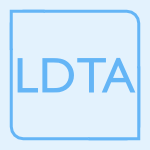 LDTA-J-2009-ChilowiczDR #sequence #source code
LDTA-J-2009-ChilowiczDR #sequence #source code- Viewing functions as token sequences to highlight similarities in source code (MC, ÉD, GR), pp. 1871–1891.
 GPCE-2013-0001RN #abstract syntax tree #declarative #fine-grained #mining #source code
GPCE-2013-0001RN #abstract syntax tree #declarative #fine-grained #mining #source code- Declarative visitors to ease fine-grained source code mining with full history on billions of AST nodes (RD, HR, TNN), pp. 23–32.
 CC-2013-BaranyK #heuristic
CC-2013-BaranyK #heuristic- Optimal and Heuristic Global Code Motion for Minimal Spilling (GB, AK), pp. 21–40.
 CC-2013-KempfVP #identification #parallel
CC-2013-KempfVP #identification #parallel- Compiler-Guided Identification of Critical Sections in Parallel Code (SK, RV, MP), pp. 204–223.
 CGO-2013-KruijfS #analysis #code generation #evaluation #implementation
CGO-2013-KruijfS #analysis #code generation #evaluation #implementation- Idempotent code generation: Implementation, analysis, and evaluation (MdK, KS), p. 12.
 DAC-2013-BombieriLFC #c++ #synthesis
DAC-2013-BombieriLFC #c++ #synthesis- A method to abstract RTL IP blocks into C++ code and enable high-level synthesis (NB, HYL, FF, LPC), p. 9.
 DAC-2013-NajjarV #compilation #perspective
DAC-2013-NajjarV #compilation #perspective- FPGA code accelerators — the compiler perspective (WAN, JRV), p. 6.
 DAC-2013-Wang #fault #reliability
DAC-2013-Wang #fault #reliability- Hierarchical decoding of double error correcting codes for high speed reliable memories (ZW), p. 7.
 DATE-2013-DoganBCABA #analysis #embedded #execution #multi #platform #power management
DATE-2013-DoganBCABA #analysis #embedded #execution #multi #platform #power management- Synchronizing code execution on ultra-low-power embedded multi-channel signal analysis platforms (AYD, RB, JC, GA, AB, DA), pp. 396–399.
 DATE-2013-KumarK #3d
DATE-2013-KumarK #3d- Crosstalk avoidance codes for 3D VLSI (RK, SPK), pp. 1673–1678.
 DATE-2013-MaricAV #architecture #hybrid #performance #reliability #using
DATE-2013-MaricAV #architecture #hybrid #performance #reliability #using- Efficient cache architectures for reliable hybrid voltage operation using EDC codes (BM, JA, MV), pp. 917–920.
 DATE-2013-SampaioZSABH #energy #estimation #memory management #multi #video
DATE-2013-SampaioZSABH #energy #estimation #memory management #multi #video- Energy-efficient memory hierarchy for motion and disparity estimation in multiview video coding (FS, BZ, MS, LVA, SB, JH), pp. 665–670.
 HPCA-2013-JacobvitzCS #memory management
HPCA-2013-JacobvitzCS #memory management- Coset coding to extend the lifetime of memory (ANJ, ARC, DJS), pp. 222–233.
 HPCA-2013-KayaalpSNPA #architecture #named #reuse
HPCA-2013-KayaalpSNPA #architecture #named #reuse- SCRAP: Architecture for signature-based protection from Code Reuse Attacks (MK, TS, JN, DP, NBAG), pp. 258–269.
 LCTES-2013-HuberPP #analysis #control flow #graph #using
LCTES-2013-HuberPP #analysis #control flow #graph #using- Combined WCET analysis of bitcode and machine code using control-flow relation graphs (BH, DP, PPP), pp. 163–172.
 PDP-2013-RenesseJNJ #abstraction
PDP-2013-RenesseJNJ #abstraction- Secure Abstraction with Code Capabilities (RvR, HDJ, NN, DJ), pp. 542–546.
 PDP-2013-SuboticSLV #data flow #identification #modelling #programming
PDP-2013-SuboticSLV #data flow #identification #modelling #programming- Identifying Critical Code Sections in Dataflow Programming Models (VS, JCS, JL, MV), pp. 29–37.
 FASE-2013-SakamotoTHWF #code generation #integration #named #testing #web
FASE-2013-SakamotoTHWF #code generation #integration #named #testing #web- POGen: A Test Code Generator Based on Template Variable Coverage in Gray-Box Integration Testing for Web Applications (KS, KT, DH, HW, YF), pp. 343–358.
 STOC-2013-Ben-SassonGKKS #algebra #geometry #product line
STOC-2013-Ben-SassonGKKS #algebra #geometry #product line- A new family of locally correctable codes based on degree-lifted algebraic geometry codes (EBS, AG, YK, SK, SS), pp. 833–842.
 STOC-2013-Wootters #fault #linear #on the #random #scalability
STOC-2013-Wootters #fault #linear #on the #random #scalability- On the list decodability of random linear codes with large error rates (MW), pp. 853–860.
 CAV-2013-BiondiLTW #imperative #named #security
CAV-2013-BiondiLTW #imperative #named #security- QUAIL: A Quantitative Security Analyzer for Imperative Code (FB, AL, LMT, AW), pp. 702–707.
 ICTSS-2013-MauserKH #programming #towards #user interface #using
ICTSS-2013-MauserKH #programming #towards #user interface #using- Towards a GUI Test Model Using State Charts and Programming Code (DM, AK, KH), pp. 271–276.
 ISSTA-2013-GligoricZPP #concurrent #mutation testing #testing
ISSTA-2013-GligoricZPP #concurrent #mutation testing #testing- Selective mutation testing for concurrent code (MG, LZ, CP, GP), pp. 224–234.
 ISSTA-2013-RosnerGBBRPZF #analysis #bound #invariant #parallel #refinement
ISSTA-2013-RosnerGBBRPZF #analysis #bound #invariant #parallel #refinement- Parallel bounded analysis in code with rich invariants by refinement of field bounds (NR, JPG, SB, GMB, SPDR, LP, LZ, MFF), pp. 23–33.
 QoSA-2012-Abi-AntounAH #case study #experience #graph #object-oriented
QoSA-2012-Abi-AntounAH #case study #experience #graph #object-oriented- Extraction of ownership object graphs from object-oriented code: an experience report (MAA, NA, ZH), pp. 133–142.
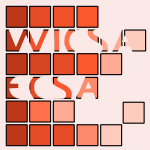 WICSA-ECSA-2012-EdwardsBM #analysis #automation #code generation #modelling
WICSA-ECSA-2012-EdwardsBM #analysis #automation #code generation #modelling- Automated Analysis and Code Generation for Domain-Specific Models (GE, YB, NM), pp. 161–170.
 WICSA-ECSA-2012-GhabiE #architecture #modelling #nondeterminism #traceability
WICSA-ECSA-2012-GhabiE #architecture #modelling #nondeterminism #traceability- Exploiting Traceability Uncertainty between Architectural Models and Code (AG, AE), pp. 171–180.
 WICSA-ECSA-2012-KebirSCC #approach #component #identification #object-oriented
WICSA-ECSA-2012-KebirSCC #approach #component #identification #object-oriented- Quality-Centric Approach for Software Component Identification from Object-Oriented Code (SK, ADS, SC, AC), pp. 181–190.
 WICSA-ECSA-2012-SimantaLMHS #architecture #mobile
WICSA-ECSA-2012-SimantaLMHS #architecture #mobile- A Reference Architecture for Mobile Code Offload in Hostile Environments (SS, GAL, EJM, KH, MS), pp. 282–286.
 DocEng-2012-OliveiraGL #automation #towards
DocEng-2012-OliveiraGL #automation #towards- Toward automated schema-directed code revision (RO, PG, NL), pp. 103–106.
 CSEET-2012-RongLXZ #bibliography #code review #empirical #student
CSEET-2012-RongLXZ #bibliography #code review #empirical #student- The Effect of Checklist in Code Review for Inexperienced Students: An Empirical Study (GR, JL, MX, TZ), pp. 120–124.
 ITiCSE-2012-Law #interactive #student #using
ITiCSE-2012-Law #interactive #student #using- Using quick response codes for student interaction during lectures (RL), p. 401.
 ITiCSE-2012-PoonSTK #corpus #detection #source code
ITiCSE-2012-PoonSTK #corpus #detection #source code- Instructor-centric source code plagiarism detection and plagiarism corpus (JYHP, KS, YFT, MYK), pp. 122–127.
 ITiCSE-2012-Sudol-DeLyserSC #comprehension #learning #problem
ITiCSE-2012-Sudol-DeLyserSC #comprehension #learning #problem- Code comprehension problems as learning events (LASD, MS, SC), pp. 81–86.
 WCRE-J-2009-BettenburgSIAZH12 #consistency #empirical
WCRE-J-2009-BettenburgSIAZH12 #consistency #empirical- An empirical study on inconsistent changes to code clones at the release level (NB, WS, WMI, BA, YZ, AEH), pp. 760–776.
 CSMR-2012-BertranAGCS #architecture #identification #on the
CSMR-2012-BertranAGCS #architecture #identification #on the- On the Relevance of Code Anomalies for Identifying Architecture Degradation Symptoms (IMB, RA, AG, CC, AvS), pp. 277–286.
 CSMR-2012-BettenburgTH #code search #fuzzy #source code #using
CSMR-2012-BettenburgTH #code search #fuzzy #source code #using- Using Fuzzy Code Search to Link Code Fragments in Discussions to Source Code (NB, SWT, AEH), pp. 319–328.
 CSMR-2012-DeissenboeckHHW #challenge #detection
CSMR-2012-DeissenboeckHHW #challenge #detection- Challenges of the Dynamic Detection of Functionally Similar Code Fragments (FD, LH, BH, SW), pp. 299–308.
 CSMR-2012-KarusD #predict #xml
CSMR-2012-KarusD #predict #xml- Predicting Coding Effort in Projects Containing XML (SK, MD), pp. 203–212.
 CSMR-2012-PetersZ #mining #repository #smell #using
CSMR-2012-PetersZ #mining #repository #smell #using- Evaluating the Lifespan of Code Smells using Software Repository Mining (RP, AZ), pp. 411–416.
 CSMR-2012-YoshidaKI #approach #functional #maintenance #metric #source code
CSMR-2012-YoshidaKI #approach #functional #maintenance #metric #source code- A Cohesion Metric Approach to Dividing Source Code into Functional Segments to Improve Maintainability (NY, MK, HI), pp. 365–370.
 CSMR-2012-ZiadiFSZ #identification #source code
CSMR-2012-ZiadiFSZ #identification #source code- Feature Identification from the Source Code of Product Variants (TZ, LF, MAAdS, MZ), pp. 417–422.
 ICPC-2012-CorleyKK #modelling #source code #topic
ICPC-2012-CorleyKK #modelling #source code #topic- Modeling the ownership of source code topics (CSC, EAK, NAK), pp. 173–182.
 ICPC-2012-IshioEI #data flow #interprocedural #lightweight #source code #visualisation
ICPC-2012-IshioEI #data flow #interprocedural #lightweight #source code #visualisation- A lightweight visualization of interprocedural data-flow paths for source code reading (TI, SE, KI), pp. 37–46.
 ICPC-2012-Keivanloo #clone detection #code search #detection #source code
ICPC-2012-Keivanloo #clone detection #code search #detection #source code- Leveraging clone detection for Internet-scale source code search (IK), pp. 277–280.
 ICPC-2012-LuciaPOPP #information retrieval #question #source code #using
ICPC-2012-LuciaPOPP #information retrieval #question #source code #using- Using IR methods for labeling source code artifacts: Is it worthwhile? (ADL, MDP, RO, AP, SP), pp. 193–202.
 ICPC-2012-NogueraRKJ #query #uml
ICPC-2012-NogueraRKJ #query #uml- Code querying by UML (CN, CDR, AK, VJ), pp. 229–238.
 ICPC-2012-PanichellaAPMC #developer #mining #source code
ICPC-2012-PanichellaAPMC #developer #mining #source code- Mining source code descriptions from developer communications (SP, JA, MDP, AM, GC), pp. 63–72.
 ICPC-2012-SajnaniOL #clone detection #detection #parallel #pipes and filters #using
ICPC-2012-SajnaniOL #clone detection #detection #parallel #pipes and filters #using- Parallel code clone detection using MapReduce (HS, JO, CVL), pp. 261–262.
 ICPC-2012-SharafiSGA #identifier #source code #women
ICPC-2012-SharafiSGA #identifier #source code #women- Women and men — Different but equal: On the impact of identifier style on source code reading (ZS, ZS, YGG, GA), pp. 27–36.
 ICPC-2012-Zhang #product line
ICPC-2012-Zhang #product line- Extraction and improvement of conditionally compiled product line code (BZ), pp. 257–258.
 ICSM-2012-Al-KofahiNNNN #detection #semantics
ICSM-2012-Al-KofahiNNNN #detection #semantics- Detecting semantic changes in Makefile build code (JMAK, HVN, ATN, TTN, TNN), pp. 150–159.
 ICSM-2012-AlalfiCDSS #clone detection #detection #modelling
ICSM-2012-AlalfiCDSS #clone detection #detection #modelling- Models are code too: Near-miss clone detection for Simulink models (MHA, JRC, TRD, MS, AS), pp. 295–304.
 ICSM-2012-BertranACGS #architecture #identification
ICSM-2012-BertranACGS #architecture #identification- Supporting the identification of architecturally-relevant code anomalies (IMB, RA, EC, AG, AvS), pp. 662–665.
 ICSM-2012-BeszedesGSJLG #test coverage #testing
ICSM-2012-BeszedesGSJLG #test coverage #testing- Code coverage-based regression test selection and prioritization in WebKit (ÁB, TG, LS, JJ, LL, TG), pp. 46–55.
 ICSM-2012-BoomsmaHG #industrial #lessons learnt #php #web
ICSM-2012-BoomsmaHG #industrial #lessons learnt #php #web- Dead code elimination for web systems written in PHP: Lessons learned from an industry case (HB, BVH, HGG), pp. 511–515.
 ICSM-2012-DhaliwalKZH #commit #dependence #integration #product line
ICSM-2012-DhaliwalKZH #commit #dependence #integration #product line- Recovering commit dependencies for selective code integration in software product lines (TD, FK, YZ, AEH), pp. 202–211.
 ICSM-2012-HamiltonD #community #dependence #source code
ICSM-2012-HamiltonD #community #dependence #source code- Dependence communities in source code (JH, SD), pp. 579–582.
 ICSM-2012-HayashiOZMS #refactoring #source code
ICSM-2012-HayashiOZMS #refactoring #source code- Refactoring edit history of source code (SH, TO, TZ, KM, MS), pp. 617–620.
 ICSM-2012-HermansPD #detection #smell #spreadsheet
ICSM-2012-HermansPD #detection #smell #spreadsheet- Detecting code smells in spreadsheet formulas (FH, MP, AvD), pp. 409–418.
 ICSM-2012-HigoK #consistency #detection #how #nondeterminism
ICSM-2012-HigoK #consistency #detection #how #nondeterminism- How often do unintended inconsistencies happen? Deriving modification patterns and detecting overlooked code fragments (YH, SK), pp. 222–231.
 ICSM-2012-KimuraHIK #dynamic analysis #refactoring
ICSM-2012-KimuraHIK #dynamic analysis #refactoring- Move code refactoring with dynamic analysis (SK, YH, HI, SK), pp. 575–578.
 ICSM-2012-KuangMHGHJE #comprehension #dependence #question #requirements #source code #traceability
ICSM-2012-KuangMHGHJE #comprehension #dependence #question #requirements #source code #traceability- Do data dependencies in source code complement call dependencies for understanding requirements traceability? (HK, PM, HH, AG, LH, JL, AE), pp. 181–190.
 ICSM-2012-Linares-VasquezHDKGP #commit #debugging #question
ICSM-2012-Linares-VasquezHDKGP #commit #debugging #question- Triaging incoming change requests: Bug or commit history, or code authorship? (MLV, KH, HD, HHK, MG, DP), pp. 451–460.
 ICSM-2012-NasehiSMB #case study #programming #stack overflow #what
ICSM-2012-NasehiSMB #case study #programming #stack overflow #what- What makes a good code example?: A study of programming Q&A in StackOverflow (SMN, JS, FM, CB), pp. 25–34.
 ICSM-2012-OmoriKM #case study #code completion
ICSM-2012-OmoriKM #case study #code completion- A study on repetitiveness of code completion operations (TO, HK, KM), pp. 584–587.
 ICSM-2012-QuAR #impact analysis #testing #using
ICSM-2012-QuAR #impact analysis #testing #using- Configuration selection using code change impact analysis for regression testing (XQ, MA, BR), pp. 129–138.
 ICSM-2012-RamaKVP #detection #source code #version control
ICSM-2012-RamaKVP #detection #source code #version control- Version history based source code plagiarism detection in proprietary systems (GMR, DK, SAV, SP), pp. 609–612.
 ICSM-2012-YamashitaM #aspect-oriented #maintenance #question #smell
ICSM-2012-YamashitaM #aspect-oriented #maintenance #question #smell- Do code smells reflect important maintainability aspects? (AFY, LM), pp. 306–315.
 MSR-2012-Breckel #comparison #database #debugging #detection #fault #mining #scalability
MSR-2012-Breckel #comparison #database #debugging #detection #fault #mining #scalability- Error mining: Bug detection through comparison with large code databases (AB), pp. 175–178.
 MSR-2012-GigerPG #analysis #empirical #predict
MSR-2012-GigerPG #analysis #empirical #predict- Can we predict types of code changes? An empirical analysis (EG, MP, HCG), pp. 217–226.
 SCAM-2012-GethersAP #concept #database #dependence #detection
SCAM-2012-GethersAP #concept #database #dependence #detection- Combining Conceptual and Domain-Based Couplings to Detect Database and Code Dependencies (MG, AA, DP), pp. 144–153.
 SCAM-2012-MayerS #analysis #refactoring
SCAM-2012-MayerS #analysis #refactoring- Cross-Language Code Analysis and Refactoring (PM, AS), pp. 94–103.
 SCAM-2012-MurakamiHHIK #clone detection #detection
SCAM-2012-MurakamiHHIK #clone detection #detection- Folding Repeated Instructions for Improving Token-Based Code Clone Detection (HM, KH, YH, HI, SK), pp. 64–73.
 WCRE-2012-AmmarA #diagrams #empirical #evaluation #runtime
WCRE-2012-AmmarA #diagrams #empirical #evaluation #runtime- Empirical Evaluation of Diagrams of the Run-time Structure for Coding Tasks (NA, MAA), pp. 367–376.
 WCRE-2012-CapiluppiFB #effectiveness #java #obfuscation
WCRE-2012-CapiluppiFB #effectiveness #java #obfuscation- Code Defactoring: Evaluating the Effectiveness of Java Obfuscations (AC, PF, CB), pp. 71–80.
 WCRE-2012-FavreLLSV #documentation #source code
WCRE-2012-FavreLLSV #documentation #source code- Linking Documentation and Source Code in a Software Chrestomathy (JMF, RL, ML, TS, AV), pp. 335–344.
 WCRE-2012-HemelK #case study #clone detection #detection #linux #reverse engineering #source code #using #variability
WCRE-2012-HemelK #case study #clone detection #detection #linux #reverse engineering #source code #using #variability- Reverse Engineering Variability in Source Code Using Clone Detection: A Case Study for Linux Variants of Consumer Electronic Devices (AH, RK), pp. 357–366.
 WCRE-2012-IchiiMNCO #approach #automation #modelling #rule-based #source code
WCRE-2012-IchiiMNCO #approach #automation #modelling #rule-based #source code- A Rule-based Automated Approach for Extracting Models from Source Code (MI, TM, YN, MC, HO), pp. 308–317.
 WCRE-2012-RomanoRPK #fine-grained #source code #using
WCRE-2012-RomanoRPK #fine-grained #source code #using- Analyzing the Impact of Antipatterns on Change-Proneness Using Fine-Grained Source Code Changes (DR, PR, MP, FK), pp. 437–446.
 DLT-2012-GeffertP
DLT-2012-GeffertP- Unary Coded NP-Complete Languages in ASPACE (log log n) (VG, DP), pp. 166–177.
 DLT-2012-GiambrunoMNS #bidirectional #finite
DLT-2012-GiambrunoMNS #bidirectional #finite- A Generalization of Girod’s Bidirectional Decoding Method to Codes with a Finite Deciphering Delay (LG, SM, JN, CS), pp. 471–476.
 SEFM-2012-PaulSS #assembly #automation #verification
SEFM-2012-PaulSS #assembly #automation #verification- Completing the Automated Verification of a Small Hypervisor — Assembler Code Verification (WJP, SS, AS), pp. 188–202.
 CHI-2012-OneyB #documentation #editing #interactive #named
CHI-2012-OneyB #documentation #editing #interactive #named- Codelets: linking interactive documentation and example code in the editor (SO, JB), pp. 2697–2706.
 CSCW-2012-DabbishSTH #collaboration #git #repository #social
CSCW-2012-DabbishSTH #collaboration #git #repository #social- Social coding in GitHub: transparency and collaboration in an open software repository (LAD, HCS, JT, JDH), pp. 1277–1286.
 CAiSE-2012-PastorE #code generation #modelling #requirements
CAiSE-2012-PastorE #code generation #modelling #requirements- Full Model-Driven Practice: From Requirements to Code Generation (OP, SE), pp. 701–702.
 ICEIS-J-2012-YiasemisA12a #execution #fault #mutation testing #slicing #testing
ICEIS-J-2012-YiasemisA12a #execution #fault #mutation testing #slicing #testing- Locating and Correcting Software Faults in Executable Code Slices via Evolutionary Mutation Testing (PSY, ASA), pp. 207–227.
 ICML-2012-GoodfellowCB #learning #scalability
ICML-2012-GoodfellowCB #learning #scalability- Large-Scale Feature Learning With Spike-and-Slab Sparse Coding (IJG, ACC, YB), p. 180.
 ICML-2012-McAfeeO #code generation #network #static analysis
ICML-2012-McAfeeO #code generation #network #static analysis- Utilizing Static Analysis and Code Generation to Accelerate Neural Networks (LCM, KO), p. 192.
 ICML-2012-XuL #multi
ICML-2012-XuL #multi- Conditional Sparse Coding and Grouped Multivariate Regression (MX, JDL), p. 116.
 ICML-2012-ZhangS
ICML-2012-ZhangS- Maximum Margin Output Coding (YZ, JGS), p. 53.
 ICPR-2012-ArpitSF #rank #recognition
ICPR-2012-ArpitSF #rank #recognition- Locality-constrained Low Rank Coding for face recognition (DA, GS, YF), pp. 1687–1690.
 ICPR-2012-DingLHXW #recognition #video
ICPR-2012-DingLHXW #recognition #video- Context-aware horror video scene recognition via cost-sensitive sparse coding (XD, BL, WH, WX, ZW), pp. 1904–1907.
 ICPR-2012-DuanWLDC #learning #named
ICPR-2012-DuanWLDC #learning #named- K-CPD: Learning of overcomplete dictionaries for tensor sparse coding (GD, HW, ZL, JD, YWC), pp. 493–496.
 ICPR-2012-HoritaMMKOKT #3d #metric #robust
ICPR-2012-HoritaMMKOKT #3d #metric #robust- Coded aperture for projector and camera for robust 3D measurement (YH, YM, HM, HK, SO, MK, YT), pp. 1487–1491.
 ICPR-2012-HouHWH #synthesis #video
ICPR-2012-HouHWH #synthesis #video- Improvements of dynamic texture synthesis for video coding (ZH, RH, ZW, ZH), pp. 3148–3151.
 ICPR-2012-LinSCLH #recognition #using
ICPR-2012-LinSCLH #recognition #using- Human action recognition using Action Trait Code (SYL, CKS, SCC, MSL, YPH), pp. 3456–3459.
 ICPR-2012-LiuW12b #performance #recognition #robust
ICPR-2012-LiuW12b #performance #recognition #robust- Accelerated robust sparse coding for fast face recognition (GL, YY, HW), pp. 3394–3397.
 ICPR-2012-LiuWXZS #classification
ICPR-2012-LiuWXZS #classification- Soft-signed sparse coding for ground-based cloud classification (SL, CW, BX, ZZ, YS), pp. 2214–2217.
 ICPR-2012-LuHLC #recognition #using
ICPR-2012-LuHLC #recognition #using- Insect species recognition using discriminative local soft coding (AL, XH, CLL, XC), pp. 1221–1224.
 ICPR-2012-NaitoKSS #using
ICPR-2012-NaitoKSS #using- Deblurring depth blur and motion blur simultaneously by using space-time coding (RN, TK, FS, JS), pp. 2177–2180.
 ICPR-2012-OuYCPGJ #image #representation
ICPR-2012-OuYCPGJ #image #representation- Structured sparse coding for image representation based on L1-graph (WO, XY, YmC, QP, MG, XJ), pp. 3220–3223.
 ICPR-2012-ParisHG #analysis #categorisation #image #towards
ICPR-2012-ParisHG #analysis #categorisation #image #towards- Sparse coding for histograms of local binary patterns applied for image categorization: Toward a Bag-of-Scenes analysis (SP, XH, HG), pp. 2817–2820.
 ICPR-2012-RenLWG #image
ICPR-2012-RenLWG #image- Image super-resolution by structural sparse coding (JR, JL, MW, ZG), pp. 1936–1939.
 ICPR-2012-TaniguchiHISC #image #linear
ICPR-2012-TaniguchiHISC #image #linear- Image super-resolution based on locality-constrained linear coding (KT, XHH, YI, SS, YWC), pp. 1948–1951.
 ICPR-2012-WangWZBL #classification #image
ICPR-2012-WangWZBL #classification #image- Adjacent coding for image classification (YW, XW, SZ, XB, WL), pp. 1459–1462.
 ICPR-2012-ZhangZC #recognition
ICPR-2012-ZhangZC #recognition- Action recognition based on spatial-temporal pyramid sparse coding (XZ, HZ, XC), pp. 1455–1458.
 ICPR-2012-ZhengQ #categorisation #semantics
ICPR-2012-ZhengQ #categorisation #semantics- Non-negative Sparse Semantic Coding for text categorization (WZ, YQ), pp. 409–412.
 KDD-2012-HiraiY #clustering #detection #normalisation #using
KDD-2012-HiraiY #clustering #detection #normalisation #using- Detecting changes of clustering structures using normalized maximum likelihood coding (SH, KY), pp. 343–351.
 KDD-2012-SindhwaniG #distributed #learning #scalability #taxonomy
KDD-2012-SindhwaniG #distributed #learning #scalability #taxonomy- Large-scale distributed non-negative sparse coding and sparse dictionary learning (VS, AG), pp. 489–497.
 KDD-2012-ZhouZ #collaboration #learning
KDD-2012-ZhouZ #collaboration #learning- Learning binary codes for collaborative filtering (KZ, HZ), pp. 498–506.
 SEKE-2012-HumairaSOWF #framework #metric #multi #programming language #source code #towards
SEKE-2012-HumairaSOWF #framework #metric #multi #programming language #source code #towards- Towards a Unified Source Code Measurement Framework Supporting Multiple Programming Languages (RH, KS, AO, HW, YF), pp. 480–485.
 SEKE-2012-XuT #automation #concurrent #generative
SEKE-2012-XuT #automation #concurrent #generative- Automated Generation of Concurrent Test Code from Function Nets (DX, JT), pp. 346–351.
 SIGIR-2012-ZhangWDH #detection #learning #performance #reuse
SIGIR-2012-ZhangWDH #detection #learning #performance #reuse- Learning hash codes for efficient content reuse detection (QZ, YW, ZD, XH), pp. 405–414.
 ECMFA-2012-SmolikV #code generation
ECMFA-2012-SmolikV #code generation- Code Generation Nirvana (PCS, PV), pp. 319–327.
 MoDELS-2012-GravinoRST #comprehension #design pattern #developer #documentation #replication #source code
MoDELS-2012-GravinoRST #comprehension #design pattern #developer #documentation #replication #source code- Do Professional Developers Benefit from Design Pattern Documentation? A Replication in the Context of Source Code Comprehension (CG, MR, GS, GT), pp. 185–201.
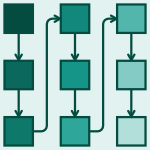 PLEASE-2012-Duszynski0 #source code #variability
PLEASE-2012-Duszynski0 #source code #variability- Recovering variability information from the source code of similar software products (SD, MB), pp. 37–40.
 SPLC-2012-NunesGLL #evolution #heuristic #product line
SPLC-2012-NunesGLL #evolution #heuristic #product line- History-sensitive heuristics for recovery of features in code of evolving program families (CN, AG, CJPdL, JL), pp. 136–145.
 ECOOP-2012-NegaraVCJD #evolution #question #source code #version control
ECOOP-2012-NegaraVCJD #evolution #question #source code #version control- Is It Dangerous to Use Version Control Histories to Study Source Code Evolution? (SN, MV, NC, REJ, DD), pp. 79–103.
 OOPSLA-2012-MishneSY #code search #semantics #source code
OOPSLA-2012-MishneSY #code search #semantics #source code- Typestate-based semantic code search over partial programs (AM, SS, EY), pp. 997–1016.
 OOPSLA-2012-Zhang0LZMY #android #java #on-demand #refactoring
OOPSLA-2012-Zhang0LZMY #android #java #on-demand #refactoring- Refactoring android Java code for on-demand computation offloading (YZ, GH, XL, WZ, HM, SY), pp. 233–248.
 PLATEAU-2012-BosuC #code review #open source #overview
PLATEAU-2012-BosuC #code review #open source #overview- Peer code review in open source communitiesusing reviewboard (AB, JCC), pp. 17–24.
 PLATEAU-2012-UrmaM #evolution #programming language #query #source code
PLATEAU-2012-UrmaM #evolution #programming language #query #source code- Programming language evolution via source code query languages (RGU, AM), pp. 35–38.
 AdaEurope-2012-PanunzioV #ada #component #development
AdaEurope-2012-PanunzioV #ada #component #development- Ada Ravenscar Code Archetypes for Component-Based Development (MP, TV), pp. 1–17.
 AdaEurope-2012-RuizCM #ada #development #source code
AdaEurope-2012-RuizCM #ada #development #source code- Source Code as the Key Artifact in Requirement-Based Development: The Case of Ada 2012 (JFR, CC, YM), pp. 49–59.
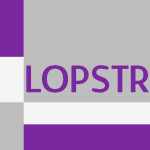 LOPSTR-2012-DandoisV #logic programming #semantics #source code
LOPSTR-2012-DandoisV #logic programming #semantics #source code- Semantic Code Clones in Logic Programs (CD, WV), pp. 35–50.
 LOPSTR-2012-SeghirB #array #program transformation #quantifier #verification
LOPSTR-2012-SeghirB #array #program transformation #quantifier #verification- Simplifying the Verification of Quantified Array Assertions via Code Transformation (MNS, MB), pp. 194–212.
 PEPM-2012-Puschel #compilation #performance
PEPM-2012-Puschel #compilation #performance- Compiling math to fast code (MP), pp. 1–2.
 POPL-2012-RayL #injection
POPL-2012-RayL #injection- Defining code-injection attacks (DR, JL), pp. 179–190.
 PPDP-2012-Emden #matrix
PPDP-2012-Emden #matrix- Matrix code (MvE), pp. 13–24.
 RE-2012-CharradaKG #identification #requirements #source code
RE-2012-CharradaKG #identification #requirements #source code- Identifying outdated requirements based on source code changes (EBC, AK, MG), pp. 61–70.
 RE-2012-SmialekS #requirements
RE-2012-SmialekS #requirements- Facilitating transition from requirements to code with the ReDSeeDS tool (MS, TS), pp. 321–322.
 ASE-2012-AbadiF #automation
ASE-2012-AbadiF #automation- Automatic recovery of statecharts from procedural code (MA, YAF), pp. 238–241.
 ASE-2012-GhabiE #automation #validation
ASE-2012-GhabiE #automation #validation- Code patterns for automatically validating requirements-to-code traces (AG, AE), pp. 200–209.
 ASE-2012-MaruyamaKOH #game studies #slicing
ASE-2012-MaruyamaKOH #game studies #slicing- Slicing and replaying code change history (KM, EK, TO, SH), pp. 246–249.
 ASE-2012-MorenoM #automation #identification #java #named
ASE-2012-MorenoM #automation #identification #java #named- JStereoCode: automatically identifying method and class stereotypes in Java code (LM, AM), pp. 358–361.
 ASE-2012-NguyenNNNN #detection #embedded #smell #web
ASE-2012-NguyenNNNN #detection #embedded #smell #web- Detection of embedded code smells in dynamic web applications (HVN, HAN, TTN, ATN, TNN), pp. 282–285.
 ASE-2012-SharT #predict #validation #web
ASE-2012-SharT #predict #validation #web- Predicting common web application vulnerabilities from input validation and sanitization code patterns (LKS, HBKT), pp. 310–313.
 ASE-2012-TamrawiNNN #analysis #named #refactoring
ASE-2012-TamrawiNNN #analysis #named #refactoring- SYMake: a build code analysis and refactoring tool for makefiles (AT, HAN, HVN, TNN), pp. 366–369.
 ASE-2012-WangD0ZLM #question
ASE-2012-WangD0ZLM #question- Can I clone this piece of code here? (XW, YD, LZ, DZ, EL, HM), pp. 170–179.
 ASE-2012-YuanG #approach #clone detection #detection #named #scalability
ASE-2012-YuanG #approach #clone detection #detection #named #scalability- Boreas: an accurate and scalable token-based approach to code clone detection (YY, YG), pp. 286–289.
 FSE-2012-ServantJ #slicing
FSE-2012-ServantJ #slicing- History slicing: assisting code-evolution tasks (FS, JAJ), p. 43.
 FSE-2012-ShepherdDRF #code search #framework #named
FSE-2012-ShepherdDRF #code search #framework #named- Sando: an extensible local code search framework (DS, KD, BR, TF), p. 15.
 FSE-2012-TaoDXZK #case study #how #industrial
FSE-2012-TaoDXZK #case study #how #industrial- How do software engineers understand code changes?: an exploratory study in industry (YT, YD, TX, DZ, SK), p. 51.
 ICSE-2012-AlvesSF #named #smell
ICSE-2012-AlvesSF #named #smell- ConcernReCS: Finding code smells in software aspectization (PA, DS, EF), pp. 1463–1464.
 ICSE-2012-DeLineBRJR #debugging #experience #industrial #paradigm
ICSE-2012-DeLineBRJR #debugging #experience #industrial #paradigm- Debugger Canvas: Industrial experience with the code bubbles paradigm (RD, AB, KR, JJ, SPR), pp. 1064–1073.
 ICSE-2012-EderJJHVP #how #maintenance #matter #question
ICSE-2012-EderJJHVP #how #maintenance #matter #question- How much does unused code matter for maintenance? (SE, MJ, EJ, BH, RV, KHP), pp. 1102–1111.
 ICSE-2012-Guzzi #information management
ICSE-2012-Guzzi #information management- Documenting and sharing knowledge about code (AG), pp. 1535–1538.
 ICSE-2012-InoueSXM #open source
ICSE-2012-InoueSXM #open source- Where does this code come from and where does it go? — Integrated code history tracker for open source systems (KI, YS, PX, YM), pp. 331–341.
 ICSE-2012-KuhnS #named #version control
ICSE-2012-KuhnS #named #version control- CodeTimeline: Storytelling with versioning data (AK, MS), pp. 1333–1336.
 ICSE-2012-LiE #detection #named
ICSE-2012-LiE #detection #named- CBCD: Cloned buggy code detector (JL, MDE), pp. 310–320.
 ICSE-2012-McMillanHPCM #agile #prototype #recommendation #source code
ICSE-2012-McMillanHPCM #agile #prototype #recommendation #source code- Recommending source code for use in rapid software prototypes (CM, NH, DP, JCH, BM), pp. 848–858.
 ICSE-2012-NguyenNNN12a #code completion #graph #named
ICSE-2012-NguyenNNN12a #code completion #graph #named- GraPacc: A graph-based pattern-oriented, context-sensitive code completion tool (ATN, HAN, TTN, TNN), pp. 1407–1410.
 ICSE-2012-NguyenNNTNAN #code completion #graph #source code
ICSE-2012-NguyenNNTNAN #code completion #graph #source code- Graph-based pattern-oriented, context-sensitive source code completion (ATN, TTN, HAN, AT, HVN, JMAK, TNN), pp. 69–79.
 ICSE-2012-NistorLPGM #automation #clustering #generative #named #parallel #performance #random #testing #thread
ICSE-2012-NistorLPGM #automation #clustering #generative #named #parallel #performance #random #testing #thread- Ballerina: Automatic generation and clustering of efficient random unit tests for multithreaded code (AN, QL, MP, TRG, DM), pp. 727–737.
 ICSE-2012-OmarYLM #code completion
ICSE-2012-OmarYLM #code completion- Active code completion (CO, YY, TDL, BAM), pp. 859–869.
 ICSE-2012-ReissBL #programming
ICSE-2012-ReissBL #programming- Code Bubbles: A practical working-set programming environment (SPR, JNB, JJLJ), pp. 1411–1414.
 ICSE-2012-Schulte #analysis #automation
ICSE-2012-Schulte #analysis #automation- Ten years of automated code analysis at Microsoft (WS), p. 1001.
 ICSE-2012-Schwarz #development
ICSE-2012-Schwarz #development- Hot clones: Combining search-driven development, clone management, and code provenance (NS), pp. 1628–1629.
 ICSE-2012-SchwarzLR #how #on the #repository
ICSE-2012-SchwarzLR #how #on the #repository- On how often code is cloned across repositories (NS, ML, RR), pp. 1289–1292.
 ICSE-2012-SongT #invariant #metadata
ICSE-2012-SongT #invariant #metadata- Metadata invariants: Checking and inferring metadata coding conventions (MS, ET), pp. 694–704.
 ICSE-2012-SusB #education #integration #re-engineering #using
ICSE-2012-SusB #education #integration #re-engineering #using- Using continuous integration of code and content to teach software engineering with limited resources (JGS, WB), pp. 1175–1184.
 ICSE-2012-TamrawiNNN #analysis #evaluation #symbolic computation
ICSE-2012-TamrawiNNN #analysis #evaluation #symbolic computation- Build code analysis with symbolic evaluation (AT, HAN, HVN, TNN), pp. 650–660.
 ICSE-2012-ZhangE #exception #testing #validation
ICSE-2012-ZhangE #exception #testing #validation- Amplifying tests to validate exception handling code (PZ, SGE), pp. 595–605.
 SAC-2012-AnconaMP #automation #documentation #java #migration #ontology
SAC-2012-AnconaMP #automation #documentation #java #migration #ontology- Ontology-based documentation extraction for semi-automatic migration of Java code (DA, VM, OP), pp. 1137–1143.
 SAC-2012-CosciaCMZ #approach #development #web #web service
SAC-2012-CosciaCMZ #approach #development #web #web service- An approach to improve code-first web services discoverability at development time (JLOC, MC, CM, AZ), pp. 638–643.
 SAC-2012-ErraS #3d #towards #visualisation
SAC-2012-ErraS #3d #towards #visualisation- Towards the visualization of software systems as 3D forests: the CodeTrees environment (UE, GS), pp. 981–988.
 SAC-2012-GiuntaPT #aspect-oriented #composition #design pattern #named #refactoring
SAC-2012-GiuntaPT #aspect-oriented #composition #design pattern #named #refactoring- AODP: refactoring code to provide advanced aspect-oriented modularization of design patterns (RG, GP, ET), pp. 1243–1250.
 SAC-2012-JeonC #javascript #jit #reuse #using
SAC-2012-JeonC #javascript #jit #reuse #using- Reuse of JIT compiled code in JavaScript engine (SJ, JC), pp. 1840–1842.
 SAC-2012-KangJC #3d #scalability #using #video
SAC-2012-KangJC #3d #scalability #using #video- Scalable depth map coding for 3D video using contour information (JK, HJ, KC), pp. 1028–1029.
 SAC-2012-MondalRRSKS #comparative #empirical
SAC-2012-MondalRRSKS #comparative #empirical- Comparative stability of cloned and non-cloned code: an empirical study (MM, CKR, MSR, RKS, JK, KAS), pp. 1227–1234.
 SAC-2012-SardinhaYNR #aspect-oriented #identification #named #traceability
SAC-2012-SardinhaYNR #aspect-oriented #identification #named #traceability- EA-tracer: identifying traceability links between code aspects and early aspects (AS, YY, NN, AR), pp. 1035–1042.
 GPCE-2012-AxelsenK #java #performance #semantics #text-to-text
GPCE-2012-AxelsenK #java #performance #semantics #text-to-text- Package templates: a definition by semantics-preserving source-to-source transformations to efficient Java code (EWA, SK), pp. 50–59.
 GPCE-2012-BagheriS #architecture #framework #named #platform #synthesis
GPCE-2012-BagheriS #architecture #framework #named #platform #synthesis- Pol: specification-driven synthesis of architectural code frameworks for platform-based applications (HB, KJS), pp. 93–102.
 CGO-2012-JangLSL #automation #memory management #multi
CGO-2012-JangLSL #automation #memory management #multi- An automatic code overlaying technique for multicores with explicitly-managed memory hierarchies (CJ, JL, SS, JL), pp. 219–229.
 CGO-2012-ZhangDS #database #named
CGO-2012-ZhangDS #database #named- Micro-specialization: dynamic code specialization of database management systems (RZ, SD, RTS), pp. 63–73.
 CGO-2012-ZhangM #3d #clustering #gpu
CGO-2012-ZhangM #3d #clustering #gpu- Auto-generation and auto-tuning of 3D stencil codes on GPU clusters (YZ, FM), pp. 155–164.
 DAC-2012-AgostaBP #analysis
DAC-2012-AgostaBP #analysis- A code morphing methodology to automate power analysis countermeasures (GA, AB, GP), pp. 77–82.
 DAC-2012-KumarBKV #analysis #predict #source code #using
DAC-2012-KumarBKV #analysis #predict #source code #using- Early prediction of NBTI effects using RTL source code analysis (JAK, KMB, HK, SV), pp. 808–813.
 DAC-2012-MirhoseiniPK #energy #memory management
DAC-2012-MirhoseiniPK #energy #memory management- Coding-based energy minimization for phase change memory (AM, MP, FK), pp. 68–76.
 DAC-2012-ShafiqueZWBH #adaptation #memory management #multi #power management #video
DAC-2012-ShafiqueZWBH #adaptation #memory management #multi #power management #video- Adaptive power management of on-chip video memory for multiview video coding (MS, BZ, FLW, SB, JH), pp. 866–875.
 DATE-2012-ShafiqueZRKH #adaptation #power management
DATE-2012-ShafiqueZRKH #adaptation #power management- Power-efficient error-resiliency for H.264/AVC Context-Adaptive Variable Length Coding (MS, BZ, SR, FK, JH), pp. 697–702.
 OSDI-2012-GordonJMMC #execution #migration #named
OSDI-2012-GordonJMMC #execution #migration #named- COMET: Code Offload by Migrating Execution Transparently (MSG, DAJ, SAM, ZMM, XC), pp. 93–106.
 OSDI-2012-GuoFCZZMLLZZ #optimisation #pipes and filters
OSDI-2012-GuoFCZZMLLZZ #optimisation #pipes and filters- Spotting Code Optimizations in Data-Parallel Pipelines through PeriSCOPE (ZG, XF, RC, JZ, HZ, SM, CL, WL, JZ, LZ), pp. 121–133.
 PDP-2012-EittenbergerMK #streaming
PDP-2012-EittenbergerMK #streaming- Raptor Codes for P2P Streaming (PME, TM, URK), pp. 327–332.
 PPoPP-2012-KimH #code generation #kernel #performance
PPoPP-2012-KimH #code generation #kernel #performance- Efficient SIMD code generation for irregular kernels (SK, HH), pp. 55–64.
 STOC-2012-Efremenko
STOC-2012-Efremenko- From irreducible representations to locally decodable codes (KE), pp. 327–338.
 STOC-2012-GalHKPV #bound
STOC-2012-GalHKPV #bound- Tight bounds on computing error-correcting codes by bounded-depth circuits with arbitrary gates (AG, KAH, MK, PP, EV), pp. 479–494.
 STOC-2012-GuruswamiX
STOC-2012-GuruswamiX- Folded codes from function field towers and improved optimal rate list decoding (VG, CX), pp. 339–350.
 STOC-2012-KaufmanL #graph #symmetry #transitive
STOC-2012-KaufmanL #graph #symmetry #transitive- Edge transitive ramanujan graphs and symmetric LDPC good codes (TK, AL), pp. 359–366.
 CAV-2012-ArltS #detection #java #named
CAV-2012-ArltS #detection #java #named- Joogie: Infeasible Code Detection for Java (SA, MS), pp. 767–773.
 ICST-2012-BeyeneA #generative #string #test coverage #testing
ICST-2012-BeyeneA #generative #string #test coverage #testing- Generating String Test Data for Code Coverage (MB, JHA), pp. 270–279.
 ICST-2012-ChittimalliS #framework #modelling #named #source code
ICST-2012-ChittimalliS #framework #modelling #named #source code- GEMS: A Generic Model Based Source Code Instrumentation Framework (PKC, VS), pp. 909–914.
 ICST-2012-JuzgadoVSAR #abstraction #branch #clustering #effectiveness #equivalence #testing
ICST-2012-JuzgadoVSAR #abstraction #branch #clustering #effectiveness #equivalence #testing- Comparing the Effectiveness of Equivalence Partitioning, Branch Testing and Code Reading by Stepwise Abstraction Applied by Subjects (NJJ, SV, MS, SA, IR), pp. 330–339.
 ICST-2012-Kannavara #source code #static analysis
ICST-2012-Kannavara #source code #static analysis- Securing Opensource Code via Static Analysis (RK), pp. 429–436.
 ICST-2012-MateoU #execution #music #reduction
ICST-2012-MateoU #execution #music #reduction- Mutant Execution Cost Reduction: Through MUSIC (Mutant Schema Improved with Extra Code) (PRM, MPU), pp. 664–672.
 ICST-2012-TanMTL #consistency #detection #nondeterminism #testing
ICST-2012-TanMTL #consistency #detection #nondeterminism #testing- @tComment: Testing Javadoc Comments to Detect Comment-Code Inconsistencies (SHT, DM, LT, GTL), pp. 260–269.
 ICTSS-2012-GargantiniGM #robust #test coverage
ICTSS-2012-GargantiniGM #robust #test coverage- Extending Coverage Criteria by Evaluating Their Robustness to Code Structure Changes (AG, MG, EM), pp. 168–183.
 TAP-2012-Kuehlmann #testing
TAP-2012-Kuehlmann #testing- The Technology and Psychology of Testing Your Code as You Develop It (AK), p. 1.
 ECSA-2011-AdersbergerP #architecture #consistency #named #traceability #uml
ECSA-2011-AdersbergerP #architecture #consistency #named #traceability #uml- ReflexML: UML-Based Architecture-to-Code Traceability and Consistency Checking (JA, MP), pp. 344–359.
 ICDAR-2011-KatoDTIM #recognition #using
ICDAR-2011-KatoDTIM #recognition #using- Low Resolution QR-Code Recognition by Applying Super-Resolution Using the Property of QR-Codes (YK, DD, TT, II, HM), pp. 992–996.
 CSEET-2011-ChenT #programming #quality #smell
CSEET-2011-ChenT #programming #quality #smell- Grading code quality of programming assignments based on bad smells (WKC, PYT), p. 559.
 ITiCSE-2011-BreukerDB #quality #student
ITiCSE-2011-BreukerDB #quality #student- Measuring static quality of student code (DMB, JD, JB), pp. 13–17.
 ITiCSE-2011-TaylorK #injection #security #student
ITiCSE-2011-TaylorK #injection #security #student- Security injections: modules to help students remember, understand, and apply secure coding techniques (BT, SK), pp. 3–7.
 ITiCSE-2011-Velazquez-Iturbide #algorithm #design #revisited
ITiCSE-2011-Velazquez-Iturbide #algorithm #design #revisited- The design and coding of greedy algorithms revisited (JÁVI), pp. 8–12.
 ICPC-J-2009-HammadCM11 #automation #evolution #identification #traceability
ICPC-J-2009-HammadCM11 #automation #evolution #identification #traceability- Automatically identifying changes that impact code-to-design traceability during evolution (MH, MLC, JIM), pp. 35–64.
 CSMR-2011-AbbesKGA #comprehension #empirical
CSMR-2011-AbbesKGA #comprehension #empirical- An Empirical Study of the Impact of Two Antipatterns, Blob and Spaghetti Code, on Program Comprehension (MA, FK, YGG, GA), pp. 181–190.
 CSMR-2011-HayaseKMI #source code
CSMR-2011-HayaseKMI #source code- Building Domain Specific Dictionaries of Verb-Object Relation from Source Code (YH, YK, YM, KI), pp. 93–100.
 CSMR-2011-HigoK #clone detection #dependence #detection #heuristic
CSMR-2011-HigoK #clone detection #dependence #detection #heuristic- Code Clone Detection on Specialized PDGs with Heuristics (YH, SK), pp. 75–84.
 CSMR-2011-Sneed #java #migration #pl-i
CSMR-2011-Sneed #java #migration #pl-i- Migrating PL/I Code to Java (HMS), pp. 287–296.
 ICPC-2011-CordyR #named #open source #performance #source code
ICPC-2011-CordyR #named #open source #performance #source code- DebCheck: Efficient Checking for Open Source Code Clones in Software Systems (JRC, CKR), pp. 217–218.
 ICPC-2011-EndrikatH #aspect-oriented #development #maintenance #programming
ICPC-2011-EndrikatH #aspect-oriented #development #maintenance #programming- Is Aspect-Oriented Programming a Rewarding Investment into Future Code Changes? A Socio-technical Study on Development and Maintenance Time (SE, SH), pp. 51–60.
 ICPC-2011-GuzziHLPD #comprehension
ICPC-2011-GuzziHLPD #comprehension- Collective Code Bookmarks for Program Comprehension (AG, LH, ML, MP, AvD), pp. 101–110.
 ICPC-2011-KeivanlooRC #approach #clone detection #hybrid #named #realtime
ICPC-2011-KeivanlooRC #approach #clone detection #hybrid #named #realtime- SeClone — A Hybrid Approach to Internet-Scale Real-Time Code Clone Search (IK, JR, PC), pp. 223–224.
 ICPC-2011-PanchenkoKPZ #database #precise #query #scalability #source code #using
ICPC-2011-PanchenkoKPZ #database #precise #query #scalability #source code #using- Precise and Scalable Querying of Syntactical Source Code Patterns Using Sample Code Snippets and a Database (OP, JK, HP, AZ), pp. 41–50.
 ICPC-2011-ScannielloM #clustering #concept #source code
ICPC-2011-ScannielloM #clustering #concept #source code- Clustering Support for Static Concept Location in Source Code (GS, AM), pp. 1–10.
 ICPC-2011-ZibranR #approach #constraints #programming #refactoring #scheduling
ICPC-2011-ZibranR #approach #constraints #programming #refactoring #scheduling- Conflict-Aware Optimal Scheduling of Code Clone Refactoring: A Constraint Programming Approach (MFZ, CKR), pp. 266–269.
 ICSM-2011-BiggersEKE #metric #source code #towards
ICSM-2011-BiggersEKE #metric #source code #towards- Toward a metrics suite for source code lexicons (LRB, BPE, NAK, LHE), pp. 492–495.
 ICSM-2011-HouP #api #code completion #evaluation #sorting
ICSM-2011-HouP #api #code completion #evaluation #sorting- An evaluation of the strategies of sorting, filtering, and grouping API methods for Code Completion (DH, DMP), pp. 233–242.
 ICSM-2011-LawrieB #identifier #source code
ICSM-2011-LawrieB #identifier #source code- Expanding identifiers to normalize source code vocabulary (DL, DB), pp. 113–122.
 ICSM-2011-LeeK #clustering #recommendation
ICSM-2011-LeeK #clustering #recommendation- Clustering and recommending collections of code relevant to tasks (SL, SK), pp. 536–539.
 ICSM-2011-NishizonoMVM #comprehension #empirical #evolution #industrial #maintenance #metric #predict #source code
ICSM-2011-NishizonoMVM #comprehension #empirical #evolution #industrial #maintenance #metric #predict #source code- Source code comprehension strategies and metrics to predict comprehension effort in software maintenance and evolution tasks — an empirical study with industry practitioners (KN, SM, RV, KiM), pp. 473–481.
 ICSM-2011-QusefBOLB #concept #named #slicing #traceability #using
ICSM-2011-QusefBOLB #concept #named #slicing #traceability #using- SCOTCH: Test-to-code traceability using slicing and conceptual coupling (AQ, GB, RO, ADL, DB), pp. 63–72.
 ICSM-2011-RastkarMB #generative #natural language #source code #summary
ICSM-2011-RastkarMB #generative #natural language #source code #summary- Generating natural language summaries for crosscutting source code concerns (SR, GCM, AWJB), pp. 103–112.
 ICSM-2011-RomanoP #interface #java #metric #predict #source code #using
ICSM-2011-RomanoP #interface #java #metric #predict #source code #using- Using source code metrics to predict change-prone Java interfaces (DR, MP), pp. 303–312.
 ICSM-2011-RomanoSRG #clustering #design pattern #source code
ICSM-2011-RomanoSRG #clustering #design pattern #source code- Clustering and lexical information support for the recovery of design pattern in source code (SR, GS, MR, CG), pp. 500–503.
 ICSM-2011-Scanniello #source code
ICSM-2011-Scanniello #source code- Source code survival with the Kaplan Meier (GS), pp. 524–527.
 ICSM-2011-SmitGHS #evolution
ICSM-2011-SmitGHS #evolution- Code convention adherence in evolving software (MS, BG, HJH, ES), pp. 504–507.
 ICSM-2011-SnipesRM #analysis
ICSM-2011-SnipesRM #analysis- Code Hot Spot: A tool for extraction and analysis of code change history (WS, BPR, ERMH), pp. 392–401.
 ICSM-2011-WieseHH #comparison #identifier #source code
ICSM-2011-WieseHH #comparison #identifier #source code- A comparison of stemmers on source code identifiers for software search (AW, VH, EH), pp. 496–499.
 MSR-2011-GermanD #challenge #source code
MSR-2011-GermanD #challenge #source code- Apples vs. oranges?: an exploration of the challenges of comparing the source code of two software systems (DMG, JD), pp. 246–249.
 MSR-2011-GigerPG #debugging #fine-grained #predict #source code
MSR-2011-GigerPG #debugging #fine-grained #predict #source code- Comparing fine-grained source code changes and code churn for bug prediction (EG, MP, HCG), pp. 83–92.
 MSR-2011-HemelKVD #clone detection #detection
MSR-2011-HemelKVD #clone detection #detection- Finding software license violations through binary code clone detection (AH, KTK, RV, ED), pp. 63–72.
 MSR-2011-HirataM
MSR-2011-HirataM- Do comments explain codes adequately?: investigation by text filtering (YH, OM), pp. 242–245.
 MSR-2011-ThomasAHB #evolution #modelling #source code #topic
MSR-2011-ThomasAHB #evolution #modelling #source code #topic- Modeling the evolution of topics in source code histories (SWT, BA, AEH, DB), pp. 173–182.
 SCAM-2011-AbebeHTM #concept #smell #source code
SCAM-2011-AbebeHTM #concept #smell #source code- The Effect of Lexicon Bad Smells on Concept Location in Source Code (SLA, SH, PT, AM), pp. 125–134.
 SCAM-2011-AlvesHR #case study #comparative #query
SCAM-2011-AlvesHR #case study #comparative #query- A Comparative Study of Code Query Technologies (TLA, JH, PR), pp. 145–154.
 SCAM-2011-CooganD #assembly #equation #reasoning
SCAM-2011-CooganD #assembly #equation #reasoning- Equational Reasoning on x86 Assembly Code (KC, SKD), pp. 75–84.
 SCAM-2011-Gold #analysis #music #programming #source code
SCAM-2011-Gold #analysis #music #programming #source code- Knitting Music and Programming: Reflections on the Frontiers of Source Code Analysis (NG), pp. 10–14.
 SCAM-2011-SchulzeJF #preprocessor
SCAM-2011-SchulzeJF #preprocessor- Analyzing the Effect of Preprocessor Annotations on Code Clones (SS, EJ, JF), pp. 115–124.
 SCAM-2011-SfayhiS #analysis #interactive #visualisation #what
SCAM-2011-SfayhiS #analysis #interactive #visualisation #what- What You See is What You Asked for: An Effort-Based Transformation of Code Analysis Tasks into Interactive Visualization Scenarios (AS, HAS), pp. 195–203.
 SCAM-2011-ZibranR #approach #constraints #programming #refactoring #scheduling
SCAM-2011-ZibranR #approach #constraints #programming #refactoring #scheduling- A Constraint Programming Approach to Conflict-Aware Optimal Scheduling of Prioritized Code Clone Refactoring (MFZ, CKR), pp. 105–114.
 WCRE-2011-AliGA #clustering #object-oriented #requirements #source code #traceability
WCRE-2011-AliGA #clustering #object-oriented #requirements #source code #traceability- Requirements Traceability for Object Oriented Systems by Partitioning Source Code (NA, YGG, GA), pp. 45–54.
 WCRE-2011-BazrafshanKG #approximate #code search
WCRE-2011-BazrafshanKG #approximate #code search- Approximate Code Search in Program Histories (SB, RK, NG), pp. 109–118.
 WCRE-2011-Beard #debugging #information retrieval #locality #using
WCRE-2011-Beard #debugging #information retrieval #locality #using- Extending Bug Localization Using Information Retrieval and Code Clone Location Techniques (MDB), pp. 425–428.
 WCRE-2011-DuszynskiKB #multi #reuse #source code
WCRE-2011-DuszynskiKB #multi #reuse #source code- Analyzing the Source Code of Multiple Software Variants for Reuse Potential (SD, JK, MB), pp. 303–307.
 WCRE-2011-FuhrHR #clustering #dynamic analysis #implementation #legacy #reuse #using
WCRE-2011-FuhrHR #clustering #dynamic analysis #implementation #legacy #reuse #using- Using Dynamic Analysis and Clustering for Implementing Services by Reusing Legacy Code (AF, TH, VR), pp. 275–279.
 WCRE-2011-GrantCS #analysis #concept #reverse engineering #source code #using
WCRE-2011-GrantCS #analysis #concept #reverse engineering #source code #using- Reverse Engineering Co-maintenance Relationships Using Conceptual Analysis of Source Code (SG, JRC, DBS), pp. 87–91.
 WCRE-2011-GravinoRST #comprehension #design pattern #documentation #source code
WCRE-2011-GravinoRST #comprehension #design pattern #documentation #source code- Does the Documentation of Design Pattern Instances Impact on Source Code Comprehension? Results from Two Controlled Experiments (CG, MR, GS, GT), pp. 67–76.
 WCRE-2011-HigoUNK #approach #clone detection #detection #incremental
WCRE-2011-HigoUNK #approach #clone detection #detection #incremental- Incremental Code Clone Detection: A PDG-based Approach (YH, YU, MN, SK), pp. 3–12.
 WCRE-2011-KeivanlooRC #clone detection #multi #realtime
WCRE-2011-KeivanlooRC #clone detection #multi #realtime- Internet-scale Real-time Code Clone Search Via Multi-level Indexing (IK, JR, PC), pp. 23–27.
 WCRE-2011-KellensRNSJ #evolution #quantifier #reasoning #source code #using
WCRE-2011-KellensRNSJ #evolution #quantifier #reasoning #source code #using- Reasoning over the Evolution of Source Code Using Quantified Regular Path Expressions (AK, CDR, CN, RS, VJ), pp. 389–393.
 WCRE-2011-NonnenSI #research #source code
WCRE-2011-NonnenSI #research #source code- Locating the Meaning of Terms in Source Code Research on “Term Introduction” (JN, DS, PI), pp. 99–108.
 WCRE-2011-Panchenko #code search #database #in memory #source code
WCRE-2011-Panchenko #code search #database #in memory #source code- In-Memory Database Support for Source Code Search and Analytics (OP), pp. 421–424.
 WCRE-2011-PosnettHD #fault #question
WCRE-2011-PosnettHD #fault #question- Got Issues? Do New Features and Code Improvements Affect Defects? (DP, AH, PTD), pp. 211–215.
 WCRE-2011-Qusef #concept #slicing #traceability
WCRE-2011-Qusef #concept #slicing #traceability- Recovering Test-to-Code Traceability Via Slicing and Conceptual Coupling (AQ), pp. 417–420.
 WCRE-2011-QusefBOLB #named #slicing
WCRE-2011-QusefBOLB #named #slicing- SCOTCH: Slicing and Coupling Based Test to Code Trace Hunter (AQ, GB, RO, ADL, DB), pp. 443–444.
 WCRE-2011-SajnaniNL #architecture #towards
WCRE-2011-SajnaniNL #architecture #towards- Application Architecture Discovery — Towards Domain-driven, Easily-Extensible Code Structure (HS, RN, CVL), pp. 401–405.
 WCRE-2011-WangLJ #code search #dependence #graph #topic
WCRE-2011-WangLJ #code search #dependence #graph #topic- Code Search via Topic-Enriched Dependence Graph Matching (SW, DL, LJ), pp. 119–123.
 WCRE-2011-WangPV #automation #readability #segmentation
WCRE-2011-WangPV #automation #readability #segmentation- Automatic Segmentation of Method Code into Meaningful Blocks to Improve Readability (XW, LLP, KVS), pp. 35–44.
 DLT-J-2010-PribavkinaR11 #complexity
DLT-J-2010-PribavkinaR11 #complexity- State Complexity of Code Operators (EVP, ER), pp. 1669–1681.
 ICALP-v1-2011-AustrinK #distance #problem #reduction
ICALP-v1-2011-AustrinK #distance #problem #reduction- A Simple Deterministic Reduction for the Gap Minimum Distance of Code Problem (PA, SK), pp. 474–485.
 LATA-2011-NielsenH #parsing #regular expression
LATA-2011-NielsenH #parsing #regular expression- Bit-coded Regular Expression Parsing (LN, FH), pp. 402–413.
 SEFM-2011-Metayer #formal method
SEFM-2011-Metayer #formal method- Formal Methods as a Link between Software Code and Legal Rules (DLM), pp. 3–18.
 CHI-2011-GrossYK #interface #named #visual notation
CHI-2011-GrossYK #interface #named #visual notation- Dinah: an interface to assist non-programmers with selecting program code causing graphical output (PAG, JY, CK), pp. 3397–3400.
 CHI-2011-HartmannDC #named #web
CHI-2011-HartmannDC #named #web- HyperSource: bridging the gap between source and code-related web sites (BH, MD, MKC), pp. 2207–2210.
 DUXU-v2-2011-KaptanG11a #comprehension #scalability
DUXU-v2-2011-KaptanG11a #comprehension #scalability- Improving Code Reading and Comprehension on Large Displays (SNK, MG), pp. 128–134.
 HCI-DDA-2011-ParkSCH #image #in memory #memory management #named
HCI-DDA-2011-ParkSCH #image #in memory #memory management #named- ColoriT: Color Based Image Code Application to Aid in Memory Restoration of Offline Photo Artifacts (JP, JS, JHC, TDH), pp. 637–642.
 HCI-DDA-2011-SeoCH #comparison #mobile #performance
HCI-DDA-2011-SeoCH #comparison #mobile #performance- Imaged Based Codes Performance Comparison for Mobile Environments (JS, JHC, TDH), pp. 653–659.
 VISSOFT-2011-BeckPD #multi #visual notation
VISSOFT-2011-BeckPD #multi #visual notation- Visually exploring multi-dimensional code couplings (FB, RP, SD), pp. 1–8.
 VISSOFT-2011-BroeksemaT #migration #scalability #visual notation
VISSOFT-2011-BroeksemaT #migration #scalability #visual notation- Visual support for porting large code bases (BB, ACT), pp. 1–8.
 VISSOFT-2011-MaleticMNCSR #named #scalability #tool support #visualisation
VISSOFT-2011-MaleticMNCSR #named #scalability #tool support #visualisation- MosaiCode: Visualizing large scale software: A tool demonstration (JIM, DJM, CDN, MLC, AS, BPR), pp. 1–4.
 ICEIS-v1-2011-MarinAV #automation #java #named #ontology #semantics
ICEIS-v1-2011-MarinAV #automation #java #named #ontology #semantics- Jar2Ontology — A Tool for Automatic Extraction of Semantic Information from Java Object Code (NM, CSÁ, MAV), pp. 267–276.
 ICEIS-v3-2011-JuniorNI #bibliography #execution #identification #legacy #source code
ICEIS-v3-2011-JuniorNI #bibliography #execution #identification #legacy #source code- Survey and Proposal of a Method for Business Rules Identification in Legacy Systems Source Code and Execution Logs (WARJ, GSdN, CI), pp. 207–213.
 ICML-2011-CoatesN #encoding
ICML-2011-CoatesN #encoding- The Importance of Encoding Versus Training with Sparse Coding and Vector Quantization (AC, AYN), pp. 921–928.
 ICML-2011-GaoK #multi
ICML-2011-GaoK #multi- Multiclass Boosting with Hinge Loss based on Output Coding (TG, DK), pp. 569–576.
 ICML-2011-NorouziF
ICML-2011-NorouziF- Minimal Loss Hashing for Compact Binary Codes (MN, DJF), pp. 353–360.
 KDD-2011-ZhuLCX #performance #topic
KDD-2011-ZhuLCX #performance #topic- Conditional topical coding: an efficient topic model conditioned on rich features (JZ, NL, NC, EPX), pp. 475–483.
 MLDM-2011-XuM #learning #taxonomy
MLDM-2011-XuM #learning #taxonomy- Dictionary Learning Based on Laplacian Score in Sparse Coding (JX, HM), pp. 253–264.
 SEKE-2011-SeriaiC #approach #architecture #object-oriented #search-based
SEKE-2011-SeriaiC #approach #architecture #object-oriented #search-based- A Genetic Approach for Software Architecture Recovery from Object-Oriented Code (ADS, SC), pp. 515–520.
 ECMFA-2011-GessenharterR #approach #code generation #development #diagrams #modelling #process #towards #uml
ECMFA-2011-GessenharterR #approach #code generation #development #diagrams #modelling #process #towards #uml- Code Generation for UML 2 Activity Diagrams — Towards a Comprehensive Model-Driven Development Approach (DG, MR), pp. 205–220.
 ICMT-2011-BauerK #model transformation
ICMT-2011-BauerK #model transformation- Combining Specification-Based and Code-Based Coverage for Model Transformation Chains (EB, JMK), pp. 78–92.
 MoDELS-2011-StenzelMR #code generation #qvt #verification
MoDELS-2011-StenzelMR #code generation #qvt #verification- Formal Verification of QVT Transformations for Code Generation (KS, NM, WR), pp. 533–547.
 Onward-2011-McDirmid
Onward-2011-McDirmid- Coding at the speed of touch (SM), pp. 61–76.
 OOPSLA-2011-WurthingerABWM #aspect-oriented #evolution #java #runtime
OOPSLA-2011-WurthingerABWM #aspect-oriented #evolution #java #runtime- Safe and atomic run-time code evolution for Java and its application to dynamic AOP (TW, DA, WB, CW, HM), pp. 825–844.
 PLATEAU-2011-YoonM #editing #low level
PLATEAU-2011-YoonM #editing #low level- Capturing and analyzing low-level events from the code editor (YY, BAM), pp. 25–30.
 TOOLS-EUROPE-2011-Nierstrasz #modelling
TOOLS-EUROPE-2011-Nierstrasz #modelling- Synchronizing Models and Code (ON), p. 1.
 TOOLS-EUROPE-2011-TrudelOFN #automation #eiffel #java #source code
TOOLS-EUROPE-2011-TrudelOFN #automation #eiffel #java #source code- Automated Translation of Java Source Code to Eiffel (MT, MO, CAF, MN), pp. 20–35.
 AdaEurope-2011-CoqR #ada #analysis #modelling #quality #source code
AdaEurope-2011-CoqR #ada #analysis #modelling #quality #source code- The SQALE Quality and Analysis Models for Assessing the Quality of Ada Source Code (TC, JPR), pp. 61–74.
 PEPM-2011-JonssonN #explosion #supercompilation
PEPM-2011-JonssonN #explosion #supercompilation- Taming code explosion in supercompilation (PAJ, JN), pp. 33–42.
 PLDI-2011-AnselMETCSSBY #compilation #independence #self
PLDI-2011-AnselMETCSSBY #compilation #independence #self- Language-independent sandboxing of just-in-time compilation and self-modifying code (JA, PM, ÚE, ET, BC, DLS, DS, CB, BY), pp. 355–366.
 PLDI-2011-ZhouCC #algorithm #execution
PLDI-2011-ZhouCC #algorithm #execution- An SSA-based algorithm for optimal speculative code motion under an execution profile (HZ, WC, FCC), pp. 98–108.
 POPL-2011-JoishaSBBC #automation #compilation #effectiveness #optimisation #parallel #reuse #thread #using
POPL-2011-JoishaSBBC #automation #compilation #effectiveness #optimisation #parallel #reuse #thread #using- A technique for the effective and automatic reuse of classical compiler optimizations on multithreaded code (PGJ, RSS, PB, HJB, DRC), pp. 623–636.
 POPL-2011-RamseyD #composition #dependent type #independence #low level #type system #using
POPL-2011-RamseyD #composition #dependent type #independence #low level #type system #using- Resourceable, retargetable, modular instruction selection using a machine-independent, type-based tiling of low-level intermediate code (NR, JD), pp. 575–586.
 SAS-2011-FlexederPS #analysis #assembly
SAS-2011-FlexederPS #analysis #assembly- Side-Effect Analysis of Assembly Code (AF, MP, HS), pp. 77–94.
 SIGAda-2011-Rosen #ada #design #standard
SIGAda-2011-Rosen #ada #design #standard- Designing and checking coding standards for ada (JPR), pp. 13–14.
 ASE-2011-ChenG #automation #documentation #retrieval #traceability
ASE-2011-ChenG #automation #documentation #retrieval #traceability- Improving automated documentation to code traceability by combining retrieval techniques (XC, JCG), pp. 223–232.
 ASE-2011-GethersKDP #adaptation #approach #impact analysis #source code
ASE-2011-GethersKDP #adaptation #approach #impact analysis #source code- An adaptive approach to impact analysis from change requests to source code (MG, HHK, BD, DP), pp. 540–543.
 ASE-2011-GhabiE #validation
ASE-2011-GhabiE #validation- Observations on the connectedness between requirements-to-code traces and calling relationships for trace validation (AG, AE), pp. 416–419.
 ASE-2011-HillPV #code search #natural language #source code
ASE-2011-HillPV #code search #natural language #source code- Improving source code search with natural language phrasal representations of method signatures (EH, LLP, KVS), pp. 524–527.
 ASE-2011-KimmigMM #natural language #query #source code
ASE-2011-KimmigMM #natural language #query #source code- Querying source code with natural language (MK, MM, MM), pp. 376–379.
 ASE-2011-LozanoKM #named #recommendation #search-based #source code
ASE-2011-LozanoKM #named #recommendation #search-based #source code- Mendel: Source code recommendation based on a genetic metaphor (AL, AK, KM), pp. 384–387.
 ASE-2011-LumpeMG #java #named
ASE-2011-LumpeMG #java #named- jCT: A Java Code Tomograph (ML, SM, OG), pp. 616–619.
 ASE-2011-MaderE #empirical #navigation #source code #traceability
ASE-2011-MaderE #empirical #navigation #source code #traceability- Do software engineers benefit from source code navigation with traceability? — An experiment in software change management (PM, AE), pp. 444–447.
 ASE-2011-NguyenNNN #fault #html #php #validation
ASE-2011-NguyenNNN #fault #html #php #validation- Auto-locating and fix-propagating for HTML validation errors to PHP server-side code (HVN, HAN, TTN, TNN), pp. 13–22.
 ASE-2011-PeiWFNM #automation
ASE-2011-PeiWFNM #automation- Code-based automated program fixing (YP, YW, CAF, MN, BM), pp. 392–395.
 ASE-2011-WeiRFPHSNM #contract #fault #testing
ASE-2011-WeiRFPHSNM #contract #fault #testing- Stateful testing: Finding more errors in code and contracts (YW, HR, CAF, YP, AH, MJS, MN, BM), pp. 440–443.
 ESEC-FSE-2011-BeckD #composition #congruence #on the
ESEC-FSE-2011-BeckD #composition #congruence #on the- On the congruence of modularity and code coupling (FB, SD), pp. 354–364.
 ESEC-FSE-2011-BirdNMGD #exclamation #quality
ESEC-FSE-2011-BirdNMGD #exclamation #quality- Don’t touch my code!: examining the effects of ownership on software quality (CB, NN, BM, HG, PTD), pp. 4–14.
 ESEC-FSE-2011-HackettA #morphism #polymorphism
ESEC-FSE-2011-HackettA #morphism #polymorphism- Inferring data polymorphism in systems code (BH, AA), pp. 332–342.
 ICSE-2011-AdlerBRSSUZ #analysis #scalability #test coverage
ICSE-2011-AdlerBRSSUZ #analysis #scalability #test coverage- Code coverage analysis in practice for large systems (YA, NB, OR, OS, NS, SU, AZ), pp. 736–745.
 ICSE-2011-Bertran #architecture #detection #evolution #smell
ICSE-2011-Bertran #architecture #detection #evolution #smell- Detecting architecturally-relevant code smells in evolving software systems (IMB), pp. 1090–1093.
 ICSE-2011-Dantas #composition #maintenance #reuse
ICSE-2011-Dantas #composition #maintenance #reuse- Reuse vs. maintainability: revealing the impact of composition code properties (FD), pp. 1082–1085.
 ICSE-2011-GethersSPOPL #named #question #topic
ICSE-2011-GethersSPOPL #named #question #topic- CodeTopics: which topic am I coding now? (MG, TS, MDP, RO, DP, ADL), pp. 1034–1036.
 ICSE-2011-Kidwell #classification #fault #research
ICSE-2011-Kidwell #classification #fault #research- A decision support system for the classification of software coding faults: a research abstract (BK), pp. 1158–1160.
 ICSE-2011-LopezH
ICSE-2011-LopezH- The code orb: supporting contextualized coding via at-a-glance views (NL, AvdH), pp. 824–827.
 ICSE-2011-McMillan #source code
ICSE-2011-McMillan #source code- Searching, selecting, and synthesizing source code (CM), pp. 1124–1125.
 ICSE-2011-McMillan11a
ICSE-2011-McMillan11a- Finding relevant functions in millions of lines of code (CM), pp. 1170–1172.
 ICSE-2011-MilicevicRYJ #declarative #execution #imperative
ICSE-2011-MilicevicRYJ #declarative #execution #imperative- Unifying execution of imperative and declarative code (AM, DR, KY, DJ), pp. 511–520.
 ICSE-2011-NearMKJ #analysis #dependence #evaluation #lightweight
ICSE-2011-NearMKJ #analysis #dependence #evaluation #lightweight- A lightweight code analysis and its role in evaluation of a dependability case (JPN, AM, EK, DJ), pp. 31–40.
 ICSE-2011-NiuMB #information management #navigation
ICSE-2011-NiuMB #information management #navigation- Information foraging as a foundation for code navigation (NN, AM, GB), pp. 816–819.
 ICSE-2011-TanZP #concurrent #debugging #detection #mining #named
ICSE-2011-TanZP #concurrent #debugging #detection #mining #named- aComment: mining annotations from comments and code to detect interrupt related concurrency bugs (LT, YZ, YP), pp. 11–20.
 SAC-2011-LimJLW #c #education #visualisation
SAC-2011-LimJLW #c #education #visualisation- Style Avatar: a visualization system for teaching C coding style (JSL, JHJ, YJL, GW), pp. 1210–1211.
 GPCE-J-2005-CaretteK11 #abstraction #monad #multi #programming
GPCE-J-2005-CaretteK11 #abstraction #monad #multi #programming- Multi-stage programming with functors and monads: Eliminating abstraction overhead from generic code (JC, OK), pp. 349–375.
 GPCE-2011-EsmaeilsabzaliFA #aspect-oriented #automation #modelling #monitoring
GPCE-2011-EsmaeilsabzaliFA #aspect-oriented #automation #modelling #monitoring- Monitoring aspects for the customization of automatically generated code for big-step models (SE, BF, JMA), pp. 117–126.
 GPCE-2011-Shubert #code generation #development #flexibility #modelling
GPCE-2011-Shubert #code generation #development #flexibility #modelling- Application of model based development to flexible code generation (GJS), pp. 95–96.
 CGO-2011-HardekopfL #analysis #pointer
CGO-2011-HardekopfL #analysis #pointer- Flow-sensitive pointer analysis for millions of lines of code (BH, CL), pp. 289–298.
 DAC-2011-StattelmannBR #optimisation #performance #simulation
DAC-2011-StattelmannBR #optimisation #performance #simulation- Fast and accurate source-level simulation of software timing considering complex code optimizations (SS, OB, WR), pp. 486–491.
 DAC-2011-ZattSSABH #adaptation #energy #estimation #multi #runtime #video
DAC-2011-ZattSSABH #adaptation #energy #estimation #multi #runtime #video- Run-time adaptive energy-aware motion and disparity estimation in multiview video coding (BZ, MS, FS, LVA, SB, JH), pp. 1026–1031.
 DATE-2011-AgyekumN #communication #hardware #robust
DATE-2011-AgyekumN #communication #hardware #robust- A delay-insensitive bus-invert code and hardware support for robust asynchronous global communication (MYA, SMN), pp. 1370–1375.
 DATE-2011-AnjamNW #multi #runtime
DATE-2011-AnjamNW #multi #runtime- Targeting code diversity with run-time adjustable issue-slots in a chip multiprocessor (FA, MN, SW), pp. 1358–1363.
 DATE-2011-BaiDDC #network #program transformation #programming #runtime
DATE-2011-BaiDDC #network #program transformation #programming #runtime- Simplified programming of faulty sensor networks via code transformation and run-time interval computation (LSB, RPD, PAD, PHC), pp. 88–93.
 DATE-2011-BaiocchiC #embedded
DATE-2011-BaiocchiC #embedded- Demand code paging for NAND flash in MMU-less embedded systems (JB, BRC), pp. 517–532.
 DATE-2011-LiuV #analysis #generative #performance #source code #validation
DATE-2011-LiuV #analysis #generative #performance #source code #validation- Efficient validation input generation in RTL by hybridized source code analysis (LL, SV), pp. 1596–1601.
 DATE-2011-RossiTSM #analysis #fault #memory management #performance #reliability
DATE-2011-RossiTSM #analysis #fault #memory management #performance #reliability- Error correcting code analysis for cache memory high reliability and performance (DR, NT, MS, CM), pp. 1620–1625.
 DATE-2011-ZattSBH #architecture #estimation #hardware #parallel #pipes and filters #throughput #video
DATE-2011-ZattSBH #architecture #estimation #hardware #parallel #pipes and filters #throughput #video- Multi-level pipelined parallel hardware architecture for high throughput motion and disparity estimation in Multiview Video Coding (BZ, MS, SB, JH), pp. 1448–1453.
 HPCA-2011-SampsonVGGST #performance
HPCA-2011-SampsonVGGST #performance- Efficient complex operators for irregular codes (JS, GV, NGH, SG, SS, MBT), pp. 491–502.
 LCTES-2011-BhagatGSG #effectiveness #optimisation
LCTES-2011-BhagatGSG #effectiveness #optimisation- Global productiveness propagation: a code optimization technique to speculatively prune useless narrow computations (IB, EG, FJS, AG), pp. 161–170.
 LCTES-2011-SahaLM #approach #kernel #linux
LCTES-2011-SahaLM #approach #kernel #linux- An approach to improving the structure of error-handling code in the linux kernel (SS, JLL, GM), pp. 41–50.
 PDP-2011-JacksonRBHWACS #optimisation #parallel
PDP-2011-JacksonRBHWACS #optimisation #parallel- Parallel Optimisation Strategies for Fusion Codes (AJ, FR, SB, JH, JW, MA, MC, AS), pp. 357–364.
 PDP-2011-PascualRMBCL #case study #monte carlo #performance
PDP-2011-PascualRMBCL #case study #monte carlo #performance- More Efficient Executions of Monte Carlo Fusion Codes by Means of Montera: The ISDEP Use Case (MARP, AJRM, RM, AB, FC, IML), pp. 380–384.
 PDP-2011-Peter #distributed #reliability
PDP-2011-Peter #distributed #reliability- Reliability Study of Coding Schemes for Wide-Area Distributed Storage Systems (KP), pp. 19–23.
 FASE-2011-CaiK #empirical
FASE-2011-CaiK #empirical- An Empirical Study of Long-Lived Code Clones (DC, MK), pp. 432–446.
 FASE-2011-HolzerJKLSTV #modelling #testing
FASE-2011-HolzerJKLSTV #modelling #testing- Seamless Testing for Models and Code (AH, VJ, SK, BL, CS, MT, HV), pp. 278–293.
 STOC-2011-BarakDYW #bound #design #geometry #matrix #rank
STOC-2011-BarakDYW #bound #design #geometry #matrix #rank- Rank bounds for design matrices with applications toc ombinatorial geometry and locally correctable codes (BB, ZD, AY, AW), pp. 519–528.
 STOC-2011-BravermanR #communication #fault #interactive #towards
STOC-2011-BravermanR #communication #fault #interactive #towards- Towards coding for maximum errors in interactive communication (MB, AR), pp. 159–166.
 STOC-2011-Haeupler #network
STOC-2011-Haeupler #network- Analyzing network coding gossip made easy (BH), pp. 293–302.
 STOC-2011-KoppartySY
STOC-2011-KoppartySY- High-rate codes with sublinear-time decoding (SK, SS, SY), pp. 167–176.
 CAV-2011-BardinHLLTV #analysis #framework
CAV-2011-BardinHLLTV #analysis #framework- The BINCOA Framework for Binary Code Analysis (SB, PH, JL, OL, RT, AV), pp. 165–170.
 CAV-2011-BerdineCI #memory management #named #safety
CAV-2011-BerdineCI #memory management #named #safety- SLAyer: Memory Safety for Systems-Level Code (JB, BC, SI), pp. 178–183.
 CAV-2011-GveroKP #interactive #synthesis
CAV-2011-GveroKP #interactive #synthesis- Interactive Synthesis of Code Snippets (TG, VK, RP), pp. 418–423.
 CAV-2011-Lahiri #analysis #composition #smt
CAV-2011-Lahiri #analysis #composition #smt- SMT-Based Modular Analysis of Sequential Systems Code (SKL), pp. 21–27.
 CAV-2011-RamosE #equivalence #verification
CAV-2011-RamosE #equivalence #verification- Practical, Low-Effort Equivalence Verification of Real Code (DAR, DRE), pp. 669–685.
 ICST-2011-NandaMSHO #testing
ICST-2011-NandaMSHO #testing- Regression testing in the presence of non-code changes (AN, SM, SS, MJH, AO), pp. 21–30.
 ISSTA-2011-GligoricMK #code generation #named #performance
ISSTA-2011-GligoricMK #code generation #named #performance- CoDeSe: fast deserialization via code generation (MG, DM, SK), pp. 298–308.
 ISSTA-2011-RosenblumMZ
ISSTA-2011-RosenblumMZ- Recovering the toolchain provenance of binary code (NER, BPM, XZ), pp. 100–110.
 TAP-2011-DrossFM
TAP-2011-DrossFM- Correct Code Containing Containers (CD, JCF, YM), pp. 102–118.
 VMCAI-2011-Logozzo #abstract interpretation #verification
VMCAI-2011-Logozzo #abstract interpretation #verification- Practical Verification for the Working Programmer with CodeContracts and Abstract Interpretation — (FL), pp. 19–22.
 CBSE-2010-GamaD #component #execution #self
CBSE-2010-GamaD #component #execution #self- A Self-healing Component Sandbox for Untrustworthy Third Party Code Execution (KG, DD), pp. 130–149.
 ECSA-2010-ChardignyS #architecture #documentation #object-oriented #process #source code
ECSA-2010-ChardignyS #architecture #documentation #object-oriented #process #source code- Software Architecture Recovery Process Based on Object-Oriented Source Code and Documentation (SC, AS), pp. 409–416.
 QoSA-2010-KapovaGBH #maintenance #metric #model transformation
QoSA-2010-KapovaGBH #maintenance #metric #model transformation- Evaluating Maintainability with Code Metrics for Model-to-Model Transformations (LK, TG, SB, JH), pp. 151–166.
 DocEng-2010-Bagley #compilation #lessons learnt
DocEng-2010-Bagley #compilation #lessons learnt- Lessons from the dragon: compiling PDF to machine code (SRB), pp. 65–68.
 DRR-2010-SankarasubramaniamNVK #approach #detection #documentation
DRR-2010-SankarasubramaniamNVK #approach #detection #documentation- Detecting modifications in paper documents: a coding approach (YS, BN, KV, AK), pp. 1–10.
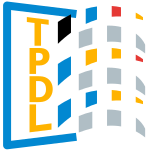 ECDL-2010-Richardson #ambiguity #automation #set
ECDL-2010-Richardson #ambiguity #automation #set- Automated Country Name Disambiguation for Code Set Alignment (GR), pp. 498–501.
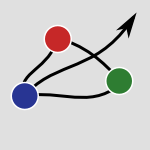 HT-2010-BaeJW #web
HT-2010-BaeJW #web- Show my code in the web (MJB, JHJ, GW), pp. 309–310.
 EDM-2010-CadeO #modelling #topic #using
EDM-2010-CadeO #modelling #topic #using- Using Topic Models to Bridge Coding Schemes of Differing Granularity (WLC, AO), pp. 281–282.
 SIGITE-2010-KayamaFKTS #exclamation #learning
SIGITE-2010-KayamaFKTS #exclamation #learning- Let’s go! magical spoons: a high school learning program for information coding fundamentals (MK, TF, AK, TT, CS), pp. 95–104.
 SIGITE-2010-WaldmannL #collaboration #eclipse #framework #platform #realtime
SIGITE-2010-WaldmannL #collaboration #eclipse #framework #platform #realtime- Integrating the google wave platform with eclipse for collaborative, real-time code creation (BAW, DJL), pp. 69–72.
 CSMR-2010-ButlerWYS #empirical #identifier #quality
CSMR-2010-ButlerWYS #empirical #identifier #quality- Exploring the Influence of Identifier Names on Code Quality: An Empirical Study (SB, MW, YY, HS), pp. 156–165.
 CSMR-2010-JurgensDH
CSMR-2010-JurgensDH- Code Similarities Beyond Copy & Paste (EJ, FD, BH), pp. 78–87.
 CSMR-2010-KellensNSRD #co-evolution #source code
CSMR-2010-KellensNSRD #co-evolution #source code- Co-evolving Annotations and Source Code through Smart Annotations (AK, CN, KDS, CDR, TD), pp. 117–126.
 CSMR-2010-MadaniGPGA #identifier #recognition #source code #speech #using #word
CSMR-2010-MadaniGPGA #identifier #recognition #source code #speech #using #word- Recognizing Words from Source Code Identifiers Using Speech Recognition Techniques (NM, LG, MDP, YGG, GA), pp. 68–77.
 CSMR-2010-MarinescuGV #assessment #named #quality
CSMR-2010-MarinescuGV #assessment #named #quality- InCode: Continuous Quality Assessment and Improvement (RM, GG, IV), pp. 274–275.
 ICPC-2010-BacchelliDL #source code
ICPC-2010-BacchelliDL #source code- Extracting Source Code from E-Mails (AB, MD, ML), pp. 24–33.
 ICPC-2010-JablonskiH #identifier
ICPC-2010-JablonskiH #identifier- Renaming Parts of Identifiers Consistently within Code Clones (PJ, DH), pp. 38–39.
 ICSM-2010-HummelJHC #clone detection #detection #distributed #incremental #scalability
ICSM-2010-HummelJHC #clone detection #detection #distributed #incremental #scalability- Index-based code clone detection: incremental, distributed, scalable (BH, EJ, LH, MC), pp. 1–9.
 ICSM-2010-KeivanlooRSR #code search #framework #named #scalability #semantics #source code
ICSM-2010-KeivanlooRSR #code search #framework #named #scalability #semantics #source code- SE-CodeSearch: A scalable Semantic Web-based source code search infrastructure (IK, LR, PS, JR), pp. 1–5.
 ICSM-2010-Mantyla #empirical #smell
ICSM-2010-Mantyla #empirical #smell- Empirical software evolvability — code smells and human evaluations (MM), pp. 1–6.
 ICSM-2010-OlbrichCS #case study #evolution #open source #smell
ICSM-2010-OlbrichCS #case study #evolution #open source #smell- Are all code smells harmful? A study of God Classes and Brain Classes in the evolution of three open source systems (SMO, DC, DIKS), pp. 1–10.
 ICSM-2010-SavageDGP #named #source code #topic #using
ICSM-2010-SavageDGP #named #source code #topic #using- TopicXP: Exploring topics in source code using Latent Dirichlet Allocation (TS, BD, MG, DP), pp. 1–6.
 MSR-2010-PentaGA #approach #identification #using
MSR-2010-PentaGA #approach #identification #using- Identifying licensing of jar archives using a code-search approach (MDP, DMG, GA), pp. 151–160.
 PASTE-2010-Rubio-GonzalezL #documentation #fault
PASTE-2010-Rubio-GonzalezL #documentation #fault- Expect the unexpected: error code mismatches between documentation and the real world (CRG, BL), pp. 73–80.
 SCAM-2010-GrantC #analysis #concept #source code
SCAM-2010-GrantC #analysis #concept #source code- Estimating the Optimal Number of Latent Concepts in Source Code Analysis (SG, JRC), pp. 65–74.
 SCAM-2010-Harman #analysis #source code #why
SCAM-2010-Harman #analysis #source code #why- Why Source Code Analysis and Manipulation Will Always be Important (MH), pp. 7–19.
 SCAM-2010-SahaAZRS #empirical
SCAM-2010-SahaAZRS #empirical- Evaluating Code Clone Genealogies at Release Level: An Empirical Study (RKS, MA, MFZ, CKR, KAS), pp. 87–96.
 WCRE-2010-Arnaoudova #quality #source code
WCRE-2010-Arnaoudova #quality #source code- Improving Source Code Quality through the Definition of Linguistic Antipatterns (VA), pp. 285–288.
 WCRE-2010-BiegelD #clone detection #configuration management #detection
WCRE-2010-BiegelD #clone detection #configuration management #detection- Highly Configurable and Extensible Code Clone Detection (BB, SD), pp. 237–241.
 WCRE-2010-ChenWZZHNQCG #c #decompiler #readability
WCRE-2010-ChenWZZHNQCG #c #decompiler #readability- A Refined Decompiler to Generate C Code with High Readability (GC, ZW, RZ, KZ, SH, KN, ZQ, KC, HG), pp. 150–154.
 WCRE-2010-DavisG #assembly #detection #source code
WCRE-2010-DavisG #assembly #detection #source code- From Whence It Came: Detecting Source Code Clones by Analyzing Assembler (IJD, MWG), pp. 242–246.
 WCRE-2010-DebrayP #reverse engineering #self
WCRE-2010-DebrayP #reverse engineering #self- Reverse Engineering Self-Modifying Code: Unpacker Extraction (SKD, JP), pp. 131–140.
 WCRE-2010-Eshkevari #identifier #refactoring #source code
WCRE-2010-Eshkevari #identifier #refactoring #source code- Linguistic Driven Refactoring of Source Code Identifiers (LME), pp. 297–300.
 WCRE-2010-GomezDD #integration #source code #visual notation
WCRE-2010-GomezDD #integration #source code #visual notation- Visually Supporting Source Code Changes Integration: The Torch Dashboard (VUG, SD, TD), pp. 55–64.
 WCRE-2010-Guerrouj #analysis #automation #concept #identifier #source code
WCRE-2010-Guerrouj #analysis #automation #concept #identifier #source code- Automatic Derivation of Concepts Based on the Analysis of Source Code Identifiers (LG), pp. 301–304.
 WCRE-2010-HaiducAMM #automation #on the #source code #summary #using
WCRE-2010-HaiducAMM #automation #on the #source code #summary #using- On the Use of Automated Text Summarization Techniques for Summarizing Source Code (SH, JA, LM, AM), pp. 35–44.
 WCRE-2010-KagdiGPC #concept #impact analysis #source code
WCRE-2010-KagdiGPC #concept #impact analysis #source code- Blending Conceptual and Evolutionary Couplings to Support Change Impact Analysis in Source Code (HHK, MG, DP, MLC), pp. 119–128.
 WCRE-2010-LawrieBM #normalisation #source code
WCRE-2010-LawrieBM #normalisation #source code- Normalizing Source Code Vocabulary (DJL, DB, CM), pp. 3–12.
 WCRE-2010-LozanoKMA #mining #source code
WCRE-2010-LozanoKMA #mining #source code- Mining Source Code for Structural Regularities (AL, AK, KM, GA), pp. 22–31.
 ICALP-v2-2010-BlasiakK #network
ICALP-v2-2010-BlasiakK #network- The Serializability of Network Codes (AB, RDK), pp. 100–114.
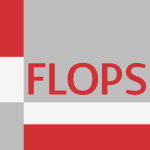 FLOPS-2010-HaftmannN #code generation #higher-order #term rewriting
FLOPS-2010-HaftmannN #code generation #higher-order #term rewriting- Code Generation via Higher-Order Rewrite Systems (FH, TN), pp. 103–117.
 ICFP-2010-ArnoldHKBS #matrix #specification #verification
ICFP-2010-ArnoldHKBS #matrix #specification #verification- Specifying and verifying sparse matrix codes (GA, JH, ASK, RB, MS), pp. 249–260.
 CHI-2010-BragdonZRKCKCAL #comprehension #interface #maintenance
CHI-2010-BragdonZRKCKCAL #comprehension #interface #maintenance- Code bubbles: a working set-based interface for code understanding and maintenance (AB, RCZ, SPR, SK, WC, JK, CC, FA, JJLJ), pp. 2503–2512.
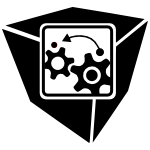 SOFTVIS-2010-Murphy-HillB #interactive #smell #visualisation
SOFTVIS-2010-Murphy-HillB #interactive #smell #visualisation- An interactive ambient visualization for code smells (ERMH, APB), pp. 5–14.
 SOFTVIS-2010-ParninGR #interactive #maintenance #named #programming
SOFTVIS-2010-ParninGR #interactive #maintenance #named #programming- CodePad: interactive spaces for maintaining concentration in programming environments (CP, CG, SR), pp. 15–24.
 ICEIS-J-2010-ArtignanH10a #automation #generative #visual notation
ICEIS-J-2010-ArtignanH10a #automation #generative #visual notation- From Coding to Automatic Generation of Legends in Visual Analytics (GA, MH), pp. 404–417.
 CIKM-2010-SilvestriV #encoding #integer #named #performance #programming
CIKM-2010-SilvestriV #encoding #integer #named #performance #programming- VSEncoding: efficient coding and fast decoding of integer lists via dynamic programming (FS, RV), pp. 1219–1228.
 ICML-2010-GregorL #approximate #learning #performance
ICML-2010-GregorL #approximate #learning #performance- Learning Fast Approximations of Sparse Coding (KG, YL), pp. 399–406.
 ICML-2010-WangKC #learning
ICML-2010-WangKC #learning- Sequential Projection Learning for Hashing with Compact Codes (JW, SK, SFC), pp. 1127–1134.
 ICML-2010-YuZ #coordination #using
ICML-2010-YuZ #coordination #using- Improved Local Coordinate Coding using Local Tangents (KY, TZ), pp. 1215–1222.
 ICPR-2010-ArvanitopoulosBT #fault #linear #subclass #using
ICPR-2010-ArvanitopoulosBT #fault #linear #subclass #using- Subclass Error Correcting Output Codes Using Fisher’s Linear Discriminant Ratio (NA, DB, AT), pp. 2953–2956.
 ICPR-2010-BalujaC #learning #performance #retrieval
ICPR-2010-BalujaC #learning #performance #retrieval- Beyond “Near Duplicates”: Learning Hash Codes for Efficient Similar-Image Retrieval (SB, MC), pp. 543–547.
 ICPR-2010-BattiatoFGMR
ICPR-2010-BattiatoFGMR- Boosting Gray Codes for Red Eyes Removal (SB, GMF, MG, GM, DR), pp. 4214–4217.
 ICPR-2010-BenvenisteU #invariant
ICPR-2010-BenvenisteU #invariant- A Color Invariant Based Binary Coded Structured Light Range Scanner for Shiny Objects (RB, CÜ), pp. 798–801.
 ICPR-2010-CiompiPR #approach #random #using
ICPR-2010-CiompiPR #approach #random #using- A Meta-Learning Approach to Conditional Random Fields Using Error-Correcting Output Codes (FC, OP, PR), pp. 710–713.
 ICPR-2010-DaiYW #classification #image
ICPR-2010-DaiYW #classification #image- Three-layer Spatial Sparse Coding for Image Classification (DD, WY, TW), pp. 613–616.
 ICPR-2010-DengSS #detection #network #pattern matching #pattern recognition #recognition
ICPR-2010-DengSS #detection #network #pattern matching #pattern recognition #recognition- Applying Error-Correcting Output Coding to Enhance Convolutional Neural Network for Target Detection and Pattern Recognition (HD, GS, CYS), pp. 4291–4294.
 ICPR-2010-EscaleraMPRP #fault #framework #online
ICPR-2010-EscaleraMPRP #fault #framework #online- Adding Classes Online in Error Correcting Output Codes Framework (SE, DM, EP, PR, OP), pp. 2945–2948.
 ICPR-2010-GhanemA #linear #recognition
ICPR-2010-GhanemA #linear #recognition- Sparse Coding of Linear Dynamical Systems with an Application to Dynamic Texture Recognition (BG, NA), pp. 987–990.
 ICPR-2010-LawalAM #abduction #classification #network #recognition #using
ICPR-2010-LawalAM #abduction #classification #network #recognition #using- Recognition of Handwritten Arabic (Indian) Numerals Using Freeman’s Chain Codes and Abductive Network Classifiers (IAL, REAA, SAM), pp. 1884–1887.
 ICPR-2010-LuoN #classification #fault #learning #multi #problem
ICPR-2010-LuoN #classification #fault #learning #multi #problem- Employing Decoding of Specific Error Correcting Codes as a New Classification Criterion in Multiclass Learning Problems (YL, KN), pp. 4238–4241.
 ICPR-2010-OGorman #analysis #latency #speech
ICPR-2010-OGorman #analysis #latency #speech- Latency in Speech Feature Analysis for Telepresence Event Coding (LO), pp. 4464–4467.
 ICPR-2010-OudaTN
ICPR-2010-OudaTN- Tokenless Cancelable Biometrics Scheme for Protecting Iris Codes (OO, NT, TN), pp. 882–885.
 ICPR-2010-SmithW #analysis
ICPR-2010-SmithW #analysis- A Bias-Variance Analysis of Bootstrapped Class-Separability Weighting for Error-Correcting Output Code Ensembles (RSS, TW), pp. 61–64.
 ICPR-2010-TarafdarMPPK #documentation #multi #retrieval
ICPR-2010-TarafdarMPPK #documentation #multi #retrieval- Shape Code Based Word-Image Matching for Retrieval of Indian Multi-lingual Documents (AT, RM, SP, UP, FK), pp. 1989–1992.
 ICPR-2010-WangYLZLCT #distance #novel
ICPR-2010-WangYLZLCT #distance #novel- A Novel Fingerprint Template Protection Scheme Based on Distance Projection Coding (RW, XY, XL, SZ, PL, KC, JT), pp. 886–889.
 ICPR-2010-WuLSZ #modelling #word
ICPR-2010-WuLSZ #modelling #word- Integrating ILSR to Bag-of-Visual Words Model Based on Sparse Codes of SIFT Features Representations (LW, SL, WS, XZ), pp. 4283–4286.
 KDD-2010-YanFDR #classification
KDD-2010-YanFDR #classification- Medical coding classification by leveraging inter-code relationships (YY, GF, JGD, RR), pp. 193–202.
 SEKE-2010-AlhassanCB #analysis #fault #network #people #social
SEKE-2010-AlhassanCB #analysis #fault #network #people #social- Do More People Make the Code More Defect Prone?: Social Network Analysis in OSS Projects (SA, BC, ABB), pp. 93–98.
 SEKE-2010-ArrudaCD #detection #framework #using
SEKE-2010-ArrudaCD #detection #framework #using- A Framework for Detecting Code Piracy Using Class Structure (PA, PC, DD), pp. 559–564.
 SEKE-2010-BaratK #approach #code generation #configuration management #development #modelling
SEKE-2010-BaratK #approach #code generation #configuration management #development #modelling- Developing configurable extensible code generators for model-driven development approach (SB, VK), pp. 577–582.
 SEKE-2010-WangWLX #developer
SEKE-2010-WangWLX #developer- Assisting Developers to Read Code Help-Documents Efficiently through Discovering Document-section Relationships (LW, LW, GL, BX), pp. 367–373.
 ECMFA-2010-EichbergMKM #execution #modelling
ECMFA-2010-EichbergMKM #execution #modelling- Model-Driven Engineering of Machine Executable Code (ME, MM, SK, MM), pp. 104–115.
 MoDELS-v1-2010-RahimW #code generation #consistency #semantics #state machine #verification
MoDELS-v1-2010-RahimW #code generation #consistency #semantics #state machine #verification- Verifying Semantic Conformance of State Machine-to-Java Code Generators (LAR, JW), pp. 166–180.
 SPLC-2010-BergerSLCW #product line #scalability
SPLC-2010-BergerSLCW #product line #scalability- Feature-to-Code Mapping in Two Large Product Lines (TB, SS, RL, KC, AW), pp. 498–499.
 SPLC-2010-GhanamM #execution #feature model #modelling #testing #using
SPLC-2010-GhanamM #execution #feature model #modelling #testing #using- Linking Feature Models to Code Artifacts Using Executable Acceptance Tests (YG, FM), pp. 211–225.
 ECOOP-2010-Lea
ECOOP-2010-Lea- Code Roots (DL), p. 1.
 ECOOP-2010-SchaferDSTT #concurrent #java #refactoring
ECOOP-2010-SchaferDSTT #concurrent #java #refactoring- Correct Refactoring of Concurrent Java Code (MS, JD, MS, ET, FT), pp. 225–249.
 OOPSLA-2010-GabelYYGS #consistency #detection #nondeterminism #scalability #source code
OOPSLA-2010-GabelYYGS #consistency #detection #nondeterminism #scalability #source code- Scalable and systematic detection of buggy inconsistencies in source code (MG, JY, YY, MG, ZS), pp. 175–190.
 OOPSLA-2010-HerzeelC #control flow #interactive #parallel #recursion
OOPSLA-2010-HerzeelC #control flow #interactive #parallel #recursion- Dynamic parallelization of recursive code: part 1: managing control flow interactions with the continuator (CH, PC), pp. 377–396.
 OOPSLA-2010-LernerVG #aspect-oriented #javascript #using
OOPSLA-2010-LernerVG #aspect-oriented #javascript #using- Supporting dynamic, third-party code customizations in JavaScript using aspects (BSL, HV, DG), pp. 361–376.
 TOOLS-EUROPE-2010-HeideggerT #javascript #testing
TOOLS-EUROPE-2010-HeideggerT #javascript #testing- Contract-Driven Testing of JavaScript Code (PH, PT), pp. 154–172.
 PADL-2010-LiT #detection #erlang #source code
PADL-2010-LiT #detection #erlang #source code- Similar Code Detection and Elimination for Erlang Programs (HL, SJT), pp. 104–118.
 POPL-2010-BhargavanFG #composition #protocol #security #type system #verification
POPL-2010-BhargavanFG #composition #protocol #security #type system #verification- Modular verification of security protocol code by typing (KB, CF, ADG), pp. 445–456.
 POPL-2010-WrigstadNLOV #scripting language
POPL-2010-WrigstadNLOV #scripting language- Integrating typed and untyped code in a scripting language (TW, FZN, SL, JÖ, JV), pp. 377–388.
 SAS-2010-Fahndrich #contract #verification
SAS-2010-Fahndrich #contract #verification- Static Verification for Code Contracts (MF), pp. 2–5.
 RE-2010-EgyedGG #quality
RE-2010-EgyedGG #quality- Effort and Quality of Recovering Requirements-to-Code Traces: Two Exploratory Experiments (AE, FG, PG), pp. 221–230.
 RE-2010-Stanbridge #analysis #test coverage #testing #user interface #using
RE-2010-Stanbridge #analysis #test coverage #testing #user interface #using- Retrospective Requirement Analysis Using Code Coverage of GUI Driven System Tests (CS), pp. 411–412.
 ASE-2010-BalzSG #maintenance #modelling #state machine #tool support
ASE-2010-BalzSG #maintenance #modelling #state machine #tool support- Tool support for continuous maintenance of state machine models in program code (MB, MS, MG), pp. 175–176.
 ASE-2010-BiegelD #api #clone detection #detection #flexibility #implementation #named
ASE-2010-BiegelD #api #clone detection #detection #flexibility #implementation #named- JCCD: a flexible and extensible API for implementing custom code clone detectors (BB, SD), pp. 167–168.
 ASE-2010-Chen #documentation #source code #traceability #visualisation
ASE-2010-Chen #documentation #source code #traceability #visualisation- Extraction and visualization of traceability relationships between documents and source code (XC), pp. 505–510.
 ASE-2010-GermanMI #automation #identification #source code
ASE-2010-GermanMI #automation #identification #source code- A sentence-matching method for automatic license identification of source code files (DMG, YM, KI), pp. 437–446.
 ASE-2010-KessentiniVS #identification #risk management
ASE-2010-KessentiniVS #identification #risk management- Deviance from perfection is a better criterion than closeness to evil when identifying risky code (MK, SV, HAS), pp. 113–122.
 ASE-2010-MontrieuxJHYST #code generation #tool support
ASE-2010-MontrieuxJHYST #code generation #tool support- Tool support for code generation from a UMLsec property (LM, JJ, CBH, YY, PYS, HT), pp. 357–358.
 ASE-2010-RajeevSSR #code generation #named #testing
ASE-2010-RajeevSSR #code generation #named #testing- CoGenTe: a tool for code generator testing (ACR, PS, KCS, SR), pp. 349–350.
 ASE-2010-SchulteFW #assembly #automation #evolution #program repair
ASE-2010-SchulteFW #assembly #automation #evolution #program repair- Automated program repair through the evolution of assembly code (ES, SF, WW), pp. 313–316.
 ASE-2010-TaleghaniA
ASE-2010-TaleghaniA- Search-carrying code (AT, JMA), pp. 367–376.
 FSE-2010-BajracharyaOL #effectiveness #repository #retrieval #similarity
FSE-2010-BajracharyaOL #effectiveness #repository #retrieval #similarity- Leveraging usage similarity for effective retrieval of examples in code repositories (SKB, JO, CVL), pp. 157–166.
 FSE-2010-GabelS #case study #source code
FSE-2010-GabelS #case study #source code- A study of the uniqueness of source code (MG, ZS), pp. 147–156.
 FSE-2010-LeeRHK #clone detection
FSE-2010-LeeRHK #clone detection- Instant code clone search (MWL, JWR, SwH, SK), pp. 167–176.
 ICSE-2010-AdamsJH #identification #using
ICSE-2010-AdamsJH #identification #using- Identifying crosscutting concerns using historical code changes (BA, ZMJ, AEH), pp. 305–314.
 ICSE-2010-BacchelliLR #source code
ICSE-2010-BacchelliLR #source code- Linking e-mails and source code artifacts (AB, ML, RR), pp. 375–384.
 ICSE-2010-Bragdon
ICSE-2010-Bragdon- Developing and evaluating the code bubbles metaphor (AB), pp. 525–526.
 ICSE-2010-BragdonRZKCKCAL #development #ide #paradigm #user interface
ICSE-2010-BragdonRZKCKCAL #development #ide #paradigm #user interface- Code bubbles: rethinking the user interface paradigm of integrated development environments (AB, SPR, RCZ, SK, WC, JK, CC, FA, JJLJ), pp. 455–464.
 ICSE-2010-BragdonRZKCKCAL10a #research
ICSE-2010-BragdonRZKCKCAL10a #research- A research demonstration of code bubbles (AB, SPR, RCZ, SK, WC, JK, CC, FA, JJLJ), pp. 293–296.
 ICSE-2010-Cleland-HuangCGE #approach #machine learning #requirements
ICSE-2010-Cleland-HuangCGE #approach #machine learning #requirements- A machine learning approach for tracing regulatory codes to product specific requirements (JCH, AC, MG, JE), pp. 155–164.
 ICSE-2010-DeissenboeckHJ #clone detection #detection
ICSE-2010-DeissenboeckHJ #clone detection #detection- Code clone detection in practice (FD, BH, EJ), pp. 499–500.
 ICSE-2010-DeLineR #development #towards
ICSE-2010-DeLineR #development #towards- Code canvas: zooming towards better development environments (RD, KR), pp. 207–210.
 ICSE-2010-FritzOMM #source code
ICSE-2010-FritzOMM #source code- A degree-of-knowledge model to capture source code familiarity (TF, JO, GCM, ERMH), pp. 385–394.
 ICSE-2010-GenevesL #source code #xquery
ICSE-2010-GenevesL #source code #xquery- Eliminating dead-code from XQuery programs (PG, NL), pp. 305–306.
 ICSE-2010-GuoSZS #empirical #smell
ICSE-2010-GuoSZS #empirical #smell- Domain-specific tailoring of code smells: an empirical study (YG, CBS, NZ, FS), pp. 167–170.
 ICSE-2010-Gysin #code search #social
ICSE-2010-Gysin #code search #social- Improved social trustability of code search results (FSG), pp. 513–514.
 ICSE-2010-HaiducAM #comprehension #source code #summary
ICSE-2010-HaiducAM #comprehension #source code #summary- Supporting program comprehension with source code summarization (SH, JA, AM), pp. 223–226.
 ICSE-2010-UbayashiNT #architecture #contract #design #named
ICSE-2010-UbayashiNT #architecture #contract #design #named- Archface: a contract place where architectural design and code meet together (NU, JN, TT), pp. 75–84.
 SAC-2010-DaroncoRL #assessment #quality #scalability #video
SAC-2010-DaroncoRL #assessment #quality #scalability #video- Subjective video quality assessment applied to scalable video coding and transmission instability (LCD, VR, JVdL), pp. 1898–1904.
 SAC-2010-GiuntaPT #aspect-oriented #design pattern #using
SAC-2010-GiuntaPT #aspect-oriented #design pattern #using- Using aspects and annotations to separate application code from design patterns (RG, GP, ET), pp. 2183–2189.
 SAC-2010-GravinoTS #analysis #comprehension #empirical #modelling #source code
SAC-2010-GravinoTS #analysis #comprehension #empirical #modelling #source code- An empirical investigation on the relation between analysis models and source code comprehension (CG, GT, GS), pp. 2365–2366.
 SAC-2010-HonoratoB #named #towards
SAC-2010-HonoratoB #named #towards- NCL-inspector: towards improving NCL code (GdSCH, SDJB), pp. 1946–1947.
 SAC-2010-LeeJL #detection #graph #using
SAC-2010-LeeJL #detection #graph #using- Detecting metamorphic malwares using code graphs (JL, KJ, HL), pp. 1970–1977.
 SAC-2010-LesnerBBB #detection #exclamation #framework #novel #source code #student
SAC-2010-LesnerBBB #detection #exclamation #framework #novel #source code #student- A novel framework to detect source code plagiarism: now, students have to work for real! (BL, RB, CB, GB), pp. 57–58.
 SAC-2010-MilettoPSB #music #social #web
SAC-2010-MilettoPSB #music #social #web- Social music making on the web with CODES (EMM, MSP, JPS, FB), pp. 876–877.
 SAC-2010-SamiF #estimation #metric
SAC-2010-SamiF #estimation #metric- Design-level metrics estimation based on code metrics (AS, SMF), pp. 2531–2535.
 GPCE-2010-RompfO #approach #code generation #composition #domain-specific language #lightweight #runtime #staging
GPCE-2010-RompfO #approach #code generation #composition #domain-specific language #lightweight #runtime #staging- Lightweight modular staging: a pragmatic approach to runtime code generation and compiled DSLs (TR, MO), pp. 127–136.
 GPCE-2010-SchulzeAK #feature model #product line
GPCE-2010-SchulzeAK #feature model #product line- Code clones in feature-oriented software product lines (SS, SA, CK), pp. 103–112.
 GPCE-2010-WurthingerBAMM #aspect-oriented #development #evolution #java #programming #user interface
GPCE-2010-WurthingerBAMM #aspect-oriented #development #evolution #java #programming #user interface- Applications of enhanced dynamic code evolution for Java in GUI development and dynamic aspect-oriented programming (TW, WB, DA, PM, HM), pp. 123–126.
 CC-2010-BaskaranRS #automation #code generation #source code
CC-2010-BaskaranRS #automation #code generation #source code- Automatic C-to-CUDA Code Generation for Affine Programs (MMB, JR, PS), pp. 244–263.
 CC-2010-DingO #algorithm #representation #strict
CC-2010-DingO #algorithm #representation #strict- Unrestricted Code Motion: A Program Representation and Transformation Algorithms Based on Future Values (SD, SÖ), pp. 26–45.
 CC-2010-JockschMSGA #compilation #mining
CC-2010-JockschMSGA #compilation #mining- Mining Opportunities for Code Improvement in a Just-In-Time Compiler (AJ, MM, JS, NG, JNA), pp. 10–25.
 CGO-2010-KochBF #code generation
CGO-2010-KochBF #code generation- Integrated instruction selection and register allocation for compact code generation exploiting freeform mixing of 16- and 32-bit instructions (TJKEvK, IB, BF), pp. 180–189.
 CGO-2010-Srisa-anCSS #memory management #self
CGO-2010-Srisa-anCSS #memory management #self- A self-adjusting code cache manager to balance start-up time and memory usage (WSa, MBC, YS, MS), pp. 82–91.
 CGO-2010-YuXHFZ #analysis #pointer #scalability
CGO-2010-YuXHFZ #analysis #pointer #scalability- Level by level: making flow- and context-sensitive pointer analysis scalable for millions of lines of code (HY, JX, WH, XF, ZZ), pp. 218–229.
 DATE-2010-AgyekumN #communication #hardware #robust
DATE-2010-AgyekumN #communication #hardware #robust- An error-correcting unordered code and hardware support for robust asynchronous global communication (MYA, SMN), pp. 765–770.
 DATE-2010-BaudischBS #independence #parallel #source code #thread
DATE-2010-BaudischBS #independence #parallel #source code #thread- Multithreaded code from synchronous programs: Extracting independent threads for OpenMP (DB, JB, KS), pp. 949–952.
 DATE-2010-CharfiMGTB #code generation #modelling #optimisation #towards
DATE-2010-CharfiMGTB #code generation #modelling #optimisation #towards- Toward optimized code generation through model-based optimization (AC, CM, SG, FT, PB), pp. 1313–1316.
 DATE-2010-ChenW #adaptation #memory management #random
DATE-2010-ChenW #adaptation #memory management #random- An adaptive code rate EDAC scheme for random access memory (CYC, CWW), pp. 735–740.
 DATE-2010-CollinsVC #code generation #manycore #parallel #recursion
DATE-2010-CollinsVC #code generation #manycore #parallel #recursion- Recursion-driven parallel code generation for multi-core platforms (RLC, BV, LPC), pp. 190–195.
 DATE-2010-HuangCLH #robust
DATE-2010-HuangCLH #robust- A robust ADC code hit counting technique (JLH, KYC, MHL, XLH), pp. 1749–1754.
 DATE-2010-MayIWR
DATE-2010-MayIWR- A 150Mbit/s 3GPP LTE Turbo code decoder (MM, TI, NW, WR), pp. 1420–1425.
 DATE-2010-ZhangDYMZKCPS #code generation #compilation #evaluation
DATE-2010-ZhangDYMZKCPS #code generation #compilation #evaluation- A special-purpose compiler for look-up table and code generation for function evaluation (YZ, LD, PY, SPM, HZ, MTK, CC, NP, XS), pp. 1130–1135.
 LCTES-2010-LiZ #embedded #mobile #performance
LCTES-2010-LiZ #embedded #mobile #performance- An efficient code update scheme for DSP applications in mobile embedded systems (WL, YZ), pp. 105–114.
 PDP-2010-LorenzoPLRS #lessons learnt #migration #parallel
PDP-2010-LorenzoPLRS #lessons learnt #migration #parallel- Lessons Learnt Porting Parallelisation Techniques for Irregular Codes to NUMA Systems (JAL, JCP, DLL, FFR, DES), pp. 213–217.
 PDP-2010-Rodriguez-PascualGCRLM #grid
PDP-2010-Rodriguez-PascualGCRLM #grid- A Grid Version of the Fusion Code FAFNER (MARP, JG, FC, AJRM, IML, RM), pp. 449–453.
 PDP-2010-TskhakayaSSBYW #simulation
PDP-2010-TskhakayaSSBYW #simulation- PIC/MC Code BIT1 for Plasma Simulations on HPC (DT, AS, RS, MB, EY, JW), pp. 476–481.
 FASE-2010-HashimotoM #evolution
FASE-2010-HashimotoM #evolution- A Method for Analyzing Code Homology in Genealogy of Evolving Software (MH, AM), pp. 91–106.
 STOC-2010-GuruswamiHK #linear #on the #random
STOC-2010-GuruswamiHK #linear #on the #random- On the list-decodability of random linear codes (VG, JH, SK), pp. 409–416.
 STOC-2010-KoppartyS #fault #linear #random #testing
STOC-2010-KoppartyS #fault #linear #random #testing- Local list-decoding and testing of random linear codes from high error (SK, SS), pp. 417–426.
 TACAS-2010-DonaldsonKR #analysis #automation #manycore #memory management
TACAS-2010-DonaldsonKR #analysis #automation #manycore #memory management- Automatic Analysis of Scratch-Pad Memory Code for Heterogeneous Multicore Processors (AFD, DK, PR), pp. 280–295.
 TACAS-2010-KatzP #automation #verification
TACAS-2010-KatzP #automation #verification- Code Mutation in Verification and Automatic Code Correction (GK, DP), pp. 435–450.
 CAV-2010-Jha #legacy #security
CAV-2010-Jha #legacy #security- Retrofitting Legacy Code for Security (SJ), p. 19.
 CAV-2010-RepsLTBL #verification
CAV-2010-RepsLTBL #verification- There’s Plenty of Room at the Bottom: Analyzing and Verifying Machine Code (TWR, JL, AVT, GB, AL), pp. 41–56.
 CAV-2010-ThakurLLBDEAR #generative #proving
CAV-2010-ThakurLLBDEAR #generative #proving- Directed Proof Generation for Machine Code (AVT, JL, AL, AB, ED, ME, TA, TWR), pp. 288–305.
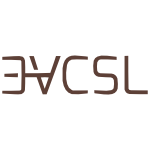 CSL-2010-BiancoMM #logic
CSL-2010-BiancoMM #logic- Graded Computation Tree Logic with Binary Coding (AB, FM, AM), pp. 125–139.
 ICLP-2010-Dandois10 #logic programming #program analysis #source code
ICLP-2010-Dandois10 #logic programming #program analysis #source code- Program analysis for code duplication in logic programs (CD), pp. 241–247.
 ICST-2010-GligoricJM #mutation testing #named #parallel #performance #testing #thread
ICST-2010-GligoricJM #mutation testing #named #parallel #performance #testing #thread- MuTMuT: Efficient Exploration for Mutation Testing of Multithreaded Code (MG, VJ, DM), pp. 55–64.
 ISSTA-2010-CarbinR #automation #identification
ISSTA-2010-CarbinR #automation #identification- Automatically identifying critical input regions and code in applications (MC, MCR), pp. 37–48.
 WICSA-ECSA-2009-BontaB #algebra #architecture #code generation #java #named #process
WICSA-ECSA-2009-BontaB #algebra #architecture #code generation #java #named #process- PADL2Java: A Java code generator for process algebraic architectural descriptions (EB, MB), pp. 161–170.
 ICDAR-2009-BaiLT #documentation #image #keyword #word
ICDAR-2009-BaiLT #documentation #image #keyword #word- Keyword Spotting in Document Images through Word Shape Coding (SB, LL, CLT), pp. 331–335.
 ICDAR-2009-DengSS #network #recognition
ICDAR-2009-DengSS #network #recognition- Error-Correcting Output Coding for the Convolutional Neural Network for Optical Character Recognition (HD, GS, CYS), pp. 581–585.
 ICDAR-2009-LiT #identification #independence #online #sequence
ICDAR-2009-LiT #identification #independence #online #sequence- Online Text-independent Writer Identification Based on Temporal Sequence and Shape Codes (BL, TT), pp. 931–935.
 ICDAR-2009-PalRRK #automation #multi #recognition #string
ICDAR-2009-PalRRK #automation #multi #recognition #string- Indian Multi-Script Full Pin-code String Recognition for Postal Automation (UP, RKR, KR, FK), pp. 456–460.
 ICDAR-2009-SiddiqiV #recognition #set
ICDAR-2009-SiddiqiV #recognition #set- A Set of Chain Code Based Features for Writer Recognition (IS, NV), pp. 981–985.
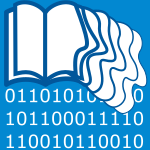 JCDL-2009-EdvardsenSAT #automation #documentation #generative #metadata #quality
JCDL-2009-EdvardsenSAT #automation #documentation #generative #metadata #quality- Automatically generating high quality metadata by analyzing the document code of common file types (LFHE, IS, TA, HT), pp. 29–38.
 ITiCSE-2009-Gibson #reuse
ITiCSE-2009-Gibson #reuse- Software reuse and plagiarism: a code of practice (JPG), pp. 55–59.
 ITiCSE-2009-PatersonHC #approach #education #modelling #object-oriented #programming #using
ITiCSE-2009-PatersonHC #approach #education #modelling #object-oriented #programming #using- Using coding patterns in a model-driven approach to teaching object oriented programming (JHP, JH, KFC), p. 358.
 ICPC-J-2008-RoyCK09 #approach #clone detection #comparison #detection #evaluation #tool support
ICPC-J-2008-RoyCK09 #approach #clone detection #comparison #detection #evaluation #tool support- Comparison and evaluation of code clone detection techniques and tools: A qualitative approach (CKR, JRC, RK), pp. 470–495.
 CSMR-2009-AbebeHMTA #evolution #source code
CSMR-2009-AbebeHMTA #evolution #source code- Analyzing the Evolution of the Source Code Vocabulary (SLA, SH, AM, PT, GA), pp. 189–198.
 CSMR-2009-Ghazarian #case study #evolution #source code
CSMR-2009-Ghazarian #case study #evolution #source code- A Case Study of Source Code Evolution (AG), pp. 159–168.
 CSMR-2009-LuciaDGR #behaviour #identification #parsing #visual notation
CSMR-2009-LuciaDGR #behaviour #identification #parsing #visual notation- Behavioral Pattern Identification through Visual Language Parsing and Code Instrumentation (ADL, VD, CG, MR), pp. 99–108.
 ICPC-2009-AuprasertL #representation #source code
ICPC-2009-AuprasertL #representation #source code- Representing source code with Granular hierarchical structures (BA, YL), pp. 319–320.
 ICPC-2009-CeccatoPNFRTT #assessment #effectiveness #obfuscation #source code
ICPC-2009-CeccatoPNFRTT #assessment #effectiveness #obfuscation #source code- The effectiveness of source code obfuscation: An experimental assessment (MC, MDP, JN, PF, FR, MT, PT), pp. 178–187.
 ICPC-2009-ChilowiczDR #detection #similarity #source code #syntax
ICPC-2009-ChilowiczDR #detection #similarity #source code #syntax- Syntax tree fingerprinting for source code similarity detection (MC, ÉD, GR), pp. 243–247.
 ICPC-2009-HammadCM #automation #identification #traceability
ICPC-2009-HammadCM #automation #identification #traceability- Automatically identifying changes that impact code-to-design traceability (MH, MLC, JIM), pp. 20–29.
 ICPC-2009-HanWYCZL #clustering #comprehension #design pattern #open source #source code
ICPC-2009-HanWYCZL #clustering #comprehension #design pattern #open source #source code- Design pattern directed clustering for understanding open source code (ZH, LW, LY, XC, JZ, XL), pp. 295–296.
 ICPC-2009-NilssonLHN #fact extraction #natural language #parsing #source code
ICPC-2009-NilssonLHN #fact extraction #natural language #parsing #source code- Natural language parsing for fact extraction from source code (JN, WL, JH, JN), pp. 223–227.
 ICPC-2009-PortoMF #comprehension #named #visualisation
ICPC-2009-PortoMF #comprehension #named #visualisation- CRISTA: A tool to support code comprehension based on visualization and reading technique (DP, MGM, SCPFF), pp. 285–286.
 ICSM-2009-Adams #co-evolution #source code
ICSM-2009-Adams #co-evolution #source code- Co-evolution of source code and the build system (BA), pp. 461–464.
 ICSM-2009-AlamAH #dependence #using
ICSM-2009-AlamAH #dependence #using- Measuring the progress of projects using the time dependence of code changes (OA, BA, AEH), pp. 329–338.
 ICSM-2009-HolmesCWD #case study #source code #using
ICSM-2009-HolmesCWD #case study #source code #using- The end-to-end use of source code examples: An exploratory study (RH, RC, RJW, JD), pp. 555–558.
 ICSM-2009-HouJJ
ICSM-2009-HouJJ- Proactively managing copy-and-paste induced code clones (DH, FJ, PJ), pp. 391–392.
 ICSM-2009-NigulM #maintenance
ICSM-2009-NigulM #maintenance- Software maintainability benefits from annotation-driven code (LN, EM), pp. 417–421.
 ICSM-2009-PletcherH #api #code completion #named #usability
ICSM-2009-PletcherH #api #code completion #named #usability- BCC: Enhancing code completion for better API usability (DMP, DH), pp. 393–394.
 ICSM-2009-Reiss #code search #semantics
ICSM-2009-Reiss #code search #semantics- Semantics-based code search demonstration proposal (SPR), pp. 385–386.
 ICSM-2009-Wang #developer #motivation #source code #what
ICSM-2009-Wang #developer #motivation #source code #what- What motivate software engineers to refactor source code? evidences from professional developers (YW), pp. 413–416.
 ICSM-2009-WitZD #clone tracking #using
ICSM-2009-WitZD #clone tracking #using- Managing code clones using dynamic change tracking and resolution (MdW, AZ, AvD), pp. 169–178.
 ICSM-2009-YoshikawaHS #natural language #ontology #source code #traceability #using
ICSM-2009-YoshikawaHS #natural language #ontology #source code #traceability #using- Recovering traceability links between a simple natural language sentence and source code using domain ontologies (TY, SH, MS), pp. 551–554.
 ICSM-2009-Zhang #fault
ICSM-2009-Zhang #fault- An investigation of the relationships between lines of code and defects (HZ), pp. 274–283.
 MSR-2009-BajracharyaL #code search #mining #topic
MSR-2009-BajracharyaL #code search #mining #topic- Mining search topics from a code search engine usage log (SKB, CVL), pp. 111–120.
 MSR-2009-BoogerdM #standard
MSR-2009-BoogerdM #standard- Evaluating the relation between coding standard violations and faultswithin and across software versions (CB, LM), pp. 41–50.
 MSR-2009-EnslenHPV #analysis #automation #identifier #mining #source code
MSR-2009-EnslenHPV #analysis #automation #identifier #mining #source code- Mining source code to automatically split identifiers for software analysis (EE, EH, LLP, KVS), pp. 71–80.
 MSR-2009-GermanPGA
MSR-2009-GermanPGA- Code siblings: Technical and legal implications of copying code between applications (DMG, MDP, YGG, GA), pp. 81–90.
 MSR-2009-HattoriL #mining
MSR-2009-HattoriL #mining- Mining the history of synchronous changes to refine code ownership (LH, ML), pp. 141–150.
 MSR-2009-Kuhn #automation #component #evolution #source code #using #word
MSR-2009-Kuhn #automation #component #evolution #source code #using #word- Automatic labeling of software components and their evolution using log-likelihood ratio of word frequencies in source code (AK), pp. 175–178.
 MSR-2009-LubsenZP #co-evolution #using
MSR-2009-LubsenZP #co-evolution #using- Using association rules to study the co-evolution of production & test code (ZL, AZ, MP), pp. 151–154.
 MSR-2009-Mockus #scalability #source code #towards #version control
MSR-2009-Mockus #scalability #source code #towards #version control- Amassing and indexing a large sample of version control systems: Towards the census of public source code history (AM), pp. 11–20.
 SCAM-2009-GutzmannS #java
SCAM-2009-GutzmannS #java- Backporting Java 5 Code (TG, TS), pp. 121–122.
 SCAM-2009-KlintSV #analysis #domain-specific language #named #rascal #source code
SCAM-2009-KlintSV #analysis #domain-specific language #named #rascal #source code- RASCAL: A Domain Specific Language for Source Code Analysis and Manipulation (PK, TvdS, JJV), pp. 168–177.
 SCAM-2009-Prause #fine-grained #maintenance #metadata
SCAM-2009-Prause #fine-grained #maintenance #metadata- Maintaining Fine-Grained Code Metadata Regardless of Moving, Copying and Merging (CP), pp. 109–118.
 WCRE-1999-AlamAH99a #case study #dependence
WCRE-1999-AlamAH99a #case study #dependence- A Study of the Time Dependence of Code Changes (OA, BA, AEH), pp. 21–30.
 WCRE-1999-AnquetilRAAHPPP99a #architecture #java #named #source code
WCRE-1999-AnquetilRAAHPPP99a #architecture #java #named #source code- JavaCompExt: Extracting Architectural Elements from Java Source Code (NA, JCR, PA, GA, PH, TP, DP, VP), pp. 317–318.
 WCRE-1999-BacchelliDLR99a #benchmark #lightweight #metric #source code
WCRE-1999-BacchelliDLR99a #benchmark #lightweight #metric #source code- Benchmarking Lightweight Techniques to Link E-Mails and Source Code (AB, MD, ML, RR), pp. 205–214.
 WCRE-1999-BettenburgSIAZH99a #consistency #empirical
WCRE-1999-BettenburgSIAZH99a #consistency #empirical- An Empirical Study on Inconsistent Changes to Code Clones at Release Level (NB, WS, WMI, BA, YZ, AEH), pp. 85–94.
 WCRE-1999-ButlerWYS99a #empirical #identifier #quality
WCRE-1999-ButlerWYS99a #empirical #identifier #quality- Relating Identifier Naming Flaws and Code Quality: An Empirical Study (SB, MW, YY, HS), pp. 31–35.
 WCRE-1999-HigoK99a #clone detection #dependence #detection #graph #quality
WCRE-1999-HigoK99a #clone detection #dependence #detection #graph #quality- Enhancing Quality of Code Clone Detection with Program Dependency Graph (YH, SK), pp. 315–316.
 WCRE-1999-KawaguchiYUFKNI99a #automation #clone detection #detection #ide #named
WCRE-1999-KawaguchiYUFKNI99a #automation #clone detection #detection #ide #named- SHINOBI: A Tool for Automatic Code Clone Detection in the IDE (SK, TY, HU, KF, YK, MN, HI), pp. 313–314.
 WCRE-1999-KhomhPG99a #case study #smell
WCRE-1999-KhomhPG99a #case study #smell- An Exploratory Study of the Impact of Code Smells on Software Change-proneness (FK, MDP, YGG), pp. 75–84.
 WCRE-1999-LetarteM99a #interprocedural #modelling #php
WCRE-1999-LetarteM99a #interprocedural #modelling #php- Extraction of Inter-procedural Simple Role Privilege Models from PHP Code (DL, EM), pp. 187–191.
 WCRE-1999-PentaG99a #how #question #source code
WCRE-1999-PentaG99a #how #question #source code- Who are Source Code Contributors and How do they Change? (MDP, DMG), pp. 11–20.
 WCRE-1999-Perez-CastilloGAP99a #legacy #on the #source code #using
WCRE-1999-Perez-CastilloGAP99a #legacy #on the #source code #using- On the Use of ADM to Contextualize Data on Legacy Source Code for Software Modernization (RPC, IGRdG, OAG, MP), pp. 128–132.
 ICALP-v1-2009-KobayashiGNR #communication #network #quantum
ICALP-v1-2009-KobayashiGNR #communication #network #quantum- General Scheme for Perfect Quantum Network Coding with Free Classical Communication (HK, FLG, HN, MR), pp. 622–633.
 ICFP-2009-Steele #execution #functional #parallel
ICFP-2009-Steele #execution #functional #parallel- Organizing functional code for parallel execution or, foldl and foldr considered slightly harmful (GLSJ), pp. 1–2.
 CHI-2009-BrandtGLDK #learning #programming #web
CHI-2009-BrandtGLDK #learning #programming #web- Two studies of opportunistic programming: interleaving web foraging, learning, and writing code (JB, PJG, JL, MD, SRK), pp. 1589–1598.
 CHI-2009-JakobsenH #source code #using #visualisation
CHI-2009-JakobsenH #source code #using #visualisation- Fisheyes in the field: using method triangulation to study the adoption and use of a source code visualization (MRJ, KH), pp. 1579–1588.
 VISSOFT-2009-CottrellGHWD #source code #visual notation
VISSOFT-2009-CottrellGHWD #source code #visual notation- Compare and contrast: Visual exploration of source code examples (RC, BG, RH, RJW, JD), pp. 29–32.
 VISSOFT-2009-ParkJ #open source #visualisation
VISSOFT-2009-ParkJ #open source #visualisation- Beyond pretty pictures: Examining the benefits of code visualization for Open Source newcomers (YP, CJ), pp. 3–10.
 VISSOFT-2009-TeleaHER #c #c++ #case study #comparative #dependence #scalability #visualisation
VISSOFT-2009-TeleaHER #c #c++ #case study #comparative #dependence #scalability #visualisation- Extraction and visualization of call dependencies for large C/C++ code bases: A comparative study (ACT, HH, OE, DR), pp. 81–88.
 CIKM-2009-GedikAW #approach #code generation #data type #distributed #optimisation
CIKM-2009-GedikAW #approach #code generation #data type #distributed #optimisation- A code generation approach to optimizing high-performance distributed data stream processing (BG, HA, KLW), pp. 847–856.
 ICML-2009-MairalBPS #learning #online #taxonomy
ICML-2009-MairalBPS #learning #online #taxonomy- Online dictionary learning for sparse coding (JM, FRB, JP, GS), pp. 689–696.
 KDD-2009-BohmHMP #detection #named
KDD-2009-BohmHMP #detection #named- CoCo: coding cost for parameter-free outlier detection (CB, KH, NSM, CP), pp. 149–158.
 RecSys-2009-WeimerKB #matrix #recommendation
RecSys-2009-WeimerKB #matrix #recommendation- Maximum margin matrix factorization for code recommendation (MW, AK, MB), pp. 309–312.
 SEKE-2009-AxelssonBFSK #code review #detection #fault #interactive #machine learning #overview #visualisation
SEKE-2009-AxelssonBFSK #code review #detection #fault #interactive #machine learning #overview #visualisation- Detecting Defects with an Interactive Code Review Tool Based on Visualisation and Machine Learning (SA, DB, RF, DS, DK), pp. 412–417.
 SEKE-2009-HauboldBG #code generation #metamodelling #object-oriented #uml
SEKE-2009-HauboldBG #code generation #metamodelling #object-oriented #uml- A Pragmatic UML-based Meta Model for Object-oriented Code Generation (TH, GB, WG), pp. 733–738.
 SIGIR-2009-LinYCWW #approach #modelling #semantics #thread
SIGIR-2009-LinYCWW #approach #modelling #semantics #thread- Simultaneously modeling semantics and structure of threaded discussions: a sparse coding approach and its applications (CL, JMY, RC, XJW, WW, LZ), pp. 131–138.
 MoDELS-2009-MoiseevHS #approach #generative #implementation #ocl
MoDELS-2009-MoiseevHS #approach #generative #implementation #ocl- Generating Assertion Code from OCL: A Transformational Approach Based on Similarities of Implementation Languages (RM, SH, MS), pp. 650–664.
 MoDELS-2009-MoiseevHS #approach #generative #implementation #ocl
MoDELS-2009-MoiseevHS #approach #generative #implementation #ocl- Generating Assertion Code from OCL: A Transformational Approach Based on Similarities of Implementation Languages (RM, SH, MS), pp. 650–664.
 OOPSLA-2009-LeeHGM #debugging
OOPSLA-2009-LeeHGM #debugging- Debug all your code: portable mixed-environment debugging (BL, MH, RG, KSM), pp. 207–226.
 OOPSLA-2009-Mullen #design #people
OOPSLA-2009-Mullen #design #people- Writing code for other people: cognitive psychology and the fundamentals of good software design principles (TM), pp. 481–492.
 OOPSLA-2009-PluquetLW #graph #in memory #performance #version control
OOPSLA-2009-PluquetLW #graph #in memory #performance #version control- Executing code in the past: efficient in-memory object graph versioning (FP, SL, RW), pp. 391–408.
 TOOLS-EUROPE-2009-CaronCMV #adaptation #component #framework #functional
TOOLS-EUROPE-2009-CaronCMV #adaptation #component #framework #functional- A Coding Framework for Functional Adaptation of Coarse-Grained Components in Extensible EJB Servers (OC, BC, AM, GV), pp. 215–230.
 AdaEurope-2009-LasnierZPH #analysis #automation #code generation #modelling
AdaEurope-2009-LasnierZPH #analysis #automation #code generation #modelling- Ocarina : An Environment for AADL Models Analysis and Automatic Code Generation for High Integrity Applications (GL, BZ, LP, JH), pp. 237–250.
 PLDI-2009-TristanL #lazy evaluation #validation
PLDI-2009-TristanL #lazy evaluation #validation- Verified validation of lazy code motion (JBT, XL), pp. 316–326.
 POPL-2009-BartheGB #certification #encryption #proving
POPL-2009-BartheGB #certification #encryption #proving- Formal certification of code-based cryptographic proofs (GB, BG, SZB), pp. 90–101.
 POPL-2009-ConditHLQ #low level #type checking
POPL-2009-ConditHLQ #low level #type checking- Unifying type checking and property checking for low-level code (JC, BH, SKL, SQ), pp. 302–314.
 POPL-2009-LublinermanST #code generation #composition #diagrams
POPL-2009-LublinermanST #code generation #composition #diagrams- Modular code generation from synchronous block diagrams: modularity vs. code size (RL, CS, ST), pp. 78–89.
 POPL-2009-SarkarSNORBMA #multi #semantics
POPL-2009-SarkarSNORBMA #multi #semantics- The semantics of x86-CC multiprocessor machine code (SS, PS, FZN, SO, TR, TB, MOM, JA), pp. 379–391.
 RE-2009-OmoronyiaSRFW #case study #developer #navigation #source code #traceability
RE-2009-OmoronyiaSRFW #case study #developer #navigation #source code #traceability- Use Case to Source Code Traceability: The Developer Navigation View Point (IO, GS, MR, JDF, MW), pp. 237–242.
 ASE-2009-HanWM #code completion
ASE-2009-HanWM #code completion- Code Completion from Abbreviated Input (SH, DRW, RCM), pp. 332–343.
 ASE-2009-KawrykowR #api #automation #detection
ASE-2009-KawrykowR #api #automation #detection- Improving API Usage through Automatic Detection of Redundant Code (DK, MPR), pp. 111–122.
 ESEC-FSE-2009-BruchMM #code completion #learning
ESEC-FSE-2009-BruchMM #code completion #learning- Learning from examples to improve code completion systems (MB, MM, MM), pp. 213–222.
 ESEC-FSE-2009-ThummalapentaXTHS #generative #mining #named #object-oriented #source code #testing
ESEC-FSE-2009-ThummalapentaXTHS #generative #mining #named #object-oriented #source code #testing- MSeqGen: object-oriented unit-test generation via mining source code (ST, TX, NT, JdH, WS), pp. 193–202.
 GTTSE-2009-DinizC #architecture #configuration management #embedded #program transformation
GTTSE-2009-DinizC #architecture #configuration management #embedded #program transformation- Code Transformations for Embedded Reconfigurable Computing Architectures (PCD, JMPC), pp. 322–344.
 GTTSE-2009-JorgesSM #code generation #tutorial
GTTSE-2009-JorgesSM #code generation #tutorial- Building Code Generators with Genesys: A Tutorial Introduction (SJ, BS, TMS), pp. 364–385.
 ICSE-2009-DigME #concurrent #java #library #refactoring
ICSE-2009-DigME #concurrent #java #library #refactoring- Refactoring sequential Java code for concurrency via concurrent libraries (DD, JM, MDE), pp. 397–407.
 ICSE-2009-Hassan #complexity #fault #predict #using
ICSE-2009-Hassan #complexity #fault #predict #using- Predicting faults using the complexity of code changes (AEH), pp. 78–88.
 ICSE-2009-HillPV #automation #maintenance #reuse #source code
ICSE-2009-HillPV #automation #maintenance #reuse #source code- Automatically capturing source code context of NL-queries for software maintenance and reuse (EH, LLP, KVS), pp. 232–242.
 ICSE-2009-JurgensDHW #matter #question
ICSE-2009-JurgensDHW #matter #question- Do code clones matter? (EJ, FD, BH, SW), pp. 485–495.
 ICSE-2009-KimN #representation
ICSE-2009-KimN #representation- Discovering and representing systematic code changes (MK, DN), pp. 309–319.
 ICSE-2009-Mockus #developer #named
ICSE-2009-Mockus #developer #named- Succession: Measuring transfer of code and developer productivity (AM), pp. 67–77.
 ICSE-2009-PadioleauTZ #operating system #taxonomy
ICSE-2009-PadioleauTZ #operating system #taxonomy- Listening to programmers — Taxonomies and characteristics of comments in operating system code (YP, LT, YZ), pp. 331–341.
 ICSE-2009-Reiss #code search #semantics
ICSE-2009-Reiss #code search #semantics- Semantics-based code search (SPR), pp. 243–253.
 SAC-2009-BohnetVD #debugging #execution #locality
SAC-2009-BohnetVD #debugging #execution #locality- Projecting code changes onto execution traces to support localization of recently introduced bugs (JB, SV, JD), pp. 438–442.
 SAC-2009-GohKCC #analysis #performance #scalability #video
SAC-2009-GohKCC #analysis #performance #scalability #video- Fast mode decision for scalable video coding based on neighboring macroblock analysis (GG, JK, MC, KC), pp. 1845–1846.
 SAC-2009-KiyoharaMMNK #embedded #performance
SAC-2009-KiyoharaMMNK #embedded #performance- Method for fast compression of program codes for remote updates in embedded systems (RK, SM, MM, MN, SK), pp. 1683–1684.
 SAC-2009-LemosBOML #code search #reuse #testing #using
SAC-2009-LemosBOML #code search #reuse #testing #using- Applying test-driven code search to the reuse of auxiliary functionality (OALL, SKB, JO, PCM, CVL), pp. 476–482.
 SAC-2009-MathuriyaBHH #manycore #named #predict #scalability
SAC-2009-MathuriyaBHH #manycore #named #predict #scalability- GTfold: a scalable multicore code for RNA secondary structure prediction (AM, DAB, CEH, SCH), pp. 981–988.
 SAC-2009-WangT #algorithm #morphism
SAC-2009-WangT #algorithm #morphism- An algorithm for optimal comma free codes with isomorphism rejection (HW, VDT), pp. 1007–1008.
 LDTA-2008-ChilowiczDR09 #source code
LDTA-2008-ChilowiczDR09 #source code- Finding Similarities in Source Code Through Factorization (MC, ÉD, GR), pp. 47–62.
 LDTA-2008-Nilsson-NymanHME09 #analysis #declarative #java #source code
LDTA-2008-Nilsson-NymanHME09 #analysis #declarative #java #source code- Declarative Intraprocedural Flow Analysis of Java Source Code (ENN, GH, EM, TE), pp. 155–171.
 CC-2009-Grosslinger #array #precise
CC-2009-Grosslinger #array #precise- Precise Management of Scratchpad Memories for Localising Array Accesses in Scientific Codes (AG), pp. 236–250.
 CC-2009-Padioleau #c #c++ #parsing #preprocessor
CC-2009-Padioleau #c #c++ #parsing #preprocessor- Parsing C/C++ Code without Pre-processing (YP), pp. 109–125.
 CC-2009-Sarkar #challenge #optimisation #parallel #source code
CC-2009-Sarkar #challenge #optimisation #parallel #source code- Challenges in Code Optimization of Parallel Programs (VS), p. 1.
 CGO-2009-BoissinotDRDG #correctness #performance #quality
CGO-2009-BoissinotDRDG #correctness #performance #quality- Revisiting Out-of-SSA Translation for Correctness, Code Quality and Efficiency (BB, AD, FR, BDdD, CG), pp. 114–125.
 CGO-2009-CollinB #embedded #taxonomy
CGO-2009-CollinB #embedded #taxonomy- Two-Level Dictionary Code Compression: A New Scheme to Improve Instruction Code Density of Embedded Applications (MC, MB), pp. 231–242.
 CGO-2009-KumarCS #debugging
CGO-2009-KumarCS #debugging- Transparent Debugging of Dynamically Optimized Code (NK, BRC, MLS), pp. 275–286.
 DAC-2009-BaiocchiC #in memory #memory management #using
DAC-2009-BaiocchiC #in memory #memory management #using- Heterogeneous code cache: using scratchpad and main memory in dynamic binary translators (JB, BRC), pp. 744–749.
 DAC-2009-FalkK
DAC-2009-FalkK- Optimal static WCET-aware scratchpad allocation of program code (HF, JCK), pp. 732–737.
 DAC-2009-PapirlaC #energy #fault
DAC-2009-PapirlaC #energy #fault- Energy-aware error control coding for Flash memories (VP, CC), pp. 658–663.
 DATE-2009-ChenKLA
DATE-2009-ChenKLA- Accelerating FPGA-based emulation of quasi-cyclic LDPC codes with vector processing (XC, JK, SL, VA), pp. 1530–1535.
 DATE-2009-VidalLGSD #approach #co-evolution #code generation #design #embedded #modelling #uml
DATE-2009-VidalLGSD #approach #co-evolution #code generation #design #embedded #modelling #uml- A co-design approach for embedded system modeling and code generation with UML and MARTE (JV, FdL, GG, PS, JPD), pp. 226–231.
 LCTES-2009-HeinzW #code generation #towards
LCTES-2009-HeinzW #code generation #towards- Towards device emulation code generation (TH, RW), pp. 109–118.
 FASE-2009-AcharyaX #api #mining #source code #specification
FASE-2009-AcharyaX #api #mining #source code #specification- Mining API Error-Handling Specifications from Source Code (MA, TX), pp. 370–384.
 FASE-2009-Wachsmuth
FASE-2009-Wachsmuth- A Formal Way from Text to Code Templates (GW), pp. 109–123.
 STOC-2009-Efremenko
STOC-2009-Efremenko- 3-query locally decodable codes of subexponential length (KE), pp. 39–44.
 STOC-2009-GopalanGR
STOC-2009-GopalanGR- List decoding tensor products and interleaved codes (PG, VG, PR), pp. 13–22.
 STOC-2009-Guruswami #morphism
STOC-2009-Guruswami #morphism- Artin automorphisms, cyclotomic function fields, and folded list-decodable codes (VG), pp. 23–32.
 CAV-2009-LahiriQR #concurrent #detection #fault #precise #smt #using
CAV-2009-LahiriQR #concurrent #detection #fault #precise #smt #using- Static and Precise Detection of Concurrency Errors in Systems Code Using SMT Solvers (SKL, SQ, ZR), pp. 509–524.
 ICLP-2009-Moura #effectiveness #encapsulation #prolog #reuse
ICLP-2009-Moura #effectiveness #encapsulation #prolog #reuse- From Plain Prolog to Logtalk Objects: Effective Code Encapsulation and Reuse (PM), p. 23.
 ISSTA-2009-AdlerFKPRSUZ #analysis #string #test coverage #using
ISSTA-2009-AdlerFKPRSUZ #analysis #string #test coverage #using- Advanced code coverage analysis using substring holes (YA, EF, MK, DP, OR, MS, SU, AZ), pp. 37–46.
 ISSTA-2009-JiangS #automation #mining #random testing #testing
ISSTA-2009-JiangS #automation #mining #random testing #testing- Automatic mining of functionally equivalent code fragments via random testing (LJ, ZS), pp. 81–92.
 ISSTA-2009-SaebjornsenWPQS #bytecode #detection
ISSTA-2009-SaebjornsenWPQS #bytecode #detection- Detecting code clones in binary executables (AS, JW, TP, DJQ, ZS), pp. 117–128.
 VMCAI-2009-RakamaricH #low level #memory management #scalability
VMCAI-2009-RakamaricH #low level #memory management #scalability- A Scalable Memory Model for Low-Level Code (ZR, AJH), pp. 290–304.
 CSEET-2008-GotterbarnM #re-engineering #using
CSEET-2008-GotterbarnM #re-engineering #using- Using the Software Engineering Code of Ethics in Professional Computing Issues (DG, KWM), p. 273.
 ITiCSE-2008-JiWC #contest #detection #experience #programming #source code
ITiCSE-2008-JiWC #contest #detection #experience #programming #source code- An experience of detecting plagiarized source codes in competitive programming contests (JHJ, GW, HGC), p. 369.
 CSMR-2008-Bruntink #c #exception #legacy #re-engineering
CSMR-2008-Bruntink #c #exception #legacy #re-engineering- Reengineering Idiomatic Exception Handling in Legacy C Code (MB), pp. 133–142.
 CSMR-2008-CeccatoTM #goto #java #legacy #migration
CSMR-2008-CeccatoTM #goto #java #legacy #migration- Goto Elimination Strategies in the Migration of Legacy Code to Java (MC, PT, CM), pp. 53–62.
 CSMR-2008-KanellopoulosTHV #clustering #maintenance #source code
CSMR-2008-KanellopoulosTHV #clustering #maintenance #source code- Interpretation of Source Code Clusters in Terms of the ISO/IEC-9126 Maintainability Characteristics (YK, CT, IH, JV), pp. 63–72.
 CSMR-2008-PantosBGG #adaptation #assessment #case study #experience #quality #source code
CSMR-2008-PantosBGG #adaptation #assessment #case study #experience #quality #source code- Experiences in Adapting a Source Code-Based Quality Assessment Technology (JP, ÁB, PG, TG), pp. 311–313.
 CSMR-2008-TeleaV08a #optimisation #performance #scalability
CSMR-2008-TeleaV08a #optimisation #performance #scalability- A Tool for Optimizing the Build Performance of Large Software Code Bases (ACT, LV), pp. 323–325.
 ICPC-2008-BhattiDR #mining #object-oriented
ICPC-2008-BhattiDR #mining #object-oriented- Aspect Mining in Procedural Object Oriented Code (MUB, SD, AR), pp. 230–235.
 ICPC-2008-BohnetVD #comprehension #execution
ICPC-2008-BohnetVD #comprehension #execution- Locating and Understanding Features of Complex Software Systems by Synchronizing Time-, Collaboration- and Code-Focused Views on Execution Traces (JB, SV, JD), pp. 268–271.
 ICPC-2008-EaddyAAG #dynamic analysis #information retrieval #named #program analysis #requirements #source code #using
ICPC-2008-EaddyAAG #dynamic analysis #information retrieval #named #program analysis #requirements #source code #using- CERBERUS: Tracing Requirements to Source Code Using Information Retrieval, Dynamic Analysis, and Program Analysis (ME, AVA, GA, YGG), pp. 53–62.
 ICPC-2008-HaiducM #on the #source code #using
ICPC-2008-HaiducM #on the #source code #using- On the Use of Domain Terms in Source Code (SH, AM), pp. 113–122.
 ICPC-2008-PinzgerGKG #comprehension #dependence #source code #visual notation
ICPC-2008-PinzgerGKG #comprehension #dependence #source code #visual notation- A Tool for Visual Understanding of Source Code Dependencies (MP, KG, PK, HCG), pp. 254–259.
 ICPC-2008-RobillardM #comprehension #reuse
ICPC-2008-RobillardM #comprehension #reuse- Reusing Program Investigation Knowledge for Code Understanding (MPR, PM), pp. 202–211.
 ICPC-2008-RohatgiHR #approach #dynamic analysis
ICPC-2008-RohatgiHR #approach #dynamic analysis- An Approach for Mapping Features to Code Based on Static and Dynamic Analysis (AR, AHL, JR), pp. 236–241.
 ICPC-2008-RoyC08a #detection #flexibility #named #normalisation #pretty-printing #using
ICPC-2008-RoyC08a #detection #flexibility #named #normalisation #pretty-printing #using- NICAD: Accurate Detection of Near-Miss Intentional Clones Using Flexible Pretty-Printing and Code Normalization (CKR, JRC), pp. 172–181.
 ICSM-2008-AnvikS #issue tracking #maintenance #source code
ICSM-2008-AnvikS #issue tracking #maintenance #source code- Task articulation in software maintenance: Integrating source code annotations with an issue tracking system (JA, MADS), pp. 460–461.
 ICSM-2008-BoogerdM #empirical #standard
ICSM-2008-BoogerdM #empirical #standard- Assessing the value of coding standards: An empirical study (CB, LM), pp. 277–286.
 ICSM-2008-KagdiHM #question #source code
ICSM-2008-KagdiHM #question #source code- Who can help me with this source code change? (HHK, MH, JIM), pp. 157–166.
 ICSM-2008-Kamiya #analysis #identifier
ICSM-2008-Kamiya #analysis #identifier- Variation analysis of context-sharing identifiers with code clones (TK), pp. 464–465.
 ICSM-2008-Lozano #source code
ICSM-2008-Lozano #source code- A methodology to assess the impact of source code flaws in changeability, and its application to clones (AL), pp. 424–427.
 MSR-2008-ChangM #detection #evaluation #source code
MSR-2008-ChangM #detection #evaluation #source code- Evaluation of source code copy detection methods on freebsd (HFC, AM), pp. 61–66.
 MSR-2008-OmoriM #development #editing #source code
MSR-2008-OmoriM #development #editing #source code- A change-aware development environment by recording editing operations of source code (TO, KM), pp. 31–34.
 SCAM-2008-Cifuentes #c #debugging #named #scalability
SCAM-2008-Cifuentes #c #debugging #named #scalability- Parfait — A Scalable Bug Checker for C Code (CC), pp. 263–264.
 SCAM-2008-FehnkerHRS #assembly #embedded #program analysis
SCAM-2008-FehnkerHRS #assembly #embedded #program analysis- Some Assembly Required — Program Analysis of Embedded System Code (AF, RH, FR, SS), pp. 15–24.
 SCAM-2008-GermanRH #graph #impact analysis
SCAM-2008-GermanRH #graph #impact analysis- Change Impact Graphs: Determining the Impact of Prior Code Changes (DMG, GR, AEH), pp. 184–193.
 SCAM-2008-Gomez-ZamalloaAP #composition #decompiler #low level #partial evaluation
SCAM-2008-Gomez-ZamalloaAP #composition #decompiler #low level #partial evaluation- Modular Decompilation of Low-Level Code by Partial Evaluation (MGZ, EA, GP), pp. 239–248.
 SCAM-2008-HindleGH
SCAM-2008-HindleGH- From Indentation Shapes to Code Structures (AH, MWG, RCH), pp. 111–120.
 SCAM-2008-Krinke #question
SCAM-2008-Krinke #question- Is Cloned Code More Stable than Non-cloned Code? (JK), pp. 57–66.
 SCAM-2008-PentaCA #detection #evolution #source code
SCAM-2008-PentaCA #detection #evolution #source code- The Evolution and Decay of Statically Detected Source Code Vulnerabilities (MDP, LC, LA), pp. 101–110.
 SCAM-2008-RodriguesB #coordination #legacy #named
SCAM-2008-RodriguesB #coordination #legacy #named- CoordInspector: A Tool for Extracting Coordination Data from Legacy Code (NFR, LSB), pp. 265–266.
 SCAM-2008-WangZZ #automation #detection #model checking #program analysis
SCAM-2008-WangZZ #automation #detection #model checking #program analysis- Automated Detection of Code Vulnerabilities Based on Program Analysis and Model Checking (LW, QZ, PZ), pp. 165–173.
 WCRE-2008-BhattiDH #object-oriented
WCRE-2008-BhattiDH #object-oriented- Reconsidering Classes in Procedural Object-Oriented Code (MUB, SD, MH), pp. 257–266.
 WCRE-2008-IshioDMI #detection #java #mining #source code
WCRE-2008-IshioDMI #detection #java #mining #source code- Mining Coding Patterns to Detect Crosscutting Concerns in Java Programs (TI, HD, TM, KI), pp. 123–132.
 WCRE-2008-LukinsKE #debugging #locality #retrieval #source code #using
WCRE-2008-LukinsKE #debugging #locality #retrieval #source code #using- Source Code Retrieval for Bug Localization Using Latent Dirichlet Allocation (SKL, NAK, LHE), pp. 155–164.
 WCRE-2008-RompaeyD #estimation #using
WCRE-2008-RompaeyD #estimation #using- Estimation of Test Code Changes Using Historical Release Data (BVR, SD), pp. 269–278.
 WCRE-2008-Zhang #source code
WCRE-2008-Zhang #source code- Exploring Regularity in Source Code: Software Science and Zipf’s Law (HZ), pp. 101–110.
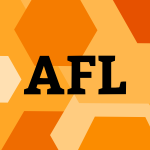 AFL-2008-Cruz-ReyesK #automaton
AFL-2008-Cruz-ReyesK #automaton- Non-Linear Subband Coding with Cellular Automata (CCR, JK), pp. 146–157.
 CIAA-2008-LahodaMZ #pattern matching
CIAA-2008-LahodaMZ #pattern matching- Pattern Matching in DCA Coded Text (JL, BM, JZ), pp. 151–160.
 ICALP-A-2008-ChengW #complexity
ICALP-A-2008-ChengW #complexity- Complexity of Decoding Positive-Rate Reed-Solomon Codes (QC, DW), pp. 283–293.
 ICALP-A-2008-IwamaNPRY #linear #network #polynomial
ICALP-A-2008-IwamaNPRY #linear #network #polynomial- Polynomial-Time Construction of Linear Network Coding (KI, HN, MP, RR, SY), pp. 271–282.
 LATA-2008-MoczuradM #how #question #set
LATA-2008-MoczuradM #how #question #set- How Many Figure Sets Are Codes? (MM, WM), pp. 385–396.
 LATA-2008-SalomaaSY
LATA-2008-SalomaaSY- Length Codes, Products of Languages and Primality (AS, KS, SY), pp. 476–486.
 FM-2008-GrandyBSSR #protocol #security #verification
FM-2008-GrandyBSSR #protocol #security #verification- Verification of Mondex Electronic Purses with KIV: From a Security Protocol to Verified Code (HG, MB, KS, GS, WR), pp. 165–180.
 SEFM-2008-Giacobazzi #abstract interpretation #security
SEFM-2008-Giacobazzi #abstract interpretation #security- Abstract Interpretation in Code Security (RG), p. 3.
 SEFM-2008-Giacobazzi08a #obfuscation
SEFM-2008-Giacobazzi08a #obfuscation- Hiding Information in Completeness Holes: New Perspectives in Code Obfuscation and Watermarking (RG), pp. 7–18.
 SEFM-2008-SampathRRS #behaviour #code generation #testing
SEFM-2008-SampathRRS #behaviour #code generation #testing- Behaviour Directed Testing of Auto-code Generators (PS, ACR, SR, KCS), pp. 191–200.
 CHI-2008-SubrahmaniyanBGBWNBDF #debugging #testing #what
CHI-2008-SubrahmaniyanBGBWNBDF #debugging #testing #what- Testing vs. code inspection vs. what else?: male and female end users’ debugging strategies (NS, LB, VG, MMB, SW, VN, KB, RD, XZF), pp. 617–626.
 SOFTVIS-2008-ParninGN #lightweight #smell #visualisation
SOFTVIS-2008-ParninGN #lightweight #smell #visualisation- A catalogue of lightweight visualizations to support code smell inspection (CP, CG, ON), pp. 77–86.
 SOFTVIS-2008-TeleaV #c++ #interactive #reverse engineering #scalability
SOFTVIS-2008-TeleaV #c++ #interactive #reverse engineering #scalability- An interactive reverse engineering environment for large-scale C++ code (ACT, LV), pp. 67–76.
 ICPR-2008-EscaleraPR
ICPR-2008-EscaleraPR- Separability of ternary Error-Correcting Output Codes (SE, OP, PR), pp. 1–4.
 ICPR-2008-EscaleraPR08a
ICPR-2008-EscaleraPR08a- Error-Correcting output coding for chagasic patients characterization (SE, OP, PR), pp. 1–4.
 ICPR-2008-Rokui #using
ICPR-2008-Rokui #using- Tree-structure lossless coding using intervector angle (JR), pp. 1–4.
 KDD-2008-Sindhgatta #developer #identification #source code
KDD-2008-Sindhgatta #developer #identification #source code- Identifying domain expertise of developers from source code (RS), pp. 981–989.
 SEKE-2008-BaiL #named #source code #testing
SEKE-2008-BaiL #named #source code #testing- SyncTest: a Tool to Synchronize Source Code, Model and Testing (XB, TL), pp. 723–728.
 SEKE-2008-DuffyHM #c++ #comprehension #evolution #interface #library #protocol #reverse engineering #scalability
SEKE-2008-DuffyHM #c++ #comprehension #evolution #interface #library #protocol #reverse engineering #scalability- Reverse Engineering Interface Protocols for Comprehension of Large C++ Libraries during Code Evolution Tasks (EBD, JOH, BAM), pp. 303–308.
 SEKE-2008-Fuad #architecture #distributed #program transformation #self
SEKE-2008-Fuad #architecture #distributed #program transformation #self- Code Transformation Techniques and Management Architecture for Self-manageable Distributed Applications (MMF), pp. 315–320.
 SEKE-2008-SandersZ #contract #design #execution #java
SEKE-2008-SandersZ #contract #design #execution #java- Object-Z to Java/OO-Perl: A Conversion from Object-Z to Executable Skeletal Code with Dynamically Checkable Design Contracts (SMS, CZ), pp. 824–829.
 SEKE-2008-TurhanB #fault #predict
SEKE-2008-TurhanB #fault #predict- Weighted Static Code Attributes for Software Defect Prediction (BT, ABB), pp. 143–148.
 SIGIR-2008-LiT #documentation #image #word
SIGIR-2008-LiT #documentation #image #word- A word shape coding method for camera-based document images (LL, CLT), pp. 771–772.
 ICMT-2008-HemelKV #code generation #model transformation
ICMT-2008-HemelKV #code generation #model transformation- Code Generation by Model Transformation (ZH, LCLK, EV), pp. 183–198.
 MoDELS-2008-Gessenharter #code generation #java #semantics #uml
MoDELS-2008-Gessenharter #code generation #java #semantics #uml- Mapping the UML2 Semantics of Associations to a Java Code Generation Model (DG), pp. 813–827.
 MoDELS-2008-ProutADS #code generation #configuration management #semantics
MoDELS-2008-ProutADS #code generation #configuration management #semantics- Semantically Configurable Code Generation (AP, JMA, NAD, PS), pp. 705–720.
 SPLC-2008-WeissLSDS #code generation
SPLC-2008-WeissLSDS #code generation- Decision-Model-Based Code Generation for SPLE (DMW, JJL, JHS, TTDT, HS), pp. 129–138.
 MoDELS-2008-Gessenharter #code generation #java #semantics #uml
MoDELS-2008-Gessenharter #code generation #java #semantics #uml- Mapping the UML2 Semantics of Associations to a Java Code Generation Model (DG), pp. 813–827.
 MoDELS-2008-ProutADS #code generation #configuration management #semantics
MoDELS-2008-ProutADS #code generation #configuration management #semantics- Semantically Configurable Code Generation (AP, JMA, NAD, PS), pp. 705–720.
 ECOOP-2008-HessellundS #analysis
ECOOP-2008-HessellundS #analysis- Flow Analysis of Code Customizations (AH, PS), pp. 285–308.
 OOPSLA-2008-FerraraLF #dot-net
OOPSLA-2008-FerraraLF #dot-net- Safer unsafe code for .NET (PF, FL, MF), pp. 329–346.
 OOPSLA-2008-ProkopskiV #performance #virtual machine
OOPSLA-2008-ProkopskiV #performance #virtual machine- Analyzing the performance of code-copying virtual machines (GBP, CV), pp. 403–422.
 TOOLS-EUROPE-2008-DiskinED #modelling #semantics
TOOLS-EUROPE-2008-DiskinED #modelling #semantics- Engineering Associations: From Models to Code and Back through Semantics (ZD, SME, JD), pp. 336–355.
 AdaEurope-2008-AlonsoVPA #ada #modelling #state machine #thread #visual notation
AdaEurope-2008-AlonsoVPA #ada #modelling #state machine #thread #visual notation- StateML+s: From Graphical State Machine Models to Thread-Safe Ada Code (DA, CVC, JAP, BÁ), pp. 158–170.
 LOPSTR-2008-CalcagnoDOY
LOPSTR-2008-CalcagnoDOY- Space Invading Systems Code (CC, DD, PWO, HY), pp. 1–3.
 PADL-2008-Marpons-UceroMCHMF #automation #consistency #logic programming #using
PADL-2008-Marpons-UceroMCHMF #automation #consistency #logic programming #using- Automatic Coding Rule Conformance Checking Using Logic Programming (GMU, JMC, MC, ÁHN, JJMN, LÅF), pp. 18–34.
 PEPM-2008-KameyamaKS #staged
PEPM-2008-KameyamaKS #staged- Closing the stage: from staged code to typed closures (YK, OK, CcS), pp. 147–157.
 ASE-2008-BrichauKM #source code #using
ASE-2008-BrichauKM #source code #using- Enforcing Structural Regularities in Source Code using IntensiVE (JB, AK, KM), pp. 471–472.
 ASE-2008-LiHG #code generation #interface #modelling #multi #named #process
ASE-2008-LiHG #code generation #interface #modelling #multi #named #process- MaramaEML: An Integrated Multi-View Business Process Modelling Environment with Tree-Overlays, Zoomable Interfaces and Code Generation (RLL, JGH, JCG), pp. 477–478.
 ASE-2008-RobbesL #code completion #how #repository
ASE-2008-RobbesL #code completion #how #repository- How Program History Can Improve Code Completion (RR, ML), pp. 317–326.
 ASE-2008-ThummalapentaX #detection #framework #mining #named #open source #source code #web
ASE-2008-ThummalapentaX #detection #framework #mining #named #open source #source code #web- SpotWeb: Detecting Framework Hotspots and Coldspots via Mining Open Source Code on the Web (ST, TX), pp. 327–336.
 ASE-2008-TurnerPKC #approach #automation #code generation #process #using #web
ASE-2008-TurnerPKC #approach #automation #code generation #process #using #web- An Automated Test Code Generation Method for Web Applications using Activity Oriented Approach (DAT, MP, JK, JC), pp. 411–414.
 FSE-2008-CottrellWD #reuse #source code
FSE-2008-CottrellWD #reuse #source code- Semi-automating small-scale source code reuse via structural correspondence (RC, RJW, JD), pp. 214–225.
 FSE-2008-DragertDR #concurrent #generative #using
FSE-2008-DragertDR #concurrent #generative #using- Generation of concurrency control code using discrete-event systems theory (CD, JD, KR), pp. 146–157.
 FSE-2008-LivshitsK #bound #named #web
FSE-2008-LivshitsK #bound #named #web- Doloto: code splitting for network-bound web 2.0 applications (VBL, EK), pp. 350–360.
 ICSE-2008-Duala-EkokoR #named #tool support
ICSE-2008-Duala-EkokoR #named #tool support- Clonetracker: tool support for code clone management (EDE, MPR), pp. 843–846.
 ICSE-2008-MoserPS #analysis #comparative #fault #metric #performance #predict
ICSE-2008-MoserPS #analysis #comparative #fault #metric #performance #predict- A comparative analysis of the efficiency of change metrics and static code attributes for defect prediction (RM, WP, GS), pp. 181–190.
 ICSE-2008-SchaferJM #framework #mining
ICSE-2008-SchaferJM #framework #mining- Mining framework usage changes from instantiation code (TS, JJ, MM), pp. 471–480.
 SAC-2008-DuraoVAM #code search #semantics #source code
SAC-2008-DuraoVAM #code search #semantics #source code- Applying a semantic layer in a source code search tool (FAD, TAV, ESdA, SRdLM), pp. 1151–1157.
 SAC-2008-KhanCB #optimisation
SAC-2008-KhanCB #optimisation- Optimizing code through iterative specialization (MAK, HPC, DB), pp. 206–210.
 SAC-2008-VargunM
SAC-2008-VargunM- Code-carrying theory (AV, DRM), pp. 376–383.
 GPCE-2008-DenneyF #automation #generative #verification
GPCE-2008-DenneyF #automation #generative #verification- Generating customized verifiers for automatically generated code (ED, BF), pp. 77–88.
 GPCE-2008-KulkarniR #abstraction #code generation #component #generative #modelling #reuse
GPCE-2008-KulkarniR #abstraction #code generation #component #generative #modelling #reuse- An abstraction for reusable MDD components: model-based generation of model-based code generators (VK, SR), pp. 181–184.
 GPCE-2008-RosenmullerSSA #code generation #composition #product line
GPCE-2008-RosenmullerSSA #code generation #composition #product line- Code generation to support static and dynamic composition of software product lines (MR, NS, GS, SA), pp. 3–12.
 SLE-2008-BastenK #fact extraction #named #parametricity #source code
SLE-2008-BastenK #fact extraction #named #parametricity #source code- DeFacto: Language-Parametric Fact Extraction from Source Code (BB, PK), pp. 265–284.
 ASPLOS-2008-ErtveldeE #benchmark #metric
ASPLOS-2008-ErtveldeE #benchmark #metric- Dispersing proprietary applications as benchmarks through code mutation (LVE, LE), pp. 201–210.
 ASPLOS-2008-McCunePPRS #execution #how #recommendation
ASPLOS-2008-McCunePPRS #execution #how #recommendation- How low can you go?: recommendations for hardware-supported minimal TCB code execution (JMM, BP, AP, MKR, AS), pp. 14–25.
 ASPLOS-2008-TuckACT #analysis #hardware #named #optimisation
ASPLOS-2008-TuckACT #analysis #hardware #named #optimisation- SoftSig: software-exposed hardware signatures for code analysis and optimization (JT, WA, LC, JT), pp. 145–156.
 CASE-2008-NagleW #named #using
CASE-2008-NagleW #named #using- GSP: Extending G-Code using JSP servlet technologies (SN, JW), pp. 953–958.
 CC-2008-LogozzoF #analysis #bytecode #on the #source code
CC-2008-LogozzoF #analysis #bytecode #on the #source code- On the Relative Completeness of Bytecode Analysis Versus Source Code Analysis (FL, MF), pp. 197–212.
 CC-2008-NitaG #automation #c #multi
CC-2008-NitaG #automation #c #multi- Automatic Transformation of Bit-Level C Code to Support Multiple Equivalent Data Layouts (MN, DG), pp. 85–99.
 CC-2008-ProkopskiV #safety #virtual machine
CC-2008-ProkopskiV #safety #virtual machine- Compiler-Guaranteed Safety in Code-Copying Virtual Machines (GBP, CV), pp. 163–177.
 CC-2008-WangYW #compilation #legacy #optimisation #transaction
CC-2008-WangYW #compilation #legacy #optimisation #transaction- Supporting Legacy Binary Code in a Software Transaction Compiler with Dynamic Binary Translation and Optimization (CW, VY, YW), pp. 291–306.
 CGO-2008-MurphyMSSA #type safety
CGO-2008-MurphyMSSA #type safety- Fault-safe code motion for type-safe languages (BRM, VM, FTS, TS, ARAT), pp. 144–154.
 CGO-2008-Sarkar #optimisation #parallel #source code
CGO-2008-Sarkar #optimisation #parallel #source code- Code optimization of parallel programs: evolutionary vs. revolutionary approaches (VS), p. 1.
 DATE-2008-BonnyH #embedded #encoding
DATE-2008-BonnyH #embedded #encoding- Instruction Re-encoding Facilitating Dense Embedded Code (TB, JH), pp. 770–775.
 DATE-2008-BrisolaraORLCW #code generation #uml #using
DATE-2008-BrisolaraORLCW #code generation #uml #using- Using UML as Front-end for Heterogeneous Software Code Generation Strategies (LBdB, MFdSO, RMR, LCL, LC, FRW), pp. 504–509.
 DATE-2008-HohenauerELAMBS #execution #optimisation
DATE-2008-HohenauerELAMBS #execution #optimisation- Retargetable Code Optimization for Predicated Execution (MH, FE, RL, GA, HM, GB, BS), pp. 1492–1497.
 DATE-2008-LublinermanT #code generation #composition #diagrams #reuse #usability
DATE-2008-LublinermanT #code generation #composition #diagrams #reuse #usability- Modularity vs. Reusability: Code Generation from Synchronous Block Diagrams (RL, ST), pp. 1504–1509.
 DATE-2008-MayAW #case study #design
DATE-2008-MayAW #case study #design- A Case Study in Reliability-Aware Design: A Resilient LDPC Code Decoder (MM, MA, NW), pp. 456–461.
 DATE-2008-ZezzaM #implementation
DATE-2008-ZezzaM #implementation- VLSI implementation of SISO arithmetic decoders for joint source channel coding (SZ, GM), pp. 1075–1078.
 HPDC-2008-HeSWF #approximate #automation #performance #recognition #test coverage
HPDC-2008-HeSWF #approximate #automation #performance #recognition #test coverage- Code coverage, performance approximation and automatic recognition of idioms in scientific applications (JH, AS, RFVdW, MAF), pp. 223–224.
 LCTES-2008-BiernackiCHP #code generation #composition #data flow
LCTES-2008-BiernackiCHP #code generation #composition #data flow- Clock-directed modular code generation for synchronous data-flow languages (DB, JLC, GH, MP), pp. 121–130.
 OSDI-2008-DouceurEHL #legacy #web
OSDI-2008-DouceurEHL #legacy #web- Leveraging Legacy Code to Deploy Desktop Applications on the Web (JRD, JE, JH, JRL), pp. 339–354.
 STOC-2008-GopalanKZ
STOC-2008-GopalanKZ- List-decoding reed-muller codes over small fields (PG, ARK, DZ), pp. 265–274.
 STOC-2008-Meir #combinator
STOC-2008-Meir #combinator- Combinatorial construction of locally testable codes (OM), pp. 285–294.
 STOC-2008-ODonnellW #algorithm #testing
STOC-2008-ODonnellW #algorithm #testing- An optimal sdp algorithm for max-cut, and equally optimal long code tests (RO, YW), pp. 335–344.
 CAV-2008-YangLBCCDO #analysis #scalability
CAV-2008-YangLBCCDO #analysis #scalability- Scalable Shape Analysis for Systems Code (HY, OL, JB, CC, BC, DD, PWO), pp. 385–398.
 ICLP-2008-VanhoofD #algorithm #logic programming #source code
ICLP-2008-VanhoofD #algorithm #logic programming #source code- An Algorithm for Sophisticated Code Matching in Logic Programs (WV, FD), pp. 785–789.
 ICST-2008-PloschGPSS #tool support
ICST-2008-PloschGPSS #tool support- Tool Support for Expert-Centred Code Assessments (RP, HG, GP, MS, SS), pp. 258–267.
 ICST-2008-ZaidmanRDD #co-evolution #mining #repository
ICST-2008-ZaidmanRDD #co-evolution #mining #repository- Mining Software Repositories to Study Co-Evolution of Production & Test Code (AZ, BVR, SD, AvD), pp. 220–229.
 ECSA-2007-CorreiaMHE #architecture #categorisation #migration
ECSA-2007-CorreiaMHE #architecture #categorisation #migration- Architecture Migration Driven by Code Categorization (RC, CMPM, RH, MER), pp. 115–122.
 DRR-2007-AndraNLZBBHST #effectiveness
DRR-2007-AndraNLZBBHST #effectiveness- Frequency coding: an effective method for combining dichotomizers (SA, GN, CLL, IZ, EB, AB, LH, KMS, MT).
 ICDAR-2007-BhattacharyaGP #online #recognition
ICDAR-2007-BhattacharyaGP #online #recognition- Direction Code Based Features for Recognition of Online Handwritten Characters of Bangla (UB, BKG, SKP), pp. 58–62.
 ICDAR-2007-TerasawaT #documentation #image #locality #pseudo
ICDAR-2007-TerasawaT #documentation #image #locality #pseudo- Locality Sensitive Pseudo-Code for Document Images (KT, YT), pp. 73–77.
 SIGMOD-2007-GrustMRST #code generation #compilation #sql #xquery
SIGMOD-2007-GrustMRST #code generation #compilation #sql #xquery- A SQL: 1999 code generator for the pathfinder xquery compiler (TG, MM, JR, SS, JT), pp. 1162–1164.
 ITiCSE-2007-HayesTSW #assessment #automation #interface
ITiCSE-2007-HayesTSW #assessment #automation #interface- An investigation into the automated assessment of the design-code interface (AH, PGT, NS, KGW), p. 324.
 ITiCSE-2007-JiWC #detection #source code
ITiCSE-2007-JiWC #detection #source code- A source code linearization technique for detecting plagiarized programs (JHJ, GW, HGC), pp. 73–77.
 ITiCSE-2007-JonesB #navigation #source code
ITiCSE-2007-JonesB #navigation #source code- Spatial skills and navigation of source code (SJJ, GEB), pp. 231–235.
 ITiCSE-2007-PatersonH #design #implementation
ITiCSE-2007-PatersonH #design #implementation- From classes to code: supporting the transition from design to implementation (JHP, JH), p. 362.
 SIGITE-2007-GasparL #programming
SIGITE-2007-GasparL #programming- Restoring “coding with intention” in introductory programming courses (AG, SL), pp. 91–98.
 WCRE-J-2005-KuhnDG07 #clustering #identification #semantics #source code #topic
WCRE-J-2005-KuhnDG07 #clustering #identification #semantics #source code #topic- Semantic clustering: Identifying topics in source code (AK, SD, TG), pp. 230–243.
 CSMR-2007-Leeten #configuration management #evolution #scalability
CSMR-2007-Leeten #configuration management #evolution #scalability- Software Configuration Management, Fundament for Evolution of Large Existing Code Bases (BL), pp. 321–322.
 ICPC-2007-CareyG #automation #concept #identification #source code
ICPC-2007-CareyG #automation #concept #identification #source code- Recovering Concepts from Source Code with Automated Concept Identification (MMC, GCG), pp. 27–36.
 ICPC-2007-Kiczales #aspect-oriented #design
ICPC-2007-Kiczales #aspect-oriented #design- Making the Code Look Like the Design — Aspects and Other Recent Work (GK), p. 14.
 ICPC-2007-PoshyvanykM #concept analysis #information retrieval #source code
ICPC-2007-PoshyvanykM #concept analysis #information retrieval #source code- Combining Formal Concept Analysis with Information Retrieval for Concept Location in Source Code (DP, AM), pp. 37–48.
 ICPC-2007-ShearerC #constraints #source code
ICPC-2007-ShearerC #constraints #source code- Enforcing Constraints Between Documentary Comments and Source Code (CDS, MLC), pp. 271–280.
 ICPC-2007-Vivanco #algorithm #complexity #identification #metric #modelling #predict #search-based #source code #using
ICPC-2007-Vivanco #algorithm #complexity #identification #metric #modelling #predict #search-based #source code #using- Use of a Genetic Algorithm to Identify Source Code Metrics Which Improves Cognitive Complexity Predictive Models (RAV), pp. 297–300.
 ICSM-2007-Ceccato #aspect-oriented #migration #object-oriented #programming
ICSM-2007-Ceccato #aspect-oriented #migration #object-oriented #programming- Migrating Object Oriented code to Aspect Oriented Programming (MC), pp. 497–498.
 ICSM-2007-Chaabane #analysis #detection
ICSM-2007-Chaabane #analysis #detection- Poor Performing Patterns of Code: Analysis and Detection (RC), pp. 501–502.
 ICSM-2007-CorboGP #learning #source code
ICSM-2007-CorboGP #learning #source code- Smart Formatter: Learning Coding Style from Existing Source Code (FC, CDG, MDP), pp. 525–526.
 ICSM-2007-OezbekP #comprehension #documentation #named #source code
ICSM-2007-OezbekP #comprehension #documentation #named #source code- JTourBus: Simplifying Program Understanding by Documentation that Provides Tours Through the Source Code (CO, LP), pp. 64–73.
 ICSM-2007-Reiss
ICSM-2007-Reiss- Finding Unusual Code (SPR), pp. 34–43.
 ICSM-2007-StoreyCSMMR #how #navigation
ICSM-2007-StoreyCSMMR #how #navigation- How Programmers Can Turn Comments into Waypoints for Code Navigation (MADS, LTC, JS, MJM, DM, JR), pp. 265–274.
 MSR-2007-CanforaCP #identification #repository #source code
MSR-2007-CanforaCP #identification #repository #source code- Identifying Changed Source Code Lines from Version Repositories (GC, LC, MDP), p. 14.
 MSR-2007-KagdiCM #mining #source code
MSR-2007-KagdiCM #mining #source code- Comparing Approaches to Mining Source Code for Call-Usage Patterns (HHK, MLC, JIM), p. 20.
 MSR-2007-LivieriHMI #analysis #evolution #kernel #linux #using
MSR-2007-LivieriHMI #analysis #evolution #kernel #linux #using- Analysis of the Linux Kernel Evolution Using Code Clone Coverage (SL, YH, MM, KI), p. 22.
 SCAM-2007-Johannes #composition #framework #reuse #source code
SCAM-2007-Johannes #composition #framework #reuse #source code- Source Code Composition with the Reuseware Composition Framework (JJ), pp. 159–160.
 SCAM-2007-MoorVHAEOST #analysis #source code
SCAM-2007-MoorVHAEOST #analysis #source code- Keynote Address: .QL for Source Code Analysis (OdM, MV, EH, PA, TE, NO, DS, JT), pp. 3–16.
 WCRE-2007-FluriWG #source code
WCRE-2007-FluriWG #source code- Do Code and Comments Co-Evolve? On the Relation between Source Code and Comment Changes (BF, MW, HG), pp. 70–79.
 WCRE-2007-Krinke #case study #consistency
WCRE-2007-Krinke #case study #consistency- A Study of Consistent and Inconsistent Changes to Code Clones (JK), pp. 170–178.
 WCRE-2007-RaberL07a #approach #automation #identification #named #obfuscation
WCRE-2007-RaberL07a #approach #automation #identification #named #obfuscation- Deobfuscator: An Automated Approach to the Identification and Removal of Code Obfuscation (JR, EL), pp. 275–276.
 DLT-2007-BealBR #ambiguity
DLT-2007-BealBR #ambiguity- Coding Partitions: Regularity, Maximality and Global Ambiguity (MPB, FB, AR), pp. 48–59.
 ICALP-2007-OstrovskyPS
ICALP-2007-OstrovskyPS- Private Locally Decodable Codes (RO, OP, AS), pp. 387–398.
 IFM-2007-BraghinSB #automation #mobile #policy #security #verification
IFM-2007-BraghinSB #automation #mobile #policy #security #verification- Automated Verification of Security Policies in Mobile Code (CB, NS, KBA), pp. 37–53.
 Haskell-2007-GrabmullerK #code generation #haskell #named #runtime
Haskell-2007-GrabmullerK #code generation #haskell #named #runtime- Harpy: run-time code generation in haskell (MG, DK), p. 94.
 IFL-2007-Kleeblatt #dependent type #using
IFL-2007-Kleeblatt #dependent type #using- Checking Dependent Types Using Compiled Code (DK), pp. 165–182.
 AGTIVE-2007-AnandK #assembly #generative #graph transformation
AGTIVE-2007-AnandK #assembly #generative #graph transformation- Code Graph Transformations for Verifiable Generation of SIMD-Parallel Assembly Code (CKA, WK), pp. 217–232.
 CHI-2007-BoshernitsanGH #development #tool support
CHI-2007-BoshernitsanGH #development #tool support- Aligning development tools with the way programmers think about code changes (MB, SLG, MAH), pp. 567–576.
 HCI-IPT-2007-CheongKH #evaluation #image #interface #mobile #usability
HCI-IPT-2007-CheongKH #evaluation #image #interface #mobile #usability- Usability Evaluation of Designed Image Code Interface for Mobile Computing Environment (CC, DCK, TDH), pp. 241–251.
 HCI-IPT-2007-YoshidaMS #interactive #mobile #using #visual notation
HCI-IPT-2007-YoshidaMS #interactive #mobile #using #visual notation- Mobile Magic Hand: Camera Phone Based Interaction Using Visual Code and Optical Flow (YY, KM, TS), pp. 513–521.
 VISSOFT-2007-BohnerGHM #analysis #source code #uml #using #visual notation #visualisation
VISSOFT-2007-BohnerGHM #analysis #source code #uml #using #visual notation #visualisation- Evolutional Insights from UML and Source Code Versions using Information Visualization and Visual Analysis (SAB, DG, TH, KM), pp. 145–148.
 VISSOFT-2007-BohnetD #2d #graph #source code #visualisation
VISSOFT-2007-BohnetD #2d #graph #source code #visualisation- Facilitating Exploration of Unfamiliar Source Code by Providing 21/2D Visualizations of Dynamic Call Graphs (JB, JD), pp. 63–66.
 VISSOFT-2007-BohnetD07a #compilation #comprehension #graph
VISSOFT-2007-BohnetD07a #compilation #comprehension #graph- CGA Call Graph Analyzer — Locating and Understanding Functionality within the Gnu Compiler Collection’s Million Lines of Code (JB, JD), pp. 161–162.
 VISSOFT-2007-HolmesW #dependence #source code
VISSOFT-2007-HolmesW #dependence #source code- Task-specific source code dependency investigation (RH, RJW), pp. 100–107.
 VISSOFT-2007-VoineaT #debugging #process #repository #source code #visualisation
VISSOFT-2007-VoineaT #debugging #process #repository #source code #visualisation- Visualizing Debugging Activity in Source Code Repositories (LV, ACT), pp. 156–157.
 ICML-2007-Bar-HillelW #distance #learning #similarity
ICML-2007-Bar-HillelW #distance #learning #similarity- Learning distance function by coding similarity (ABH, DW), pp. 65–72.
 ICML-2007-LongZWY #clustering #relational #symmetry
ICML-2007-LongZWY #clustering #relational #symmetry- Relational clustering by symmetric convex coding (BL, Z(Z, XW, PSY), pp. 569–576.
 SEKE-2007-FilhoZ #design #modelling #traceability
SEKE-2007-FilhoZ #design #modelling #traceability- Traceability for Agent-Oriented Design Models and Code (GACF, AZ), pp. 552–558.
 SEKE-2007-MonteiroOG #implementation #source code #user interface #using
SEKE-2007-MonteiroOG #implementation #source code #user interface #using- A Proposal to Delegate GUI Implementation using a Source Code based Model (MM, PO, RG), pp. 29–32.
 SEKE-2007-XuXW #automation #code generation #protocol #state machine #uml
SEKE-2007-XuXW #automation #code generation #protocol #state machine #uml- Automated Test Code Generation from UML Protocol State Machines (DX, WX, WEW), pp. 99–104.
 SIGIR-2007-TanW #categorisation
SIGIR-2007-TanW #categorisation- Combining error-correcting output codes and model-refinement for text categorization (ST, YW), pp. 699–700.
 TOOLS-EUROPE-2007-HundtMPS #feature model #product line
TOOLS-EUROPE-2007-HundtMPS #feature model #product line- Improving Alignment of Crosscutting Features with Code in Product Line Engineering (CH, KM, CP, DS), pp. 417–436.
 AdaEurope-2007-AlonsoVSAL #ada #approach #automation #code generation #modelling #using
AdaEurope-2007-AlonsoVSAL #ada #approach #automation #code generation #modelling #using- Automatic Ada Code Generation Using a Model-Driven Engineering Approach (DA, CVC, PS, BÁ, FL), pp. 168–179.
 PEPM-2007-RooverDBND #behaviour #logic #query #similarity #source code #using
PEPM-2007-RooverDBND #behaviour #logic #query #similarity #source code #using- Behavioral similarity matching using concrete source code templates in logic queries (CDR, TD, JB, CN, LD), pp. 92–101.
 PLDI-2007-CaiSV #self
PLDI-2007-CaiSV #self- Certified self-modifying code (HC, ZS, AV), pp. 66–77.
 PLDI-2007-HardekopfL #analysis #performance #pointer
PLDI-2007-HardekopfL #analysis #performance #pointer- The ant and the grasshopper: fast and accurate pointer analysis for millions of lines of code (BH, CL), pp. 290–299.
 QAPL-2007-Smith #communication #modelling #probability #protocol #source code
QAPL-2007-Smith #communication #modelling #probability #protocol #source code- Stochastic Modelling of Communication Protocols from Source Code (MJAS), pp. 129–145.
 SIGAda-2007-Maurer #ada #proving #using
SIGAda-2007-Maurer #ada #proving #using- Using mathematics to improve ada compiled code, part 2: the proof (WDM), pp. 11–26.
 ASE-2007-AntkiewiczBC #automation #modelling
ASE-2007-AntkiewiczBC #automation #modelling- Automatic extraction of framework-specific models from framework-based application code (MA, TTB, KC), pp. 214–223.
 ASE-2007-CaiWHW #array #automation #kernel #testing
ASE-2007-CaiWHW #array #automation #kernel #testing- Test automation for kernel code and disk arrays with virtual devices (LZC, RSW, WTH, FW), pp. 505–508.
 ASE-2007-JurjensY #modelling #security #tool support
ASE-2007-JurjensY #modelling #security #tool support- Tools for model-based security engineering: models vs. code (JJ, YY), pp. 545–546.
 ASE-2007-Kagdi #fine-grained #mining #predict #source code
ASE-2007-Kagdi #fine-grained #mining #predict #source code- Improving change prediction with fine-grained source code mining (HHK), pp. 559–562.
 ASE-2007-LemosBOMMBL #named #reuse #source code #using
ASE-2007-LemosBOMMBL #named #reuse #source code #using- CodeGenie: using test-cases to search and reuse source code (OALL, SKB, JO, RSM, PCM, PB, CVL), pp. 525–526.
 ASE-2007-LinsteadRBLB #concept #mining #modelling #probability #topic
ASE-2007-LinsteadRBLB #concept #mining #modelling #probability #topic- Mining concepts from code with probabilistic topic models (EL, PR, SKB, CVL, PB), pp. 461–464.
 ASE-2007-Reiss #automation
ASE-2007-Reiss #automation- Automatic code stylizing (SPR), pp. 74–83.
 ASE-2007-ThummalapentaX #named #open source #reuse #source code #web
ASE-2007-ThummalapentaX #named #open source #reuse #source code #web- Parseweb: a programmer assistant for reusing open source code on the web (ST, TX), pp. 204–213.
 ESEC-FSE-2007-AcharyaXPX #api #mining #partial order #source code #specification
ESEC-FSE-2007-AcharyaXPX #api #mining #partial order #source code #specification- Mining API patterns as partial orders from source code: from usage scenarios to specifications (MA, TX, JP, JX), pp. 25–34.
 ESEC-FSE-2007-FritzMH #process #question
ESEC-FSE-2007-FritzMH #process #question- Does a programmer’s activity indicate knowledge of code? (TF, GCM, EH), pp. 341–350.
 ESEC-FSE-2007-GrechanikMP #traceability #using
ESEC-FSE-2007-GrechanikMP #traceability #using- Recovering and using use-case-diagram-to-source-code traceability links (MG, KSM, DEP), pp. 95–104.
 ESEC-FSE-2007-VoungJL #concurrent #detection #named
ESEC-FSE-2007-VoungJL #concurrent #detection #named- RELAY: static race detection on millions of lines of code (JWV, RJ, SL), pp. 205–214.
 GTTSE-2007-ChellappaFP #how #performance
GTTSE-2007-ChellappaFP #how #performance- How to Write Fast Numerical Code: A Small Introduction (SC, FF, MP), pp. 196–259.
 ICSE-2007-AdarK #named #visualisation
ICSE-2007-AdarK #named #visualisation- SoftGUESS: Visualization and Exploration of Code Clones in Context (EA, MK), pp. 762–766.
 ICSE-2007-BernerWK #test coverage #testing #using
ICSE-2007-BernerWK #test coverage #testing #using- Enhancing Software Testing by Judicious Use of Code Coverage Information (SB, RW, RKK), pp. 612–620.
 ICSE-2007-Duala-EkokoR #clone tracking #evolution
ICSE-2007-Duala-EkokoR #clone tracking #evolution- Tracking Code Clones in Evolving Software (EDE, MPR), pp. 158–167.
 ICSE-2007-GanapathyKJJ #concept analysis #legacy #mining #using
ICSE-2007-GanapathyKJJ #concept analysis #legacy #mining #using- Mining Security-Sensitive Operations in Legacy Code Using Concept Analysis (VG, DK, TJ, SJ), pp. 458–467.
 ICSE-2007-JiangMSG #detection #named #scalability
ICSE-2007-JiangMSG #detection #named #scalability- DECKARD: Scalable and Accurate Tree-Based Detection of Code Clones (LJ, GM, ZS, SG), pp. 96–105.
 ICSE-2007-LivieriHMI #analysis #distributed #open source #source code #using #visualisation
ICSE-2007-LivieriHMI #analysis #distributed #open source #source code #using #visualisation- Very-Large Scale Code Clone Analysis and Visualization of Open Source Programs Using Distributed CCFinder: D-CCFinder (SL, YH, MM, KI), pp. 106–115.
 SAC-2007-CazzolaPGS #co-evolution #design #metadata #modelling
SAC-2007-CazzolaPGS #co-evolution #design #metadata #modelling- Co-evolving application code and design models by exploiting meta-data (WC, SP, AG, GS), pp. 1275–1279.
 SAC-2007-FerreiraLO #approach #java #model checking
SAC-2007-FerreiraLO #approach #java #model checking- A Java code annotation approach for model checking software systems (GF, EL, EASO), pp. 1536–1537.
 SAC-2007-Hamid #memory management #runtime
SAC-2007-Hamid #memory management #runtime- Integrating a certified memory management runtime with proof-carrying code (NAH), pp. 1526–1533.
 SAC-2007-JohnsB #approximate #automation #injection #named #web
SAC-2007-JohnsB #approximate #automation #injection #named #web- SMask: preventing injection attacks in web applications by approximating automatic data/code separation (MJ, CB), pp. 284–291.
 SAC-2007-LongoG #protocol
SAC-2007-LongoG #protocol- A protocol to preserve a code of conduct (CL, PG), pp. 1579–1585.
 SAC-2007-XianhuaJX #performance #reduction
SAC-2007-XianhuaJX #performance #reduction- Efficient code size reduction without performance loss (LX, ZJ, CX), pp. 666–672.
 LDTA-J-2005-WaddingtonY #c #c++ #program transformation
LDTA-J-2005-WaddingtonY #c #c++ #program transformation- High-fidelity C/C++ code transformation (DGW, BY), pp. 64–78.
 CC-2007-NagarakatteG #integer #linear #pipes and filters #programming #scheduling #using
CC-2007-NagarakatteG #integer #linear #pipes and filters #programming #scheduling #using- Register Allocation and Optimal Spill Code Scheduling in Software Pipelined Loops Using 0-1 Integer Linear Programming Formulation (SGN, RG), pp. 126–140.
 CGO-2007-HeTPDA #kernel #operating system
CGO-2007-HeTPDA #kernel #operating system- Code Compaction of an Operating System Kernel (HH, JT, SP, SKD, GRA), pp. 283–298.
 CGO-2007-ReddiCCS #persistent #reuse
CGO-2007-ReddiCCS #persistent #reuse- Persistent Code Caching: Exploiting Code Reuse Across Executions and Applications (VJR, DC, RC, MDS), pp. 74–88.
 CGO-2007-WangCWSA #code generation #memory management #optimisation #transaction
CGO-2007-WangCWSA #code generation #memory management #optimisation #transaction- Code Generation and Optimization for Transactional Memory Constructs in an Unmanaged Language (CW, WYC, YW, BS, ARAT), pp. 34–48.
 COCV-2007-BlechP #code generation
COCV-2007-BlechP #code generation- A Certifying Code Generation Phase (JOB, APH), pp. 65–82.
 DAC-2007-AmbroseRP #analysis #injection #named #random
DAC-2007-AmbroseRP #analysis #injection #named #random- RIJID: Random Code Injection to Mask Power Analysis based Side Channel Attacks (JAA, RGR, SP), pp. 489–492.
 DAC-2007-BonnyH #performance
DAC-2007-BonnyH #performance- Instruction Splitting for Efficient Code Compression (TB, JH), pp. 646–651.
 DAC-2007-XueOK #parallel
DAC-2007-XueOK #parallel- A Memory-Conscious Code Parallelization Scheme (LX, ÖÖ, MTK), pp. 230–233.
 DATE-2007-BonnyH #performance
DATE-2007-BonnyH #performance- Efficient code density through look-up table compression (TB, JH), pp. 809–814.
 DATE-2007-BrackALKWLRRF #complexity #generative #standard
DATE-2007-BrackALKWLRRF #complexity #generative #standard- Low complexity LDPC code decoders for next generation standards (TB, MA, TLE, FK, NW, NEL, FR, MR, LF), pp. 331–336.
 DATE-2007-ChoudhuryRRM #interactive #memory management
DATE-2007-ChoudhuryRRM #interactive #memory management- Interactive presentation: Single-ended coding techniques for off-chip interconnects to commodity memory (MRC, KR, SR, KM), pp. 1072–1077.
 DATE-2007-ErdoganO #analysis #using
DATE-2007-ErdoganO #analysis #using- An ADC-BiST scheme using sequential code analysis (ESE, SO), pp. 713–718.
 DATE-2007-FeiS #architecture #monitoring #set
DATE-2007-FeiS #architecture #monitoring #set- Microarchitectural support for program code integrity monitoring in application-specific instruction set processors (YF, ZJS), pp. 815–820.
 DATE-2007-KhanA #architecture #configuration management #implementation #pipes and filters #programmable #realtime
DATE-2007-KhanA #architecture #configuration management #implementation #pipes and filters #programmable #realtime- Pipelined implementation of a real time programmable encoder for low density parity check code on a reconfigurable instruction cell architecture (ZK, TA), pp. 349–354.
 DATE-2007-KraemerLAM #interactive #parallel #program transformation #source code #using
DATE-2007-KraemerLAM #interactive #parallel #program transformation #source code #using- Interactive presentation: SoftSIMD — exploiting subword parallelism using source code transformations (SK, RL, GA, HM), pp. 1349–1354.
 DATE-2007-MavroidisP #hardware #performance #synthesis
DATE-2007-MavroidisP #hardware #performance #synthesis- Efficient testbench code synthesis for a hardware emulator system (IM, IP), pp. 888–893.
 DATE-2007-NarayananKB #clustering #performance
DATE-2007-NarayananKB #clustering #performance- Performance aware secure code partitioning (SHKN, MTK, RRB), pp. 1122–1127.
 DATE-2007-SeongM #performance #taxonomy #using
DATE-2007-SeongM #performance #taxonomy #using- An efficient code compression technique using application-aware bitmask and dictionary selection methods (SWS, PM), pp. 582–587.
 LCTES-2007-ChuM #clustering #parallel
LCTES-2007-ChuM #clustering #parallel- Code and data partitioning for fine-grain parallelism (MLC, SAM), pp. 161–164.
 LCTES-2007-Kastner #abstract interpretation #analysis #execution #worst-case
LCTES-2007-Kastner #abstract interpretation #analysis #execution #worst-case- Safe worst-case execution time analysis by abstract interpretation of executable code (DK), p. 135.
 PDP-2007-Sobe #distributed
PDP-2007-Sobe #distributed- Distributed Storage with Compressed (1 out-of N) Codes (PS), pp. 179–188.
 SOSP-2007-SeshadriLQP #kernel #named
SOSP-2007-SeshadriLQP #kernel #named- SecVisor: a tiny hypervisor to provide lifetime kernel code integrity for commodity OSes (AS, ML, NQ, AP), pp. 335–350.
 STOC-2007-Yekhanin #towards
STOC-2007-Yekhanin #towards- Towards 3-query locally decodable codes of subexponential length (SY), pp. 266–274.
 TACAS-2007-MyreenG #hoare #logic
TACAS-2007-MyreenG #hoare #logic- Hoare Logic for Realistically Modelled Machine Code (MOM, MJCG), pp. 568–582.
 A-MOST-2007-KicillofGTB #automation #test coverage #testing
A-MOST-2007-KicillofGTB #automation #test coverage #testing- Achieving both model and code coverage with automated gray-box testing (NK, WG, NT, VAB), pp. 1–11.
 ISSTA-2007-EnglerD #automation #execution #scalability
ISSTA-2007-EnglerD #automation #execution #scalability- Under-constrained execution: making automatic code destruction easy and scalable (DRE, DD), pp. 1–4.
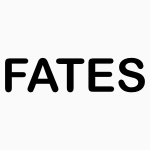 TestCom-FATES-2007-NeukirchenB #detection #problem #quality #smell #testing
TestCom-FATES-2007-NeukirchenB #detection #problem #quality #smell #testing- Utilising Code Smells to Detect Quality Problems in TTCN-3 Test Suites (HN, MB), pp. 228–243.
 ITiCSE-2006-OKellyG #approach #education #learning #problem #programming
ITiCSE-2006-OKellyG #approach #education #learning #problem #programming- RoboCode & problem-based learning: a non-prescriptive approach to teaching programming (JO, JPG), pp. 217–221.
 SCAM-J-2005-AntoniolKT06 #analysis #source code
SCAM-J-2005-AntoniolKT06 #analysis #source code- Special issue on Source code analysis and manipulation (GA, JK, PT), pp. 205–208.
 CSMR-2006-MensK #source code
CSMR-2006-MensK #source code- IntensiVE, a toolsuite for documenting and checking structural source-code regularities (KM, AK), pp. 239–248.
 ICPC-2006-DesmondSE #source code
ICPC-2006-DesmondSE #source code- Fluid Source Code Views (MD, MADS, CE), pp. 260–263.
 ICPC-2006-LuciaOZP #empirical #information management #source code #traceability
ICPC-2006-LuciaOZP #empirical #information management #source code #traceability- Improving Comprehensibility of Source Code via Traceability Information: a Controlled Experiment (ADL, RO, FZ, MDP), pp. 317–326.
 ICPC-2006-MadouPB #comprehension #obfuscation
ICPC-2006-MadouPB #comprehension #obfuscation- Understanding Obfuscated Code (MM, LVP, KDB), pp. 268–274.
 ICPC-2006-PoshyvanykMD #eclipse #named #plugin #source code
ICPC-2006-PoshyvanykMD #eclipse #named #plugin #source code- JIRiSS — an Eclipse plug-in for Source Code Exploration (DP, AM, YD), pp. 252–255.
 ICSM-2006-CanforaCP #co-evolution #identification #on the #using
ICSM-2006-CanforaCP #co-evolution #identification #on the #using- On the Use of Line Co-change for Identifying Crosscutting Concern Code (GC, LC, MDP), pp. 213–222.
 ICSM-2006-GoldHLM #approach #bound #concept #source code #using
ICSM-2006-GoldHLM #approach #bound #concept #source code #using- Allowing Overlapping Boundaries in Source Code using a Search Based Approach to Concept Binding (NG, MH, ZL, KM), pp. 310–319.
 ICSM-2006-Hou #constraints #design #source code #using
ICSM-2006-Hou #constraints #design #source code #using- Using Structural Constraints to Specify and Check Design Intent in Source Code — Ph.D. Dissertation Synopsis (DH), pp. 343–346.
 ICSM-2006-NeginhalK #c #comprehension #graph #reduction
ICSM-2006-NeginhalK #c #comprehension #graph #reduction- Event Views and Graph Reductions for Understanding System Level C Code (SN, SK), pp. 279–288.
 ICSM-2006-PoshyvanykPMXL #source code
ICSM-2006-PoshyvanykPMXL #source code- Source Code Exploration with Google (DP, MP, AM, XX, DL), pp. 334–338.
 ICSM-2006-Robillard #empirical #evolution #source code
ICSM-2006-Robillard #empirical #evolution #source code- Tracking Concerns in Evolving Source Code: An Empirical Study (MPR), pp. 479–482.
 ICSM-2006-YaoMKB #automation #c #metaprogramming #program transformation #source code
ICSM-2006-YaoMKB #automation #c #metaprogramming #program transformation #source code- C Macro Handling in Automated Source Code Transformation Systems (BY, WM, SK, RB), pp. 68–69.
 MSR-2006-JiangH #evolution
MSR-2006-JiangH #evolution- Examining the evolution of code comments in PostgreSQL (ZMJ, AEH), pp. 179–180.
 MSR-2006-KnabPB #fault #predict #source code
MSR-2006-KnabPB #fault #predict #source code- Predicting defect densities in source code files with decision tree learners (PK, MP, AB), pp. 119–125.
 WCRE-2006-GanesanMKY #aspect-oriented #case study #product line #source code
WCRE-2006-GanesanMKY #aspect-oriented #case study #product line #source code- Discovering Organizational Aspects from the Source Code History Log during the Product Line Planning Phase — A Case Study (DG, DM, JK, KY), pp. 211–220.
 WCRE-2006-KorshunovaPBM #c++ #diagrams #named #process #reverse engineering #sequence #source code #uml #xmi
WCRE-2006-KorshunovaPBM #c++ #diagrams #named #process #reverse engineering #sequence #source code #uml #xmi- CPP2XMI: Reverse Engineering of UML Class, Sequence, and Activity Diagrams from C++ Source Code (EK, MP, MvdB, MRM), pp. 297–298.
 WCRE-2006-MoiseW #fact extraction #perl
WCRE-2006-MoiseW #fact extraction #perl- Extracting Facts from Perl Code (DLM, KW), pp. 243–252.
 WCRE-2006-MoonenM #security
WCRE-2006-MoonenM #security- Code Based Software Security Assessments (LM, SM), p. 313.
 WCRE-2006-Ribic #concept #decompiler #embedded #equivalence #execution #implementation #programming language
WCRE-2006-Ribic #concept #decompiler #embedded #equivalence #execution #implementation #programming language- Concept and implementation of the programming language and translator, for embedded systems, based on machine code decompilation and equivalence between source and executable code (SR), pp. 307–308.
 CIAA-2006-Tischler #automaton #finite #random #refinement #video
CIAA-2006-Tischler #automaton #finite #random #refinement #video- Refinement of Near Random Access Video Coding with Weighted Finite Automata (GT), pp. 46–57.
 DLT-2006-JonoskaKM
DLT-2006-JonoskaKM- Involution Solid and Join Codes (NJ, LK, KM), pp. 192–202.
 ICALP-v1-2006-Reichardt #fault tolerance #quantum
ICALP-v1-2006-Reichardt #fault tolerance #quantum- Fault-Tolerance Threshold for a Distance-Three Quantum Code (BR), pp. 50–61.
 CHI-2006-JakobsenH #source code
CHI-2006-JakobsenH #source code- Evaluating a fisheye view of source code (MRJ, KH), pp. 377–386.
 CHI-2006-KoM #editing #framework #implementation #interactive #named #tool support
CHI-2006-KoM #editing #framework #implementation #interactive #named #tool support- Barista: An implementation framework for enabling new tools, interaction techniques and views in code editors (AJK, BAM), pp. 387–396.
 SOFTVIS-2006-FronkBK #3d #java #visualisation
SOFTVIS-2006-FronkBK #3d #java #visualisation- 3D visualisation of code structures in Java software systems (AF, AB, MK), pp. 145–146.
 SOFTVIS-2006-ParninG #lightweight #smell #visualisation
SOFTVIS-2006-ParninG #lightweight #smell #visualisation- Lightweight visualizations for inspecting code smells (CP, CG), pp. 171–172.
 ICPR-v3-2006-EscaleraP #named #novel
ICPR-v3-2006-EscaleraP #named #novel- ECOC-ONE: A Novel Coding and Decoding Strategy (SE, OP), pp. 578–581.
 ICPR-v3-2006-Haralick #concept #testing
ICPR-v3-2006-Haralick #concept #testing- Basic Concepts For Testing The Torah Code Hypothesis (RMH), pp. 104–109.
 ICPR-v3-2006-Haralick06a #protocol #testing
ICPR-v3-2006-Haralick06a #protocol #testing- Testing The Torah Code Hypothesis: The Experimental Protocol (RMH), pp. 110–115.
 ICPR-v3-2006-Levitt #analysis #component
ICPR-v3-2006-Levitt #analysis #component- Component Analysis of Torah Code Phrases (AL), pp. 412–416.
 ICPR-v3-2006-RipsL #clustering
ICPR-v3-2006-RipsL #clustering- The Twin Towers Cluster in Torah Codes (ER, AL), pp. 408–411.
 ICPR-v3-2006-ZhangY #image #multi #using
ICPR-v3-2006-ZhangY #image #multi #using- Multiple Regions of Interest Image Coding using Compensation Scheme and Alternating Shift (LbZ, XY), pp. 758–761.
 ICPR-v4-2006-EscaleraPR #fault
ICPR-v4-2006-EscaleraPR #fault- Forest Extension of Error Correcting Output Codes and Boosted Landmarks (SE, OP, PR), pp. 104–107.
 ICPR-v4-2006-KongZK #precise #representation
ICPR-v4-2006-KongZK #precise #representation- An Anatomy of IrisCode for Precise Phase Representation (AWKK, DZ, MK), pp. 429–432.
 ICPR-v4-2006-QuanZ #using
ICPR-v4-2006-QuanZ #using- Data Hiding in MPEG Compressed Audio Using Wet Paper Codes (XQ, HZ), pp. 727–730.
 SEKE-2006-SadaouiS #implementation #java #specification
SEKE-2006-SadaouiS #implementation #java #specification- Implementation of CafeOBJ Specifications to Java Code (SS, SS), pp. 446–449.
 SPLC-2006-Tolvanen #code generation #modelling #product line
SPLC-2006-Tolvanen #code generation #modelling #product line- Domain-Specific Modeling and Code Generation for Product Lines (JPT), p. 229.
 ECOOP-2006-HajiyevVM #datalog #named #query #scalability #source code
ECOOP-2006-HajiyevVM #datalog #named #query #scalability #source code- codeQuest: Scalable Source Code Queries with Datalog (EH, MV, OdM), pp. 2–27.
 OOPSLA-2006-SahavechaphanC #mining #named
OOPSLA-2006-SahavechaphanC #mining #named- XSnippet: mining For sample code (NS, KTC), pp. 413–430.
 AdaEurope-2006-BreuerP #fault #kernel #linux #source code #static analysis
AdaEurope-2006-BreuerP #fault #kernel #linux #source code #static analysis- One Million (LOC) and Counting: Static Analysis for Errors and Vulnerabilities in the Linux Kernel Source Code (PTB, SP), pp. 56–70.
 AdaEurope-2006-Maurer #ada #using
AdaEurope-2006-Maurer #ada #using- Using Mathematics to Improve Ada Compiled Code (WDM), pp. 191–202.
 PADL-2006-Volder #declarative #named
PADL-2006-Volder #declarative #named- JQuery: A Generic Code Browser with a Declarative Configuration Language (KDV), pp. 88–102.
 PEPM-2006-GeayYF #assurance #quality
PEPM-2006-GeayYF #assurance #quality- Continuous code-quality assurance with SAFE (EG, EY, SJF), pp. 145–149.
 PEPM-2006-MadouPB #interactive #named #obfuscation
PEPM-2006-MadouPB #interactive #named #obfuscation- LOCO: an interactive code (De)obfuscation tool (MM, LVP, KDB), pp. 140–144.
 PEPM-2006-RepsBL #low level
PEPM-2006-RepsBL #low level- Intermediate-representation recovery from low-level code (TWR, GB, JL), pp. 100–111.
 PEPM-2006-SwadiTKP #approach #monad #staging
PEPM-2006-SwadiTKP #approach #monad #staging- A monadic approach for avoiding code duplication when staging memoized functions (KNS, WT, OK, EP), pp. 160–169.
 PLDI-2006-CookPR #proving #termination
PLDI-2006-CookPR #proving #termination- Termination proofs for systems code (BC, AP, AR), pp. 415–426.
 PLDI-2006-DhurjatiKA #alias #analysis #named
PLDI-2006-DhurjatiKA #alias #analysis #named- SAFECode: enforcing alias analysis for weakly typed languages (DD, SK, VSA), pp. 144–157.
 PLDI-2006-FengSVXN #abstraction #assembly #composition #verification
PLDI-2006-FengSVXN #abstraction #assembly #composition #verification- Modular verification of assembly code with stack-based control abstractions (XF, ZS, AV, SX, ZN), pp. 401–414.
 POPL-2006-NiS #assembly #embedded #pointer #programming
POPL-2006-NiS #assembly #embedded #pointer #programming- Certified assembly programming with embedded code pointers (ZN, ZS), pp. 320–333.
 POPL-2006-Thielecke #pointer
POPL-2006-Thielecke #pointer- Frame rules from answer types for code pointers (HT), pp. 309–319.
 PPDP-2006-YuseI #generative #multi #persistent #type system
PPDP-2006-YuseI #generative #multi #persistent #type system- A modal type system for multi-level generating extensions with persistent code (YY, AI), pp. 201–212.
 SAS-2006-ChangHN #analysis #low level #using
SAS-2006-ChangHN #analysis #low level #using- Analysis of Low-Level Code Using Cooperating Decompilers (BYEC, MH, GCN), pp. 318–335.
 SAS-2006-Yang #analysis #low level
SAS-2006-Yang #analysis #low level- Shape Analysis for Low-Level Code (HY), p. 280.
 ASE-2006-DenneyF #automation #certification #safety
ASE-2006-DenneyF #automation #certification #safety- Annotation Inference for Safety Certification of Automatically Generated Code (ED, BF), pp. 265–268.
 ASE-2006-HanakawaI #ajax #web
ASE-2006-HanakawaI #ajax #web- A new web browser including a transferable function to Ajax codes (NH, NI), pp. 351–352.
 ASE-2006-PenseriniPSM #multi #specification
ASE-2006-PenseriniPSM #multi #specification- From Capability Specifications to Code for Multi-Agent Software (LP, AP, AS, JM), pp. 253–256.
 ASE-2006-ShiO #design pattern #java #reverse engineering #source code
ASE-2006-ShiO #design pattern #java #reverse engineering #source code- Reverse Engineering of Design Patterns from Java Source Code (NS, RAO), pp. 123–134.
 ASE-2006-WeissgerberD #identification #refactoring #source code
ASE-2006-WeissgerberD #identification #refactoring #source code- Identifying Refactorings from Source-Code Changes (PW, SD), pp. 231–240.
 FSE-2006-MaozH #aspectj #compilation #multi
FSE-2006-MaozH #aspectj #compilation #multi- From multi-modal scenarios to code: compiling LSCs into aspectJ (SM, DH), pp. 219–230.
 ICSE-2006-FrantzeskouSGK #effectiveness #identification #source code #using
ICSE-2006-FrantzeskouSGK #effectiveness #identification #source code #using- Effective identification of source code authors using byte-level information (GF, ES, SG, SKK), pp. 893–896.
 ICSE-2006-MoriISI #detection #mobile
ICSE-2006-MoriISI #detection #mobile- A tool for analyzing and detecting malicious mobile code (AM, TI, TS, TI), pp. 831–834.
 ICSE-2006-Sindhgatta #information retrieval #source code #using
ICSE-2006-Sindhgatta #information retrieval #source code #using- Using an information retrieval system to retrieve source code samples (RS), pp. 905–908.
 ICSE-2006-XiePM #3d #concept #source code #visualisation
ICSE-2006-XiePM #3d #concept #source code #visualisation- 3D visualization for concept location in source code (XX, DP, AM), pp. 839–842.
 SAC-2006-AgostaCPS #analysis #bytecode #compilation #performance
SAC-2006-AgostaCPS #analysis #bytecode #compilation #performance- Selective compilation via fast code analysis and bytecode tracing (GA, SCR, PP, MS), pp. 906–911.
 SAC-2006-ArastehHS #adaptation #image #segmentation
SAC-2006-ArastehHS #adaptation #image #segmentation- Adaptive dynamic run-length coding for image segmentation (SA, CCH, ES), pp. 31–36.
 SAC-2006-CutelloNP #algorithm #hybrid #optimisation #using
SAC-2006-CutelloNP #algorithm #hybrid #optimisation #using- Real coded clonal selection algorithm for unconstrained global optimization using a hybrid inversely proportional hypermutation operator (VC, GN, MP), pp. 950–954.
 GPCE-2006-DenneyF #algorithm #automation #certification #safety
GPCE-2006-DenneyF #algorithm #automation #certification #safety- A generic annotation inference algorithm for the safety certification of automatically generated code (ED, BF), pp. 121–130.
 GPCE-2006-TilevichS #program transformation
GPCE-2006-TilevichS #program transformation- Transparent program transformations in the presence of opaque code (ET, YS), pp. 89–94.
 CC-2006-DiasR #assembly #declarative #using
CC-2006-DiasR #assembly #declarative #using- Converting Intermediate Code to Assembly Code Using Declarative Machine Descriptions (JD, NR), pp. 217–231.
 CC-2006-VasilacheBC #code generation
CC-2006-VasilacheBC #code generation- Polyhedral Code Generation in the Real World (NV, CB, AC), pp. 185–201.
 CGO-2006-BrueningKGB #thread
CGO-2006-BrueningKGB #thread- Thread-Shared Software Code Caches (DB, VK, TG, SB), pp. 28–38.
 CGO-2006-HazelwoodC #architecture #interface
CGO-2006-HazelwoodC #architecture #interface- A Cross-Architectural Interface for Code Cache Manipulation (KMH, RSC), pp. 17–27.
 CGO-2006-LauPC #analysis
CGO-2006-LauPC #analysis- Selecting Software Phase Markers with Code Structure Analysis (JL, EP, BC), pp. 135–146.
 CGO-2006-LupoW #optimisation
CGO-2006-LupoW #optimisation- Post Register Allocation Spill Code Optimization (CL, KDW), pp. 245–255.
 DAC-2006-OzturkCK #approach #constraints #network #optimisation #parallel
DAC-2006-OzturkCK #approach #constraints #network #optimisation #parallel- Optimizing code parallelization through a constraint network based approach (ÖÖ, GC, MTK), pp. 863–688.
 DATE-2006-AlmukhaizimM #concurrent #detection #fault
DATE-2006-AlmukhaizimM #concurrent #detection #fault- Berger code-based concurrent error detection in asynchronous burst-mode machines (SA, YM), pp. 71–72.
 DATE-2006-BrackKW #design
DATE-2006-BrackKW #design- Disclosing the LDPC code decoder design space (TB, FK, NW), pp. 200–205.
 DATE-2006-KavousianosKN #multi #performance #testing #using
DATE-2006-KavousianosKN #multi #performance #testing #using- Efficient test-data compression for IP cores using multilevel Huffman coding (XK, EK, DN), pp. 1033–1038.
 DATE-2006-LahiriBCM #clustering #speech
DATE-2006-LahiriBCM #clustering #speech- Battery-aware code partitioning for a text to speech system (AL, AB, MC, SM), pp. 672–677.
 DATE-2006-ParkOPSH #embedded #source code
DATE-2006-ParkOPSH #embedded #source code- Dynamic code overlay of SDF-modeled programs on low-end embedded systems (HwP, KO, SP, MmS, SH), pp. 945–946.
 DATE-2006-ScharwachterHLAM #hardware #interprocedural #multi #network #optimisation #thread #using
DATE-2006-ScharwachterHLAM #hardware #interprocedural #multi #network #optimisation #thread #using- An interprocedural code optimization technique for network processors using hardware multi-threading support (HS, MH, RL, GA, HM), pp. 919–924.
 DATE-2006-UdayakumaranB
DATE-2006-UdayakumaranB- An integrated scratch-pad allocator for affine and non-affine code (SU, RB), pp. 925–930.
 DATE-2006-ZmilyK #embedded #energy #performance
DATE-2006-ZmilyK #embedded #energy #performance- Simultaneously improving code size, performance, and energy in embedded processors (AZ, CK), pp. 224–229.
 HPDC-2006-WoitaszekT #fault tolerance
HPDC-2006-WoitaszekT #fault tolerance- Fault Tolerance of Tornado Codes for Archival Storage (MW, HMT), pp. 83–92.
 ISMM-2006-HuangBGM #order #performance
ISMM-2006-HuangBGM #order #performance- Fast and efficient partial code reordering: taking advantage of dynamic recompilatior (XH, SMB, DG, KSM), pp. 184–192.
 LCTES-2006-EdwardsT #code generation #modelling #performance
LCTES-2006-EdwardsT #code generation #modelling #performance- Efficient code generation from SHIM models (SAE, OT), pp. 125–134.
 LCTES-2006-PlatenE #feedback #layout #optimisation
LCTES-2006-PlatenE #feedback #layout #optimisation- Feedback linking: optimizing object code layout for updates (CvP, JE), pp. 2–11.
 LCTES-2006-RothamelLHL #generative #specification
LCTES-2006-RothamelLHL #generative #specification- Generating optimized code from SCR specifications (TR, YAL, CLH, EIL), pp. 135–144.
 PDP-2006-Barlas #analysis #clustering #taxonomy #video
PDP-2006-Barlas #analysis #clustering #taxonomy #video- A Taxonomy and DLT-Based Analysis of Cluster-Based Video Trans/En-Coding (GDB), pp. 388–395.
 PPoPP-2006-Steele #parallel #programming
PPoPP-2006-Steele #parallel #programming- Parallel programming and code selection in fortress (GLSJ), p. 1.
 FASE-2006-GeigerFGP #clone tracking
FASE-2006-GeigerFGP #clone tracking- Relation of Code Clones and Change Couplings (RG, BF, HCG, MP), pp. 411–425.
 STOC-2006-GuruswamiR
STOC-2006-GuruswamiR- Explicit capacity-achieving list-decodable codes (VG, AR), pp. 1–10.
 CAV-2006-Das #specification
CAV-2006-Das #specification- Formal Specifications on Industrial-Strength Code-From Myth to Reality (MD), p. 1.
 ICLP-2006-AlbertAPH
ICLP-2006-AlbertAPH- Reduced Certificates for Abstraction-Carrying Code (EA, PAS, GP, MVH), pp. 163–178.
 ISSTA-2006-DennisCJ #composition #satisfiability #verification
ISSTA-2006-DennisCJ #composition #satisfiability #verification- Modular verification of code with SAT (GD, FSHC, DJ), pp. 109–120.
 VMCAI-2006-ChangCN #framework #program analysis #safety
VMCAI-2006-ChangCN #framework #program analysis #safety- A Framework for Certified Program Analysis and Its Applications to Mobile-Code Safety (BYEC, AC, GCN), pp. 174–189.
 ECDL-2005-BrisaboaFNP
ECDL-2005-BrisaboaFNP- Compressing Dynamic Text Collections via Phrase-Based Coding (NRB, AF, GN, JRP), pp. 462–474.
 ICDAR-2005-YinLH #documentation #image #using
ICDAR-2005-YinLH #documentation #image #using- Financial Document Image Coding with Regions of Interest Using JPEG2000 (XCY, CPL, ZH), pp. 96–100.
 ICDAR-2005-ZhouS #approach #fault #recognition #using
ICDAR-2005-ZhouS #approach #fault #recognition #using- Unconstrained Numeral Pair Recognition Using Enhanced Error Correcting Output Coding: A Holistic Approach (JZ, CYS), pp. 484–488.
 SIGITE-2005-LiP #education #effectiveness #programming #standard
SIGITE-2005-LiP #education #effectiveness #programming #standard- Effectively teaching coding standards in programming (XL, CP), pp. 239–244.
 CSMR-2005-DraheimLW #independence #reverse engineering #source code #web
CSMR-2005-DraheimLW #independence #reverse engineering #source code #web- A Source Code Independent Reverse Engineering Tool for Dynamic Web Sites (DD, CL, GW), pp. 168–177.
 CSMR-2005-GreevyD #analysis #approach #correlation #using
CSMR-2005-GreevyD #analysis #approach #correlation #using- Correlating Features and Code Using a Compact Two-Sided Trace Analysis Approach (OG, SD), pp. 314–323.
 CSMR-2005-RousidisT #case study #clustering #java #maintenance #source code
CSMR-2005-RousidisT #case study #clustering #java #maintenance #source code- Clustering Data Retrieved from Java Source Code to Support Software Maintenance: A Case Study (DR, CT), pp. 276–279.
 ICSM-2005-BinkleyCHRT #aspect-oriented #automation #object-oriented #refactoring
ICSM-2005-BinkleyCHRT #aspect-oriented #automation #object-oriented #refactoring- Automated Refactoring of Object Oriented Code into Aspects (DB, MC, MH, FR, PT), pp. 27–36.
 ICSM-2005-EisenbergV
ICSM-2005-EisenbergV- Dynamic Feature Traces: Finding Features in Unfamiliar Code (ADE, KDV), pp. 337–346.
 ICSM-2005-MarcusR #concept #identification #source code
ICSM-2005-MarcusR #concept #identification #source code- Identifications of Concepts, Features, and Concerns in Source Code (AM, VR), p. 718.
 ICSM-2005-MensK #framework #source code #testing #towards
ICSM-2005-MensK #framework #source code #testing #towards- Towards a Framework for Testing Structural Source-Code Regularities (KM, AK), pp. 679–682.
 ICSM-2005-MonteiroF #aspectj #java #refactoring
ICSM-2005-MonteiroF #aspectj #java #refactoring- Refactoring a Java Code Base to AspectJ: An Illustrative Example (MPM, JMF), pp. 17–26.
 ICSM-2005-TilevichSH #java #legacy #named #web
ICSM-2005-TilevichSH #java #legacy #named #web- Appletizing: Running Legacy Java Code Remotely from a Web Browser (ET, YS, MH), pp. 91–100.
 ICSM-2005-Zou #design #migration #object-oriented #quality
ICSM-2005-Zou #design #migration #object-oriented #quality- Quality Driven Software Migration of Procedural Code to Object-Oriented Design (YZ), pp. 709–713.
 ICSM-IT-2005-PoshyvanykMDS #named #source code
ICSM-IT-2005-PoshyvanykMDS #named #source code- IRiSS — A Source Code Exploration Tool (DP, AM, YD, AS), pp. 69–72.
 ICSM-IT-2005-VittekBM #c++ #comprehension #java #plugin #refactoring
ICSM-IT-2005-VittekBM #c++ #comprehension #java #plugin #refactoring- A collection of C, C++ and Java code understanding and refactoring plugins (MV, PB, PEM), pp. 61–64.
 IWPC-2005-AndersonZ #comprehension #framework #platform
IWPC-2005-AndersonZ #comprehension #framework #platform- The CodeSurfer Software Understanding Platform (PA, MZ), pp. 147–148.
 IWPC-2005-CoxC #comprehension #source code
IWPC-2005-CoxC #comprehension #source code- Working Session: Textual Views of Source Code to Support Comprehension (AC, MLC), pp. 109–112.
 IWPC-2005-DuxIDFK #behaviour #visualisation
IWPC-2005-DuxIDFK #behaviour #visualisation- Visualizing the Behavior of Dynamically Modifiable Code (BD, AI, SKD, DF, SGK), pp. 337–340.
 IWPC-2005-MarcusRBPS #concept #object-oriented
IWPC-2005-MarcusRBPS #concept #object-oriented- Static Techniques for Concept Location in Object-Oriented Code (AM, VR, JB, MP, AS), pp. 33–42.
 IWPC-2005-WalkinshawRW #behaviour #comprehension #object-oriented #perspective #source code
IWPC-2005-WalkinshawRW #behaviour #comprehension #object-oriented #perspective #source code- Understanding Object-Oriented Source Code from the Behavioural Perspective (NW, MR, MW), pp. 215–224.
 MSR-2005-AntoniolRV #linear #mining #predict #repository
MSR-2005-AntoniolRV #linear #mining #predict #repository- Linear predictive coding and cepstrum coefficients for mining time variant information from software repositories (GA, VFR, GV), pp. 61–65.
 MSR-2005-KagdiCM #mining #repository #source code #taxonomy #towards
MSR-2005-KagdiCM #mining #repository #source code #taxonomy #towards- Towards a taxonomy of approaches for mining of source code repositories (HHK, MLC, JIM), pp. 26–30.
 MSR-2005-KimN #comprehension #evolution #using
MSR-2005-KimN #comprehension #evolution #using- Using a clone genealogy extractor for understanding and supporting evolution of code clones (MK, DN), pp. 1–5.
 MSR-2005-NeamtiuFH #abstract syntax tree #comprehension #evolution #source code #syntax #using
MSR-2005-NeamtiuFH #abstract syntax tree #comprehension #evolution #source code #syntax #using- Understanding source code evolution using abstract syntax tree matching (IN, JSF, MWH), pp. 81–85.
 MSR-2005-YingWA #eclipse #mining #repository #source code
MSR-2005-YingWA #eclipse #mining #repository #source code- Source code that talks: an exploration of Eclipse task comments and their implication to repository mining (ATTY, JLW, SA), pp. 91–95.
 PASTE-2005-PutSMBCSB #editing #named
PASTE-2005-PutSMBCSB #editing #named- LANCET: a nifty code editing tool (LVP, BDS, MM, BDB, DC, KS, KDB), pp. 75–81.
 SCAM-2005-Singer #code generation #concept #debugging
SCAM-2005-Singer #code generation #concept #debugging- Concept Assignment as a Debugging Technique for Code Generators (JS), pp. 75–86.
 WCRE-2005-HassanJH #architecture
WCRE-2005-HassanJH #architecture- Source versus Object Code Extraction for Recovering Software Architecture (AEH, ZMJ, RCH), pp. 67–76.
 WCRE-2005-SpoonS #higher-order #navigation #scalability #semantics
WCRE-2005-SpoonS #higher-order #navigation #scalability #semantics- Semantic Navigation of Large Code Bases in Higher-Order, Dynamically Typed Languages (SAS, OS), pp. 219–228.
 WCRE-2005-UdupaDM #named #obfuscation #reverse engineering
WCRE-2005-UdupaDM #named #obfuscation #reverse engineering- Deobfuscation: Reverse Engineering Obfuscated Code (SKU, SKD, MM), pp. 45–54.
 CIAA-J-2004-KariKS05
CIAA-J-2004-KariKS05- Operations on trajectories with applications to coding and bioinformatics (LK, SK, PS), pp. 531–546.
 ICALP-2005-PredaG #abstract interpretation #obfuscation #semantics
ICALP-2005-PredaG #abstract interpretation #obfuscation #semantics- Semantic-Based Code Obfuscation by Abstract Interpretation (MDP, RG), pp. 1325–1336.
 ICALP-2005-WehnerW #bound #information retrieval
ICALP-2005-WehnerW #bound #information retrieval- Improved Lower Bounds for Locally Decodable Codes and Private Information Retrieval (SW, RdW), pp. 1424–1436.
 FM-2005-AndronickCP #embedded #security #smarttech #source code #verification
FM-2005-AndronickCP #embedded #security #smarttech #source code #verification- Formal Verification of Security Properties of Smart Card Embedded Source Code (JA, BC, CPM), pp. 302–317.
 IFM-2005-BracherK #security #specification #testing
IFM-2005-BracherK #security #specification #testing- Enabling Security Testing from Specification to Code (SB, PK), pp. 150–166.
 SEFM-2005-BlechGG #higher-order #verification
SEFM-2005-BlechGG #higher-order #verification- Formal Verification of Dead Code Elimination in Isabelle/HOL (JOB, LG, SG), pp. 200–209.
 SEFM-2005-HubertM #algorithm #c #case study #source code #verification
SEFM-2005-HubertM #algorithm #c #case study #source code #verification- A case study of C source code verification: the Schorr-Waite algorithm (TH, CM), pp. 190–199.
 SEFM-2005-LeinenbachPP #code generation #compilation #implementation #towards #verification
SEFM-2005-LeinenbachPP #code generation #compilation #implementation #towards #verification- Towards the Formal Verification of a C0 Compiler: Code Generation and Implementation Correctnes (DL, WJP, EP), pp. 2–12.
 SEFM-2005-PredaG #abstract interpretation #obfuscation
SEFM-2005-PredaG #abstract interpretation #obfuscation- Control Code Obfuscation by Abstract Interpretation (MDP, RG), pp. 301–310.
 ICFP-2005-FengS #assembly #composition #concurrent #termination #thread #verification
ICFP-2005-FengS #assembly #composition #concurrent #termination #thread #verification- Modular verification of concurrent assembly code with dynamic thread creation and termination (XF, ZS), pp. 254–267.
 SOFTVIS-2005-VoineaTW #evolution #named #visualisation
SOFTVIS-2005-VoineaTW #evolution #named #visualisation- CVSscan: visualization of code evolution (LV, ACT, JJvW), pp. 47–56.
 VISSOFT-2005-RillingN #3d #analysis #comprehension #design pattern
VISSOFT-2005-RillingN #3d #analysis #comprehension #design pattern- Applying Code Analysis and 3D Design Pattern Grouping to Facilitate Program Comprehension (JR, VLN), pp. 123–124.
 VISSOFT-2005-TeleaV #evolution #interactive #source code #visual notation
VISSOFT-2005-TeleaV #evolution #interactive #source code #visual notation- Interactive Visual Mechanisms for Exploring Source Code Evolution (ACT, LV), pp. 52–57.
 ICML-2005-IeWNL #adaptation #multi #recognition #using
ICML-2005-IeWNL #adaptation #multi #recognition #using- Multi-class protein fold recognition using adaptive codes (EI, JW, WSN, CSL), pp. 329–336.
 ICML-2005-JinZ #algorithm #probability #using
ICML-2005-JinZ #algorithm #probability #using- A smoothed boosting algorithm using probabilistic output codes (RJ, JZ), pp. 361–368.
 ICML-2005-SunTLW #framework
ICML-2005-SunTLW #framework- Unifying the error-correcting and output-code AdaBoost within the margin framework (YS, ST, JL, DW), pp. 872–879.
 LSO-2005-NickDW
LSO-2005-NickDW- Experience-based Support for Code Inspections (MN, CD, TW), pp. 67–71.
 SEKE-2005-LiuBY #development #formal method
SEKE-2005-LiuBY #development #formal method- A Formal Foundation of Code Pattern Based Development (JL, FBB, ILY), pp. 274–279.
 SEKE-2005-LiWMW #constraints #generative #testing #theorem proving
SEKE-2005-LiWMW #constraints #generative #testing #theorem proving- A Constraint Solver for Code-based Test Data Generation (JJL, WEW, XM, DMW), pp. 300–305.
 ECMDA-FA-2005-BurmesterGS #architecture #framework #independence #modelling #platform #realtime
ECMDA-FA-2005-BurmesterGS #architecture #framework #independence #modelling #platform #realtime- Model-Driven Architecture for Hard Real-Time Systems: From Platform Independent Models to Code (SB, HG, WS), pp. 25–40.
 MoDELS-2005-ChauvelJ #code generation #modelling #semantics #uml
MoDELS-2005-ChauvelJ #code generation #modelling #semantics #uml- Code Generation from UML Models with Semantic Variation Points (FC, JMJ), pp. 54–68.
 MoDELS-2005-JurjensH #modelling #uml
MoDELS-2005-JurjensH #modelling #uml- Dynamic Secure Aspect Modeling with UML: From Models to Code (JJ, SHH), pp. 142–155.
 MoDELS-2005-ChauvelJ #code generation #modelling #semantics #uml
MoDELS-2005-ChauvelJ #code generation #modelling #semantics #uml- Code Generation from UML Models with Semantic Variation Points (FC, JMJ), pp. 54–68.
 MoDELS-2005-JurjensH #modelling #uml
MoDELS-2005-JurjensH #modelling #uml- Dynamic Secure Aspect Modeling with UML: From Models to Code (JJ, SHH), pp. 142–155.
 ECOOP-2005-PistoiaFKS #analysis #detection #interprocedural
ECOOP-2005-PistoiaFKS #analysis #detection #interprocedural- Interprocedural Analysis for Privileged Code Placement and Tainted Variable Detection (MP, RJF, LK, VCS), pp. 362–386.
 OOPSLA-2005-AhernY #formal method #java
OOPSLA-2005-AhernY #formal method #java- Formalising Java RMI with explicit code mobility (AA, NY), pp. 403–422.
 OOPSLA-2005-GilM #java
OOPSLA-2005-GilM #java- Micro patterns in Java code (JYG, IM), pp. 97–116.
 PADL-2005-Debray
PADL-2005-Debray- Code Compression (SKD), pp. 5–6.
 PADL-2005-WangGL #code generation #continuation #logic #semantics #towards
PADL-2005-WangGL #code generation #continuation #logic #semantics #towards- Towards Provably Correct Code Generation via Horn Logical Continuation Semantics (QW, GG, ML), pp. 98–112.
 PLDI-2005-AletaCGK #on the fly
PLDI-2005-AletaCGK #on the fly- Demystifying on-the-fly spill code (AA, JMC, AG, DRK), pp. 180–189.
 PLDI-2005-Jimenez #branch #predict
PLDI-2005-Jimenez #branch #predict- Code placement for improving dynamic branch prediction accuracy (DAJ), pp. 107–116.
 PPDP-2005-HermenegildoALP #abstraction
PPDP-2005-HermenegildoALP #abstraction- Abstraction carrying code and resource-awareness (MVH, EA, PLG, GP), pp. 1–11.
 PPDP-2005-KirchnerMR #pattern matching #validation
PPDP-2005-KirchnerMR #pattern matching #validation- Formal validation of pattern matching code (CK, PEM, AR), pp. 187–197.
 SAS-2005-HarrenN #assembly #dependent type #safety #using
SAS-2005-HarrenN #assembly #dependent type #safety #using- Using Dependent Types to Certify the Safety of Assembly Code (MH, GCN), pp. 155–170.
 RE-2005-YuWMLLL #legacy #modelling #reverse engineering
RE-2005-YuWMLLL #legacy #modelling #reverse engineering- Reverse Engineering Goal Models from Legacy Code (YY, YW, JM, SL, AL, JCSdPL), pp. 363–372.
 ASE-2005-GeW #architecture #code generation #configuration management #framework #modelling #named
ASE-2005-GeW #architecture #code generation #configuration management #framework #modelling #named- Bamboo: an architecture modeling and code generation framework for configuration management systems (GG, EJWJ), pp. 427–428.
 ASE-2005-GuptaHZG #using
ASE-2005-GuptaHZG #using- Locating faulty code using failure-inducing chops (NG, HH, XZ, RG), pp. 263–272.
 ASE-2005-JurjensY #analysis #security
ASE-2005-JurjensY #analysis #security- Code security analysis with assertions (JJ, MY), pp. 392–395.
 ASE-2005-SwintPJYKWCSM #code generation #composition #flexibility #named
ASE-2005-SwintPJYKWCSM #code generation #composition #flexibility #named- Clearwater: extensible, flexible, modular code generation (GSS, CP, GJ, WY, YK, QW, CC, AS, KM), pp. 144–153.
 ASE-2005-Zheng #source code #testing
ASE-2005-Zheng #source code #testing- In regression testing selection when source code is not available (JZ0), pp. 452–455.
 ESEC-FSE-2005-KimSN #empirical
ESEC-FSE-2005-KimSN #empirical- An empirical study of code clone genealogies (MK, VS, DN, GCM), pp. 187–196.
 ESEC-FSE-2005-LiZ #automation #detection #named #programming #scalability
ESEC-FSE-2005-LiZ #automation #detection #named #programming #scalability- PR-Miner: automatically extracting implicit programming rules and detecting violations in large software code (ZL, YZ), pp. 306–315.
 ICSE-2005-HolmesM #recommendation #source code #using
ICSE-2005-HolmesM #recommendation #source code #using- Using structural context to recommend source code examples (RH, GCM), pp. 117–125.
 ICSE-2005-LanzaDGP #comprehension #named #visualisation
ICSE-2005-LanzaDGP #comprehension #named #visualisation- CodeCrawler: an information visualization tool for program comprehension (ML, SD, HG, MP), pp. 672–673.
 ICSE-2005-NagappanB #fault #metric #predict #using
ICSE-2005-NagappanB #fault #metric #predict #using- Use of relative code churn measures to predict system defect density (NN, TB), pp. 284–292.
 ICSE-2005-TilevichS #refactoring
ICSE-2005-TilevichS #refactoring- Binary refactoring: improving code behind the scenes (ET, YS), pp. 264–273.
 ICSE-2005-Tonella #object-oriented #reverse engineering
ICSE-2005-Tonella #object-oriented #reverse engineering- Reverse engineering of object oriented code (PT), pp. 724–725.
 SAC-2005-BellaachiaR #database #performance #string
SAC-2005-BellaachiaR #database #performance #string- Efficiency of prefix and non-prefix codes in string matching over compressed databases on handheld devices (AB, IAR), pp. 993–997.
 SAC-2005-CabralMS #dot-net #named
SAC-2005-CabralMS #dot-net #named- RAIL: code instrumentation for .NET (BC, PM, LMS), pp. 1282–1287.
 SAC-2005-CazzolaCC #c#
SAC-2005-CazzolaCC #c#- [a]C#: C# with a customizable code annotation mechanism (WC, AC, DC), pp. 1264–1268.
 SAC-2005-GoettlBJ #algorithm #email #search-based
SAC-2005-GoettlBJ #algorithm #email #search-based- Call me e-mail: arranging the keyboard with a permutation-coded genetic algorithm (JSG, AWB, BAJ), pp. 947–951.
 SAC-2005-HsiehCLT #detection #named #predict #sequence
SAC-2005-HsiehCLT #detection #named #predict #sequence- EXONSCAN: EXON prediction with Signal detection and Coding region AligNment in homologous sequences (SJH, YSC, CYL, CYT), pp. 202–203.
 SAC-2005-MenonS #embedded
SAC-2005-MenonS #embedded- A code compression advisory tool for embedded processors (SKM, PS), pp. 863–867.
 SAC-2005-Nakayama #communication #mobile
SAC-2005-Nakayama #communication #mobile- Alternative source coding model for mobile text communication (TN), pp. 1139–1145.
 SAC-2005-RothPP #distributed #mobile
SAC-2005-RothPP #distributed #mobile- A distributed content-based search engine based on mobile code (VR, UP, JP), pp. 66–73.
 SAC-2005-WongQC #risk management #source code
SAC-2005-WongQC #risk management #source code- Source code-based software risk assessing (WEW, YQ, KMLC), pp. 1485–1490.
 GPCE-2005-CaretteK #abstraction #monad #multi #programming
GPCE-2005-CaretteK #abstraction #monad #multi #programming- Multi-stage Programming with Functors and Monads: Eliminating Abstraction Overhead from Generic Code (JC, OK), pp. 256–274.
 GPCE-2005-MossM #code generation #domain-specific language #performance
GPCE-2005-MossM #code generation #domain-specific language #performance- Efficient Code Generation for a Domain Specific Language (AM, HLM), pp. 47–62.
 LDTA-2005-WaddingtonY #c #c++ #program transformation
LDTA-2005-WaddingtonY #c #c++ #program transformation- High-Fidelity C/C++ Code Transformation (DGW, BY), pp. 35–56.
 CC-2005-BalakrishnanGRT #bytecode #framework #named #platform
CC-2005-BalakrishnanGRT #bytecode #framework #named #platform- CodeSurfer/x86 — A Platform for Analyzing x86 Executables (GB, RG, TWR, TT), pp. 250–254.
 CC-2005-ShashidharBCJ #equivalence #program transformation #source code #verification
CC-2005-ShashidharBCJ #equivalence #program transformation #source code #verification- Verification of Source Code Transformations by Program Equivalence Checking (KCS, MB, FC, GJ), pp. 221–236.
 CGO-2005-BrueningA #bound #capacity #consistency #maintenance
CGO-2005-BrueningA #bound #capacity #consistency #maintenance- Maintaining Consistency and Bounding Capacity of Software Code Caches (DB, SPA), pp. 74–85.
 CGO-2005-ChenK #code generation #optimisation
CGO-2005-ChenK #code generation #optimisation- Optimizing Address Code Generation for Array-Intensive DSP Applications (GC, MTK), pp. 141–152.
 CGO-2005-DaiZHY #compilation #framework #optimisation #using
CGO-2005-DaiZHY #compilation #framework #optimisation #using- A General Compiler Framework for Speculative Optimizations Using Data Speculative Code Motion (XD, AZ, WCH, PCY), pp. 280–290.
 CGO-2005-RavindranNDMSMB #compilation #power management
CGO-2005-RavindranNDMSMB #compilation #power management- Compiler Managed Dynamic Instruction Placement in a Low-Power Code Cache (RAR, PDN, GSD, EDM, RMS, SAM, RBB), pp. 179–190.
 CGO-2005-WuEW #code generation #performance #runtime
CGO-2005-WuEW #code generation #performance #runtime- Efficient SIMD Code Generation for Runtime Alignment and Length Conversion (PW, AEE, AW), pp. 153–164.
 COCV-J-2005-AmmeRF #mobile
COCV-J-2005-AmmeRF #mobile- Quantifying the Benefits of SSA-Based Mobile Code (WA, JvR, MF), pp. 103–119.
 COCV-J-2005-BlechGLM #code generation #comparison #correctness #higher-order #optimisation #proving
COCV-J-2005-BlechGLM #code generation #comparison #correctness #higher-order #optimisation #proving- Optimizing Code Generation from SSA Form: A Comparison Between Two Formal Correctness Proofs in Isabelle/HOL (JOB, SG, JL, SM), pp. 33–51.
 DAC-2005-Goldfeder #embedded #multi
DAC-2005-Goldfeder #embedded #multi- Frequency-based code placement for embedded multiprocessors (CG), pp. 696–699.
 DAC-2005-KaruriFKLAM #design #fine-grained #profiling #source code
DAC-2005-KaruriFKLAM #design #fine-grained #profiling #source code- Fine-grained application source code profiling for ASIP design (KK, MAAF, SK, RL, GA, HM), pp. 329–334.
 DAC-2005-KimK #array #design #embedded #memory management #optimisation #scheduling
DAC-2005-KimK #array #design #embedded #memory management #optimisation #scheduling- Memory access optimization through combined code scheduling, memory allocation, and array binding in embedded system design (JK, TK), pp. 105–110.
 DAC-2005-TopalogluO #approach #process
DAC-2005-TopalogluO #approach #process- A DFT approach for diagnosis and process variation-aware structural test of thermometer coded current steering DACs (ROT, AO), pp. 851–856.
 DAC-2005-UrardPGMLYG
DAC-2005-UrardPGMLYG- A 135Mbps DVB-S2 compliant codec based on 64800-bit LDPC and BCH codes (ISSCC paper 24.3) (PU, LP, PG, TM, VL, EY, BG), pp. 547–548.
 DATE-2005-GuoBNV #c #generative
DATE-2005-GuoBNV #c #generative- Optimized Generation of Data-Path from C Codes for FPGAs (ZG, BB, WAN, KAV), pp. 112–117.
 DATE-2005-KienleBW
DATE-2005-KienleBW- A Synthesizable IP Core for DVB-S2 LDPC Code Decoding (FK, TB, NW), pp. 100–105.
 DATE-2005-OzturkSKK #embedded
DATE-2005-OzturkSKK #embedded- Access Pattern-Based Code Compression for Memory-Constrained Embedded Systems (ÖÖ, HS, MTK, IK), pp. 882–887.
 DATE-2005-PolianCB #optimisation
DATE-2005-PolianCB #optimisation- Evolutionary Optimization in Code-Based Test Compression (IP, AC, BB), pp. 1124–1129.
 DATE-2005-SchianoOLPS #analysis #fault #on the #reliability
DATE-2005-SchianoOLPS #analysis #fault #on the #reliability- On the Analysis of Reed Solomon Coding for Resilience to Transient/Permanent Faults in Highly Reliable Memories (LS, MO, FL, SP, AS), pp. 580–585.
 DATE-2005-ShashidharBCJ #algebra #equivalence #functional #source code #verification
DATE-2005-ShashidharBCJ #algebra #equivalence #functional #source code #verification- Functional Equivalence Checking for Verification of Algebraic Transformations on Array-Intensive Source Code (KCS, MB, FC, GJ), pp. 1310–1315.
 LCTES-2005-BriskMNS #taxonomy
LCTES-2005-BriskMNS #taxonomy- A dictionary construction technique for code compression systems with echo instructions (PB, JM, AN, MS), pp. 105–114.
 LCTES-2005-HenzingerKM #code generation #composition #distributed
LCTES-2005-HenzingerKM #code generation #composition #distributed- Composable code generation for distributed giotto (TAH, CMK, SM), pp. 21–30.
 PDP-2005-DortaRSG #repository #source code
PDP-2005-DortaRSG #repository #source code- The OpenMP Source Code Repository (AJD, CR, FdS, AGE), pp. 244–250.
 PDP-2005-TerstyanszkyDGKSWK #legacy #security
PDP-2005-TerstyanszkyDGKSWK #legacy #security- Security Mechanisms for Legacy Code Applications in GT3 Environment (GT, TD, AG, TK, KS, SCW, PK), pp. 220–226.
 PPoPP-2005-ChenFGLABD #approach #fault tolerance #performance
PPoPP-2005-ChenFGLABD #approach #fault tolerance #performance- Fault tolerant high performance computing by a coding approach (ZC, GEF, EG, JL, TA, GB, JD), pp. 213–223.
 SOSP-2005-SeshadriLSPDK #execution #legacy #named #verification
SOSP-2005-SeshadriLSPDK #execution #legacy #named #verification- Pioneer: verifying code integrity and enforcing untampered code execution on legacy systems (AS, ML, ES, AP, LvD, PKK), pp. 1–16.
 FASE-2005-JakobacEM #analysis #comprehension #interactive #source code
FASE-2005-JakobacEM #analysis #comprehension #interactive #source code- Improving System Understanding via Interactive, Tailorable, Source Code Analysis (VJ, AE, NM), pp. 253–268.
 STOC-2005-DvirS #polynomial #query #testing
STOC-2005-DvirS #polynomial #query #testing- Locally decodable codes with 2 queries and polynomial identity testing for depth 3 circuits (ZD, AS), pp. 592–601.
 STOC-2005-GuruswamiR
STOC-2005-GuruswamiR- Limits to list decoding Reed-Solomon codes (VG, AR), pp. 602–609.
 STOC-2005-Regev #encryption #fault #learning #linear #on the #random
STOC-2005-Regev #encryption #fault #learning #linear #on the #random- On lattices, learning with errors, random linear codes, and cryptography (OR), pp. 84–93.
 A-MOST-2005-CaiL #detection #fault #test coverage #testing
A-MOST-2005-CaiL #detection #fault #test coverage #testing- The effect of code coverage on fault detection under different testing profiles (XC, MRL), pp. 84–90.
 CAV-2005-BalakrishnanRKLLMGYCT #bytecode #model checking
CAV-2005-BalakrishnanRKLLMGYCT #bytecode #model checking- Model Checking x86 Executables with CodeSurfer/x86 and WPDS++ (GB, TWR, NK, AL, JL, DM, RG, SHY, CHC, TT), pp. 158–163.
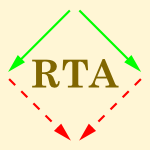 RTA-2005-Felty #approach #semantics #tutorial
RTA-2005-Felty #approach #semantics #tutorial- A Tutorial Example of the Semantic Approach to Foundational Proof-Carrying Code (APF), pp. 394–406.
 TLCA-2005-Felty #approach #semantics #tutorial
TLCA-2005-Felty #approach #semantics #tutorial- A Tutorial Example of the Semantic Approach to Foundational Proof-Carrying Code: Abstract (APF), p. 10.
 VMCAI-2005-Goubault-LarrecqP #analysis #c #encryption #protocol
VMCAI-2005-Goubault-LarrecqP #analysis #c #encryption #protocol- Cryptographic Protocol Analysis on Real C Code (JGL, FP), pp. 363–379.
 VMCAI-2005-Hymans #abstract interpretation #fault #verification
VMCAI-2005-Hymans #abstract interpretation #fault #verification- Verification of an Error Correcting Code by Abstract Interpretation (CH), pp. 330–345.
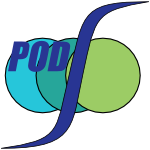 PODS-2004-GuptaKR #query
PODS-2004-GuptaKR #query- Roads, Codes and Spatiotemporal Queries (SG, SK, CVR), pp. 115–124.
 ITiCSE-2004-Garner #learning #programming #using
ITiCSE-2004-Garner #learning #programming #using- The use of a code restructuring tool in the learning of programming (SG), p. 277.
 CSMR-2004-Al-EkramK #composition #concept #slicing #source code #using
CSMR-2004-Al-EkramK #composition #concept #slicing #source code #using- Source Code Modularization Using Lattice of Concept Slices (RAE, KK), pp. 195–203.
 CSMR-2004-Martin #automation #generative #program transformation #source code
CSMR-2004-Martin #automation #generative #program transformation #source code- Automated Source Code Transformations on Fourth Generation Languages (JM), pp. 214–222.
 ICSM-2004-Anderson
ICSM-2004-Anderson- CodeSurfer/Path Inspector (PA), p. 508.
 ICSM-2004-FerencBG #fact extraction
ICSM-2004-FerencBG #fact extraction- Fact Extraction and Code Auditing with Columbus and SourceAudit (RF, ÁB, TG), p. 513.
 ICSM-2004-MaleticC #analysis #difference #source code
ICSM-2004-MaleticC #analysis #difference #source code- Supporting Source Code Difference Analysis (JIM, MLC), pp. 210–219.
 ICSM-2004-MantylaVL #smell
ICSM-2004-MantylaVL #smell- Bad Smells — Humans as Code Critics (MM, JV, CL), pp. 399–408.
 ICSM-2004-PinzgerFJG #source code
ICSM-2004-PinzgerFJG #source code- Abstracting Module Views from Source Code (MP, MF, MJ, HG), p. 533.
 ICSM-2004-RaghavanRLPA #difference #named #scalability #semantics
ICSM-2004-RaghavanRLPA #difference #named #scalability #semantics- Dex: A Semantic-Graph Differencing Tool for Studying Changes in Large Code Bases (SR, RR, DL, AP, VA), pp. 188–197.
 ICSM-2004-TahvildariK #approach #multi #source code
ICSM-2004-TahvildariK #approach #multi #source code- Developing a Multi-Objective Decision Approach to Select Source-Code Improving Transformations (LT, KK), pp. 427–431.
 IWPC-2004-KanellopoulosT #c++ #clustering #comprehension #data mining #mining #source code
IWPC-2004-KanellopoulosT #c++ #clustering #comprehension #data mining #mining #source code- Data Mining Source Code to Facilitate Program Comprehension: Experiments on Clustering Data Retrieved from C++ Programs (YK, CT), pp. 214–225.
 IWPC-2004-MohanG #evolution #programming #source code
IWPC-2004-MohanG #evolution #programming #source code- Programming Style Changes in Evolving Source Code (AM, NG), pp. 236–240.
 SCAM-2004-MaruyamaY #automation #framework #java #platform #representation #source code #using #xml
SCAM-2004-MaruyamaY #automation #framework #java #platform #representation #source code #using #xml- A CASE Tool Platform Using an XML Representation of Java Source Code (KM, SY), pp. 158–167.
 SCAM-2004-NaumannULF #code generation #control flow
SCAM-2004-NaumannULF #code generation #control flow- Control Flow Reversal for Adjoint Code Generation (UN, JU, AL, MWF), pp. 55–64.
 SCAM-2004-RoblesG #analysis #execution #source code
SCAM-2004-RoblesG #analysis #execution #source code- Executable Source Code and Non-Executable Source Code: Analysis and Relationships (GR, JMGB), pp. 149–157.
 SCAM-2004-Rothermel #analysis #source code #using
SCAM-2004-Rothermel #analysis #source code #using- Using Source-Code Analysis to Help End-User Programmers Create Dependable Software (GR), p. 3.
 SCAM-2004-WahlerSGF #clone detection #detection #source code
SCAM-2004-WahlerSGF #clone detection #detection #source code- Clone Detection in Source Code by Frequent Itemset Techniques (VW, DS, JWvG, GF), pp. 128–135.
 WCRE-2004-BoisDV #named #refactoring
WCRE-2004-BoisDV #named #refactoring- Refactoring — Improving Coupling and Cohesion of Existing Code (BDB, SD, JV), pp. 144–151.
 WCRE-2004-DraheimLW #generative #modelling #web
WCRE-2004-DraheimLW #generative #modelling #web- Generator Code Opaque Recovery of Form-Oriented Web Site Models (DD, CL, GW), pp. 302–303.
 WCRE-2004-GschwindPG #c++ #named
WCRE-2004-GschwindPG #c++ #named- TUAnalyzer — Analyzing Templates in C++ Code (TG, MP, HG), pp. 48–57.
 WCRE-2004-MarcusSRM #approach #concept #information retrieval #source code
WCRE-2004-MarcusSRM #approach #concept #information retrieval #source code- An Information Retrieval Approach to Concept Location in Source Code (AM, AS, VR, JIM), pp. 214–223.
 WCRE-2004-RiegerDL
WCRE-2004-RiegerDL- Insights into System-Wide Code Duplication (MR, SD, ML), pp. 100–109.
 CIAA-2004-Borchardt #transducer
CIAA-2004-Borchardt #transducer- Code Selection by Tree Series Transducers (BB), pp. 57–67.
 DLT-2004-DaleyD #on the
DLT-2004-DaleyD #on the- On Codes Defined by Bio-Operations (MD, MD), pp. 127–138.
 Haskell-2004-BaarsS #type safety
Haskell-2004-BaarsS #type safety- Type-safe, self inspecting code (AIB, SDS), pp. 69–79.
 ICFP-2004-YuS #assembly #concurrent #safety #verification
ICFP-2004-YuS #assembly #concurrent #safety #verification- Verification of safety properties for concurrent assembly code (DY, ZS), pp. 175–188.
 IFL-2004-Cristobal-SalasCRG #message passing #program transformation #source code
IFL-2004-Cristobal-SalasCRG #message passing #program transformation #source code- Exploiting Single-Assignment Properties to Optimize Message-Passing Programs by Code Transformations (ACS, AC, ERA, JLG), pp. 1–16.
 IFL-2004-StefanovS #effectiveness #functional #reduction #source code
IFL-2004-StefanovS #effectiveness #functional #reduction #source code- Simple, Effective Code-Size Reduction for Functional Programs (ES, AMS), pp. 211–225.
 ICGT-2004-BaldanKS #code generation #generative #graph transformation #testing
ICGT-2004-BaldanKS #code generation #generative #graph transformation #testing- Generating Test Cases for Code Generators by Unfolding Graph Transformation Systems (PB, BK, IS), pp. 194–209.
 ICGT-2004-CorradiniDFR #graph transformation #java
ICGT-2004-CorradiniDFR #graph transformation #java- Translating Java Code to Graph Transformation Systems (AC, FLD, LF, LR), pp. 383–398.
 EDOC-2004-ZhaoBBROA #automation #code generation #component #distributed #integration
EDOC-2004-ZhaoBBROA #automation #code generation #component #distributed #integration- Automated Glue/Wrapper Code Generation in Integration of Distributed and Heterogeneous Software Components (WZ, BRB, CCB, RRR, AMO, MA), pp. 275–285.
 ICPR-v1-2004-Ben-ArtziHH #kernel
ICPR-v1-2004-Ben-ArtziHH #kernel- Filtering with Gray-Code Kernels (GBA, HHO, YHO), pp. 556–559.
 ICPR-v1-2004-BrahimiS #embedded #image
ICPR-v1-2004-BrahimiS #embedded #image- Color Image Coding based on Embedded Wavelet Zerotree and Scalar Quantization (ZB, KAS), pp. 504–507.
 ICPR-v1-2004-KongZ #verification
ICPR-v1-2004-KongZ #verification- Competitive Coding Scheme for Palmprint Verification (AWKK, DZ), pp. 520–523.
 ICPR-v1-2004-Zou #adaptation #image
ICPR-v1-2004-Zou #adaptation #image- Reducing Artifacts in BDCT-Coded Images by Adaptive Pixel-Adjustment (JJZ), pp. 508–511.
 ICPR-v2-2004-KovacsS #performance
ICPR-v2-2004-KovacsS #performance- Efficient Coding of Stroke-Rendered Paintings (LK, TS), pp. 835–838.
 ICPR-v2-2004-MozaffarifK #classification #comparison #recognition #using
ICPR-v2-2004-MozaffarifK #classification #comparison #recognition #using- Feature Comparison between Fractal Codes and Wavelet Transform in Handwritten Alphanumeric Recognition Using SVM Classifier (SM, KF, HRK), pp. 331–334.
 ICPR-v2-2004-SanchezBM
ICPR-v2-2004-SanchezBM- Prioritized Region of Interest Coding in JPEG2000 (VFS, AB, MKM), pp. 799–802.
 ICPR-v3-2004-KoKB04a #learning #multi #problem
ICPR-v3-2004-KoKB04a #learning #multi #problem- Improved N-Division Output Coding for Multiclass Learning Problems (JK, EK, HB), pp. 470–473.
 ICPR-v3-2004-LiewWY #classification #sequence #statistics
ICPR-v3-2004-LiewWY #classification #sequence #statistics- Selection of Statistical Features Based on Mutual Information for Classification of Human Coding and Non-coding DNA Sequences (AWCL, YW, HY), pp. 766–769.
 ICPR-v3-2004-NishiF #analysis #using #video
ICPR-v3-2004-NishiF #analysis #using #video- Object-Based Video Coding Using Pixel State Analysis (TN, HF), pp. 306–309.
 ICPR-v3-2004-WestphalW #performance #recognition
ICPR-v3-2004-WestphalW #performance #recognition- Fast Object and Pose Recognition Through Minimum Entropy Coding (GW, RPW), pp. 53–56.
 ICPR-v4-2004-PagesSF
ICPR-v4-2004-PagesSF- A New Optimised De Bruijn Coding Strategy for Structured Light Patterns (JP, JS, JF), pp. 284–287.
 TOOLS-USA-2003-ArdourelH04 #eiffel #graph
TOOLS-USA-2003-ArdourelH04 #eiffel #graph- Class-based Visibility from an MDA Perspective: From Access Graphs to Eiffel Code (GA, MH), pp. 177–195.
 AdaEurope-2004-GiriMJK #ada #approach #random #safety #testing
AdaEurope-2004-GiriMJK #ada #approach #random #safety #testing- A Randomised Test Approach to Testing Safety Critical Ada Code (SKG, AM, YVJ, KK), pp. 190–199.
 LOPSTR-2004-Vanhoof #logic programming #semantics #source code
LOPSTR-2004-Vanhoof #logic programming #semantics #source code- Searching Semantically Equivalent Code Fragments in Logic Programs (WV), pp. 1–18.
 PEPM-2004-Morrisett #question #what
PEPM-2004-Morrisett #question #what- Invited talk: what’s the future for proof-carrying code? (JGM), p. 203.
 PPDP-2004-Morrisett #question #what
PPDP-2004-Morrisett #question #what- Invited talk: what’s the future for proof-carrying code? (JGM), p. 5.
 ASE-2004-Eusterbrock #certification
ASE-2004-Eusterbrock #certification- Context-Aware Code Certification (JE), pp. 358–361.
 ASE-2004-Lanza #named
ASE-2004-Lanza #named- CodeCrawler — Polymetric Views in Action (ML), pp. 394–395.
 ASE-2004-McNaughtonCSSRP04a #game studies #generative #named
ASE-2004-McNaughtonCSSRP04a #game studies #generative #named- ScriptEase: Generating Scripting Code for Computer Role-Playing Games (MM, MC, DS, JS, JR, DP), pp. 386–387.
 ASE-2004-Taghdiri #detection #fault #specification
ASE-2004-Taghdiri #detection #fault #specification- Inferring Specifications to Detect Errors in Code (MT), pp. 144–153.
 FSE-2004-ZhangYF #analysis
FSE-2004-ZhangYF #analysis- Refining code-design mapping with flow analysis (XZ, MY, JHEFL), pp. 231–240.
 FSE-2004-ZitserLL #open source #source code #static analysis #testing #tool support #using
FSE-2004-ZitserLL #open source #source code #static analysis #testing #tool support #using- Testing static analysis tools using exploitable buffer overflows from open source code (MZ, RL, TL), pp. 97–106.
 ICSE-2004-BrunE #fault #machine learning
ICSE-2004-BrunE #fault #machine learning- Finding Latent Code Errors via Machine Learning over Program Executions (YB, MDE), pp. 480–490.
 ICSE-2004-GiannakopoulouPC #source code #verification
ICSE-2004-GiannakopoulouPC #source code #verification- Assume-Guarantee Verification of Source Code with Design-Level Assumptions (DG, CSP, JMC), pp. 211–220.
 SAC-2004-AgostaPS #architecture #design #embedded #multi #power management #program transformation #source code
SAC-2004-AgostaPS #architecture #design #embedded #multi #power management #program transformation #source code- Multi-objective co-exploration of source code transformations and design space architectures for low-power embedded systems (GA, GP, CS), pp. 891–896.
 SAC-2004-AlbaC #fault #heuristic #hybrid #parallel #problem
SAC-2004-AlbaC #fault #heuristic #hybrid #parallel #problem- Solving the error correcting code problem with parallel hybrid heuristics (EA, JFC), pp. 985–989.
 SAC-2004-Engelen #code generation #embedded #web #web service #xml
SAC-2004-Engelen #code generation #embedded #web #web service #xml- Code generation techniques for developing light-weight XML Web services for embedded devices (RvE), pp. 854–861.
 SAC-2004-GoumasDAK #automation #code generation #parallel
SAC-2004-GoumasDAK #automation #code generation #parallel- Automatic parallel code generation for tiled nested loops (GIG, ND, MA, NK), pp. 1412–1419.
 SAC-2004-MarkWC #automation #code generation #modelling #using
SAC-2004-MarkWC #automation #code generation #modelling #using- Using semi-lagrangian formulations with automatic code generation for environmental modeling (PvdM, LW, GC), pp. 229–234.
 SAC-2004-NehabP
SAC-2004-NehabP- Schemata Theory for the real coding and arithmetical operators (DFN, MACP), pp. 1006–1012.
 ATEM-2003-CoxC04 #modelling #source code
ATEM-2003-CoxC04 #modelling #source code- Three-Layered Source-Code Modelling (AC, CLAC), pp. 71–79.
 ATEM-2003-KnodelC04 #delphi #fact extraction #metamodelling #source code
ATEM-2003-KnodelC04 #delphi #fact extraction #metamodelling #source code- A Meta-Model for Fact Extraction from Delphi Source Code (JK, GCM), pp. 19–28.
 GPCE-2004-HauserK #compilation #execution #graph #process
GPCE-2004-HauserK #compilation #execution #graph #process- Compiling Process Graphs into Executable Code (RH, JK), pp. 317–336.
 CC-2004-CaiGX
CC-2004-CaiGX- Region-Based Partial Dead Code Elimination on Predicated Code (QC, LG, JX), pp. 150–166.
 CC-2004-JohnsonM #memory management #multi #using
CC-2004-JohnsonM #memory management #multi #using- Using Multiple Memory Access Instructions for Reducing Code Size (NJ, AM), pp. 265–280.
 CC-2004-Soffa #optimisation
CC-2004-Soffa #optimisation- Developing a Foundation for Code Optimization (MLS), pp. 1–4.
 CGO-2004-HazelwoodS #optimisation
CGO-2004-HazelwoodS #optimisation- Exploring Code Cache Eviction Granularities in Dynamic Optimization Systems (KMH, JES), pp. 89–99.
 CGO-2004-RongDGG #code generation #multi #pipes and filters
CGO-2004-RongDGG #code generation #multi #pipes and filters- Code Generation for Single-Dimension Software Pipelining of Multi-Dimensional Loops (HR, AD, RG, GRG), pp. 175–188.
 DAC-2004-KapoorJ #concurrent #logic #specification #synthesis
DAC-2004-KapoorJ #concurrent #logic #specification #synthesis- Decomposing specifications with concurrent outputs to resolve state coding conflicts in asynchronous logic synthesis (HKK, MBJ), pp. 830–833.
 DAC-2004-MohiyuddinPAW
DAC-2004-MohiyuddinPAW- Synthesizing interconnect-efficient low density parity check codes (MM, AP, AA, WW), pp. 488–491.
 DAC-2004-NettoACA #multi
DAC-2004-NettoACA #multi- Multi-profile based code compression (EWN, RA, PC, GA), pp. 244–249.
 DAC-2004-SridharaS #framework #network
DAC-2004-SridharaS #framework #network- Coding for system-on-chip networks: a unified framework (SRS, NRS), pp. 103–106.
 DAC-2004-SunKV #taxonomy #testing
DAC-2004-SunKV #taxonomy #testing- Combining dictionary coding and LFSR reseeding for test data compression (XS, LLK, BV), pp. 944–947.
 DATE-DF-2004-BrandoleseFSS #analysis #energy #modelling #program transformation #source code
DATE-DF-2004-BrandoleseFSS #analysis #energy #modelling #program transformation #source code- Analysis and Modeling of Energy Reducing Source Code Transformations (CB, WF, FS, DS), pp. 306–311.
 DATE-DF-2004-LinXW #embedded
DATE-DF-2004-LinXW #embedded- LZW-Based Code Compression for VLIW Embedded Systems (CHL, YX, WW), pp. 76–81.
 DATE-v1-2004-KretzschmarNM #power management #why
DATE-v1-2004-KretzschmarNM #power management #why- Why Transition Coding for Power Minimization of On-Chip Buses Does Not Work (CK, AKN, DM), pp. 512–517.
 DATE-v2-2004-LeiningerGM #configuration management
DATE-v2-2004-LeiningerGM #configuration management- Diagnosis of Scan-Chains by Use of a Configurable Signature Register and Error-Correcting Code (AL, MG, PM), pp. 1302–1309.
 DATE-v2-2004-LorenzM #algorithm #code generation #search-based #using
DATE-v2-2004-LorenzM #algorithm #code generation #search-based #using- Phase Coupled Code Generation for DSPs Using a Genetic Algorithm (ML, PM), pp. 1270–1275.
 DATE-v2-2004-ShoganC
DATE-v2-2004-ShoganC- Compact Binaries with Code Compression in a Software Dynamic Translator (SS, BRC), pp. 1052–1059.
 DATE-v2-2004-TehranipourNC #flexibility #testing
DATE-v2-2004-TehranipourNC #flexibility #testing- Nine-Coded Compression Technique with Application to Reduced Pin-Count Testing and Flexible On-Chip Decompression (MHT, MN, KC), pp. 1284–1289.
 DATE-v2-2004-ZhouCK #embedded
DATE-v2-2004-ZhouCK #embedded- Profile Guided Management of Code Partitions for Embedded Systems (SZ, BRC, NK), pp. 1396–1399.
 LCTES-2004-SaputraCBVKI #embedded
LCTES-2004-SaputraCBVKI #embedded- Code protection for resource-constrained embedded devices (HS, GC, RRB, NV, MTK, MJI), pp. 240–248.
 LCTES-2004-ZengSE #concurrent #dependence #generative #graph #performance
LCTES-2004-ZengSE #concurrent #dependence #generative #graph #performance- Generating fast code from concurrent program dependence graphs (JZ, CS, SAE), pp. 175–181.
 LCTES-2004-ZhangK #adaptation
LCTES-2004-ZhangK #adaptation- Adaptive code unloading for resource-constrained JVMs (LZ, CK), pp. 155–164.
 OSDI-2004-LiLMZ #debugging #named #operating system
OSDI-2004-LiLMZ #debugging #named #operating system- CP-Miner: A Tool for Finding Copy-paste and Related Bugs in Operating System Code (ZL, SL, SM, YZ), pp. 289–302.
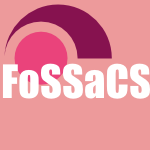 FoSSaCS-2004-HennessyRY #mobile #named
FoSSaCS-2004-HennessyRY #mobile #named- safeDpi: A Language for Controlling Mobile Code (MH, JR, NY), pp. 241–256.
 STOC-2004-Ben-SassonGHSV #proximity #robust
STOC-2004-Ben-SassonGHSV #proximity #robust- Robust pcps of proximity, shorter pcps and applications to coding (EBS, OG, PH, MS, SPV), pp. 1–10.
 STOC-2004-Guruswami #question
STOC-2004-Guruswami #question- Better extractors for better codes? (VG), pp. 436–444.
 STOC-2004-IshaiKOS
STOC-2004-IshaiKOS- Batch codes and their applications (YI, EK, RO, AS), pp. 262–271.
 ICLP-2004-AlbertPH #abstract interpretation #certification #mobile
ICLP-2004-AlbertPH #abstract interpretation #certification #mobile- Abstract Interpretation-Based Mobile Code Certification (EA, GP, MVH), pp. 446–447.
 ICDAR-2003-GocciaBSD #classification #feature model #optimisation #recognition
ICDAR-2003-GocciaBSD #classification #feature model #optimisation #recognition- Recognition of Container Code Characters through Gray-Level Feature Extraction and Gradient-Based Classifier Optimization (MG, MB, CS, SGD), p. 973–?.
 ICDAR-2003-HoqueSF #approach #classification #multi #performance #recognition
ICDAR-2003-HoqueSF #approach #classification #multi #performance #recognition- A New Chain-code Quantization Approach Enabling High Performance Handwriting Recognition based on Multi-Classifier Schemes (SH, KS, MCF), pp. 834–838.
 ICDAR-2003-Verma #recognition #segmentation
ICDAR-2003-Verma #recognition #segmentation- A Contour Code Feature Based Segmentation For Handwriting Recognition (BV), pp. 1203–1207.
 CSMR-2003-Lanza #lessons learnt #named #visualisation
CSMR-2003-Lanza #lessons learnt #named #visualisation- CodeCrawler — Lessons Learned in Building a Software Visualization Tool (ML), pp. 409–418.
 ICSM-2003-BalanyiF #c++ #design pattern #mining #source code
ICSM-2003-BalanyiF #c++ #design pattern #mining #source code- Mining Design Patterns from C++ Source Code (ZB, RF), pp. 305–314.
 ICSM-2003-GoldM #comprehension #concept #evolution #framework #source code
ICSM-2003-GoldM #comprehension #concept #evolution #framework #source code- A Framework for Understanding Conceptual Changes in Evolving Source Code (NG, AM), pp. 431–439.
 ICSM-2003-Klusener #analysis #source code
ICSM-2003-Klusener #analysis #source code- Source Code Based Function Point Analysis for Enhancement Projects (SK), pp. 373–376.
 ICSM-2003-KojuTD #testing #virtual machine
ICSM-2003-KojuTD #testing #virtual machine- Regression Test Selection based on Intermediate Code for Virtual Machines (TK, ST, ND), p. 420–?.
 ICSM-2003-MantylaVL #empirical #smell #taxonomy
ICSM-2003-MantylaVL #empirical #smell #taxonomy- A Taxonomy and an Initial Empirical Study of Bad Smells in Code (MM, JV, CL), pp. 381–384.
 ICSM-2003-MensPG #maintenance #source code #using
ICSM-2003-MensPG #maintenance #source code #using- Using Intentional Source-Code Views to Aid Software Maintenance (KM, BP, SG), pp. 169–178.
 ICSM-2003-Mul #internet #legacy #using
ICSM-2003-Mul #internet #legacy #using- Making maximum use of legacy code: Transavia internet booking engine (CM), p. 466.
 ICSM-2003-TonellaP #c++ #diagrams #interactive #reverse engineering
ICSM-2003-TonellaP #c++ #diagrams #interactive #reverse engineering- Reverse Engineering of the Interaction Diagrams from C++ Code (PT, AP), pp. 159–168.
 IWPC-2003-Cordy #agile #semiparsing #source code #using #xml
IWPC-2003-Cordy #agile #semiparsing #source code #using #xml- Generalized Selective XML Markup of Source Code Using Agile Parsing (JRC), pp. 144–153.
 IWPC-2003-TjortjisSL #comprehension #mining #source code
IWPC-2003-TjortjisSL #comprehension #mining #source code- Facilitating Program Comprehension by Mining Association Rules from Source Code (CT, LS, PJL), pp. 125–133.
 SCAM-2003-BaggeKHV #c++ #design #optimisation #source code
SCAM-2003-BaggeKHV #c++ #design #optimisation #source code- Design of the CodeBoost Transformation System for Domain-Specific Optimisation of C++ Programs (OSB, KTK, MH, EV), p. 65–?.
 SCAM-2003-BinkleyH #algorithm #analysis #graph #optimisation #performance #reachability #scalability #source code
SCAM-2003-BinkleyH #algorithm #analysis #graph #optimisation #performance #reachability #scalability #source code- Results from a Large-Scale Study of Performance Optimization Techniques for Source Code Analyses Based on Graph Reachability Algorithms (DB, MH), p. 203–?.
 SCAM-2003-Leitao #2d #detection #using
SCAM-2003-Leitao #2d #detection #using- Detection of Redundant Code using R2D2 (AML), pp. 183–192.
 SCAM-2003-Verhoef #analysis #multi #source code #using
SCAM-2003-Verhoef #analysis #multi #source code #using- Managing Multi-Billion Dollar IT Budgets using Source Code Analysis (CV), p. 77–?.
 WCRE-2003-HassanH #development
WCRE-2003-HassanH #development- Studying the Chaos of Code Development (AEH, RCH), pp. 123–133.
 ICALP-2003-BleichenbacherKY #semistructured data
ICALP-2003-BleichenbacherKY #semistructured data- Decoding of Interleaved Reed Solomon Codes over Noisy Data (DB, AK, MY), pp. 97–108.
 ICALP-2003-PoulalhonS
ICALP-2003-PoulalhonS- Optimal Coding and Sampling of Triangulations (DP, GS), pp. 1080–1094.
 FME-2003-Glesner
FME-2003-Glesner- Program Checking with Certificates: Separating Correctness-Critical Code (SG), pp. 758–777.
 SEFM-2003-DeharbeR #debugging #proving #theorem proving #verification
SEFM-2003-DeharbeR #debugging #proving #theorem proving #verification- Light-Weight Theorem Proving for Debugging and Verifying Units of Code (DD, SR), pp. 220–228.
 ICFP-2003-ChenX #metaprogramming #representation
ICFP-2003-ChenX #metaprogramming #representation- Meta-programming through typeful code representation (CC, HX), pp. 275–286.
 IFL-2003-WeeldenP #functional
IFL-2003-WeeldenP #functional- A Functional Shell That Dynamically Combines Compiled Code (AvW, RP), pp. 36–52.
 VISSOFT-2003-Lanza #lightweight #visualisation
VISSOFT-2003-Lanza #lightweight #visualisation- CodeCrawler – A Lightweight Software Visualization Tool (ML), pp. 54–55.
 VISSOFT-2003-WheeldonCK #comprehension #named #using
VISSOFT-2003-WheeldonCK #comprehension #named #using- AutoCode: Using Memex-like Trails to Improve Program Comprehension (RW, SC, KK), pp. 48–52.
 VISSOFT-2003-WheeldonCK1 #comprehension #named #using
VISSOFT-2003-WheeldonCK1 #comprehension #named #using- AutoCode: Using Memex-like Trails to Improve Program Comprehension (RW, SC, KK), pp. 56–57.
 ICEIS-v3-2003-AleksyG #code generation #distributed
ICEIS-v3-2003-AleksyG #code generation #distributed- Code Generation for Distributed Systems (MA, RG), pp. 313–318.
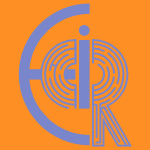 ECIR-2003-BrisaboaINP #database #performance
ECIR-2003-BrisaboaINP #database #performance- An Efficient Compression Code for Text Databases (NRB, ELI, GN, JRP), pp. 468–481.
 SIGIR-2003-KrovetzUG #classification #source code
SIGIR-2003-KrovetzUG #classification #source code- Classification of source code archives (RK, SU, CLG), pp. 425–426.
 AdaEurope-2003-JeppuKS #ada #realtime #safety #testing #using
AdaEurope-2003-JeppuKS #ada #realtime #safety #testing #using- Testing Safety Critical Ada Code Using Non Real Time Testing (YVJ, KK, PSS), pp. 382–392.
 PEPM-2003-AttardiCK #named
PEPM-2003-AttardiCK #named- CodeBricks: code fragments as building blocks (GA, AC, AK), pp. 66–74.
 SAS-2003-ChenLG #multi
SAS-2003-ChenLG #multi- Code Compaction of Matching Single-Entry Multiple-Exit Regions (WKC, BL, RG), pp. 401–417.
 RE-2003-KaiyaSMK #analysis #java #mobile #policy #requirements #security #trade-off
RE-2003-KaiyaSMK #analysis #java #mobile #policy #requirements #security #trade-off- Trade-off Analysis between Security Policies for Java Mobile Codes and Requirements for Java Application (HK, KS, YM, KK), pp. 357–358.
 ASE-2003-Collard #difference #framework #refactoring #source code
ASE-2003-Collard #difference #framework #refactoring #source code- An Infrastructure to Support Meta-Differencing and Refactoring of Source Code (MLC), pp. 377–380.
 ASE-2003-RobillardM #automation #process
ASE-2003-RobillardM #automation #process- Automatically Inferring Concern Code from Program Investigation Activities (MPR, GCM), pp. 225–235.
 ASE-2003-SmithS #automation #design pattern #flexibility #named #source code
ASE-2003-SmithS #automation #design pattern #flexibility #named #source code- SPQR: Flexible Automated Design Pattern Extraction From Source Code (JMS, PDS), pp. 215–224.
 ASE-2003-SturmerC #code generation #design #testing #tool support
ASE-2003-SturmerC #code generation #design #testing #tool support- Test Suite Design for Code Generation Tools (IS, MC), pp. 286–290.
 ICSE-2003-MarcusM #semantics #traceability #using
ICSE-2003-MarcusM #semantics #traceability #using- Recovering Documentation-to-Source-Code Traceability Links using Latent Semantic Indexing (AM, JIM), pp. 125–137.
 ICSE-2003-RobillardM #source code
ICSE-2003-RobillardM #source code- FEAT. A Tool for Locating, Describing, and Analyzing Concerns in Source Code (MPR, GCM), pp. 822–823.
 ICSE-2003-WhittleSK #case study
ICSE-2003-WhittleSK #case study- From Scenarios to Code: An Air Traffic Control Case Study (JW, JS, RK), pp. 490–497.
 SAC-2003-EngelenWY #embedded #validation
SAC-2003-EngelenWY #embedded #validation- Validation of Code-Improving Transformations for Embedded Systems (RvE, DBW, XY), pp. 684–691.
 SAC-2003-GiorgettiS #automation #categorisation #multi #overview
SAC-2003-GiorgettiS #automation #categorisation #multi #overview- Multiclass Text Categorization for Automated Survey Coding (DG, FS), pp. 798–802.
 SAC-2003-MarkWC #automation #code generation
SAC-2003-MarkWC #automation #code generation- Automatic Code Generation for a Convection Scheme (PvdM, LW, GC), pp. 1003–1008.
 SAC-2003-PannalaDSO #hybrid #modelling #parallel
SAC-2003-PannalaDSO #hybrid #modelling #parallel- Hybrid (OpenMP and MPI) Parallelization of MFIX: A Multiphase CFD Code for Modeling Fluidized Beds (SP, EFD, MS, TO), pp. 199–206.
 SAC-2003-ShinjoKP #code generation #empirical #performance
SAC-2003-ShinjoKP #code generation #empirical #performance- Efficient Mediators through Dynamic Code Generation: a Method and an Experiment (YS, TK, CP), pp. 1147–1154.
 GPCE-2003-RutherfordW #code generation #modelling
GPCE-2003-RutherfordW #code generation #modelling- A Case for Test-Code Generation in Model-Driven Systems (MJR, ALW), pp. 377–396.
 CC-2003-JohnsonM #dependence #graph #using
CC-2003-JohnsonM #dependence #graph #using- Combined Code Motion and Register Allocation Using the Value State Dependence Graph (NJ, AM), pp. 1–16.
 CC-2003-KandemirICR
CC-2003-KandemirICR- Address Register Assignment for Reducing Code Size (MTK, MJI, GC, JR), pp. 273–289.
 CC-2003-Leupers #algorithm #evaluation #optimisation
CC-2003-Leupers #algorithm #evaluation #optimisation- Offset Assignment Showdown: Evaluation of DSP Address Code Optimization Algorithms (RL), pp. 290–302.
 CGO-2003-DehnertGBJKKM #adaptation #challenge #using
CGO-2003-DehnertGBJKKM #adaptation #challenge #using- The Transmeta Code Morphing — Software: Using Speculation, Recovery, and Adaptive Retranslation to Address Real-Life Challenges (JCD, BG, JPB, RJ, TK, AK, JM), pp. 15–24.
 CGO-2003-DrinicKV #optimisation
CGO-2003-DrinicKV #optimisation- Code Optimization for Code Compression (MD, DK, HV), pp. 315–324.
 CGO-2003-KaminCJ #code generation #java #named #runtime
CGO-2003-KaminCJ #code generation #java #named #runtime- Jumbo: Run-Time Code Generation for Java and Its Applications (SK, LC, AJ), pp. 48–58.
 DAC-2003-LekatsasHCJS #agile #framework #hardware #named #platform #prototype
DAC-2003-LekatsasHCJS #agile #framework #hardware #named #platform #prototype- CoCo: a hardware/software platform for rapid prototyping of code compression technologies (HL, JH, STC, VJ, MS), pp. 306–311.
 DATE-2003-BesanaB #automation #case study #code generation #design #framework #hardware #platform
DATE-2003-BesanaB #automation #case study #code generation #design #framework #hardware #platform- Application Mapping to a Hardware Platform through Automated Code Generation Targeting a RTOS: A Design Case Study (MB, MB), pp. 20041–20044.
 DATE-2003-FalkM #control flow #source code
DATE-2003-FalkM #control flow #source code- Control Flow Driven Splitting of Loop Nests at the Source Code Level (HF, PM), pp. 10410–10415.
 DATE-2003-KandemirZK #parallel #runtime
DATE-2003-KandemirZK #parallel #runtime- Runtime Code Parallelization for On-Chip Multiprocessors (MTK, WZ, MK), pp. 10510–10515.
 DATE-2003-LangeK #configuration management #design #embedded #framework #hardware #platform
DATE-2003-LangeK #configuration management #design #embedded #framework #hardware #platform- Virtual Hardware Byte Code as a Design Platform for Reconfigurable Embedded Systems (SL, UK), pp. 10302–10309.
 DATE-2003-MadalinskiBKY #design #visualisation
DATE-2003-MadalinskiBKY #design #visualisation- Visualization and Resolution of Coding Conflicts in Asynchronous Circuit Design (AM, AVB, VK, AY), pp. 10926–10931.
 DATE-2003-OmanaRM #parallel
DATE-2003-OmanaRM #parallel- High Speed and Highly Testable Parallel Two-Rail Code Checker (MO, DR, CM), pp. 10608–10615.
 DATE-2003-Tarnick #embedded #self
DATE-2003-Tarnick #embedded #self- Self-Testing Embedded Checkers for Bose-Lin, Bose, and a Class of Borden Codes (ST), pp. 11162–11163.
 DATE-2003-XieWL
DATE-2003-XieWL- Profile-Driven Selective Code Compression (YX, WW, HL), pp. 10462–10467.
 LCTES-2003-CorlissLR #implementation
LCTES-2003-CorlissLR #implementation- A DISE implementation of dynamic code decompression (MLC, ECL, AR), pp. 232–243.
 LCTES-2003-Krishnaswamy #performance #using
LCTES-2003-Krishnaswamy #performance #using- Enhancing the performance of 16-bit code using augmenting instructions (AK, RG), pp. 254–264.
 LCTES-2003-SutterVBB #abstraction #on the
LCTES-2003-SutterVBB #abstraction #on the- On the side-effects of code abstraction (BDS, HV, BDB, KDB), pp. 244–253.
 PPoPP-2003-TanSSAM #design pattern #distributed #generative #memory management #parallel #using
PPoPP-2003-TanSSAM #design pattern #distributed #generative #memory management #parallel #using- Using generative design patterns to generate parallel code for a distributed memory environment (KT, DS, JS, JA, SM), pp. 203–215.
 SOSP-2003-PatelWWLS #mobile #protocol #using
SOSP-2003-PatelWWLS #mobile #protocol #using- Upgrading transport protocols using untrusted mobile code (PP, AW, DW, JL, TS), pp. 1–14.
 SOSP-2003-SekarVBBD #approach #execution
SOSP-2003-SekarVBBD #approach #execution- Model-carrying code: a practical approach for safe execution of untrusted applications (RS, VNV, SB, SB, DCD), pp. 15–28.
 FASE-2003-ReichmannKM #approach #design #embedded #modelling #object-oriented
FASE-2003-ReichmannKM #approach #design #embedded #modelling #object-oriented- An Overall System Design Approach Doing Object-Oriented Modeling to Code-Generation for Embedded Electronic Systems (CR, MK, KDMG), pp. 52–66.
 STOC-2003-GuruswamiI #linear
STOC-2003-GuruswamiI #linear- Linear time encodable and list decodable codes (VG, PI), pp. 126–135.
 STOC-2003-KerenidisW #bound #exponential #quantum
STOC-2003-KerenidisW #bound #exponential #quantum- Exponential lower bound for 2-query locally decodable codes via a quantum argument (IK, RdW), pp. 106–115.
 STOC-2003-Tardo #probability
STOC-2003-Tardo #probability- Optimal probabilistic fingerprint codes (GT), pp. 116–125.
 TACAS-2003-BarayCDM #functional #generative #testing #validation
TACAS-2003-BarayCDM #functional #generative #testing #validation- Code-Based Test Generation for Validation of Functional Processor Descriptions (FB, PC, DD, HM), pp. 569–584.
 TACAS-2003-Lee #case study #experience #what
TACAS-2003-Lee #case study #experience #what- What Are We Trying to Prove? Reflections on Experiences with Proof-Carrying Code (PL0), p. 1.
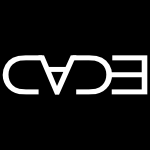 CADE-2003-CraryS #framework #logic
CADE-2003-CraryS #framework #logic- Foundational Certified Code in a Metalogical Framework (KC, SS), pp. 106–120.
 ICLP-2003-Morrisett #low level #type safety
ICLP-2003-Morrisett #low level #type safety- Achieving Type Safety for Low-Level Code (JGM), pp. 1–2.
 VMCAI-2003-Rival #abstract interpretation #assembly #certification
VMCAI-2003-Rival #abstract interpretation #assembly #certification- Abstract Interpretation-Based Certification of Assembly Code (XR), pp. 41–55.
 DocEng-2002-CollardMM #documentation #source code
DocEng-2002-CollardMM #documentation #source code- Supporting document and data views of source code (MLC, JIM, AM), pp. 34–41.
 SCAM-J-2001-Vanter02 #source code
SCAM-J-2001-Vanter02 #source code- The documentary structure of source code (MvdV), pp. 767–782.
 CSMR-2002-MolnarBS #aspectj #java #xml
CSMR-2002-MolnarBS #aspectj #java #xml- Function Call Trap of Java Codes with the Help of AspectJ and XML (BM, IB, BS), pp. 207–210.
 ICSM-2002-TonellaP #analysis #c++ #diagrams
ICSM-2002-TonellaP #analysis #c++ #diagrams- Static and Dynamic C++ Code Analysis for the Recovery of the Object Diagram (PT, AP), pp. 54–63.
 ICSM-2002-TvedtCL #architecture #design #evaluation #process
ICSM-2002-TvedtCL #architecture #design #evaluation #process- Does the Code Match the Design? A Process for Architecture Evaluation (RTT, PC, ML), pp. 393–401.
 IWPC-2002-CoxC #xml
IWPC-2002-CoxC #xml- Relocating XML Elements from Preprocessed to Unprocessed Code (AC, CLAC), pp. 229–238.
 IWPC-2002-MaleticCM #documentation #source code
IWPC-2002-MaleticCM #documentation #source code- Source Code Files as Structured Documents (JIM, MLC, AM), pp. 289–292.
 PASTE-2002-Eng #visualisation
PASTE-2002-Eng #visualisation- Combining static and dynamic data in code visualization (DE), pp. 43–50.
 PASTE-2002-SutherlandGS #thread
PASTE-2002-SutherlandGS #thread- The code of many colors: relating threads to code and shared state (DFS, AG, WLS), pp. 77–83.
 SCAM-2002-Baxter #analysis #parallel #source code
SCAM-2002-Baxter #analysis #parallel #source code- Parallel Support for Source Code Analysis and Modification (IDB), p. 3–?.
 WCRE-2002-EmdenM #assurance #detection #java #quality #smell
WCRE-2002-EmdenM #assurance #detection #java #quality #smell- Java Quality Assurance by Detecting Code Smells (EVE, LM), p. 97–?.
 WCRE-2002-HarmanGHB #algorithm #concept #slicing
WCRE-2002-HarmanGHB #algorithm #concept #slicing- Code Extraction Algorithms which Unify Slicing and Concept Assignment (MH, NG, RMH, DB), pp. 11–21.
 WCRE-2002-McArthurMN #representation #source code #using #xml
WCRE-2002-McArthurMN #representation #source code #using #xml- An Extensible Tool for Source Code Representation Using XML (GM, JM, SKKN), p. 199–?.
 WCRE-2002-RillingM #3d #analysis #on the #source code #using #visual notation
WCRE-2002-RillingM #3d #analysis #on the #source code #using #visual notation- On the Use of Metaballs to Visually Map Source Code Structures and Analysis Results onto 3D Space (JR, SPM), pp. 299–308.
 WCRE-2002-SchwarzDA #execution #revisited
WCRE-2002-SchwarzDA #execution #revisited- Disassembly of Executable Code Revisited (BS, SKD, GRA), pp. 45–54.
 CIAA-2002-CzyzowiczFPR
CIAA-2002-CzyzowiczFPR- Prime Decompositions of Regular Prefix Codes (JC, WF, AP, WR), pp. 85–94.
 DLT-2002-DoL #bound #on the #product line
DLT-2002-DoL #bound #on the #product line- On a Family of Codes with Bounded Deciphering Delay (DLV, IL), pp. 369–380.
 DLT-2002-Lam #finite
DLT-2002-Lam #finite- Finite Completion of Comma-Free Codes. Part I (NHL), pp. 357–368.
 ICALP-2002-BermanKN #approximate #parallel
ICALP-2002-BermanKN #approximate #parallel- Approximating Huffman Codes in Parallel (PB, MK, YN), pp. 845–855.
 ICALP-2002-KiayiasY #encryption
ICALP-2002-KiayiasY #encryption- Cryptographic Hardness Based on the Decoding of Reed-Solomon Codes (AK, MY), pp. 232–243.
 FME-2002-ArtsED #case study #erlang #verification
FME-2002-ArtsED #case study #erlang #verification- Verifying Erlang Code: A Resource Locker Case-Study (TA, CBE, JD), pp. 184–203.
 FME-2002-Casset #development #embedded #formal method #java #using #verification
FME-2002-Casset #development #embedded #formal method #java #using #verification- Development of an Embedded Verifier for Java Card Byte Code Using Formal Methods (LC), pp. 290–309.
 FME-2002-Fidge #analysis #assembly #control flow
FME-2002-Fidge #analysis #assembly #control flow- Timing Analysis of Assembler Code Control-Flow Paths (CJF), pp. 370–389.
 FME-2002-WhalenSF
FME-2002-WhalenSF- Synthesizing Certified Code (MWW, JS, BF), pp. 431–450.
 AFP-2002-BirdG02
AFP-2002-BirdG02- Arithmetic Coding with Folds and Unfolds (RSB, JG), pp. 1–26.
 ICFP-2002-CraryV #scalability #type system
ICFP-2002-CraryV #scalability #type system- An expressive, scalable type theory for certified code (KC, JV), pp. 191–205.
 VISSOFT-2002-RillingSB #analysis #complexity #concept #source code #visualisation
VISSOFT-2002-RillingSB #analysis #complexity #concept #source code #visualisation- The CONCEPT Project — Applying Source Code Analysis to Reduce Information Complexity of Static and Dynamic Visualization Techniques (JR, AS, CB), p. 90.
 EDOC-2002-OldevikSEB #code generation #framework #model transformation
EDOC-2002-OldevikSEB #code generation #framework #model transformation- Framework for Model Transformation and Code Generation (JO, AS, BE, AJB), pp. 181–189.
 ICEIS-2002-PelechanoACP #automation #code generation #concept #object-oriented
ICEIS-2002-PelechanoACP #automation #code generation #concept #object-oriented- Automating the Code Generation of Role Classes in OO Conceptual Schemas (VP, MA, EC, OP), pp. 658–666.
 ICPR-v2-2002-HsiehT #adaptation #fuzzy #image #using
ICPR-v2-2002-HsiehT #adaptation #fuzzy #image #using- Wavelet-based Image Coding Using Fuzzy Inference and Adaptive Quantization (MSH, DCT), pp. 265–268.
 ICPR-v2-2002-WindeattA
ICPR-v2-2002-WindeattA- Tree Pruning for Output Coded Ensembles (TW, GA), pp. 92–95.
 ICPR-v3-2002-GarciaFRF02a #embedded
ICPR-v3-2002-GarciaFRF02a #embedded- Optimized Rate Control in Embedded Wavelet Coding (JAG, JFV, RRS, XRFV), pp. 849–854.
 ICPR-v3-2002-IgualGJ #preprocessor #recognition
ICPR-v3-2002-IgualGJ #preprocessor #recognition- Preprocessing and Recognition of Characters in Container Codes (ISI, GAG, AJPJ), pp. 143–146.
 ICPR-v3-2002-TanakaKFI #modelling #speech
ICPR-v3-2002-TanakaKFI #modelling #speech- Constructing Speech Processing Systems on Universal Phonetic Codes Accompanied with Reference Acoustic Models (KT, HK, NF, YI), pp. 728–731.
 KDD-2002-UgurelKG #automation #classification #source code #what
KDD-2002-UgurelKG #automation #classification #source code #what- What’s the code?: automatic classification of source code archives (SU, RK, CLG), pp. 639–644.
 SEKE-2002-ChartersKTM #component #visualisation
SEKE-2002-ChartersKTM #component #visualisation- Visualisation for informed decision making; from code to components (SMC, CK, NT, MM), pp. 765–772.
 SEKE-2002-MensMW #maintenance #source code
SEKE-2002-MensMW #maintenance #source code- Maintaining software through intentional source-code views (KM, TM, MW), pp. 289–296.
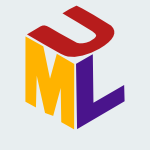 UML-2002-SturmVB #generative #uml
UML-2002-SturmVB #generative #uml- Generating Code from UML with Velocity Templates (TS, JvV, MB), pp. 150–161.
 ECOOP-2002-CzajkowskiDN #virtual machine
ECOOP-2002-CzajkowskiDN #virtual machine- Code Sharing among Virtual Machines (GC, LD, NN), pp. 155–177.
 OOPSLA-2002-SutterBB #c++ #low level #reuse
OOPSLA-2002-SutterBB #c++ #low level #reuse- Sifting out the mud: low level C++ code reuse (BDS, BDB, KDB), pp. 275–291.
 AdaEurope-2002-Amey #analysis #design
AdaEurope-2002-Amey #analysis #design- Closing the Loop: The Influence of Code Analysis on Design (PA), pp. 151–162.
 PADL-2002-Rhiger #compilation #embedded #source code
PADL-2002-Rhiger #compilation #embedded #source code- Compiling Embedded Programs to Byte Code (MR), pp. 120–136.
 PLDI-2002-DebrayE
PLDI-2002-DebrayE- Profile-Guided Code Compression (SKD, WSE), pp. 95–105.
 PLDI-2002-HenzingerK #embedded #predict #realtime
PLDI-2002-HenzingerK #embedded #predict #realtime- The Embedded Machine: Predictable, Portable Real-Time Code (TAH, CMK), pp. 315–326.
 POPL-2002-NeculaMW #legacy #named #type safety
POPL-2002-NeculaMW #legacy #named #type safety- CCured: type-safe retrofitting of legacy code (GCN, SM, WW), pp. 128–139.
 ASE-2002-RosuW #towards
ASE-2002-RosuW #towards- Towards Certifying Domain-Specific Properties of Synthesized Code (GR, JW), pp. 289–294.
 ICSE-2002-DunsmoreRW #development #evaluation #object-oriented
ICSE-2002-DunsmoreRW #development #evaluation #object-oriented- Further investigations into the development and evaluation of reading techniques for object-oriented code inspection (AD, MR, MW), pp. 47–57.
 ICSE-2002-Michail #source code #using
ICSE-2002-Michail #source code #using- Browsing and searching source code of applications written using a GUIframework (AM), pp. 327–337.
 ICSE-2002-Robillard #representation #source code
ICSE-2002-Robillard #representation #source code- A representation for describing and analyzing concerns in source code (MPR), pp. 721–722.
 SAC-2002-Abu-GhazalehP #execution #mobile #performance #towards #verification
SAC-2002-Abu-GhazalehP #execution #mobile #performance #towards #verification- Verification caching: towards efficient and secure mobile code execution environments (NBAG, DSP), pp. 964–968.
 SAC-2002-ButenkoPSSS #graph #independence #set
SAC-2002-ButenkoPSSS #graph #independence #set- Finding maximum independent sets in graphs arising from coding theory (SB, PMP, IS, VS, PS), pp. 542–546.
 SAC-2002-Dandashi #automation #metric #object-oriented #reuse #set #usability #using
SAC-2002-Dandashi #automation #metric #object-oriented #reuse #set #usability #using- A method for assessing the reusability of object-oriented code using a validated set of automated measurements (FD), pp. 997–1003.
 SAC-2002-GoumasAK #architecture #automation #code generation #parallel
SAC-2002-GoumasAK #architecture #automation #code generation #parallel- Automatic code generation for executing tiled nested loops onto parallel architectures (GIG, MA, NK), pp. 876–881.
 SAC-2002-Leopold #locality #on the
SAC-2002-Leopold #locality #on the- On optimal temporal locality of stencil codes (CL), pp. 948–952.
 SAC-2002-NunnD #assembly #automation #component
SAC-2002-NunnD #assembly #automation #component- Automated assembly of software components based on XML-coded instructions (IN, DD), pp. 937–942.
 SAC-2002-TanM #mobile #security
SAC-2002-TanM #mobile #security- Certificates for mobile code security (HKT, LM), pp. 76–81.
 SAC-2002-WhittakerV #mobile
SAC-2002-WhittakerV #mobile- Neutralizing windows-based malicious mobile code (JAW, ADV), pp. 242–246.
 CC-2002-HendersonS #c #compilation
CC-2002-HendersonS #c #compilation- Compiling Mercury to High-Level C Code (FH, ZS), pp. 197–212.
 CC-2002-WuSKLF
CC-2002-WuSKLF- Value-Profile Guided Stride Prefetching for Irregular Code (YW, MJS, RK, WL, JF), pp. 307–324.
 DAC-2002-ChakrabortyEKT #embedded #realtime #scheduling
DAC-2002-ChakrabortyEKT #embedded #realtime #scheduling- Schedulability of event-driven code blocks in real-time embedded systems (SC, TE, SK, LT), pp. 616–621.
 DAC-2002-ChandraC #reduction #testing #using
DAC-2002-ChandraC #reduction #testing #using- Reduction of SOC test data volume, scan power and testing time using alternating run-length codes (AC, KC), pp. 673–678.
 DAC-2002-ChoiK #code generation #scheduling
DAC-2002-ChoiK #code generation #scheduling- Address assignment combined with scheduling in DSP code generation (YC, TK), pp. 225–230.
 DAC-2002-LeeP #analysis #design #embedded #performance #simulation
DAC-2002-LeeP #analysis #design #embedded #performance #simulation- Timed compiled-code simulation of embedded software for performance analysis of SOC design (JYL, ICP), pp. 293–298.
 DAC-2002-OhH #data flow #graph #multi #performance #synthesis
DAC-2002-OhH #data flow #graph #multi #performance #synthesis- Efficient code synthesis from extended dataflow graphs for multimedia applications (HO, SH), pp. 275–280.
 DATE-2002-AghaghiriPF #encoding #multi #power management
DATE-2002-AghaghiriPF #encoding #multi #power management- EZ Encoding: A Class of Irredundant Low Power Codes for Data Address and Multiplexed Address Buses (YA, MP, FF), p. 1102.
 DATE-2002-HalambiSBDN #compilation #performance #reduction #using
DATE-2002-HalambiSBDN #compilation #performance #reduction #using- An Efficient Compiler Technique for Code Size Reduction Using Reduced Bit-Width ISAs (AH, AS, PB, NDD, AN), pp. 402–408.
 DATE-2002-KhomenkoKY #detection #integer #programming #using
DATE-2002-KhomenkoKY #detection #integer #programming #using- Detecting State Coding Conflicts in STGs Using Integer Programming (VK, MK, AY), pp. 338–345.
 DATE-2002-LiverisZSG #performance #program transformation
DATE-2002-LiverisZSG #performance #program transformation- A Code Transformation-Based Methodology for Improving I-Cache Performance of DSP Applications (NDL, NDZ, DS, CEG), pp. 977–983.
 DATE-2002-MichelWWM #hardware #trade-off
DATE-2002-MichelWWM #hardware #trade-off- Hardware/Software Trade-Offs for Advanced 3G Channel Coding (HM, AW, NW, MM), pp. 396–401.
 LCTES-SCOPES-2002-FengH #automation #verification
LCTES-SCOPES-2002-FengH #automation #verification- Automatic formal verification for scheduled VLIW code (XF, AJH), pp. 85–92.
 LCTES-SCOPES-2002-KastnerW #assembly #control flow #re-engineering
LCTES-SCOPES-2002-KastnerW #assembly #control flow #re-engineering- Generic control flow reconstruction from assembly code (DK, SW), pp. 46–55.
 LCTES-SCOPES-2002-KesslerB #architecture #clustering #code generation
LCTES-SCOPES-2002-KesslerB #architecture #clustering #code generation- Optimal integrated code generation for clustered VLIW architectures (CWK, AB), pp. 102–111.
 LCTES-SCOPES-2002-NaikP #compilation #constraints
LCTES-SCOPES-2002-NaikP #compilation #constraints- Compiling with code-size constraints (MN, JP), pp. 120–129.
 LCTES-SCOPES-2002-OhH #data flow #multi #performance #synthesis
LCTES-SCOPES-2002-OhH #data flow #multi #performance #synthesis- Fractional rate dataflow model and efficient code synthesis for multimedia applications (HO, SH), pp. 12–17.
 LCTES-SCOPES-2002-ZhaoCWBEYHDGJ #interactive #named
LCTES-SCOPES-2002-ZhaoCWBEYHDGJ #interactive #named- VISTA: a system for interactive code improvement (WZ, BC, DBW, MWB, RvE, XY, JH, JWD, KG, DLJ), pp. 155–164.
 OSDI-2002-MusuvathiPCED #approach #model checking #named
OSDI-2002-MusuvathiPCED #approach #model checking #named- CMC: A Pragmatic Approach to Model Checking Real Code (MM, DYWP, AC, DRE, DLD), pp. 75–88.
 PDP-2002-FeilU #image #multi
PDP-2002-FeilU #image #multi- Wavelet Packet Zerotree Image Coding on Multicomputers (MF, AU), pp. 353–359.
 ESOP-2002-Morrisett #type checking
ESOP-2002-Morrisett #type checking- Type Checking Systems Code (JGM), pp. 1–5.
 STOC-2002-GolinKY
STOC-2002-GolinKY- Huffman coding with unequal letter costs (MJG, CK, NEY), pp. 785–791.
 STOC-2002-Guruswami #linear
STOC-2002-Guruswami #linear- Limits to list decodability of linear codes (VG), pp. 802–811.
 STOC-2002-GuruswamiI #linear
STOC-2002-GuruswamiI #linear- Near-optimal linear-time codes for unique decoding and new list-decodable codes over smaller alphabets (VG, PI), pp. 812–821.
 STOC-2002-MeshulamW #symmetry
STOC-2002-MeshulamW #symmetry- Expanders from symmetric codes (RM, AW), pp. 669–677.
 CADE-2002-BernardL #logic
CADE-2002-BernardL #logic- Temporal Logic for Proof-Carrying Code (AB, PL), pp. 31–46.
 CADE-2002-SchneckN #approach #scalability
CADE-2002-SchneckN #approach #scalability- A Gradual Approach to a More Trustworthy, Yet Scalable, Proof-Carrying Code (RRS, GCN), pp. 47–62.
 CADE-2002-WhalenSF #automation #certification #named #synthesis
CADE-2002-WhalenSF #automation #certification #named #synthesis- AutoBayes/CC — Combining Program Synthesis with Automatic Code Certification — System Description (MWW, JS, BF), pp. 290–294.
 CAV-2002-HenzingerJMNSW #proving
CAV-2002-HenzingerJMNSW #proving- Temporal-Safety Proofs for Systems Code (TAH, RJ, RM, GCN, GS, WW), pp. 526–538.
 ISSTA-2002-BriandLS #analysis #contract #fault #object-oriented #using
ISSTA-2002-BriandLS #analysis #contract #fault #object-oriented #using- Investigating the use of analysis contracts to support fault isolation in object oriented code (LCB, YL, HS), pp. 70–80.
 ISSTA-2002-TikirH #performance #test coverage #testing
ISSTA-2002-TikirH #performance #test coverage #testing- Efficient instrumentation for code coverage testing (MMT, JKH), pp. 86–96.
 LICS-2002-HamidSTMN #approach
LICS-2002-HamidSTMN #approach- A Syntactic Approach to Foundational Proof-Carrying Code (NAH, ZS, VT, SM, ZN), pp. 89–100.
 ECDL-2001-Spencer #multi #recognition #set
ECDL-2001-Spencer #multi #recognition #set- Digitization, Coded Character Sets, and Optical Character Recognition for Multi-script Information Resources: The Case of the Letopis’ Zhurnal’nykh Statei (GAS), pp. 429–437.
 HT-2001-CoulstonV #hypermedia #metric
HT-2001-CoulstonV #hypermedia #metric- A hypertext metric based on huffman coding (CC, TMV), pp. 243–244.
 CSEET-2001-GotterbarnM #industrial #re-engineering
CSEET-2001-GotterbarnM #industrial #re-engineering- Software Engineering Ethics Training in Industry and Academe: Professionalism and the Software Engineering Code of Ethics (DG, KWM), p. 243–?.
 IWPC-J-1999-AntoniolCPT01 #traceability
IWPC-J-1999-AntoniolCPT01 #traceability- Design-code traceability recovery: selecting the basic linkage properties (GA, BC, AP, PT), pp. 213–234.
 IWPC-J-1999-CifuentesE01
IWPC-J-1999-CifuentesE01- Recovery of jump table case statements from binary code (CC, MVE), pp. 171–188.
 CSMR-2001-WildeBPR #case study #feature model #fortran #legacy
CSMR-2001-WildeBPR #case study #feature model #fortran #legacy- A Case Study of Feature Location in Unstructured Legacy Fortran Code (NW, MB, HP, VR), pp. 68–76.
 ICSM-2001-ChenCWYZZM #cvs #named #source code #using
ICSM-2001-ChenCWYZZM #cvs #named #source code #using- CVSSearch: Searching through Source Code Using CVS Comments (AC, EC, JW, AYY, QZ, SZ, AM), p. 364–?.
 ICSM-2001-ElbaumGR #evolution #test coverage
ICSM-2001-ElbaumGR #evolution #test coverage- The Impact of Software Evolution on Code Coverage Information (SGE, DG, GR), pp. 170–179.
 ICSM-2001-EveraarsAK #concurrent #coordination #source code #using
ICSM-2001-EveraarsAK #concurrent #coordination #source code #using- Using Coordination to Restructure Sequential Source Code into a Concurrent Program (CTHE, FA, BK), p. 342–?.
 ICSM-2001-PoloPR #case study #legacy #maintenance #metric #predict #source code #using
ICSM-2001-PoloPR #case study #legacy #maintenance #metric #predict #source code #using- Using Code Metrics to Predict Maintenance of Legacy Programs: A Case Study (MP, MP, FR), pp. 202–208.
 ICSM-2001-SiyV #question
ICSM-2001-SiyV #question- Does the Modern Code Inspection Have Value? (HPS, LGV), p. 281–?.
 ICSM-2001-TonellaP #c++ #diagrams #reverse engineering #uml
ICSM-2001-TonellaP #c++ #diagrams #reverse engineering #uml- Reverse Engineering of the UML Class Diagram from C++ Code in Presence of Weakly Typed Containers (PT, AP), pp. 376–385.
 IWPC-2001-CordySDM #design #named #source code
IWPC-2001-CordySDM #design #named #source code- HSML: Design Directed Source Code Hot Spots (JRC, KAS, TRD, AJM), pp. 145–154.
 PASTE-2001-AncourtN #array #debugging #maintenance #reuse
PASTE-2001-AncourtN #array #debugging #maintenance #reuse- Array resizing for scientific code debugging, maintenance and reuse (CA, TVNN), pp. 32–37.
 SCAM-2001-BiemanM #web
SCAM-2001-BiemanM #web- Finding Code on the World Wibe Web: A Preliminary Investigation (JMB, VM), pp. 75–80.
 SCAM-2001-BurdR #analysis #automation #evolution #source code #using
SCAM-2001-BurdR #analysis #automation #evolution #source code #using- Using Automated Source Code Analysis for Software Evolution (LB, SR), pp. 206–212.
 SCAM-2001-DeruelleMBB #analysis #distributed #multi
SCAM-2001-DeruelleMBB #analysis #distributed #multi- Analysis and Manipulation of Distributed Multi-Language Software Code (LD, NM, MB, HB), pp. 45–56.
 SCAM-2001-Vanter #source code #tool support
SCAM-2001-Vanter #source code #tool support- Preserving the Documentary Structure of Source Code in Language-Based Transformation Tools (MvdV), pp. 133–143.
 SCAM-2001-Ward #analysis #approach #source code
SCAM-2001-Ward #analysis #approach #source code- The Formal Transformation Approach to Source Code Analysis and Manipulation (MPW), pp. 187–195.
 WCRE-2001-Krinke #dependence #graph #identification
WCRE-2001-Krinke #dependence #graph #identification- Identifying Similar Code with Program Dependence Graphs (JK), pp. 301–309.
 WCRE-2001-VillavicencioO #slicing
WCRE-2001-VillavicencioO #slicing- Reverse Program Calculation Supported by Code Slicing (GV, JNO), p. 35–?.
 DLT-2001-ItoK #petri net
DLT-2001-ItoK #petri net- Some Petri Net Languages and Codes (MI, YK), pp. 69–80.
 ICALP-2001-Kunc #decidability #problem
ICALP-2001-Kunc #decidability #problem- The Trace Coding Problem Is Undecidable (MK), pp. 603–614.
 ICALP-2001-ShankarKSR
ICALP-2001-ShankarKSR- Minimal Tail-Biting Trellises for Certain Cyclic Block Codes Are Easy to Construct (PS, PNAK, HS, BSR), pp. 627–638.
 FLOPS-2001-Necula #architecture #scalability
FLOPS-2001-Necula #architecture #scalability- A Scalable Architecture for Proof-Carrying Code (GCN), pp. 21–39.
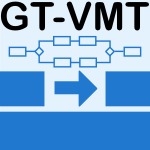 GT-VMT-2001-CorradiniDR #graph transformation #mobile #specification #using
GT-VMT-2001-CorradiniDR #graph transformation #mobile #specification #using- A Graph Transformation View on the Specification of Applications using Mobile Code (AC, FLD, LR0), pp. 238–246.
 ICEIS-v1-2001-Maamar
ICEIS-v1-2001-Maamar- Moving Code (Servlet Strategy) vs. Inviting Code (Applet Strategy) (ZM), pp. 295–303.
 ICEIS-v2-2001-FairchildV #e-commerce #standard
ICEIS-v2-2001-FairchildV #e-commerce #standard- Coding Standards Benefiting Product and Service Information in E-Commerce (AMF, BdV), pp. 991–995.
 TOOLS-USA-2001-Breuel #code generation #implementation #java #using
TOOLS-USA-2001-Breuel #code generation #implementation #java #using- Implementing Dynamic Language Features in Java Using Dynamic Code Generation (TMB), pp. 143–152.
 AdaEurope-2001-KuchumovRS #ada #library #named #object-oriented
AdaEurope-2001-KuchumovRS #ada #library #named #object-oriented- OASIS — An ASIS Secondary Library for Analyzing Object-Oriented Ada Code (AK, SR, AS), pp. 113–122.
 PLDI-2001-AmmeDFR #named #representation #type safety
PLDI-2001-AmmeDFR #named #representation #type safety- SafeTSA: A Type Safe and Referentially Secure Mobile-Code Representation Based on Static Single Assignment Form (WA, ND, MF, JvR), pp. 137–147.
 PLDI-2001-ArnoldR #cost analysis #framework
PLDI-2001-ArnoldR #cost analysis #framework- A Framework for Reducing the Cost of Instrumented Code (MA, BGR), pp. 168–179.
 PLDI-2001-HeintzeT01a #alias #analysis #c #using
PLDI-2001-HeintzeT01a #alias #analysis #c #using- Ultra-fast Aliasing Analysis using CLA: A Million Lines of C Code in a Second (NH, OT), pp. 254–263.
 POPL-2001-GordonS #multi #type system
POPL-2001-GordonS #multi #type system- Typing a multi-language intermediate code (ADG, DS), pp. 248–260.
 SAS-2001-KomondoorH #identification #slicing #source code #using
SAS-2001-KomondoorH #identification #slicing #source code #using- Using Slicing to Identify Duplication in Source Code (RK, SH), pp. 40–56.
 SIGAda-2001-WhiteW #ada #dynamic analysis
SIGAda-2001-WhiteW #ada #dynamic analysis- Dynamic analysis for locating product features in Ada code (LJW, NW), pp. 99–106.
 ASE-2001-FredlundGN #automation #erlang #verification
ASE-2001-FredlundGN #automation #erlang #verification- Semi-Automated Verification of Erlang Code (LÅF, DG, TN), pp. 319–323.
 ASE-2001-MarcusM #concept #identification #source code
ASE-2001-MarcusM #concept #identification #source code- Identification of High-Level Concept Clones in Source Code (AM, JIM), pp. 107–114.
 ASE-2001-Xia #mobile #verification
ASE-2001-Xia #mobile #verification- Verify Properties of Mobile Code (SX), p. 440.
 ESEC-FSE-2001-CoadyKFS #composition #operating system #using
ESEC-FSE-2001-CoadyKFS #composition #operating system #using- Using aspectC to improve the modularity of path-specific customization in operating system code (YC, GK, MJF, GS), pp. 88–98.
 ESEC-FSE-2001-Zundorf #case study #development #uml
ESEC-FSE-2001-Zundorf #case study #development #uml- From use cases to code---rigorous software development with UML (AZ), pp. 324–325.
 ICSE-2001-BertolinoIM #architecture #execution #testing
ICSE-2001-BertolinoIM #architecture #execution #testing- An Explorative Journey from Architectural Tests Definition downto Code Tests Execution (AB, PI, HM), pp. 211–220.
 ICSE-2001-Michail #data mining #library #mining #named #reuse
ICSE-2001-Michail #data mining #library #mining #named #reuse- CodeWeb: Data Mining Library Reuse Patterns (AM), pp. 827–828.
 ICSE-2001-MurphyLWR #case study #source code
ICSE-2001-MurphyLWR #case study #source code- Separating Features in Source Code: An Exploratory Study (GCM, AL, RJW, MPR), pp. 275–284.
 ICSE-2001-Zundorf #case study #development #uml
ICSE-2001-Zundorf #case study #development #uml- From Use Cases to Code — Rigorous Software Development with UML (AZ), pp. 711–712.
 SAC-2001-Kandemir #algebra #algorithm #linear #locality #optimisation
SAC-2001-Kandemir #algebra #algorithm #linear #locality #optimisation- A dynamic locality optimization algorithm for linear algebra codes (MTK), pp. 632–635.
 CC-2001-Gregg #scheduling
CC-2001-Gregg #scheduling- Comparing Tail Duplication with Compensation Code in Single Path Global Instruction Scheduling (DG), pp. 200–212.
 CC-2001-Touati
CC-2001-Touati- Register Saturation in Superscalar and VLIW Codes (SAAT), pp. 213–228.
 DAC-2001-HenkelL #adaptation #design #named #power management
DAC-2001-HenkelL #adaptation #design #named #power management- A2BC: Adaptive Address Bus Coding for Low Power Deep Sub-Micron Designs (JH, HL), pp. 744–749.
 DAC-2001-UdayanarayananC #code generation
DAC-2001-UdayanarayananC #code generation- Address Code Generation for Digital Signal Processors (SU, CC), pp. 353–358.
 DATE-2001-ChandraC #performance #testing #using
DATE-2001-ChandraC #performance #testing #using- Efficient test data compression and decompression for system-on-a-chip using internal scan chains and Golomb coding (AC, KC), pp. 145–149.
 DATE-2001-CheynetNVRRV #automation #evaluation #program transformation #safety
DATE-2001-CheynetNVRRV #automation #evaluation #program transformation #safety- System safety through automatic high-level code transformations: an experimental evaluation (PC, BN, RV, MR, MSR, MV), pp. 297–301.
 DATE-2001-FavalliM #detection #fault #optimisation
DATE-2001-FavalliM #detection #fault #optimisation- Optimization of error detecting codes for the detection of crosstalk originated errors (MF, CM), pp. 290–296.
 DATE-2001-Parameswaran #hardware #performance
DATE-2001-Parameswaran #hardware #performance- Code placement in hardware/software co-synthesis to improve performance and reduce cost (SP), pp. 626–632.
 DATE-2001-PasseroneWL #generative #graph #scheduling
DATE-2001-PasseroneWL #generative #graph #scheduling- Generation of minimal size code for scheduling graphs (CP, YW, LL), pp. 668–673.
 HPCA-2001-KailasEA #clustering #code generation #framework #named
HPCA-2001-KailasEA #clustering #code generation #framework #named- CARS: A New Code Generation Framework for Clustered ILP Processors (KK, KE, AKA), pp. 133–143.
 HPCA-2001-LeeST #architecture #automation #memory management
HPCA-2001-LeeST #architecture #automation #memory management- Automatically Mapping Code on an Intelligent Memory Architecture (JL, YS, JT), pp. 121–132.
 HPCA-2001-WangWKRS #execution #scheduling
HPCA-2001-WangWKRS #execution #scheduling- Register Renaming and Scheduling for Dynamic Execution of Predicated Code (PHW, HW, RMK, KR, JPS), pp. 15–25.
 HPDC-2001-FollenKLTS #corba #development #legacy
HPDC-2001-FollenKLTS #corba #development #legacy- A CORBA-Based Development Environment for Wrapping and Coupling Legacy Scientific Codes (GJF, CMK, IL, ST, JS), p. 22–?.
 LCTES-OM-2001-KesslerB #approach #code generation #programming
LCTES-OM-2001-KesslerB #approach #code generation #programming- A Dynamic Programming Approach to Optimal Integrated Code Generation (CWK, AB), pp. 165–174.
 LCTES-OM-2001-SutterBBD
LCTES-OM-2001-SutterBBD- Combining Global Code and Data Compaction (BDS, BDB, KDB, SKD), pp. 29–38.
 PDP-2001-SageMB #java #multi
PDP-2001-SageMB #java #multi- Dynamic Code Management on a Java Multicomputer (PS, PM, AB), p. 97–?.
 SOSP-2001-EnglerCC #approach #behaviour #consistency #debugging #fault
SOSP-2001-EnglerCC #approach #behaviour #consistency #debugging #fault- Bugs as Inconsistent Behavior: A General Approach to Inferring Errors in Systems Code (DRE, DYC, AC), pp. 57–72.
 ESOP-2001-KatsumataO #decompiler #low level
ESOP-2001-KatsumataO #decompiler #low level- Proof-Directed De-compilation of Low-Level Code (SyK, AO), pp. 352–366.
 ESOP-2001-KomondoorH #dependence #tool support #using
ESOP-2001-KomondoorH #dependence #tool support #using- Tool Demonstration: Finding Duplicated Code Using Program Dependences (RK, SH), pp. 383–386.
 ESOP-2001-XuRM #type system
ESOP-2001-XuRM #type system- Typestate Checking of Machine Code (ZX, TWR, BPM), pp. 335–351.
 STOC-2001-Elkies #composition
STOC-2001-Elkies #composition- Excellent codes from modular curves (NDE), pp. 200–208.
 STOC-2001-Ta-ShmaZ
STOC-2001-Ta-ShmaZ- Extractor codes (ATS, DZ), pp. 193–199.
 LICS-2001-Appel
LICS-2001-Appel- Foundational Proof-Carrying Code (AWA), pp. 247–256.
 SIGMOD-2000-LitwinS #data type #distributed #scalability #using
SIGMOD-2000-LitwinS #data type #distributed #scalability #using- LH*RS: A High-Availability Scalable Distributed Data Structure using Reed Solomon Codes (WL, TJES), pp. 237–248.
 ITiCSE-2000-Weber-Wulff #programming
ITiCSE-2000-Weber-Wulff #programming- Combating the code warrior: a different sort of programming instruction (DWW), pp. 85–88.
 ITiCSE-2000-Zeller #bibliography #student
ITiCSE-2000-Zeller #bibliography #student- Making students read and review code (AZ), pp. 89–92.
 CSMR-2000-CifuentesS #abstraction
CSMR-2000-CifuentesS #abstraction- Procedure Abstraction Recovery from Binary Code (CC, DS), pp. 55–64.
 ICSM-2000-AntoniolCCL #documentation #information retrieval #modelling #traceability
ICSM-2000-AntoniolCCL #documentation #information retrieval #modelling #traceability- Information Retrieval Models for Recovering Traceability Links between Code and Documentation (GA, GC, GC, ADL), p. 40–?.
 ICSM-2000-KimbleW #analysis #source code
ICSM-2000-KimbleW #analysis #source code- An Alternative Source Code Analysis (JEKJ, LJW), pp. 64–75.
 IWPC-2000-AntoniolCLCM #functional #object-oriented #requirements
IWPC-2000-AntoniolCLCM #functional #object-oriented #requirements- Tracing Object-Oriented Code into Functional Requirements (GA, GC, ADL, GC, EM), pp. 79–86.
 IWPC-2000-DeprezL
IWPC-2000-DeprezL- A Formalism to Automate Mapping from Program Features to Code (JCD, AL), pp. 69–78.
 WCRE-2000-LuccaFC #approach #case study #modelling #object-oriented #thread
WCRE-2000-LuccaFC #approach #case study #modelling #object-oriented #thread- Recovering Use Case Models from Object-Oriented Code: A Thread-based Approach (GADL, ARF, UdC), pp. 108–117.
 WCRE-2000-MamasK #source code #towards #using #xml
WCRE-2000-MamasK #source code #towards #using #xml- Towards Portable Source Code Representations using XML (EM, KK), p. 172–?.
 WCRE-2000-UngC #re-engineering #runtime
WCRE-2000-UngC #re-engineering #runtime- Dynamic Re-engineering of Binary Code with Run-time Feedbacks (DU, CC), pp. 2–10.
 CIAA-2000-ShankarSAR #automaton #finite #implementation
CIAA-2000-ShankarSAR #automaton #finite #implementation- A Package for the Implementation of Block Codes as Finite Automata (PS, KS, VA, BSR), pp. 279–292.
 ICALP-2000-DantsinGHS #algorithm #satisfiability
ICALP-2000-DantsinGHS #algorithm #satisfiability- Deterministic Algorithms for k-SAT Based on Covering Codes and Local Search (ED, AG, EAH, US), pp. 236–247.
 CAiSE-2000-BehrensR #behaviour #code generation #model transformation #named
CAiSE-2000-BehrensR #behaviour #code generation #model transformation #named- StateLator — Behavioral Code Generation as an Instance of a Model Transformation (TB, SR), pp. 401–416.
 ICEIS-2000-LiY #comprehension #enterprise #information management #nondeterminism #re-engineering #reasoning
ICEIS-2000-LiY #comprehension #enterprise #information management #nondeterminism #re-engineering #reasoning- Code Understanding Through Context-Oriented Uncertainty Reasoning for Enterprise Information System Reengineering (YL, HY), pp. 163–170.
 ICEIS-2000-WatkinsC #network
ICEIS-2000-WatkinsC #network- Decoding BCM Codes With a New Competitive Neural Network (FJW, RAC), pp. 227–234.
 CIKM-2000-OrlandicY #multi #query #reuse
CIKM-2000-OrlandicY #multi #query #reuse- Object and Query Transformation: Supporting Multi-Dimensional Queries through Code Reuse (RO, BY), pp. 141–149.
 CIKM-2000-SakuraiYUK
CIKM-2000-SakuraiYUK- The Subspace Coding Method: A New Indexing Scheme for High-Dimensional Data (YS, MY, SU, HK), pp. 210–218.
 ICML-2000-Ghani #classification #using
ICML-2000-Ghani #classification #using- Using Error-Correcting Codes for Text Classification (RG), pp. 303–310.
 ICPR-v1-2000-BerensF
ICPR-v1-2000-BerensF- Log-Opponent Chromaticity Coding of Color Space (JB, GDF), pp. 1206–1211.
 ICPR-v1-2000-LasfarMAC #database #image #retrieval
ICPR-v1-2000-LasfarMAC #database #image #retrieval- Content-Based Retrieval in Fractal Coded Image Databases (AL, SM, DA, HC), pp. 5031–5034.
 ICPR-v1-2000-LudtkeWH #estimation
ICPR-v1-2000-LudtkeWH #estimation- Population Codes for Orientation Estimation (NL, RCW, ERH), pp. 1238–1241.
 ICPR-v2-2000-ChenC #recursion
ICPR-v2-2000-ChenC #recursion- Recursive Conversion of Chain Code into Quadtree with Table Lookup (ZC, IPC), pp. 6054–6057.
 ICPR-v2-2000-FanW #approach
ICPR-v2-2000-FanW #approach- A Run-Length Coding Based Approach to Stroke Extraction of Chinese Characters (KCF, WHW), pp. 2565–2568.
 ICPR-v2-2000-WilsonL
ICPR-v2-2000-WilsonL- Decoding Population Codes (RCW, NL), pp. 2137–2140.
 ICPR-v3-2000-ChenCL #segmentation #video
ICPR-v3-2000-ChenCL #segmentation #video- Object Segmentation for Video Coding (LHC, JRC, HYML), pp. 3387–3390.
 ICPR-v3-2000-DufauxK #estimation #video
ICPR-v3-2000-DufauxK #estimation #video- Combined Spline- and Block-Based Motion Estimation for Video Coding (FD, SBK), pp. 3071–3074.
 ICPR-v3-2000-HaoS #case study #comparative #image #integer
ICPR-v3-2000-HaoS #case study #comparative #image #integer- Comparative Study of Color Transforms for Image Coding and Derivation of Integer Reversible Color Transform (PH, QYS), pp. 3228–3231.
 ICPR-v3-2000-LiuL #clustering #image #using
ICPR-v3-2000-LiuL #clustering #image #using- Wavelet Image Coding Using Cluster Growing Embedding (YL, YDL), pp. 3250–3253.
 ICPR-v3-2000-MadeiroVMNA #design #image #multi
ICPR-v3-2000-MadeiroVMNA #design #image #multi- Multiresolution Codebook Design for Wavelet/VQ Image Coding (FM, MSV, MRM, BGAN, MSdA), pp. 3079–3082.
 ICPR-v3-2000-MaloFNV #image #representation #statistics
ICPR-v3-2000-MaloFNV #image #representation #statistics- Perceptually and Statistically Decorrelated Features for Image Representation: Application to Transform Coding (JM, FJF, RN, RV), pp. 3242–3245.
 ICPR-v3-2000-Perez-CordobaRST #matrix
ICPR-v3-2000-Perez-CordobaRST #matrix- Channel Optimized Matrix Quantizer (COMQ) in CELP Coding (JLPC, AJR, VES, ÁdlT), pp. 3270–3273.
 ICPR-v3-2000-RuizMMRL #algorithm #multi
ICPR-v3-2000-RuizMMRL #algorithm #multi- New Algorithm for Searching Minimum Bit Rate Wavelet Representations with Application to Multiresolution-Based Perceptual Audio Coding (NR, DM, RM, MR, FL), pp. 3290–3293.
 ICPR-v3-2000-VassZ #analysis #component #fault #image #performance
ICPR-v3-2000-VassZ #analysis #component #fault #image #performance- Enhanced Significance-Linked Connected Component Analysis for High Performance Error Resilient Wavelet Image Coding (JV, XZ), pp. 3075–3078.
 ICPR-v4-2000-YamanyF #3d #recognition #using
ICPR-v4-2000-YamanyF #3d #recognition #using- 3D Objects Coding and Recognition Using Surface Signatures (SMY, AAF), pp. 4571–4574.
 OOPSLA-2000-RubyL #subclass
OOPSLA-2000-RubyL #subclass- Safely creating correct subclasses without seeing superclass code (CR, GTL), pp. 208–228.
 TOOLS-PACIFIC-2000-FavreMP #modelling #object-oriented #uml
TOOLS-PACIFIC-2000-FavreMP #modelling #object-oriented #uml- Transforming UML Static Models into Object-Oriented Code (LF, LM, CP), pp. 170–181.
 TOOLS-USA-2000-Kotula00a #documentation #source code
TOOLS-USA-2000-Kotula00a #documentation #source code- Source Code Documentation: An Engineering Deliverable (JK), p. 505–?.
 PADL-2000-Lee
PADL-2000-Lee- Production-Quality Proof-Carrying Code (PL0), p. 325.
 PLDI-2000-XuMR #safety
PLDI-2000-XuMR #safety- Safety checking of machine code (ZX, BPM, TWR), pp. 70–82.
 PLDI-2000-ZalameaLAV #code generation #pipes and filters
PLDI-2000-ZalameaLAV #code generation #pipes and filters- Improved spill code generation for software pipelined loops (JZ, JL, EA, MV), pp. 134–144.
 POPL-2000-AppelF #semantics
POPL-2000-AppelF #semantics- A Semantic Model of Types and Machine Instuctions for Proof-Carrying Code (AWA, APF), pp. 243–253.
 POPL-2000-RuthingKS
POPL-2000-RuthingKS- Sparse Code Motion (OR, JK, BS), pp. 170–183.
 PPDP-2000-Necula #design #implementation
PPDP-2000-Necula #design #implementation- Proof-carrying code: design, implementation and applications (GCN), pp. 175–177.
 SAIG-2000-BerardiCDG #functional #source code #type system
SAIG-2000-BerardiCDG #functional #source code #type system- Type-Based Useless-Code Elimination for Functional Programs (SB, MC, FD, PG), pp. 172–189.
 SAIG-2000-VuducD #automation #case study #code generation #experience #kernel
SAIG-2000-VuducD #automation #case study #code generation #experience #kernel- Code Generators for Automatic Tuning of Numerical Kernels: Experiences with FFTW (RV, JD), pp. 190–211.
 SAS-2000-ChinKHT #invariant #parallel
SAS-2000-ChinKHT #invariant #parallel- Deriving Parallel Codes via Invariants (WNC, SCK, ZH, MT), pp. 75–94.
 SAS-2000-JaramilloGS #debugging #named
SAS-2000-JaramilloGS #debugging #named- FULLDOC: A Full Reporting Debugger for Optimized Code (CJ, RG, MLS), pp. 240–259.
 SAS-2000-KnoopCJ
SAS-2000-KnoopCJ- Partial Redundancy Elimination on Predicated Code (JK, JFC, RDCJ), pp. 260–279.
 SAS-2000-MuthWD
SAS-2000-MuthWD- Code Specialization Based on Value Profiles (RM, SAW, SKD), pp. 340–359.
 ASE-2000-HillL #analysis
ASE-2000-HillL #analysis- Non-Interference Analysis for Mixed Criticality Code in Avionics Systems (MGH, TWL), pp. 257–260.
 ICSE-2000-CorbettDHLPRZ #finite #java #modelling #named #source code
ICSE-2000-CorbettDHLPRZ #finite #java #modelling #named #source code- Bandera: extracting finite-state models from Java source code (JCC, MBD, JH, SL, CSP, R, HZ), pp. 439–448.
 ICSE-2000-EmmerichMF #implementation #incremental #migration #xml
ICSE-2000-EmmerichMF #implementation #incremental #migration #xml- Implementing incremental code migration with XML (WE, CM, AF), pp. 397–406.
 ICSE-2000-LopesK #aspectj #composition #design #source code #using
ICSE-2000-LopesK #aspectj #composition #design #source code #using- Improving design and source code modularity using AspectJ (CVL, GK), p. 825.
 ICSE-2000-Picco #comprehension
ICSE-2000-Picco #comprehension- Understanding code mobility (GPP), p. 834.
 ICSE-2000-Whalen #code generation
ICSE-2000-Whalen #code generation- High-integrity code generation for state-based formalisms (MWW), pp. 725–727.
 SAC-2000-RaidlJ #algorithm #problem #search-based
SAC-2000-RaidlJ #algorithm #problem #search-based- A Weighted Coding in a Genetic Algorithm for the Degree-Constrained Minimum Spanning Tree Problem (GRR, BAJ), pp. 440–445.
 ASPLOS-2000-ChouCEH #compilation #protocol #using
ASPLOS-2000-ChouCEH #compilation #protocol #using- Using Meta-level Compilation to Check FLASH Protocol Code (AC, BC, DRE, MH), pp. 59–70.
 DAC-2000-Edwards #compilation
DAC-2000-Edwards #compilation- Compiling Esterel into sequential code (SAE), pp. 322–327.
 DAC-2000-HorstmannshoffM #code generation #data flow #graph #performance
DAC-2000-HorstmannshoffM #code generation #data flow #graph #performance- Efficient building block based RTL code generation from synchronous data flow graphs (JH, HM), pp. 552–555.
 DAC-2000-LekatsasHW #design #embedded #power management
DAC-2000-LekatsasHW #design #embedded #power management- Code compression for low power embedded system design (HL, JH, WW), pp. 294–299.
 DATE-2000-GuptaGMC #analysis #program transformation #programmable
DATE-2000-GuptaGMC #analysis #program transformation #programmable- Analysis of High-Level Address Code Transformations for Programmable Processors (SG, RKG, MM, FC), pp. 9–13.
 DATE-2000-IshiharaY #embedded #reduction
DATE-2000-IshiharaY #embedded #reduction- A Power Reduction Technique with Object Code Merging for Application Specific Embedded Processors (TI, HY), pp. 617–623.
 DATE-2000-Leupers
DATE-2000-Leupers- Code Selection for Media Processors with SIMD Instructions (RL), pp. 4–8.
 HPCA-2000-JimenezLF #automation #on the #performance
HPCA-2000-JimenezLF #automation #on the #performance- On the Performance of Hand vs. Automatically Optimized Numerical Codes (MJ, JML, AF), pp. 183–194.
 HPCA-2000-LefurgyPM #runtime
HPCA-2000-LefurgyPM #runtime- Reducing Code Size with Run-Time Decompression (CL, EP, TNM), pp. 218–228.
 HPDC-2000-AllenBGHLMRSS #grid #problem
HPDC-2000-AllenBGHLMRSS #grid #problem- The Cactus Code: A Problem Solving Environment for the Grid (GA, WB, TG, HCH, GL, AM, TR, ES, JS), pp. 253–260.
 HPDC-2000-GouacheP #corba #industrial #simulation #using
HPDC-2000-GouacheP #corba #industrial #simulation #using- Coupling of Industrial Simulation Codes using CORBA (SG, TP), pp. 312–314.
 LCTES-2000-BairagiPA #embedded #framework #quality #set
LCTES-2000-BairagiPA #embedded #framework #quality #set- A Framework for Enhancing Code Quality in Limited Register Set Embedded Processors (DB, SP, DPA), pp. 81–95.
 LCTES-2000-EngelenWY #automation #validation
LCTES-2000-EngelenWY #automation #validation- Automatic Validation of Code-Improving Transformations (RvE, DBW, XY), pp. 206–210.
 LCTES-2000-RunesonNS #abstraction #optimisation
LCTES-2000-RunesonNS #abstraction #optimisation- Optimizing Code Size through Procedural Abstraction (JR, SON, JS), pp. 204–205.
 FASE-2000-Harel
FASE-2000-Harel- From Play-In Scenarios to Code: An Achievable Dream (DH), pp. 22–34.
 STOC-2000-GuruswamiS #algorithm
STOC-2000-GuruswamiS #algorithm- List decoding algorithms for certain concatenated codes (VG, MS), pp. 181–190.
 STOC-2000-KatzT #on the #performance
STOC-2000-KatzT #on the #performance- On the efficiency of local decoding procedures for error-correcting codes (JK, LT), pp. 80–86.
 CAV-2000-ColbyLN #architecture #java
CAV-2000-ColbyLN #architecture #java- A Proof-Carrying Code Architecture for Java (CC, PL, GCN), pp. 557–560.
 CL-2000-Benini #representation
CL-2000-Benini #representation- Representing Object Code (MB), pp. 538–552.
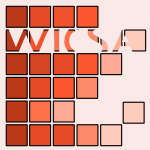 WICSA-1999-AndradeGXC #architecture #automation #code generation
WICSA-1999-AndradeGXC #architecture #automation #code generation- Architectural Concerns in Automating Code Generation (LFA, JG, PJX, JAC), pp. 495–510.
 ICDAR-1999-MahadevanS #parsing #recognition
ICDAR-1999-MahadevanS #parsing #recognition- Parsing and Recognition of City, State, and ZIP Codes in Handwritten Addresses (UM, SNS), pp. 325–328.
 CSMR-1999-PenteadoMC #empirical #legacy #maintenance #segmentation
CSMR-1999-PenteadoMC #empirical #legacy #maintenance #segmentation- An Experiment of Legacy Code Segmentation to Improve Maintainability (RP, PCM, MIC), pp. 111–121.
 CSMR-1999-TaschwerRM #c #generative
CSMR-1999-TaschwerRM #c #generative- Generating Objects from C Code — Features of the CORET Tool-Set (MT, DRR, RM), pp. 91–101.
 ICSM-1999-DucasseRD #approach #detection #independence
ICSM-1999-DucasseRD #approach #detection #independence- A Language Independent Approach for Detecting Duplicated Code (SD, MR, SD), pp. 109–118.
 ICSM-1999-FantaR #c #c++ #legacy
ICSM-1999-FantaR #c #c++ #legacy- Restructuring Legacy C Code into C++ (RF, VR), pp. 77–85.
 ICSM-1999-ZhouZC #framework #legacy
ICSM-1999-ZhouZC #framework #legacy- A Framework for Analysing the Effect of “Change” in Legacy Code (SZ, HZ, AC), pp. 411–420.
 IWPC-1999-AntoniolPTF #design #evolution #object-oriented #traceability
IWPC-1999-AntoniolPTF #design #evolution #object-oriented #traceability- Evolving Object Oriented Design to Improve Code Traceability (GA, AP, PT, RF), pp. 151–160.
 IWPC-1999-CanforaCLL #approach #case study #identification
IWPC-1999-CanforaCLL #approach #case study #identification- A Case Study of Applying an Eclectic Approach to Identify Objects in Code (GC, AC, ADL, GADL), pp. 136–143.
 IWPC-1999-CifuentesE
IWPC-1999-CifuentesE- Recovery of Jump Table Case Statements from Binary Code (CC, MVE), pp. 192–199.
 WCRE-1999-AntoniolCLM #documentation #object-oriented
WCRE-1999-AntoniolCLM #documentation #object-oriented- Recovering Code to Documentation Links in OO Systems (GA, GC, ADL, EM), pp. 136–144.
 DLT-1999-FernauR #decidability
DLT-1999-FernauR #decidability- Decidability of code properties (HF, KR, LS), pp. 153–163.
 FM-v1-1999-ConquetM #automation #design #testing
FM-v1-1999-ConquetM #automation #design #testing- Formal Design for Automatic Coding and Testing: The ESSI/SPACES Project (EC, JLM), pp. 57–75.
 FM-v2-1999-GarbettPSA #empirical #process #synthesis
FM-v2-1999-GarbettPSA #empirical #process #synthesis- Secure Synthesis of Code: A Process Improvement Experiment (PG, JPP, MS, SA), pp. 1816–1835.
 FLOPS-1999-Ohori #automaton #logic #morphism
FLOPS-1999-Ohori #automaton #logic #morphism- The Logical Abstract Machine: A Curry-Howard Isomorphism for Machine Code (AO), pp. 300–318.
 IFL-1999-GrelckKS #code generation #multi #on the
IFL-1999-GrelckKS #code generation #multi #on the- On Code Generation for Multi-generator WITH-Loops in SAC (CG, DK, SBS), pp. 77–94.
 HCI-EI-1999-Davies99b #comprehension #generative #process #programming
HCI-EI-1999-Davies99b #comprehension #generative #process #programming- Expertise in computer programming: Exploring commonalities between code comprehension and generation activities (SPD), pp. 1273–1277.
 UML-1999-BunseA #modelling
UML-1999-BunseA #modelling- The Normal Object Form: Bridging the Gap from Models to Code (CB, CA), pp. 691–705.
 OOPSLA-1999-ClarkeHOT #design #requirements #towards
OOPSLA-1999-ClarkeHOT #design #requirements #towards- Subject-Oriented Design: Towards Improved Alignment of Requirements, Design, and Code (SC, WHH, HO, PLT), pp. 325–339.
 OOPSLA-1999-Duggan #composition #java #reverse engineering #type system
OOPSLA-1999-Duggan #composition #java #reverse engineering #type system- Modular Type-Based Reverse Engineering of Parameterized Types in Java Code (DD), pp. 97–113.
 TOOLS-USA-1999-SangalFLL #compilation #interactive
TOOLS-USA-1999-SangalFLL #compilation #interactive- Interaction Schemata: Compiling Interactions to Code (NS, EF, KJL, DHL), p. 268–?.
 AdaEurope-1999-Tuosto #ada #coordination #implementation #network
AdaEurope-1999-Tuosto #ada #coordination #implementation #network- An Ada95 Implementation of a Network Coordination Language with Code Mobility (ET), pp. 199–210.
 PADL-1999-FerreiraD #multi
PADL-1999-FerreiraD #multi- Multiple Specialization of WAM Code (MF, LD), pp. 243–258.
 PADL-1999-Xi #dependent type
PADL-1999-Xi #dependent type- Dead Code Elimination through Dependent Types (HX), pp. 228–242.
 PEPM-1999-HornofJ #code generation #compilation #runtime
PEPM-1999-HornofJ #code generation #compilation #runtime- Certifying Compilation and Run-Time Code Generation (LH, TJ), pp. 60–74.
 PLDI-1999-CooperM #embedded
PLDI-1999-CooperM #embedded- Enhanced Code Compression for Embedded RISC Processors (KDC, NM), pp. 139–149.
 PLDI-1999-Fraser #automation #modelling #statistics
PLDI-1999-Fraser #automation #modelling #statistics- Automatic Inference of Models for Statistical Code Compression (CWF), pp. 242–246.
 PLDI-1999-FraserP #code generation
PLDI-1999-FraserP #code generation- Finite-Static Code Generation (CWF, TAP), pp. 270–280.
 PLDI-1999-LeungG
PLDI-1999-LeungG- Static Single Assignment Form for machine Code (AL, LG), pp. 204–214.
 PLDI-1999-RaoP #embedded #optimisation #performance
PLDI-1999-RaoP #embedded #optimisation #performance- Storage Assignment Optimizations to Generate Compact and Efficient Code on Embedded DSPs (AR, SP), pp. 128–138.
 PLDI-1999-WuMPOH #debugging #framework
PLDI-1999-WuMPOH #debugging #framework- A New Framework for Debugging Globally Optimized Code (LCW, RM, HP, BO, WmWH), pp. 181–191.
 POPL-1999-Ertl #graph
POPL-1999-Ertl #graph- Optimal Code Selection in DAGs (MAE), pp. 242–249.
 SAS-1999-LiuS #recursion
SAS-1999-LiuS #recursion- Eliminating Dead Code on Recursive Data (YAL, SDS), pp. 211–231.
 SAS-1999-TakimotoH #graph #using
SAS-1999-TakimotoH #graph #using- Partial Dead Code Elimination Using Extended Value Graph (MT, KH), pp. 179–193.
 SIGAda-1999-Colket #analysis #realtime #using
SIGAda-1999-Colket #analysis #realtime #using- Code analysis of saftey-critical and real-time software using ASIS (WCC), pp. 67–76.
 ASE-1999-OHalloranS #verification
ASE-1999-OHalloranS #verification- Verification of Picture Generated Code (CO, AS), pp. 127–136.
 ASE-1999-WhalenH #approach #automation #code generation #safety
ASE-1999-WhalenH #approach #automation #code generation #safety- An Approach to Automatic Code Generation for Safety-Critical Systems (MWW, MPEH), pp. 315–318.
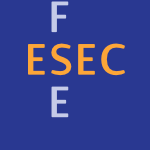 ESEC-FSE-1999-JaramilloGS #approach #comparison #debugging
ESEC-FSE-1999-JaramilloGS #approach #comparison #debugging- Comparison Checking: An Approach to Avoid Debugging of Optimized Code (CJ, RG, MLS), pp. 268–284.
 ESEC-FSE-1999-MascoloPR #fine-grained
ESEC-FSE-1999-MascoloPR #fine-grained- A Fine-Grained Model for Code Mobility (CM, GPP, GCR), pp. 39–56.
 ICSE-1999-HerbslebG #revisited
ICSE-1999-HerbslebG #revisited- Splitting the Organization and Integrating the Code: Conway’s Law Revisited (JDH, REG), pp. 85–95.
 SAC-1999-JacobsenJ #distributed #mobile #ubiquitous
SAC-1999-JacobsenJ #distributed #mobile #ubiquitous- Ubiquitous Devices United: Enabling Distributed Computing Through Mobile Code (KJ, DJ), pp. 399–404.
 SAC-1999-Julstrom #heuristic #permutation
SAC-1999-Julstrom #heuristic #permutation- Coding TSP Tours as Permutations via an Insertion Heuristic (BAJ), pp. 297–301.
 SAC-1999-Raidl #algorithm #multi #problem #search-based
SAC-1999-Raidl #algorithm #multi #problem #search-based- A Weight-Coded Genetic Algorithm for the Multiple Container Packing Problem (GRR), pp. 291–296.
 CC-1999-CilioC #c #fixpoint #float
CC-1999-CilioC #c #fixpoint #float- Floating Point to Fixed Point Conversion of C Code (AGMC, HC), pp. 229–243.
 CC-1999-KastnerL #integer #linear #optimisation #programming
CC-1999-KastnerL #integer #linear #optimisation #programming- Code Optimization by Integer Linear Programming (DK, ML), pp. 122–136.
 DAC-1999-BashfordL #constraints #fixpoint
DAC-1999-BashfordL #constraints #fixpoint- Constraint Driven Code Selection for Fixed-Point DSPs (SB, RL), pp. 817–822.
 DAC-1999-PegatoquetGAB #agile #development
DAC-1999-PegatoquetGAB #agile #development- Rapid Development of Optimized DSP Code from a High Level Description Through Software Estimations (AP, EG, MA, LB), pp. 823–826.
 DAC-1999-SantosJ #order #performance
DAC-1999-SantosJ #order #performance- A Reordering Technique for Efficient Code Motion (LCVdS, JAGJ), pp. 296–299.
 DATE-1999-Leupers #code generation #embedded
DATE-1999-Leupers #code generation #embedded- Exploiting Conditional Instructions in Code Generation for Embedded VLIW Processors (RL), p. 105–?.
 DATE-1999-MartinezAQH #algorithm #encoding #using
DATE-1999-MartinezAQH #algorithm #encoding #using- An Algorithm for Face-Constrained Encoding of Symbols Using Minimum Code Length (MM, MJA, JMQ, JLH), pp. 521–525.
 DATE-1999-NoufalN #framework #generative #multi #self
DATE-1999-NoufalN #framework #generative #multi #self- A CAD Framework for Generating Self-Checking 1 Multipliers Based on Residue Codes (IAN, MN), p. 122–?.
 DATE-1999-SantosJ #equivalence #on the fly
DATE-1999-SantosJ #equivalence #on the fly- Exploiting State Equivalence on the Fly while Applying Code Motion and Speculation (LCVdS, JAGJ), p. 609–?.
 HPDC-1999-ReneP #corba #encapsulation #parallel #using
HPDC-1999-ReneP #corba #encapsulation #parallel #using- MPI Code Encapsulating using Parallel CORBA Object (CR, TP), pp. 3–10.
 LCTES-1999-CooperSS #algorithm #optimisation #search-based #using
LCTES-1999-CooperSS #algorithm #optimisation #search-based #using- Optimizing for Reduced Code Space using Genetic Algorithms (KDC, PJS, DS), pp. 1–9.
 PPoPP-1999-KnoopS #parallel #source code
PPoPP-1999-KnoopS #parallel #source code- Code Motion for Explicitly Parallel Programs (JK, BS), pp. 13–24.
 ESOP-1999-Thiemann #higher-order
ESOP-1999-Thiemann #higher-order- Higher-Order Code Splicing (PT), pp. 243–257.
 STOC-1999-AmbainisNTV #automaton #bound #quantum
STOC-1999-AmbainisNTV #automaton #bound #quantum- Dense Quantum Coding and a Lower Bound for 1-Way Quantum Automata (AA, AN, ATS, UVV), pp. 376–383.
 STOC-1999-OlshevskyS #algebra #approach #geometry #performance
STOC-1999-OlshevskyS #algebra #approach #geometry #performance- A Displacement Approach to Efficient Decoding of Algebraic-Geometric Codes (VO, MAS), pp. 235–244.
 TLCA-1999-Damiani #algebra #data type #detection
TLCA-1999-Damiani #algebra #data type #detection- Useless-Code Detection and Elimination for PCF with Algebraic Data types (FD), pp. 83–97.
 ICSM-1998-FantaR #object-oriented #re-engineering
ICSM-1998-FantaR #object-oriented #re-engineering- Reengineering Object-Oriented Code (RF, VR), pp. 238–246.
 ICSM-1998-FiutemA #case study #consistency #identification #nondeterminism #object-oriented
ICSM-1998-FiutemA #case study #consistency #identification #nondeterminism #object-oriented- Identifying Design-Code Inconsistencies in Object-Oriented Software: A Case Study (RF, GA), p. 94–?.
 ICSM-1998-MunsonE #impact analysis
ICSM-1998-MunsonE #impact analysis- Code Churn: A Measure for Estimating the Impact of Code Change (JCM, SGE), p. 24–?.
 IWPC-1998-MancoridisMRCG #automation #clustering #source code #using
IWPC-1998-MancoridisMRCG #automation #clustering #source code #using- Using Automatic Clustering to Produce High-Level System Organizations of Source Code (SM, BSM, CR, YFC, ERG), pp. 45–52.
 IWPC-1998-SimCH #code search #developer #maintenance #overview #source code
IWPC-1998-SimCH #code search #developer #maintenance #overview #source code- Archetypal Source Code Searches: A Survey of Software Developers and Maintainers (SES, CLAC, RCH), pp. 180–187.
 IWPC-1998-SomeL #compilation #parsing
IWPC-1998-SomeL #compilation #parsing- Parsing Minimization when Extracting Information from Code in the Presence of Conditional Compilation (SSS, TCL), pp. 118–125.
 PASTE-1998-ChaseCHY #analysis #architecture #multi #source code
PASTE-1998-ChaseCHY #analysis #architecture #multi #source code- Recovering Software Architecture from Multiple Source Code Analyses (MPC, SMC, DRH, ASY), pp. 43–50.
 PASTE-1998-TiceG #approach #named
PASTE-1998-TiceG #approach #named- OPTVIEW: A New Approach for Examining Optimized Code (CT, SLG), pp. 19–26.
 WCRE-1998-TheodorosEBW #design #named #object-oriented #reverse engineering #source code
WCRE-1998-TheodorosEBW #design #named #object-oriented #reverse engineering #source code- ROMEO: Reverse Engineering from OO Source Code to OMT Design (TL, HME, AB, NW), pp. 191–200.
 TAGT-1998-Drewes #generative #power of
TAGT-1998-Drewes #generative #power of- Some Remarks on the Generative Power of Collage Grammars and Chain-Code Grammars (FD), pp. 1–14.
 ICPR-1998-BernoggerYBP #animation #eye tracking
ICPR-1998-BernoggerYBP #animation #eye tracking- Eye tracking and animation for MPEG-4 coding (SB, LY, AB, AP), pp. 1281–1284.
 ICPR-1998-FalzonM #image
ICPR-1998-FalzonM #image- Low bit rate image coding over bases (FF, SM), pp. 1260–1263.
 ICPR-1998-Haralick
ICPR-1998-Haralick- The Torah code controversy (RMH), pp. 1779–1783.
 ICPR-1998-HouHPUK
ICPR-1998-HouHPUK- Improved JPEG coding for remote sensing (PH, AH, MP, CIU, JK), pp. 1637–1639.
 ICPR-1998-HyvarinenOHH #analysis #component #feature model #image #independence
ICPR-1998-HyvarinenOHH #analysis #component #feature model #image #independence- Image feature extraction by sparse coding and independent component analysis (AH, EO, POH, JH), pp. 1268–1273.
 ICPR-1998-MahlmeisterSS #image
ICPR-1998-MahlmeisterSS #image- Sample-guided progressive image coding (UM, MS, GS), pp. 1257–1259.
 TOOLS-ASIA-1998-WangZZ #ada #automation #concurrent #generative
TOOLS-ASIA-1998-WangZZ #ada #automation #concurrent #generative- Automatically Generating Ada95 Codes for Concurrent Objects (ZW, HZ, LZ), p. 222–?.
 TOOLS-ASIA-1998-ZengSS #migration #mobile
TOOLS-ASIA-1998-ZengSS #migration #mobile- The Code Migration of Mobile Agents System (XZ, YS, RS), p. 181–?.
 AdaEurope-1998-Wong #safety
AdaEurope-1998-Wong #safety- Looking at Code With Your Safety Goggles On (KW), pp. 251–262.
 PLDI-1998-Adl-TabatabaiCLPS #code generation #compilation #effectiveness #java #performance
PLDI-1998-Adl-TabatabaiCLPS #code generation #compilation #effectiveness #java #performance- Fast, Effective Code Generation in a Just-In-Time Java Compiler (ARAT, MC, GYL, VMP, JMS), pp. 280–290.
 PLDI-1998-PiumartaR #optimisation #thread
PLDI-1998-PiumartaR #optimisation #thread- Optimizing Direct-threaded Code by Selective Inlining (IP, FR), pp. 291–300.
 PLDI-1998-WicklineLP #code generation #runtime
PLDI-1998-WicklineLP #code generation #runtime- Run-time Code Generation and Modal-ML (PW, PL, FP), pp. 224–235.
 POPL-1998-DebrayMW #alias #analysis #execution
POPL-1998-DebrayMW #alias #analysis #execution- Alias Analysis of Executable Code (SKD, RM, MW), pp. 12–24.
 SAS-1998-Ruthing #analysis #bidirectional #data flow
SAS-1998-Ruthing #analysis #bidirectional #data flow- Bidirectional Data Flow Analysis in Code Motion: Myth and Reality (OR), pp. 1–16.
 SIGAda-1998-MillsP #ada #analysis #co-evolution #design #hardware #migration
SIGAda-1998-MillsP #ada #analysis #co-evolution #design #hardware #migration- Hardware/Software Co-Design: VHDL and Ada 95 Code Migration and Integrated Analysis (MM, GP), pp. 18–27.
 SIGAda-1998-PlintaDS #code generation #specification #validation
SIGAda-1998-PlintaDS #code generation #specification #validation- A Specification and Code Generation Tool for Message Translation and Validation (CP, RD, RVS), pp. 276–286.
 FSE-1998-FongC #architecture #composition #mobile #proving #verification
FSE-1998-FongC #architecture #composition #mobile #proving #verification- Proof Linking: An Architecture for Modular Verification of Dynamically-Linked Mobile Code (PWLF, RDC), pp. 222–230.
 ICSE-1998-BaldiP #design #mobile #network #paradigm #trade-off
ICSE-1998-BaldiP #design #mobile #network #paradigm #trade-off- Evaluating the Tradeoffs of Mobile Code Design Paradigms in Network Management Applications (MB, GPP), pp. 146–155.
 SAC-1998-BeschP #approach #clustering
SAC-1998-BeschP #approach #clustering- A group theoretic approach to data and code partitioning (MB, HWP), pp. 575–583.
 SAC-1998-CappJ #algorithm #problem #search-based
SAC-1998-CappJ #algorithm #problem #search-based- A weight-coded genetic algorithm for the minimum weight triangulation problem (KC, BAJ), pp. 327–331.
 SAC-1998-Julstrom #algorithm
SAC-1998-Julstrom #algorithm- Comparing decoding algorithms in a weight-coded GA for TSP (BAJ), pp. 313–317.
 SAC-1998-McGuireS #algorithm #linear #search-based #using
SAC-1998-McGuireS #algorithm #linear #search-based #using- Using a genetic algorithm to find good linear error-correcting codes (KMM, RES), pp. 332–337.
 SAC-1998-MortonZHO #distributed #parallel
SAC-1998-MortonZHO #distributed #parallel- The parallelization of a physically based, spatially distributed hydrologic code for arctic regions (DJM, ZZ, LDH, SO), pp. 684–689.
 SAC-1998-Reitzner
SAC-1998-Reitzner- Virtual synchronization: uncoupling synchronization annotations from synchronization code (SR), pp. 655–659.
 SAC-1998-WangA #approach #retrieval
SAC-1998-WangA #approach #retrieval- A vertex-based shape coding approach for similar shape retrieval (JW, RA), pp. 520–522.
 CC-1998-Gupta #framework #scheduling
CC-1998-Gupta #framework #scheduling- A Code Motion Framework for Global Instruction Scheduling (RG), pp. 219–233.
 DAC-1998-FallahDK98a #functional #metric #named #performance #test coverage #verification
DAC-1998-FallahDK98a #functional #metric #named #performance #test coverage #verification- OCCOM: Efficient Computation of Observability-Based Code Coverage Metrics for Functional Verification (FF, SD, KK), pp. 152–157.
 DAC-1998-HanonoD #code generation #resource management #scheduling
DAC-1998-HanonoD #code generation #resource management #scheduling- Instruction Selection, Resource Allocation, and Scheduling in the AVIV Retargetable Code Generator (SH, SD), pp. 510–515.
 DAC-1998-LekatsasW #embedded
DAC-1998-LekatsasW #embedded- Code Compression for Embedded Systems (HL, WW), pp. 516–521.
 DATE-1998-MetraFR
DATE-1998-MetraFR- Highly Testable and Compact 1-out-of-n Code Checker with Single Output (CM, MF, BR), pp. 981–982.
 LCTES-1998-CooperS #scheduling
LCTES-1998-CooperS #scheduling- Non-local Instruction Scheduling with Limited Code Growth (KDC, PJS), pp. 193–207.
 ESOP-1998-KnoopRS #question
ESOP-1998-KnoopRS #question- Code Motion and Code Placement: Just Synonyms? (JK, OR, BS), pp. 154–169.
 STOC-1998-LubyMSS #analysis #design #graph #using
STOC-1998-LubyMSS #analysis #design #graph #using- Analysis of Low Density Codes and Improved Designs Using Irregular Graphs (ML, MM, MAS, DAS), pp. 249–258.
 STOC-1998-ShokrollahiW #algebra #bound #geometry
STOC-1998-ShokrollahiW #algebra #bound #geometry- Decoding Algebraic-Geometric Codes Beyond the Error-Correction Bound (MAS, HW), pp. 241–248.
 ICDAR-1997-DzubaFV #recognition
ICDAR-1997-DzubaFV #recognition- Handwritten ZIP Code Recognition (GID, AF, AV), pp. 766–770.
 ICDAR-1997-HarukiH #approximate #image #scalability
ICDAR-1997-HarukiH #approximate #image #scalability- Scalable Image Coding by Spline Approximation for a Gray-scale Image (RH, TH), pp. 407–411.
 ICDAR-1997-SmeatonS #information retrieval #using
ICDAR-1997-SmeatonS #information retrieval #using- Using Character Shape Coding for Information Retrieval (AFS, ALS), p. 974–?.
 PODS-1997-HoBA #query #using
PODS-1997-HoBA #query #using- Partial-Sum Queries in Data Cubes Using Covering Codes (CTH, JB, RA), pp. 228–237.
 WCRE-1997-BurdM #legacy #non-functional #re-engineering #requirements
WCRE-1997-BurdM #legacy #non-functional #re-engineering #requirements- The Implications of Non-Functional Requirements for the Reengineering of Legacy Code (EB, MM), p. 215–?.
 WPC-1997-MarkovicHRB #automation #generative #source code
WPC-1997-MarkovicHRB #automation #generative #source code- Semi-automatic Generation of Parallelizable Patterns from Source Code Examples (DM, JRH, CSR, SB), pp. 50–59.
 WPC-1997-YangLC #component #comprehension #identification #program transformation #reuse
WPC-1997-YangLC #component #comprehension #identification #program transformation #reuse- Code Understanding through Program Transformation for Reusable Component Identification (HY, PL, WCC), pp. 148–157.
 ICSM-2000-BurdM #maintenance #replication
ICSM-2000-BurdM #maintenance #replication- Investigating the Maintenance Implications of the Replication of Code (EB, MM), p. 322–?.
 DLT-1997-CastelliGM
DLT-1997-CastelliGM- Indecomposable prefix codes and prime trees (MGC, DG, SM), pp. 135–145.
 DLT-1997-MantaciR #equation
DLT-1997-MantaciR #equation- Tree Codes and Equations (SM, AR), pp. 119–133.
 DLT-1997-Zhiltsova #context-free grammar #probability
DLT-1997-Zhiltsova #context-free grammar #probability- An Optimal Coding for Stochastic Context-Free Languages with Unique Derivation (LPZ), pp. 539–550.
 ICALP-1997-Bruyere #algorithm #bound
ICALP-1997-Bruyere #algorithm #bound- A Completion Algorithm for Codes with Bounded Synchronization Delay (VB), pp. 87–97.
 ICFP-1997-Lassila #code generation #confluence #context-sensitive grammar #functional #metaprogramming #optimisation
ICFP-1997-Lassila #code generation #confluence #context-sensitive grammar #functional #metaprogramming #optimisation- A Functional Macro Expansion System for Optimizing Code Generation: Gaining Context-Sensitivity without Losing Confluence (EL), p. 315.
 IFL-1997-Wakeling #compilation #haskell #java #virtual machine
IFL-1997-Wakeling #compilation #haskell #java #virtual machine- A Haskell to Java Virtual Machine Code Compiler (DW), pp. 39–52.
 EDOC-1997-LoftusOIV #code generation #corba #internet
EDOC-1997-LoftusOIV #code generation #corba #internet- A Code Generation Strategy for CORBA-Based Internet Applications (CWL, AO, EI, PV), pp. 160–169.
 ICML-1997-Schapire #learning #multi #problem #using
ICML-1997-Schapire #learning #multi #problem #using- Using output codes to boost multiclass learning problems (RES), pp. 313–321.
 ECOOP-1997-OnoderaN #optimisation #smalltalk
ECOOP-1997-OnoderaN #optimisation #smalltalk- Optimizing Smalltalk by Selector Code INdexing Can Be Practical (TO, HN), pp. 302–323.
 TOOLS-PACIFIC-1997-NayaNYHOA #development #execution #morphism #object-oriented #optimisation #polymorphism
TOOLS-PACIFIC-1997-NayaNYHOA #development #execution #morphism #object-oriented #optimisation #polymorphism- Object-Oriented Development Based on Polymorphism Patterns and Optimization to Reduce Executable Code Size (HN, FN, TY, LH, KO, MA), pp. 68–79.
 TOOLS-PACIFIC-1997-Schade #automation #c++ #generative #java
TOOLS-PACIFIC-1997-Schade #automation #c++ #generative #java- Automatic Generation of Bridging Code for Accessing C++ from Java (AS), pp. 165–180.
 TOOLS-USA-1997-DingleH #c++
TOOLS-USA-1997-DingleH #c++- New Coding Patterns for Object Management in C++ (AD, THH), pp. 38–47.
 TOOLS-USA-1997-GilH #debugging #generative #source code #testing #using
TOOLS-USA-1997-GilH #debugging #generative #source code #testing #using- T++: A Test Case Generator Using a Debugging Information Based Technique for Source Code Manipulation (JYG, BH), pp. 272–281.
 TOOLS-USA-1997-Mossenbock #source code #visual notation
TOOLS-USA-1997-Mossenbock #source code #visual notation- Films as Graphical Comments in the Source Code of Programs (HM), pp. 89–98.
 AdaEurope-1997-CelierST #ada #consistency
AdaEurope-1997-CelierST #ada #consistency- Code-Data Consistency in Ada (VC, DMS, CJT), pp. 209–217.
 PLDI-1997-BergnerDEO
PLDI-1997-BergnerDEO- Spill Code Minimization via Interference Region Spilling (PB, PD, DE, MTO), pp. 287–295.
 PLDI-1997-BodikG #slicing #using
PLDI-1997-BodikG #slicing #using- Partial Dead Code Elimination using Slicing Transformations (RB, RG), pp. 159–170.
 PLDI-1997-ErnstEFLP
PLDI-1997-ErnstEFLP- Code Compression (JE, WSE, CWF, SL, TAP), pp. 358–365.
 PLDI-1997-PolettoEK #code generation #flexibility #named #performance
PLDI-1997-PolettoEK #code generation #flexibility #named #performance- tcc: A System for Fast, Flexible, and High-level Dynamic Code Generation (MP, DRE, MFK), pp. 109–121.
 PLILP-1997-Fujinami #automation #code generation #object-oriented #runtime
PLILP-1997-Fujinami #automation #code generation #object-oriented #runtime- Automatic Run-Time Code Generation in Object-Oriented Languages (NF), pp. 423–424.
 POPL-1997-Necula
POPL-1997-Necula- Proof-Carrying Code (GCN), pp. 106–119.
 SAS-1997-BaldanF #abstract interpretation
SAS-1997-BaldanF #abstract interpretation- Abstract Interpretation from Improving WAM Code (DB, GF), p. 364.
 TRI-Ada-1997-Balfour #ada #distributed #java
TRI-Ada-1997-Balfour #ada #distributed #java- Combining Ada 95, Java Byte Code, and the Distributed Systems Annex (BB), pp. 247–260.
 TRI-Ada-1997-BattagliaBB #ada #named #reuse
TRI-Ada-1997-BattagliaBB #ada #named #reuse- ReUSE/Ada: A Tool to Promote Code Reuse (DB, AB, JB), pp. 113–116.
 TRI-Ada-1997-Conn #analysis #source code
TRI-Ada-1997-Conn #analysis #source code- The Source Code Analysis Tool Construction Project (RLC), pp. 141–148.
 TRI-Ada-1997-Tucker #ada #debugging
TRI-Ada-1997-Tucker #ada #debugging- Debugging Highly-Optimized Ada with Code Motion (DHACM) (KT), pp. 197–203.
 RE-1997-HeimdahlK #generative #requirements
RE-1997-HeimdahlK #generative #requirements- Generating Code from Hierarchical State-Based Requirements (MPEH, DJK), p. 210–?.
 ASE-1997-SahraouiMLD #concept #identification
ASE-1997-SahraouiMLD #concept #identification- Applying Concept Formation Methods to Object Identification in Procedural Code (HAS, WLM, HL, FD), pp. 210–218.
 ASE-1997-SwardH #imperative #legacy
ASE-1997-SwardH #imperative #legacy- Extracting Objects from Legacy Imperative Code (RRS, TCH), p. 98–?.
 ESEC-FSE-1997-ChenGK #analysis #c++ #detection #reachability
ESEC-FSE-1997-ChenGK #analysis #c++ #detection #reachability- A C++ Data Model Supporting Reachability Analysis and Dead Code Detection (YFC, ERG, EK), pp. 414–431.
 ESEC-FSE-1997-LandSJ #design #detection #empirical #fault #performance #using #validation
ESEC-FSE-1997-LandSJ #design #detection #empirical #fault #performance #using #validation- Validating the Defect Detection Performance Advantage of Group Designs for Software Reviews: Report of a Laboratory Experiment Using Program Code (LPWL, CS, DRJ), pp. 294–309.
 ESEC-FSE-1997-PiccoRM #mobile
ESEC-FSE-1997-PiccoRM #mobile- Expressing Code Mobility in Mobile UNITY (GPP, GCR, PJM), pp. 500–518.
 ICSE-1997-Baker #code review #quality
ICSE-1997-Baker #code review #quality- Code Reviews Enhance Software Quality (RABJ), pp. 570–571.
 ICSE-1997-CarzanigaPV #design #distributed #mobile #paradigm
ICSE-1997-CarzanigaPV #design #distributed #mobile #paradigm- Designing Distributed Applications with Mobile Code Paradigms (AC, GPP, GV), pp. 22–32.
 ICSE-1997-LindigS #composition #concept analysis #legacy
ICSE-1997-LindigS #composition #concept analysis #legacy- Assessing Modular Structure of Legacy Code Based on Mathematical Concept Analysis (CL, GS), pp. 349–359.
 ICSE-1997-PerpichPPVW #development #scalability #using #web
ICSE-1997-PerpichPPVW #development #scalability #using #web- Anywhere, Anytime Code Inspections: Using the Web to Remove Inspection Bottlenecks in Large-Scale Software Development (JP, DEP, AAP, LGV, MWW), pp. 14–21.
 ICSE-1997-SeamanB #communication #empirical
ICSE-1997-SeamanB #communication #empirical- An Empirical Study of Communication in Code Inspections (CBS, VRB), pp. 96–106.
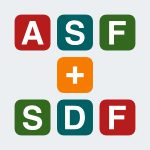 ASF+SDF-1997-BrandSV #cobol #legacy #re-engineering
ASF+SDF-1997-BrandSV #cobol #legacy #re-engineering- Obtaining a COBOL grammar from legacy code for reengineering purposes (MvdB, MPAS, CV), p. 6.
 DAC-1997-Marwedel #code generation
DAC-1997-Marwedel #code generation- Code Generation for Core Processors (PM), pp. 232–237.
 EDTC-1997-BolchiniSS #design #network #novel
EDTC-1997-BolchiniSS #design #network #novel- A novel methodology for designing TSC networks based on the parity bit code (CB, FS, DS), pp. 440–444.
 EDTC-1997-LeupersM #generative #modelling
EDTC-1997-LeupersM #generative #modelling- Retargetable generation of code selectors from HDL processor models (RL, PM), pp. 140–144.
 EDTC-1997-LiemPJ #design #embedded #named
EDTC-1997-LiemPJ #design #embedded #named- ReCode: the design and re-design of the instruction codes for embedded instruction-set processors (CL, PGP, AAJ), p. 612.
 EDTC-1997-PaschalisGGK #fault #self
EDTC-1997-PaschalisGGK #fault #self- A totally self-checking 1-out-of-3 code error indicator (AMP, NG, DG, PK), pp. 450–454.
 HPDC-1997-EvenskyGCA #distributed #execution #named #scalability
HPDC-1997-EvenskyGCA #distributed #execution #named #scalability- Lilith: Scalable Execution of User Code for Distributed Computing (DAE, ACG, LJC, RCA), pp. 305–314.
 PDP-1997-BouletD #code generation
PDP-1997-BouletD #code generation- Code generation in bouclettes (PB, MD), pp. 273–280.
 PPoPP-1997-FrensW #multi #performance #source code
PPoPP-1997-FrensW #multi #performance #source code- Auto-blocking Matrix-Multiplication or Tracking BLAS3 Performance with Source Code (JDF, DSW), pp. 206–216.
 STOC-1997-LaffertyR
STOC-1997-LaffertyR- Spectral Techniques for Expander Codes (JDL, DNR), pp. 160–167.
 STOC-1997-LubyMSSS
STOC-1997-LubyMSSS- Practical Loss-Resilient Codes (ML, MM, MAS, DAS, VS), pp. 150–159.
 STOC-1997-Pan #equation #performance
STOC-1997-Pan #equation #performance- Faster Solution of the Key Equation for Decoding BCH Error-Correcting Codes (VYP), pp. 168–175.
 STOC-1997-Vardy #algorithm #complexity #distance #problem
STOC-1997-Vardy #algorithm #complexity #distance #problem- Algorithmic Complexity in Coding Theory and the Minimum Distance Problem (AV), pp. 92–109.
 CADE-1997-FuchsF #named #problem #proving
CADE-1997-FuchsF #named #problem #proving- CODE: A Powerful Prover for Problems of Condensed Detachment (DF, MF), pp. 260–263.
 TLCA-1997-BerardiB #data type #functional
TLCA-1997-BerardiB #data type #functional- Minimum Information Code in a Pure Functional Language with Data Types (SB, LB), pp. 30–45.
 ICSM-1996-CanforaCL #analysis #specification #tool support
ICSM-1996-CanforaCL #analysis #specification #tool support- Specifying code analysis tools (GC, AC, ADL), pp. 95–103.
 ICSM-1996-EveraarsAB #distributed #fortran #parallel
ICSM-1996-EveraarsAB #distributed #fortran #parallel- Restructuring sequential Fortran code into a parallel/distributed application (CTHE, FA, FJB), pp. 13–22.
 ICSM-1996-SubramaniamB #fortran #legacy
ICSM-1996-SubramaniamB #fortran #legacy- Deriving an Object Model from Legacy Fortran Code (GVS, EJB), pp. 3–12.
 WCRE-1996-BurdMW #legacy #reuse
WCRE-1996-BurdMW #legacy #reuse- Extracting Reusable Modules from Legacy Code: Considering the Issues of Module Granularity (EB, MM, CDW), p. 189–?.
 WCRE-1996-Cifuentes #automation #reverse engineering
WCRE-1996-Cifuentes #automation #reverse engineering- Partial Automation of an Integrated Reverse Engineering Environment of Binary Code (CC), pp. 50–56.
 WCRE-1996-MorrisF #assembly #named
WCRE-1996-MorrisF #assembly #named- Mandrake: A Tool for Reverse-Engineering IBM Assembly Code (PHM, REF), pp. 57–66.
 WCRE-1996-PenteadoGM #legacy #process
WCRE-1996-PenteadoGM #legacy #process- An Overall Process Based on Fusion to Reverse Engineer Legacy Code (RP, FSRG, PCM), pp. 179–188.
 WPC-1996-MayrhauserV #comprehension #migration #on the #scalability
WPC-1996-MayrhauserV #comprehension #migration #on the #scalability- On the Role of Hypotheses during Opportunistic Understanding While Porting Large Scale Code (AvM, AMV), pp. 68–77.
 WPC-1996-SneedE #source code
WPC-1996-SneedE #source code- Extracting Business Rules from Source Code (HMS, KE), p. 240–?.
 ICALP-1996-BruyereL
ICALP-1996-BruyereL- Variable-Length Maximal Codes (VB, ML), pp. 24–47.
 ICALP-1996-Julia #on the
ICALP-1996-Julia #on the- On ω-Generators and Codes (SJ), pp. 393–402.
 FME-1996-FrohlichL #c++ #specification
FME-1996-FrohlichL #c++ #specification- Combining VDM-SL Specifications with C++ Code (BF, PGL), pp. 179–194.
 ICFP-1996-QueinnecR
ICFP-1996-QueinnecR- Sharing Code through First-class Environments (CQ, DDR), pp. 251–261.
 ICPR-1996-Benois-PineauKB #graph #optimisation #problem
ICPR-1996-Benois-PineauKB #graph #optimisation #problem- Coding of structure in the region-based coder as a problem of optimization on graphs (JBP, AK, DB), pp. 651–655.
 ICPR-1996-DistasiNV #image #recursion
ICPR-1996-DistasiNV #image #recursion- A B-tree based recursive technique for image coding (RD, MN, SV), pp. 670–674.
 ICPR-1996-FredL #clustering
ICPR-1996-FredL #clustering- A minimum code length technique for clustering of syntactic patterns (ALNF, JMNL), pp. 680–684.
 ICPR-1996-GhorbelDMAS #estimation #object-oriented
ICPR-1996-GhorbelDMAS #estimation #object-oriented- Global planar rigid motion estimation applied to object-oriented coding (FG, MD, AM, OA, HS), pp. 641–645.
 ICPR-1996-HuangHH #adaptation #estimation #performance #video
ICPR-1996-HuangHH #adaptation #estimation #performance #video- Adaptive early jump-out technique for fast motion estimation in video coding (HCH, YPH, WLH), pp. 864–868.
 ICPR-1996-OlivierMRL #segmentation #word
ICPR-1996-OlivierMRL #segmentation #word- Segmentation and coding of Arabic handwritten words (CO, HM, KRP, YL), pp. 264–268.
 ICPR-1996-SanchizQP #algorithm #detection
ICPR-1996-SanchizQP #algorithm #detection- A neural network-based algorithm to detect dominant points from the chain-code of a contour (JMS, JMIQ, FP), pp. 325–329.
 ICPR-1996-TeixeiraA #algorithm #video
ICPR-1996-TeixeiraA #algorithm #video- Block matching algorithms in MPEG video coding (LMLT, APA), pp. 934–938.
 SEKE-1996-CanforaCL #cobol #concept
SEKE-1996-CanforaCL #cobol #concept- Recovering a Conceptual Data Model from COBOL Code (GC, AC, GADL), pp. 277–284.
 SEKE-1996-CanforaLM #c #ide #re-engineering #reuse
SEKE-1996-CanforaLM #c #ide #re-engineering #reuse- An Integrated Environment for Reuse Reengineering C Code (GC, ADL, MM), pp. 214–221.
 SEKE-1996-Carver #reverse engineering
SEKE-1996-Carver #reverse engineering- Reverse Engineering Procedural Code for Object Recovery (DLC), pp. 442–449.
 SEKE-1996-KarallB #case study #independence #re-engineering #visualisation
SEKE-1996-KarallB #case study #independence #re-engineering #visualisation- Case Study: EasyCODE — A Language Independent Visualization Tool for Reengineering (OK, SB), pp. 353–360.
 ECOOP-1996-RinatM #morphism #polymorphism #reuse
ECOOP-1996-RinatM #morphism #polymorphism #reuse- Metaphoric Polymorphism: Taking Code Reuse One Step Further (RR, MM), pp. 449–471.
 OOPSLA-1996-Adl-TabatabaiGL #compilation #optimisation #reuse
OOPSLA-1996-Adl-TabatabaiGL #compilation #optimisation #reuse- Code Reuse in an Optimizing Compiler (ARAT, TRG, GYL), pp. 51–68.
 OOPSLA-1996-DutoitLCP #object-oriented #prototype
OOPSLA-1996-DutoitLCP #object-oriented #prototype- The Basic Object System: Supporting a Spectrum From Prototypes To Hardened Code (AHD, SL, DC, RP), pp. 104–121.
 PLDI-1996-Adl-TabatabaiG #debugging
PLDI-1996-Adl-TabatabaiG #debugging- Source-Level Debugging of Scalar Optimized Code (ARAT, TRG), pp. 33–43.
 PLDI-1996-Engler #code generation #named #performance
PLDI-1996-Engler #code generation #named #performance- VCODE: a Retargetable, Extensible, Very Fast Dynamic Code Generation System (DRE), pp. 160–170.
 PLDI-1996-LeeL #code generation #ml #optimisation #runtime
PLDI-1996-LeeL #code generation #ml #optimisation #runtime- Optimizing ML with Run-Time Code Generation (PL, ML), pp. 137–148.
 POPL-1996-EnglerHK #code generation #independence #performance
POPL-1996-EnglerHK #code generation #independence #performance- ‘C: A Language for High-Level, Efficient, and Machine-Independent Dynamic Code Generation (DRE, WCH, MFK), pp. 131–144.
 Best-of-PLDI-1996-LeeL96a #code generation #ml #optimisation #runtime
Best-of-PLDI-1996-LeeL96a #code generation #ml #optimisation #runtime- Optimizing ML with run-time code generation (with retrospective) (PL, ML), pp. 540–553.
 CC-1996-NymeyerKWA #code generation
CC-1996-NymeyerKWA #code generation- Code Generation = A* + BURS (AN, JPK, YW, HA), pp. 160–176.
 DAC-1996-AraujoML #architecture #code generation #using
DAC-1996-AraujoML #architecture #code generation #using- Using Register-Transfer Paths in Code Generation for Heterogeneous Memory-Register Architectures (GA, SM, MTCL), pp. 591–596.
 DAC-1996-HosseiniMK #analysis #code generation #functional #verification
DAC-1996-HosseiniMK #analysis #code generation #functional #verification- Code Generation and Analysis for the Functional Verification of Microprocessors (AH, DM, PK), pp. 305–310.
 DAC-1996-MehendaleVS #code generation #linear #multi
DAC-1996-MehendaleVS #code generation #linear #multi- Optimized Code Generation of Multiplication-free Linear Transforms (MM, GV, SDS), pp. 41–46.
 DAC-1996-SahmMPSS #development #standard
DAC-1996-SahmMPSS #development #standard- VDHL Development System and Coding Standard (HS, CM, JP, JS, SS), pp. 777–782.
 PDP-1996-LuisCD #parallel
PDP-1996-LuisCD #parallel- Parallelism Extraction in Acyclic Code (JPL, CGC, JCD), pp. 437–447.
 STOC-1996-Hastad #clique #testing
STOC-1996-Hastad #clique #testing- Testing of the Long Code and Hardness for Clique (JH), pp. 11–19.
 ICDAR-v1-1995-FerayBRP #evaluation #recognition
ICDAR-v1-1995-FerayBRP #evaluation #recognition- Evaluation of codes and primitives: recognition of unconstrained handwritten numerals (NF, DdB, KRP, TP), pp. 104–107.
 ICDAR-v1-1995-SabourinG #approach #classification #evaluation #multi #verification
ICDAR-v1-1995-SabourinG #approach #classification #evaluation #multi #verification- An extended-shadow-code based approach for off-line signature verification. II. Evaluation of several multi-classifier combination strategies (RS, GG), pp. 197–201.
 ICDAR-v2-1995-KimuraMS #algorithm #recognition #using #word
ICDAR-v2-1995-KimuraMS #algorithm #recognition #using #word- Handwritten ZIP code recognition using lexicon free word recognition algorithm (FK, YM, MS), pp. 906–910.
 ICDAR-v2-1995-Spitz
ICDAR-v2-1995-Spitz- An OCR based on character shape codes and lexical information (ALS), pp. 723–728.
 ICSM-1995-PearseO #industrial #maintenance #metric #process #source code
ICSM-1995-PearseO #industrial #maintenance #metric #process #source code- Maintainability measurements on industrial source code maintenance activities (TTP, PWO), pp. 295–303.
 ICSM-1995-YangB #data-driven #modelling
ICSM-1995-YangB #data-driven #modelling- Acquisition of ERA models from data intensive code (HY, KHB), pp. 116–123.
 WCRE-1995-HarrisYR #architecture #source code
WCRE-1995-HarrisYR #architecture #source code- Recognizers for Extracting Architectural Features from Source Code (DRH, ASY, HBR).
 DLT-1995-KariN
DLT-1995-KariN- Colored Gauss and Tangent Codes on the Torus (JK, VN), pp. 54–63.
 ICALP-1995-GolinR #algorithm #programming
ICALP-1995-GolinR #algorithm #programming- A Dynamic Programming Algorithm for Constructing Optimal Refix-Free Codes for Unequal Letter Costs (MJG, GR), pp. 256–267.
 ICALP-1995-JurgensenK #fault
ICALP-1995-JurgensenK #fault- Variable-Length Codes for Error Correction (HJ, SK), pp. 581–592.
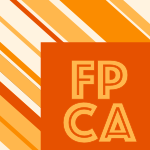 FPCA-1995-QuintonRW #functional #imperative #source code
FPCA-1995-QuintonRW #functional #imperative #source code- Deriving Imperative Code from Functional Programs (PQ, SVR, DW), pp. 36–44.
 CHI-1995-LiebermanF #behaviour #programming
CHI-1995-LiebermanF #behaviour #programming- Bridging the Gulf Between Code and Behavior in Programming (HL, CF), pp. 480–486.
 ICML-1995-KongD #bias
ICML-1995-KongD #bias- Error-Correcting Output Coding Corrects Bias and Variance (EBK, TGD), pp. 313–321.
 AdaEurope-1995-Heitz #ada #automation #c++ #code generation #reliability #reuse #using
AdaEurope-1995-Heitz #ada #automation #c++ #code generation #reliability #reuse #using- Achieving Reusable and Reliable Client-Server Code using HOODTM Automated Code Generation for ADA95 and C++ Targets (MH), pp. 419–438.
 AdaEurope-1995-RognesS #ada #performance
AdaEurope-1995-RognesS #ada #performance- Performance Tuning of a Check-Out System Coded in Ada (BR, PIS), pp. 99–110.
 PEPM-1995-Debray #abstract interpretation #low level #optimisation
PEPM-1995-Debray #abstract interpretation #low level #optimisation- Abstract Interpretation and Low-Level Code Optimization (SKD), pp. 111–121.
 PLDI-1995-Click
PLDI-1995-Click- Global Code Motion / Global Value Mumbering (CC), pp. 246–257.
 PLDI-1995-LiaoDKTW
PLDI-1995-LiaoDKTW- Storage Assignment to Decrease Code Size (SYL, SD, KK, SWKT, AW), pp. 186–195.
 PLDI-1995-MuellerW #branch #replication
PLDI-1995-MuellerW #branch #replication- Avoiding Conditional Branches by Code Replication (FM, DBW), pp. 56–66.
 POPL-1995-Reynolds #category theory #using
POPL-1995-Reynolds #category theory #using- Using Functor Categories to Generate Intermediate Code (JCR), pp. 25–36.
 SAS-1995-Coorg #clustering #code generation #concurrent #functional #multi #strict #thread
SAS-1995-Coorg #clustering #code generation #concurrent #functional #multi #strict #thread- Partitioning Non-strict Functional Languages for Multi-threaded Code Generation (SRC), pp. 82–99.
 FSE-1995-PorterSTV #development #empirical #scalability
FSE-1995-PorterSTV #development #empirical #scalability- An Experiment to Assess the Cost-Benefits of Code Inspections in Large Scale Software Development (AAP, HPS, CAT, LGV), pp. 92–103.
 ICSE-1995-Floch #automation #code generation #evolution #flexibility #maintenance #using
ICSE-1995-Floch #automation #code generation #evolution #flexibility #maintenance #using- Supporting Evolution and Maintenance by Using a Flexible Automatic Code Generator (JF), pp. 211–219.
 ICSE-1995-WeideHH #legacy #reverse engineering
ICSE-1995-WeideHH #legacy #reverse engineering- Reverse Engineering of Legacy Code Exposed (BWW, WDH, JEH), pp. 327–331.
 SAC-1995-Bothe #fuzzy #modelling #speech #visual notation
SAC-1995-Bothe #fuzzy #modelling #speech #visual notation- Fuzzy input coding for an artificial neural--network modelling visual speech movements (HHB), pp. 450–454.
 SAC-1995-Sabin #generative #linear #parallel #using
SAC-1995-Sabin #generative #linear #parallel #using- The use of parallelization in the generation of binary linear codes (RES), pp. 215–220.
 DAC-1995-AltmeyerSS #framework #generative #modelling
DAC-1995-AltmeyerSS #framework #generative #modelling- Generating ECAD Framework Code from Abstract Models (JA, BS, MS), pp. 88–93.
 DAC-1995-ChouB #embedded #fine-grained #scheduling
DAC-1995-ChouB #embedded #fine-grained #scheduling- Interval Scheduling: Fine-Grained Code Scheduling for Embedded Systems (PHC, GB), pp. 462–467.
 DAC-1995-LiaoDKTW #embedded #optimisation
DAC-1995-LiaoDKTW #embedded #optimisation- Code Optimization Techniques for Embedded DSP Microprocessors (SYL, SD, KK, SWKT, ARW), pp. 599–604.
 DAC-1995-TimmerSMJ #code generation #modelling #scheduling
DAC-1995-TimmerSMJ #code generation #modelling #scheduling- Conflict Modelling and Instruction Scheduling in Code Generation for In-House DSP Cores (AHT, MTJS, JLvM, JAGJ), pp. 593–598.
 LCT-RTS-1995-BakkersSP #automation #communication #generative #parallel #realtime #scheduling #source code
LCT-RTS-1995-BakkersSP #automation #communication #generative #parallel #realtime #scheduling #source code- Automatic Generation of Scheduling and Communication Code in Real-Time Parallel Programs (AB, JS, EP), pp. 134–145.
 PDP-1995-EspasaVPJA #analysis
PDP-1995-EspasaVPJA #analysis- Quantitative analysis of vector code (RE, MV, DAP, MJ, EA), pp. 452–463.
 PDP-1995-LatrousM #parallel #using
PDP-1995-LatrousM #parallel #using- Distributing code in a parallel fine grain machine using the actor model (YL, GM), pp. 122–129.
 PPoPP-1995-AnderssonF #generative #modelling #object-oriented #parallel
PPoPP-1995-AnderssonF #generative #modelling #object-oriented #parallel- Generating Parallel Code from Object Oriented Mathematical Models (NA, PF), pp. 48–57.
 SOSP-1995-SteensgaardJ #concurrent #thread
SOSP-1995-SteensgaardJ #concurrent #thread- Object and Native Code Thread Mobility Among Heterogeneous Computers (BS, EJ), pp. 68–78.
 STOC-1995-Spielman #linear
STOC-1995-Spielman #linear- Linear-time encodable and decodable error-correcting codes (DAS), pp. 388–397.
 TAPSOFT-1995-BertO #model inference #specification
TAPSOFT-1995-BertO #model inference #specification- A Model Inference System for Generic Specification with Application to Code Sharing (DB, CO), pp. 741–755.
 TAPSOFT-1995-Geser #induction #proving
TAPSOFT-1995-Geser #induction #proving- Mechanized Inductive Proof of Properties of a Simple Code Optimizer (AG), pp. 605–619.
 ILPS-1995-ConwayHS #code generation
ILPS-1995-ConwayHS #code generation- Code Generation for Mercury (TCC, FH, ZS), pp. 242–256.
 ICSM-1994-AshAOL #health #maintenance #modelling #using
ICSM-1994-AshAOL #health #maintenance #modelling #using- Using Software Maintainability Models to Track Code Health (DA, JA, PWO, BL), pp. 154–160.
 ICSM-1994-CanforaCTM #data type #identification #precise #reuse
ICSM-1994-CanforaCTM #data type #identification #precise #reuse- A Precise Method for Identifying Reusable Abstract Data Types in Code (GC, AC, MT, MM), pp. 404–413.
 ICSM-1994-CowanGLS #comprehension #readability #using
ICSM-1994-CowanGLS #comprehension #readability #using- Enhancing Code for Readability and Comprehension Using SGML (DDC, DMG, CJPdL, AvS), pp. 181–190.
 ICSM-1994-HeinemanK #incremental #process #re-engineering
ICSM-1994-HeinemanK #incremental #process #re-engineering- Incremental Process Support for Code Reengineering (GTH, GEK), pp. 282–290.
 ICSM-1994-KhoshgoftaarS #maintenance #predict
ICSM-1994-KhoshgoftaarS #maintenance #predict- Improving Code Churn Predictions During the System Test and Maintenance Phases (TMK, RMS), pp. 58–67.
 ICSM-1994-PaulP #algebra #query #source code #using
ICSM-1994-PaulP #algebra #query #source code #using- Querying Source Code Using an Algebraic Query Language (SP, AP), pp. 127–136.
 ICALP-1994-GolinY #word
ICALP-1994-GolinY #word- Prefix Codes: Equiprobable Words, Unequal Letter Costs (MJG, NEY), pp. 605–617.
 FME-1994-StoreyH #using
FME-1994-StoreyH #using- A Strategy for the Production of Verifiable Code Using the B Method (AS, HPH), pp. 346–365.
 TAGT-1994-DassowHT
TAGT-1994-DassowHT- Chain-Code Pictures and Collages Generated by Hyperedge Replacement (JD, AH, ST), pp. 412–427.
 CAiSE-1994-Kurbel #analysis #automation #case study #code generation #experience #using
CAiSE-1994-Kurbel #analysis #automation #case study #code generation #experience #using- From Analysis to Code Generation: Experiences from an Information Engineering Project Using I-CASE Technology (KK), pp. 214–227.
 SEKE-1994-CanforaLT #inheritance
SEKE-1994-CanforaLT #inheritance- Recovering object classes and inheritance relationships from existing code (GC, GADL, MT), pp. 233–240.
 TOOLS-EUROPE-1994-Hopkins94a #multi #smalltalk #testing
TOOLS-EUROPE-1994-Hopkins94a #multi #smalltalk #testing- Testing Smalltalk Code in Multi-person Projects (TPH), pp. 467–478.
 TOOLS-EUROPE-1994-KarakostasP #automation #c++ #hybrid #logic #specification
TOOLS-EUROPE-1994-KarakostasP #automation #c++ #hybrid #logic #specification- Automatic Transformation of Hybrid Object and Logic Specification to C++ Code (VK, LP), pp. 363–373.
 AdaEurope-1994-Doeuff #ada #automation #generative #source code
AdaEurope-1994-Doeuff #ada #automation #generative #source code- Automatic Generation of Ada Source Code for the Rafale Mission Computer (HLD), pp. 333–348.
 AdaEurope-1994-ObermayerSSKKL #ada #analysis #realtime
AdaEurope-1994-ObermayerSSKKL #ada #analysis #realtime- Portability Effort Estimates for Real Time Applications Written in Ada Through Static Code Analysis (PEO, JS, GS, AK, PK, RL), pp. 483–488.
 PEPM-1994-LeoneL #code generation #lightweight #runtime
PEPM-1994-LeoneL #code generation #lightweight #runtime- Lightweight Run-Time Code Generation (ML, PL), pp. 97–106.
 PLDI-1994-HanxledenK #framework #named
PLDI-1994-HanxledenK #framework #named- GIVE-N-TAKE — A Balanced Code Placement Framework (RvH, KK), pp. 107–120.
 PLDI-1994-KnoopRS
PLDI-1994-KnoopRS- Partial Dead Code Elimination (JK, OR, BS), pp. 147–158.
 PLDI-1994-Krall #branch #predict #replication
PLDI-1994-Krall #branch #predict #replication- Improving Semi-static Branch Prediction by Code Replication (AK), pp. 97–106.
 TRI-Ada-1994-BarbaschE #ada #debugging
TRI-Ada-1994-BarbaschE #ada #debugging- Always One More Bug: Applying AdaWise to Improve Ada Code (CB, DE), pp. 228–235.
 TRI-Ada-1994-GuemhiouiDPE #ada #code generation #design #object-oriented #profiling
TRI-Ada-1994-GuemhiouiDPE #ada #code generation #design #object-oriented #profiling- Profiling in an Object-Oriented Design Environment That Supports Ada 9X and Ada 83 Code Generation (KEG, SAD, TJP, HJCE), pp. 180–190.
 FSE-1994-EvansGHT #named #specification #using
FSE-1994-EvansGHT #named #specification #using- LCLint: A Tool for Using Specifications to Check Code (DE, JVG, JJH, YMT), pp. 87–96.
 ICSE-1994-KroneS #on the #source code
ICSE-1994-KroneS #on the #source code- On the Inference of Configuration Structures from Source Code (MK, GS), pp. 49–57.
 KBSE-1994-SelfridgeH #comprehension #visual notation
KBSE-1994-SelfridgeH #comprehension #visual notation- Graphical Support for Code-Level Software Understanding (PGS, GTH), pp. 117–124.
 ASPLOS-1994-EnglerP #code generation #definite clause grammar #named #performance
ASPLOS-1994-EnglerP #code generation #definite clause grammar #named #performance- DCG: An Efficient, Retargetable Dynamic Code Generation System (DRE, TAP), pp. 263–272.
 CC-1994-FauthHKM #graph
CC-1994-FauthHKM #graph- Global Code Selection of Directed Acyclic Graphs (AF, GH, AK, CM), pp. 128–142.
 CC-1994-FranzleM #code generation #programming language #realtime #towards
CC-1994-FranzleM #code generation #programming language #realtime #towards- Towards Provably Correct Code Generation for a Hard Real-Time Programming Language (MF, MMO), pp. 294–308.
 CC-1994-PineoS #approach #debugging
CC-1994-PineoS #approach #debugging- A Practical Approach to the Symbolic Debugging of Parallelized Code (PPP, MLS), pp. 339–356.
 EDAC-1994-LiemMP #code generation
EDAC-1994-LiemMP #code generation- Instruction-Set Matching and Selection for DSP and ASIP Code Generation (CL, TCM, PGP), pp. 31–37.
 STOC-1994-AlonYZ #graph #named #scalability
STOC-1994-AlonYZ #graph #named #scalability- Color-coding: a new method for finding simple paths, cycles and other small subgraphs within large graphs (NA, RY, UZ), pp. 326–335.
 STOC-1994-RajagopalanS #distributed #theorem
STOC-1994-RajagopalanS #distributed #theorem- A coding theorem for distributed computation (SR, LJS), pp. 790–799.
 ICLP-1994-Haygood #compilation #prolog
ICLP-1994-Haygood #compilation #prolog- Native Code Compilation in SICStus Prolog (RCH), pp. 190–204.
 ISSTA-1994-PollockBS #debugging
ISSTA-1994-PollockBS #debugging- Debugging Optimized Code Via Tailoring (LLP, MPB, MLS), p. 201.
 ICDAR-1993-JainC #analysis #locality #using
ICDAR-1993-JainC #analysis #locality #using- Bar code localization using texture analysis (AKJ, YC), pp. 41–44.
 ICDAR-1993-SabourinCG #approach #verification
ICDAR-1993-SabourinCG #approach #verification- An extended-shadow-code based approach for off-line signature verification (RS, MC, GG), pp. 1–5.
 ICDAR-1993-Viard-GaudinNB #2d #algorithm #approach #using
ICDAR-1993-Viard-GaudinNB #2d #algorithm #approach #using- A bar code location algorithm using a two-dimensional approach (CVG, NN, DB), pp. 45–48.
 ICDAR-1993-YoshimuraSY #locality #recognition #using
ICDAR-1993-YoshimuraSY #locality #recognition #using- A zip code recognition system using the localized arc pattern method (MY, TS, IY), pp. 183–186.
 DLT-1993-CaludeS
DLT-1993-CaludeS- Algorithmically Coding the Universe (CC, AS), pp. 472–492.
 DLT-1993-DerencourtT #composition
DLT-1993-DerencourtT #composition- Compositions of Codings (DD, AT), pp. 30–43.
 DLT-1993-KariN #image
DLT-1993-KariN #image- Morphic Images of Gauss Codes (JK, VN), pp. 144–156.
 HCI-ACS-1993-KishinoH #estimation #student
HCI-ACS-1993-KishinoH #estimation #student- A Code Key-in Time Estimation Method for College Students (SK, YH), pp. 624–629.
 SEKE-1993-Bhansali #architecture #reuse #using
SEKE-1993-Bhansali #architecture #reuse #using- Architecture-driven Reuse of Code in KASE (SB), pp. 483–490.
 SEKE-1993-MassariCCC #database #source code
SEKE-1993-MassariCCC #database #source code- Programs as Databases: Treating Code and Comments as First Class Objects (AM, GC, PKC, SKC), pp. 78–85.
 SEKE-1993-McFallSH #object-oriented #representation #reverse engineering
SEKE-1993-McFallSH #object-oriented #representation #reverse engineering- Reverse Engineering Structured Code to an Object-Oriented Representation (DM, GS, JH), pp. 86–93.
 SIGIR-1993-BooksteinKR #question
SIGIR-1993-BooksteinKR #question- Is Huffman Coding Dead? (AB, STK, TR), pp. 80–87.
 OOPSLA-1993-MatsuokaTY #concurrent #encapsulation #object-oriented #performance #using
OOPSLA-1993-MatsuokaTY #concurrent #encapsulation #object-oriented #performance #using- Highly Efficient and Encapsulated Re-use of Synchronization Code in Concurrent Object-Oriented Languages (SM, KT, AY), pp. 109–126.
 PEPM-1993-Lange #code generation #correctness
PEPM-1993-Lange #code generation #correctness- The Correctness of an Optimized Code Generation (TPL), pp. 167–178.
 PLDI-1993-AmarasingheL #code generation #communication #distributed #memory management #optimisation
PLDI-1993-AmarasingheL #code generation #communication #distributed #memory management #optimisation- Communication Optimization and Code Generation for Distributed Memory Machines (SPA, MSL), pp. 126–138.
 PLDI-1993-HongG #compilation #realtime #source code
PLDI-1993-HongG #compilation #realtime #source code- Compiling Real-Time Programs into Schedulable Code (SH, RG), pp. 166–176.
 PLILP-1993-AltSW #compilation #generative #parallel
PLILP-1993-AltSW #compilation #generative #parallel- Generation of Synchronization Code for Parallel Compilers (MA, GS, RW), pp. 420–421.
 TRI-Ada-1993-GuemhiouiDP #ada #automation #code generation #design #education #object-oriented
TRI-Ada-1993-GuemhiouiDP #ada #automation #code generation #design #education #object-oriented- Object-Oriented Design and Automatic Ada Code Generation in the Education of Software Engineers (KEG, SAD, TJP), pp. 126–136.
 DAC-1993-Leveugle #fault tolerance
DAC-1993-Leveugle #fault tolerance- Optimized State Assignment of single fault Tolerant FSMs Based on SEC Codes (RL), pp. 14–18.
 SOSP-1993-Jones #interface
SOSP-1993-Jones #interface- Interposition Agents: Transparently Interposing User Code at the System Interface (MBJ), pp. 80–93.
 STOC-1993-Schulman #communication #interactive
STOC-1993-Schulman #communication #interactive- Deterministic coding for interactive communication (LJS), pp. 747–756.
 SEI-1992-Christel #case study #experience #interactive #video
SEI-1992-Christel #case study #experience #interactive #video- Experiences with an Interactive Video Code Inspection Laboratory (MGC), pp. 395–412.
 CAiSE-1992-FouqueV #analysis #approach #machine learning
CAiSE-1992-FouqueV #analysis #approach #machine learning- Building a Tool for Software Code Analysis: A Machine Learning Approach (GF, CV), pp. 278–289.
 SEKE-1992-HuangSM #modelling #reverse engineering #rule-based #source code #visual notation
SEKE-1992-HuangSM #modelling #reverse engineering #rule-based #source code #visual notation- A Rule-Based Tool for Reverse Engineering from Source Code to Graphical Models (HH, KS, IM), pp. 178–185.
 AdaEurope-1992-DuellSW #ada #code generation #scalability #source code #using
AdaEurope-1992-DuellSW #ada #code generation #scalability #source code #using- Using Ada Source Code Generators in a Large Project (RD, HJS, FCAdW), pp. 47–59.
 AdaEurope-1992-ThomasDB #ada #evaluation #reuse #source code
AdaEurope-1992-ThomasDB #ada #evaluation #reuse #source code- An Evaluation of Ada Source Code Reuse (WMT, AD, VRB), pp. 80–91.
 AdaEurope-1992-ZageZBG #design #metric
AdaEurope-1992-ZageZBG #design #metric- Design and Code Metrics Through a DIANA-Based Tool (WMZ, DMZ, MB, DJG), pp. 60–71.
 PLDI-1992-BrooksHS #approach #debugging
PLDI-1992-BrooksHS #approach #debugging- A New Approach to Debugging Optimized Code (GB, GJH, SS), pp. 1–11.
 PLDI-1992-HolzleCU #debugging
PLDI-1992-HolzleCU #debugging- Debugging Optimized Code with Dynamic Deoptimization (UH, CC, DU), pp. 32–43.
 PLDI-1992-KnoopRS #lazy evaluation
PLDI-1992-KnoopRS #lazy evaluation- Lazy Code Motion (JK, OR, BS), pp. 224–234.
 PLDI-1992-MuellerW #replication
PLDI-1992-MuellerW #replication- Avoiding Unconditional Jumps by Code Replication (FM, DBW), pp. 322–330.
 Best-of-PLDI-1992-KnoopRS92a #lazy evaluation
Best-of-PLDI-1992-KnoopRS92a #lazy evaluation- Lazy code motion (with retrospective) (JK, OR, BS), pp. 460–472.
 ICSE-1992-Devanbu #independence #named
ICSE-1992-Devanbu #independence #named- GENOA: A Customizable Language- and Front-End Independent Code Analyzer (PTD), pp. 307–317.
 ICSE-1992-EickLLVW #fault
ICSE-1992-EickLLVW #fault- Estimating Software Fault Content Cefore Coding (SGE, CRL, MDL, LGV, SAVW), pp. 59–65.
 KBSE-1992-GravesLM #empirical #synthesis
KBSE-1992-GravesLM #empirical #synthesis- A Code Synthesis Experiment (HG, JL, TM), p. 4.
 SOSP-WIP-1991-Jones92 #interface #tool support
SOSP-WIP-1991-Jones92 #interface #tool support- A Toolkit for Interposing User Code at the System Interface (MBJ), p. 21.
 ASPLOS-1992-AndrewsS #migration #product line
ASPLOS-1992-AndrewsS #migration #product line- Migrating a CISC Computer Family onto RISC via Object Code Translation (KA, DS), pp. 213–222.
 CC-1992-Emmelmann #specification #testing
CC-1992-Emmelmann #specification #testing- Testing Completeness of Code Selector Specifications (HE), pp. 163–175.
 CC-1992-LangendoenH #code generation #functional #lazy evaluation #named
CC-1992-LangendoenH #code generation #functional #lazy evaluation #named- FCG: A Code Generator for Lazy Functional Languages (KL, PHH), pp. 278–296.
 CADE-1992-BoyerY #automation #correctness #proving #source code
CADE-1992-BoyerY #automation #correctness #proving #source code- Automated Correctness Proofs of Machine Code Programs for a Commercial Microprocessor (RSB, YY), pp. 416–430.
 ICALP-1991-BruyereF
ICALP-1991-BruyereF- Degree and Decomposability of Variable-Length Codes (VB, CdF), pp. 575–587.
 FPCA-1991-SmetsersNGP #functional #generative #lazy evaluation #performance
FPCA-1991-SmetsersNGP #functional #generative #lazy evaluation #performance- Generating Efficient Code for Lazy Functional Languages (SS, EN, JHGvG, MJP), pp. 592–617.
 FPCA-1991-Traub #architecture #code generation #data flow #multi #source code #strict #thread
FPCA-1991-Traub #architecture #code generation #data flow #multi #source code #strict #thread- Multi-thread Code Generation for Dataflow Architectures from Non-Strict Programs (KRT), pp. 73–101.
 ECOOP-1991-PalsbergS #question #reuse #type safety #what
ECOOP-1991-PalsbergS #question #reuse #type safety #what- What is Type-Safe Code Reuse? (JP, MIS), pp. 325–341.
 AdaEurope-1991-BadaroM #ada #named #reuse #using
AdaEurope-1991-BadaroM #ada #named #reuse #using- ROSE-Ada: a Method and a Tool to Help Reuse of Ada Codes (NB, TM), pp. 304–325.
 PLDI-1991-Morris #code generation #named #prototype
PLDI-1991-Morris #code generation #named #prototype- CCG: A Prototype Coagulating Code Generator (WGM), pp. 45–58.
 PLDI-1991-ProebstingF #architecture #linear #scheduling
PLDI-1991-ProebstingF #architecture #linear #scheduling- Linear-Time, Optimal Code Scheduling for Delayed-Load Architectures (TAP, CNF), pp. 256–267.
 PLILP-1991-HalbwachsRR #data flow #generative #performance #source code
PLILP-1991-HalbwachsRR #data flow #generative #performance #source code- Generating Efficient Code From Data-Flow Programs (NH, PR, CR), pp. 207–218.
 ESEC-1991-RozmanGD #analysis #metric #source code
ESEC-1991-RozmanGD #analysis #metric #source code- Relation Between Source Code Metrics and Structure Analysis Metrics (IR, JG, TD), pp. 332–342.
 ASPLOS-1991-BenitezD #code generation #streaming
ASPLOS-1991-BenitezD #code generation #streaming- Code Generation for Streaming: An Access/Execute Mechanism (MEB, JWD), pp. 132–141.
 CCPSD-1991-SteffenKR #adaptation #performance #reduction
CCPSD-1991-SteffenKR #adaptation #performance #reduction- Efficient Code Motion and an Adaption to Strength Reduction (BS, JK, OR), pp. 394–415.
 LFP-1990-NielsonN #code generation #information management #lazy evaluation
LFP-1990-NielsonN #code generation #information management #lazy evaluation- Context Information for Lazy Code Generation (HRN, FN), pp. 251–263.
 GG-1990-Chytil
GG-1990-Chytil- Cycle Chain Code Picture Languages (FJB, MC), pp. 157–173.
 CSCW-1990-BrothersSM #named
CSCW-1990-BrothersSM #named- ICICLE: Groupware for Code Inspection (LB, VS, MM), pp. 169–181.
 PLDI-1990-Giegerich #code generation #on the #specification
PLDI-1990-Giegerich #code generation #on the #specification- On the Structure of Verifiable Code Generator Specifications (RG), pp. 1–8.
 PLDI-1990-PettisH
PLDI-1990-PettisH- Profile Guided Code Positioning (KP, RCH), pp. 16–27.
 PLDI-1990-Wendt #code generation #performance #using
PLDI-1990-Wendt #code generation #performance #using- Fast Code Generation Using Automatically-Generated Decision Trees (ALW), pp. 9–15.
 Best-of-PLDI-1990-PettisHD
Best-of-PLDI-1990-PettisHD- Profile guided code positioning (with retrospective) (KP, RCH, JWD), pp. 398–411.
 CC-1990-Pettersson #continuation #generative #performance #semantics
CC-1990-Pettersson #continuation #generative #performance #semantics- Generating Efficient Code from Continuation Semantics (MP), pp. 165–178.
 DAC-1990-IshiuraDY #diagrams #simulation #using
DAC-1990-IshiuraDY #diagrams #simulation #using- Coded Time-Symbolic Simulation Using Shared Binary Decision Diagram (NI, YD, SY), pp. 130–135.
 CSL-1990-Mundici #adaptation #complexity
CSL-1990-Mundici #adaptation #complexity- The Complexity of Adaptive Error-Correcting Codes (DM), pp. 300–307.
 PODS-1989-FaloutsosM #clustering #fault #using
PODS-1989-FaloutsosM #clustering #fault #using- Declustering Using Error Correcting Codes (CF, DNM), pp. 253–258.
 ICALP-1989-Bruyere #finite
ICALP-1989-Bruyere #finite- Completion of Finite Codes with Finite Deciphering Delay (VB), pp. 151–163.
 ML-1989-CaruanaSE #algorithm #bias #induction #multi #search-based #using
ML-1989-CaruanaSE #algorithm #bias #induction #multi #search-based #using- Using Multiple Representations to Improve Inductive Bias: Gray and Binary Coding for Genetic Algorithms (RC, JDS, LJE), pp. 375–378.
 PLDI-1989-BernsteinGGKMNP #compilation #optimisation
PLDI-1989-BernsteinGGKMNP #compilation #optimisation- Spill Code Minimization Techniques for Optimizing Compilers (DB, DQG, MCG, HK, YM, IN, RYP), pp. 258–263.
 PLDI-1989-Fraser #code generation
PLDI-1989-Fraser #code generation- A Language for Writing Code Generators (CWF), pp. 238–245.
 DAC-1989-NowakM #code generation #hardware #verification
DAC-1989-NowakM #code generation #hardware #verification- Verification of Hardware Descriptions by Retargetable Code Generation (LN, PM), pp. 441–447.
 CCIPL-1989-FradetM #compilation #functional #λ-calculus
CCIPL-1989-FradetM #compilation #functional #λ-calculus- Compilation of Lambda-Calculus into Functional Machine Code (PF, DLM), pp. 155–166.
 RTA-1989-Strandh #equation #performance #source code
RTA-1989-Strandh #equation #performance #source code- Classes of Equational Programs that Compile into Efficient Machine Code (RS), pp. 449–461.
 SIGMOD-1988-Bell #data transformation #execution #parallel #physics
SIGMOD-1988-Bell #data transformation #execution #parallel #physics- A Specialized Data Management System For Parallel Execution of Particle Physics Codes (JLB), pp. 277–285.
 VLDB-1988-KentSR #database #multi #scalability
VLDB-1988-KentSR #database #multi #scalability- A Superimposed Coding Scheme Based on Multiple Block Descriptor Files for Indexing Very Large Data Bases (AJK, RSD, KR), pp. 351–359.
 VDME-1988-ButhB #code generation #correctness #proving #specification #term rewriting #using
VDME-1988-ButhB #code generation #correctness #proving #specification #term rewriting #using- Correctness Proofs for Meta IV Written Code Generator Specification using Term Rewriting (BB, KHB), pp. 406–433.
 ML-1988-CaruanaS #algorithm #bias #representation #search-based
ML-1988-CaruanaS #algorithm #bias #representation #search-based- Representation and Hidden Bias: Gray vs. Binary Coding for Genetic Algorithms (RC, JDS), pp. 153–161.
 PLDI-1988-CoutantMR #approach #debugging #named
PLDI-1988-CoutantMR #approach #debugging #named- DOC: A Practical Approach to Source-Level Debugging of Globally Optimized Code (DSC, SM, MR), pp. 125–134.
 PLDI-1988-FraserW #automation #code generation #generative #optimisation #performance
PLDI-1988-FraserW #automation #code generation #generative #optimisation #performance- Automatic Generation of Fast Optimizing Code Generators (CWF, ALW), pp. 79–84.
 PLILP-1988-DesplandMR #code generation #implementation #prolog
PLILP-1988-DesplandMR #code generation #implementation #prolog- An Implementation of Retargetable Code Generators in Prolog (AD, MM, RR), pp. 83–104.
 PLILP-1988-KluzniakM #code generation #towards
PLILP-1988-KluzniakM #code generation #towards- Towards a “Middle Road” Methodology for Writing Code Generators (FK, MM), pp. 105–118.
 POPL-1988-Pelegri-LlopartG #code generation
POPL-1988-Pelegri-LlopartG #code generation- Optimal Code Generation for Expression Trees: An Application of BURS Theory (EPL, SLG), pp. 294–308.
 CCHSC-1988-Kroha #code generation
CCHSC-1988-Kroha #code generation- Code Generation for a RISC Machine (PK), pp. 204–214.
 CCHSC-1988-Mughal #generative #incremental #programming #thread
CCHSC-1988-Mughal #generative #incremental #programming #thread- Generation of Incremental Indirect Threaded Code for Language-Based Programming Environments (KAM), pp. 230–242.
 CCHSC-1988-WeisgerberW #pattern matching
CCHSC-1988-WeisgerberW #pattern matching- Two Tree Pattern Matchers for Code Selection (BW, RW), pp. 215–229.
 ESOP-1988-GiegerichS #parsing #pattern matching
ESOP-1988-GiegerichS #parsing #pattern matching- Code Selection Techniques: Pattern Matching, Tree Parsing, and Inversion of Derivors (RG, KS), pp. 247–268.
 HT-1987-BigelowR #source code
HT-1987-BigelowR #source code- Manipulating Source Code in DynamicDesign (JB, VAR), pp. 397–408.
 HCI-CE-1987-Soloway #specification #what
HCI-CE-1987-Soloway #specification #what- I Can’t Tell What in the Code Implements What in the Specs (ES), pp. 317–328.
 PLDI-1987-Pittman #execution #hybrid #interpreter #performance
PLDI-1987-Pittman #execution #hybrid #interpreter #performance- Two-level hybrid interpreter/native code execution for combined space-time program efficiency (TP), pp. 150–152.
 DAC-1987-WangHPZ #named
DAC-1987-WangHPZ #named- SSIM: A Software Levelized Compiled-Code Simulator (LTW, NEH, EHP, JJZ), pp. 2–8.
 SOSP-1987-MogulRA #network #performance
SOSP-1987-MogulRA #network #performance- The Packet Filter: An Efficient Mechanism for User-level Network Code (JCM, RFR, MJA), pp. 39–51.
 CFLP-1987-LindstromGY #generative #performance #strict
CFLP-1987-LindstromGY #generative #performance #strict- Generating Efficient Code from Strictness Annotations (GL, LG, DY), pp. 140–154.
 ICLP-1987-LindholmO87 #implementation #performance #prolog #semantics
ICLP-1987-LindholmO87 #implementation #performance #prolog #semantics- Efficient Implementation of a Defensible Semantics for Dynamic PROLOG Code (TGL, RAO), pp. 21–39.
 RTA-1987-DesplandMR #code generation #generative #term rewriting
RTA-1987-DesplandMR #code generation #generative #term rewriting- Code Generator Generation Based on Template-Driven Target Term Rewriting (AD, MM, RR), pp. 105–120.
 SLP-1987-ChenxiYLY87 #database #implementation #prolog
SLP-1987-ChenxiYLY87 #database #implementation #prolog- Implementation of a Prolog Code Database and Source Database in Compiler-Based Systems (CZ, TY, LL, HY), pp. 398–405.
 SIGMOD-1986-Faloutsos #multi #using
SIGMOD-1986-Faloutsos #multi #using- Multiattribute Hashing Using Gray Codes (CF), pp. 227–238.
 LFP-1986-FairbairnW #code generation #functional
LFP-1986-FairbairnW #code generation #functional- Code Generation Techniques for Functional Languages (JF, SW), pp. 94–104.
 CRAI-1986-WestfoldMB #development #knowledge-based #requirements
CRAI-1986-WestfoldMB #development #knowledge-based #requirements- Knowledge-Based Software Development from Requirements to Code (SJW, LM, WAB), pp. 62–80.
 POPL-1986-CytronLZ
POPL-1986-CytronLZ- Code Motion of Control Structures in High-Level Languages (RC, AL, FKZ), pp. 70–85.
 POPL-1986-HatcherC #bottom-up #code generation #pattern matching
POPL-1986-HatcherC #bottom-up #code generation #pattern matching- High-Quality Code Generation Via Bottom-Up Tree Pattern Matching (PJH, TWC), pp. 119–130.
 ESOP-1986-Nielson #code generation #correctness #metalanguage
ESOP-1986-Nielson #code generation #correctness #metalanguage- Correctness of Code Generation from a Two-Level Meta-Language (FN), pp. 30–40.
 SIGIR-1985-ChouekaKP #performance
SIGIR-1985-ChouekaKP #performance- Efficient Variants of Huffman Codes in High Level Languages (YC, STK, YP), pp. 122–130.
 POPL-1985-AhoG #code generation #pattern matching #performance
POPL-1985-AhoG #code generation #pattern matching #performance- Efficient Tree Pattern Matching: An Aid to Code Generation (AVA, MG), pp. 334–340.
 POPL-1985-Appel #code generation #semantics
POPL-1985-Appel #code generation #semantics- Semantics-Directed Code Generation (AWA), pp. 315–324.
 POPL-1985-FerranteM #on the #parallel
POPL-1985-FerranteM #on the #parallel- On Linearizing Parallel Code (JF, MM), pp. 179–189.
 POPL-1985-FordS #approach #code generation #incremental
POPL-1985-FordS #approach #code generation #incremental- A Greedy Approach to Incremental Code Generation (RF, DS), pp. 165–178.
 POPL-1985-PollockS #compilation #incremental
POPL-1985-PollockS #compilation #incremental- Incremental Compilation of Locally Optimized Code (LLP, MLS), pp. 152–164.
 ICSE-1985-Fukunaga #comprehension #knowledge base #named
ICSE-1985-Fukunaga #comprehension #knowledge base #named- PROMPTER: A Knowledge Based Support Tool for Code Understanding (KF), pp. 358–363.
 ICALP-1984-Karhumaki #on the
ICALP-1984-Karhumaki #on the- On Three-Element Codes (JK), pp. 292–302.
 LFP-1984-Brooks #garbage collection #hardware #realtime
LFP-1984-Brooks #garbage collection #hardware #realtime- Trading Data Space for Reduced Time and Code Space in Real-Time Garbage Collection on Stock Hardware (RAB), pp. 256–262.
 POPL-1984-MilosPL #compilation #implementation #pascal #revisited #specification
POPL-1984-MilosPL #compilation #implementation #pascal #revisited #specification- Direct Implementation of Compiler Specifications or the Pascal P-code Compiler Revisited (DM, UFP, GL), pp. 196–207.
 POPL-1984-SchwarzR #code generation #named
POPL-1984-SchwarzR #code generation #named- Treat — An Applicative Code Generator (JSS, DR), pp. 133–139.
 SCC-1984-AigrainGHMP #code generation #experience
SCC-1984-AigrainGHMP #code generation #experience- Experience with a Graham-Glanville style code generator (PA, SLG, RRH, MKM, EPL), pp. 13–24.
 SCC-1984-Bray #ada
SCC-1984-Bray #ada- Sharing code among instances of Ada generics (GB), pp. 276–284.
 SCC-1984-ChristopherHK #code generation #programming #using
SCC-1984-ChristopherHK #code generation #programming #using- Using dynamic programming to generate optimized code in a Graham-Glanville style code generator (TWC, PJH, RCK), pp. 25–36.
 SCC-1984-FraserMW #assembly
SCC-1984-FraserMW #assembly- Analyzing and compressing assembly code (CWF, EWM, ALW), pp. 117–121.
 SCC-1984-Karr #code generation
SCC-1984-Karr #code generation- Code generation by coagulation (MK), pp. 1–12.
 SLP-1984-WiseP84 #prolog #word
SLP-1984-WiseP84 #prolog #word- Indexing Prolog Clauses via Superimposed Code Words and Filed Encoded Words (MJW, DMWP), pp. 203–210.
 POPL-1983-Johnson #code generation
POPL-1983-Johnson #code generation- Code Generation for Silicon (SCJ), pp. 14–19.
 DAC-1983-Heilweil
DAC-1983-Heilweil- Technology rules- the other side of technology dependent code (MFH), p. 389.
 ICALP-1982-Perrin
ICALP-1982-Perrin- Completing Biprefix Codes (DP), pp. 397–406.
 ICALP-1982-Reutenauer #algebra
ICALP-1982-Reutenauer #algebra- Biprefix Codes and Semisimple Algebras (CR), pp. 451–457.
 GG-1982-MaurerRW
GG-1982-MaurerRW- Chain code picture languages (HAM, GR, EW), pp. 232–244.
 POPL-1982-DavidsonF
POPL-1982-DavidsonF- Eliminating Redundant Object Code (JWD, CWF), pp. 128–132.
 POPL-1982-GanapathiF #attribute grammar #code generation #using
POPL-1982-GanapathiF #attribute grammar #code generation #using- Description-Driven Code Generation using Attribute Grammars (MG, CNF), pp. 108–119.
 POPL-1982-Giegerich #automation #generative
POPL-1982-Giegerich #automation #generative- Automatic Generation of Machine Specific Code Optimizers (RG), pp. 75–81.
 POPL-1982-HennessyG #code generation #constraints #pipes and filters
POPL-1982-HennessyG #code generation #constraints #pipes and filters- Code Generation and Reorganization in the Presence of Pipeline Constraints (JLH, TRG), pp. 120–127.
 POPL-1982-RamanathS
POPL-1982-RamanathS- Optimal Code for Control Structures (MVSR, MHS), pp. 82–94.
 SCC-1982-Bird #code generation #generative #implementation #specification
SCC-1982-Bird #code generation #generative #implementation #specification- An Implementation of a Code Generator Specification Language for Table Driven Code Generators (PLB), pp. 44–55.
 SCC-1982-Crawford #code generation
SCC-1982-Crawford #code generation- Engineering a Production Code Generator (JC), pp. 205–215.
 SCC-1982-GrahamHS #code generation #empirical
SCC-1982-GrahamHS #code generation #empirical- An Experiment in Table Driven Code Generation (SLG, RRH, RAS), pp. 32–43.
 SCC-1982-KrummeA #code generation
SCC-1982-KrummeA #code generation- A Practical Method for Code Generation Based on Exhaustive Search (DWK, DHA), pp. 185–196.
 SCC-1982-LandwehrJG #automation #code generation #experience
SCC-1982-LandwehrJG #automation #code generation #experience- Experience with an Automatic Code Generator Generator (RL, HSJ, GG), pp. 56–66.
 SCC-1982-MorganR #code generation
SCC-1982-MorganR #code generation- Analyzing Exotic Instructions for a Retargetable Code Generator (TMM, LAR), pp. 197–204.
 SCC-1982-Raskovsky #code generation #semantics #specification
SCC-1982-Raskovsky #code generation #semantics #specification- Denotational Semantics as a Specification of Code Generators (MRR), pp. 230–244.
 ICSE-1982-Bauer #reasoning #specification
ICSE-1982-Bauer #reasoning #specification- From Specifications to Machine Code: Program Construction through Formal Reasoning (FLB), pp. 84–93.
 ASPLOS-1982-Middleburg #architecture #code generation
ASPLOS-1982-Middleburg #architecture #code generation- The Effect of the PDP-11 Architecture on Code Generation for Chill (CAM), pp. 149–157.
 ASPLOS-1982-RauGG #architecture #generative #performance
ASPLOS-1982-RauGG #architecture #generative #performance- Architectural Support for the Efficient Generation of Code for Horizontal Architectures (BRR, CDG, EMG), pp. 96–99.
 ASPLOS-1982-Rymarczyk #guidelines #pipes and filters
ASPLOS-1982-Rymarczyk #guidelines #pipes and filters- Coding Guidelines for Pipelined Processors (JWR), pp. 12–19.
 DAC-1982-MuellerV #automation #semantics
DAC-1982-MuellerV #automation #semantics- Formal semantics for the automated derivation of micro-code (RAM, JV), pp. 815–824.
 ICSE-1981-PenedoBE #algorithm #concurrent #generative
ICSE-1981-PenedoBE #algorithm #concurrent #generative- An Algorithm to Support Code-Skeleton Generation for Concurrent Systems (MH(P, DMB, GE), pp. 125–135.
 DAC-1981-Krohn #simulation
DAC-1981-Krohn #simulation- Vector coding techniques for high speed digital simulation (HEK), pp. 525–529.
 LISP-1980-Rowan #compilation #lisp
LISP-1980-Rowan #compilation #lisp- A LISP Compiler Producing Compact Code (WR), pp. 216–222.
 SCC-1979-CattellNL #code generation #compilation #independence
SCC-1979-CattellNL #code generation #compilation #independence- Code generation in a machine-independent compiler (RGGC, JMN, BWL), pp. 65–75.
 SCC-1979-DoneganNF #code generation
SCC-1979-DoneganNF #code generation- A code generator generator language (MKD, REN, SF), pp. 58–64.
 SCC-1979-Frailey #independence #optimisation
SCC-1979-Frailey #independence #optimisation- An intermediate language for source and target independent code optimization (DJF), pp. 188–200.
 SCC-1979-PerkinsS #independence #optimisation #pascal
SCC-1979-PerkinsS #independence #optimisation #pascal- Machine-independent PASCAL code optimization (DRP, RLS), pp. 201–207.
 SCC-1979-RudmikL #code generation #compilation #design #optimisation #performance
SCC-1979-RudmikL #code generation #compilation #design #optimisation #performance- Compiler design for efficient code generation and program optimization (AR, ESL), pp. 127–138.
 Best-of-PLDI-1979-CattellNL #code generation #compilation #independence
Best-of-PLDI-1979-CattellNL #code generation #compilation #independence- Code generation in a machine-independent compiler (with retrospective) (RGGC, JMN, BWL), pp. 1–13.
 ICSE-1979-Laventhal #approach #reliability
ICSE-1979-Laventhal #approach #reliability- A Constructive Approach to Reliable Synchronization Code (MSL), pp. 194–202.
 ICALP-1978-AltenkampM #named
ICALP-1978-AltenkampM #named- Codes: Unequal Probabilities, Unequal Letter Costs (DA, KM), pp. 15–25.
 POPL-1978-GlanvilleG #code generation #compilation
POPL-1978-GlanvilleG #code generation #compilation- A New Method for Compiler Code Generation (RSG, SLG), pp. 231–240.
 DAC-1978-LekkosP #how #logic #pseudo #refinement #using
DAC-1978-LekkosP #how #logic #pseudo #refinement #using- How to develop module logic using pseudo-code and stepwise refinement (AAL, CMP), pp. 366–370.
 ICALP-1977-AhoS #code generation #compilation #how #question
ICALP-1977-AhoS #code generation #compilation #how #question- How Hard is Compiler Code Generation? (AVA, RS), pp. 1–15.
 POPL-1977-AhoJU #code generation #multi
POPL-1977-AhoJU #code generation #multi- Code Generation for Machines with Multiregister Operations (AVA, SCJ, JDU), pp. 21–28.
 POPL-1977-Harrison #code generation #compilation #optimisation
POPL-1977-Harrison #code generation #compilation #optimisation- A New Strategy for Code Generation — The General Purpose Optimizing Compiler (WHH), pp. 29–37.
 ICALP-1976-Restivo #on the #product line
ICALP-1976-Restivo #on the #product line- On a Family of Codes Related to Factorization of Cyclotomic Polynomials (AR), pp. 38–44.
 POPL-1976-AhoJU #code generation
POPL-1976-AhoJU #code generation- Code Generation for Expressions with Common Subexpressions (AVA, SCJ, JDU), pp. 19–31.
 ICSE-1976-BarstowK #interactive #performance #synthesis
ICSE-1976-BarstowK #interactive #performance #synthesis- Observations on the Interaction Between Coding and Efficiency Knowledge in the PSI Program Synthesis System (DRB, EK), pp. 19–31.
 STOC-1976-Burkhard #retrieval
STOC-1976-Burkhard #retrieval- Associative Retrieval Trie Hash-Coding (WAB), pp. 211–219.
 STOC-1975-AhoJ #code generation
STOC-1975-AhoJ #code generation- Optimal Code Generation for Expression Trees (AVA, SCJ), pp. 207–217.
 ICALP-1974-EhrenfeuchtR #morphism #term rewriting #trade-off #using
ICALP-1974-EhrenfeuchtR #morphism #term rewriting #trade-off #using- Trade-off between the Use of Nonterminals, Codings and Homomorphisms in Defining Languages for Some Classes of Rewriting Systems (AE, GR), pp. 473–480.
 STOC-1970-Perrot #automaton #finite #monad #on the
STOC-1970-Perrot #automaton #finite #monad #on the- On The Relationship between Finite Automata, Finite Monoids, and Prefix Codes (JFP), pp. 217–220.
 CC-2020-BrauckmannGEC #graph #learning #modelling
CC-2020-BrauckmannGEC #graph #learning #modelling CC-2020-Castro-PerezY #compilation #first-order #parallel
CC-2020-Castro-PerezY #compilation #first-order #parallel ASE-2019-Boronat #agile #modelling
ASE-2019-Boronat #agile #modelling ASE-2019-BuiYJ #named #network
ASE-2019-BuiYJ #named #network ASE-2019-DuCWLSC #graph #named
ASE-2019-DuCWLSC #graph #named ASE-2019-Gu00 #api #approach #graph #kernel #named
ASE-2019-Gu00 #api #approach #graph #kernel #named ASE-2019-Jiang #analysis #commit #generative #semantics
ASE-2019-Jiang #analysis #commit #generative #semantics ASE-2019-JiangRXZ #program transformation
ASE-2019-JiangRXZ #program transformation ASE-2019-KangB0
ASE-2019-KangB0 ASE-2019-LiuHGN #predict #source code
ASE-2019-LiuHGN #predict #source code ASE-2019-NafiKRRS #api #clone detection #detection #documentation #named #using
ASE-2019-NafiKRRS #api #clone detection #detection #documentation #named #using ASE-2019-Nam #api #design
ASE-2019-Nam #api #design ASE-2019-NamHMMV #api #identification #mining #named #problem #usability
ASE-2019-NamHMMV #api #identification #mining #named #problem #usability ASE-2019-NguyenNLW #program analysis #statistics
ASE-2019-NguyenNLW #program analysis #statistics ASE-2019-NguyenNTTN #configuration management
ASE-2019-NguyenNTTN #configuration management ASE-2019-PiskachevDJB #automation #detection #named
ASE-2019-PiskachevDJB #automation #detection #named ASE-2019-ReicheltKH #identification #named #performance
ASE-2019-ReicheltKH #identification #named #performance ASE-2019-SaifullahAR #api #learning
ASE-2019-SaifullahAR #api #learning ASE-2019-SondhiP #consistency #named #nondeterminism #semantics #specification #string
ASE-2019-SondhiP #consistency #named #nondeterminism #semantics #specification #string ASE-2019-TokumotoT #development #metric #named #quality
ASE-2019-TokumotoT #development #metric #named #quality ASE-2019-WangLZX #co-evolution #named
ASE-2019-WangLZX #co-evolution #named ASE-2019-WanSSXZ0Y #learning #multi #network #retrieval #semantics #source code
ASE-2019-WanSSXZ0Y #learning #multi #network #retrieval #semantics #source code ASE-2019-YangJ0WSLZX #automation #self #test coverage
ASE-2019-YangJ0WSLZX #automation #self #test coverage ASE-2019-ZhouSZ #named #what
ASE-2019-ZhouSZ #named #what ESEC-FSE-2019-CambroneroLKS0 #code search #learning
ESEC-FSE-2019-CambroneroLKS0 #code search #learning ESEC-FSE-2019-He #comprehension #scalability #source code
ESEC-FSE-2019-He #comprehension #scalability #source code ESEC-FSE-2019-HiraoMIM #approach #code review #empirical #graph #overview
ESEC-FSE-2019-HiraoMIM #approach #code review #empirical #graph #overview ESEC-FSE-2019-IvankovicPJF #test coverage
ESEC-FSE-2019-IvankovicPJF #test coverage ESEC-FSE-2019-Khanve #empirical #game studies #smell #web
ESEC-FSE-2019-Khanve #empirical #game studies #smell #web ESEC-FSE-2019-MostaeenSRRS #machine learning #named #validation
ESEC-FSE-2019-MostaeenSRRS #machine learning #named #validation ESEC-FSE-2019-SafwanS #commit #developer #perspective
ESEC-FSE-2019-SafwanS #commit #developer #perspective ESEC-FSE-2019-Sonnekalb #detection #source code
ESEC-FSE-2019-Sonnekalb #detection #source code ESEC-FSE-2019-Wang0LXBXW #approach #automation #documentation #source code #taxonomy
ESEC-FSE-2019-Wang0LXBXW #approach #automation #documentation #source code #taxonomy ESEC-FSE-2019-ZhouVK #case study #performance #social #what
ESEC-FSE-2019-ZhouVK #case study #performance #social #what GPCE-2019-Chiba #interface #migration
GPCE-2019-Chiba #interface #migration GPCE-2019-FeichtingerHLPG #analysis #constraints #dependence #evolution #feature model
GPCE-2019-FeichtingerHLPG #analysis #constraints #dependence #evolution #feature model CC-2019-KimHLS0K #automation
CC-2019-KimHLS0K #automation CC-2019-LiuHWCL0X #compilation #concurrent #kernel #named #thread
CC-2019-LiuHWCL0X #compilation #concurrent #kernel #named #thread FASE-2019-ParkJR #automation #javascript #modelling #static analysis
FASE-2019-ParkJR #automation #javascript #modelling #static analysis ECMFA-2018-Cuadrado #ocl #optimisation
ECMFA-2018-Cuadrado #ocl #optimisation MoDELS-2018-HenriquesLAG #developer #experience #modelling #process
MoDELS-2018-HenriquesLAG #developer #experience #modelling #process ASE-2018-ChenSXHJ #approach #automation #execution #metric #test coverage
ASE-2018-ChenSXHJ #approach #automation #execution #metric #test coverage ASE-2018-ChenZ #framework #retrieval #source code #summary
ASE-2018-ChenZ #framework #retrieval #source code #summary ASE-2018-Cosmo #source code
ASE-2018-Cosmo #source code ASE-2018-GafurovHM #automation #industrial #testing
ASE-2018-GafurovHM #automation #industrial #testing ASE-2018-GharibiTL #automation #generative #graph #named #python #source code
ASE-2018-GharibiTL #automation #generative #graph #named #python #source code ASE-2018-HaririS #c #mutation testing #named #representation #source code #testing #tool support
ASE-2018-HaririS #c #mutation testing #named #representation #source code #testing #tool support ASE-2018-HuangCPZWLZ #difference #generative #named
ASE-2018-HuangCPZWLZ #difference #generative #named ASE-2018-JanesMR #developer #lens #named
ASE-2018-JanesMR #developer #lens #named ASE-2018-LiuHZLLPZ #detection #named #similarity
ASE-2018-LiuHZLLPZ #detection #named #similarity ASE-2018-OzdemirTEA #lightweight #monitoring #source code
ASE-2018-OzdemirTEA #lightweight #monitoring #source code ASE-2018-SharifAGZ #named
ASE-2018-SharifAGZ #named ASE-2018-VassalloPBG #quality #question
ASE-2018-VassalloPBG #quality #question ASE-2018-WanZYXY0Y #automation #learning #source code #summary
ASE-2018-WanZYXY0Y #automation #learning #source code #summary ESEC-FSE-2018-0002JCHZ #code review #developer #overview #perspective
ESEC-FSE-2018-0002JCHZ #code review #developer #overview #perspective ESEC-FSE-2018-BianLSH0 #debugging #detection #named
ESEC-FSE-2018-BianLSH0 #debugging #detection #named ESEC-FSE-2018-GlonduJS
ESEC-FSE-2018-GlonduJS ESEC-FSE-2018-HashimotoMI #automation #debugging #semantics #source code
ESEC-FSE-2018-HashimotoMI #automation #debugging #semantics #source code ESEC-FSE-2018-HenkelLLR #comprehension #embedded #source code
ESEC-FSE-2018-HenkelLLR #comprehension #embedded #source code ESEC-FSE-2018-Hosseini #android #natural language #policy #privacy #semantics
ESEC-FSE-2018-Hosseini #android #natural language #policy #privacy #semantics ESEC-FSE-2018-Ketkar #migration #scalability
ESEC-FSE-2018-Ketkar #migration #scalability ESEC-FSE-2018-McNamaraSM #development #question
ESEC-FSE-2018-McNamaraSM #development #question ESEC-FSE-2018-RamSCB #empirical #overview #what
ESEC-FSE-2018-RamSCB #empirical #overview #what ESEC-FSE-2018-RenYHFK #development #towards
ESEC-FSE-2018-RenYHFK #development #towards ESEC-FSE-2018-ZhaoH #functional #learning #named #similarity
ESEC-FSE-2018-ZhaoH #functional #learning #named #similarity CC-2018-ErtelGAC #compilation #performance
CC-2018-ErtelGAC #compilation #performance CAV-2018-CookKKTTT #model checking
CAV-2018-CookKKTTT #model checking Haskell-2017-Remy #automation #named #parametricity #reuse
Haskell-2017-Remy #automation #named #parametricity #reuse ECMFA-2017-KlugeSGSM #c #embedded #generative #modelling #named #network
ECMFA-2017-KlugeSGSM #c #embedded #generative #modelling #named #network MoDELS-2017-EgeaD #automation #code generation #named #ocl #sql
MoDELS-2017-EgeaD #automation #code generation #named #ocl #sql MoDELS-2017-KlareBKLSR #java #metamodelling #named #tool support
MoDELS-2017-KlareBKLSR #java #metamodelling #named #tool support ASE-2017-AhmedBIR #analysis #code review #interactive #named #overview #sentiment
ASE-2017-AhmedBIR #analysis #code review #interactive #named #overview #sentiment ASE-2017-Holzmann #interactive
ASE-2017-Holzmann #interactive ASE-2017-KargenS #robust #towards
ASE-2017-KargenS #robust #towards ASE-2017-LessenichAKSS #performance #precise
ASE-2017-LessenichAKSS #performance #precise ASE-2017-LinMXXSPLZD #design #mining #reuse
ASE-2017-LinMXXSPLZD #design #mining #reuse ASE-2017-LinZZX #concept #retrieval #source code #using
ASE-2017-LinZZX #concept #retrieval #source code #using ASE-2017-MenariniYG #case study #code review #overview #performance #semantics #user study
ASE-2017-MenariniYG #case study #code review #overview #performance #semantics #user study ASE-2017-RahmanR #concept #documentation #query #using
ASE-2017-RahmanR #concept #documentation #query #using ASE-2017-ScalabrinoBVVPO #automation #how #question
ASE-2017-ScalabrinoBVVPO #automation #how #question ASE-2017-Sultana #metric #predict #towards #using
ASE-2017-Sultana #metric #predict #towards #using ASE-2017-WangW #analysis #fuzzing #in memory #similarity
ASE-2017-WangW #analysis #fuzzing #in memory #similarity ASE-2017-XinR #automation #program repair
ASE-2017-XinR #automation #program repair ASE-2017-YangJ0SGL
ASE-2017-YangJ0SGL ASE-2017-ZhongW
ASE-2017-ZhongW ESEC-FSE-2017-BunyakiatiP #commit #multi
ESEC-FSE-2017-BunyakiatiP #commit #multi ESEC-FSE-2017-GlanzAERHLM #named #obfuscation
ESEC-FSE-2017-GlanzAERHLM #named #obfuscation ESEC-FSE-2017-GopsteinIYDZYC #comprehension #source code
ESEC-FSE-2017-GopsteinIYDZYC #comprehension #source code ESEC-FSE-2017-GuoWW #execution #logic #programmable #symbolic computation
ESEC-FSE-2017-GuoWW #execution #logic #programmable #symbolic computation ESEC-FSE-2017-HellendoornD #modelling #network #question #source code
ESEC-FSE-2017-HellendoornD #modelling #network #question #source code ESEC-FSE-2017-Jaffe #approach
ESEC-FSE-2017-Jaffe #approach ESEC-FSE-2017-LongAR #automation #generative
ESEC-FSE-2017-LongAR #automation #generative ESEC-FSE-2017-MartieHK #code search #comprehension
ESEC-FSE-2017-MartieHK #code search #comprehension ESEC-FSE-2017-NunezMR #comprehension #named
ESEC-FSE-2017-NunezMR #comprehension #named ESEC-FSE-2017-Sidiroglou-Douskos
ESEC-FSE-2017-Sidiroglou-Douskos GPCE-2017-Courtes #staging
GPCE-2017-Courtes #staging SLE-2017-LuhunuS #code generation #comparison #performance #tool support
SLE-2017-LuhunuS #code generation #comparison #performance #tool support CC-2017-WimmerJEW #compilation
CC-2017-WimmerJEW #compilation MoDELS-2016-Blache #bound #c #development #embedded #modelling #safety #using
MoDELS-2016-Blache #bound #c #development #embedded #modelling #safety #using MoDELS-2016-DasGJBHD #animation #code generation #development #embedded #modelling #monitoring #realtime #runtime
MoDELS-2016-DasGJBHD #animation #code generation #development #embedded #modelling #monitoring #realtime #runtime MoDELS-2016-HarrandFMH #code generation #framework #named
MoDELS-2016-HarrandFMH #code generation #framework #named ASE-2016-DotzlerP #difference #source code
ASE-2016-DotzlerP #difference #source code ASE-2016-HannebauerPSG #automation #code review #comparison #empirical #recommendation
ASE-2016-HannebauerPSG #automation #code review #comparison #empirical #recommendation ASE-2016-ProkschANM #recommendation
ASE-2016-ProkschANM #recommendation ASE-2016-RahmanRRC #code review #git #named #recommendation
ASE-2016-RahmanRRC #code review #git #named #recommendation ASE-2016-Rodriguez-Cancio #automation #benchmark #constant #generative
ASE-2016-Rodriguez-Cancio #automation #benchmark #constant #generative ASE-2016-WhiteTVP #clone detection #detection #learning
ASE-2016-WhiteTVP #clone detection #detection #learning FSE-2016-Alexandru #network #synthesis #using
FSE-2016-Alexandru #network #synthesis #using FSE-2016-BaumLNS #code review #industrial #overview #process
FSE-2016-BaumLNS #code review #industrial #overview #process FSE-2016-HasabnisS #code generation #execution #semantics #symbolic computation
FSE-2016-HasabnisS #code generation #execution #semantics #symbolic computation FSE-2016-LiWWYXM #code search #framework #javascript
FSE-2016-LiWWYXM #code search #framework #javascript FSE-2016-Meng #fine-grained #identification
FSE-2016-Meng #fine-grained #identification FSE-2016-NguyenHCNMRND #api #fine-grained #learning #recommendation #statistics #using
FSE-2016-NguyenHCNMRND #api #fine-grained #learning #recommendation #statistics #using FSE-2016-NguyenRNKN #api #named #statistics
FSE-2016-NguyenRNKN #api #named #statistics FSE-2016-OosterwaalDCSB #code review #overview #perspective #visualisation
FSE-2016-OosterwaalDCSB #code review #overview #perspective #visualisation FSE-2016-Rolim #automation #using
FSE-2016-Rolim #automation #using FSE-2016-SuBHSKJ #detection
FSE-2016-SuBHSKJ #detection FSE-2016-WangFMKDR #java #named #reuse
FSE-2016-WangFMKDR #java #named #reuse FSE-2016-ZhangJKKGH #developer #recommendation
FSE-2016-ZhangJKKGH #developer #recommendation FSE-2016-ZhouW #analysis #api #detection #web
FSE-2016-ZhouW #analysis #api #detection #web FSE-2016-ZhuZM #effectiveness #tool support
FSE-2016-ZhuZM #effectiveness #tool support GPCE-2016-AdamKS #automation #case study #code generation #embedded #experience
GPCE-2016-AdamKS #automation #case study #code generation #embedded #experience GPCE-2016-BoussaaBBS #automation #code generation #non-functional #product line #testing
GPCE-2016-BoussaaBBS #automation #code generation #non-functional #product line #testing SLE-2016-AmorimEWV #code completion #using
SLE-2016-AmorimEWV #code completion #using SLE-2016-GoncharenkoZ #design #implementation
SLE-2016-GoncharenkoZ #design #implementation SLE-2016-ParrV #machine learning #towards
SLE-2016-ParrV #machine learning #towards CBSE-2015-KramerLMSB #architecture #component #consistency #contract #modelling
CBSE-2015-KramerLMSB #architecture #component #consistency #contract #modelling CSEET-2015-SripadaRS #bibliography #code review #re-engineering
CSEET-2015-SripadaRS #bibliography #code review #re-engineering ITiCSE-2015-BergesH #evaluation #source code
ITiCSE-2015-BergesH #evaluation #source code ITiCSE-2015-InsaS #assessment #automation #domain-specific language #java #library
ITiCSE-2015-InsaS #assessment #automation #domain-specific language #java #library ITiCSE-2015-Kumar #problem #semantics
ITiCSE-2015-Kumar #problem #semantics ITiCSE-2015-Pritchard #named #online
ITiCSE-2015-Pritchard #named #online ITiCSE-2015-ScottG #assessment #code review #education #quality #reliability
ITiCSE-2015-ScottG #assessment #code review #education #quality #reliability SCAM-J-2013-CeruloPBCC15 #detection #markov #named
SCAM-J-2013-CeruloPBCC15 #detection #markov #named SCAM-J-2013-MarcozziVH15 #database #execution #relational #source code #sql #symbolic computation #testing
SCAM-J-2013-MarcozziVH15 #database #execution #relational #source code #sql #symbolic computation #testing ICPC-2015-BusjahnBBCPSST #eye tracking #linear #order
ICPC-2015-BusjahnBBCPSST #eye tracking #linear #order ICPC-2015-JbaraF #empirical #eye tracking #how #using
ICPC-2015-JbaraF #empirical #eye tracking #how #using ICPC-2015-JordanRHBB #feature model #industrial #source code
ICPC-2015-JordanRHBB #feature model #industrial #source code ICPC-2015-MacLeodSB #developer #documentation #how #using
ICPC-2015-MacLeodSB #developer #documentation #how #using ICPC-2015-SabiMHK #code search #keyword #order
ICPC-2015-SabiMHK #code search #keyword #order ICPC-2015-SaeidiHKJ #analysis #interactive #modelling #named #source code #topic
ICPC-2015-SaeidiHKJ #analysis #interactive #modelling #named #source code #topic ICPC-2015-SaiedABS #api #library #question #source code #using
ICPC-2015-SaiedABS #api #library #question #source code #using ICSME-2015-Balachandran #query #repository #scalability
ICSME-2015-Balachandran #query #repository #scalability ICSME-2015-BavotaR #code review #quality
ICSME-2015-BavotaR #code review #quality ICSME-2015-Fenske #configuration management #smell
ICSME-2015-Fenske #configuration management #smell ICSME-2015-JansenH #dataset #industrial #smell #spreadsheet
ICSME-2015-JansenH #dataset #industrial #smell #spreadsheet ICSME-2015-KononenkoBGCG #bibliography #code review #matter #people #quality #question
ICSME-2015-KononenkoBGCG #bibliography #code review #matter #people #quality #question ICSME-2015-MondalRS #case study #comparative
ICSME-2015-MondalRS #case study #comparative ICSME-2015-PawelkaJ #case study #identifier #natural language
ICSME-2015-PawelkaJ #case study #identifier #natural language ICSME-2015-SantosAEDV #program transformation #source code
ICSME-2015-SantosAEDV #program transformation #source code ICSME-2015-VahabzadehF0 #debugging #empirical
ICSME-2015-VahabzadehF0 #debugging #empirical ICSME-2015-WangPV #corpus #mining #scalability
ICSME-2015-WangPV #corpus #mining #scalability MSR-2015-BirdCG #code review #framework #lessons learnt #overview #platform
MSR-2015-BirdCG #code review #framework #lessons learnt #overview #platform MSR-2015-BosuGB #code review #empirical
MSR-2015-BosuGB #code review #empirical MSR-2015-CoelhoAGD #android #debugging #exception #git
MSR-2015-CoelhoAGD #android #debugging #exception #git MSR-2015-DiamantopoulosS #source code #stack overflow
MSR-2015-DiamantopoulosS #source code #stack overflow MSR-2015-DuijnKB #quality #stack overflow
MSR-2015-DuijnKB #quality #stack overflow MSR-2015-ErcanSB #automation #predict #stack overflow
MSR-2015-ErcanSB #automation #predict #stack overflow MSR-2015-GreilerHC #quality #replication
MSR-2015-GreilerHC #quality #replication MSR-2015-HellendoornDB #modelling
MSR-2015-HellendoornDB #modelling MSR-2015-HigoOHHK #reuse #towards
MSR-2015-HigoOHHK #reuse #towards MSR-2015-JiangA #co-evolution #empirical #framework #source code
MSR-2015-JiangA #co-evolution #empirical #framework #source code MSR-2015-LinW #fine-grained #why
MSR-2015-LinW #fine-grained #why MSR-2015-MartieH #code search #empirical #named
MSR-2015-MartieH #code search #empirical #named MSR-2015-PalombaNTBOPL #dataset #evaluation #named #open data #smell
MSR-2015-PalombaNTBOPL #dataset #evaluation #named #open data #smell MSR-2015-SinhaSDPM #detection #repository #source code
MSR-2015-SinhaSDPM #detection #repository #source code MSR-2015-TaoK #clustering #code review #overview #perspective
MSR-2015-TaoK #clustering #code review #overview #perspective MSR-2015-ThongtanunamMHI #code review #empirical #overview
MSR-2015-ThongtanunamMHI #code review #empirical #overview MSR-2015-Zacchiroli #dataset #metadata #source code
MSR-2015-Zacchiroli #dataset #metadata #source code SANER-2015-DamevskiSP #code search #developer #evaluation #metric #scalability #tool support
SANER-2015-DamevskiSP #code search #developer #evaluation #metric #scalability #tool support SANER-2015-DiasBGCD #fine-grained
SANER-2015-DiasBGCD #fine-grained SANER-2015-HashimotoMI #fine-grained #scalability #source code
SANER-2015-HashimotoMI #fine-grained #scalability #source code SANER-2015-JiangPWXZ
SANER-2015-JiangPWXZ SANER-2015-Keivanloo0Z #clone detection #detection #java #repository #scalability
SANER-2015-Keivanloo0Z #clone detection #detection #java #repository #scalability SANER-2015-KochharTL #debugging #effectiveness #empirical #scalability #test coverage #testing
SANER-2015-KochharTL #debugging #effectiveness #empirical #scalability #test coverage #testing SANER-2015-LuSWLD #code search #effectiveness #query
SANER-2015-LuSWLD #code search #effectiveness #query SANER-2015-MondalRS #mining #named #refactoring
SANER-2015-MondalRS #mining #named #refactoring SANER-2015-MoralesMK #case study #code review #design #overview #quality
SANER-2015-MoralesMK #case study #code review #design #overview #quality SANER-2015-NairJNH #analysis
SANER-2015-NairJNH #analysis SANER-2015-PanichellaAPA #code review #developer #question #static analysis #tool support
SANER-2015-PanichellaAPA #code review #developer #question #static analysis #tool support SANER-2015-QiuSM #graph #identification #library #morphism #using
SANER-2015-QiuSM #graph #identification #library #morphism #using SANER-2015-ThongtanunamTKY #approach #code review #overview #perspective #recommendation
SANER-2015-ThongtanunamTKY #approach #code review #overview #perspective #recommendation SANER-2015-TymchukML #code review #overview
SANER-2015-TymchukML #code review #overview SANER-2015-WongLT #automation #generative #mining #named #source code
SANER-2015-WongLT #automation #generative #mining #named #source code SCAM-2015-BaloghSB #eclipse #named #source code
SCAM-2015-BaloghSB #eclipse #named #source code SCAM-2015-BrandtnerLG #dependence #integration #source code #testing
SCAM-2015-BrandtnerLG #dependence #integration #source code #testing SCAM-2015-FaragoHF #cumulative #maintenance
SCAM-2015-FaragoHF #cumulative #maintenance SCAM-2015-FenskeSMS #detection #smell #variability
SCAM-2015-FenskeSMS #detection #smell #variability SCAM-2015-HuckBU #c++
SCAM-2015-HuckBU #c++ SCAM-2015-LawrieB #navigation #source code #word
SCAM-2015-LawrieB #navigation #source code #word SCAM-2015-LemosPSL #code search #query #question #scalability
SCAM-2015-LemosPSL #code search #query #question #scalability SCAM-2015-RahmanRK #crowdsourcing #recommendation #source code #using
SCAM-2015-RahmanRK #crowdsourcing #recommendation #source code #using SCAM-2015-SantosEADV #game studies #program transformation #source code
SCAM-2015-SantosEADV #game studies #program transformation #source code SCAM-2015-SzokeNFFG #automation #named #refactoring #smell #tool support
SCAM-2015-SzokeNFFG #automation #named #refactoring #smell #tool support SCAM-2015-UddinGGR #comprehension #eye tracking #on the #using #visualisation
SCAM-2015-UddinGGR #comprehension #eye tracking #on the #using #visualisation CIAA-2015-Ade-IbijolaES #programming
CIAA-2015-Ade-IbijolaES #programming DLT-2015-HanKS #fault
DLT-2015-HanKS #fault ICALP-v1-2015-HemenwayW #linear
ICALP-v1-2015-HemenwayW #linear ICALP-v1-2015-MolinaroWY #complexity
ICALP-v1-2015-MolinaroWY #complexity LATA-2015-AnselmoGM #2d #decidability
LATA-2015-AnselmoGM #2d #decidability LATA-2015-LopezN
LATA-2015-LopezN FM-2015-FernandezAKK #automation #verification
FM-2015-FernandezAKK #automation #verification SEFM-2015-RockaiSB #c #c++ #model checking
SEFM-2015-RockaiSB #c #c++ #model checking Haskell-2015-McDonellCGN #code generation #runtime #type safety
Haskell-2015-McDonellCGN #code generation #runtime #type safety ICFP-2015-RompfA #c #compilation #functional #sql
ICFP-2015-RompfA #c #compilation #functional #sql ICFP-2015-SteuwerFLD #functional #generative #performance #using
ICFP-2015-SteuwerFLD #functional #generative #performance #using CHI-2015-BakerML #named
CHI-2015-BakerML #named CHI-2015-LaseckiGLLBD #behaviour #crowdsourcing #privacy #trade-off #video
CHI-2015-LaseckiGLLBD #behaviour #crowdsourcing #privacy #trade-off #video DUXU-UI-2015-HeidtKBR #difference #gender #human-computer
DUXU-UI-2015-HeidtKBR #difference #gender #human-computer HIMI-IKC-2015-WatanabeTA #abstraction #development #learning #source code
HIMI-IKC-2015-WatanabeTA #abstraction #development #learning #source code LCT-2015-Chu #editing
LCT-2015-Chu #editing ICEIS-v3-2015-SantosTF #process
ICEIS-v3-2015-SantosTF #process ICML-2015-AllamanisTGW #modelling #natural language #source code
ICML-2015-AllamanisTGW #modelling #natural language #source code ICML-2015-PiechHNPSG #feedback #learning #student
ICML-2015-PiechHNPSG #feedback #learning #student ICML-2015-UbaruMS #approximate #fault #matrix #rank #using
ICML-2015-UbaruMS #approximate #fault #matrix #rank #using ICML-2015-YogatamaFDS #learning #word
ICML-2015-YogatamaFDS #learning #word KDD-2015-SomanchiALEG #predict #using
KDD-2015-SomanchiALEG #predict #using SEKE-2015-HesseKPRB #implementation
SEKE-2015-HesseKPRB #implementation SEKE-2015-SchreiberMRM #comprehension #named #object-oriented #source code
SEKE-2015-SchreiberMRM #comprehension #named #object-oriented #source code SEKE-2015-XuLZ #overview #visualisation
SEKE-2015-XuLZ #overview #visualisation SPLC-2015-FilhoABAB #empirical #java #product line #source code
SPLC-2015-FilhoABAB #empirical #java #product line #source code OOPSLA-2015-FuBS #analysis #automation #fault
OOPSLA-2015-FuBS #analysis #automation #fault OOPSLA-2015-SrinivasanR #partial evaluation
OOPSLA-2015-SrinivasanR #partial evaluation PADL-2015-DymchenkoM #problem
PADL-2015-DymchenkoM #problem PEPM-2015-VinayakaraoPN #source code
PEPM-2015-VinayakaraoPN #source code PLDI-2015-MendisBWKRPZA #domain-specific language #kernel #named
PLDI-2015-MendisBWKRPZA #domain-specific language #kernel #named PLDI-2015-Sidiroglou-Douskos #automation #fault #multi
PLDI-2015-Sidiroglou-Douskos #automation #fault #multi PLDI-2015-SrinivasanR #semantics #synthesis
PLDI-2015-SrinivasanR #semantics #synthesis PLDI-2015-VenkatHS #data transformation #matrix
PLDI-2015-VenkatHS #data transformation #matrix POPL-2015-Agten0P #c #composition #verification
POPL-2015-Agten0P #c #composition #verification POPL-2015-Lee
POPL-2015-Lee POPL-2015-RaychevVK #predict
POPL-2015-RaychevVK #predict ASE-2015-FudabaOANHSTN #automation #named #pseudo #source code
ASE-2015-FudabaOANHSTN #automation #named #pseudo #source code ASE-2015-GroceAJM #how #verification
ASE-2015-GroceAJM #how #verification ASE-2015-KeSGB #code search #semantics #source code
ASE-2015-KeSGB #code search #semantics #source code ASE-2015-LvZLWZZ #api #code search #comprehension #effectiveness #named
ASE-2015-LvZLWZZ #api #code search #comprehension #effectiveness #named ASE-2015-MartieLH #named #query
ASE-2015-MartieLH #named #query ASE-2015-NguyenNN #approach #divide and conquer #migration #multi #source code #statistics
ASE-2015-NguyenNN #approach #divide and conquer #migration #multi #source code #statistics ASE-2015-OdaFNHSTN #learning #pseudo #source code #statistics #using
ASE-2015-OdaFNHSTN #learning #pseudo #source code #statistics #using ASE-2015-VasquezLVP #database #developer #documentation #how #source code
ASE-2015-VasquezLVP #database #developer #documentation #how #source code ESEC-FSE-2015-FuLB #analysis #automation #memory dump #memory management #pointer
ESEC-FSE-2015-FuLB #analysis #automation #memory dump #memory management #pointer ESEC-FSE-2015-GongPS #javascript #named
ESEC-FSE-2015-GongPS #javascript #named ESEC-FSE-2015-HeuleSC #modelling #named
ESEC-FSE-2015-HeuleSC #modelling #named ESEC-FSE-2015-Janjua
ESEC-FSE-2015-Janjua ESEC-FSE-2015-KargenS #slicing #source code #using
ESEC-FSE-2015-KargenS #slicing #source code #using ESEC-FSE-2015-Konopka #dependence #eye tracking #identification #navigation
ESEC-FSE-2015-Konopka #dependence #eye tracking #identification #navigation ESEC-FSE-2015-LinPXZZ #interactive #recommendation
ESEC-FSE-2015-LinPXZZ #interactive #recommendation ESEC-FSE-2015-NagappanRKTMMH #c #empirical #git #goto #repository
ESEC-FSE-2015-NagappanRKTMMH #c #empirical #git #goto #repository ESEC-FSE-2015-PhamSS #automation #developer #recommendation
ESEC-FSE-2015-PhamSS #automation #developer #recommendation ESEC-FSE-2015-PrauseJ #gamification
ESEC-FSE-2015-PrauseJ #gamification ESEC-FSE-2015-SadowskiSE #case study #developer #how
ESEC-FSE-2015-SadowskiSE #case study #developer #how ESEC-FSE-2015-Vinayakarao #comprehension
ESEC-FSE-2015-Vinayakarao #comprehension ICSE-v1-2015-BarnettBBL #automation #code review #composition #developer #overview
ICSE-v1-2015-BarnettBBL #automation #code review #composition #developer #overview ICSE-v1-2015-LavalleeR #case study #developer #quality #why
ICSE-v1-2015-LavalleeR #case study #developer #quality #why ICSE-v1-2015-NanzF #case study #comparative #programming language
ICSE-v1-2015-NanzF #case study #comparative #programming language ICSE-v1-2015-NguyenN #graph #statistics
ICSE-v1-2015-NguyenN #graph #statistics ICSE-v1-2015-TufanoPBOPLP #smell #why
ICSE-v1-2015-TufanoPBOPLP #smell #why ICSE-v1-2015-YoonM #editing #undo
ICSE-v1-2015-YoonM #editing #undo ICSE-v1-2015-ZhangSPK #code review #interactive #overview
ICSE-v1-2015-ZhangSPK #code review #interactive #overview ICSE-v2-2015-AbreuEP #fine-grained #monitoring #named
ICSE-v2-2015-AbreuEP #fine-grained #monitoring #named ICSE-v2-2015-AlexandruG #agile #analysis #multi
ICSE-v2-2015-AlexandruG #agile #analysis #multi ICSE-v2-2015-BishopHXTH #contest #experience #scalability
ICSE-v2-2015-BishopHXTH #contest #experience #scalability ICSE-v2-2015-CzerwonkaGT #code review #debugging #how #overview
ICSE-v2-2015-CzerwonkaGT #code review #debugging #how #overview ICSE-v2-2015-FranksTDH #modelling #named
ICSE-v2-2015-FranksTDH #modelling #named ICSE-v2-2015-MaleticC #analysis #semiparsing #source code #using
ICSE-v2-2015-MaleticC #analysis #semiparsing #source code #using ICSE-v2-2015-McBurney #automation #documentation #generative #source code #summary
ICSE-v2-2015-McBurney #automation #documentation #generative #source code #summary ICSE-v2-2015-McCarthyRS #comprehension #consistency #named
ICSE-v2-2015-McCarthyRS #comprehension #consistency #named ICSE-v2-2015-NguyenKN #embedded #ide #named #php #web
ICSE-v2-2015-NguyenKN #embedded #ide #named #php #web ICSE-v2-2015-Palomba #analysis #detection #smell
ICSE-v2-2015-Palomba #analysis #detection #smell ICSE-v2-2015-Roos #code completion #performance #precise #statistics
ICSE-v2-2015-Roos #code completion #performance #precise #statistics ICSE-v2-2015-SanchezW #source code #stack overflow
ICSE-v2-2015-SanchezW #source code #stack overflow ICSE-v2-2015-Sant #assessment
ICSE-v2-2015-Sant #assessment ICSE-v2-2015-Szabo #comprehension #maintenance
ICSE-v2-2015-Szabo #comprehension #maintenance SAC-2015-DAvanzoFGS #estimation #functional #metric #mobile
SAC-2015-DAvanzoFGS #estimation #functional #metric #mobile SAC-2015-DieumegardGKTT #compilation #contract
SAC-2015-DieumegardGKTT #compilation #contract SAC-2015-DymchenkoM #eclipse #problem #prolog
SAC-2015-DymchenkoM #eclipse #problem #prolog SAC-2015-HozanoFSFC #detection #developer #feedback #smell #using
SAC-2015-HozanoFSFC #detection #developer #feedback #smell #using SAC-2015-JeremicPM #array #performance #random
SAC-2015-JeremicPM #array #performance #random SAC-2015-KrutzMS #analysis #detection #effectiveness #using
SAC-2015-KrutzMS #analysis #detection #effectiveness #using SAC-2015-LopezR #analysis #metaprogramming
SAC-2015-LopezR #analysis #metaprogramming SAC-2015-PalviainenKKLMN #collaboration #design #developer #experience #framework
SAC-2015-PalviainenKKLMN #collaboration #design #developer #experience #framework SAC-2015-RodriguesAFSB #approach #ontology #simulation
SAC-2015-RodriguesAFSB #approach #ontology #simulation GPCE-2015-ByalikCT #automation #named #programming #synthesis
GPCE-2015-ByalikCT #automation #named #programming #synthesis GPCE-2015-MakarovH #compilation #multi #named
GPCE-2015-MakarovH #compilation #multi #named GPCE-2015-RingertRW #behaviour #code generation
GPCE-2015-RingertRW #behaviour #code generation CASE-2015-GleesonBBCL #automation #code generation #optimisation
CASE-2015-GleesonBBCL #automation #code generation #optimisation CASE-2015-RacchettiTF #automation #documentation #generative #lifecycle #usability
CASE-2015-RacchettiTF #automation #documentation #generative #lifecycle #usability CASE-2015-ZhuCS #energy #linear #process #recognition #using
CASE-2015-ZhuCS #energy #linear #process #recognition #using CC-2015-AllenSK #analysis #points-to #scalability #staged
CC-2015-AllenSK #analysis #points-to #scalability #staged CC-2015-BourkeCPPP #code generation #hybrid
CC-2015-BourkeCPPP #code generation #hybrid CC-2015-NgCY #code generation #protocol
CC-2015-NgCY #code generation #protocol CGO-2015-HasabnisQS #architecture #code generation #correctness #specification
CGO-2015-HasabnisQS #architecture #code generation #correctness #specification CGO-2015-HawkinsDBZ #optimisation
CGO-2015-HawkinsDBZ #optimisation DATE-2015-DamschenRVP
DATE-2015-DamschenRVP DATE-2015-DinizSDBH #architecture #hardware #performance #standard #video
DATE-2015-DinizSDBH #architecture #hardware #performance #standard #video DATE-2015-FuWH #code generation
DATE-2015-FuWH #code generation DATE-2015-KainthKNVT #obfuscation
DATE-2015-KainthKNVT #obfuscation DATE-2015-ZhongLLZLZS #mobile #named
DATE-2015-ZhongLLZLZS #mobile #named HPCA-2015-KimSE #flexibility #memory management #reliability
HPCA-2015-KimSE #flexibility #memory management #reliability PDP-2015-EvrardL #automation #code generation #concurrent #distributed #formal method #modelling #process
PDP-2015-EvrardL #automation #code generation #concurrent #distributed #formal method #modelling #process PPoPP-2015-RavishankarDEPRRS #code generation #distributed #memory management
PPoPP-2015-RavishankarDEPRRS #code generation #distributed #memory management SOSP-2015-CurtsingerB #named #profiling
SOSP-2015-CurtsingerB #named #profiling STOC-2015-AbbeSW #fault #random
STOC-2015-AbbeSW #fault #random STOC-2015-BaconFHS #quantum
STOC-2015-BaconFHS #quantum STOC-2015-BhowmickL
STOC-2015-BhowmickL TACAS-2015-DjoudiB #analysis #low level #named
TACAS-2015-DjoudiB #analysis #low level #named ICST-2015-MondalHD #multi #test coverage #testing
ICST-2015-MondalHD #multi #test coverage #testing ICST-2015-Oriol #embedded #legacy #re-engineering #testing
ICST-2015-Oriol #embedded #legacy #re-engineering #testing ICST-2015-PankumhangR #test coverage
ICST-2015-PankumhangR #test coverage ISSTA-2015-GongPSS #javascript #named
ISSTA-2015-GongPSS #javascript #named TAP-2015-MoreiraHDMNM #case study #code generation #testing #tool support #using #verification
TAP-2015-MoreiraHDMNM #case study #code generation #testing #tool support #using #verification ECSA-2014-CavalcanteOB #architecture #code generation #implementation
ECSA-2014-CavalcanteOB #architecture #code generation #implementation DocEng-2014-UlichneyGS
DocEng-2014-UlichneyGS SIGMOD-2014-TranNST #approach #clustering #named
SIGMOD-2014-TranNST #approach #clustering #named VLDB-2014-NagelBV #code generation #performance #query
VLDB-2014-NagelBV #code generation #performance #query ITiCSE-2014-HakulinenM #assessment #automation #programming
ITiCSE-2014-HakulinenM #assessment #automation #programming ITiCSE-2014-LakanenIL #comprehension #difference #student
ITiCSE-2014-LakanenIL #comprehension #difference #student ITiCSE-2014-SimonCSCJ #student
ITiCSE-2014-SimonCSCJ #student ITiCSE-2014-StrieweG14a #runtime #using
ITiCSE-2014-StrieweG14a #runtime #using ITiCSE-2014-WhalleyK
ITiCSE-2014-WhalleyK SIGITE-2014-VihavainenLI #analysis #source code
SIGITE-2014-VihavainenLI #analysis #source code CSMR-WCRE-2014-AntinyanSMOWWHH #agile #case study #development #experience #identification #industrial #risk management
CSMR-WCRE-2014-AntinyanSMOWWHH #agile #case study #development #experience #identification #industrial #risk management CSMR-WCRE-2014-DamevskiSP #case study #code search
CSMR-WCRE-2014-DamevskiSP #case study #code search CSMR-WCRE-2014-DingZT #branch #detection
CSMR-WCRE-2014-DingZT #branch #detection CSMR-WCRE-2014-EspinhaZG #api #developer #web
CSMR-WCRE-2014-EspinhaZG #api #developer #web CSMR-WCRE-2014-GoeminneDM #co-evolution #data-driven
CSMR-WCRE-2014-GoeminneDM #co-evolution #data-driven CSMR-WCRE-2014-HillRFM #case study #code search #query #refinement #user study
CSMR-WCRE-2014-HillRFM #case study #code search #query #refinement #user study CSMR-WCRE-2014-OliveiraVL #metric #source code
CSMR-WCRE-2014-OliveiraVL #metric #source code CSMR-WCRE-2014-OsmanLN #debugging #mining
CSMR-WCRE-2014-OsmanLN #debugging #mining CSMR-WCRE-2014-QuanteTS #c #case study #towards
CSMR-WCRE-2014-QuanteTS #c #case study #towards ICPC-2014-BinkleyHLO #analysis #comprehension #source code
ICPC-2014-BinkleyHLO #analysis #comprehension #source code ICPC-2014-GhafariGMT #mining #recommendation #testing
ICPC-2014-GhafariGMT #mining #recommendation #testing ICPC-2014-GuptaSVU #assessment #industrial #named #quality #scalability
ICPC-2014-GuptaSVU #assessment #industrial #named #quality #scalability ICPC-2014-HossenKP #maintenance #source code
ICPC-2014-HossenKP #maintenance #source code ICPC-2014-JbaraF #comprehension #on the
ICPC-2014-JbaraF #comprehension #on the ICPC-2014-JbaraF14a #comprehension #named #visual notation
ICPC-2014-JbaraF14a #comprehension #named #visual notation ICPC-2014-KulkarniM #framework #obfuscation #using
ICPC-2014-KulkarniM #framework #obfuscation #using ICPC-2014-McBurneyLMW #source code #summary #topic
ICPC-2014-McBurneyLMW #source code #summary #topic ICPC-2014-McBurneyM #automation #documentation #generative #source code #summary
ICPC-2014-McBurneyM #automation #documentation #generative #source code #summary ICPC-2014-PanichellaCPO #empirical #evolution #how
ICPC-2014-PanichellaCPO #empirical #evolution #how ICPC-2014-VassalloPPC #developer #mining #named #source code
ICPC-2014-VassalloPPC #developer #mining #named #source code ICPC-2014-ZapalowskiNN #architecture #source code
ICPC-2014-ZapalowskiNN #architecture #source code ICSME-2014-AsaduzzamanRSH #code completion #named #performance
ICSME-2014-AsaduzzamanRSH #code completion #named #performance ICSME-2014-AsaduzzamanRSH14a #api #code completion #usability
ICSME-2014-AsaduzzamanRSH14a #api #code completion #usability ICSME-2014-ChaparroBMP #metric #on the #quality #refactoring
ICSME-2014-ChaparroBMP #metric #on the #quality #refactoring ICSME-2014-EddyK #code search #query #source code #using
ICSME-2014-EddyK #code search #query #source code #using ICSME-2014-Ghafari #testing
ICSME-2014-Ghafari #testing ICSME-2014-GuanaGS #named #towards
ICSME-2014-GuanaGS #named #towards ICSME-2014-HabringerMP #case study #experience #legacy #reverse engineering #sql
ICSME-2014-HabringerMP #case study #experience #legacy #reverse engineering #sql ICSME-2014-HallKWM #automation #source code #tool support
ICSME-2014-HallKWM #automation #source code #tool support ICSME-2014-LinsbauerAGLPLE #variability
ICSME-2014-LinsbauerAGLPLE #variability ICSME-2014-LinXPL0ZD #maintenance #named
ICSME-2014-LinXPL0ZD #maintenance #named ICSME-2014-MondalRS #analysis #fine-grained
ICSME-2014-MondalRS #analysis #fine-grained ICSME-2014-Muske #analysis #clustering #overview
ICSME-2014-Muske #analysis #clustering #overview ICSME-2014-OliveiraLVS #metric #named #source code
ICSME-2014-OliveiraLVS #metric #named #source code ICSME-2014-PalombaBPOL #case study #developer #smell
ICSME-2014-PalombaBPOL #case study #developer #smell ICSME-2014-PanichellaBPCA #developer #how
ICSME-2014-PanichellaBPCA #developer #how ICSME-2014-Reiss #code search #testing #towards #using
ICSME-2014-Reiss #code search #testing #towards #using ICSME-2014-SahinTMPC #energy #how #obfuscation #question
ICSME-2014-SahinTMPC #energy #how #obfuscation #question ICSME-2014-SvajlenkoIKRM #benchmark #big data #metric #towards
ICSME-2014-SvajlenkoIKRM #benchmark #big data #metric #towards ICSME-2014-ThongtanunamYYKCFI #code review #dataset #named #overview #visualisation
ICSME-2014-ThongtanunamYYKCFI #code review #dataset #named #overview #visualisation ICSME-2014-VasilescuSWSB #empirical #git #integration
ICSME-2014-VasilescuSWSB #empirical #git #integration ICSME-2014-ZhuZXJL0 #api #mining
ICSME-2014-ZhuZXJL0 #api #mining MSR-2014-BellerBZJ #code review #open source #problem #question
MSR-2014-BellerBZJ #code review #open source #problem #question MSR-2014-GuoLM #exclamation #question
MSR-2014-GuoLM #exclamation #question MSR-2014-KevicF #source code #taxonomy
MSR-2014-KevicF #source code #taxonomy MSR-2014-KrutzL #clone detection
MSR-2014-KrutzL #clone detection MSR-2014-LemosPZL #automation #code search #interface #query
MSR-2014-LemosPZL #automation #code search #interface #query MSR-2014-McIntoshKAH #case study #code review #overview #quality
MSR-2014-McIntoshKAH #case study #code review #overview #quality MSR-2014-SteidlHJ #analysis #incremental #source code
MSR-2014-SteidlHJ #analysis #incremental #source code MSR-2014-VasquezHBP #android #library #obfuscation #reuse
MSR-2014-VasquezHBP #android #library #obfuscation #reuse MSR-2014-ZanjaniSK #commit #impact analysis #interactive #source code
MSR-2014-ZanjaniSK #commit #impact analysis #interactive #source code SCAM-2014-Abi-AntounCVG #abstract interpretation #graph #question #using
SCAM-2014-Abi-AntounCVG #abstract interpretation #graph #question #using SCAM-2014-Cortes-CoyVAP #automation #commit #generative #on the #source code #summary
SCAM-2014-Cortes-CoyVAP #automation #commit #generative #on the #source code #summary SCAM-2014-KallenHH #object-oriented #refactoring #using
SCAM-2014-KallenHH #object-oriented #refactoring #using SCAM-2014-KawamitsuIKKRI #identification #repository #reuse #similarity #source code #using
SCAM-2014-KawamitsuIKKRI #identification #repository #reuse #similarity #source code #using SCAM-2014-MarsavinaRZ #co-evolution #fine-grained
SCAM-2014-MarsavinaRZ #co-evolution #fine-grained SCAM-2014-RahmanR #empirical
SCAM-2014-RahmanR #empirical SCAM-2014-RahmanR14a #exception #on the #recommendation #using
SCAM-2014-RahmanR14a #exception #on the #recommendation #using SCAM-2014-SajnaniSL #case study #comparative #debugging #java
SCAM-2014-SajnaniSL #case study #comparative #debugging #java SCAM-2014-SzokeANFG #quality #question #refactoring
SCAM-2014-SzokeANFG #quality #question #refactoring SCAM-2014-TengeriBHG #analysis #repository #test coverage #testing #tool support
SCAM-2014-TengeriBHG #analysis #repository #test coverage #testing #tool support DLT-J-2013-AnselmoGM14 #2d #decidability
DLT-J-2013-AnselmoGM14 #2d #decidability LATA-2014-AnselmoGM #finite
LATA-2014-AnselmoGM #finite IFM-2014-FurstHBDSM #code generation
IFM-2014-FurstHBDSM #code generation SEFM-2014-Leroy #code generation #proving #tool support #verification
SEFM-2014-Leroy #code generation #proving #tool support #verification Haskell-2014-Chakravarty
Haskell-2014-Chakravarty ILC-2014-Nunes-Harwitt14a #approach #code generation #evaluation #semantics
ILC-2014-Nunes-Harwitt14a #approach #code generation #evaluation #semantics CHI-2014-DunwellFPHALS #approach #game studies #learning #safety
CHI-2014-DunwellFPHALS #approach #game studies #learning #safety CHI-2014-HenleyF #editing #navigation #performance #towards
CHI-2014-HenleyF #editing #navigation #performance #towards CHI-2014-LieberBM #concept #programming #visualisation
CHI-2014-LieberBM #concept #programming #visualisation CHI-2014-SwiftSMG
CHI-2014-SwiftSMG CSCW-2014-MatthiesenBP #development #how #quote
CSCW-2014-MatthiesenBP #development #how #quote DUXU-TMT-2014-ZellerGD #design
DUXU-TMT-2014-ZellerGD #design HCI-AIMT-2014-KashimaMY #programming
HCI-AIMT-2014-KashimaMY #programming HIMI-AS-2014-AraiKTKA #comprehension #development #learning #source code
HIMI-AS-2014-AraiKTKA #comprehension #development #learning #source code HIMI-DE-2014-WinterhollerBCM #adaptation
HIMI-DE-2014-WinterhollerBCM #adaptation VISSOFT-2014-HomerN
VISSOFT-2014-HomerN VISSOFT-2014-TartariTHKRFMBLB #visualisation
VISSOFT-2014-TartariTHKRFMBLB #visualisation CAiSE-2014-PadilhaPFAGS #detection #effectiveness #empirical #metric #on the #smell
CAiSE-2014-PadilhaPFAGS #detection #effectiveness #empirical #metric #on the #smell ICEIS-v2-2014-BelgamoHZRF #abstraction #case study #visualisation
ICEIS-v2-2014-BelgamoHZRF #abstraction #case study #visualisation ICML-c2-2014-0001MS #random
ICML-c2-2014-0001MS #random ICML-c2-2014-Cherian #nearest neighbour #using
ICML-c2-2014-Cherian #nearest neighbour #using ICML-c2-2014-MaddisonT #generative #modelling #source code
ICML-c2-2014-MaddisonT #generative #modelling #source code ICPR-2014-ChoiCKD #distance #towards
ICPR-2014-ChoiCKD #distance #towards ICPR-2014-DuZCW #flexibility #learning #linear #random
ICPR-2014-DuZCW #flexibility #learning #linear #random ICPR-2014-FuKGYZ #ranking
ICPR-2014-FuKGYZ #ranking ICPR-2014-HouHW #modelling #synthesis #video
ICPR-2014-HouHW #modelling #synthesis #video ICPR-2014-KhanWBF #recognition
ICPR-2014-KhanWBF #recognition ICPR-2014-KimP #recognition
ICPR-2014-KimP #recognition ICPR-2014-KusumotoHC #hybrid #recognition
ICPR-2014-KusumotoHC #hybrid #recognition ICPR-2014-LiWQ #visual notation
ICPR-2014-LiWQ #visual notation ICPR-2014-LuoJ #encoding #image #learning #retrieval #semantics
ICPR-2014-LuoJ #encoding #image #learning #retrieval #semantics ICPR-2014-LuoYQY
ICPR-2014-LuoYQY ICPR-2014-MarroccoT #fault
ICPR-2014-MarroccoT #fault ICPR-2014-RahmaniMHM #classification #linear
ICPR-2014-RahmaniMHM #classification #linear ICPR-2014-Shirakawa #multi #performance #similarity #using
ICPR-2014-Shirakawa #multi #performance #similarity #using ICPR-2014-WalhaDLGA #approach #image #learning #taxonomy
ICPR-2014-WalhaDLGA #approach #image #learning #taxonomy ICPR-2014-WangJ
ICPR-2014-WangJ ICPR-2014-WangWCY #geometry
ICPR-2014-WangWCY #geometry ICPR-2014-Xiang0L #classification #hybrid #image
ICPR-2014-Xiang0L #classification #hybrid #image KEOD-2014-TakahashiTTL #automation #industrial #standard #web
KEOD-2014-TakahashiTTL #automation #industrial #standard #web MLDM-2014-KhasnabishSDS #detection #learning #programming language #source code #using
MLDM-2014-KhasnabishSDS #detection #learning #programming language #source code #using SEKE-2014-Al-MsiedeenSHUV #implementation #object-oriented #source code
SEKE-2014-Al-MsiedeenSHUV #implementation #object-oriented #source code SEKE-2014-ParkHL #power management #refactoring
SEKE-2014-ParkHL #power management #refactoring SEKE-2014-SantosBSC #game studies #learning #programming #semantics #source code
SEKE-2014-SantosBSC #game studies #learning #programming #semantics #source code SEKE-2014-ZhuangZL #fine-grained #framework #layout #reuse #runtime
SEKE-2014-ZhuangZL #fine-grained #framework #layout #reuse #runtime SIGIR-2014-LengCL #image #learning #random #retrieval #scalability
SIGIR-2014-LengCL #image #learning #random #retrieval #scalability SKY-2014-OsetinskyY #abstraction #case study #effectiveness #legacy #using
SKY-2014-OsetinskyY #abstraction #case study #effectiveness #legacy #using AMT-2014-ZhangBBEHKW #code generation #concurrent #java #state machine #towards
AMT-2014-ZhangBBEHKW #code generation #concurrent #java #state machine #towards ICMT-2014-GuanaS #analysis
ICMT-2014-GuanaS #analysis SPLC-2014-AngererPLGG #dependence #graph #identification #product line
SPLC-2014-AngererPLGG #dependence #graph #identification #product line SPLC-2014-HellebrandS0ZSS #case study #industrial #modelling #variability
SPLC-2014-HellebrandS0ZSS #case study #industrial #modelling #variability ECOOP-2014-NittaKT #framework #identification
ECOOP-2014-NittaKT #framework #identification ECOOP-2014-OkurED #abstraction #low level #parallel
ECOOP-2014-OkurED #abstraction #low level #parallel OOPSLA-2014-RadoiFRS #imperative #pipes and filters
OOPSLA-2014-RadoiFRS #imperative #pipes and filters PLATEAU-2014-DornerFM #named
PLATEAU-2014-DornerFM #named PPDP-J-2012-Emden14 #matrix
PPDP-J-2012-Emden14 #matrix HILT-2014-HuguesG #ada #modelling
HILT-2014-HuguesG #ada #modelling PADL-2014-Clifton-EverestMCK
PADL-2014-Clifton-EverestMCK PEPM-2014-KameyamaKS #code generation #combinator
PEPM-2014-KameyamaKS #code generation #combinator PLDI-2014-DavidY #bytecode #code search
PLDI-2014-DavidY #bytecode #code search PLDI-2014-GreenawayLAK #c #verification
PLDI-2014-GreenawayLAK #c #verification PLDI-2014-RaychevVY #code completion #modelling #statistics
PLDI-2014-RaychevVY #code completion #modelling #statistics ASE-2014-BajajPM #code completion #javascript #named
ASE-2014-BajajPM #code completion #javascript #named ASE-2014-FalleriMBMM #difference #fine-grained #source code
ASE-2014-FalleriMBMM #difference #fine-grained #source code ASE-2014-HigoK #consistency #named #nondeterminism #source code
ASE-2014-HigoK #consistency #named #nondeterminism #source code ASE-2014-NguyenNNN #api #approach #learning #migration #mining #statistics
ASE-2014-NguyenNNN #api #approach #learning #migration #mining #statistics ASE-2014-PadhyeMS #modelling #named
ASE-2014-PadhyeMS #modelling #named ASE-2014-RamaK #dynamic analysis #refactoring
ASE-2014-RamaK #dynamic analysis #refactoring ASE-2014-TillmannHX #automation #generative #testing
ASE-2014-TillmannHX #automation #generative #testing ASE-2014-WangLJ #code search #feedback
ASE-2014-WangLJ #code search #feedback FSE-2014-AllamanisBBS #learning
FSE-2014-AllamanisBBS #learning FSE-2014-AllamanisS #mining #source code
FSE-2014-AllamanisS #mining #source code FSE-2014-AlvesSK #code review #named #overview #refactoring
FSE-2014-AlvesSK #code review #named #overview #refactoring FSE-2014-BaltesSD #diagrams #sketching #source code
FSE-2014-BaltesSD #diagrams #sketching #source code FSE-2014-BosuCHHJ #empirical #identification
FSE-2014-BosuCHHJ #empirical #identification FSE-2014-FritzSKSB #developer #modelling
FSE-2014-FritzSKSB #developer #modelling FSE-2014-HigoK #case study #functional #how #java #source code
FSE-2014-HigoK #case study #functional #how #java #source code FSE-2014-LuoMW0Z #comparison #detection #obfuscation #semantics #similarity
FSE-2014-LuoMW0Z #comparison #detection #obfuscation #semantics #similarity FSE-2014-MirakhorliFGWC #architecture #detection #monitoring #named
FSE-2014-MirakhorliFGWC #architecture #detection #monitoring #named FSE-2014-Nguyen0NR #api #corpus #mining #scalability
FSE-2014-Nguyen0NR #api #corpus #mining #scalability FSE-2014-NguyenKN #embedded #graph #web
FSE-2014-NguyenKN #embedded #graph #web FSE-2014-RayPFD #case study #git #programming language #quality #scalability
FSE-2014-RayPFD #case study #git #programming language #quality #scalability FSE-2014-YingR #summary
FSE-2014-YingR #summary FSE-2014-ZhangSK #code review #interactive #named #overview
FSE-2014-ZhangSK #code review #interactive #named #overview ICSE-2014-GalensonRBHS #interactive #named #synthesis
ICSE-2014-GalensonRBHS #interactive #named #synthesis ICSE-2014-GopinathJG #developer #evaluation #test coverage
ICSE-2014-GopinathJG #developer #evaluation #test coverage ICSE-2014-KeivanlooRZ
ICSE-2014-KeivanlooRZ ICSE-2014-LinXXLPSZ #detection #difference #multi
ICSE-2014-LinXXLPSZ #detection #difference #multi ICSE-2014-NegaraCDJ #detection #fine-grained #mining
ICSE-2014-NegaraCDJ #detection #fine-grained #mining ICSE-2014-RodegheroMMBD #automation #source code #summary
ICSE-2014-RodegheroMMBD #automation #source code #summary ICSE-2014-SiegmundKAPBLSB #comprehension #functional #source code
ICSE-2014-SiegmundKAPBLSB #comprehension #functional #source code SAC-2014-Al-RefaiCF #modelling #runtime #using
SAC-2014-Al-RefaiCF #modelling #runtime #using SAC-2014-CaniGSST #automation #code generation #integration #towards
SAC-2014-CaniGSST #automation #code generation #integration #towards SAC-2014-CostaKAC #case study #commit #developer
SAC-2014-CostaKAC #case study #commit #developer SAC-2014-FerreiraBBAG #architecture #case study #detection #effectiveness
SAC-2014-FerreiraBBAG #architecture #case study #detection #effectiveness SAC-2014-HusemannR #multi #predict #scalability #video
SAC-2014-HusemannR #multi #predict #scalability #video SAC-2014-KangI #dynamic analysis
SAC-2014-KangI #dynamic analysis SAC-2014-ParkPJ #artificial reality #education #online
SAC-2014-ParkPJ #artificial reality #education #online SAC-2014-PotocnikCS #debugging #named #problem #scala
SAC-2014-PotocnikCS #debugging #named #problem #scala SAC-2014-ShahriarH #assessment #fuzzy #injection #risk management #using
SAC-2014-ShahriarH #assessment #fuzzy #injection #risk management #using SAC-2014-WijenayakeP #estimation #using #visual notation
SAC-2014-WijenayakeP #estimation #using #visual notation GPCE-2014-SteindorferV #memory management #performance
GPCE-2014-SteindorferV #memory management #performance ASPLOS-2014-RuanVLS #case study #experience #legacy #transaction #using
ASPLOS-2014-RuanVLS #case study #experience #legacy #transaction #using CC-2014-CharlesCLEG #code generation
CC-2014-CharlesCLEG #code generation CC-2014-Dinechin #code generation #using
CC-2014-Dinechin #code generation #using CC-2014-SrinivasanR #composition
CC-2014-SrinivasanR #composition CC-2014-WangPFO #legacy #parallel
CC-2014-WangPFO #legacy #parallel CGO-2014-JimboreanKSBK #approach #compilation #hardware #scalability
CGO-2014-JimboreanKSBK #approach #compilation #hardware #scalability CGO-2014-JuegaGTC #adaptation #automation #code generation #parametricity
CGO-2014-JuegaGTC #adaptation #automation #code generation #parametricity CGO-2014-VenkatSHS #code generation
CGO-2014-VenkatSHS #code generation DAC-2014-AthavaleMHV #analysis #source code #test coverage #using
DAC-2014-AthavaleMHV #analysis #source code #test coverage #using DAC-2014-EldibWTS #named #source code
DAC-2014-EldibWTS #named #source code DAC-2014-RaoEST #multi #using
DAC-2014-RaoEST #multi #using DAC-2014-RehmanKSSH #adaptation #code generation #dependence #named #process #reliability
DAC-2014-RehmanKSSH #adaptation #code generation #dependence #named #process #reliability DATE-2014-BraojosDBAA #approach #hardware #manycore #power management
DATE-2014-BraojosDBAA #approach #hardware #manycore #power management DATE-2014-GuoWWH #automation #effectiveness #named #test coverage
DATE-2014-GuoWWH #automation #effectiveness #named #test coverage DATE-2014-HillerS #performance
DATE-2014-HillerS #performance DATE-2014-KhanSH #architecture #manycore #performance #power management #video
DATE-2014-KhanSH #architecture #manycore #performance #power management #video DATE-2014-LiM #memory management
DATE-2014-LiM #memory management DATE-2014-LiuSXL #injection #programmable #thread
DATE-2014-LiuSXL #injection #programmable #thread DATE-2014-MaurichG #configuration management #encryption #lightweight
DATE-2014-MaurichG #configuration management #encryption #lightweight DATE-2014-MembarthRHT #android #architecture #code generation #embedded
DATE-2014-MembarthRHT #android #architecture #code generation #embedded DATE-2014-PalominoSASH #named #performance #video
DATE-2014-PalominoSASH #named #performance #video DATE-2014-SampaioSZBH #architecture #distributed #energy #memory management #named #performance #video
DATE-2014-SampaioSZBH #architecture #distributed #energy #memory management #named #performance #video HPDC-2014-MuCWZ #network #replication #state machine
HPDC-2014-MuCWZ #network #replication #state machine LCTES-2014-KochFBD #reduction #similarity
LCTES-2014-KochFBD #reduction #similarity LCTES-2014-LozanoCBS #combinator #optimisation
LCTES-2014-LozanoCBS #combinator #optimisation LCTES-2014-SpinkWFT #code generation #performance
LCTES-2014-SpinkWFT #code generation #performance OSDI-2014-KuznetsovSPCSS
OSDI-2014-KuznetsovSPCSS PDP-2014-DAmbrosioSPRFSIM #modelling #parallel
PDP-2014-DAmbrosioSPRFSIM #modelling #parallel PDP-2014-ShalabyRGFK #communication #network
PDP-2014-ShalabyRGFK #communication #network PPoPP-2014-AgustonBH #parallel
PPoPP-2014-AgustonBH #parallel STOC-2014-AggarwalDL #combinator
STOC-2014-AggarwalDL #combinator STOC-2014-BravyiH
STOC-2014-BravyiH STOC-2014-BunUV #approximate #difference #privacy
STOC-2014-BunUV #approximate #difference #privacy STOC-2014-GhaffariHS #adaptation #fault #interactive
STOC-2014-GhaffariHS #adaptation #fault #interactive STOC-2014-GuruswamiHHSV
STOC-2014-GuruswamiHHSV STOC-2014-RudraW
STOC-2014-RudraW CAV-2014-FilliatreGP
CAV-2014-FilliatreGP ICST-2014-MiicBT #analysis #automation #multi #platform #test coverage #testing
ICST-2014-MiicBT #analysis #automation #multi #platform #test coverage #testing ICST-2014-PotetMPD #approach #control flow #evaluation #injection #named #robust
ICST-2014-PotetMPD #approach #control flow #evaluation #injection #named #robust ICTSS-2014-El-FakihSY #assessment #automaton #on the #test coverage #testing
ICTSS-2014-El-FakihSY #assessment #automaton #on the #test coverage #testing ISSTA-2014-BaudryAM #program transformation #source code
ISSTA-2014-BaudryAM #program transformation #source code ISSTA-2014-MarinescuHC #analysis #evolution #framework #named
ISSTA-2014-MarinescuHC #analysis #evolution #framework #named ISSTA-2014-TillmannHXB
ISSTA-2014-TillmannHXB ISSTA-2014-TrippFP #analysis #hybrid #javascript #partial evaluation #security #web
ISSTA-2014-TrippFP #analysis #hybrid #javascript #partial evaluation #security #web VMCAI-2014-Romano #float #integer #testing
VMCAI-2014-Romano #float #integer #testing CBSE-2013-GortonLLED #case study #component #experience #platform #using
CBSE-2013-GortonLLED #case study #component #experience #platform #using ICDAR-2013-KumarBTMNJ #documentation #image
ICDAR-2013-KumarBTMNJ #documentation #image ICDAR-2013-ShekharJ #documentation #retrieval #word
ICDAR-2013-ShekharJ #documentation #retrieval #word ICDAR-2013-WalhaDLGA #clustering #image #multi
ICDAR-2013-WalhaDLGA #clustering #image #multi VLDB-2013-SathiamoorthyAPDVCB #big data #novel
VLDB-2013-SathiamoorthyAPDVCB #big data #novel CSEET-2013-FritzBD
CSEET-2013-FritzBD ITiCSE-2013-EsperFG #named #programming
ITiCSE-2013-EsperFG #named #programming ITiCSE-2013-Kumar #case study #problem
ITiCSE-2013-Kumar #case study #problem ITiCSE-2013-Law #interactive #using
ITiCSE-2013-Law #interactive #using ITiCSE-2013-ScottG #learning #programming #question
ITiCSE-2013-ScottG #learning #programming #question ITiCSE-2013-VihavainenVLP #learning #student #using
ITiCSE-2013-VihavainenVLP #learning #student #using SIGITE-2013-HeinonenHLV #agile #learning #re-engineering #using
SIGITE-2013-HeinonenHLV #agile #learning #re-engineering #using CSMR-2013-AnicheOG #case study #industrial #open source #quality #testing #what
CSMR-2013-AnicheOG #case study #industrial #open source #quality #testing #what CSMR-2013-AsgharMSS #metric #requirements #traceability #using
CSMR-2013-AsgharMSS #metric #requirements #traceability #using CSMR-2013-BertranGCS #architecture #detection
CSMR-2013-BertranGCS #architecture #detection CSMR-2013-KazatoHKOOMHS #feature model #identification #incremental #source code
CSMR-2013-KazatoHKOOMHS #feature model #identification #incremental #source code CSMR-2013-MazzeoTBS #source code
CSMR-2013-MazzeoTBS #source code CSMR-2013-Molitorisz #process #refactoring #source code
CSMR-2013-Molitorisz #process #refactoring #source code CSMR-2013-OuniKS #refactoring #search-based #using
CSMR-2013-OuniKS #refactoring #search-based #using CSMR-2013-Pichler #documentation #experience #fortran #industrial #source code
CSMR-2013-Pichler #documentation #experience #fortran #industrial #source code CSMR-2013-ScannielloGT #comprehension #diagrams #sequence chart #source code
CSMR-2013-ScannielloGT #comprehension #diagrams #sequence chart #source code CSMR-2013-ThungBLJ #git #network #social
CSMR-2013-ThungBLJ #git #network #social CSMR-2013-TothNFS #source code #using #version control
CSMR-2013-TothNFS #source code #using #version control ICPC-2013-BeckMDR #comprehension #performance #visual notation
ICPC-2013-BeckMDR #comprehension #performance #visual notation ICPC-2013-BernhartG #code review #comprehension #on the #source code
ICPC-2013-BernhartG #code review #comprehension #on the #source code ICPC-2013-DiazBMOTL #traceability #using
ICPC-2013-DiazBMOTL #traceability #using ICPC-2013-EddyRKC #replication #source code #summary
ICPC-2013-EddyRKC #replication #source code #summary ICPC-2013-MurakamiHHIK #analysis #clone detection #detection #lightweight #source code
ICPC-2013-MurakamiHHIK #analysis #clone detection #detection #lightweight #source code ICPC-2013-SteidlHJ #analysis #quality #source code
ICPC-2013-SteidlHJ #analysis #quality #source code ICSM-2013-AlhindawiDCM #feature model #source code
ICSM-2013-AlhindawiDCM #feature model #source code ICSM-2013-AsaduzzamanRSP #approach #hybrid #independence #named #source code
ICSM-2013-AsaduzzamanRSP #approach #hybrid #independence #named #source code ICSM-2013-AsaduzzamanRSP13a #maintenance #named #process #source code
ICSM-2013-AsaduzzamanRSP13a #maintenance #named #process #source code ICSM-2013-Beck #analysis #multi
ICSM-2013-Beck #analysis #multi ICSM-2013-CollardDM #analysis #framework #named #semiparsing #source code #tool support
ICSM-2013-CollardDM #analysis #framework #named #semiparsing #source code #tool support ICSM-2013-FontanaFMWM #empirical #quality #smell
ICSM-2013-FontanaFMWM #empirical #quality #smell ICSM-2013-FontanaZMM #approach #detection #machine learning #smell #towards
ICSM-2013-FontanaZMM #approach #detection #machine learning #smell #towards ICSM-2013-Harder #developer #evolution #how #multi
ICSM-2013-Harder #developer #evolution #how #multi ICSM-2013-Hegedus #maintenance
ICSM-2013-Hegedus #maintenance ICSM-2013-LiguCCY #identification #smell
ICSM-2013-LiguCCY #identification #smell ICSM-2013-MartinezDM #abstract syntax tree #analysis #automation
ICSM-2013-MartinezDM #abstract syntax tree #analysis #automation ICSM-2013-MorenoBHM #debugging #on the #source code
ICSM-2013-MorenoBHM #debugging #on the #source code ICSM-2013-Roldan-VegaMHF #code search #named #query #refinement
ICSM-2013-Roldan-VegaMHF #code search #named #query #refinement ICSM-2013-ScannielloR #fault #identifier #source code
ICSM-2013-ScannielloR #fault #identifier #source code ICSM-2013-VenkataramaniABM #analysis #repository #scalability #semantics
ICSM-2013-VenkataramaniABM #analysis #repository #scalability #semantics ICSM-2013-Yamashita #case study #comparative #how #maintenance #smell
ICSM-2013-Yamashita #case study #comparative #how #maintenance #smell ICSM-2013-YukselS #analysis #automation #case study #classification
ICSM-2013-YukselS #analysis #automation #case study #classification MSR-2013-AllamanisS #stack overflow #topic #what #why
MSR-2013-AllamanisS #stack overflow #topic #what #why MSR-2013-AllamanisS13a #mining #modelling #repository #source code #using
MSR-2013-AllamanisS13a #mining #modelling #repository #source code #using MSR-2013-HamasakiKYCFI #code review #dataset #overview #repository #what
MSR-2013-HamasakiKYCFI #code review #dataset #overview #repository #what MSR-2013-HerzigZ #co-evolution
MSR-2013-HerzigZ #co-evolution MSR-2013-HowardGPV #automation #mining #semantics #word
MSR-2013-HowardGPV #automation #mining #semantics #word MSR-2013-JanjicHSA #dataset #research #reuse #source code
MSR-2013-JanjicHSA #dataset #research #reuse #source code MSR-2013-KhooMA #named
MSR-2013-KhooMA #named MSR-2013-MukadamBR #android #code review #overview
MSR-2013-MukadamBR #android #code review #overview MSR-2013-SismanK #automation #code search #debugging #locality #query
MSR-2013-SismanK #automation #code search #debugging #locality #query MSR-2013-SubramanianH #online
MSR-2013-SubramanianH #online MSR-2013-WangDZCXZ #api #mining #source code
MSR-2013-WangDZCXZ #api #mining #source code PASTE-2013-YasugiMU #evaluation #performance
PASTE-2013-YasugiMU #evaluation #performance SCAM-2013-AnnervazKMSTM #clustering
SCAM-2013-AnnervazKMSTM #clustering SCAM-2013-Balachandran #component #named #overview
SCAM-2013-Balachandran #component #named #overview SCAM-2013-BaloghB #named #visualisation
SCAM-2013-BaloghB #named #visualisation SCAM-2013-CeruloCPC #detection #markov
SCAM-2013-CeruloCPC #detection #markov SCAM-2013-FabryRJ #analysis #source code
SCAM-2013-FabryRJ #analysis #source code SCAM-2013-FardM #detection #javascript #named #smell
SCAM-2013-FardM #detection #javascript #named #smell WCRE-2013-BandiWA #empirical
WCRE-2013-BandiWA #empirical WCRE-2013-BaysalKHG #code review #overview #perspective
WCRE-2013-BaysalKHG #code review #overview #perspective WCRE-2013-ChatterjiCKH #case study #developer #maintenance
WCRE-2013-ChatterjiCKH #case study #developer #maintenance WCRE-2013-IshiharaHHK #reuse
WCRE-2013-IshiharaHHK #reuse WCRE-2013-JiangZL #comprehension #social
WCRE-2013-JiangZL #comprehension #social WCRE-2013-KomondoorBDK #domain model #modelling #using
WCRE-2013-KomondoorBDK #domain model #modelling #using WCRE-2013-KrutzS #clone detection #detection #named
WCRE-2013-KrutzS #clone detection #detection #named WCRE-2013-YamashitaM #developer #overview #smell
WCRE-2013-YamashitaM #developer #overview #smell DLT-J-2012-GeffertP13
DLT-J-2012-GeffertP13 CIAA-2013-Jurgensen #automaton
CIAA-2013-Jurgensen #automaton DLT-2013-AnselmoGM #2d
DLT-2013-AnselmoGM #2d ICALP-v1-2013-HemenwayOW
ICALP-v1-2013-HemenwayOW SEFM-2013-SalehKBW #detection #fault #implementation #specification #static analysis #using
SEFM-2013-SalehKBW #detection #fault #implementation #specification #static analysis #using IFL-2013-GrelckW #adaptation #array #functional #generative #performance
IFL-2013-GrelckW #adaptation #array #functional #generative #performance CHI-2013-KatoSI #named #representation #source code
CHI-2013-KatoSI #named #representation #source code CHI-2013-MeeseATBQMKPB #design #interactive
CHI-2013-MeeseATBQMKPB #design #interactive CSCW-2013-HillM #collaboration #community #cost analysis
CSCW-2013-HillM #collaboration #community #cost analysis DUXU-PMT-2013-Flanagan #feedback #how #interface
DUXU-PMT-2013-Flanagan #feedback #how #interface HCI-III-2013-BockLSWW #automation #classification
HCI-III-2013-BockLSWW #automation #classification HIMI-D-2013-HiranoNN #development #evaluation #tool support
HIMI-D-2013-HiranoNN #development #evaluation #tool support VISSOFT-2013-AbuthawabehBZD #matrix #multi #visualisation
VISSOFT-2013-AbuthawabehBZD #matrix #multi #visualisation VISSOFT-2013-BaloghB #collaboration #developer #named
VISSOFT-2013-BaloghB #collaboration #developer #named VISSOFT-2013-BeckHDW #embedded #monitoring #source code #visual notation
VISSOFT-2013-BeckHDW #embedded #monitoring #source code #visual notation VISSOFT-2013-Hanjalic #evolution #named #visualisation
VISSOFT-2013-Hanjalic #evolution #named #visualisation VISSOFT-2013-ReissT13a #tool support #visualisation
VISSOFT-2013-ReissT13a #tool support #visualisation VISSOFT-2013-ServantJ #named #slicing #source code #visualisation
VISSOFT-2013-ServantJ #named #slicing #source code #visualisation CAiSE-2013-PapottiPSCP #analysis #code generation #modelling
CAiSE-2013-PapottiPSCP #analysis #code generation #modelling ICEIS-J-2013-PintoKG13a #analysis #approach #architecture #automation #evaluation #metadata
ICEIS-J-2013-PintoKG13a #analysis #approach #architecture #automation #evaluation #metadata ICML-c1-2013-MehtaG #bound #predict
ICML-c1-2013-MehtaG #bound #predict ICML-c2-2013-MaurerPR #learning #multi
ICML-c2-2013-MaurerPR #learning #multi ICML-c3-2013-BalasubramanianYL #learning
ICML-c3-2013-BalasubramanianYL #learning ICML-c3-2013-HoXV #learning #on the #taxonomy
ICML-c3-2013-HoXV #learning #on the #taxonomy ICML-c3-2013-JiaVD #on the
ICML-c3-2013-JiaVD #on the SEKE-2013-Al-MsiedeenSHUVS #concept analysis #mining #object-oriented #semantics #source code #using
SEKE-2013-Al-MsiedeenSHUVS #concept analysis #mining #object-oriented #semantics #source code #using SEKE-2013-TerraBMVSCB #similarity #source code
SEKE-2013-TerraBMVSCB #similarity #source code SEKE-2013-YuanYL #debugging #fine-grained #predict #source code
SEKE-2013-YuanYL #debugging #fine-grained #predict #source code SKY-2013-YagelLE #generative #named
SKY-2013-YagelLE #generative #named MoDELS-2013-PiresPWD #behaviour #embedded #source code #verification
MoDELS-2013-PiresPWD #behaviour #embedded #source code #verification SPLC-2013-KandaII #evolution #source code
SPLC-2013-KandaII #evolution #source code SPLC-2013-LinsbauerLE #traceability
SPLC-2013-LinsbauerLE #traceability SPLC-2013-TsuchiyaKWKFY #requirements #source code #traceability
SPLC-2013-TsuchiyaKWKFY #requirements #source code #traceability OOPSLA-2013-NollG #java #online #optimisation #parallel
OOPSLA-2013-NollG #java #online #optimisation #parallel OOPSLA-2013-ShiBH #optimisation #using
OOPSLA-2013-ShiBH #optimisation #using OOPSLA-2013-UrecheTO #morphism #named #parametricity #polymorphism #trade-off
OOPSLA-2013-UrecheTO #morphism #named #parametricity #polymorphism #trade-off HILT-2013-Logozzo #contract #specification #verification
HILT-2013-Logozzo #contract #specification #verification HILT-2013-Logozzo13a #contract
HILT-2013-Logozzo13a #contract PLDI-2013-KongVSFPS #code generation
PLDI-2013-KongVSFPS #code generation POPL-2013-JensenBK #logic #low level
POPL-2013-JensenBK #logic #low level REFSQ-2013-DelaterP #development #perspective #requirements #research #source code
REFSQ-2013-DelaterP #development #perspective #requirements #research #source code ASE-2013-MoritzVPGMG #api #detection #named #repository #scalability #source code #visualisation
ASE-2013-MoritzVPGMG #api #detection #named #repository #scalability #source code #visualisation ASE-2013-NguyenNNNR #case study #evolution
ASE-2013-NguyenNNNR #case study #evolution ASE-2013-PalombaBPOLP #detection #smell #source code #using
ASE-2013-PalombaBPOLP #detection #smell #source code #using ASE-2013-PilgrimUTS #approach #co-evolution
ASE-2013-PilgrimUTS #approach #co-evolution ASE-2013-RayKPR #consistency #detection #nondeterminism #semantics
ASE-2013-RayKPR #consistency #detection #nondeterminism #semantics ASE-2013-ZhangPXJWZ #monitoring #on-demand #towards
ASE-2013-ZhangPXJWZ #monitoring #on-demand #towards ESEC-FSE-2013-KumarCS #analysis #industrial #precise #scalability
ESEC-FSE-2013-KumarCS #analysis #industrial #precise #scalability ESEC-FSE-2013-NguyenNNN #semantics #source code #statistics
ESEC-FSE-2013-NguyenNNN #semantics #source code #statistics ESEC-FSE-2013-QiuLS #analysis #co-evolution #database #empirical
ESEC-FSE-2013-QiuLS #analysis #co-evolution #database #empirical ESEC-FSE-2013-SchafSW #consistency
ESEC-FSE-2013-SchafSW #consistency ESEC-FSE-2013-YingR #summary
ESEC-FSE-2013-YingR #summary ICSE-2013-BacchelliB #challenge #code review #overview #perspective
ICSE-2013-BacchelliB #challenge #code review #overview #perspective ICSE-2013-Balachandran #automation #code review #quality #recommendation #static analysis #using
ICSE-2013-Balachandran #automation #code review #quality #recommendation #static analysis #using ICSE-2013-Ciccozzi #modelling #uml
ICSE-2013-Ciccozzi #modelling #uml ICSE-2013-Guana #code generation #maintenance
ICSE-2013-Guana #code generation #maintenance ICSE-2013-Guerrouj #comprehension #normalisation #quality #source code
ICSE-2013-Guerrouj #comprehension #normalisation #quality #source code ICSE-2013-HaiducRBOLM #code search #predict #quality #query #source code
ICSE-2013-HaiducRBOLM #code search #predict #quality #query #source code ICSE-2013-LeeHKM #code completion #navigation
ICSE-2013-LeeHKM #code completion #navigation ICSE-2013-LeeKS #named #recommendation #visual notation
ICSE-2013-LeeKS #named #recommendation #visual notation ICSE-2013-PhamSLFS #comprehension #social #testing
ICSE-2013-PhamSLFS #comprehension #social #testing ICSE-2013-PhamSS #commit #social #testing
ICSE-2013-PhamSS #commit #social #testing ICSE-2013-RahmanARP #case study #on the
ICSE-2013-RahmanARP #case study #on the ICSE-2013-RastkarM #question #why
ICSE-2013-RastkarM #question #why ICSE-2013-RigbyR #documentation
ICSE-2013-RigbyR #documentation ICSE-2013-Sanchez04a #code search #named
ICSE-2013-Sanchez04a #code search #named ICSE-2013-SawadskyMJ #named #recommendation #web
ICSE-2013-SawadskyMJ #named #recommendation #web ICSE-2013-StaplesKKLAMJB #specification
ICSE-2013-StaplesKKLAMJB #specification ICSE-2013-SukkerdBWZB #comprehension
ICSE-2013-SukkerdBWZB #comprehension ICSE-2013-ZhengZ #detection #execution #static analysis #web
ICSE-2013-ZhengZ #detection #execution #static analysis #web SAC-2013-BhattacharjeeJ #algorithm #named #repository #scalability #similarity
SAC-2013-BhattacharjeeJ #algorithm #named #repository #scalability #similarity SAC-2013-CiraciV #code generation #points-to
SAC-2013-CiraciV #code generation #points-to SAC-2013-HoffmannUHS #slicing
SAC-2013-HoffmannUHS #slicing SAC-2013-JancewiczKMRS #execution
SAC-2013-JancewiczKMRS #execution LDTA-J-2009-ChilowiczDR #sequence #source code
LDTA-J-2009-ChilowiczDR #sequence #source code GPCE-2013-0001RN #abstract syntax tree #declarative #fine-grained #mining #source code
GPCE-2013-0001RN #abstract syntax tree #declarative #fine-grained #mining #source code CC-2013-BaranyK #heuristic
CC-2013-BaranyK #heuristic CC-2013-KempfVP #identification #parallel
CC-2013-KempfVP #identification #parallel CGO-2013-KruijfS #analysis #code generation #evaluation #implementation
CGO-2013-KruijfS #analysis #code generation #evaluation #implementation DAC-2013-BombieriLFC #c++ #synthesis
DAC-2013-BombieriLFC #c++ #synthesis DAC-2013-NajjarV #compilation #perspective
DAC-2013-NajjarV #compilation #perspective DAC-2013-Wang #fault #reliability
DAC-2013-Wang #fault #reliability DATE-2013-DoganBCABA #analysis #embedded #execution #multi #platform #power management
DATE-2013-DoganBCABA #analysis #embedded #execution #multi #platform #power management DATE-2013-KumarK #3d
DATE-2013-KumarK #3d DATE-2013-MaricAV #architecture #hybrid #performance #reliability #using
DATE-2013-MaricAV #architecture #hybrid #performance #reliability #using DATE-2013-SampaioZSABH #energy #estimation #memory management #multi #video
DATE-2013-SampaioZSABH #energy #estimation #memory management #multi #video HPCA-2013-JacobvitzCS #memory management
HPCA-2013-JacobvitzCS #memory management HPCA-2013-KayaalpSNPA #architecture #named #reuse
HPCA-2013-KayaalpSNPA #architecture #named #reuse LCTES-2013-HuberPP #analysis #control flow #graph #using
LCTES-2013-HuberPP #analysis #control flow #graph #using PDP-2013-RenesseJNJ #abstraction
PDP-2013-RenesseJNJ #abstraction PDP-2013-SuboticSLV #data flow #identification #modelling #programming
PDP-2013-SuboticSLV #data flow #identification #modelling #programming FASE-2013-SakamotoTHWF #code generation #integration #named #testing #web
FASE-2013-SakamotoTHWF #code generation #integration #named #testing #web STOC-2013-Ben-SassonGKKS #algebra #geometry #product line
STOC-2013-Ben-SassonGKKS #algebra #geometry #product line STOC-2013-Wootters #fault #linear #on the #random #scalability
STOC-2013-Wootters #fault #linear #on the #random #scalability CAV-2013-BiondiLTW #imperative #named #security
CAV-2013-BiondiLTW #imperative #named #security ICTSS-2013-MauserKH #programming #towards #user interface #using
ICTSS-2013-MauserKH #programming #towards #user interface #using ISSTA-2013-GligoricZPP #concurrent #mutation testing #testing
ISSTA-2013-GligoricZPP #concurrent #mutation testing #testing ISSTA-2013-RosnerGBBRPZF #analysis #bound #invariant #parallel #refinement
ISSTA-2013-RosnerGBBRPZF #analysis #bound #invariant #parallel #refinement QoSA-2012-Abi-AntounAH #case study #experience #graph #object-oriented
QoSA-2012-Abi-AntounAH #case study #experience #graph #object-oriented WICSA-ECSA-2012-EdwardsBM #analysis #automation #code generation #modelling
WICSA-ECSA-2012-EdwardsBM #analysis #automation #code generation #modelling WICSA-ECSA-2012-GhabiE #architecture #modelling #nondeterminism #traceability
WICSA-ECSA-2012-GhabiE #architecture #modelling #nondeterminism #traceability WICSA-ECSA-2012-KebirSCC #approach #component #identification #object-oriented
WICSA-ECSA-2012-KebirSCC #approach #component #identification #object-oriented WICSA-ECSA-2012-SimantaLMHS #architecture #mobile
WICSA-ECSA-2012-SimantaLMHS #architecture #mobile DocEng-2012-OliveiraGL #automation #towards
DocEng-2012-OliveiraGL #automation #towards CSEET-2012-RongLXZ #bibliography #code review #empirical #student
CSEET-2012-RongLXZ #bibliography #code review #empirical #student ITiCSE-2012-Law #interactive #student #using
ITiCSE-2012-Law #interactive #student #using ITiCSE-2012-PoonSTK #corpus #detection #source code
ITiCSE-2012-PoonSTK #corpus #detection #source code ITiCSE-2012-Sudol-DeLyserSC #comprehension #learning #problem
ITiCSE-2012-Sudol-DeLyserSC #comprehension #learning #problem WCRE-J-2009-BettenburgSIAZH12 #consistency #empirical
WCRE-J-2009-BettenburgSIAZH12 #consistency #empirical CSMR-2012-BertranAGCS #architecture #identification #on the
CSMR-2012-BertranAGCS #architecture #identification #on the CSMR-2012-BettenburgTH #code search #fuzzy #source code #using
CSMR-2012-BettenburgTH #code search #fuzzy #source code #using CSMR-2012-DeissenboeckHHW #challenge #detection
CSMR-2012-DeissenboeckHHW #challenge #detection CSMR-2012-KarusD #predict #xml
CSMR-2012-KarusD #predict #xml CSMR-2012-PetersZ #mining #repository #smell #using
CSMR-2012-PetersZ #mining #repository #smell #using CSMR-2012-YoshidaKI #approach #functional #maintenance #metric #source code
CSMR-2012-YoshidaKI #approach #functional #maintenance #metric #source code CSMR-2012-ZiadiFSZ #identification #source code
CSMR-2012-ZiadiFSZ #identification #source code ICPC-2012-CorleyKK #modelling #source code #topic
ICPC-2012-CorleyKK #modelling #source code #topic ICPC-2012-IshioEI #data flow #interprocedural #lightweight #source code #visualisation
ICPC-2012-IshioEI #data flow #interprocedural #lightweight #source code #visualisation ICPC-2012-Keivanloo #clone detection #code search #detection #source code
ICPC-2012-Keivanloo #clone detection #code search #detection #source code ICPC-2012-LuciaPOPP #information retrieval #question #source code #using
ICPC-2012-LuciaPOPP #information retrieval #question #source code #using ICPC-2012-NogueraRKJ #query #uml
ICPC-2012-NogueraRKJ #query #uml ICPC-2012-PanichellaAPMC #developer #mining #source code
ICPC-2012-PanichellaAPMC #developer #mining #source code ICPC-2012-SajnaniOL #clone detection #detection #parallel #pipes and filters #using
ICPC-2012-SajnaniOL #clone detection #detection #parallel #pipes and filters #using ICPC-2012-SharafiSGA #identifier #source code #women
ICPC-2012-SharafiSGA #identifier #source code #women ICPC-2012-Zhang #product line
ICPC-2012-Zhang #product line ICSM-2012-Al-KofahiNNNN #detection #semantics
ICSM-2012-Al-KofahiNNNN #detection #semantics ICSM-2012-AlalfiCDSS #clone detection #detection #modelling
ICSM-2012-AlalfiCDSS #clone detection #detection #modelling ICSM-2012-BertranACGS #architecture #identification
ICSM-2012-BertranACGS #architecture #identification ICSM-2012-BeszedesGSJLG #test coverage #testing
ICSM-2012-BeszedesGSJLG #test coverage #testing ICSM-2012-BoomsmaHG #industrial #lessons learnt #php #web
ICSM-2012-BoomsmaHG #industrial #lessons learnt #php #web ICSM-2012-DhaliwalKZH #commit #dependence #integration #product line
ICSM-2012-DhaliwalKZH #commit #dependence #integration #product line ICSM-2012-HamiltonD #community #dependence #source code
ICSM-2012-HamiltonD #community #dependence #source code ICSM-2012-HayashiOZMS #refactoring #source code
ICSM-2012-HayashiOZMS #refactoring #source code ICSM-2012-HermansPD #detection #smell #spreadsheet
ICSM-2012-HermansPD #detection #smell #spreadsheet ICSM-2012-HigoK #consistency #detection #how #nondeterminism
ICSM-2012-HigoK #consistency #detection #how #nondeterminism ICSM-2012-KimuraHIK #dynamic analysis #refactoring
ICSM-2012-KimuraHIK #dynamic analysis #refactoring ICSM-2012-KuangMHGHJE #comprehension #dependence #question #requirements #source code #traceability
ICSM-2012-KuangMHGHJE #comprehension #dependence #question #requirements #source code #traceability ICSM-2012-Linares-VasquezHDKGP #commit #debugging #question
ICSM-2012-Linares-VasquezHDKGP #commit #debugging #question ICSM-2012-NasehiSMB #case study #programming #stack overflow #what
ICSM-2012-NasehiSMB #case study #programming #stack overflow #what ICSM-2012-OmoriKM #case study #code completion
ICSM-2012-OmoriKM #case study #code completion ICSM-2012-QuAR #impact analysis #testing #using
ICSM-2012-QuAR #impact analysis #testing #using ICSM-2012-RamaKVP #detection #source code #version control
ICSM-2012-RamaKVP #detection #source code #version control ICSM-2012-YamashitaM #aspect-oriented #maintenance #question #smell
ICSM-2012-YamashitaM #aspect-oriented #maintenance #question #smell MSR-2012-Breckel #comparison #database #debugging #detection #fault #mining #scalability
MSR-2012-Breckel #comparison #database #debugging #detection #fault #mining #scalability MSR-2012-GigerPG #analysis #empirical #predict
MSR-2012-GigerPG #analysis #empirical #predict SCAM-2012-GethersAP #concept #database #dependence #detection
SCAM-2012-GethersAP #concept #database #dependence #detection SCAM-2012-MayerS #analysis #refactoring
SCAM-2012-MayerS #analysis #refactoring SCAM-2012-MurakamiHHIK #clone detection #detection
SCAM-2012-MurakamiHHIK #clone detection #detection WCRE-2012-AmmarA #diagrams #empirical #evaluation #runtime
WCRE-2012-AmmarA #diagrams #empirical #evaluation #runtime WCRE-2012-CapiluppiFB #effectiveness #java #obfuscation
WCRE-2012-CapiluppiFB #effectiveness #java #obfuscation WCRE-2012-FavreLLSV #documentation #source code
WCRE-2012-FavreLLSV #documentation #source code WCRE-2012-HemelK #case study #clone detection #detection #linux #reverse engineering #source code #using #variability
WCRE-2012-HemelK #case study #clone detection #detection #linux #reverse engineering #source code #using #variability WCRE-2012-IchiiMNCO #approach #automation #modelling #rule-based #source code
WCRE-2012-IchiiMNCO #approach #automation #modelling #rule-based #source code WCRE-2012-RomanoRPK #fine-grained #source code #using
WCRE-2012-RomanoRPK #fine-grained #source code #using DLT-2012-GeffertP
DLT-2012-GeffertP DLT-2012-GiambrunoMNS #bidirectional #finite
DLT-2012-GiambrunoMNS #bidirectional #finite SEFM-2012-PaulSS #assembly #automation #verification
SEFM-2012-PaulSS #assembly #automation #verification CHI-2012-OneyB #documentation #editing #interactive #named
CHI-2012-OneyB #documentation #editing #interactive #named CSCW-2012-DabbishSTH #collaboration #git #repository #social
CSCW-2012-DabbishSTH #collaboration #git #repository #social CAiSE-2012-PastorE #code generation #modelling #requirements
CAiSE-2012-PastorE #code generation #modelling #requirements ICEIS-J-2012-YiasemisA12a #execution #fault #mutation testing #slicing #testing
ICEIS-J-2012-YiasemisA12a #execution #fault #mutation testing #slicing #testing ICML-2012-GoodfellowCB #learning #scalability
ICML-2012-GoodfellowCB #learning #scalability ICML-2012-McAfeeO #code generation #network #static analysis
ICML-2012-McAfeeO #code generation #network #static analysis ICML-2012-XuL #multi
ICML-2012-XuL #multi ICML-2012-ZhangS
ICML-2012-ZhangS ICPR-2012-ArpitSF #rank #recognition
ICPR-2012-ArpitSF #rank #recognition ICPR-2012-DingLHXW #recognition #video
ICPR-2012-DingLHXW #recognition #video ICPR-2012-DuanWLDC #learning #named
ICPR-2012-DuanWLDC #learning #named ICPR-2012-HoritaMMKOKT #3d #metric #robust
ICPR-2012-HoritaMMKOKT #3d #metric #robust ICPR-2012-HouHWH #synthesis #video
ICPR-2012-HouHWH #synthesis #video ICPR-2012-LinSCLH #recognition #using
ICPR-2012-LinSCLH #recognition #using ICPR-2012-LiuW12b #performance #recognition #robust
ICPR-2012-LiuW12b #performance #recognition #robust ICPR-2012-LiuWXZS #classification
ICPR-2012-LiuWXZS #classification ICPR-2012-LuHLC #recognition #using
ICPR-2012-LuHLC #recognition #using ICPR-2012-NaitoKSS #using
ICPR-2012-NaitoKSS #using ICPR-2012-OuYCPGJ #image #representation
ICPR-2012-OuYCPGJ #image #representation ICPR-2012-ParisHG #analysis #categorisation #image #towards
ICPR-2012-ParisHG #analysis #categorisation #image #towards ICPR-2012-RenLWG #image
ICPR-2012-RenLWG #image ICPR-2012-TaniguchiHISC #image #linear
ICPR-2012-TaniguchiHISC #image #linear ICPR-2012-WangWZBL #classification #image
ICPR-2012-WangWZBL #classification #image ICPR-2012-ZhangZC #recognition
ICPR-2012-ZhangZC #recognition ICPR-2012-ZhengQ #categorisation #semantics
ICPR-2012-ZhengQ #categorisation #semantics KDD-2012-HiraiY #clustering #detection #normalisation #using
KDD-2012-HiraiY #clustering #detection #normalisation #using KDD-2012-SindhwaniG #distributed #learning #scalability #taxonomy
KDD-2012-SindhwaniG #distributed #learning #scalability #taxonomy KDD-2012-ZhouZ #collaboration #learning
KDD-2012-ZhouZ #collaboration #learning SEKE-2012-HumairaSOWF #framework #metric #multi #programming language #source code #towards
SEKE-2012-HumairaSOWF #framework #metric #multi #programming language #source code #towards SEKE-2012-XuT #automation #concurrent #generative
SEKE-2012-XuT #automation #concurrent #generative SIGIR-2012-ZhangWDH #detection #learning #performance #reuse
SIGIR-2012-ZhangWDH #detection #learning #performance #reuse ECMFA-2012-SmolikV #code generation
ECMFA-2012-SmolikV #code generation MoDELS-2012-GravinoRST #comprehension #design pattern #developer #documentation #replication #source code
MoDELS-2012-GravinoRST #comprehension #design pattern #developer #documentation #replication #source code PLEASE-2012-Duszynski0 #source code #variability
PLEASE-2012-Duszynski0 #source code #variability SPLC-2012-NunesGLL #evolution #heuristic #product line
SPLC-2012-NunesGLL #evolution #heuristic #product line ECOOP-2012-NegaraVCJD #evolution #question #source code #version control
ECOOP-2012-NegaraVCJD #evolution #question #source code #version control OOPSLA-2012-MishneSY #code search #semantics #source code
OOPSLA-2012-MishneSY #code search #semantics #source code OOPSLA-2012-Zhang0LZMY #android #java #on-demand #refactoring
OOPSLA-2012-Zhang0LZMY #android #java #on-demand #refactoring PLATEAU-2012-BosuC #code review #open source #overview
PLATEAU-2012-BosuC #code review #open source #overview PLATEAU-2012-UrmaM #evolution #programming language #query #source code
PLATEAU-2012-UrmaM #evolution #programming language #query #source code AdaEurope-2012-PanunzioV #ada #component #development
AdaEurope-2012-PanunzioV #ada #component #development AdaEurope-2012-RuizCM #ada #development #source code
AdaEurope-2012-RuizCM #ada #development #source code LOPSTR-2012-DandoisV #logic programming #semantics #source code
LOPSTR-2012-DandoisV #logic programming #semantics #source code LOPSTR-2012-SeghirB #array #program transformation #quantifier #verification
LOPSTR-2012-SeghirB #array #program transformation #quantifier #verification PEPM-2012-Puschel #compilation #performance
PEPM-2012-Puschel #compilation #performance POPL-2012-RayL #injection
POPL-2012-RayL #injection PPDP-2012-Emden #matrix
PPDP-2012-Emden #matrix RE-2012-CharradaKG #identification #requirements #source code
RE-2012-CharradaKG #identification #requirements #source code RE-2012-SmialekS #requirements
RE-2012-SmialekS #requirements ASE-2012-AbadiF #automation
ASE-2012-AbadiF #automation ASE-2012-GhabiE #automation #validation
ASE-2012-GhabiE #automation #validation ASE-2012-MaruyamaKOH #game studies #slicing
ASE-2012-MaruyamaKOH #game studies #slicing ASE-2012-MorenoM #automation #identification #java #named
ASE-2012-MorenoM #automation #identification #java #named ASE-2012-NguyenNNNN #detection #embedded #smell #web
ASE-2012-NguyenNNNN #detection #embedded #smell #web ASE-2012-SharT #predict #validation #web
ASE-2012-SharT #predict #validation #web ASE-2012-TamrawiNNN #analysis #named #refactoring
ASE-2012-TamrawiNNN #analysis #named #refactoring ASE-2012-WangD0ZLM #question
ASE-2012-WangD0ZLM #question ASE-2012-YuanG #approach #clone detection #detection #named #scalability
ASE-2012-YuanG #approach #clone detection #detection #named #scalability FSE-2012-ServantJ #slicing
FSE-2012-ServantJ #slicing FSE-2012-ShepherdDRF #code search #framework #named
FSE-2012-ShepherdDRF #code search #framework #named FSE-2012-TaoDXZK #case study #how #industrial
FSE-2012-TaoDXZK #case study #how #industrial ICSE-2012-AlvesSF #named #smell
ICSE-2012-AlvesSF #named #smell ICSE-2012-DeLineBRJR #debugging #experience #industrial #paradigm
ICSE-2012-DeLineBRJR #debugging #experience #industrial #paradigm ICSE-2012-EderJJHVP #how #maintenance #matter #question
ICSE-2012-EderJJHVP #how #maintenance #matter #question ICSE-2012-Guzzi #information management
ICSE-2012-Guzzi #information management ICSE-2012-InoueSXM #open source
ICSE-2012-InoueSXM #open source ICSE-2012-KuhnS #named #version control
ICSE-2012-KuhnS #named #version control ICSE-2012-LiE #detection #named
ICSE-2012-LiE #detection #named ICSE-2012-McMillanHPCM #agile #prototype #recommendation #source code
ICSE-2012-McMillanHPCM #agile #prototype #recommendation #source code ICSE-2012-NguyenNNN12a #code completion #graph #named
ICSE-2012-NguyenNNN12a #code completion #graph #named ICSE-2012-NguyenNNTNAN #code completion #graph #source code
ICSE-2012-NguyenNNTNAN #code completion #graph #source code ICSE-2012-NistorLPGM #automation #clustering #generative #named #parallel #performance #random #testing #thread
ICSE-2012-NistorLPGM #automation #clustering #generative #named #parallel #performance #random #testing #thread ICSE-2012-OmarYLM #code completion
ICSE-2012-OmarYLM #code completion ICSE-2012-ReissBL #programming
ICSE-2012-ReissBL #programming ICSE-2012-Schulte #analysis #automation
ICSE-2012-Schulte #analysis #automation ICSE-2012-Schwarz #development
ICSE-2012-Schwarz #development ICSE-2012-SchwarzLR #how #on the #repository
ICSE-2012-SchwarzLR #how #on the #repository ICSE-2012-SongT #invariant #metadata
ICSE-2012-SongT #invariant #metadata ICSE-2012-SusB #education #integration #re-engineering #using
ICSE-2012-SusB #education #integration #re-engineering #using ICSE-2012-TamrawiNNN #analysis #evaluation #symbolic computation
ICSE-2012-TamrawiNNN #analysis #evaluation #symbolic computation ICSE-2012-ZhangE #exception #testing #validation
ICSE-2012-ZhangE #exception #testing #validation SAC-2012-AnconaMP #automation #documentation #java #migration #ontology
SAC-2012-AnconaMP #automation #documentation #java #migration #ontology SAC-2012-CosciaCMZ #approach #development #web #web service
SAC-2012-CosciaCMZ #approach #development #web #web service SAC-2012-ErraS #3d #towards #visualisation
SAC-2012-ErraS #3d #towards #visualisation SAC-2012-GiuntaPT #aspect-oriented #composition #design pattern #named #refactoring
SAC-2012-GiuntaPT #aspect-oriented #composition #design pattern #named #refactoring SAC-2012-JeonC #javascript #jit #reuse #using
SAC-2012-JeonC #javascript #jit #reuse #using SAC-2012-KangJC #3d #scalability #using #video
SAC-2012-KangJC #3d #scalability #using #video SAC-2012-MondalRRSKS #comparative #empirical
SAC-2012-MondalRRSKS #comparative #empirical SAC-2012-SardinhaYNR #aspect-oriented #identification #named #traceability
SAC-2012-SardinhaYNR #aspect-oriented #identification #named #traceability GPCE-2012-AxelsenK #java #performance #semantics #text-to-text
GPCE-2012-AxelsenK #java #performance #semantics #text-to-text GPCE-2012-BagheriS #architecture #framework #named #platform #synthesis
GPCE-2012-BagheriS #architecture #framework #named #platform #synthesis CGO-2012-JangLSL #automation #memory management #multi
CGO-2012-JangLSL #automation #memory management #multi CGO-2012-ZhangDS #database #named
CGO-2012-ZhangDS #database #named CGO-2012-ZhangM #3d #clustering #gpu
CGO-2012-ZhangM #3d #clustering #gpu DAC-2012-AgostaBP #analysis
DAC-2012-AgostaBP #analysis DAC-2012-KumarBKV #analysis #predict #source code #using
DAC-2012-KumarBKV #analysis #predict #source code #using DAC-2012-MirhoseiniPK #energy #memory management
DAC-2012-MirhoseiniPK #energy #memory management DAC-2012-ShafiqueZWBH #adaptation #memory management #multi #power management #video
DAC-2012-ShafiqueZWBH #adaptation #memory management #multi #power management #video DATE-2012-ShafiqueZRKH #adaptation #power management
DATE-2012-ShafiqueZRKH #adaptation #power management OSDI-2012-GordonJMMC #execution #migration #named
OSDI-2012-GordonJMMC #execution #migration #named OSDI-2012-GuoFCZZMLLZZ #optimisation #pipes and filters
OSDI-2012-GuoFCZZMLLZZ #optimisation #pipes and filters PDP-2012-EittenbergerMK #streaming
PDP-2012-EittenbergerMK #streaming PPoPP-2012-KimH #code generation #kernel #performance
PPoPP-2012-KimH #code generation #kernel #performance STOC-2012-Efremenko
STOC-2012-Efremenko STOC-2012-GalHKPV #bound
STOC-2012-GalHKPV #bound STOC-2012-GuruswamiX
STOC-2012-GuruswamiX STOC-2012-KaufmanL #graph #symmetry #transitive
STOC-2012-KaufmanL #graph #symmetry #transitive CAV-2012-ArltS #detection #java #named
CAV-2012-ArltS #detection #java #named ICST-2012-BeyeneA #generative #string #test coverage #testing
ICST-2012-BeyeneA #generative #string #test coverage #testing ICST-2012-ChittimalliS #framework #modelling #named #source code
ICST-2012-ChittimalliS #framework #modelling #named #source code ICST-2012-JuzgadoVSAR #abstraction #branch #clustering #effectiveness #equivalence #testing
ICST-2012-JuzgadoVSAR #abstraction #branch #clustering #effectiveness #equivalence #testing ICST-2012-Kannavara #source code #static analysis
ICST-2012-Kannavara #source code #static analysis ICST-2012-MateoU #execution #music #reduction
ICST-2012-MateoU #execution #music #reduction ICST-2012-TanMTL #consistency #detection #nondeterminism #testing
ICST-2012-TanMTL #consistency #detection #nondeterminism #testing ICTSS-2012-GargantiniGM #robust #test coverage
ICTSS-2012-GargantiniGM #robust #test coverage TAP-2012-Kuehlmann #testing
TAP-2012-Kuehlmann #testing ECSA-2011-AdersbergerP #architecture #consistency #named #traceability #uml
ECSA-2011-AdersbergerP #architecture #consistency #named #traceability #uml ICDAR-2011-KatoDTIM #recognition #using
ICDAR-2011-KatoDTIM #recognition #using CSEET-2011-ChenT #programming #quality #smell
CSEET-2011-ChenT #programming #quality #smell ITiCSE-2011-BreukerDB #quality #student
ITiCSE-2011-BreukerDB #quality #student ITiCSE-2011-TaylorK #injection #security #student
ITiCSE-2011-TaylorK #injection #security #student ITiCSE-2011-Velazquez-Iturbide #algorithm #design #revisited
ITiCSE-2011-Velazquez-Iturbide #algorithm #design #revisited ICPC-J-2009-HammadCM11 #automation #evolution #identification #traceability
ICPC-J-2009-HammadCM11 #automation #evolution #identification #traceability CSMR-2011-AbbesKGA #comprehension #empirical
CSMR-2011-AbbesKGA #comprehension #empirical CSMR-2011-HayaseKMI #source code
CSMR-2011-HayaseKMI #source code CSMR-2011-HigoK #clone detection #dependence #detection #heuristic
CSMR-2011-HigoK #clone detection #dependence #detection #heuristic CSMR-2011-Sneed #java #migration #pl-i
CSMR-2011-Sneed #java #migration #pl-i ICPC-2011-CordyR #named #open source #performance #source code
ICPC-2011-CordyR #named #open source #performance #source code ICPC-2011-EndrikatH #aspect-oriented #development #maintenance #programming
ICPC-2011-EndrikatH #aspect-oriented #development #maintenance #programming ICPC-2011-GuzziHLPD #comprehension
ICPC-2011-GuzziHLPD #comprehension ICPC-2011-KeivanlooRC #approach #clone detection #hybrid #named #realtime
ICPC-2011-KeivanlooRC #approach #clone detection #hybrid #named #realtime ICPC-2011-PanchenkoKPZ #database #precise #query #scalability #source code #using
ICPC-2011-PanchenkoKPZ #database #precise #query #scalability #source code #using ICPC-2011-ScannielloM #clustering #concept #source code
ICPC-2011-ScannielloM #clustering #concept #source code ICPC-2011-ZibranR #approach #constraints #programming #refactoring #scheduling
ICPC-2011-ZibranR #approach #constraints #programming #refactoring #scheduling ICSM-2011-BiggersEKE #metric #source code #towards
ICSM-2011-BiggersEKE #metric #source code #towards ICSM-2011-HouP #api #code completion #evaluation #sorting
ICSM-2011-HouP #api #code completion #evaluation #sorting ICSM-2011-LawrieB #identifier #source code
ICSM-2011-LawrieB #identifier #source code ICSM-2011-LeeK #clustering #recommendation
ICSM-2011-LeeK #clustering #recommendation ICSM-2011-NishizonoMVM #comprehension #empirical #evolution #industrial #maintenance #metric #predict #source code
ICSM-2011-NishizonoMVM #comprehension #empirical #evolution #industrial #maintenance #metric #predict #source code ICSM-2011-QusefBOLB #concept #named #slicing #traceability #using
ICSM-2011-QusefBOLB #concept #named #slicing #traceability #using ICSM-2011-RastkarMB #generative #natural language #source code #summary
ICSM-2011-RastkarMB #generative #natural language #source code #summary ICSM-2011-RomanoP #interface #java #metric #predict #source code #using
ICSM-2011-RomanoP #interface #java #metric #predict #source code #using ICSM-2011-RomanoSRG #clustering #design pattern #source code
ICSM-2011-RomanoSRG #clustering #design pattern #source code ICSM-2011-Scanniello #source code
ICSM-2011-Scanniello #source code ICSM-2011-SmitGHS #evolution
ICSM-2011-SmitGHS #evolution ICSM-2011-SnipesRM #analysis
ICSM-2011-SnipesRM #analysis ICSM-2011-WieseHH #comparison #identifier #source code
ICSM-2011-WieseHH #comparison #identifier #source code MSR-2011-GermanD #challenge #source code
MSR-2011-GermanD #challenge #source code MSR-2011-GigerPG #debugging #fine-grained #predict #source code
MSR-2011-GigerPG #debugging #fine-grained #predict #source code MSR-2011-HemelKVD #clone detection #detection
MSR-2011-HemelKVD #clone detection #detection MSR-2011-HirataM
MSR-2011-HirataM MSR-2011-ThomasAHB #evolution #modelling #source code #topic
MSR-2011-ThomasAHB #evolution #modelling #source code #topic SCAM-2011-AbebeHTM #concept #smell #source code
SCAM-2011-AbebeHTM #concept #smell #source code SCAM-2011-AlvesHR #case study #comparative #query
SCAM-2011-AlvesHR #case study #comparative #query SCAM-2011-CooganD #assembly #equation #reasoning
SCAM-2011-CooganD #assembly #equation #reasoning SCAM-2011-Gold #analysis #music #programming #source code
SCAM-2011-Gold #analysis #music #programming #source code SCAM-2011-SchulzeJF #preprocessor
SCAM-2011-SchulzeJF #preprocessor SCAM-2011-SfayhiS #analysis #interactive #visualisation #what
SCAM-2011-SfayhiS #analysis #interactive #visualisation #what SCAM-2011-ZibranR #approach #constraints #programming #refactoring #scheduling
SCAM-2011-ZibranR #approach #constraints #programming #refactoring #scheduling WCRE-2011-AliGA #clustering #object-oriented #requirements #source code #traceability
WCRE-2011-AliGA #clustering #object-oriented #requirements #source code #traceability WCRE-2011-BazrafshanKG #approximate #code search
WCRE-2011-BazrafshanKG #approximate #code search WCRE-2011-Beard #debugging #information retrieval #locality #using
WCRE-2011-Beard #debugging #information retrieval #locality #using WCRE-2011-DuszynskiKB #multi #reuse #source code
WCRE-2011-DuszynskiKB #multi #reuse #source code WCRE-2011-FuhrHR #clustering #dynamic analysis #implementation #legacy #reuse #using
WCRE-2011-FuhrHR #clustering #dynamic analysis #implementation #legacy #reuse #using WCRE-2011-GrantCS #analysis #concept #reverse engineering #source code #using
WCRE-2011-GrantCS #analysis #concept #reverse engineering #source code #using WCRE-2011-GravinoRST #comprehension #design pattern #documentation #source code
WCRE-2011-GravinoRST #comprehension #design pattern #documentation #source code WCRE-2011-HigoUNK #approach #clone detection #detection #incremental
WCRE-2011-HigoUNK #approach #clone detection #detection #incremental WCRE-2011-KeivanlooRC #clone detection #multi #realtime
WCRE-2011-KeivanlooRC #clone detection #multi #realtime WCRE-2011-KellensRNSJ #evolution #quantifier #reasoning #source code #using
WCRE-2011-KellensRNSJ #evolution #quantifier #reasoning #source code #using WCRE-2011-NonnenSI #research #source code
WCRE-2011-NonnenSI #research #source code WCRE-2011-Panchenko #code search #database #in memory #source code
WCRE-2011-Panchenko #code search #database #in memory #source code WCRE-2011-PosnettHD #fault #question
WCRE-2011-PosnettHD #fault #question WCRE-2011-Qusef #concept #slicing #traceability
WCRE-2011-Qusef #concept #slicing #traceability WCRE-2011-QusefBOLB #named #slicing
WCRE-2011-QusefBOLB #named #slicing WCRE-2011-SajnaniNL #architecture #towards
WCRE-2011-SajnaniNL #architecture #towards WCRE-2011-WangLJ #code search #dependence #graph #topic
WCRE-2011-WangLJ #code search #dependence #graph #topic WCRE-2011-WangPV #automation #readability #segmentation
WCRE-2011-WangPV #automation #readability #segmentation DLT-J-2010-PribavkinaR11 #complexity
DLT-J-2010-PribavkinaR11 #complexity ICALP-v1-2011-AustrinK #distance #problem #reduction
ICALP-v1-2011-AustrinK #distance #problem #reduction LATA-2011-NielsenH #parsing #regular expression
LATA-2011-NielsenH #parsing #regular expression SEFM-2011-Metayer #formal method
SEFM-2011-Metayer #formal method CHI-2011-GrossYK #interface #named #visual notation
CHI-2011-GrossYK #interface #named #visual notation CHI-2011-HartmannDC #named #web
CHI-2011-HartmannDC #named #web DUXU-v2-2011-KaptanG11a #comprehension #scalability
DUXU-v2-2011-KaptanG11a #comprehension #scalability HCI-DDA-2011-ParkSCH #image #in memory #memory management #named
HCI-DDA-2011-ParkSCH #image #in memory #memory management #named HCI-DDA-2011-SeoCH #comparison #mobile #performance
HCI-DDA-2011-SeoCH #comparison #mobile #performance VISSOFT-2011-BeckPD #multi #visual notation
VISSOFT-2011-BeckPD #multi #visual notation VISSOFT-2011-BroeksemaT #migration #scalability #visual notation
VISSOFT-2011-BroeksemaT #migration #scalability #visual notation VISSOFT-2011-MaleticMNCSR #named #scalability #tool support #visualisation
VISSOFT-2011-MaleticMNCSR #named #scalability #tool support #visualisation ICEIS-v1-2011-MarinAV #automation #java #named #ontology #semantics
ICEIS-v1-2011-MarinAV #automation #java #named #ontology #semantics ICEIS-v3-2011-JuniorNI #bibliography #execution #identification #legacy #source code
ICEIS-v3-2011-JuniorNI #bibliography #execution #identification #legacy #source code ICML-2011-CoatesN #encoding
ICML-2011-CoatesN #encoding ICML-2011-GaoK #multi
ICML-2011-GaoK #multi ICML-2011-NorouziF
ICML-2011-NorouziF KDD-2011-ZhuLCX #performance #topic
KDD-2011-ZhuLCX #performance #topic MLDM-2011-XuM #learning #taxonomy
MLDM-2011-XuM #learning #taxonomy SEKE-2011-SeriaiC #approach #architecture #object-oriented #search-based
SEKE-2011-SeriaiC #approach #architecture #object-oriented #search-based ECMFA-2011-GessenharterR #approach #code generation #development #diagrams #modelling #process #towards #uml
ECMFA-2011-GessenharterR #approach #code generation #development #diagrams #modelling #process #towards #uml ICMT-2011-BauerK #model transformation
ICMT-2011-BauerK #model transformation MoDELS-2011-StenzelMR #code generation #qvt #verification
MoDELS-2011-StenzelMR #code generation #qvt #verification Onward-2011-McDirmid
Onward-2011-McDirmid OOPSLA-2011-WurthingerABWM #aspect-oriented #evolution #java #runtime
OOPSLA-2011-WurthingerABWM #aspect-oriented #evolution #java #runtime PLATEAU-2011-YoonM #editing #low level
PLATEAU-2011-YoonM #editing #low level TOOLS-EUROPE-2011-Nierstrasz #modelling
TOOLS-EUROPE-2011-Nierstrasz #modelling TOOLS-EUROPE-2011-TrudelOFN #automation #eiffel #java #source code
TOOLS-EUROPE-2011-TrudelOFN #automation #eiffel #java #source code AdaEurope-2011-CoqR #ada #analysis #modelling #quality #source code
AdaEurope-2011-CoqR #ada #analysis #modelling #quality #source code PEPM-2011-JonssonN #explosion #supercompilation
PEPM-2011-JonssonN #explosion #supercompilation PLDI-2011-AnselMETCSSBY #compilation #independence #self
PLDI-2011-AnselMETCSSBY #compilation #independence #self PLDI-2011-ZhouCC #algorithm #execution
PLDI-2011-ZhouCC #algorithm #execution POPL-2011-JoishaSBBC #automation #compilation #effectiveness #optimisation #parallel #reuse #thread #using
POPL-2011-JoishaSBBC #automation #compilation #effectiveness #optimisation #parallel #reuse #thread #using POPL-2011-RamseyD #composition #dependent type #independence #low level #type system #using
POPL-2011-RamseyD #composition #dependent type #independence #low level #type system #using SAS-2011-FlexederPS #analysis #assembly
SAS-2011-FlexederPS #analysis #assembly SIGAda-2011-Rosen #ada #design #standard
SIGAda-2011-Rosen #ada #design #standard ASE-2011-ChenG #automation #documentation #retrieval #traceability
ASE-2011-ChenG #automation #documentation #retrieval #traceability ASE-2011-GethersKDP #adaptation #approach #impact analysis #source code
ASE-2011-GethersKDP #adaptation #approach #impact analysis #source code ASE-2011-GhabiE #validation
ASE-2011-GhabiE #validation ASE-2011-HillPV #code search #natural language #source code
ASE-2011-HillPV #code search #natural language #source code ASE-2011-KimmigMM #natural language #query #source code
ASE-2011-KimmigMM #natural language #query #source code ASE-2011-LozanoKM #named #recommendation #search-based #source code
ASE-2011-LozanoKM #named #recommendation #search-based #source code ASE-2011-LumpeMG #java #named
ASE-2011-LumpeMG #java #named ASE-2011-MaderE #empirical #navigation #source code #traceability
ASE-2011-MaderE #empirical #navigation #source code #traceability ASE-2011-NguyenNNN #fault #html #php #validation
ASE-2011-NguyenNNN #fault #html #php #validation ASE-2011-PeiWFNM #automation
ASE-2011-PeiWFNM #automation ASE-2011-WeiRFPHSNM #contract #fault #testing
ASE-2011-WeiRFPHSNM #contract #fault #testing ESEC-FSE-2011-BeckD #composition #congruence #on the
ESEC-FSE-2011-BeckD #composition #congruence #on the ESEC-FSE-2011-BirdNMGD #exclamation #quality
ESEC-FSE-2011-BirdNMGD #exclamation #quality ESEC-FSE-2011-HackettA #morphism #polymorphism
ESEC-FSE-2011-HackettA #morphism #polymorphism ICSE-2011-AdlerBRSSUZ #analysis #scalability #test coverage
ICSE-2011-AdlerBRSSUZ #analysis #scalability #test coverage ICSE-2011-Bertran #architecture #detection #evolution #smell
ICSE-2011-Bertran #architecture #detection #evolution #smell ICSE-2011-Dantas #composition #maintenance #reuse
ICSE-2011-Dantas #composition #maintenance #reuse ICSE-2011-GethersSPOPL #named #question #topic
ICSE-2011-GethersSPOPL #named #question #topic ICSE-2011-Kidwell #classification #fault #research
ICSE-2011-Kidwell #classification #fault #research ICSE-2011-LopezH
ICSE-2011-LopezH ICSE-2011-McMillan #source code
ICSE-2011-McMillan #source code ICSE-2011-McMillan11a
ICSE-2011-McMillan11a ICSE-2011-MilicevicRYJ #declarative #execution #imperative
ICSE-2011-MilicevicRYJ #declarative #execution #imperative ICSE-2011-NearMKJ #analysis #dependence #evaluation #lightweight
ICSE-2011-NearMKJ #analysis #dependence #evaluation #lightweight ICSE-2011-NiuMB #information management #navigation
ICSE-2011-NiuMB #information management #navigation ICSE-2011-TanZP #concurrent #debugging #detection #mining #named
ICSE-2011-TanZP #concurrent #debugging #detection #mining #named SAC-2011-LimJLW #c #education #visualisation
SAC-2011-LimJLW #c #education #visualisation GPCE-J-2005-CaretteK11 #abstraction #monad #multi #programming
GPCE-J-2005-CaretteK11 #abstraction #monad #multi #programming GPCE-2011-EsmaeilsabzaliFA #aspect-oriented #automation #modelling #monitoring
GPCE-2011-EsmaeilsabzaliFA #aspect-oriented #automation #modelling #monitoring GPCE-2011-Shubert #code generation #development #flexibility #modelling
GPCE-2011-Shubert #code generation #development #flexibility #modelling CGO-2011-HardekopfL #analysis #pointer
CGO-2011-HardekopfL #analysis #pointer DAC-2011-StattelmannBR #optimisation #performance #simulation
DAC-2011-StattelmannBR #optimisation #performance #simulation DAC-2011-ZattSSABH #adaptation #energy #estimation #multi #runtime #video
DAC-2011-ZattSSABH #adaptation #energy #estimation #multi #runtime #video DATE-2011-AgyekumN #communication #hardware #robust
DATE-2011-AgyekumN #communication #hardware #robust DATE-2011-AnjamNW #multi #runtime
DATE-2011-AnjamNW #multi #runtime DATE-2011-BaiDDC #network #program transformation #programming #runtime
DATE-2011-BaiDDC #network #program transformation #programming #runtime DATE-2011-BaiocchiC #embedded
DATE-2011-BaiocchiC #embedded DATE-2011-LiuV #analysis #generative #performance #source code #validation
DATE-2011-LiuV #analysis #generative #performance #source code #validation DATE-2011-RossiTSM #analysis #fault #memory management #performance #reliability
DATE-2011-RossiTSM #analysis #fault #memory management #performance #reliability DATE-2011-ZattSBH #architecture #estimation #hardware #parallel #pipes and filters #throughput #video
DATE-2011-ZattSBH #architecture #estimation #hardware #parallel #pipes and filters #throughput #video HPCA-2011-SampsonVGGST #performance
HPCA-2011-SampsonVGGST #performance LCTES-2011-BhagatGSG #effectiveness #optimisation
LCTES-2011-BhagatGSG #effectiveness #optimisation LCTES-2011-SahaLM #approach #kernel #linux
LCTES-2011-SahaLM #approach #kernel #linux PDP-2011-JacksonRBHWACS #optimisation #parallel
PDP-2011-JacksonRBHWACS #optimisation #parallel PDP-2011-PascualRMBCL #case study #monte carlo #performance
PDP-2011-PascualRMBCL #case study #monte carlo #performance PDP-2011-Peter #distributed #reliability
PDP-2011-Peter #distributed #reliability FASE-2011-CaiK #empirical
FASE-2011-CaiK #empirical FASE-2011-HolzerJKLSTV #modelling #testing
FASE-2011-HolzerJKLSTV #modelling #testing STOC-2011-BarakDYW #bound #design #geometry #matrix #rank
STOC-2011-BarakDYW #bound #design #geometry #matrix #rank STOC-2011-BravermanR #communication #fault #interactive #towards
STOC-2011-BravermanR #communication #fault #interactive #towards STOC-2011-Haeupler #network
STOC-2011-Haeupler #network STOC-2011-KoppartySY
STOC-2011-KoppartySY CAV-2011-BardinHLLTV #analysis #framework
CAV-2011-BardinHLLTV #analysis #framework CAV-2011-BerdineCI #memory management #named #safety
CAV-2011-BerdineCI #memory management #named #safety CAV-2011-GveroKP #interactive #synthesis
CAV-2011-GveroKP #interactive #synthesis CAV-2011-Lahiri #analysis #composition #smt
CAV-2011-Lahiri #analysis #composition #smt CAV-2011-RamosE #equivalence #verification
CAV-2011-RamosE #equivalence #verification ICST-2011-NandaMSHO #testing
ICST-2011-NandaMSHO #testing ISSTA-2011-GligoricMK #code generation #named #performance
ISSTA-2011-GligoricMK #code generation #named #performance ISSTA-2011-RosenblumMZ
ISSTA-2011-RosenblumMZ TAP-2011-DrossFM
TAP-2011-DrossFM VMCAI-2011-Logozzo #abstract interpretation #verification
VMCAI-2011-Logozzo #abstract interpretation #verification CBSE-2010-GamaD #component #execution #self
CBSE-2010-GamaD #component #execution #self ECSA-2010-ChardignyS #architecture #documentation #object-oriented #process #source code
ECSA-2010-ChardignyS #architecture #documentation #object-oriented #process #source code QoSA-2010-KapovaGBH #maintenance #metric #model transformation
QoSA-2010-KapovaGBH #maintenance #metric #model transformation DocEng-2010-Bagley #compilation #lessons learnt
DocEng-2010-Bagley #compilation #lessons learnt DRR-2010-SankarasubramaniamNVK #approach #detection #documentation
DRR-2010-SankarasubramaniamNVK #approach #detection #documentation ECDL-2010-Richardson #ambiguity #automation #set
ECDL-2010-Richardson #ambiguity #automation #set HT-2010-BaeJW #web
HT-2010-BaeJW #web EDM-2010-CadeO #modelling #topic #using
EDM-2010-CadeO #modelling #topic #using SIGITE-2010-KayamaFKTS #exclamation #learning
SIGITE-2010-KayamaFKTS #exclamation #learning SIGITE-2010-WaldmannL #collaboration #eclipse #framework #platform #realtime
SIGITE-2010-WaldmannL #collaboration #eclipse #framework #platform #realtime CSMR-2010-ButlerWYS #empirical #identifier #quality
CSMR-2010-ButlerWYS #empirical #identifier #quality CSMR-2010-JurgensDH
CSMR-2010-JurgensDH CSMR-2010-KellensNSRD #co-evolution #source code
CSMR-2010-KellensNSRD #co-evolution #source code CSMR-2010-MadaniGPGA #identifier #recognition #source code #speech #using #word
CSMR-2010-MadaniGPGA #identifier #recognition #source code #speech #using #word CSMR-2010-MarinescuGV #assessment #named #quality
CSMR-2010-MarinescuGV #assessment #named #quality ICPC-2010-BacchelliDL #source code
ICPC-2010-BacchelliDL #source code ICPC-2010-JablonskiH #identifier
ICPC-2010-JablonskiH #identifier ICSM-2010-HummelJHC #clone detection #detection #distributed #incremental #scalability
ICSM-2010-HummelJHC #clone detection #detection #distributed #incremental #scalability ICSM-2010-KeivanlooRSR #code search #framework #named #scalability #semantics #source code
ICSM-2010-KeivanlooRSR #code search #framework #named #scalability #semantics #source code ICSM-2010-Mantyla #empirical #smell
ICSM-2010-Mantyla #empirical #smell ICSM-2010-OlbrichCS #case study #evolution #open source #smell
ICSM-2010-OlbrichCS #case study #evolution #open source #smell ICSM-2010-SavageDGP #named #source code #topic #using
ICSM-2010-SavageDGP #named #source code #topic #using MSR-2010-PentaGA #approach #identification #using
MSR-2010-PentaGA #approach #identification #using PASTE-2010-Rubio-GonzalezL #documentation #fault
PASTE-2010-Rubio-GonzalezL #documentation #fault SCAM-2010-GrantC #analysis #concept #source code
SCAM-2010-GrantC #analysis #concept #source code SCAM-2010-Harman #analysis #source code #why
SCAM-2010-Harman #analysis #source code #why SCAM-2010-SahaAZRS #empirical
SCAM-2010-SahaAZRS #empirical WCRE-2010-Arnaoudova #quality #source code
WCRE-2010-Arnaoudova #quality #source code WCRE-2010-BiegelD #clone detection #configuration management #detection
WCRE-2010-BiegelD #clone detection #configuration management #detection WCRE-2010-ChenWZZHNQCG #c #decompiler #readability
WCRE-2010-ChenWZZHNQCG #c #decompiler #readability WCRE-2010-DavisG #assembly #detection #source code
WCRE-2010-DavisG #assembly #detection #source code WCRE-2010-DebrayP #reverse engineering #self
WCRE-2010-DebrayP #reverse engineering #self WCRE-2010-Eshkevari #identifier #refactoring #source code
WCRE-2010-Eshkevari #identifier #refactoring #source code WCRE-2010-GomezDD #integration #source code #visual notation
WCRE-2010-GomezDD #integration #source code #visual notation WCRE-2010-Guerrouj #analysis #automation #concept #identifier #source code
WCRE-2010-Guerrouj #analysis #automation #concept #identifier #source code WCRE-2010-HaiducAMM #automation #on the #source code #summary #using
WCRE-2010-HaiducAMM #automation #on the #source code #summary #using WCRE-2010-KagdiGPC #concept #impact analysis #source code
WCRE-2010-KagdiGPC #concept #impact analysis #source code WCRE-2010-LawrieBM #normalisation #source code
WCRE-2010-LawrieBM #normalisation #source code WCRE-2010-LozanoKMA #mining #source code
WCRE-2010-LozanoKMA #mining #source code ICALP-v2-2010-BlasiakK #network
ICALP-v2-2010-BlasiakK #network FLOPS-2010-HaftmannN #code generation #higher-order #term rewriting
FLOPS-2010-HaftmannN #code generation #higher-order #term rewriting ICFP-2010-ArnoldHKBS #matrix #specification #verification
ICFP-2010-ArnoldHKBS #matrix #specification #verification CHI-2010-BragdonZRKCKCAL #comprehension #interface #maintenance
CHI-2010-BragdonZRKCKCAL #comprehension #interface #maintenance SOFTVIS-2010-Murphy-HillB #interactive #smell #visualisation
SOFTVIS-2010-Murphy-HillB #interactive #smell #visualisation SOFTVIS-2010-ParninGR #interactive #maintenance #named #programming
SOFTVIS-2010-ParninGR #interactive #maintenance #named #programming ICEIS-J-2010-ArtignanH10a #automation #generative #visual notation
ICEIS-J-2010-ArtignanH10a #automation #generative #visual notation CIKM-2010-SilvestriV #encoding #integer #named #performance #programming
CIKM-2010-SilvestriV #encoding #integer #named #performance #programming ICML-2010-GregorL #approximate #learning #performance
ICML-2010-GregorL #approximate #learning #performance ICML-2010-WangKC #learning
ICML-2010-WangKC #learning ICML-2010-YuZ #coordination #using
ICML-2010-YuZ #coordination #using ICPR-2010-ArvanitopoulosBT #fault #linear #subclass #using
ICPR-2010-ArvanitopoulosBT #fault #linear #subclass #using ICPR-2010-BalujaC #learning #performance #retrieval
ICPR-2010-BalujaC #learning #performance #retrieval ICPR-2010-BattiatoFGMR
ICPR-2010-BattiatoFGMR ICPR-2010-BenvenisteU #invariant
ICPR-2010-BenvenisteU #invariant ICPR-2010-CiompiPR #approach #random #using
ICPR-2010-CiompiPR #approach #random #using ICPR-2010-DaiYW #classification #image
ICPR-2010-DaiYW #classification #image ICPR-2010-DengSS #detection #network #pattern matching #pattern recognition #recognition
ICPR-2010-DengSS #detection #network #pattern matching #pattern recognition #recognition ICPR-2010-EscaleraMPRP #fault #framework #online
ICPR-2010-EscaleraMPRP #fault #framework #online ICPR-2010-GhanemA #linear #recognition
ICPR-2010-GhanemA #linear #recognition ICPR-2010-LawalAM #abduction #classification #network #recognition #using
ICPR-2010-LawalAM #abduction #classification #network #recognition #using ICPR-2010-LuoN #classification #fault #learning #multi #problem
ICPR-2010-LuoN #classification #fault #learning #multi #problem ICPR-2010-OGorman #analysis #latency #speech
ICPR-2010-OGorman #analysis #latency #speech ICPR-2010-OudaTN
ICPR-2010-OudaTN ICPR-2010-SmithW #analysis
ICPR-2010-SmithW #analysis ICPR-2010-TarafdarMPPK #documentation #multi #retrieval
ICPR-2010-TarafdarMPPK #documentation #multi #retrieval ICPR-2010-WangYLZLCT #distance #novel
ICPR-2010-WangYLZLCT #distance #novel ICPR-2010-WuLSZ #modelling #word
ICPR-2010-WuLSZ #modelling #word KDD-2010-YanFDR #classification
KDD-2010-YanFDR #classification SEKE-2010-AlhassanCB #analysis #fault #network #people #social
SEKE-2010-AlhassanCB #analysis #fault #network #people #social SEKE-2010-ArrudaCD #detection #framework #using
SEKE-2010-ArrudaCD #detection #framework #using SEKE-2010-BaratK #approach #code generation #configuration management #development #modelling
SEKE-2010-BaratK #approach #code generation #configuration management #development #modelling SEKE-2010-WangWLX #developer
SEKE-2010-WangWLX #developer ECMFA-2010-EichbergMKM #execution #modelling
ECMFA-2010-EichbergMKM #execution #modelling MoDELS-v1-2010-RahimW #code generation #consistency #semantics #state machine #verification
MoDELS-v1-2010-RahimW #code generation #consistency #semantics #state machine #verification SPLC-2010-BergerSLCW #product line #scalability
SPLC-2010-BergerSLCW #product line #scalability SPLC-2010-GhanamM #execution #feature model #modelling #testing #using
SPLC-2010-GhanamM #execution #feature model #modelling #testing #using ECOOP-2010-Lea
ECOOP-2010-Lea ECOOP-2010-SchaferDSTT #concurrent #java #refactoring
ECOOP-2010-SchaferDSTT #concurrent #java #refactoring OOPSLA-2010-GabelYYGS #consistency #detection #nondeterminism #scalability #source code
OOPSLA-2010-GabelYYGS #consistency #detection #nondeterminism #scalability #source code OOPSLA-2010-HerzeelC #control flow #interactive #parallel #recursion
OOPSLA-2010-HerzeelC #control flow #interactive #parallel #recursion OOPSLA-2010-LernerVG #aspect-oriented #javascript #using
OOPSLA-2010-LernerVG #aspect-oriented #javascript #using TOOLS-EUROPE-2010-HeideggerT #javascript #testing
TOOLS-EUROPE-2010-HeideggerT #javascript #testing PADL-2010-LiT #detection #erlang #source code
PADL-2010-LiT #detection #erlang #source code POPL-2010-BhargavanFG #composition #protocol #security #type system #verification
POPL-2010-BhargavanFG #composition #protocol #security #type system #verification POPL-2010-WrigstadNLOV #scripting language
POPL-2010-WrigstadNLOV #scripting language SAS-2010-Fahndrich #contract #verification
SAS-2010-Fahndrich #contract #verification RE-2010-EgyedGG #quality
RE-2010-EgyedGG #quality RE-2010-Stanbridge #analysis #test coverage #testing #user interface #using
RE-2010-Stanbridge #analysis #test coverage #testing #user interface #using ASE-2010-BalzSG #maintenance #modelling #state machine #tool support
ASE-2010-BalzSG #maintenance #modelling #state machine #tool support ASE-2010-BiegelD #api #clone detection #detection #flexibility #implementation #named
ASE-2010-BiegelD #api #clone detection #detection #flexibility #implementation #named ASE-2010-Chen #documentation #source code #traceability #visualisation
ASE-2010-Chen #documentation #source code #traceability #visualisation ASE-2010-GermanMI #automation #identification #source code
ASE-2010-GermanMI #automation #identification #source code ASE-2010-KessentiniVS #identification #risk management
ASE-2010-KessentiniVS #identification #risk management ASE-2010-MontrieuxJHYST #code generation #tool support
ASE-2010-MontrieuxJHYST #code generation #tool support ASE-2010-RajeevSSR #code generation #named #testing
ASE-2010-RajeevSSR #code generation #named #testing ASE-2010-SchulteFW #assembly #automation #evolution #program repair
ASE-2010-SchulteFW #assembly #automation #evolution #program repair ASE-2010-TaleghaniA
ASE-2010-TaleghaniA FSE-2010-BajracharyaOL #effectiveness #repository #retrieval #similarity
FSE-2010-BajracharyaOL #effectiveness #repository #retrieval #similarity FSE-2010-GabelS #case study #source code
FSE-2010-GabelS #case study #source code FSE-2010-LeeRHK #clone detection
FSE-2010-LeeRHK #clone detection ICSE-2010-AdamsJH #identification #using
ICSE-2010-AdamsJH #identification #using ICSE-2010-BacchelliLR #source code
ICSE-2010-BacchelliLR #source code ICSE-2010-Bragdon
ICSE-2010-Bragdon ICSE-2010-BragdonRZKCKCAL #development #ide #paradigm #user interface
ICSE-2010-BragdonRZKCKCAL #development #ide #paradigm #user interface ICSE-2010-BragdonRZKCKCAL10a #research
ICSE-2010-BragdonRZKCKCAL10a #research ICSE-2010-Cleland-HuangCGE #approach #machine learning #requirements
ICSE-2010-Cleland-HuangCGE #approach #machine learning #requirements ICSE-2010-DeissenboeckHJ #clone detection #detection
ICSE-2010-DeissenboeckHJ #clone detection #detection ICSE-2010-DeLineR #development #towards
ICSE-2010-DeLineR #development #towards ICSE-2010-FritzOMM #source code
ICSE-2010-FritzOMM #source code ICSE-2010-GenevesL #source code #xquery
ICSE-2010-GenevesL #source code #xquery ICSE-2010-GuoSZS #empirical #smell
ICSE-2010-GuoSZS #empirical #smell ICSE-2010-Gysin #code search #social
ICSE-2010-Gysin #code search #social ICSE-2010-HaiducAM #comprehension #source code #summary
ICSE-2010-HaiducAM #comprehension #source code #summary ICSE-2010-UbayashiNT #architecture #contract #design #named
ICSE-2010-UbayashiNT #architecture #contract #design #named SAC-2010-DaroncoRL #assessment #quality #scalability #video
SAC-2010-DaroncoRL #assessment #quality #scalability #video SAC-2010-GiuntaPT #aspect-oriented #design pattern #using
SAC-2010-GiuntaPT #aspect-oriented #design pattern #using SAC-2010-GravinoTS #analysis #comprehension #empirical #modelling #source code
SAC-2010-GravinoTS #analysis #comprehension #empirical #modelling #source code SAC-2010-HonoratoB #named #towards
SAC-2010-HonoratoB #named #towards SAC-2010-LeeJL #detection #graph #using
SAC-2010-LeeJL #detection #graph #using SAC-2010-LesnerBBB #detection #exclamation #framework #novel #source code #student
SAC-2010-LesnerBBB #detection #exclamation #framework #novel #source code #student SAC-2010-MilettoPSB #music #social #web
SAC-2010-MilettoPSB #music #social #web SAC-2010-SamiF #estimation #metric
SAC-2010-SamiF #estimation #metric GPCE-2010-RompfO #approach #code generation #composition #domain-specific language #lightweight #runtime #staging
GPCE-2010-RompfO #approach #code generation #composition #domain-specific language #lightweight #runtime #staging GPCE-2010-SchulzeAK #feature model #product line
GPCE-2010-SchulzeAK #feature model #product line GPCE-2010-WurthingerBAMM #aspect-oriented #development #evolution #java #programming #user interface
GPCE-2010-WurthingerBAMM #aspect-oriented #development #evolution #java #programming #user interface CC-2010-BaskaranRS #automation #code generation #source code
CC-2010-BaskaranRS #automation #code generation #source code CC-2010-DingO #algorithm #representation #strict
CC-2010-DingO #algorithm #representation #strict CC-2010-JockschMSGA #compilation #mining
CC-2010-JockschMSGA #compilation #mining CGO-2010-KochBF #code generation
CGO-2010-KochBF #code generation CGO-2010-Srisa-anCSS #memory management #self
CGO-2010-Srisa-anCSS #memory management #self CGO-2010-YuXHFZ #analysis #pointer #scalability
CGO-2010-YuXHFZ #analysis #pointer #scalability DATE-2010-AgyekumN #communication #hardware #robust
DATE-2010-AgyekumN #communication #hardware #robust DATE-2010-BaudischBS #independence #parallel #source code #thread
DATE-2010-BaudischBS #independence #parallel #source code #thread DATE-2010-CharfiMGTB #code generation #modelling #optimisation #towards
DATE-2010-CharfiMGTB #code generation #modelling #optimisation #towards DATE-2010-ChenW #adaptation #memory management #random
DATE-2010-ChenW #adaptation #memory management #random DATE-2010-CollinsVC #code generation #manycore #parallel #recursion
DATE-2010-CollinsVC #code generation #manycore #parallel #recursion DATE-2010-HuangCLH #robust
DATE-2010-HuangCLH #robust DATE-2010-MayIWR
DATE-2010-MayIWR DATE-2010-ZhangDYMZKCPS #code generation #compilation #evaluation
DATE-2010-ZhangDYMZKCPS #code generation #compilation #evaluation LCTES-2010-LiZ #embedded #mobile #performance
LCTES-2010-LiZ #embedded #mobile #performance PDP-2010-LorenzoPLRS #lessons learnt #migration #parallel
PDP-2010-LorenzoPLRS #lessons learnt #migration #parallel PDP-2010-Rodriguez-PascualGCRLM #grid
PDP-2010-Rodriguez-PascualGCRLM #grid PDP-2010-TskhakayaSSBYW #simulation
PDP-2010-TskhakayaSSBYW #simulation FASE-2010-HashimotoM #evolution
FASE-2010-HashimotoM #evolution STOC-2010-GuruswamiHK #linear #on the #random
STOC-2010-GuruswamiHK #linear #on the #random STOC-2010-KoppartyS #fault #linear #random #testing
STOC-2010-KoppartyS #fault #linear #random #testing TACAS-2010-DonaldsonKR #analysis #automation #manycore #memory management
TACAS-2010-DonaldsonKR #analysis #automation #manycore #memory management TACAS-2010-KatzP #automation #verification
TACAS-2010-KatzP #automation #verification CAV-2010-Jha #legacy #security
CAV-2010-Jha #legacy #security CAV-2010-RepsLTBL #verification
CAV-2010-RepsLTBL #verification CAV-2010-ThakurLLBDEAR #generative #proving
CAV-2010-ThakurLLBDEAR #generative #proving CSL-2010-BiancoMM #logic
CSL-2010-BiancoMM #logic ICLP-2010-Dandois10 #logic programming #program analysis #source code
ICLP-2010-Dandois10 #logic programming #program analysis #source code ICST-2010-GligoricJM #mutation testing #named #parallel #performance #testing #thread
ICST-2010-GligoricJM #mutation testing #named #parallel #performance #testing #thread ISSTA-2010-CarbinR #automation #identification
ISSTA-2010-CarbinR #automation #identification WICSA-ECSA-2009-BontaB #algebra #architecture #code generation #java #named #process
WICSA-ECSA-2009-BontaB #algebra #architecture #code generation #java #named #process ICDAR-2009-BaiLT #documentation #image #keyword #word
ICDAR-2009-BaiLT #documentation #image #keyword #word ICDAR-2009-DengSS #network #recognition
ICDAR-2009-DengSS #network #recognition ICDAR-2009-LiT #identification #independence #online #sequence
ICDAR-2009-LiT #identification #independence #online #sequence ICDAR-2009-PalRRK #automation #multi #recognition #string
ICDAR-2009-PalRRK #automation #multi #recognition #string ICDAR-2009-SiddiqiV #recognition #set
ICDAR-2009-SiddiqiV #recognition #set JCDL-2009-EdvardsenSAT #automation #documentation #generative #metadata #quality
JCDL-2009-EdvardsenSAT #automation #documentation #generative #metadata #quality ITiCSE-2009-Gibson #reuse
ITiCSE-2009-Gibson #reuse ITiCSE-2009-PatersonHC #approach #education #modelling #object-oriented #programming #using
ITiCSE-2009-PatersonHC #approach #education #modelling #object-oriented #programming #using ICPC-J-2008-RoyCK09 #approach #clone detection #comparison #detection #evaluation #tool support
ICPC-J-2008-RoyCK09 #approach #clone detection #comparison #detection #evaluation #tool support CSMR-2009-AbebeHMTA #evolution #source code
CSMR-2009-AbebeHMTA #evolution #source code CSMR-2009-Ghazarian #case study #evolution #source code
CSMR-2009-Ghazarian #case study #evolution #source code CSMR-2009-LuciaDGR #behaviour #identification #parsing #visual notation
CSMR-2009-LuciaDGR #behaviour #identification #parsing #visual notation ICPC-2009-AuprasertL #representation #source code
ICPC-2009-AuprasertL #representation #source code ICPC-2009-CeccatoPNFRTT #assessment #effectiveness #obfuscation #source code
ICPC-2009-CeccatoPNFRTT #assessment #effectiveness #obfuscation #source code ICPC-2009-ChilowiczDR #detection #similarity #source code #syntax
ICPC-2009-ChilowiczDR #detection #similarity #source code #syntax ICPC-2009-HammadCM #automation #identification #traceability
ICPC-2009-HammadCM #automation #identification #traceability ICPC-2009-HanWYCZL #clustering #comprehension #design pattern #open source #source code
ICPC-2009-HanWYCZL #clustering #comprehension #design pattern #open source #source code ICPC-2009-NilssonLHN #fact extraction #natural language #parsing #source code
ICPC-2009-NilssonLHN #fact extraction #natural language #parsing #source code ICPC-2009-PortoMF #comprehension #named #visualisation
ICPC-2009-PortoMF #comprehension #named #visualisation ICSM-2009-Adams #co-evolution #source code
ICSM-2009-Adams #co-evolution #source code ICSM-2009-AlamAH #dependence #using
ICSM-2009-AlamAH #dependence #using ICSM-2009-HolmesCWD #case study #source code #using
ICSM-2009-HolmesCWD #case study #source code #using ICSM-2009-HouJJ
ICSM-2009-HouJJ ICSM-2009-NigulM #maintenance
ICSM-2009-NigulM #maintenance ICSM-2009-PletcherH #api #code completion #named #usability
ICSM-2009-PletcherH #api #code completion #named #usability ICSM-2009-Reiss #code search #semantics
ICSM-2009-Reiss #code search #semantics ICSM-2009-Wang #developer #motivation #source code #what
ICSM-2009-Wang #developer #motivation #source code #what ICSM-2009-WitZD #clone tracking #using
ICSM-2009-WitZD #clone tracking #using ICSM-2009-YoshikawaHS #natural language #ontology #source code #traceability #using
ICSM-2009-YoshikawaHS #natural language #ontology #source code #traceability #using ICSM-2009-Zhang #fault
ICSM-2009-Zhang #fault MSR-2009-BajracharyaL #code search #mining #topic
MSR-2009-BajracharyaL #code search #mining #topic MSR-2009-BoogerdM #standard
MSR-2009-BoogerdM #standard MSR-2009-EnslenHPV #analysis #automation #identifier #mining #source code
MSR-2009-EnslenHPV #analysis #automation #identifier #mining #source code MSR-2009-GermanPGA
MSR-2009-GermanPGA MSR-2009-HattoriL #mining
MSR-2009-HattoriL #mining MSR-2009-Kuhn #automation #component #evolution #source code #using #word
MSR-2009-Kuhn #automation #component #evolution #source code #using #word MSR-2009-LubsenZP #co-evolution #using
MSR-2009-LubsenZP #co-evolution #using MSR-2009-Mockus #scalability #source code #towards #version control
MSR-2009-Mockus #scalability #source code #towards #version control SCAM-2009-GutzmannS #java
SCAM-2009-GutzmannS #java SCAM-2009-KlintSV #analysis #domain-specific language #named #rascal #source code
SCAM-2009-KlintSV #analysis #domain-specific language #named #rascal #source code SCAM-2009-Prause #fine-grained #maintenance #metadata
SCAM-2009-Prause #fine-grained #maintenance #metadata WCRE-1999-AlamAH99a #case study #dependence
WCRE-1999-AlamAH99a #case study #dependence WCRE-1999-AnquetilRAAHPPP99a #architecture #java #named #source code
WCRE-1999-AnquetilRAAHPPP99a #architecture #java #named #source code WCRE-1999-BacchelliDLR99a #benchmark #lightweight #metric #source code
WCRE-1999-BacchelliDLR99a #benchmark #lightweight #metric #source code WCRE-1999-BettenburgSIAZH99a #consistency #empirical
WCRE-1999-BettenburgSIAZH99a #consistency #empirical WCRE-1999-ButlerWYS99a #empirical #identifier #quality
WCRE-1999-ButlerWYS99a #empirical #identifier #quality WCRE-1999-HigoK99a #clone detection #dependence #detection #graph #quality
WCRE-1999-HigoK99a #clone detection #dependence #detection #graph #quality WCRE-1999-KawaguchiYUFKNI99a #automation #clone detection #detection #ide #named
WCRE-1999-KawaguchiYUFKNI99a #automation #clone detection #detection #ide #named WCRE-1999-KhomhPG99a #case study #smell
WCRE-1999-KhomhPG99a #case study #smell WCRE-1999-LetarteM99a #interprocedural #modelling #php
WCRE-1999-LetarteM99a #interprocedural #modelling #php WCRE-1999-PentaG99a #how #question #source code
WCRE-1999-PentaG99a #how #question #source code WCRE-1999-Perez-CastilloGAP99a #legacy #on the #source code #using
WCRE-1999-Perez-CastilloGAP99a #legacy #on the #source code #using ICALP-v1-2009-KobayashiGNR #communication #network #quantum
ICALP-v1-2009-KobayashiGNR #communication #network #quantum ICFP-2009-Steele #execution #functional #parallel
ICFP-2009-Steele #execution #functional #parallel CHI-2009-BrandtGLDK #learning #programming #web
CHI-2009-BrandtGLDK #learning #programming #web CHI-2009-JakobsenH #source code #using #visualisation
CHI-2009-JakobsenH #source code #using #visualisation VISSOFT-2009-CottrellGHWD #source code #visual notation
VISSOFT-2009-CottrellGHWD #source code #visual notation VISSOFT-2009-ParkJ #open source #visualisation
VISSOFT-2009-ParkJ #open source #visualisation VISSOFT-2009-TeleaHER #c #c++ #case study #comparative #dependence #scalability #visualisation
VISSOFT-2009-TeleaHER #c #c++ #case study #comparative #dependence #scalability #visualisation CIKM-2009-GedikAW #approach #code generation #data type #distributed #optimisation
CIKM-2009-GedikAW #approach #code generation #data type #distributed #optimisation ICML-2009-MairalBPS #learning #online #taxonomy
ICML-2009-MairalBPS #learning #online #taxonomy KDD-2009-BohmHMP #detection #named
KDD-2009-BohmHMP #detection #named RecSys-2009-WeimerKB #matrix #recommendation
RecSys-2009-WeimerKB #matrix #recommendation SEKE-2009-AxelssonBFSK #code review #detection #fault #interactive #machine learning #overview #visualisation
SEKE-2009-AxelssonBFSK #code review #detection #fault #interactive #machine learning #overview #visualisation SEKE-2009-HauboldBG #code generation #metamodelling #object-oriented #uml
SEKE-2009-HauboldBG #code generation #metamodelling #object-oriented #uml SIGIR-2009-LinYCWW #approach #modelling #semantics #thread
SIGIR-2009-LinYCWW #approach #modelling #semantics #thread MoDELS-2009-MoiseevHS #approach #generative #implementation #ocl
MoDELS-2009-MoiseevHS #approach #generative #implementation #ocl MoDELS-2009-MoiseevHS #approach #generative #implementation #ocl
MoDELS-2009-MoiseevHS #approach #generative #implementation #ocl OOPSLA-2009-LeeHGM #debugging
OOPSLA-2009-LeeHGM #debugging OOPSLA-2009-Mullen #design #people
OOPSLA-2009-Mullen #design #people OOPSLA-2009-PluquetLW #graph #in memory #performance #version control
OOPSLA-2009-PluquetLW #graph #in memory #performance #version control TOOLS-EUROPE-2009-CaronCMV #adaptation #component #framework #functional
TOOLS-EUROPE-2009-CaronCMV #adaptation #component #framework #functional AdaEurope-2009-LasnierZPH #analysis #automation #code generation #modelling
AdaEurope-2009-LasnierZPH #analysis #automation #code generation #modelling PLDI-2009-TristanL #lazy evaluation #validation
PLDI-2009-TristanL #lazy evaluation #validation POPL-2009-BartheGB #certification #encryption #proving
POPL-2009-BartheGB #certification #encryption #proving POPL-2009-ConditHLQ #low level #type checking
POPL-2009-ConditHLQ #low level #type checking POPL-2009-LublinermanST #code generation #composition #diagrams
POPL-2009-LublinermanST #code generation #composition #diagrams POPL-2009-SarkarSNORBMA #multi #semantics
POPL-2009-SarkarSNORBMA #multi #semantics RE-2009-OmoronyiaSRFW #case study #developer #navigation #source code #traceability
RE-2009-OmoronyiaSRFW #case study #developer #navigation #source code #traceability ASE-2009-HanWM #code completion
ASE-2009-HanWM #code completion ASE-2009-KawrykowR #api #automation #detection
ASE-2009-KawrykowR #api #automation #detection ESEC-FSE-2009-BruchMM #code completion #learning
ESEC-FSE-2009-BruchMM #code completion #learning ESEC-FSE-2009-ThummalapentaXTHS #generative #mining #named #object-oriented #source code #testing
ESEC-FSE-2009-ThummalapentaXTHS #generative #mining #named #object-oriented #source code #testing GTTSE-2009-DinizC #architecture #configuration management #embedded #program transformation
GTTSE-2009-DinizC #architecture #configuration management #embedded #program transformation GTTSE-2009-JorgesSM #code generation #tutorial
GTTSE-2009-JorgesSM #code generation #tutorial ICSE-2009-DigME #concurrent #java #library #refactoring
ICSE-2009-DigME #concurrent #java #library #refactoring ICSE-2009-Hassan #complexity #fault #predict #using
ICSE-2009-Hassan #complexity #fault #predict #using ICSE-2009-HillPV #automation #maintenance #reuse #source code
ICSE-2009-HillPV #automation #maintenance #reuse #source code ICSE-2009-JurgensDHW #matter #question
ICSE-2009-JurgensDHW #matter #question ICSE-2009-KimN #representation
ICSE-2009-KimN #representation ICSE-2009-Mockus #developer #named
ICSE-2009-Mockus #developer #named ICSE-2009-PadioleauTZ #operating system #taxonomy
ICSE-2009-PadioleauTZ #operating system #taxonomy ICSE-2009-Reiss #code search #semantics
ICSE-2009-Reiss #code search #semantics SAC-2009-BohnetVD #debugging #execution #locality
SAC-2009-BohnetVD #debugging #execution #locality SAC-2009-GohKCC #analysis #performance #scalability #video
SAC-2009-GohKCC #analysis #performance #scalability #video SAC-2009-KiyoharaMMNK #embedded #performance
SAC-2009-KiyoharaMMNK #embedded #performance SAC-2009-LemosBOML #code search #reuse #testing #using
SAC-2009-LemosBOML #code search #reuse #testing #using SAC-2009-MathuriyaBHH #manycore #named #predict #scalability
SAC-2009-MathuriyaBHH #manycore #named #predict #scalability SAC-2009-WangT #algorithm #morphism
SAC-2009-WangT #algorithm #morphism LDTA-2008-ChilowiczDR09 #source code
LDTA-2008-ChilowiczDR09 #source code LDTA-2008-Nilsson-NymanHME09 #analysis #declarative #java #source code
LDTA-2008-Nilsson-NymanHME09 #analysis #declarative #java #source code CC-2009-Grosslinger #array #precise
CC-2009-Grosslinger #array #precise CC-2009-Padioleau #c #c++ #parsing #preprocessor
CC-2009-Padioleau #c #c++ #parsing #preprocessor CC-2009-Sarkar #challenge #optimisation #parallel #source code
CC-2009-Sarkar #challenge #optimisation #parallel #source code CGO-2009-BoissinotDRDG #correctness #performance #quality
CGO-2009-BoissinotDRDG #correctness #performance #quality CGO-2009-CollinB #embedded #taxonomy
CGO-2009-CollinB #embedded #taxonomy CGO-2009-KumarCS #debugging
CGO-2009-KumarCS #debugging DAC-2009-BaiocchiC #in memory #memory management #using
DAC-2009-BaiocchiC #in memory #memory management #using DAC-2009-FalkK
DAC-2009-FalkK DAC-2009-PapirlaC #energy #fault
DAC-2009-PapirlaC #energy #fault DATE-2009-ChenKLA
DATE-2009-ChenKLA DATE-2009-VidalLGSD #approach #co-evolution #code generation #design #embedded #modelling #uml
DATE-2009-VidalLGSD #approach #co-evolution #code generation #design #embedded #modelling #uml LCTES-2009-HeinzW #code generation #towards
LCTES-2009-HeinzW #code generation #towards FASE-2009-AcharyaX #api #mining #source code #specification
FASE-2009-AcharyaX #api #mining #source code #specification FASE-2009-Wachsmuth
FASE-2009-Wachsmuth STOC-2009-Efremenko
STOC-2009-Efremenko STOC-2009-GopalanGR
STOC-2009-GopalanGR STOC-2009-Guruswami #morphism
STOC-2009-Guruswami #morphism CAV-2009-LahiriQR #concurrent #detection #fault #precise #smt #using
CAV-2009-LahiriQR #concurrent #detection #fault #precise #smt #using ICLP-2009-Moura #effectiveness #encapsulation #prolog #reuse
ICLP-2009-Moura #effectiveness #encapsulation #prolog #reuse ISSTA-2009-AdlerFKPRSUZ #analysis #string #test coverage #using
ISSTA-2009-AdlerFKPRSUZ #analysis #string #test coverage #using ISSTA-2009-JiangS #automation #mining #random testing #testing
ISSTA-2009-JiangS #automation #mining #random testing #testing ISSTA-2009-SaebjornsenWPQS #bytecode #detection
ISSTA-2009-SaebjornsenWPQS #bytecode #detection VMCAI-2009-RakamaricH #low level #memory management #scalability
VMCAI-2009-RakamaricH #low level #memory management #scalability CSEET-2008-GotterbarnM #re-engineering #using
CSEET-2008-GotterbarnM #re-engineering #using ITiCSE-2008-JiWC #contest #detection #experience #programming #source code
ITiCSE-2008-JiWC #contest #detection #experience #programming #source code CSMR-2008-Bruntink #c #exception #legacy #re-engineering
CSMR-2008-Bruntink #c #exception #legacy #re-engineering CSMR-2008-CeccatoTM #goto #java #legacy #migration
CSMR-2008-CeccatoTM #goto #java #legacy #migration CSMR-2008-KanellopoulosTHV #clustering #maintenance #source code
CSMR-2008-KanellopoulosTHV #clustering #maintenance #source code CSMR-2008-PantosBGG #adaptation #assessment #case study #experience #quality #source code
CSMR-2008-PantosBGG #adaptation #assessment #case study #experience #quality #source code CSMR-2008-TeleaV08a #optimisation #performance #scalability
CSMR-2008-TeleaV08a #optimisation #performance #scalability ICPC-2008-BhattiDR #mining #object-oriented
ICPC-2008-BhattiDR #mining #object-oriented ICPC-2008-BohnetVD #comprehension #execution
ICPC-2008-BohnetVD #comprehension #execution ICPC-2008-EaddyAAG #dynamic analysis #information retrieval #named #program analysis #requirements #source code #using
ICPC-2008-EaddyAAG #dynamic analysis #information retrieval #named #program analysis #requirements #source code #using ICPC-2008-HaiducM #on the #source code #using
ICPC-2008-HaiducM #on the #source code #using ICPC-2008-PinzgerGKG #comprehension #dependence #source code #visual notation
ICPC-2008-PinzgerGKG #comprehension #dependence #source code #visual notation ICPC-2008-RobillardM #comprehension #reuse
ICPC-2008-RobillardM #comprehension #reuse ICPC-2008-RohatgiHR #approach #dynamic analysis
ICPC-2008-RohatgiHR #approach #dynamic analysis ICPC-2008-RoyC08a #detection #flexibility #named #normalisation #pretty-printing #using
ICPC-2008-RoyC08a #detection #flexibility #named #normalisation #pretty-printing #using ICSM-2008-AnvikS #issue tracking #maintenance #source code
ICSM-2008-AnvikS #issue tracking #maintenance #source code ICSM-2008-BoogerdM #empirical #standard
ICSM-2008-BoogerdM #empirical #standard ICSM-2008-KagdiHM #question #source code
ICSM-2008-KagdiHM #question #source code ICSM-2008-Kamiya #analysis #identifier
ICSM-2008-Kamiya #analysis #identifier ICSM-2008-Lozano #source code
ICSM-2008-Lozano #source code MSR-2008-ChangM #detection #evaluation #source code
MSR-2008-ChangM #detection #evaluation #source code MSR-2008-OmoriM #development #editing #source code
MSR-2008-OmoriM #development #editing #source code SCAM-2008-Cifuentes #c #debugging #named #scalability
SCAM-2008-Cifuentes #c #debugging #named #scalability SCAM-2008-FehnkerHRS #assembly #embedded #program analysis
SCAM-2008-FehnkerHRS #assembly #embedded #program analysis SCAM-2008-GermanRH #graph #impact analysis
SCAM-2008-GermanRH #graph #impact analysis SCAM-2008-Gomez-ZamalloaAP #composition #decompiler #low level #partial evaluation
SCAM-2008-Gomez-ZamalloaAP #composition #decompiler #low level #partial evaluation SCAM-2008-HindleGH
SCAM-2008-HindleGH SCAM-2008-Krinke #question
SCAM-2008-Krinke #question SCAM-2008-PentaCA #detection #evolution #source code
SCAM-2008-PentaCA #detection #evolution #source code SCAM-2008-RodriguesB #coordination #legacy #named
SCAM-2008-RodriguesB #coordination #legacy #named SCAM-2008-WangZZ #automation #detection #model checking #program analysis
SCAM-2008-WangZZ #automation #detection #model checking #program analysis WCRE-2008-BhattiDH #object-oriented
WCRE-2008-BhattiDH #object-oriented WCRE-2008-IshioDMI #detection #java #mining #source code
WCRE-2008-IshioDMI #detection #java #mining #source code WCRE-2008-LukinsKE #debugging #locality #retrieval #source code #using
WCRE-2008-LukinsKE #debugging #locality #retrieval #source code #using WCRE-2008-RompaeyD #estimation #using
WCRE-2008-RompaeyD #estimation #using WCRE-2008-Zhang #source code
WCRE-2008-Zhang #source code AFL-2008-Cruz-ReyesK #automaton
AFL-2008-Cruz-ReyesK #automaton CIAA-2008-LahodaMZ #pattern matching
CIAA-2008-LahodaMZ #pattern matching ICALP-A-2008-ChengW #complexity
ICALP-A-2008-ChengW #complexity ICALP-A-2008-IwamaNPRY #linear #network #polynomial
ICALP-A-2008-IwamaNPRY #linear #network #polynomial LATA-2008-MoczuradM #how #question #set
LATA-2008-MoczuradM #how #question #set LATA-2008-SalomaaSY
LATA-2008-SalomaaSY FM-2008-GrandyBSSR #protocol #security #verification
FM-2008-GrandyBSSR #protocol #security #verification SEFM-2008-Giacobazzi #abstract interpretation #security
SEFM-2008-Giacobazzi #abstract interpretation #security SEFM-2008-Giacobazzi08a #obfuscation
SEFM-2008-Giacobazzi08a #obfuscation SEFM-2008-SampathRRS #behaviour #code generation #testing
SEFM-2008-SampathRRS #behaviour #code generation #testing CHI-2008-SubrahmaniyanBGBWNBDF #debugging #testing #what
CHI-2008-SubrahmaniyanBGBWNBDF #debugging #testing #what SOFTVIS-2008-ParninGN #lightweight #smell #visualisation
SOFTVIS-2008-ParninGN #lightweight #smell #visualisation SOFTVIS-2008-TeleaV #c++ #interactive #reverse engineering #scalability
SOFTVIS-2008-TeleaV #c++ #interactive #reverse engineering #scalability ICPR-2008-EscaleraPR
ICPR-2008-EscaleraPR ICPR-2008-EscaleraPR08a
ICPR-2008-EscaleraPR08a ICPR-2008-Rokui #using
ICPR-2008-Rokui #using KDD-2008-Sindhgatta #developer #identification #source code
KDD-2008-Sindhgatta #developer #identification #source code SEKE-2008-BaiL #named #source code #testing
SEKE-2008-BaiL #named #source code #testing SEKE-2008-DuffyHM #c++ #comprehension #evolution #interface #library #protocol #reverse engineering #scalability
SEKE-2008-DuffyHM #c++ #comprehension #evolution #interface #library #protocol #reverse engineering #scalability SEKE-2008-Fuad #architecture #distributed #program transformation #self
SEKE-2008-Fuad #architecture #distributed #program transformation #self SEKE-2008-SandersZ #contract #design #execution #java
SEKE-2008-SandersZ #contract #design #execution #java SEKE-2008-TurhanB #fault #predict
SEKE-2008-TurhanB #fault #predict SIGIR-2008-LiT #documentation #image #word
SIGIR-2008-LiT #documentation #image #word ICMT-2008-HemelKV #code generation #model transformation
ICMT-2008-HemelKV #code generation #model transformation MoDELS-2008-Gessenharter #code generation #java #semantics #uml
MoDELS-2008-Gessenharter #code generation #java #semantics #uml MoDELS-2008-ProutADS #code generation #configuration management #semantics
MoDELS-2008-ProutADS #code generation #configuration management #semantics SPLC-2008-WeissLSDS #code generation
SPLC-2008-WeissLSDS #code generation MoDELS-2008-Gessenharter #code generation #java #semantics #uml
MoDELS-2008-Gessenharter #code generation #java #semantics #uml MoDELS-2008-ProutADS #code generation #configuration management #semantics
MoDELS-2008-ProutADS #code generation #configuration management #semantics ECOOP-2008-HessellundS #analysis
ECOOP-2008-HessellundS #analysis OOPSLA-2008-FerraraLF #dot-net
OOPSLA-2008-FerraraLF #dot-net OOPSLA-2008-ProkopskiV #performance #virtual machine
OOPSLA-2008-ProkopskiV #performance #virtual machine TOOLS-EUROPE-2008-DiskinED #modelling #semantics
TOOLS-EUROPE-2008-DiskinED #modelling #semantics AdaEurope-2008-AlonsoVPA #ada #modelling #state machine #thread #visual notation
AdaEurope-2008-AlonsoVPA #ada #modelling #state machine #thread #visual notation LOPSTR-2008-CalcagnoDOY
LOPSTR-2008-CalcagnoDOY PADL-2008-Marpons-UceroMCHMF #automation #consistency #logic programming #using
PADL-2008-Marpons-UceroMCHMF #automation #consistency #logic programming #using PEPM-2008-KameyamaKS #staged
PEPM-2008-KameyamaKS #staged ASE-2008-BrichauKM #source code #using
ASE-2008-BrichauKM #source code #using ASE-2008-LiHG #code generation #interface #modelling #multi #named #process
ASE-2008-LiHG #code generation #interface #modelling #multi #named #process ASE-2008-RobbesL #code completion #how #repository
ASE-2008-RobbesL #code completion #how #repository ASE-2008-ThummalapentaX #detection #framework #mining #named #open source #source code #web
ASE-2008-ThummalapentaX #detection #framework #mining #named #open source #source code #web ASE-2008-TurnerPKC #approach #automation #code generation #process #using #web
ASE-2008-TurnerPKC #approach #automation #code generation #process #using #web FSE-2008-CottrellWD #reuse #source code
FSE-2008-CottrellWD #reuse #source code FSE-2008-DragertDR #concurrent #generative #using
FSE-2008-DragertDR #concurrent #generative #using FSE-2008-LivshitsK #bound #named #web
FSE-2008-LivshitsK #bound #named #web ICSE-2008-Duala-EkokoR #named #tool support
ICSE-2008-Duala-EkokoR #named #tool support ICSE-2008-MoserPS #analysis #comparative #fault #metric #performance #predict
ICSE-2008-MoserPS #analysis #comparative #fault #metric #performance #predict ICSE-2008-SchaferJM #framework #mining
ICSE-2008-SchaferJM #framework #mining SAC-2008-DuraoVAM #code search #semantics #source code
SAC-2008-DuraoVAM #code search #semantics #source code SAC-2008-KhanCB #optimisation
SAC-2008-KhanCB #optimisation SAC-2008-VargunM
SAC-2008-VargunM GPCE-2008-DenneyF #automation #generative #verification
GPCE-2008-DenneyF #automation #generative #verification GPCE-2008-KulkarniR #abstraction #code generation #component #generative #modelling #reuse
GPCE-2008-KulkarniR #abstraction #code generation #component #generative #modelling #reuse GPCE-2008-RosenmullerSSA #code generation #composition #product line
GPCE-2008-RosenmullerSSA #code generation #composition #product line SLE-2008-BastenK #fact extraction #named #parametricity #source code
SLE-2008-BastenK #fact extraction #named #parametricity #source code ASPLOS-2008-ErtveldeE #benchmark #metric
ASPLOS-2008-ErtveldeE #benchmark #metric ASPLOS-2008-McCunePPRS #execution #how #recommendation
ASPLOS-2008-McCunePPRS #execution #how #recommendation ASPLOS-2008-TuckACT #analysis #hardware #named #optimisation
ASPLOS-2008-TuckACT #analysis #hardware #named #optimisation CASE-2008-NagleW #named #using
CASE-2008-NagleW #named #using CC-2008-LogozzoF #analysis #bytecode #on the #source code
CC-2008-LogozzoF #analysis #bytecode #on the #source code CC-2008-NitaG #automation #c #multi
CC-2008-NitaG #automation #c #multi CC-2008-ProkopskiV #safety #virtual machine
CC-2008-ProkopskiV #safety #virtual machine CC-2008-WangYW #compilation #legacy #optimisation #transaction
CC-2008-WangYW #compilation #legacy #optimisation #transaction CGO-2008-MurphyMSSA #type safety
CGO-2008-MurphyMSSA #type safety CGO-2008-Sarkar #optimisation #parallel #source code
CGO-2008-Sarkar #optimisation #parallel #source code DATE-2008-BonnyH #embedded #encoding
DATE-2008-BonnyH #embedded #encoding DATE-2008-BrisolaraORLCW #code generation #uml #using
DATE-2008-BrisolaraORLCW #code generation #uml #using DATE-2008-HohenauerELAMBS #execution #optimisation
DATE-2008-HohenauerELAMBS #execution #optimisation DATE-2008-LublinermanT #code generation #composition #diagrams #reuse #usability
DATE-2008-LublinermanT #code generation #composition #diagrams #reuse #usability DATE-2008-MayAW #case study #design
DATE-2008-MayAW #case study #design DATE-2008-ZezzaM #implementation
DATE-2008-ZezzaM #implementation HPDC-2008-HeSWF #approximate #automation #performance #recognition #test coverage
HPDC-2008-HeSWF #approximate #automation #performance #recognition #test coverage LCTES-2008-BiernackiCHP #code generation #composition #data flow
LCTES-2008-BiernackiCHP #code generation #composition #data flow OSDI-2008-DouceurEHL #legacy #web
OSDI-2008-DouceurEHL #legacy #web STOC-2008-GopalanKZ
STOC-2008-GopalanKZ STOC-2008-Meir #combinator
STOC-2008-Meir #combinator STOC-2008-ODonnellW #algorithm #testing
STOC-2008-ODonnellW #algorithm #testing CAV-2008-YangLBCCDO #analysis #scalability
CAV-2008-YangLBCCDO #analysis #scalability ICLP-2008-VanhoofD #algorithm #logic programming #source code
ICLP-2008-VanhoofD #algorithm #logic programming #source code ICST-2008-PloschGPSS #tool support
ICST-2008-PloschGPSS #tool support ICST-2008-ZaidmanRDD #co-evolution #mining #repository
ICST-2008-ZaidmanRDD #co-evolution #mining #repository ECSA-2007-CorreiaMHE #architecture #categorisation #migration
ECSA-2007-CorreiaMHE #architecture #categorisation #migration DRR-2007-AndraNLZBBHST #effectiveness
DRR-2007-AndraNLZBBHST #effectiveness ICDAR-2007-BhattacharyaGP #online #recognition
ICDAR-2007-BhattacharyaGP #online #recognition ICDAR-2007-TerasawaT #documentation #image #locality #pseudo
ICDAR-2007-TerasawaT #documentation #image #locality #pseudo SIGMOD-2007-GrustMRST #code generation #compilation #sql #xquery
SIGMOD-2007-GrustMRST #code generation #compilation #sql #xquery ITiCSE-2007-HayesTSW #assessment #automation #interface
ITiCSE-2007-HayesTSW #assessment #automation #interface ITiCSE-2007-JiWC #detection #source code
ITiCSE-2007-JiWC #detection #source code ITiCSE-2007-JonesB #navigation #source code
ITiCSE-2007-JonesB #navigation #source code ITiCSE-2007-PatersonH #design #implementation
ITiCSE-2007-PatersonH #design #implementation SIGITE-2007-GasparL #programming
SIGITE-2007-GasparL #programming WCRE-J-2005-KuhnDG07 #clustering #identification #semantics #source code #topic
WCRE-J-2005-KuhnDG07 #clustering #identification #semantics #source code #topic CSMR-2007-Leeten #configuration management #evolution #scalability
CSMR-2007-Leeten #configuration management #evolution #scalability ICPC-2007-CareyG #automation #concept #identification #source code
ICPC-2007-CareyG #automation #concept #identification #source code ICPC-2007-Kiczales #aspect-oriented #design
ICPC-2007-Kiczales #aspect-oriented #design ICPC-2007-PoshyvanykM #concept analysis #information retrieval #source code
ICPC-2007-PoshyvanykM #concept analysis #information retrieval #source code ICPC-2007-ShearerC #constraints #source code
ICPC-2007-ShearerC #constraints #source code ICPC-2007-Vivanco #algorithm #complexity #identification #metric #modelling #predict #search-based #source code #using
ICPC-2007-Vivanco #algorithm #complexity #identification #metric #modelling #predict #search-based #source code #using ICSM-2007-Ceccato #aspect-oriented #migration #object-oriented #programming
ICSM-2007-Ceccato #aspect-oriented #migration #object-oriented #programming ICSM-2007-Chaabane #analysis #detection
ICSM-2007-Chaabane #analysis #detection ICSM-2007-CorboGP #learning #source code
ICSM-2007-CorboGP #learning #source code ICSM-2007-OezbekP #comprehension #documentation #named #source code
ICSM-2007-OezbekP #comprehension #documentation #named #source code ICSM-2007-Reiss
ICSM-2007-Reiss ICSM-2007-StoreyCSMMR #how #navigation
ICSM-2007-StoreyCSMMR #how #navigation MSR-2007-CanforaCP #identification #repository #source code
MSR-2007-CanforaCP #identification #repository #source code MSR-2007-KagdiCM #mining #source code
MSR-2007-KagdiCM #mining #source code MSR-2007-LivieriHMI #analysis #evolution #kernel #linux #using
MSR-2007-LivieriHMI #analysis #evolution #kernel #linux #using SCAM-2007-Johannes #composition #framework #reuse #source code
SCAM-2007-Johannes #composition #framework #reuse #source code SCAM-2007-MoorVHAEOST #analysis #source code
SCAM-2007-MoorVHAEOST #analysis #source code WCRE-2007-FluriWG #source code
WCRE-2007-FluriWG #source code WCRE-2007-Krinke #case study #consistency
WCRE-2007-Krinke #case study #consistency WCRE-2007-RaberL07a #approach #automation #identification #named #obfuscation
WCRE-2007-RaberL07a #approach #automation #identification #named #obfuscation DLT-2007-BealBR #ambiguity
DLT-2007-BealBR #ambiguity ICALP-2007-OstrovskyPS
ICALP-2007-OstrovskyPS IFM-2007-BraghinSB #automation #mobile #policy #security #verification
IFM-2007-BraghinSB #automation #mobile #policy #security #verification Haskell-2007-GrabmullerK #code generation #haskell #named #runtime
Haskell-2007-GrabmullerK #code generation #haskell #named #runtime IFL-2007-Kleeblatt #dependent type #using
IFL-2007-Kleeblatt #dependent type #using AGTIVE-2007-AnandK #assembly #generative #graph transformation
AGTIVE-2007-AnandK #assembly #generative #graph transformation CHI-2007-BoshernitsanGH #development #tool support
CHI-2007-BoshernitsanGH #development #tool support HCI-IPT-2007-CheongKH #evaluation #image #interface #mobile #usability
HCI-IPT-2007-CheongKH #evaluation #image #interface #mobile #usability HCI-IPT-2007-YoshidaMS #interactive #mobile #using #visual notation
HCI-IPT-2007-YoshidaMS #interactive #mobile #using #visual notation VISSOFT-2007-BohnerGHM #analysis #source code #uml #using #visual notation #visualisation
VISSOFT-2007-BohnerGHM #analysis #source code #uml #using #visual notation #visualisation VISSOFT-2007-BohnetD #2d #graph #source code #visualisation
VISSOFT-2007-BohnetD #2d #graph #source code #visualisation VISSOFT-2007-BohnetD07a #compilation #comprehension #graph
VISSOFT-2007-BohnetD07a #compilation #comprehension #graph VISSOFT-2007-HolmesW #dependence #source code
VISSOFT-2007-HolmesW #dependence #source code VISSOFT-2007-VoineaT #debugging #process #repository #source code #visualisation
VISSOFT-2007-VoineaT #debugging #process #repository #source code #visualisation ICML-2007-Bar-HillelW #distance #learning #similarity
ICML-2007-Bar-HillelW #distance #learning #similarity ICML-2007-LongZWY #clustering #relational #symmetry
ICML-2007-LongZWY #clustering #relational #symmetry SEKE-2007-FilhoZ #design #modelling #traceability
SEKE-2007-FilhoZ #design #modelling #traceability SEKE-2007-MonteiroOG #implementation #source code #user interface #using
SEKE-2007-MonteiroOG #implementation #source code #user interface #using SEKE-2007-XuXW #automation #code generation #protocol #state machine #uml
SEKE-2007-XuXW #automation #code generation #protocol #state machine #uml SIGIR-2007-TanW #categorisation
SIGIR-2007-TanW #categorisation TOOLS-EUROPE-2007-HundtMPS #feature model #product line
TOOLS-EUROPE-2007-HundtMPS #feature model #product line AdaEurope-2007-AlonsoVSAL #ada #approach #automation #code generation #modelling #using
AdaEurope-2007-AlonsoVSAL #ada #approach #automation #code generation #modelling #using PEPM-2007-RooverDBND #behaviour #logic #query #similarity #source code #using
PEPM-2007-RooverDBND #behaviour #logic #query #similarity #source code #using PLDI-2007-CaiSV #self
PLDI-2007-CaiSV #self PLDI-2007-HardekopfL #analysis #performance #pointer
PLDI-2007-HardekopfL #analysis #performance #pointer QAPL-2007-Smith #communication #modelling #probability #protocol #source code
QAPL-2007-Smith #communication #modelling #probability #protocol #source code SIGAda-2007-Maurer #ada #proving #using
SIGAda-2007-Maurer #ada #proving #using ASE-2007-AntkiewiczBC #automation #modelling
ASE-2007-AntkiewiczBC #automation #modelling ASE-2007-CaiWHW #array #automation #kernel #testing
ASE-2007-CaiWHW #array #automation #kernel #testing ASE-2007-JurjensY #modelling #security #tool support
ASE-2007-JurjensY #modelling #security #tool support ASE-2007-Kagdi #fine-grained #mining #predict #source code
ASE-2007-Kagdi #fine-grained #mining #predict #source code ASE-2007-LemosBOMMBL #named #reuse #source code #using
ASE-2007-LemosBOMMBL #named #reuse #source code #using ASE-2007-LinsteadRBLB #concept #mining #modelling #probability #topic
ASE-2007-LinsteadRBLB #concept #mining #modelling #probability #topic ASE-2007-Reiss #automation
ASE-2007-Reiss #automation ASE-2007-ThummalapentaX #named #open source #reuse #source code #web
ASE-2007-ThummalapentaX #named #open source #reuse #source code #web ESEC-FSE-2007-AcharyaXPX #api #mining #partial order #source code #specification
ESEC-FSE-2007-AcharyaXPX #api #mining #partial order #source code #specification ESEC-FSE-2007-FritzMH #process #question
ESEC-FSE-2007-FritzMH #process #question ESEC-FSE-2007-GrechanikMP #traceability #using
ESEC-FSE-2007-GrechanikMP #traceability #using ESEC-FSE-2007-VoungJL #concurrent #detection #named
ESEC-FSE-2007-VoungJL #concurrent #detection #named GTTSE-2007-ChellappaFP #how #performance
GTTSE-2007-ChellappaFP #how #performance ICSE-2007-AdarK #named #visualisation
ICSE-2007-AdarK #named #visualisation ICSE-2007-BernerWK #test coverage #testing #using
ICSE-2007-BernerWK #test coverage #testing #using ICSE-2007-Duala-EkokoR #clone tracking #evolution
ICSE-2007-Duala-EkokoR #clone tracking #evolution ICSE-2007-GanapathyKJJ #concept analysis #legacy #mining #using
ICSE-2007-GanapathyKJJ #concept analysis #legacy #mining #using ICSE-2007-JiangMSG #detection #named #scalability
ICSE-2007-JiangMSG #detection #named #scalability ICSE-2007-LivieriHMI #analysis #distributed #open source #source code #using #visualisation
ICSE-2007-LivieriHMI #analysis #distributed #open source #source code #using #visualisation SAC-2007-CazzolaPGS #co-evolution #design #metadata #modelling
SAC-2007-CazzolaPGS #co-evolution #design #metadata #modelling SAC-2007-FerreiraLO #approach #java #model checking
SAC-2007-FerreiraLO #approach #java #model checking SAC-2007-Hamid #memory management #runtime
SAC-2007-Hamid #memory management #runtime SAC-2007-JohnsB #approximate #automation #injection #named #web
SAC-2007-JohnsB #approximate #automation #injection #named #web SAC-2007-LongoG #protocol
SAC-2007-LongoG #protocol SAC-2007-XianhuaJX #performance #reduction
SAC-2007-XianhuaJX #performance #reduction LDTA-J-2005-WaddingtonY #c #c++ #program transformation
LDTA-J-2005-WaddingtonY #c #c++ #program transformation CC-2007-NagarakatteG #integer #linear #pipes and filters #programming #scheduling #using
CC-2007-NagarakatteG #integer #linear #pipes and filters #programming #scheduling #using CGO-2007-HeTPDA #kernel #operating system
CGO-2007-HeTPDA #kernel #operating system CGO-2007-ReddiCCS #persistent #reuse
CGO-2007-ReddiCCS #persistent #reuse CGO-2007-WangCWSA #code generation #memory management #optimisation #transaction
CGO-2007-WangCWSA #code generation #memory management #optimisation #transaction COCV-2007-BlechP #code generation
COCV-2007-BlechP #code generation DAC-2007-AmbroseRP #analysis #injection #named #random
DAC-2007-AmbroseRP #analysis #injection #named #random DAC-2007-BonnyH #performance
DAC-2007-BonnyH #performance DAC-2007-XueOK #parallel
DAC-2007-XueOK #parallel DATE-2007-BonnyH #performance
DATE-2007-BonnyH #performance DATE-2007-BrackALKWLRRF #complexity #generative #standard
DATE-2007-BrackALKWLRRF #complexity #generative #standard DATE-2007-ChoudhuryRRM #interactive #memory management
DATE-2007-ChoudhuryRRM #interactive #memory management DATE-2007-ErdoganO #analysis #using
DATE-2007-ErdoganO #analysis #using DATE-2007-FeiS #architecture #monitoring #set
DATE-2007-FeiS #architecture #monitoring #set DATE-2007-KhanA #architecture #configuration management #implementation #pipes and filters #programmable #realtime
DATE-2007-KhanA #architecture #configuration management #implementation #pipes and filters #programmable #realtime DATE-2007-KraemerLAM #interactive #parallel #program transformation #source code #using
DATE-2007-KraemerLAM #interactive #parallel #program transformation #source code #using DATE-2007-MavroidisP #hardware #performance #synthesis
DATE-2007-MavroidisP #hardware #performance #synthesis DATE-2007-NarayananKB #clustering #performance
DATE-2007-NarayananKB #clustering #performance DATE-2007-SeongM #performance #taxonomy #using
DATE-2007-SeongM #performance #taxonomy #using LCTES-2007-ChuM #clustering #parallel
LCTES-2007-ChuM #clustering #parallel LCTES-2007-Kastner #abstract interpretation #analysis #execution #worst-case
LCTES-2007-Kastner #abstract interpretation #analysis #execution #worst-case PDP-2007-Sobe #distributed
PDP-2007-Sobe #distributed SOSP-2007-SeshadriLQP #kernel #named
SOSP-2007-SeshadriLQP #kernel #named STOC-2007-Yekhanin #towards
STOC-2007-Yekhanin #towards TACAS-2007-MyreenG #hoare #logic
TACAS-2007-MyreenG #hoare #logic A-MOST-2007-KicillofGTB #automation #test coverage #testing
A-MOST-2007-KicillofGTB #automation #test coverage #testing ISSTA-2007-EnglerD #automation #execution #scalability
ISSTA-2007-EnglerD #automation #execution #scalability TestCom-FATES-2007-NeukirchenB #detection #problem #quality #smell #testing
TestCom-FATES-2007-NeukirchenB #detection #problem #quality #smell #testing ITiCSE-2006-OKellyG #approach #education #learning #problem #programming
ITiCSE-2006-OKellyG #approach #education #learning #problem #programming SCAM-J-2005-AntoniolKT06 #analysis #source code
SCAM-J-2005-AntoniolKT06 #analysis #source code CSMR-2006-MensK #source code
CSMR-2006-MensK #source code ICPC-2006-DesmondSE #source code
ICPC-2006-DesmondSE #source code ICPC-2006-LuciaOZP #empirical #information management #source code #traceability
ICPC-2006-LuciaOZP #empirical #information management #source code #traceability ICPC-2006-MadouPB #comprehension #obfuscation
ICPC-2006-MadouPB #comprehension #obfuscation ICPC-2006-PoshyvanykMD #eclipse #named #plugin #source code
ICPC-2006-PoshyvanykMD #eclipse #named #plugin #source code ICSM-2006-CanforaCP #co-evolution #identification #on the #using
ICSM-2006-CanforaCP #co-evolution #identification #on the #using ICSM-2006-GoldHLM #approach #bound #concept #source code #using
ICSM-2006-GoldHLM #approach #bound #concept #source code #using ICSM-2006-Hou #constraints #design #source code #using
ICSM-2006-Hou #constraints #design #source code #using ICSM-2006-NeginhalK #c #comprehension #graph #reduction
ICSM-2006-NeginhalK #c #comprehension #graph #reduction ICSM-2006-PoshyvanykPMXL #source code
ICSM-2006-PoshyvanykPMXL #source code ICSM-2006-Robillard #empirical #evolution #source code
ICSM-2006-Robillard #empirical #evolution #source code ICSM-2006-YaoMKB #automation #c #metaprogramming #program transformation #source code
ICSM-2006-YaoMKB #automation #c #metaprogramming #program transformation #source code MSR-2006-JiangH #evolution
MSR-2006-JiangH #evolution MSR-2006-KnabPB #fault #predict #source code
MSR-2006-KnabPB #fault #predict #source code WCRE-2006-GanesanMKY #aspect-oriented #case study #product line #source code
WCRE-2006-GanesanMKY #aspect-oriented #case study #product line #source code WCRE-2006-KorshunovaPBM #c++ #diagrams #named #process #reverse engineering #sequence #source code #uml #xmi
WCRE-2006-KorshunovaPBM #c++ #diagrams #named #process #reverse engineering #sequence #source code #uml #xmi WCRE-2006-MoiseW #fact extraction #perl
WCRE-2006-MoiseW #fact extraction #perl WCRE-2006-MoonenM #security
WCRE-2006-MoonenM #security WCRE-2006-Ribic #concept #decompiler #embedded #equivalence #execution #implementation #programming language
WCRE-2006-Ribic #concept #decompiler #embedded #equivalence #execution #implementation #programming language CIAA-2006-Tischler #automaton #finite #random #refinement #video
CIAA-2006-Tischler #automaton #finite #random #refinement #video DLT-2006-JonoskaKM
DLT-2006-JonoskaKM ICALP-v1-2006-Reichardt #fault tolerance #quantum
ICALP-v1-2006-Reichardt #fault tolerance #quantum CHI-2006-JakobsenH #source code
CHI-2006-JakobsenH #source code CHI-2006-KoM #editing #framework #implementation #interactive #named #tool support
CHI-2006-KoM #editing #framework #implementation #interactive #named #tool support SOFTVIS-2006-FronkBK #3d #java #visualisation
SOFTVIS-2006-FronkBK #3d #java #visualisation SOFTVIS-2006-ParninG #lightweight #smell #visualisation
SOFTVIS-2006-ParninG #lightweight #smell #visualisation ICPR-v3-2006-EscaleraP #named #novel
ICPR-v3-2006-EscaleraP #named #novel ICPR-v3-2006-Haralick #concept #testing
ICPR-v3-2006-Haralick #concept #testing ICPR-v3-2006-Haralick06a #protocol #testing
ICPR-v3-2006-Haralick06a #protocol #testing ICPR-v3-2006-Levitt #analysis #component
ICPR-v3-2006-Levitt #analysis #component ICPR-v3-2006-RipsL #clustering
ICPR-v3-2006-RipsL #clustering ICPR-v3-2006-ZhangY #image #multi #using
ICPR-v3-2006-ZhangY #image #multi #using ICPR-v4-2006-EscaleraPR #fault
ICPR-v4-2006-EscaleraPR #fault ICPR-v4-2006-KongZK #precise #representation
ICPR-v4-2006-KongZK #precise #representation ICPR-v4-2006-QuanZ #using
ICPR-v4-2006-QuanZ #using SEKE-2006-SadaouiS #implementation #java #specification
SEKE-2006-SadaouiS #implementation #java #specification SPLC-2006-Tolvanen #code generation #modelling #product line
SPLC-2006-Tolvanen #code generation #modelling #product line ECOOP-2006-HajiyevVM #datalog #named #query #scalability #source code
ECOOP-2006-HajiyevVM #datalog #named #query #scalability #source code OOPSLA-2006-SahavechaphanC #mining #named
OOPSLA-2006-SahavechaphanC #mining #named AdaEurope-2006-BreuerP #fault #kernel #linux #source code #static analysis
AdaEurope-2006-BreuerP #fault #kernel #linux #source code #static analysis AdaEurope-2006-Maurer #ada #using
AdaEurope-2006-Maurer #ada #using PADL-2006-Volder #declarative #named
PADL-2006-Volder #declarative #named PEPM-2006-GeayYF #assurance #quality
PEPM-2006-GeayYF #assurance #quality PEPM-2006-MadouPB #interactive #named #obfuscation
PEPM-2006-MadouPB #interactive #named #obfuscation PEPM-2006-RepsBL #low level
PEPM-2006-RepsBL #low level PEPM-2006-SwadiTKP #approach #monad #staging
PEPM-2006-SwadiTKP #approach #monad #staging PLDI-2006-CookPR #proving #termination
PLDI-2006-CookPR #proving #termination PLDI-2006-DhurjatiKA #alias #analysis #named
PLDI-2006-DhurjatiKA #alias #analysis #named PLDI-2006-FengSVXN #abstraction #assembly #composition #verification
PLDI-2006-FengSVXN #abstraction #assembly #composition #verification POPL-2006-NiS #assembly #embedded #pointer #programming
POPL-2006-NiS #assembly #embedded #pointer #programming POPL-2006-Thielecke #pointer
POPL-2006-Thielecke #pointer PPDP-2006-YuseI #generative #multi #persistent #type system
PPDP-2006-YuseI #generative #multi #persistent #type system SAS-2006-ChangHN #analysis #low level #using
SAS-2006-ChangHN #analysis #low level #using SAS-2006-Yang #analysis #low level
SAS-2006-Yang #analysis #low level ASE-2006-DenneyF #automation #certification #safety
ASE-2006-DenneyF #automation #certification #safety ASE-2006-HanakawaI #ajax #web
ASE-2006-HanakawaI #ajax #web ASE-2006-PenseriniPSM #multi #specification
ASE-2006-PenseriniPSM #multi #specification ASE-2006-ShiO #design pattern #java #reverse engineering #source code
ASE-2006-ShiO #design pattern #java #reverse engineering #source code ASE-2006-WeissgerberD #identification #refactoring #source code
ASE-2006-WeissgerberD #identification #refactoring #source code FSE-2006-MaozH #aspectj #compilation #multi
FSE-2006-MaozH #aspectj #compilation #multi ICSE-2006-FrantzeskouSGK #effectiveness #identification #source code #using
ICSE-2006-FrantzeskouSGK #effectiveness #identification #source code #using ICSE-2006-MoriISI #detection #mobile
ICSE-2006-MoriISI #detection #mobile ICSE-2006-Sindhgatta #information retrieval #source code #using
ICSE-2006-Sindhgatta #information retrieval #source code #using ICSE-2006-XiePM #3d #concept #source code #visualisation
ICSE-2006-XiePM #3d #concept #source code #visualisation SAC-2006-AgostaCPS #analysis #bytecode #compilation #performance
SAC-2006-AgostaCPS #analysis #bytecode #compilation #performance SAC-2006-ArastehHS #adaptation #image #segmentation
SAC-2006-ArastehHS #adaptation #image #segmentation SAC-2006-CutelloNP #algorithm #hybrid #optimisation #using
SAC-2006-CutelloNP #algorithm #hybrid #optimisation #using GPCE-2006-DenneyF #algorithm #automation #certification #safety
GPCE-2006-DenneyF #algorithm #automation #certification #safety GPCE-2006-TilevichS #program transformation
GPCE-2006-TilevichS #program transformation CC-2006-DiasR #assembly #declarative #using
CC-2006-DiasR #assembly #declarative #using CC-2006-VasilacheBC #code generation
CC-2006-VasilacheBC #code generation CGO-2006-BrueningKGB #thread
CGO-2006-BrueningKGB #thread CGO-2006-HazelwoodC #architecture #interface
CGO-2006-HazelwoodC #architecture #interface CGO-2006-LauPC #analysis
CGO-2006-LauPC #analysis CGO-2006-LupoW #optimisation
CGO-2006-LupoW #optimisation DAC-2006-OzturkCK #approach #constraints #network #optimisation #parallel
DAC-2006-OzturkCK #approach #constraints #network #optimisation #parallel DATE-2006-AlmukhaizimM #concurrent #detection #fault
DATE-2006-AlmukhaizimM #concurrent #detection #fault DATE-2006-BrackKW #design
DATE-2006-BrackKW #design DATE-2006-KavousianosKN #multi #performance #testing #using
DATE-2006-KavousianosKN #multi #performance #testing #using DATE-2006-LahiriBCM #clustering #speech
DATE-2006-LahiriBCM #clustering #speech DATE-2006-ParkOPSH #embedded #source code
DATE-2006-ParkOPSH #embedded #source code DATE-2006-ScharwachterHLAM #hardware #interprocedural #multi #network #optimisation #thread #using
DATE-2006-ScharwachterHLAM #hardware #interprocedural #multi #network #optimisation #thread #using DATE-2006-UdayakumaranB
DATE-2006-UdayakumaranB DATE-2006-ZmilyK #embedded #energy #performance
DATE-2006-ZmilyK #embedded #energy #performance HPDC-2006-WoitaszekT #fault tolerance
HPDC-2006-WoitaszekT #fault tolerance ISMM-2006-HuangBGM #order #performance
ISMM-2006-HuangBGM #order #performance LCTES-2006-EdwardsT #code generation #modelling #performance
LCTES-2006-EdwardsT #code generation #modelling #performance LCTES-2006-PlatenE #feedback #layout #optimisation
LCTES-2006-PlatenE #feedback #layout #optimisation LCTES-2006-RothamelLHL #generative #specification
LCTES-2006-RothamelLHL #generative #specification PDP-2006-Barlas #analysis #clustering #taxonomy #video
PDP-2006-Barlas #analysis #clustering #taxonomy #video PPoPP-2006-Steele #parallel #programming
PPoPP-2006-Steele #parallel #programming FASE-2006-GeigerFGP #clone tracking
FASE-2006-GeigerFGP #clone tracking STOC-2006-GuruswamiR
STOC-2006-GuruswamiR CAV-2006-Das #specification
CAV-2006-Das #specification ICLP-2006-AlbertAPH
ICLP-2006-AlbertAPH ISSTA-2006-DennisCJ #composition #satisfiability #verification
ISSTA-2006-DennisCJ #composition #satisfiability #verification VMCAI-2006-ChangCN #framework #program analysis #safety
VMCAI-2006-ChangCN #framework #program analysis #safety ECDL-2005-BrisaboaFNP
ECDL-2005-BrisaboaFNP ICDAR-2005-YinLH #documentation #image #using
ICDAR-2005-YinLH #documentation #image #using ICDAR-2005-ZhouS #approach #fault #recognition #using
ICDAR-2005-ZhouS #approach #fault #recognition #using SIGITE-2005-LiP #education #effectiveness #programming #standard
SIGITE-2005-LiP #education #effectiveness #programming #standard CSMR-2005-DraheimLW #independence #reverse engineering #source code #web
CSMR-2005-DraheimLW #independence #reverse engineering #source code #web CSMR-2005-GreevyD #analysis #approach #correlation #using
CSMR-2005-GreevyD #analysis #approach #correlation #using CSMR-2005-RousidisT #case study #clustering #java #maintenance #source code
CSMR-2005-RousidisT #case study #clustering #java #maintenance #source code ICSM-2005-BinkleyCHRT #aspect-oriented #automation #object-oriented #refactoring
ICSM-2005-BinkleyCHRT #aspect-oriented #automation #object-oriented #refactoring ICSM-2005-EisenbergV
ICSM-2005-EisenbergV ICSM-2005-MarcusR #concept #identification #source code
ICSM-2005-MarcusR #concept #identification #source code ICSM-2005-MensK #framework #source code #testing #towards
ICSM-2005-MensK #framework #source code #testing #towards ICSM-2005-MonteiroF #aspectj #java #refactoring
ICSM-2005-MonteiroF #aspectj #java #refactoring ICSM-2005-TilevichSH #java #legacy #named #web
ICSM-2005-TilevichSH #java #legacy #named #web ICSM-2005-Zou #design #migration #object-oriented #quality
ICSM-2005-Zou #design #migration #object-oriented #quality ICSM-IT-2005-PoshyvanykMDS #named #source code
ICSM-IT-2005-PoshyvanykMDS #named #source code ICSM-IT-2005-VittekBM #c++ #comprehension #java #plugin #refactoring
ICSM-IT-2005-VittekBM #c++ #comprehension #java #plugin #refactoring IWPC-2005-AndersonZ #comprehension #framework #platform
IWPC-2005-AndersonZ #comprehension #framework #platform IWPC-2005-CoxC #comprehension #source code
IWPC-2005-CoxC #comprehension #source code IWPC-2005-DuxIDFK #behaviour #visualisation
IWPC-2005-DuxIDFK #behaviour #visualisation IWPC-2005-MarcusRBPS #concept #object-oriented
IWPC-2005-MarcusRBPS #concept #object-oriented IWPC-2005-WalkinshawRW #behaviour #comprehension #object-oriented #perspective #source code
IWPC-2005-WalkinshawRW #behaviour #comprehension #object-oriented #perspective #source code MSR-2005-AntoniolRV #linear #mining #predict #repository
MSR-2005-AntoniolRV #linear #mining #predict #repository MSR-2005-KagdiCM #mining #repository #source code #taxonomy #towards
MSR-2005-KagdiCM #mining #repository #source code #taxonomy #towards MSR-2005-KimN #comprehension #evolution #using
MSR-2005-KimN #comprehension #evolution #using MSR-2005-NeamtiuFH #abstract syntax tree #comprehension #evolution #source code #syntax #using
MSR-2005-NeamtiuFH #abstract syntax tree #comprehension #evolution #source code #syntax #using MSR-2005-YingWA #eclipse #mining #repository #source code
MSR-2005-YingWA #eclipse #mining #repository #source code PASTE-2005-PutSMBCSB #editing #named
PASTE-2005-PutSMBCSB #editing #named SCAM-2005-Singer #code generation #concept #debugging
SCAM-2005-Singer #code generation #concept #debugging WCRE-2005-HassanJH #architecture
WCRE-2005-HassanJH #architecture WCRE-2005-SpoonS #higher-order #navigation #scalability #semantics
WCRE-2005-SpoonS #higher-order #navigation #scalability #semantics WCRE-2005-UdupaDM #named #obfuscation #reverse engineering
WCRE-2005-UdupaDM #named #obfuscation #reverse engineering CIAA-J-2004-KariKS05
CIAA-J-2004-KariKS05 ICALP-2005-PredaG #abstract interpretation #obfuscation #semantics
ICALP-2005-PredaG #abstract interpretation #obfuscation #semantics ICALP-2005-WehnerW #bound #information retrieval
ICALP-2005-WehnerW #bound #information retrieval FM-2005-AndronickCP #embedded #security #smarttech #source code #verification
FM-2005-AndronickCP #embedded #security #smarttech #source code #verification IFM-2005-BracherK #security #specification #testing
IFM-2005-BracherK #security #specification #testing SEFM-2005-BlechGG #higher-order #verification
SEFM-2005-BlechGG #higher-order #verification SEFM-2005-HubertM #algorithm #c #case study #source code #verification
SEFM-2005-HubertM #algorithm #c #case study #source code #verification SEFM-2005-LeinenbachPP #code generation #compilation #implementation #towards #verification
SEFM-2005-LeinenbachPP #code generation #compilation #implementation #towards #verification SEFM-2005-PredaG #abstract interpretation #obfuscation
SEFM-2005-PredaG #abstract interpretation #obfuscation ICFP-2005-FengS #assembly #composition #concurrent #termination #thread #verification
ICFP-2005-FengS #assembly #composition #concurrent #termination #thread #verification SOFTVIS-2005-VoineaTW #evolution #named #visualisation
SOFTVIS-2005-VoineaTW #evolution #named #visualisation VISSOFT-2005-RillingN #3d #analysis #comprehension #design pattern
VISSOFT-2005-RillingN #3d #analysis #comprehension #design pattern VISSOFT-2005-TeleaV #evolution #interactive #source code #visual notation
VISSOFT-2005-TeleaV #evolution #interactive #source code #visual notation ICML-2005-IeWNL #adaptation #multi #recognition #using
ICML-2005-IeWNL #adaptation #multi #recognition #using ICML-2005-JinZ #algorithm #probability #using
ICML-2005-JinZ #algorithm #probability #using ICML-2005-SunTLW #framework
ICML-2005-SunTLW #framework LSO-2005-NickDW
LSO-2005-NickDW SEKE-2005-LiuBY #development #formal method
SEKE-2005-LiuBY #development #formal method SEKE-2005-LiWMW #constraints #generative #testing #theorem proving
SEKE-2005-LiWMW #constraints #generative #testing #theorem proving ECMDA-FA-2005-BurmesterGS #architecture #framework #independence #modelling #platform #realtime
ECMDA-FA-2005-BurmesterGS #architecture #framework #independence #modelling #platform #realtime MoDELS-2005-ChauvelJ #code generation #modelling #semantics #uml
MoDELS-2005-ChauvelJ #code generation #modelling #semantics #uml MoDELS-2005-JurjensH #modelling #uml
MoDELS-2005-JurjensH #modelling #uml MoDELS-2005-ChauvelJ #code generation #modelling #semantics #uml
MoDELS-2005-ChauvelJ #code generation #modelling #semantics #uml MoDELS-2005-JurjensH #modelling #uml
MoDELS-2005-JurjensH #modelling #uml ECOOP-2005-PistoiaFKS #analysis #detection #interprocedural
ECOOP-2005-PistoiaFKS #analysis #detection #interprocedural OOPSLA-2005-AhernY #formal method #java
OOPSLA-2005-AhernY #formal method #java OOPSLA-2005-GilM #java
OOPSLA-2005-GilM #java PADL-2005-Debray
PADL-2005-Debray PADL-2005-WangGL #code generation #continuation #logic #semantics #towards
PADL-2005-WangGL #code generation #continuation #logic #semantics #towards PLDI-2005-AletaCGK #on the fly
PLDI-2005-AletaCGK #on the fly PLDI-2005-Jimenez #branch #predict
PLDI-2005-Jimenez #branch #predict PPDP-2005-HermenegildoALP #abstraction
PPDP-2005-HermenegildoALP #abstraction PPDP-2005-KirchnerMR #pattern matching #validation
PPDP-2005-KirchnerMR #pattern matching #validation SAS-2005-HarrenN #assembly #dependent type #safety #using
SAS-2005-HarrenN #assembly #dependent type #safety #using RE-2005-YuWMLLL #legacy #modelling #reverse engineering
RE-2005-YuWMLLL #legacy #modelling #reverse engineering ASE-2005-GeW #architecture #code generation #configuration management #framework #modelling #named
ASE-2005-GeW #architecture #code generation #configuration management #framework #modelling #named ASE-2005-GuptaHZG #using
ASE-2005-GuptaHZG #using ASE-2005-JurjensY #analysis #security
ASE-2005-JurjensY #analysis #security ASE-2005-SwintPJYKWCSM #code generation #composition #flexibility #named
ASE-2005-SwintPJYKWCSM #code generation #composition #flexibility #named ASE-2005-Zheng #source code #testing
ASE-2005-Zheng #source code #testing ESEC-FSE-2005-KimSN #empirical
ESEC-FSE-2005-KimSN #empirical ESEC-FSE-2005-LiZ #automation #detection #named #programming #scalability
ESEC-FSE-2005-LiZ #automation #detection #named #programming #scalability ICSE-2005-HolmesM #recommendation #source code #using
ICSE-2005-HolmesM #recommendation #source code #using ICSE-2005-LanzaDGP #comprehension #named #visualisation
ICSE-2005-LanzaDGP #comprehension #named #visualisation ICSE-2005-NagappanB #fault #metric #predict #using
ICSE-2005-NagappanB #fault #metric #predict #using ICSE-2005-TilevichS #refactoring
ICSE-2005-TilevichS #refactoring ICSE-2005-Tonella #object-oriented #reverse engineering
ICSE-2005-Tonella #object-oriented #reverse engineering SAC-2005-BellaachiaR #database #performance #string
SAC-2005-BellaachiaR #database #performance #string SAC-2005-CabralMS #dot-net #named
SAC-2005-CabralMS #dot-net #named SAC-2005-CazzolaCC #c#
SAC-2005-CazzolaCC #c# SAC-2005-GoettlBJ #algorithm #email #search-based
SAC-2005-GoettlBJ #algorithm #email #search-based SAC-2005-HsiehCLT #detection #named #predict #sequence
SAC-2005-HsiehCLT #detection #named #predict #sequence SAC-2005-MenonS #embedded
SAC-2005-MenonS #embedded SAC-2005-Nakayama #communication #mobile
SAC-2005-Nakayama #communication #mobile SAC-2005-RothPP #distributed #mobile
SAC-2005-RothPP #distributed #mobile SAC-2005-WongQC #risk management #source code
SAC-2005-WongQC #risk management #source code GPCE-2005-CaretteK #abstraction #monad #multi #programming
GPCE-2005-CaretteK #abstraction #monad #multi #programming GPCE-2005-MossM #code generation #domain-specific language #performance
GPCE-2005-MossM #code generation #domain-specific language #performance LDTA-2005-WaddingtonY #c #c++ #program transformation
LDTA-2005-WaddingtonY #c #c++ #program transformation CC-2005-BalakrishnanGRT #bytecode #framework #named #platform
CC-2005-BalakrishnanGRT #bytecode #framework #named #platform CC-2005-ShashidharBCJ #equivalence #program transformation #source code #verification
CC-2005-ShashidharBCJ #equivalence #program transformation #source code #verification CGO-2005-BrueningA #bound #capacity #consistency #maintenance
CGO-2005-BrueningA #bound #capacity #consistency #maintenance CGO-2005-ChenK #code generation #optimisation
CGO-2005-ChenK #code generation #optimisation CGO-2005-DaiZHY #compilation #framework #optimisation #using
CGO-2005-DaiZHY #compilation #framework #optimisation #using CGO-2005-RavindranNDMSMB #compilation #power management
CGO-2005-RavindranNDMSMB #compilation #power management CGO-2005-WuEW #code generation #performance #runtime
CGO-2005-WuEW #code generation #performance #runtime COCV-J-2005-AmmeRF #mobile
COCV-J-2005-AmmeRF #mobile COCV-J-2005-BlechGLM #code generation #comparison #correctness #higher-order #optimisation #proving
COCV-J-2005-BlechGLM #code generation #comparison #correctness #higher-order #optimisation #proving DAC-2005-Goldfeder #embedded #multi
DAC-2005-Goldfeder #embedded #multi DAC-2005-KaruriFKLAM #design #fine-grained #profiling #source code
DAC-2005-KaruriFKLAM #design #fine-grained #profiling #source code DAC-2005-KimK #array #design #embedded #memory management #optimisation #scheduling
DAC-2005-KimK #array #design #embedded #memory management #optimisation #scheduling DAC-2005-TopalogluO #approach #process
DAC-2005-TopalogluO #approach #process DAC-2005-UrardPGMLYG
DAC-2005-UrardPGMLYG DATE-2005-GuoBNV #c #generative
DATE-2005-GuoBNV #c #generative DATE-2005-KienleBW
DATE-2005-KienleBW DATE-2005-OzturkSKK #embedded
DATE-2005-OzturkSKK #embedded DATE-2005-PolianCB #optimisation
DATE-2005-PolianCB #optimisation DATE-2005-SchianoOLPS #analysis #fault #on the #reliability
DATE-2005-SchianoOLPS #analysis #fault #on the #reliability DATE-2005-ShashidharBCJ #algebra #equivalence #functional #source code #verification
DATE-2005-ShashidharBCJ #algebra #equivalence #functional #source code #verification LCTES-2005-BriskMNS #taxonomy
LCTES-2005-BriskMNS #taxonomy LCTES-2005-HenzingerKM #code generation #composition #distributed
LCTES-2005-HenzingerKM #code generation #composition #distributed PDP-2005-DortaRSG #repository #source code
PDP-2005-DortaRSG #repository #source code PDP-2005-TerstyanszkyDGKSWK #legacy #security
PDP-2005-TerstyanszkyDGKSWK #legacy #security PPoPP-2005-ChenFGLABD #approach #fault tolerance #performance
PPoPP-2005-ChenFGLABD #approach #fault tolerance #performance SOSP-2005-SeshadriLSPDK #execution #legacy #named #verification
SOSP-2005-SeshadriLSPDK #execution #legacy #named #verification FASE-2005-JakobacEM #analysis #comprehension #interactive #source code
FASE-2005-JakobacEM #analysis #comprehension #interactive #source code STOC-2005-DvirS #polynomial #query #testing
STOC-2005-DvirS #polynomial #query #testing STOC-2005-GuruswamiR
STOC-2005-GuruswamiR STOC-2005-Regev #encryption #fault #learning #linear #on the #random
STOC-2005-Regev #encryption #fault #learning #linear #on the #random A-MOST-2005-CaiL #detection #fault #test coverage #testing
A-MOST-2005-CaiL #detection #fault #test coverage #testing CAV-2005-BalakrishnanRKLLMGYCT #bytecode #model checking
CAV-2005-BalakrishnanRKLLMGYCT #bytecode #model checking RTA-2005-Felty #approach #semantics #tutorial
RTA-2005-Felty #approach #semantics #tutorial TLCA-2005-Felty #approach #semantics #tutorial
TLCA-2005-Felty #approach #semantics #tutorial VMCAI-2005-Goubault-LarrecqP #analysis #c #encryption #protocol
VMCAI-2005-Goubault-LarrecqP #analysis #c #encryption #protocol VMCAI-2005-Hymans #abstract interpretation #fault #verification
VMCAI-2005-Hymans #abstract interpretation #fault #verification PODS-2004-GuptaKR #query
PODS-2004-GuptaKR #query ITiCSE-2004-Garner #learning #programming #using
ITiCSE-2004-Garner #learning #programming #using CSMR-2004-Al-EkramK #composition #concept #slicing #source code #using
CSMR-2004-Al-EkramK #composition #concept #slicing #source code #using CSMR-2004-Martin #automation #generative #program transformation #source code
CSMR-2004-Martin #automation #generative #program transformation #source code ICSM-2004-Anderson
ICSM-2004-Anderson ICSM-2004-FerencBG #fact extraction
ICSM-2004-FerencBG #fact extraction ICSM-2004-MaleticC #analysis #difference #source code
ICSM-2004-MaleticC #analysis #difference #source code ICSM-2004-MantylaVL #smell
ICSM-2004-MantylaVL #smell ICSM-2004-PinzgerFJG #source code
ICSM-2004-PinzgerFJG #source code ICSM-2004-RaghavanRLPA #difference #named #scalability #semantics
ICSM-2004-RaghavanRLPA #difference #named #scalability #semantics ICSM-2004-TahvildariK #approach #multi #source code
ICSM-2004-TahvildariK #approach #multi #source code IWPC-2004-KanellopoulosT #c++ #clustering #comprehension #data mining #mining #source code
IWPC-2004-KanellopoulosT #c++ #clustering #comprehension #data mining #mining #source code IWPC-2004-MohanG #evolution #programming #source code
IWPC-2004-MohanG #evolution #programming #source code SCAM-2004-MaruyamaY #automation #framework #java #platform #representation #source code #using #xml
SCAM-2004-MaruyamaY #automation #framework #java #platform #representation #source code #using #xml SCAM-2004-NaumannULF #code generation #control flow
SCAM-2004-NaumannULF #code generation #control flow SCAM-2004-RoblesG #analysis #execution #source code
SCAM-2004-RoblesG #analysis #execution #source code SCAM-2004-Rothermel #analysis #source code #using
SCAM-2004-Rothermel #analysis #source code #using SCAM-2004-WahlerSGF #clone detection #detection #source code
SCAM-2004-WahlerSGF #clone detection #detection #source code WCRE-2004-BoisDV #named #refactoring
WCRE-2004-BoisDV #named #refactoring WCRE-2004-DraheimLW #generative #modelling #web
WCRE-2004-DraheimLW #generative #modelling #web WCRE-2004-GschwindPG #c++ #named
WCRE-2004-GschwindPG #c++ #named WCRE-2004-MarcusSRM #approach #concept #information retrieval #source code
WCRE-2004-MarcusSRM #approach #concept #information retrieval #source code WCRE-2004-RiegerDL
WCRE-2004-RiegerDL CIAA-2004-Borchardt #transducer
CIAA-2004-Borchardt #transducer DLT-2004-DaleyD #on the
DLT-2004-DaleyD #on the Haskell-2004-BaarsS #type safety
Haskell-2004-BaarsS #type safety ICFP-2004-YuS #assembly #concurrent #safety #verification
ICFP-2004-YuS #assembly #concurrent #safety #verification IFL-2004-Cristobal-SalasCRG #message passing #program transformation #source code
IFL-2004-Cristobal-SalasCRG #message passing #program transformation #source code IFL-2004-StefanovS #effectiveness #functional #reduction #source code
IFL-2004-StefanovS #effectiveness #functional #reduction #source code ICGT-2004-BaldanKS #code generation #generative #graph transformation #testing
ICGT-2004-BaldanKS #code generation #generative #graph transformation #testing ICGT-2004-CorradiniDFR #graph transformation #java
ICGT-2004-CorradiniDFR #graph transformation #java EDOC-2004-ZhaoBBROA #automation #code generation #component #distributed #integration
EDOC-2004-ZhaoBBROA #automation #code generation #component #distributed #integration ICPR-v1-2004-Ben-ArtziHH #kernel
ICPR-v1-2004-Ben-ArtziHH #kernel ICPR-v1-2004-BrahimiS #embedded #image
ICPR-v1-2004-BrahimiS #embedded #image ICPR-v1-2004-KongZ #verification
ICPR-v1-2004-KongZ #verification ICPR-v1-2004-Zou #adaptation #image
ICPR-v1-2004-Zou #adaptation #image ICPR-v2-2004-KovacsS #performance
ICPR-v2-2004-KovacsS #performance ICPR-v2-2004-MozaffarifK #classification #comparison #recognition #using
ICPR-v2-2004-MozaffarifK #classification #comparison #recognition #using ICPR-v2-2004-SanchezBM
ICPR-v2-2004-SanchezBM ICPR-v3-2004-KoKB04a #learning #multi #problem
ICPR-v3-2004-KoKB04a #learning #multi #problem ICPR-v3-2004-LiewWY #classification #sequence #statistics
ICPR-v3-2004-LiewWY #classification #sequence #statistics ICPR-v3-2004-NishiF #analysis #using #video
ICPR-v3-2004-NishiF #analysis #using #video ICPR-v3-2004-WestphalW #performance #recognition
ICPR-v3-2004-WestphalW #performance #recognition ICPR-v4-2004-PagesSF
ICPR-v4-2004-PagesSF TOOLS-USA-2003-ArdourelH04 #eiffel #graph
TOOLS-USA-2003-ArdourelH04 #eiffel #graph AdaEurope-2004-GiriMJK #ada #approach #random #safety #testing
AdaEurope-2004-GiriMJK #ada #approach #random #safety #testing LOPSTR-2004-Vanhoof #logic programming #semantics #source code
LOPSTR-2004-Vanhoof #logic programming #semantics #source code PEPM-2004-Morrisett #question #what
PEPM-2004-Morrisett #question #what PPDP-2004-Morrisett #question #what
PPDP-2004-Morrisett #question #what ASE-2004-Eusterbrock #certification
ASE-2004-Eusterbrock #certification ASE-2004-Lanza #named
ASE-2004-Lanza #named ASE-2004-McNaughtonCSSRP04a #game studies #generative #named
ASE-2004-McNaughtonCSSRP04a #game studies #generative #named ASE-2004-Taghdiri #detection #fault #specification
ASE-2004-Taghdiri #detection #fault #specification FSE-2004-ZhangYF #analysis
FSE-2004-ZhangYF #analysis FSE-2004-ZitserLL #open source #source code #static analysis #testing #tool support #using
FSE-2004-ZitserLL #open source #source code #static analysis #testing #tool support #using ICSE-2004-BrunE #fault #machine learning
ICSE-2004-BrunE #fault #machine learning ICSE-2004-GiannakopoulouPC #source code #verification
ICSE-2004-GiannakopoulouPC #source code #verification SAC-2004-AgostaPS #architecture #design #embedded #multi #power management #program transformation #source code
SAC-2004-AgostaPS #architecture #design #embedded #multi #power management #program transformation #source code SAC-2004-AlbaC #fault #heuristic #hybrid #parallel #problem
SAC-2004-AlbaC #fault #heuristic #hybrid #parallel #problem SAC-2004-Engelen #code generation #embedded #web #web service #xml
SAC-2004-Engelen #code generation #embedded #web #web service #xml SAC-2004-GoumasDAK #automation #code generation #parallel
SAC-2004-GoumasDAK #automation #code generation #parallel SAC-2004-MarkWC #automation #code generation #modelling #using
SAC-2004-MarkWC #automation #code generation #modelling #using SAC-2004-NehabP
SAC-2004-NehabP ATEM-2003-CoxC04 #modelling #source code
ATEM-2003-CoxC04 #modelling #source code ATEM-2003-KnodelC04 #delphi #fact extraction #metamodelling #source code
ATEM-2003-KnodelC04 #delphi #fact extraction #metamodelling #source code GPCE-2004-HauserK #compilation #execution #graph #process
GPCE-2004-HauserK #compilation #execution #graph #process CC-2004-CaiGX
CC-2004-CaiGX CC-2004-JohnsonM #memory management #multi #using
CC-2004-JohnsonM #memory management #multi #using CC-2004-Soffa #optimisation
CC-2004-Soffa #optimisation CGO-2004-HazelwoodS #optimisation
CGO-2004-HazelwoodS #optimisation CGO-2004-RongDGG #code generation #multi #pipes and filters
CGO-2004-RongDGG #code generation #multi #pipes and filters DAC-2004-KapoorJ #concurrent #logic #specification #synthesis
DAC-2004-KapoorJ #concurrent #logic #specification #synthesis DAC-2004-MohiyuddinPAW
DAC-2004-MohiyuddinPAW DAC-2004-NettoACA #multi
DAC-2004-NettoACA #multi DAC-2004-SridharaS #framework #network
DAC-2004-SridharaS #framework #network DAC-2004-SunKV #taxonomy #testing
DAC-2004-SunKV #taxonomy #testing DATE-DF-2004-BrandoleseFSS #analysis #energy #modelling #program transformation #source code
DATE-DF-2004-BrandoleseFSS #analysis #energy #modelling #program transformation #source code DATE-DF-2004-LinXW #embedded
DATE-DF-2004-LinXW #embedded DATE-v1-2004-KretzschmarNM #power management #why
DATE-v1-2004-KretzschmarNM #power management #why DATE-v2-2004-LeiningerGM #configuration management
DATE-v2-2004-LeiningerGM #configuration management DATE-v2-2004-LorenzM #algorithm #code generation #search-based #using
DATE-v2-2004-LorenzM #algorithm #code generation #search-based #using DATE-v2-2004-ShoganC
DATE-v2-2004-ShoganC DATE-v2-2004-TehranipourNC #flexibility #testing
DATE-v2-2004-TehranipourNC #flexibility #testing DATE-v2-2004-ZhouCK #embedded
DATE-v2-2004-ZhouCK #embedded LCTES-2004-SaputraCBVKI #embedded
LCTES-2004-SaputraCBVKI #embedded LCTES-2004-ZengSE #concurrent #dependence #generative #graph #performance
LCTES-2004-ZengSE #concurrent #dependence #generative #graph #performance LCTES-2004-ZhangK #adaptation
LCTES-2004-ZhangK #adaptation OSDI-2004-LiLMZ #debugging #named #operating system
OSDI-2004-LiLMZ #debugging #named #operating system FoSSaCS-2004-HennessyRY #mobile #named
FoSSaCS-2004-HennessyRY #mobile #named STOC-2004-Ben-SassonGHSV #proximity #robust
STOC-2004-Ben-SassonGHSV #proximity #robust STOC-2004-Guruswami #question
STOC-2004-Guruswami #question STOC-2004-IshaiKOS
STOC-2004-IshaiKOS ICLP-2004-AlbertPH #abstract interpretation #certification #mobile
ICLP-2004-AlbertPH #abstract interpretation #certification #mobile ICDAR-2003-GocciaBSD #classification #feature model #optimisation #recognition
ICDAR-2003-GocciaBSD #classification #feature model #optimisation #recognition ICDAR-2003-HoqueSF #approach #classification #multi #performance #recognition
ICDAR-2003-HoqueSF #approach #classification #multi #performance #recognition ICDAR-2003-Verma #recognition #segmentation
ICDAR-2003-Verma #recognition #segmentation CSMR-2003-Lanza #lessons learnt #named #visualisation
CSMR-2003-Lanza #lessons learnt #named #visualisation ICSM-2003-BalanyiF #c++ #design pattern #mining #source code
ICSM-2003-BalanyiF #c++ #design pattern #mining #source code ICSM-2003-GoldM #comprehension #concept #evolution #framework #source code
ICSM-2003-GoldM #comprehension #concept #evolution #framework #source code ICSM-2003-Klusener #analysis #source code
ICSM-2003-Klusener #analysis #source code ICSM-2003-KojuTD #testing #virtual machine
ICSM-2003-KojuTD #testing #virtual machine ICSM-2003-MantylaVL #empirical #smell #taxonomy
ICSM-2003-MantylaVL #empirical #smell #taxonomy ICSM-2003-MensPG #maintenance #source code #using
ICSM-2003-MensPG #maintenance #source code #using ICSM-2003-Mul #internet #legacy #using
ICSM-2003-Mul #internet #legacy #using ICSM-2003-TonellaP #c++ #diagrams #interactive #reverse engineering
ICSM-2003-TonellaP #c++ #diagrams #interactive #reverse engineering IWPC-2003-Cordy #agile #semiparsing #source code #using #xml
IWPC-2003-Cordy #agile #semiparsing #source code #using #xml IWPC-2003-TjortjisSL #comprehension #mining #source code
IWPC-2003-TjortjisSL #comprehension #mining #source code SCAM-2003-BaggeKHV #c++ #design #optimisation #source code
SCAM-2003-BaggeKHV #c++ #design #optimisation #source code SCAM-2003-BinkleyH #algorithm #analysis #graph #optimisation #performance #reachability #scalability #source code
SCAM-2003-BinkleyH #algorithm #analysis #graph #optimisation #performance #reachability #scalability #source code SCAM-2003-Leitao #2d #detection #using
SCAM-2003-Leitao #2d #detection #using SCAM-2003-Verhoef #analysis #multi #source code #using
SCAM-2003-Verhoef #analysis #multi #source code #using WCRE-2003-HassanH #development
WCRE-2003-HassanH #development ICALP-2003-BleichenbacherKY #semistructured data
ICALP-2003-BleichenbacherKY #semistructured data ICALP-2003-PoulalhonS
ICALP-2003-PoulalhonS FME-2003-Glesner
FME-2003-Glesner SEFM-2003-DeharbeR #debugging #proving #theorem proving #verification
SEFM-2003-DeharbeR #debugging #proving #theorem proving #verification ICFP-2003-ChenX #metaprogramming #representation
ICFP-2003-ChenX #metaprogramming #representation IFL-2003-WeeldenP #functional
IFL-2003-WeeldenP #functional VISSOFT-2003-Lanza #lightweight #visualisation
VISSOFT-2003-Lanza #lightweight #visualisation VISSOFT-2003-WheeldonCK #comprehension #named #using
VISSOFT-2003-WheeldonCK #comprehension #named #using VISSOFT-2003-WheeldonCK1 #comprehension #named #using
VISSOFT-2003-WheeldonCK1 #comprehension #named #using ICEIS-v3-2003-AleksyG #code generation #distributed
ICEIS-v3-2003-AleksyG #code generation #distributed ECIR-2003-BrisaboaINP #database #performance
ECIR-2003-BrisaboaINP #database #performance SIGIR-2003-KrovetzUG #classification #source code
SIGIR-2003-KrovetzUG #classification #source code AdaEurope-2003-JeppuKS #ada #realtime #safety #testing #using
AdaEurope-2003-JeppuKS #ada #realtime #safety #testing #using PEPM-2003-AttardiCK #named
PEPM-2003-AttardiCK #named SAS-2003-ChenLG #multi
SAS-2003-ChenLG #multi RE-2003-KaiyaSMK #analysis #java #mobile #policy #requirements #security #trade-off
RE-2003-KaiyaSMK #analysis #java #mobile #policy #requirements #security #trade-off ASE-2003-Collard #difference #framework #refactoring #source code
ASE-2003-Collard #difference #framework #refactoring #source code ASE-2003-RobillardM #automation #process
ASE-2003-RobillardM #automation #process ASE-2003-SmithS #automation #design pattern #flexibility #named #source code
ASE-2003-SmithS #automation #design pattern #flexibility #named #source code ASE-2003-SturmerC #code generation #design #testing #tool support
ASE-2003-SturmerC #code generation #design #testing #tool support ICSE-2003-MarcusM #semantics #traceability #using
ICSE-2003-MarcusM #semantics #traceability #using ICSE-2003-RobillardM #source code
ICSE-2003-RobillardM #source code ICSE-2003-WhittleSK #case study
ICSE-2003-WhittleSK #case study SAC-2003-EngelenWY #embedded #validation
SAC-2003-EngelenWY #embedded #validation SAC-2003-GiorgettiS #automation #categorisation #multi #overview
SAC-2003-GiorgettiS #automation #categorisation #multi #overview SAC-2003-MarkWC #automation #code generation
SAC-2003-MarkWC #automation #code generation SAC-2003-PannalaDSO #hybrid #modelling #parallel
SAC-2003-PannalaDSO #hybrid #modelling #parallel SAC-2003-ShinjoKP #code generation #empirical #performance
SAC-2003-ShinjoKP #code generation #empirical #performance GPCE-2003-RutherfordW #code generation #modelling
GPCE-2003-RutherfordW #code generation #modelling CC-2003-JohnsonM #dependence #graph #using
CC-2003-JohnsonM #dependence #graph #using CC-2003-KandemirICR
CC-2003-KandemirICR CC-2003-Leupers #algorithm #evaluation #optimisation
CC-2003-Leupers #algorithm #evaluation #optimisation CGO-2003-DehnertGBJKKM #adaptation #challenge #using
CGO-2003-DehnertGBJKKM #adaptation #challenge #using CGO-2003-DrinicKV #optimisation
CGO-2003-DrinicKV #optimisation CGO-2003-KaminCJ #code generation #java #named #runtime
CGO-2003-KaminCJ #code generation #java #named #runtime DAC-2003-LekatsasHCJS #agile #framework #hardware #named #platform #prototype
DAC-2003-LekatsasHCJS #agile #framework #hardware #named #platform #prototype DATE-2003-BesanaB #automation #case study #code generation #design #framework #hardware #platform
DATE-2003-BesanaB #automation #case study #code generation #design #framework #hardware #platform DATE-2003-FalkM #control flow #source code
DATE-2003-FalkM #control flow #source code DATE-2003-KandemirZK #parallel #runtime
DATE-2003-KandemirZK #parallel #runtime DATE-2003-LangeK #configuration management #design #embedded #framework #hardware #platform
DATE-2003-LangeK #configuration management #design #embedded #framework #hardware #platform DATE-2003-MadalinskiBKY #design #visualisation
DATE-2003-MadalinskiBKY #design #visualisation DATE-2003-OmanaRM #parallel
DATE-2003-OmanaRM #parallel DATE-2003-Tarnick #embedded #self
DATE-2003-Tarnick #embedded #self DATE-2003-XieWL
DATE-2003-XieWL LCTES-2003-CorlissLR #implementation
LCTES-2003-CorlissLR #implementation LCTES-2003-Krishnaswamy #performance #using
LCTES-2003-Krishnaswamy #performance #using LCTES-2003-SutterVBB #abstraction #on the
LCTES-2003-SutterVBB #abstraction #on the PPoPP-2003-TanSSAM #design pattern #distributed #generative #memory management #parallel #using
PPoPP-2003-TanSSAM #design pattern #distributed #generative #memory management #parallel #using SOSP-2003-PatelWWLS #mobile #protocol #using
SOSP-2003-PatelWWLS #mobile #protocol #using SOSP-2003-SekarVBBD #approach #execution
SOSP-2003-SekarVBBD #approach #execution FASE-2003-ReichmannKM #approach #design #embedded #modelling #object-oriented
FASE-2003-ReichmannKM #approach #design #embedded #modelling #object-oriented STOC-2003-GuruswamiI #linear
STOC-2003-GuruswamiI #linear STOC-2003-KerenidisW #bound #exponential #quantum
STOC-2003-KerenidisW #bound #exponential #quantum STOC-2003-Tardo #probability
STOC-2003-Tardo #probability TACAS-2003-BarayCDM #functional #generative #testing #validation
TACAS-2003-BarayCDM #functional #generative #testing #validation TACAS-2003-Lee #case study #experience #what
TACAS-2003-Lee #case study #experience #what CADE-2003-CraryS #framework #logic
CADE-2003-CraryS #framework #logic ICLP-2003-Morrisett #low level #type safety
ICLP-2003-Morrisett #low level #type safety VMCAI-2003-Rival #abstract interpretation #assembly #certification
VMCAI-2003-Rival #abstract interpretation #assembly #certification DocEng-2002-CollardMM #documentation #source code
DocEng-2002-CollardMM #documentation #source code SCAM-J-2001-Vanter02 #source code
SCAM-J-2001-Vanter02 #source code CSMR-2002-MolnarBS #aspectj #java #xml
CSMR-2002-MolnarBS #aspectj #java #xml ICSM-2002-TonellaP #analysis #c++ #diagrams
ICSM-2002-TonellaP #analysis #c++ #diagrams ICSM-2002-TvedtCL #architecture #design #evaluation #process
ICSM-2002-TvedtCL #architecture #design #evaluation #process IWPC-2002-CoxC #xml
IWPC-2002-CoxC #xml IWPC-2002-MaleticCM #documentation #source code
IWPC-2002-MaleticCM #documentation #source code PASTE-2002-Eng #visualisation
PASTE-2002-Eng #visualisation PASTE-2002-SutherlandGS #thread
PASTE-2002-SutherlandGS #thread SCAM-2002-Baxter #analysis #parallel #source code
SCAM-2002-Baxter #analysis #parallel #source code WCRE-2002-EmdenM #assurance #detection #java #quality #smell
WCRE-2002-EmdenM #assurance #detection #java #quality #smell WCRE-2002-HarmanGHB #algorithm #concept #slicing
WCRE-2002-HarmanGHB #algorithm #concept #slicing WCRE-2002-McArthurMN #representation #source code #using #xml
WCRE-2002-McArthurMN #representation #source code #using #xml WCRE-2002-RillingM #3d #analysis #on the #source code #using #visual notation
WCRE-2002-RillingM #3d #analysis #on the #source code #using #visual notation WCRE-2002-SchwarzDA #execution #revisited
WCRE-2002-SchwarzDA #execution #revisited CIAA-2002-CzyzowiczFPR
CIAA-2002-CzyzowiczFPR DLT-2002-DoL #bound #on the #product line
DLT-2002-DoL #bound #on the #product line DLT-2002-Lam #finite
DLT-2002-Lam #finite ICALP-2002-BermanKN #approximate #parallel
ICALP-2002-BermanKN #approximate #parallel ICALP-2002-KiayiasY #encryption
ICALP-2002-KiayiasY #encryption FME-2002-ArtsED #case study #erlang #verification
FME-2002-ArtsED #case study #erlang #verification FME-2002-Casset #development #embedded #formal method #java #using #verification
FME-2002-Casset #development #embedded #formal method #java #using #verification FME-2002-Fidge #analysis #assembly #control flow
FME-2002-Fidge #analysis #assembly #control flow FME-2002-WhalenSF
FME-2002-WhalenSF AFP-2002-BirdG02
AFP-2002-BirdG02 ICFP-2002-CraryV #scalability #type system
ICFP-2002-CraryV #scalability #type system VISSOFT-2002-RillingSB #analysis #complexity #concept #source code #visualisation
VISSOFT-2002-RillingSB #analysis #complexity #concept #source code #visualisation EDOC-2002-OldevikSEB #code generation #framework #model transformation
EDOC-2002-OldevikSEB #code generation #framework #model transformation ICEIS-2002-PelechanoACP #automation #code generation #concept #object-oriented
ICEIS-2002-PelechanoACP #automation #code generation #concept #object-oriented ICPR-v2-2002-HsiehT #adaptation #fuzzy #image #using
ICPR-v2-2002-HsiehT #adaptation #fuzzy #image #using ICPR-v2-2002-WindeattA
ICPR-v2-2002-WindeattA ICPR-v3-2002-GarciaFRF02a #embedded
ICPR-v3-2002-GarciaFRF02a #embedded ICPR-v3-2002-IgualGJ #preprocessor #recognition
ICPR-v3-2002-IgualGJ #preprocessor #recognition ICPR-v3-2002-TanakaKFI #modelling #speech
ICPR-v3-2002-TanakaKFI #modelling #speech KDD-2002-UgurelKG #automation #classification #source code #what
KDD-2002-UgurelKG #automation #classification #source code #what SEKE-2002-ChartersKTM #component #visualisation
SEKE-2002-ChartersKTM #component #visualisation SEKE-2002-MensMW #maintenance #source code
SEKE-2002-MensMW #maintenance #source code UML-2002-SturmVB #generative #uml
UML-2002-SturmVB #generative #uml ECOOP-2002-CzajkowskiDN #virtual machine
ECOOP-2002-CzajkowskiDN #virtual machine OOPSLA-2002-SutterBB #c++ #low level #reuse
OOPSLA-2002-SutterBB #c++ #low level #reuse AdaEurope-2002-Amey #analysis #design
AdaEurope-2002-Amey #analysis #design PADL-2002-Rhiger #compilation #embedded #source code
PADL-2002-Rhiger #compilation #embedded #source code PLDI-2002-DebrayE
PLDI-2002-DebrayE PLDI-2002-HenzingerK #embedded #predict #realtime
PLDI-2002-HenzingerK #embedded #predict #realtime POPL-2002-NeculaMW #legacy #named #type safety
POPL-2002-NeculaMW #legacy #named #type safety ASE-2002-RosuW #towards
ASE-2002-RosuW #towards ICSE-2002-DunsmoreRW #development #evaluation #object-oriented
ICSE-2002-DunsmoreRW #development #evaluation #object-oriented ICSE-2002-Michail #source code #using
ICSE-2002-Michail #source code #using ICSE-2002-Robillard #representation #source code
ICSE-2002-Robillard #representation #source code SAC-2002-Abu-GhazalehP #execution #mobile #performance #towards #verification
SAC-2002-Abu-GhazalehP #execution #mobile #performance #towards #verification SAC-2002-ButenkoPSSS #graph #independence #set
SAC-2002-ButenkoPSSS #graph #independence #set SAC-2002-Dandashi #automation #metric #object-oriented #reuse #set #usability #using
SAC-2002-Dandashi #automation #metric #object-oriented #reuse #set #usability #using SAC-2002-GoumasAK #architecture #automation #code generation #parallel
SAC-2002-GoumasAK #architecture #automation #code generation #parallel SAC-2002-Leopold #locality #on the
SAC-2002-Leopold #locality #on the SAC-2002-NunnD #assembly #automation #component
SAC-2002-NunnD #assembly #automation #component SAC-2002-TanM #mobile #security
SAC-2002-TanM #mobile #security SAC-2002-WhittakerV #mobile
SAC-2002-WhittakerV #mobile CC-2002-HendersonS #c #compilation
CC-2002-HendersonS #c #compilation CC-2002-WuSKLF
CC-2002-WuSKLF DAC-2002-ChakrabortyEKT #embedded #realtime #scheduling
DAC-2002-ChakrabortyEKT #embedded #realtime #scheduling DAC-2002-ChandraC #reduction #testing #using
DAC-2002-ChandraC #reduction #testing #using DAC-2002-ChoiK #code generation #scheduling
DAC-2002-ChoiK #code generation #scheduling DAC-2002-LeeP #analysis #design #embedded #performance #simulation
DAC-2002-LeeP #analysis #design #embedded #performance #simulation DAC-2002-OhH #data flow #graph #multi #performance #synthesis
DAC-2002-OhH #data flow #graph #multi #performance #synthesis DATE-2002-AghaghiriPF #encoding #multi #power management
DATE-2002-AghaghiriPF #encoding #multi #power management DATE-2002-HalambiSBDN #compilation #performance #reduction #using
DATE-2002-HalambiSBDN #compilation #performance #reduction #using DATE-2002-KhomenkoKY #detection #integer #programming #using
DATE-2002-KhomenkoKY #detection #integer #programming #using DATE-2002-LiverisZSG #performance #program transformation
DATE-2002-LiverisZSG #performance #program transformation DATE-2002-MichelWWM #hardware #trade-off
DATE-2002-MichelWWM #hardware #trade-off LCTES-SCOPES-2002-FengH #automation #verification
LCTES-SCOPES-2002-FengH #automation #verification LCTES-SCOPES-2002-KastnerW #assembly #control flow #re-engineering
LCTES-SCOPES-2002-KastnerW #assembly #control flow #re-engineering LCTES-SCOPES-2002-KesslerB #architecture #clustering #code generation
LCTES-SCOPES-2002-KesslerB #architecture #clustering #code generation LCTES-SCOPES-2002-NaikP #compilation #constraints
LCTES-SCOPES-2002-NaikP #compilation #constraints LCTES-SCOPES-2002-OhH #data flow #multi #performance #synthesis
LCTES-SCOPES-2002-OhH #data flow #multi #performance #synthesis LCTES-SCOPES-2002-ZhaoCWBEYHDGJ #interactive #named
LCTES-SCOPES-2002-ZhaoCWBEYHDGJ #interactive #named OSDI-2002-MusuvathiPCED #approach #model checking #named
OSDI-2002-MusuvathiPCED #approach #model checking #named PDP-2002-FeilU #image #multi
PDP-2002-FeilU #image #multi ESOP-2002-Morrisett #type checking
ESOP-2002-Morrisett #type checking STOC-2002-GolinKY
STOC-2002-GolinKY STOC-2002-Guruswami #linear
STOC-2002-Guruswami #linear STOC-2002-GuruswamiI #linear
STOC-2002-GuruswamiI #linear STOC-2002-MeshulamW #symmetry
STOC-2002-MeshulamW #symmetry CADE-2002-BernardL #logic
CADE-2002-BernardL #logic CADE-2002-SchneckN #approach #scalability
CADE-2002-SchneckN #approach #scalability CADE-2002-WhalenSF #automation #certification #named #synthesis
CADE-2002-WhalenSF #automation #certification #named #synthesis CAV-2002-HenzingerJMNSW #proving
CAV-2002-HenzingerJMNSW #proving ISSTA-2002-BriandLS #analysis #contract #fault #object-oriented #using
ISSTA-2002-BriandLS #analysis #contract #fault #object-oriented #using ISSTA-2002-TikirH #performance #test coverage #testing
ISSTA-2002-TikirH #performance #test coverage #testing LICS-2002-HamidSTMN #approach
LICS-2002-HamidSTMN #approach ECDL-2001-Spencer #multi #recognition #set
ECDL-2001-Spencer #multi #recognition #set HT-2001-CoulstonV #hypermedia #metric
HT-2001-CoulstonV #hypermedia #metric CSEET-2001-GotterbarnM #industrial #re-engineering
CSEET-2001-GotterbarnM #industrial #re-engineering IWPC-J-1999-AntoniolCPT01 #traceability
IWPC-J-1999-AntoniolCPT01 #traceability IWPC-J-1999-CifuentesE01
IWPC-J-1999-CifuentesE01 CSMR-2001-WildeBPR #case study #feature model #fortran #legacy
CSMR-2001-WildeBPR #case study #feature model #fortran #legacy ICSM-2001-ChenCWYZZM #cvs #named #source code #using
ICSM-2001-ChenCWYZZM #cvs #named #source code #using ICSM-2001-ElbaumGR #evolution #test coverage
ICSM-2001-ElbaumGR #evolution #test coverage ICSM-2001-EveraarsAK #concurrent #coordination #source code #using
ICSM-2001-EveraarsAK #concurrent #coordination #source code #using ICSM-2001-PoloPR #case study #legacy #maintenance #metric #predict #source code #using
ICSM-2001-PoloPR #case study #legacy #maintenance #metric #predict #source code #using ICSM-2001-SiyV #question
ICSM-2001-SiyV #question ICSM-2001-TonellaP #c++ #diagrams #reverse engineering #uml
ICSM-2001-TonellaP #c++ #diagrams #reverse engineering #uml IWPC-2001-CordySDM #design #named #source code
IWPC-2001-CordySDM #design #named #source code PASTE-2001-AncourtN #array #debugging #maintenance #reuse
PASTE-2001-AncourtN #array #debugging #maintenance #reuse SCAM-2001-BiemanM #web
SCAM-2001-BiemanM #web SCAM-2001-BurdR #analysis #automation #evolution #source code #using
SCAM-2001-BurdR #analysis #automation #evolution #source code #using SCAM-2001-DeruelleMBB #analysis #distributed #multi
SCAM-2001-DeruelleMBB #analysis #distributed #multi SCAM-2001-Vanter #source code #tool support
SCAM-2001-Vanter #source code #tool support SCAM-2001-Ward #analysis #approach #source code
SCAM-2001-Ward #analysis #approach #source code WCRE-2001-Krinke #dependence #graph #identification
WCRE-2001-Krinke #dependence #graph #identification WCRE-2001-VillavicencioO #slicing
WCRE-2001-VillavicencioO #slicing DLT-2001-ItoK #petri net
DLT-2001-ItoK #petri net ICALP-2001-Kunc #decidability #problem
ICALP-2001-Kunc #decidability #problem ICALP-2001-ShankarKSR
ICALP-2001-ShankarKSR FLOPS-2001-Necula #architecture #scalability
FLOPS-2001-Necula #architecture #scalability GT-VMT-2001-CorradiniDR #graph transformation #mobile #specification #using
GT-VMT-2001-CorradiniDR #graph transformation #mobile #specification #using ICEIS-v1-2001-Maamar
ICEIS-v1-2001-Maamar ICEIS-v2-2001-FairchildV #e-commerce #standard
ICEIS-v2-2001-FairchildV #e-commerce #standard TOOLS-USA-2001-Breuel #code generation #implementation #java #using
TOOLS-USA-2001-Breuel #code generation #implementation #java #using AdaEurope-2001-KuchumovRS #ada #library #named #object-oriented
AdaEurope-2001-KuchumovRS #ada #library #named #object-oriented PLDI-2001-AmmeDFR #named #representation #type safety
PLDI-2001-AmmeDFR #named #representation #type safety PLDI-2001-ArnoldR #cost analysis #framework
PLDI-2001-ArnoldR #cost analysis #framework PLDI-2001-HeintzeT01a #alias #analysis #c #using
PLDI-2001-HeintzeT01a #alias #analysis #c #using POPL-2001-GordonS #multi #type system
POPL-2001-GordonS #multi #type system SAS-2001-KomondoorH #identification #slicing #source code #using
SAS-2001-KomondoorH #identification #slicing #source code #using SIGAda-2001-WhiteW #ada #dynamic analysis
SIGAda-2001-WhiteW #ada #dynamic analysis ASE-2001-FredlundGN #automation #erlang #verification
ASE-2001-FredlundGN #automation #erlang #verification ASE-2001-MarcusM #concept #identification #source code
ASE-2001-MarcusM #concept #identification #source code ASE-2001-Xia #mobile #verification
ASE-2001-Xia #mobile #verification ESEC-FSE-2001-CoadyKFS #composition #operating system #using
ESEC-FSE-2001-CoadyKFS #composition #operating system #using ESEC-FSE-2001-Zundorf #case study #development #uml
ESEC-FSE-2001-Zundorf #case study #development #uml ICSE-2001-BertolinoIM #architecture #execution #testing
ICSE-2001-BertolinoIM #architecture #execution #testing ICSE-2001-Michail #data mining #library #mining #named #reuse
ICSE-2001-Michail #data mining #library #mining #named #reuse ICSE-2001-MurphyLWR #case study #source code
ICSE-2001-MurphyLWR #case study #source code ICSE-2001-Zundorf #case study #development #uml
ICSE-2001-Zundorf #case study #development #uml SAC-2001-Kandemir #algebra #algorithm #linear #locality #optimisation
SAC-2001-Kandemir #algebra #algorithm #linear #locality #optimisation CC-2001-Gregg #scheduling
CC-2001-Gregg #scheduling CC-2001-Touati
CC-2001-Touati DAC-2001-HenkelL #adaptation #design #named #power management
DAC-2001-HenkelL #adaptation #design #named #power management DAC-2001-UdayanarayananC #code generation
DAC-2001-UdayanarayananC #code generation DATE-2001-ChandraC #performance #testing #using
DATE-2001-ChandraC #performance #testing #using DATE-2001-CheynetNVRRV #automation #evaluation #program transformation #safety
DATE-2001-CheynetNVRRV #automation #evaluation #program transformation #safety DATE-2001-FavalliM #detection #fault #optimisation
DATE-2001-FavalliM #detection #fault #optimisation DATE-2001-Parameswaran #hardware #performance
DATE-2001-Parameswaran #hardware #performance DATE-2001-PasseroneWL #generative #graph #scheduling
DATE-2001-PasseroneWL #generative #graph #scheduling HPCA-2001-KailasEA #clustering #code generation #framework #named
HPCA-2001-KailasEA #clustering #code generation #framework #named HPCA-2001-LeeST #architecture #automation #memory management
HPCA-2001-LeeST #architecture #automation #memory management HPCA-2001-WangWKRS #execution #scheduling
HPCA-2001-WangWKRS #execution #scheduling HPDC-2001-FollenKLTS #corba #development #legacy
HPDC-2001-FollenKLTS #corba #development #legacy LCTES-OM-2001-KesslerB #approach #code generation #programming
LCTES-OM-2001-KesslerB #approach #code generation #programming LCTES-OM-2001-SutterBBD
LCTES-OM-2001-SutterBBD PDP-2001-SageMB #java #multi
PDP-2001-SageMB #java #multi SOSP-2001-EnglerCC #approach #behaviour #consistency #debugging #fault
SOSP-2001-EnglerCC #approach #behaviour #consistency #debugging #fault ESOP-2001-KatsumataO #decompiler #low level
ESOP-2001-KatsumataO #decompiler #low level ESOP-2001-KomondoorH #dependence #tool support #using
ESOP-2001-KomondoorH #dependence #tool support #using ESOP-2001-XuRM #type system
ESOP-2001-XuRM #type system STOC-2001-Elkies #composition
STOC-2001-Elkies #composition STOC-2001-Ta-ShmaZ
STOC-2001-Ta-ShmaZ LICS-2001-Appel
LICS-2001-Appel SIGMOD-2000-LitwinS #data type #distributed #scalability #using
SIGMOD-2000-LitwinS #data type #distributed #scalability #using ITiCSE-2000-Weber-Wulff #programming
ITiCSE-2000-Weber-Wulff #programming ITiCSE-2000-Zeller #bibliography #student
ITiCSE-2000-Zeller #bibliography #student CSMR-2000-CifuentesS #abstraction
CSMR-2000-CifuentesS #abstraction ICSM-2000-AntoniolCCL #documentation #information retrieval #modelling #traceability
ICSM-2000-AntoniolCCL #documentation #information retrieval #modelling #traceability ICSM-2000-KimbleW #analysis #source code
ICSM-2000-KimbleW #analysis #source code IWPC-2000-AntoniolCLCM #functional #object-oriented #requirements
IWPC-2000-AntoniolCLCM #functional #object-oriented #requirements IWPC-2000-DeprezL
IWPC-2000-DeprezL WCRE-2000-LuccaFC #approach #case study #modelling #object-oriented #thread
WCRE-2000-LuccaFC #approach #case study #modelling #object-oriented #thread WCRE-2000-MamasK #source code #towards #using #xml
WCRE-2000-MamasK #source code #towards #using #xml WCRE-2000-UngC #re-engineering #runtime
WCRE-2000-UngC #re-engineering #runtime CIAA-2000-ShankarSAR #automaton #finite #implementation
CIAA-2000-ShankarSAR #automaton #finite #implementation ICALP-2000-DantsinGHS #algorithm #satisfiability
ICALP-2000-DantsinGHS #algorithm #satisfiability CAiSE-2000-BehrensR #behaviour #code generation #model transformation #named
CAiSE-2000-BehrensR #behaviour #code generation #model transformation #named ICEIS-2000-LiY #comprehension #enterprise #information management #nondeterminism #re-engineering #reasoning
ICEIS-2000-LiY #comprehension #enterprise #information management #nondeterminism #re-engineering #reasoning ICEIS-2000-WatkinsC #network
ICEIS-2000-WatkinsC #network CIKM-2000-OrlandicY #multi #query #reuse
CIKM-2000-OrlandicY #multi #query #reuse CIKM-2000-SakuraiYUK
CIKM-2000-SakuraiYUK ICML-2000-Ghani #classification #using
ICML-2000-Ghani #classification #using ICPR-v1-2000-BerensF
ICPR-v1-2000-BerensF ICPR-v1-2000-LasfarMAC #database #image #retrieval
ICPR-v1-2000-LasfarMAC #database #image #retrieval ICPR-v1-2000-LudtkeWH #estimation
ICPR-v1-2000-LudtkeWH #estimation ICPR-v2-2000-ChenC #recursion
ICPR-v2-2000-ChenC #recursion ICPR-v2-2000-FanW #approach
ICPR-v2-2000-FanW #approach ICPR-v2-2000-WilsonL
ICPR-v2-2000-WilsonL ICPR-v3-2000-ChenCL #segmentation #video
ICPR-v3-2000-ChenCL #segmentation #video ICPR-v3-2000-DufauxK #estimation #video
ICPR-v3-2000-DufauxK #estimation #video ICPR-v3-2000-HaoS #case study #comparative #image #integer
ICPR-v3-2000-HaoS #case study #comparative #image #integer ICPR-v3-2000-LiuL #clustering #image #using
ICPR-v3-2000-LiuL #clustering #image #using ICPR-v3-2000-MadeiroVMNA #design #image #multi
ICPR-v3-2000-MadeiroVMNA #design #image #multi ICPR-v3-2000-MaloFNV #image #representation #statistics
ICPR-v3-2000-MaloFNV #image #representation #statistics ICPR-v3-2000-Perez-CordobaRST #matrix
ICPR-v3-2000-Perez-CordobaRST #matrix ICPR-v3-2000-RuizMMRL #algorithm #multi
ICPR-v3-2000-RuizMMRL #algorithm #multi ICPR-v3-2000-VassZ #analysis #component #fault #image #performance
ICPR-v3-2000-VassZ #analysis #component #fault #image #performance ICPR-v4-2000-YamanyF #3d #recognition #using
ICPR-v4-2000-YamanyF #3d #recognition #using OOPSLA-2000-RubyL #subclass
OOPSLA-2000-RubyL #subclass TOOLS-PACIFIC-2000-FavreMP #modelling #object-oriented #uml
TOOLS-PACIFIC-2000-FavreMP #modelling #object-oriented #uml TOOLS-USA-2000-Kotula00a #documentation #source code
TOOLS-USA-2000-Kotula00a #documentation #source code PADL-2000-Lee
PADL-2000-Lee PLDI-2000-XuMR #safety
PLDI-2000-XuMR #safety PLDI-2000-ZalameaLAV #code generation #pipes and filters
PLDI-2000-ZalameaLAV #code generation #pipes and filters POPL-2000-AppelF #semantics
POPL-2000-AppelF #semantics POPL-2000-RuthingKS
POPL-2000-RuthingKS PPDP-2000-Necula #design #implementation
PPDP-2000-Necula #design #implementation SAIG-2000-BerardiCDG #functional #source code #type system
SAIG-2000-BerardiCDG #functional #source code #type system SAIG-2000-VuducD #automation #case study #code generation #experience #kernel
SAIG-2000-VuducD #automation #case study #code generation #experience #kernel SAS-2000-ChinKHT #invariant #parallel
SAS-2000-ChinKHT #invariant #parallel SAS-2000-JaramilloGS #debugging #named
SAS-2000-JaramilloGS #debugging #named SAS-2000-KnoopCJ
SAS-2000-KnoopCJ SAS-2000-MuthWD
SAS-2000-MuthWD ASE-2000-HillL #analysis
ASE-2000-HillL #analysis ICSE-2000-CorbettDHLPRZ #finite #java #modelling #named #source code
ICSE-2000-CorbettDHLPRZ #finite #java #modelling #named #source code ICSE-2000-EmmerichMF #implementation #incremental #migration #xml
ICSE-2000-EmmerichMF #implementation #incremental #migration #xml ICSE-2000-LopesK #aspectj #composition #design #source code #using
ICSE-2000-LopesK #aspectj #composition #design #source code #using ICSE-2000-Picco #comprehension
ICSE-2000-Picco #comprehension ICSE-2000-Whalen #code generation
ICSE-2000-Whalen #code generation SAC-2000-RaidlJ #algorithm #problem #search-based
SAC-2000-RaidlJ #algorithm #problem #search-based ASPLOS-2000-ChouCEH #compilation #protocol #using
ASPLOS-2000-ChouCEH #compilation #protocol #using DAC-2000-Edwards #compilation
DAC-2000-Edwards #compilation DAC-2000-HorstmannshoffM #code generation #data flow #graph #performance
DAC-2000-HorstmannshoffM #code generation #data flow #graph #performance DAC-2000-LekatsasHW #design #embedded #power management
DAC-2000-LekatsasHW #design #embedded #power management DATE-2000-GuptaGMC #analysis #program transformation #programmable
DATE-2000-GuptaGMC #analysis #program transformation #programmable DATE-2000-IshiharaY #embedded #reduction
DATE-2000-IshiharaY #embedded #reduction DATE-2000-Leupers
DATE-2000-Leupers HPCA-2000-JimenezLF #automation #on the #performance
HPCA-2000-JimenezLF #automation #on the #performance HPCA-2000-LefurgyPM #runtime
HPCA-2000-LefurgyPM #runtime HPDC-2000-AllenBGHLMRSS #grid #problem
HPDC-2000-AllenBGHLMRSS #grid #problem HPDC-2000-GouacheP #corba #industrial #simulation #using
HPDC-2000-GouacheP #corba #industrial #simulation #using LCTES-2000-BairagiPA #embedded #framework #quality #set
LCTES-2000-BairagiPA #embedded #framework #quality #set LCTES-2000-EngelenWY #automation #validation
LCTES-2000-EngelenWY #automation #validation LCTES-2000-RunesonNS #abstraction #optimisation
LCTES-2000-RunesonNS #abstraction #optimisation FASE-2000-Harel
FASE-2000-Harel STOC-2000-GuruswamiS #algorithm
STOC-2000-GuruswamiS #algorithm STOC-2000-KatzT #on the #performance
STOC-2000-KatzT #on the #performance CAV-2000-ColbyLN #architecture #java
CAV-2000-ColbyLN #architecture #java CL-2000-Benini #representation
CL-2000-Benini #representation WICSA-1999-AndradeGXC #architecture #automation #code generation
WICSA-1999-AndradeGXC #architecture #automation #code generation ICDAR-1999-MahadevanS #parsing #recognition
ICDAR-1999-MahadevanS #parsing #recognition CSMR-1999-PenteadoMC #empirical #legacy #maintenance #segmentation
CSMR-1999-PenteadoMC #empirical #legacy #maintenance #segmentation CSMR-1999-TaschwerRM #c #generative
CSMR-1999-TaschwerRM #c #generative ICSM-1999-DucasseRD #approach #detection #independence
ICSM-1999-DucasseRD #approach #detection #independence ICSM-1999-FantaR #c #c++ #legacy
ICSM-1999-FantaR #c #c++ #legacy ICSM-1999-ZhouZC #framework #legacy
ICSM-1999-ZhouZC #framework #legacy IWPC-1999-AntoniolPTF #design #evolution #object-oriented #traceability
IWPC-1999-AntoniolPTF #design #evolution #object-oriented #traceability IWPC-1999-CanforaCLL #approach #case study #identification
IWPC-1999-CanforaCLL #approach #case study #identification IWPC-1999-CifuentesE
IWPC-1999-CifuentesE WCRE-1999-AntoniolCLM #documentation #object-oriented
WCRE-1999-AntoniolCLM #documentation #object-oriented DLT-1999-FernauR #decidability
DLT-1999-FernauR #decidability FM-v1-1999-ConquetM #automation #design #testing
FM-v1-1999-ConquetM #automation #design #testing FM-v2-1999-GarbettPSA #empirical #process #synthesis
FM-v2-1999-GarbettPSA #empirical #process #synthesis FLOPS-1999-Ohori #automaton #logic #morphism
FLOPS-1999-Ohori #automaton #logic #morphism IFL-1999-GrelckKS #code generation #multi #on the
IFL-1999-GrelckKS #code generation #multi #on the HCI-EI-1999-Davies99b #comprehension #generative #process #programming
HCI-EI-1999-Davies99b #comprehension #generative #process #programming UML-1999-BunseA #modelling
UML-1999-BunseA #modelling OOPSLA-1999-ClarkeHOT #design #requirements #towards
OOPSLA-1999-ClarkeHOT #design #requirements #towards OOPSLA-1999-Duggan #composition #java #reverse engineering #type system
OOPSLA-1999-Duggan #composition #java #reverse engineering #type system TOOLS-USA-1999-SangalFLL #compilation #interactive
TOOLS-USA-1999-SangalFLL #compilation #interactive AdaEurope-1999-Tuosto #ada #coordination #implementation #network
AdaEurope-1999-Tuosto #ada #coordination #implementation #network PADL-1999-FerreiraD #multi
PADL-1999-FerreiraD #multi PADL-1999-Xi #dependent type
PADL-1999-Xi #dependent type PEPM-1999-HornofJ #code generation #compilation #runtime
PEPM-1999-HornofJ #code generation #compilation #runtime PLDI-1999-CooperM #embedded
PLDI-1999-CooperM #embedded PLDI-1999-Fraser #automation #modelling #statistics
PLDI-1999-Fraser #automation #modelling #statistics PLDI-1999-FraserP #code generation
PLDI-1999-FraserP #code generation PLDI-1999-LeungG
PLDI-1999-LeungG PLDI-1999-RaoP #embedded #optimisation #performance
PLDI-1999-RaoP #embedded #optimisation #performance PLDI-1999-WuMPOH #debugging #framework
PLDI-1999-WuMPOH #debugging #framework POPL-1999-Ertl #graph
POPL-1999-Ertl #graph SAS-1999-LiuS #recursion
SAS-1999-LiuS #recursion SAS-1999-TakimotoH #graph #using
SAS-1999-TakimotoH #graph #using SIGAda-1999-Colket #analysis #realtime #using
SIGAda-1999-Colket #analysis #realtime #using ASE-1999-OHalloranS #verification
ASE-1999-OHalloranS #verification ASE-1999-WhalenH #approach #automation #code generation #safety
ASE-1999-WhalenH #approach #automation #code generation #safety ESEC-FSE-1999-JaramilloGS #approach #comparison #debugging
ESEC-FSE-1999-JaramilloGS #approach #comparison #debugging ESEC-FSE-1999-MascoloPR #fine-grained
ESEC-FSE-1999-MascoloPR #fine-grained ICSE-1999-HerbslebG #revisited
ICSE-1999-HerbslebG #revisited SAC-1999-JacobsenJ #distributed #mobile #ubiquitous
SAC-1999-JacobsenJ #distributed #mobile #ubiquitous SAC-1999-Julstrom #heuristic #permutation
SAC-1999-Julstrom #heuristic #permutation SAC-1999-Raidl #algorithm #multi #problem #search-based
SAC-1999-Raidl #algorithm #multi #problem #search-based CC-1999-CilioC #c #fixpoint #float
CC-1999-CilioC #c #fixpoint #float CC-1999-KastnerL #integer #linear #optimisation #programming
CC-1999-KastnerL #integer #linear #optimisation #programming DAC-1999-BashfordL #constraints #fixpoint
DAC-1999-BashfordL #constraints #fixpoint DAC-1999-PegatoquetGAB #agile #development
DAC-1999-PegatoquetGAB #agile #development DAC-1999-SantosJ #order #performance
DAC-1999-SantosJ #order #performance DATE-1999-Leupers #code generation #embedded
DATE-1999-Leupers #code generation #embedded DATE-1999-MartinezAQH #algorithm #encoding #using
DATE-1999-MartinezAQH #algorithm #encoding #using DATE-1999-NoufalN #framework #generative #multi #self
DATE-1999-NoufalN #framework #generative #multi #self DATE-1999-SantosJ #equivalence #on the fly
DATE-1999-SantosJ #equivalence #on the fly HPDC-1999-ReneP #corba #encapsulation #parallel #using
HPDC-1999-ReneP #corba #encapsulation #parallel #using LCTES-1999-CooperSS #algorithm #optimisation #search-based #using
LCTES-1999-CooperSS #algorithm #optimisation #search-based #using PPoPP-1999-KnoopS #parallel #source code
PPoPP-1999-KnoopS #parallel #source code ESOP-1999-Thiemann #higher-order
ESOP-1999-Thiemann #higher-order STOC-1999-AmbainisNTV #automaton #bound #quantum
STOC-1999-AmbainisNTV #automaton #bound #quantum STOC-1999-OlshevskyS #algebra #approach #geometry #performance
STOC-1999-OlshevskyS #algebra #approach #geometry #performance TLCA-1999-Damiani #algebra #data type #detection
TLCA-1999-Damiani #algebra #data type #detection ICSM-1998-FantaR #object-oriented #re-engineering
ICSM-1998-FantaR #object-oriented #re-engineering ICSM-1998-FiutemA #case study #consistency #identification #nondeterminism #object-oriented
ICSM-1998-FiutemA #case study #consistency #identification #nondeterminism #object-oriented ICSM-1998-MunsonE #impact analysis
ICSM-1998-MunsonE #impact analysis IWPC-1998-MancoridisMRCG #automation #clustering #source code #using
IWPC-1998-MancoridisMRCG #automation #clustering #source code #using IWPC-1998-SimCH #code search #developer #maintenance #overview #source code
IWPC-1998-SimCH #code search #developer #maintenance #overview #source code IWPC-1998-SomeL #compilation #parsing
IWPC-1998-SomeL #compilation #parsing PASTE-1998-ChaseCHY #analysis #architecture #multi #source code
PASTE-1998-ChaseCHY #analysis #architecture #multi #source code PASTE-1998-TiceG #approach #named
PASTE-1998-TiceG #approach #named WCRE-1998-TheodorosEBW #design #named #object-oriented #reverse engineering #source code
WCRE-1998-TheodorosEBW #design #named #object-oriented #reverse engineering #source code TAGT-1998-Drewes #generative #power of
TAGT-1998-Drewes #generative #power of ICPR-1998-BernoggerYBP #animation #eye tracking
ICPR-1998-BernoggerYBP #animation #eye tracking ICPR-1998-FalzonM #image
ICPR-1998-FalzonM #image ICPR-1998-Haralick
ICPR-1998-Haralick ICPR-1998-HouHPUK
ICPR-1998-HouHPUK ICPR-1998-HyvarinenOHH #analysis #component #feature model #image #independence
ICPR-1998-HyvarinenOHH #analysis #component #feature model #image #independence ICPR-1998-MahlmeisterSS #image
ICPR-1998-MahlmeisterSS #image TOOLS-ASIA-1998-WangZZ #ada #automation #concurrent #generative
TOOLS-ASIA-1998-WangZZ #ada #automation #concurrent #generative TOOLS-ASIA-1998-ZengSS #migration #mobile
TOOLS-ASIA-1998-ZengSS #migration #mobile AdaEurope-1998-Wong #safety
AdaEurope-1998-Wong #safety PLDI-1998-Adl-TabatabaiCLPS #code generation #compilation #effectiveness #java #performance
PLDI-1998-Adl-TabatabaiCLPS #code generation #compilation #effectiveness #java #performance PLDI-1998-PiumartaR #optimisation #thread
PLDI-1998-PiumartaR #optimisation #thread PLDI-1998-WicklineLP #code generation #runtime
PLDI-1998-WicklineLP #code generation #runtime POPL-1998-DebrayMW #alias #analysis #execution
POPL-1998-DebrayMW #alias #analysis #execution SAS-1998-Ruthing #analysis #bidirectional #data flow
SAS-1998-Ruthing #analysis #bidirectional #data flow SIGAda-1998-MillsP #ada #analysis #co-evolution #design #hardware #migration
SIGAda-1998-MillsP #ada #analysis #co-evolution #design #hardware #migration SIGAda-1998-PlintaDS #code generation #specification #validation
SIGAda-1998-PlintaDS #code generation #specification #validation FSE-1998-FongC #architecture #composition #mobile #proving #verification
FSE-1998-FongC #architecture #composition #mobile #proving #verification ICSE-1998-BaldiP #design #mobile #network #paradigm #trade-off
ICSE-1998-BaldiP #design #mobile #network #paradigm #trade-off SAC-1998-BeschP #approach #clustering
SAC-1998-BeschP #approach #clustering SAC-1998-CappJ #algorithm #problem #search-based
SAC-1998-CappJ #algorithm #problem #search-based SAC-1998-Julstrom #algorithm
SAC-1998-Julstrom #algorithm SAC-1998-McGuireS #algorithm #linear #search-based #using
SAC-1998-McGuireS #algorithm #linear #search-based #using SAC-1998-MortonZHO #distributed #parallel
SAC-1998-MortonZHO #distributed #parallel SAC-1998-Reitzner
SAC-1998-Reitzner SAC-1998-WangA #approach #retrieval
SAC-1998-WangA #approach #retrieval CC-1998-Gupta #framework #scheduling
CC-1998-Gupta #framework #scheduling DAC-1998-FallahDK98a #functional #metric #named #performance #test coverage #verification
DAC-1998-FallahDK98a #functional #metric #named #performance #test coverage #verification DAC-1998-HanonoD #code generation #resource management #scheduling
DAC-1998-HanonoD #code generation #resource management #scheduling DAC-1998-LekatsasW #embedded
DAC-1998-LekatsasW #embedded DATE-1998-MetraFR
DATE-1998-MetraFR LCTES-1998-CooperS #scheduling
LCTES-1998-CooperS #scheduling ESOP-1998-KnoopRS #question
ESOP-1998-KnoopRS #question STOC-1998-LubyMSS #analysis #design #graph #using
STOC-1998-LubyMSS #analysis #design #graph #using STOC-1998-ShokrollahiW #algebra #bound #geometry
STOC-1998-ShokrollahiW #algebra #bound #geometry ICDAR-1997-DzubaFV #recognition
ICDAR-1997-DzubaFV #recognition ICDAR-1997-HarukiH #approximate #image #scalability
ICDAR-1997-HarukiH #approximate #image #scalability ICDAR-1997-SmeatonS #information retrieval #using
ICDAR-1997-SmeatonS #information retrieval #using PODS-1997-HoBA #query #using
PODS-1997-HoBA #query #using WCRE-1997-BurdM #legacy #non-functional #re-engineering #requirements
WCRE-1997-BurdM #legacy #non-functional #re-engineering #requirements WPC-1997-MarkovicHRB #automation #generative #source code
WPC-1997-MarkovicHRB #automation #generative #source code WPC-1997-YangLC #component #comprehension #identification #program transformation #reuse
WPC-1997-YangLC #component #comprehension #identification #program transformation #reuse ICSM-2000-BurdM #maintenance #replication
ICSM-2000-BurdM #maintenance #replication DLT-1997-CastelliGM
DLT-1997-CastelliGM DLT-1997-MantaciR #equation
DLT-1997-MantaciR #equation DLT-1997-Zhiltsova #context-free grammar #probability
DLT-1997-Zhiltsova #context-free grammar #probability ICALP-1997-Bruyere #algorithm #bound
ICALP-1997-Bruyere #algorithm #bound ICFP-1997-Lassila #code generation #confluence #context-sensitive grammar #functional #metaprogramming #optimisation
ICFP-1997-Lassila #code generation #confluence #context-sensitive grammar #functional #metaprogramming #optimisation IFL-1997-Wakeling #compilation #haskell #java #virtual machine
IFL-1997-Wakeling #compilation #haskell #java #virtual machine EDOC-1997-LoftusOIV #code generation #corba #internet
EDOC-1997-LoftusOIV #code generation #corba #internet ICML-1997-Schapire #learning #multi #problem #using
ICML-1997-Schapire #learning #multi #problem #using ECOOP-1997-OnoderaN #optimisation #smalltalk
ECOOP-1997-OnoderaN #optimisation #smalltalk TOOLS-PACIFIC-1997-NayaNYHOA #development #execution #morphism #object-oriented #optimisation #polymorphism
TOOLS-PACIFIC-1997-NayaNYHOA #development #execution #morphism #object-oriented #optimisation #polymorphism TOOLS-PACIFIC-1997-Schade #automation #c++ #generative #java
TOOLS-PACIFIC-1997-Schade #automation #c++ #generative #java TOOLS-USA-1997-DingleH #c++
TOOLS-USA-1997-DingleH #c++ TOOLS-USA-1997-GilH #debugging #generative #source code #testing #using
TOOLS-USA-1997-GilH #debugging #generative #source code #testing #using TOOLS-USA-1997-Mossenbock #source code #visual notation
TOOLS-USA-1997-Mossenbock #source code #visual notation AdaEurope-1997-CelierST #ada #consistency
AdaEurope-1997-CelierST #ada #consistency PLDI-1997-BergnerDEO
PLDI-1997-BergnerDEO PLDI-1997-BodikG #slicing #using
PLDI-1997-BodikG #slicing #using PLDI-1997-ErnstEFLP
PLDI-1997-ErnstEFLP PLDI-1997-PolettoEK #code generation #flexibility #named #performance
PLDI-1997-PolettoEK #code generation #flexibility #named #performance PLILP-1997-Fujinami #automation #code generation #object-oriented #runtime
PLILP-1997-Fujinami #automation #code generation #object-oriented #runtime POPL-1997-Necula
POPL-1997-Necula SAS-1997-BaldanF #abstract interpretation
SAS-1997-BaldanF #abstract interpretation TRI-Ada-1997-Balfour #ada #distributed #java
TRI-Ada-1997-Balfour #ada #distributed #java TRI-Ada-1997-BattagliaBB #ada #named #reuse
TRI-Ada-1997-BattagliaBB #ada #named #reuse TRI-Ada-1997-Conn #analysis #source code
TRI-Ada-1997-Conn #analysis #source code TRI-Ada-1997-Tucker #ada #debugging
TRI-Ada-1997-Tucker #ada #debugging RE-1997-HeimdahlK #generative #requirements
RE-1997-HeimdahlK #generative #requirements ASE-1997-SahraouiMLD #concept #identification
ASE-1997-SahraouiMLD #concept #identification ASE-1997-SwardH #imperative #legacy
ASE-1997-SwardH #imperative #legacy ESEC-FSE-1997-ChenGK #analysis #c++ #detection #reachability
ESEC-FSE-1997-ChenGK #analysis #c++ #detection #reachability ESEC-FSE-1997-LandSJ #design #detection #empirical #fault #performance #using #validation
ESEC-FSE-1997-LandSJ #design #detection #empirical #fault #performance #using #validation ESEC-FSE-1997-PiccoRM #mobile
ESEC-FSE-1997-PiccoRM #mobile ICSE-1997-Baker #code review #quality
ICSE-1997-Baker #code review #quality ICSE-1997-CarzanigaPV #design #distributed #mobile #paradigm
ICSE-1997-CarzanigaPV #design #distributed #mobile #paradigm ICSE-1997-LindigS #composition #concept analysis #legacy
ICSE-1997-LindigS #composition #concept analysis #legacy ICSE-1997-PerpichPPVW #development #scalability #using #web
ICSE-1997-PerpichPPVW #development #scalability #using #web ICSE-1997-SeamanB #communication #empirical
ICSE-1997-SeamanB #communication #empirical ASF+SDF-1997-BrandSV #cobol #legacy #re-engineering
ASF+SDF-1997-BrandSV #cobol #legacy #re-engineering DAC-1997-Marwedel #code generation
DAC-1997-Marwedel #code generation EDTC-1997-BolchiniSS #design #network #novel
EDTC-1997-BolchiniSS #design #network #novel EDTC-1997-LeupersM #generative #modelling
EDTC-1997-LeupersM #generative #modelling EDTC-1997-LiemPJ #design #embedded #named
EDTC-1997-LiemPJ #design #embedded #named EDTC-1997-PaschalisGGK #fault #self
EDTC-1997-PaschalisGGK #fault #self HPDC-1997-EvenskyGCA #distributed #execution #named #scalability
HPDC-1997-EvenskyGCA #distributed #execution #named #scalability PDP-1997-BouletD #code generation
PDP-1997-BouletD #code generation PPoPP-1997-FrensW #multi #performance #source code
PPoPP-1997-FrensW #multi #performance #source code STOC-1997-LaffertyR
STOC-1997-LaffertyR STOC-1997-LubyMSSS
STOC-1997-LubyMSSS STOC-1997-Pan #equation #performance
STOC-1997-Pan #equation #performance STOC-1997-Vardy #algorithm #complexity #distance #problem
STOC-1997-Vardy #algorithm #complexity #distance #problem CADE-1997-FuchsF #named #problem #proving
CADE-1997-FuchsF #named #problem #proving TLCA-1997-BerardiB #data type #functional
TLCA-1997-BerardiB #data type #functional ICSM-1996-CanforaCL #analysis #specification #tool support
ICSM-1996-CanforaCL #analysis #specification #tool support ICSM-1996-EveraarsAB #distributed #fortran #parallel
ICSM-1996-EveraarsAB #distributed #fortran #parallel ICSM-1996-SubramaniamB #fortran #legacy
ICSM-1996-SubramaniamB #fortran #legacy WCRE-1996-BurdMW #legacy #reuse
WCRE-1996-BurdMW #legacy #reuse WCRE-1996-Cifuentes #automation #reverse engineering
WCRE-1996-Cifuentes #automation #reverse engineering WCRE-1996-MorrisF #assembly #named
WCRE-1996-MorrisF #assembly #named WCRE-1996-PenteadoGM #legacy #process
WCRE-1996-PenteadoGM #legacy #process WPC-1996-MayrhauserV #comprehension #migration #on the #scalability
WPC-1996-MayrhauserV #comprehension #migration #on the #scalability WPC-1996-SneedE #source code
WPC-1996-SneedE #source code ICALP-1996-BruyereL
ICALP-1996-BruyereL ICALP-1996-Julia #on the
ICALP-1996-Julia #on the FME-1996-FrohlichL #c++ #specification
FME-1996-FrohlichL #c++ #specification ICFP-1996-QueinnecR
ICFP-1996-QueinnecR ICPR-1996-Benois-PineauKB #graph #optimisation #problem
ICPR-1996-Benois-PineauKB #graph #optimisation #problem ICPR-1996-DistasiNV #image #recursion
ICPR-1996-DistasiNV #image #recursion ICPR-1996-FredL #clustering
ICPR-1996-FredL #clustering ICPR-1996-GhorbelDMAS #estimation #object-oriented
ICPR-1996-GhorbelDMAS #estimation #object-oriented ICPR-1996-HuangHH #adaptation #estimation #performance #video
ICPR-1996-HuangHH #adaptation #estimation #performance #video ICPR-1996-OlivierMRL #segmentation #word
ICPR-1996-OlivierMRL #segmentation #word ICPR-1996-SanchizQP #algorithm #detection
ICPR-1996-SanchizQP #algorithm #detection ICPR-1996-TeixeiraA #algorithm #video
ICPR-1996-TeixeiraA #algorithm #video SEKE-1996-CanforaCL #cobol #concept
SEKE-1996-CanforaCL #cobol #concept SEKE-1996-CanforaLM #c #ide #re-engineering #reuse
SEKE-1996-CanforaLM #c #ide #re-engineering #reuse SEKE-1996-Carver #reverse engineering
SEKE-1996-Carver #reverse engineering SEKE-1996-KarallB #case study #independence #re-engineering #visualisation
SEKE-1996-KarallB #case study #independence #re-engineering #visualisation ECOOP-1996-RinatM #morphism #polymorphism #reuse
ECOOP-1996-RinatM #morphism #polymorphism #reuse OOPSLA-1996-Adl-TabatabaiGL #compilation #optimisation #reuse
OOPSLA-1996-Adl-TabatabaiGL #compilation #optimisation #reuse OOPSLA-1996-DutoitLCP #object-oriented #prototype
OOPSLA-1996-DutoitLCP #object-oriented #prototype PLDI-1996-Adl-TabatabaiG #debugging
PLDI-1996-Adl-TabatabaiG #debugging PLDI-1996-Engler #code generation #named #performance
PLDI-1996-Engler #code generation #named #performance PLDI-1996-LeeL #code generation #ml #optimisation #runtime
PLDI-1996-LeeL #code generation #ml #optimisation #runtime POPL-1996-EnglerHK #code generation #independence #performance
POPL-1996-EnglerHK #code generation #independence #performance Best-of-PLDI-1996-LeeL96a #code generation #ml #optimisation #runtime
Best-of-PLDI-1996-LeeL96a #code generation #ml #optimisation #runtime CC-1996-NymeyerKWA #code generation
CC-1996-NymeyerKWA #code generation DAC-1996-AraujoML #architecture #code generation #using
DAC-1996-AraujoML #architecture #code generation #using DAC-1996-HosseiniMK #analysis #code generation #functional #verification
DAC-1996-HosseiniMK #analysis #code generation #functional #verification DAC-1996-MehendaleVS #code generation #linear #multi
DAC-1996-MehendaleVS #code generation #linear #multi DAC-1996-SahmMPSS #development #standard
DAC-1996-SahmMPSS #development #standard PDP-1996-LuisCD #parallel
PDP-1996-LuisCD #parallel STOC-1996-Hastad #clique #testing
STOC-1996-Hastad #clique #testing ICDAR-v1-1995-FerayBRP #evaluation #recognition
ICDAR-v1-1995-FerayBRP #evaluation #recognition ICDAR-v1-1995-SabourinG #approach #classification #evaluation #multi #verification
ICDAR-v1-1995-SabourinG #approach #classification #evaluation #multi #verification ICDAR-v2-1995-KimuraMS #algorithm #recognition #using #word
ICDAR-v2-1995-KimuraMS #algorithm #recognition #using #word ICDAR-v2-1995-Spitz
ICDAR-v2-1995-Spitz ICSM-1995-PearseO #industrial #maintenance #metric #process #source code
ICSM-1995-PearseO #industrial #maintenance #metric #process #source code ICSM-1995-YangB #data-driven #modelling
ICSM-1995-YangB #data-driven #modelling WCRE-1995-HarrisYR #architecture #source code
WCRE-1995-HarrisYR #architecture #source code DLT-1995-KariN
DLT-1995-KariN ICALP-1995-GolinR #algorithm #programming
ICALP-1995-GolinR #algorithm #programming ICALP-1995-JurgensenK #fault
ICALP-1995-JurgensenK #fault FPCA-1995-QuintonRW #functional #imperative #source code
FPCA-1995-QuintonRW #functional #imperative #source code CHI-1995-LiebermanF #behaviour #programming
CHI-1995-LiebermanF #behaviour #programming ICML-1995-KongD #bias
ICML-1995-KongD #bias AdaEurope-1995-Heitz #ada #automation #c++ #code generation #reliability #reuse #using
AdaEurope-1995-Heitz #ada #automation #c++ #code generation #reliability #reuse #using AdaEurope-1995-RognesS #ada #performance
AdaEurope-1995-RognesS #ada #performance PEPM-1995-Debray #abstract interpretation #low level #optimisation
PEPM-1995-Debray #abstract interpretation #low level #optimisation PLDI-1995-Click
PLDI-1995-Click PLDI-1995-LiaoDKTW
PLDI-1995-LiaoDKTW PLDI-1995-MuellerW #branch #replication
PLDI-1995-MuellerW #branch #replication POPL-1995-Reynolds #category theory #using
POPL-1995-Reynolds #category theory #using SAS-1995-Coorg #clustering #code generation #concurrent #functional #multi #strict #thread
SAS-1995-Coorg #clustering #code generation #concurrent #functional #multi #strict #thread FSE-1995-PorterSTV #development #empirical #scalability
FSE-1995-PorterSTV #development #empirical #scalability ICSE-1995-Floch #automation #code generation #evolution #flexibility #maintenance #using
ICSE-1995-Floch #automation #code generation #evolution #flexibility #maintenance #using ICSE-1995-WeideHH #legacy #reverse engineering
ICSE-1995-WeideHH #legacy #reverse engineering SAC-1995-Bothe #fuzzy #modelling #speech #visual notation
SAC-1995-Bothe #fuzzy #modelling #speech #visual notation SAC-1995-Sabin #generative #linear #parallel #using
SAC-1995-Sabin #generative #linear #parallel #using DAC-1995-AltmeyerSS #framework #generative #modelling
DAC-1995-AltmeyerSS #framework #generative #modelling DAC-1995-ChouB #embedded #fine-grained #scheduling
DAC-1995-ChouB #embedded #fine-grained #scheduling DAC-1995-LiaoDKTW #embedded #optimisation
DAC-1995-LiaoDKTW #embedded #optimisation DAC-1995-TimmerSMJ #code generation #modelling #scheduling
DAC-1995-TimmerSMJ #code generation #modelling #scheduling LCT-RTS-1995-BakkersSP #automation #communication #generative #parallel #realtime #scheduling #source code
LCT-RTS-1995-BakkersSP #automation #communication #generative #parallel #realtime #scheduling #source code PDP-1995-EspasaVPJA #analysis
PDP-1995-EspasaVPJA #analysis PDP-1995-LatrousM #parallel #using
PDP-1995-LatrousM #parallel #using PPoPP-1995-AnderssonF #generative #modelling #object-oriented #parallel
PPoPP-1995-AnderssonF #generative #modelling #object-oriented #parallel SOSP-1995-SteensgaardJ #concurrent #thread
SOSP-1995-SteensgaardJ #concurrent #thread STOC-1995-Spielman #linear
STOC-1995-Spielman #linear TAPSOFT-1995-BertO #model inference #specification
TAPSOFT-1995-BertO #model inference #specification TAPSOFT-1995-Geser #induction #proving
TAPSOFT-1995-Geser #induction #proving ILPS-1995-ConwayHS #code generation
ILPS-1995-ConwayHS #code generation ICSM-1994-AshAOL #health #maintenance #modelling #using
ICSM-1994-AshAOL #health #maintenance #modelling #using ICSM-1994-CanforaCTM #data type #identification #precise #reuse
ICSM-1994-CanforaCTM #data type #identification #precise #reuse ICSM-1994-CowanGLS #comprehension #readability #using
ICSM-1994-CowanGLS #comprehension #readability #using ICSM-1994-HeinemanK #incremental #process #re-engineering
ICSM-1994-HeinemanK #incremental #process #re-engineering ICSM-1994-KhoshgoftaarS #maintenance #predict
ICSM-1994-KhoshgoftaarS #maintenance #predict ICSM-1994-PaulP #algebra #query #source code #using
ICSM-1994-PaulP #algebra #query #source code #using ICALP-1994-GolinY #word
ICALP-1994-GolinY #word FME-1994-StoreyH #using
FME-1994-StoreyH #using TAGT-1994-DassowHT
TAGT-1994-DassowHT CAiSE-1994-Kurbel #analysis #automation #case study #code generation #experience #using
CAiSE-1994-Kurbel #analysis #automation #case study #code generation #experience #using SEKE-1994-CanforaLT #inheritance
SEKE-1994-CanforaLT #inheritance TOOLS-EUROPE-1994-Hopkins94a #multi #smalltalk #testing
TOOLS-EUROPE-1994-Hopkins94a #multi #smalltalk #testing TOOLS-EUROPE-1994-KarakostasP #automation #c++ #hybrid #logic #specification
TOOLS-EUROPE-1994-KarakostasP #automation #c++ #hybrid #logic #specification AdaEurope-1994-Doeuff #ada #automation #generative #source code
AdaEurope-1994-Doeuff #ada #automation #generative #source code AdaEurope-1994-ObermayerSSKKL #ada #analysis #realtime
AdaEurope-1994-ObermayerSSKKL #ada #analysis #realtime PEPM-1994-LeoneL #code generation #lightweight #runtime
PEPM-1994-LeoneL #code generation #lightweight #runtime PLDI-1994-HanxledenK #framework #named
PLDI-1994-HanxledenK #framework #named PLDI-1994-KnoopRS
PLDI-1994-KnoopRS PLDI-1994-Krall #branch #predict #replication
PLDI-1994-Krall #branch #predict #replication TRI-Ada-1994-BarbaschE #ada #debugging
TRI-Ada-1994-BarbaschE #ada #debugging TRI-Ada-1994-GuemhiouiDPE #ada #code generation #design #object-oriented #profiling
TRI-Ada-1994-GuemhiouiDPE #ada #code generation #design #object-oriented #profiling FSE-1994-EvansGHT #named #specification #using
FSE-1994-EvansGHT #named #specification #using ICSE-1994-KroneS #on the #source code
ICSE-1994-KroneS #on the #source code KBSE-1994-SelfridgeH #comprehension #visual notation
KBSE-1994-SelfridgeH #comprehension #visual notation ASPLOS-1994-EnglerP #code generation #definite clause grammar #named #performance
ASPLOS-1994-EnglerP #code generation #definite clause grammar #named #performance CC-1994-FauthHKM #graph
CC-1994-FauthHKM #graph CC-1994-FranzleM #code generation #programming language #realtime #towards
CC-1994-FranzleM #code generation #programming language #realtime #towards CC-1994-PineoS #approach #debugging
CC-1994-PineoS #approach #debugging EDAC-1994-LiemMP #code generation
EDAC-1994-LiemMP #code generation STOC-1994-AlonYZ #graph #named #scalability
STOC-1994-AlonYZ #graph #named #scalability STOC-1994-RajagopalanS #distributed #theorem
STOC-1994-RajagopalanS #distributed #theorem ICLP-1994-Haygood #compilation #prolog
ICLP-1994-Haygood #compilation #prolog ISSTA-1994-PollockBS #debugging
ISSTA-1994-PollockBS #debugging ICDAR-1993-JainC #analysis #locality #using
ICDAR-1993-JainC #analysis #locality #using ICDAR-1993-SabourinCG #approach #verification
ICDAR-1993-SabourinCG #approach #verification ICDAR-1993-Viard-GaudinNB #2d #algorithm #approach #using
ICDAR-1993-Viard-GaudinNB #2d #algorithm #approach #using ICDAR-1993-YoshimuraSY #locality #recognition #using
ICDAR-1993-YoshimuraSY #locality #recognition #using DLT-1993-CaludeS
DLT-1993-CaludeS DLT-1993-DerencourtT #composition
DLT-1993-DerencourtT #composition DLT-1993-KariN #image
DLT-1993-KariN #image HCI-ACS-1993-KishinoH #estimation #student
HCI-ACS-1993-KishinoH #estimation #student SEKE-1993-Bhansali #architecture #reuse #using
SEKE-1993-Bhansali #architecture #reuse #using SEKE-1993-MassariCCC #database #source code
SEKE-1993-MassariCCC #database #source code SEKE-1993-McFallSH #object-oriented #representation #reverse engineering
SEKE-1993-McFallSH #object-oriented #representation #reverse engineering SIGIR-1993-BooksteinKR #question
SIGIR-1993-BooksteinKR #question OOPSLA-1993-MatsuokaTY #concurrent #encapsulation #object-oriented #performance #using
OOPSLA-1993-MatsuokaTY #concurrent #encapsulation #object-oriented #performance #using PEPM-1993-Lange #code generation #correctness
PEPM-1993-Lange #code generation #correctness PLDI-1993-AmarasingheL #code generation #communication #distributed #memory management #optimisation
PLDI-1993-AmarasingheL #code generation #communication #distributed #memory management #optimisation PLDI-1993-HongG #compilation #realtime #source code
PLDI-1993-HongG #compilation #realtime #source code PLILP-1993-AltSW #compilation #generative #parallel
PLILP-1993-AltSW #compilation #generative #parallel TRI-Ada-1993-GuemhiouiDP #ada #automation #code generation #design #education #object-oriented
TRI-Ada-1993-GuemhiouiDP #ada #automation #code generation #design #education #object-oriented DAC-1993-Leveugle #fault tolerance
DAC-1993-Leveugle #fault tolerance SOSP-1993-Jones #interface
SOSP-1993-Jones #interface STOC-1993-Schulman #communication #interactive
STOC-1993-Schulman #communication #interactive SEI-1992-Christel #case study #experience #interactive #video
SEI-1992-Christel #case study #experience #interactive #video CAiSE-1992-FouqueV #analysis #approach #machine learning
CAiSE-1992-FouqueV #analysis #approach #machine learning SEKE-1992-HuangSM #modelling #reverse engineering #rule-based #source code #visual notation
SEKE-1992-HuangSM #modelling #reverse engineering #rule-based #source code #visual notation AdaEurope-1992-DuellSW #ada #code generation #scalability #source code #using
AdaEurope-1992-DuellSW #ada #code generation #scalability #source code #using AdaEurope-1992-ThomasDB #ada #evaluation #reuse #source code
AdaEurope-1992-ThomasDB #ada #evaluation #reuse #source code AdaEurope-1992-ZageZBG #design #metric
AdaEurope-1992-ZageZBG #design #metric PLDI-1992-BrooksHS #approach #debugging
PLDI-1992-BrooksHS #approach #debugging PLDI-1992-HolzleCU #debugging
PLDI-1992-HolzleCU #debugging PLDI-1992-KnoopRS #lazy evaluation
PLDI-1992-KnoopRS #lazy evaluation PLDI-1992-MuellerW #replication
PLDI-1992-MuellerW #replication Best-of-PLDI-1992-KnoopRS92a #lazy evaluation
Best-of-PLDI-1992-KnoopRS92a #lazy evaluation ICSE-1992-Devanbu #independence #named
ICSE-1992-Devanbu #independence #named ICSE-1992-EickLLVW #fault
ICSE-1992-EickLLVW #fault KBSE-1992-GravesLM #empirical #synthesis
KBSE-1992-GravesLM #empirical #synthesis SOSP-WIP-1991-Jones92 #interface #tool support
SOSP-WIP-1991-Jones92 #interface #tool support ASPLOS-1992-AndrewsS #migration #product line
ASPLOS-1992-AndrewsS #migration #product line CC-1992-Emmelmann #specification #testing
CC-1992-Emmelmann #specification #testing CC-1992-LangendoenH #code generation #functional #lazy evaluation #named
CC-1992-LangendoenH #code generation #functional #lazy evaluation #named CADE-1992-BoyerY #automation #correctness #proving #source code
CADE-1992-BoyerY #automation #correctness #proving #source code ICALP-1991-BruyereF
ICALP-1991-BruyereF FPCA-1991-SmetsersNGP #functional #generative #lazy evaluation #performance
FPCA-1991-SmetsersNGP #functional #generative #lazy evaluation #performance FPCA-1991-Traub #architecture #code generation #data flow #multi #source code #strict #thread
FPCA-1991-Traub #architecture #code generation #data flow #multi #source code #strict #thread ECOOP-1991-PalsbergS #question #reuse #type safety #what
ECOOP-1991-PalsbergS #question #reuse #type safety #what AdaEurope-1991-BadaroM #ada #named #reuse #using
AdaEurope-1991-BadaroM #ada #named #reuse #using PLDI-1991-Morris #code generation #named #prototype
PLDI-1991-Morris #code generation #named #prototype PLDI-1991-ProebstingF #architecture #linear #scheduling
PLDI-1991-ProebstingF #architecture #linear #scheduling PLILP-1991-HalbwachsRR #data flow #generative #performance #source code
PLILP-1991-HalbwachsRR #data flow #generative #performance #source code ESEC-1991-RozmanGD #analysis #metric #source code
ESEC-1991-RozmanGD #analysis #metric #source code ASPLOS-1991-BenitezD #code generation #streaming
ASPLOS-1991-BenitezD #code generation #streaming CCPSD-1991-SteffenKR #adaptation #performance #reduction
CCPSD-1991-SteffenKR #adaptation #performance #reduction LFP-1990-NielsonN #code generation #information management #lazy evaluation
LFP-1990-NielsonN #code generation #information management #lazy evaluation GG-1990-Chytil
GG-1990-Chytil CSCW-1990-BrothersSM #named
CSCW-1990-BrothersSM #named PLDI-1990-Giegerich #code generation #on the #specification
PLDI-1990-Giegerich #code generation #on the #specification PLDI-1990-PettisH
PLDI-1990-PettisH PLDI-1990-Wendt #code generation #performance #using
PLDI-1990-Wendt #code generation #performance #using Best-of-PLDI-1990-PettisHD
Best-of-PLDI-1990-PettisHD CC-1990-Pettersson #continuation #generative #performance #semantics
CC-1990-Pettersson #continuation #generative #performance #semantics DAC-1990-IshiuraDY #diagrams #simulation #using
DAC-1990-IshiuraDY #diagrams #simulation #using CSL-1990-Mundici #adaptation #complexity
CSL-1990-Mundici #adaptation #complexity PODS-1989-FaloutsosM #clustering #fault #using
PODS-1989-FaloutsosM #clustering #fault #using ICALP-1989-Bruyere #finite
ICALP-1989-Bruyere #finite ML-1989-CaruanaSE #algorithm #bias #induction #multi #search-based #using
ML-1989-CaruanaSE #algorithm #bias #induction #multi #search-based #using PLDI-1989-BernsteinGGKMNP #compilation #optimisation
PLDI-1989-BernsteinGGKMNP #compilation #optimisation PLDI-1989-Fraser #code generation
PLDI-1989-Fraser #code generation DAC-1989-NowakM #code generation #hardware #verification
DAC-1989-NowakM #code generation #hardware #verification CCIPL-1989-FradetM #compilation #functional #λ-calculus
CCIPL-1989-FradetM #compilation #functional #λ-calculus RTA-1989-Strandh #equation #performance #source code
RTA-1989-Strandh #equation #performance #source code SIGMOD-1988-Bell #data transformation #execution #parallel #physics
SIGMOD-1988-Bell #data transformation #execution #parallel #physics VLDB-1988-KentSR #database #multi #scalability
VLDB-1988-KentSR #database #multi #scalability VDME-1988-ButhB #code generation #correctness #proving #specification #term rewriting #using
VDME-1988-ButhB #code generation #correctness #proving #specification #term rewriting #using ML-1988-CaruanaS #algorithm #bias #representation #search-based
ML-1988-CaruanaS #algorithm #bias #representation #search-based PLDI-1988-CoutantMR #approach #debugging #named
PLDI-1988-CoutantMR #approach #debugging #named PLDI-1988-FraserW #automation #code generation #generative #optimisation #performance
PLDI-1988-FraserW #automation #code generation #generative #optimisation #performance PLILP-1988-DesplandMR #code generation #implementation #prolog
PLILP-1988-DesplandMR #code generation #implementation #prolog PLILP-1988-KluzniakM #code generation #towards
PLILP-1988-KluzniakM #code generation #towards POPL-1988-Pelegri-LlopartG #code generation
POPL-1988-Pelegri-LlopartG #code generation CCHSC-1988-Kroha #code generation
CCHSC-1988-Kroha #code generation CCHSC-1988-Mughal #generative #incremental #programming #thread
CCHSC-1988-Mughal #generative #incremental #programming #thread CCHSC-1988-WeisgerberW #pattern matching
CCHSC-1988-WeisgerberW #pattern matching ESOP-1988-GiegerichS #parsing #pattern matching
ESOP-1988-GiegerichS #parsing #pattern matching HT-1987-BigelowR #source code
HT-1987-BigelowR #source code HCI-CE-1987-Soloway #specification #what
HCI-CE-1987-Soloway #specification #what PLDI-1987-Pittman #execution #hybrid #interpreter #performance
PLDI-1987-Pittman #execution #hybrid #interpreter #performance DAC-1987-WangHPZ #named
DAC-1987-WangHPZ #named SOSP-1987-MogulRA #network #performance
SOSP-1987-MogulRA #network #performance CFLP-1987-LindstromGY #generative #performance #strict
CFLP-1987-LindstromGY #generative #performance #strict ICLP-1987-LindholmO87 #implementation #performance #prolog #semantics
ICLP-1987-LindholmO87 #implementation #performance #prolog #semantics RTA-1987-DesplandMR #code generation #generative #term rewriting
RTA-1987-DesplandMR #code generation #generative #term rewriting SLP-1987-ChenxiYLY87 #database #implementation #prolog
SLP-1987-ChenxiYLY87 #database #implementation #prolog SIGMOD-1986-Faloutsos #multi #using
SIGMOD-1986-Faloutsos #multi #using LFP-1986-FairbairnW #code generation #functional
LFP-1986-FairbairnW #code generation #functional CRAI-1986-WestfoldMB #development #knowledge-based #requirements
CRAI-1986-WestfoldMB #development #knowledge-based #requirements POPL-1986-CytronLZ
POPL-1986-CytronLZ POPL-1986-HatcherC #bottom-up #code generation #pattern matching
POPL-1986-HatcherC #bottom-up #code generation #pattern matching ESOP-1986-Nielson #code generation #correctness #metalanguage
ESOP-1986-Nielson #code generation #correctness #metalanguage SIGIR-1985-ChouekaKP #performance
SIGIR-1985-ChouekaKP #performance POPL-1985-AhoG #code generation #pattern matching #performance
POPL-1985-AhoG #code generation #pattern matching #performance POPL-1985-Appel #code generation #semantics
POPL-1985-Appel #code generation #semantics POPL-1985-FerranteM #on the #parallel
POPL-1985-FerranteM #on the #parallel POPL-1985-FordS #approach #code generation #incremental
POPL-1985-FordS #approach #code generation #incremental POPL-1985-PollockS #compilation #incremental
POPL-1985-PollockS #compilation #incremental ICSE-1985-Fukunaga #comprehension #knowledge base #named
ICSE-1985-Fukunaga #comprehension #knowledge base #named ICALP-1984-Karhumaki #on the
ICALP-1984-Karhumaki #on the LFP-1984-Brooks #garbage collection #hardware #realtime
LFP-1984-Brooks #garbage collection #hardware #realtime POPL-1984-MilosPL #compilation #implementation #pascal #revisited #specification
POPL-1984-MilosPL #compilation #implementation #pascal #revisited #specification POPL-1984-SchwarzR #code generation #named
POPL-1984-SchwarzR #code generation #named SCC-1984-AigrainGHMP #code generation #experience
SCC-1984-AigrainGHMP #code generation #experience SCC-1984-Bray #ada
SCC-1984-Bray #ada SCC-1984-ChristopherHK #code generation #programming #using
SCC-1984-ChristopherHK #code generation #programming #using SCC-1984-FraserMW #assembly
SCC-1984-FraserMW #assembly SCC-1984-Karr #code generation
SCC-1984-Karr #code generation SLP-1984-WiseP84 #prolog #word
SLP-1984-WiseP84 #prolog #word POPL-1983-Johnson #code generation
POPL-1983-Johnson #code generation DAC-1983-Heilweil
DAC-1983-Heilweil ICALP-1982-Perrin
ICALP-1982-Perrin ICALP-1982-Reutenauer #algebra
ICALP-1982-Reutenauer #algebra GG-1982-MaurerRW
GG-1982-MaurerRW POPL-1982-DavidsonF
POPL-1982-DavidsonF POPL-1982-GanapathiF #attribute grammar #code generation #using
POPL-1982-GanapathiF #attribute grammar #code generation #using POPL-1982-Giegerich #automation #generative
POPL-1982-Giegerich #automation #generative POPL-1982-HennessyG #code generation #constraints #pipes and filters
POPL-1982-HennessyG #code generation #constraints #pipes and filters POPL-1982-RamanathS
POPL-1982-RamanathS SCC-1982-Bird #code generation #generative #implementation #specification
SCC-1982-Bird #code generation #generative #implementation #specification SCC-1982-Crawford #code generation
SCC-1982-Crawford #code generation SCC-1982-GrahamHS #code generation #empirical
SCC-1982-GrahamHS #code generation #empirical SCC-1982-KrummeA #code generation
SCC-1982-KrummeA #code generation SCC-1982-LandwehrJG #automation #code generation #experience
SCC-1982-LandwehrJG #automation #code generation #experience SCC-1982-MorganR #code generation
SCC-1982-MorganR #code generation SCC-1982-Raskovsky #code generation #semantics #specification
SCC-1982-Raskovsky #code generation #semantics #specification ICSE-1982-Bauer #reasoning #specification
ICSE-1982-Bauer #reasoning #specification ASPLOS-1982-Middleburg #architecture #code generation
ASPLOS-1982-Middleburg #architecture #code generation ASPLOS-1982-RauGG #architecture #generative #performance
ASPLOS-1982-RauGG #architecture #generative #performance ASPLOS-1982-Rymarczyk #guidelines #pipes and filters
ASPLOS-1982-Rymarczyk #guidelines #pipes and filters DAC-1982-MuellerV #automation #semantics
DAC-1982-MuellerV #automation #semantics ICSE-1981-PenedoBE #algorithm #concurrent #generative
ICSE-1981-PenedoBE #algorithm #concurrent #generative DAC-1981-Krohn #simulation
DAC-1981-Krohn #simulation LISP-1980-Rowan #compilation #lisp
LISP-1980-Rowan #compilation #lisp SCC-1979-CattellNL #code generation #compilation #independence
SCC-1979-CattellNL #code generation #compilation #independence SCC-1979-DoneganNF #code generation
SCC-1979-DoneganNF #code generation SCC-1979-Frailey #independence #optimisation
SCC-1979-Frailey #independence #optimisation SCC-1979-PerkinsS #independence #optimisation #pascal
SCC-1979-PerkinsS #independence #optimisation #pascal SCC-1979-RudmikL #code generation #compilation #design #optimisation #performance
SCC-1979-RudmikL #code generation #compilation #design #optimisation #performance Best-of-PLDI-1979-CattellNL #code generation #compilation #independence
Best-of-PLDI-1979-CattellNL #code generation #compilation #independence ICSE-1979-Laventhal #approach #reliability
ICSE-1979-Laventhal #approach #reliability ICALP-1978-AltenkampM #named
ICALP-1978-AltenkampM #named POPL-1978-GlanvilleG #code generation #compilation
POPL-1978-GlanvilleG #code generation #compilation DAC-1978-LekkosP #how #logic #pseudo #refinement #using
DAC-1978-LekkosP #how #logic #pseudo #refinement #using ICALP-1977-AhoS #code generation #compilation #how #question
ICALP-1977-AhoS #code generation #compilation #how #question POPL-1977-AhoJU #code generation #multi
POPL-1977-AhoJU #code generation #multi POPL-1977-Harrison #code generation #compilation #optimisation
POPL-1977-Harrison #code generation #compilation #optimisation ICALP-1976-Restivo #on the #product line
ICALP-1976-Restivo #on the #product line POPL-1976-AhoJU #code generation
POPL-1976-AhoJU #code generation ICSE-1976-BarstowK #interactive #performance #synthesis
ICSE-1976-BarstowK #interactive #performance #synthesis STOC-1976-Burkhard #retrieval
STOC-1976-Burkhard #retrieval STOC-1975-AhoJ #code generation
STOC-1975-AhoJ #code generation ICALP-1974-EhrenfeuchtR #morphism #term rewriting #trade-off #using
ICALP-1974-EhrenfeuchtR #morphism #term rewriting #trade-off #using STOC-1970-Perrot #automaton #finite #monad #on the
STOC-1970-Perrot #automaton #finite #monad #on the